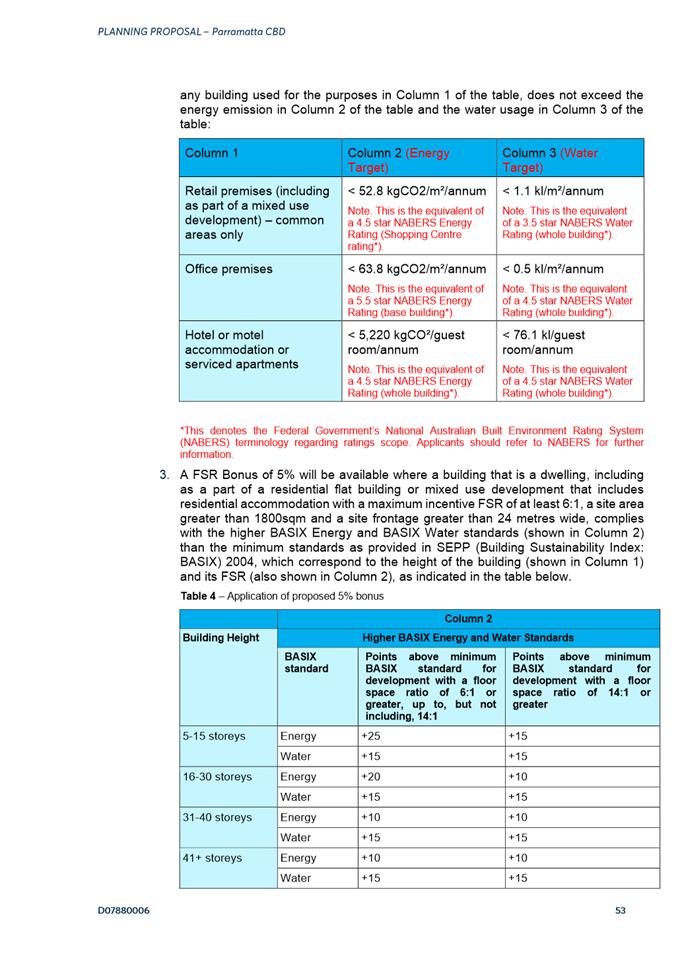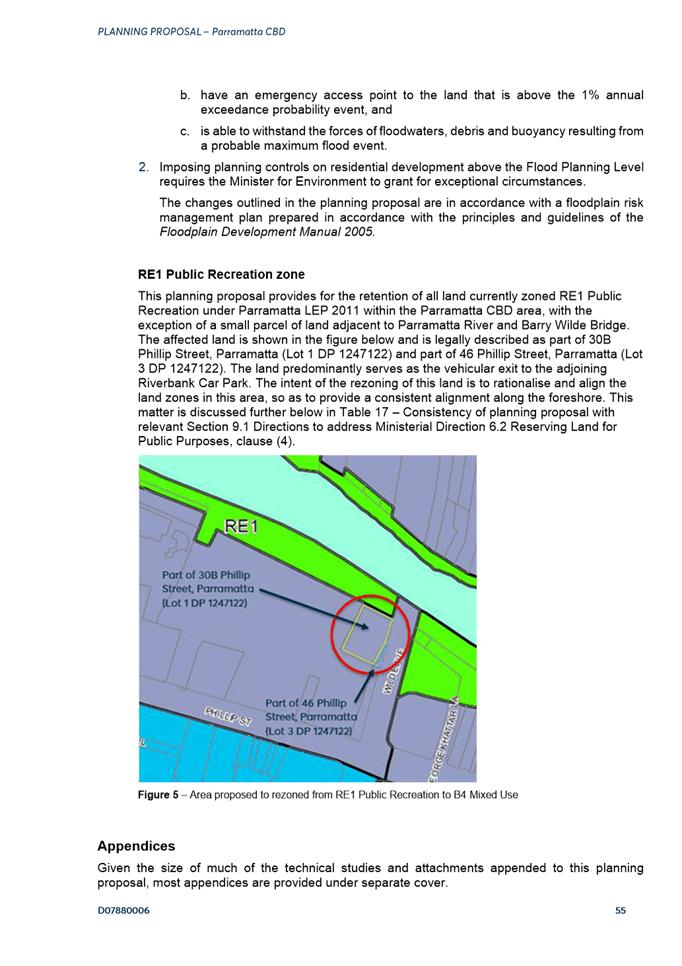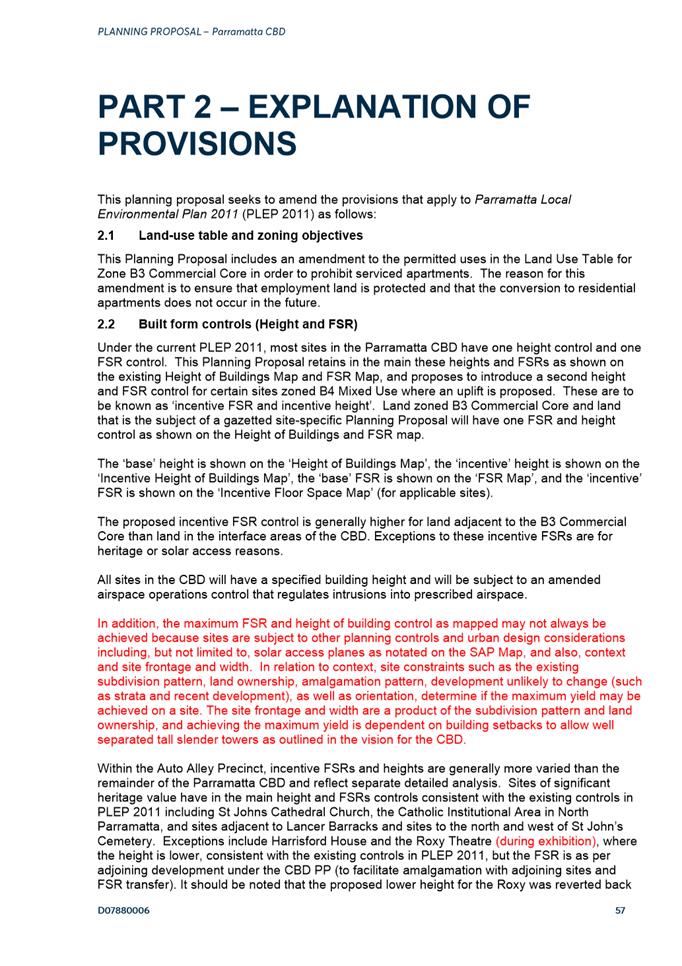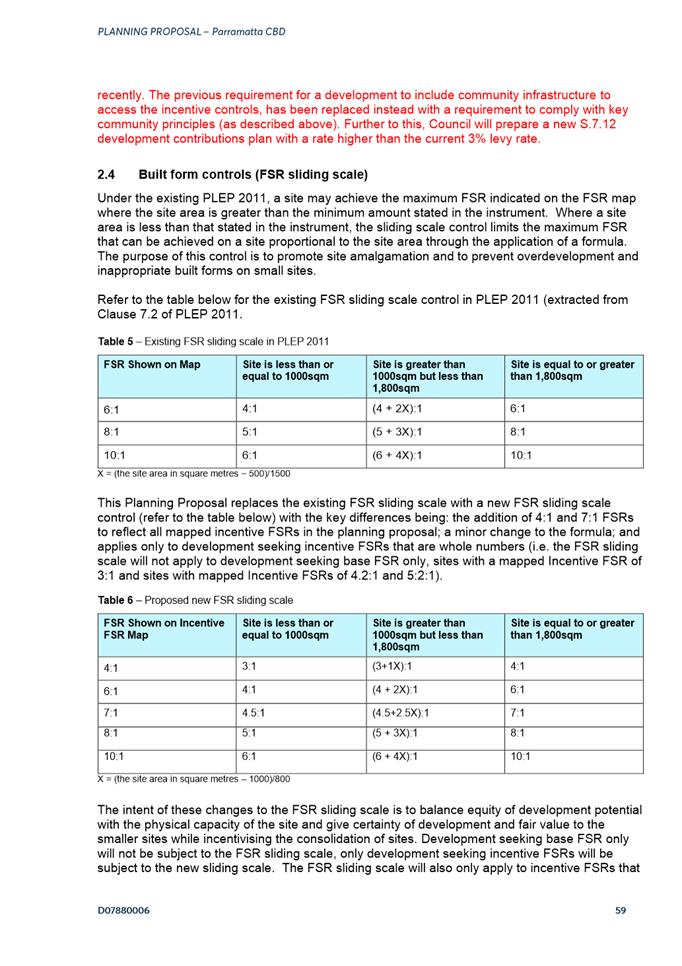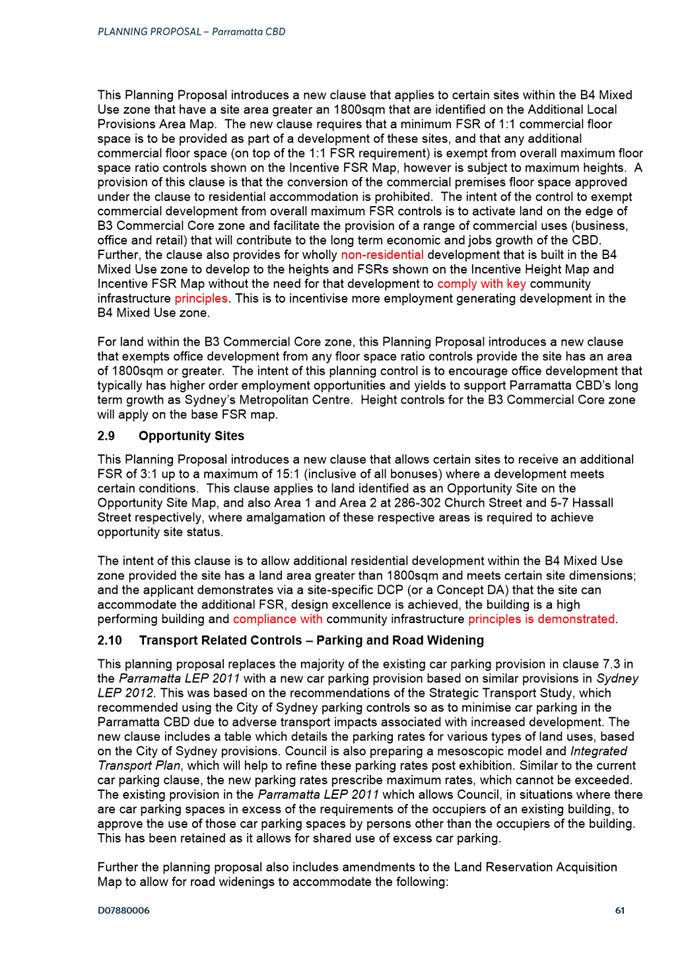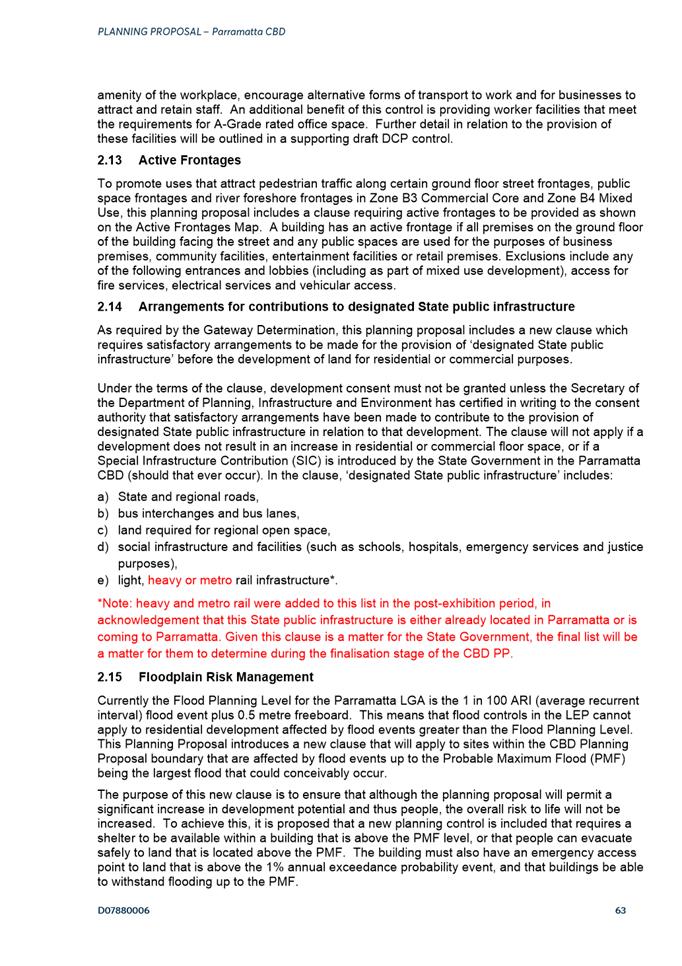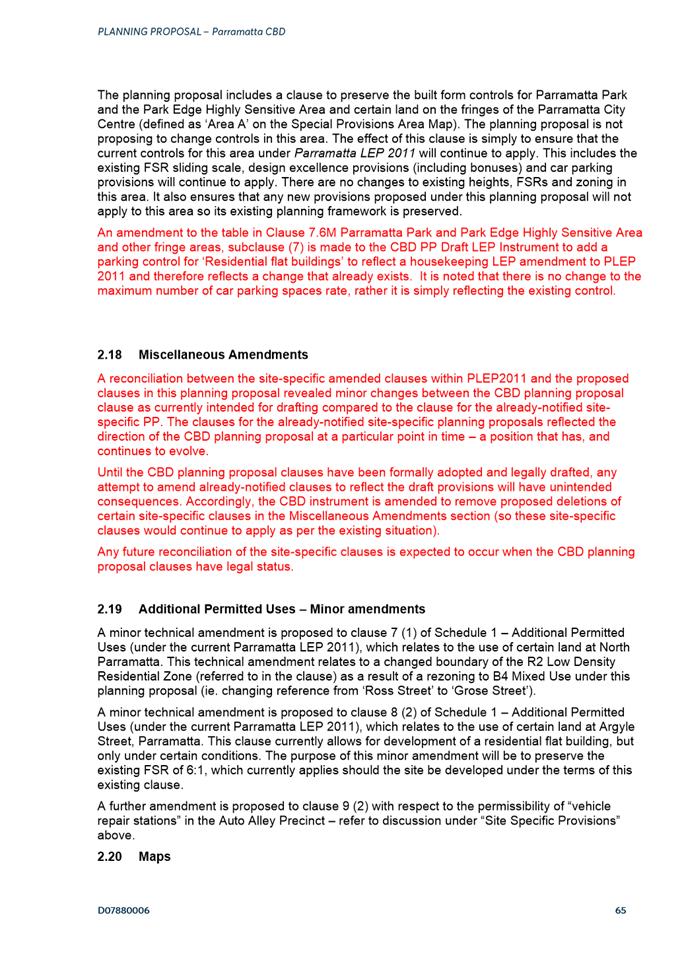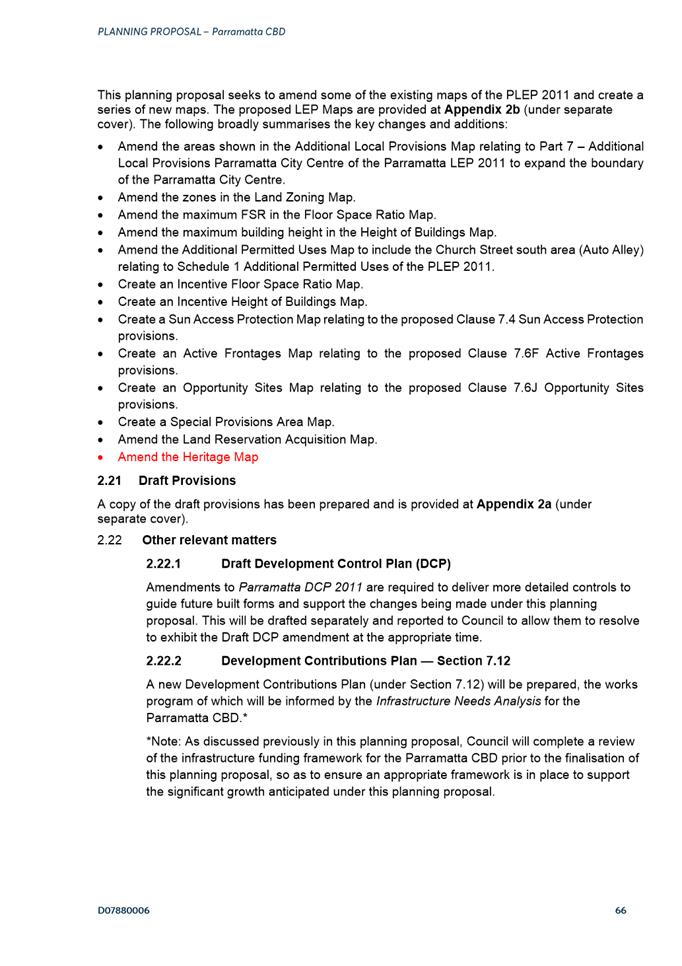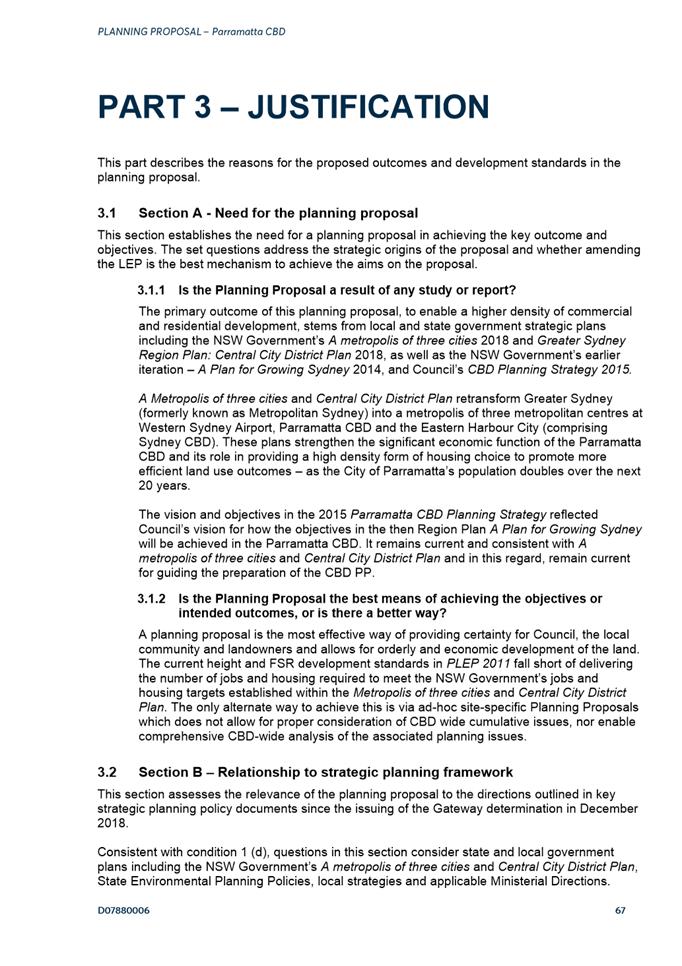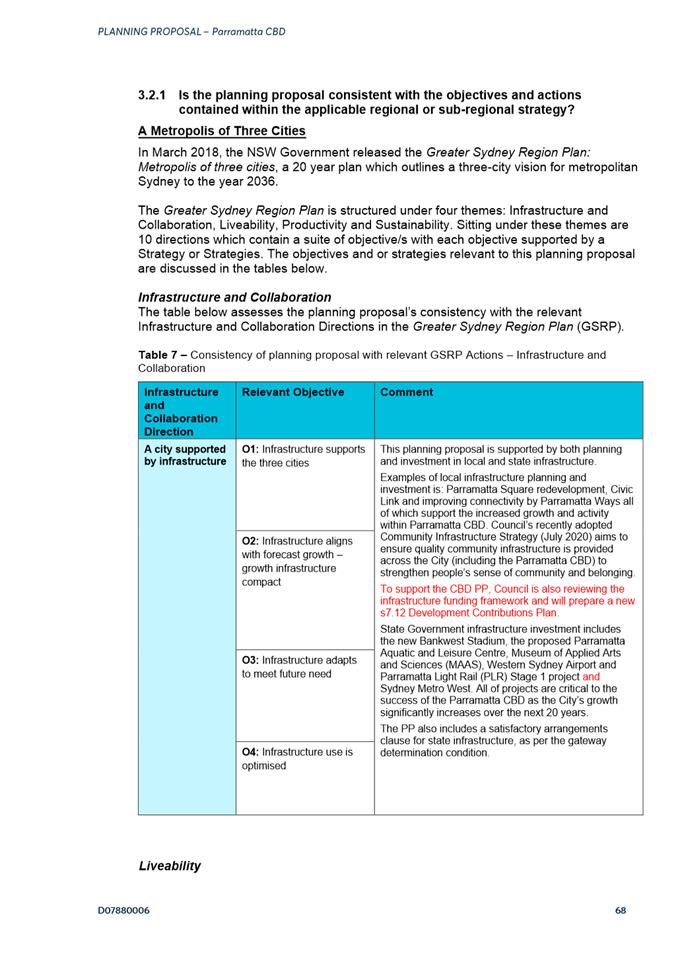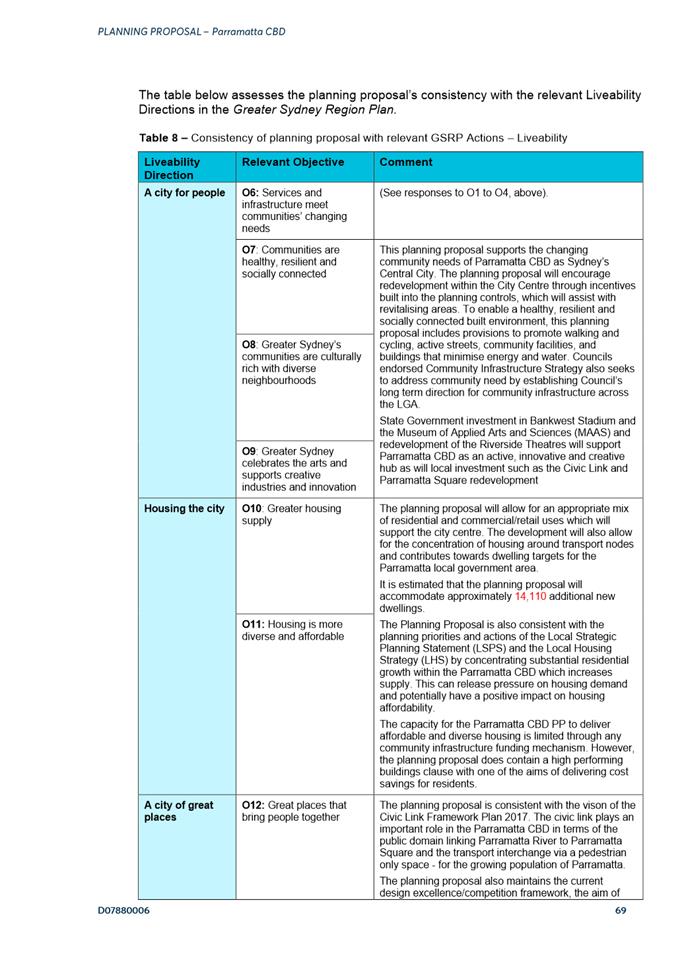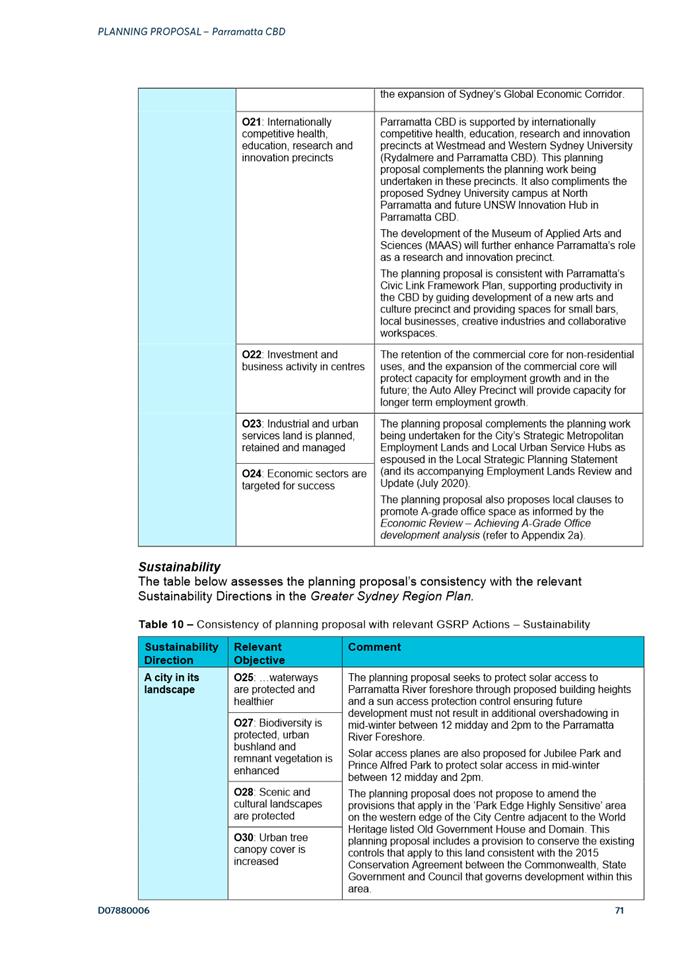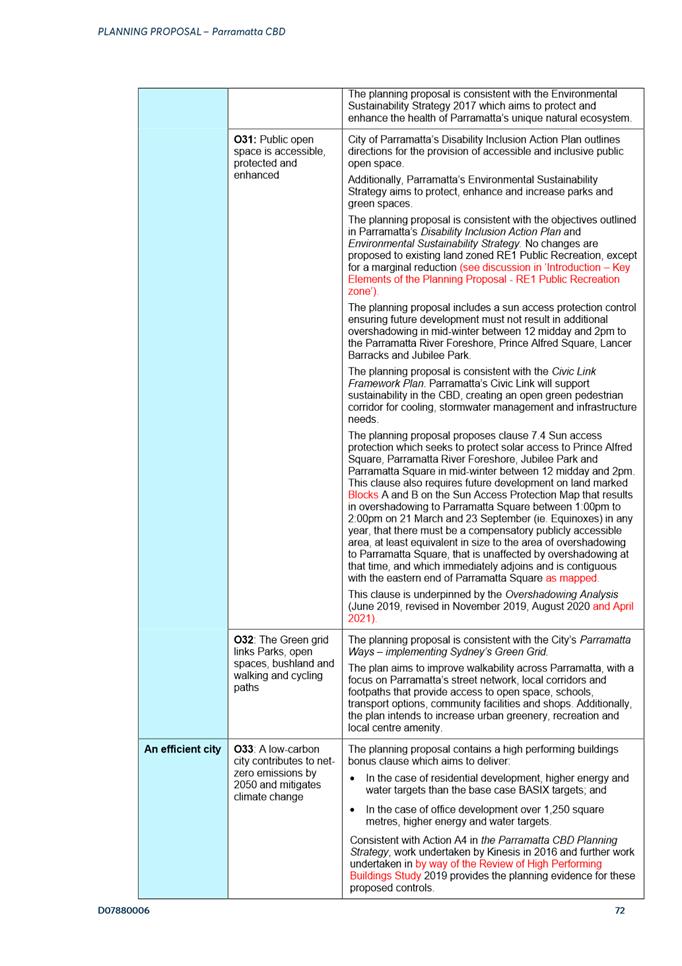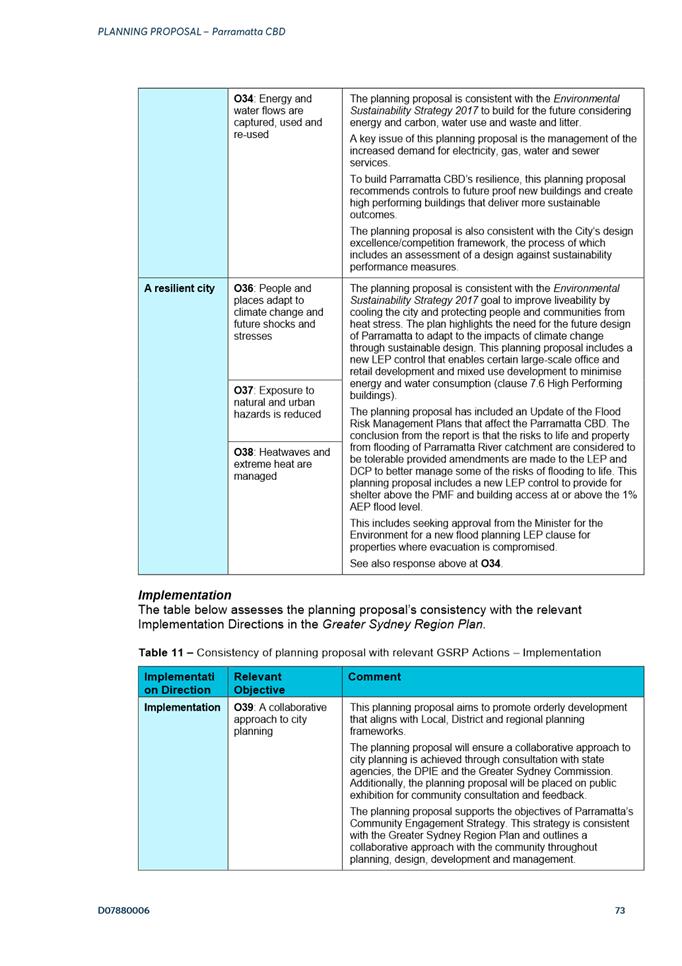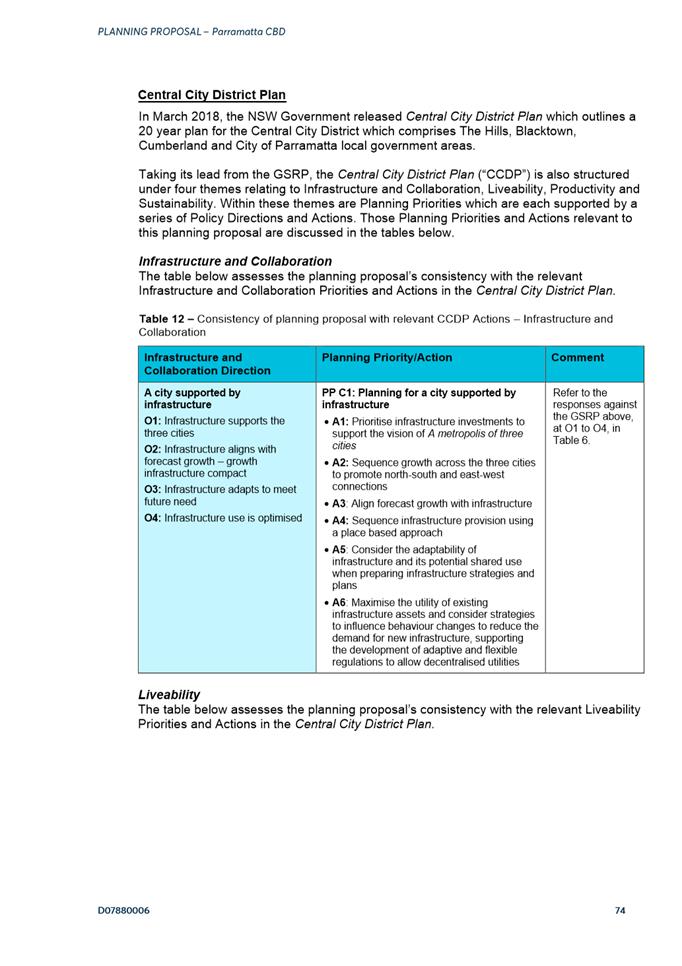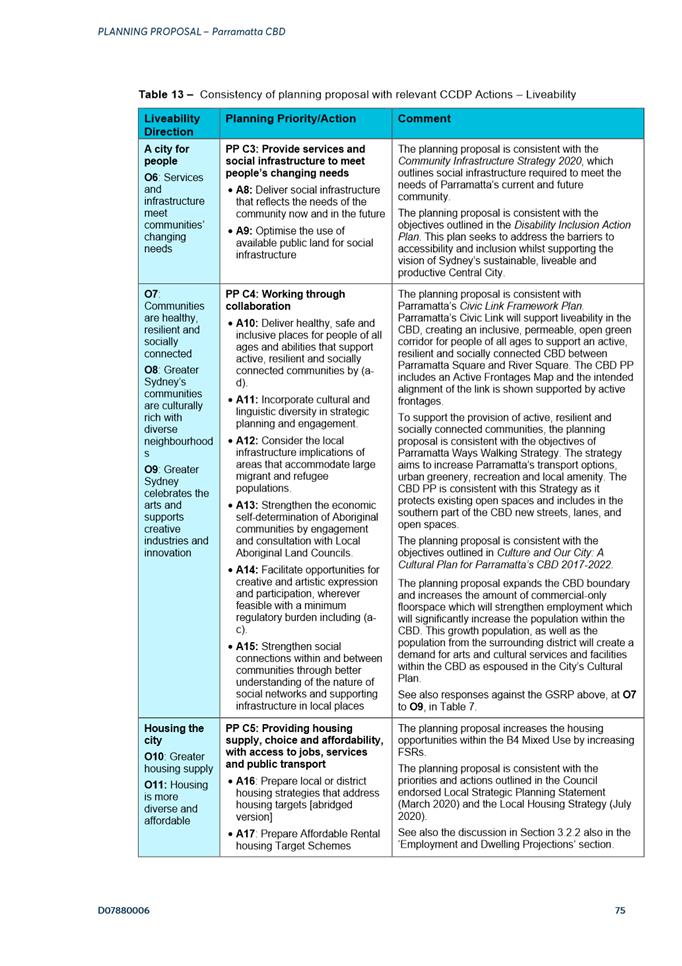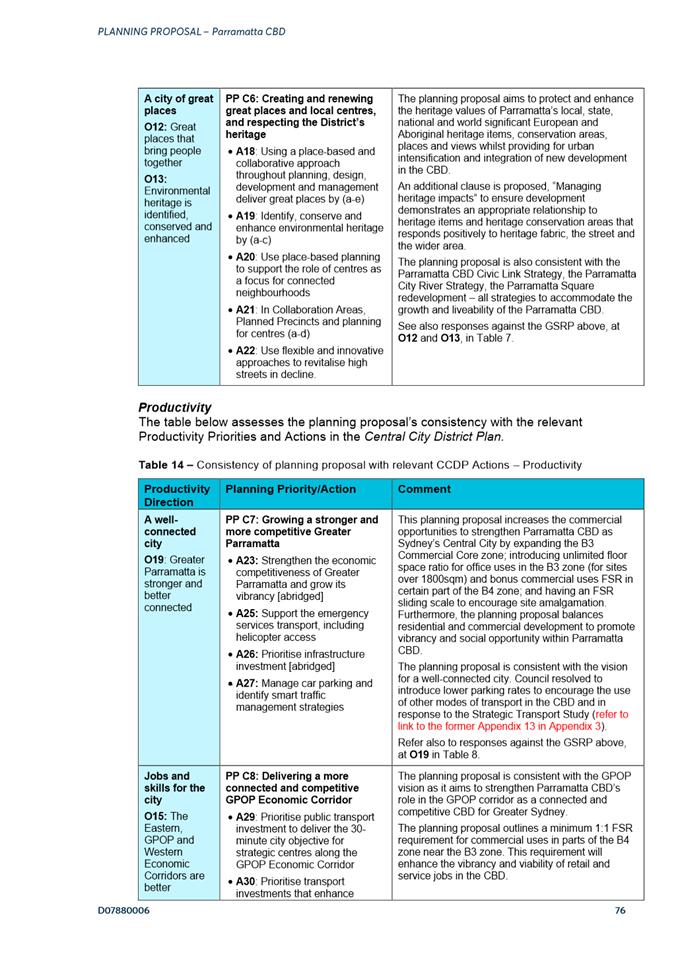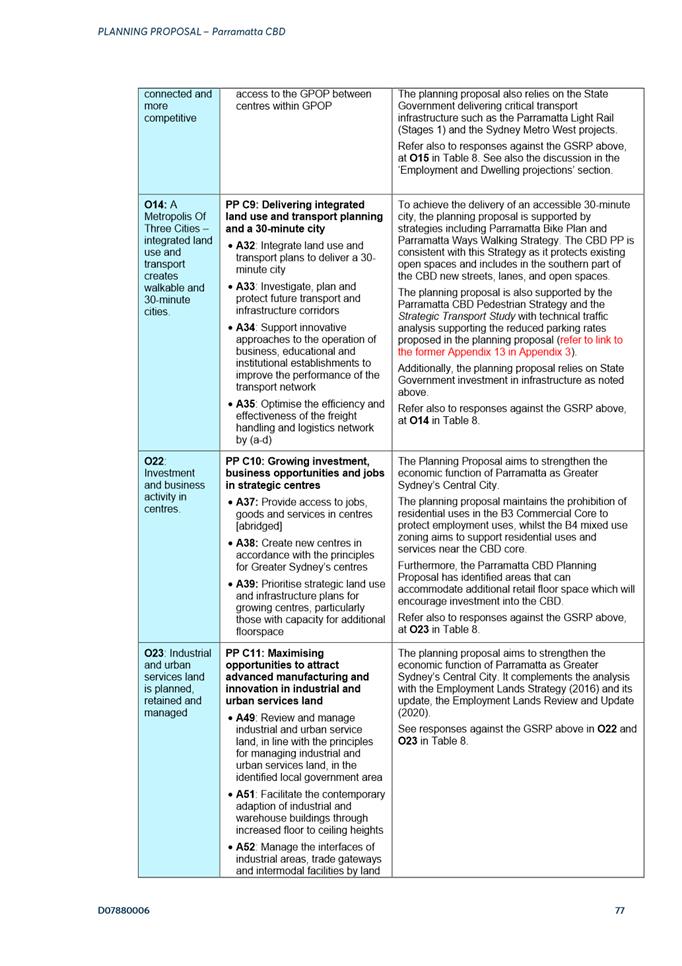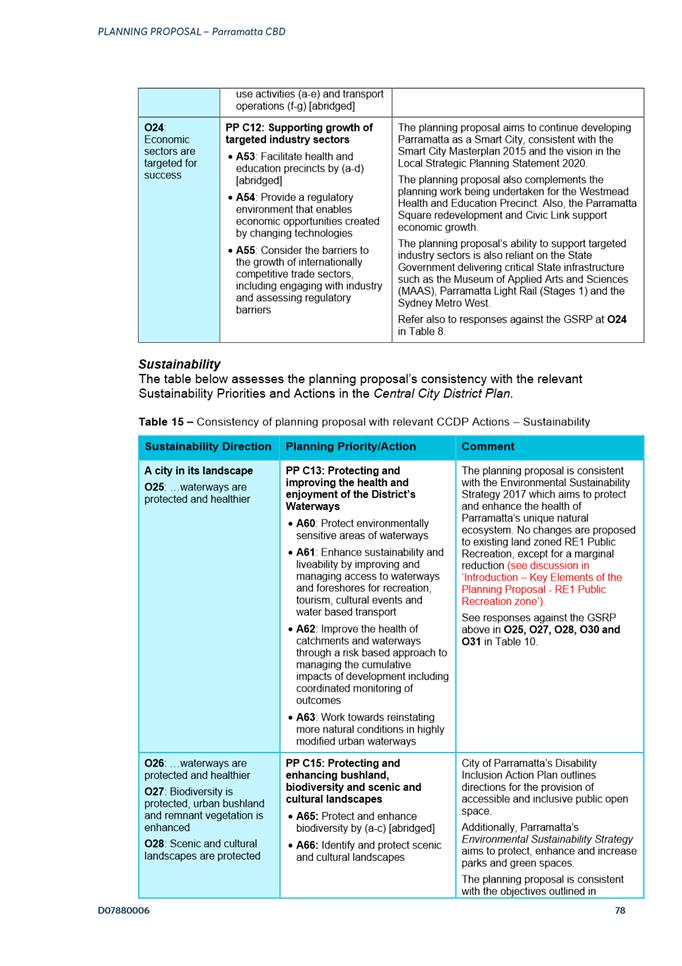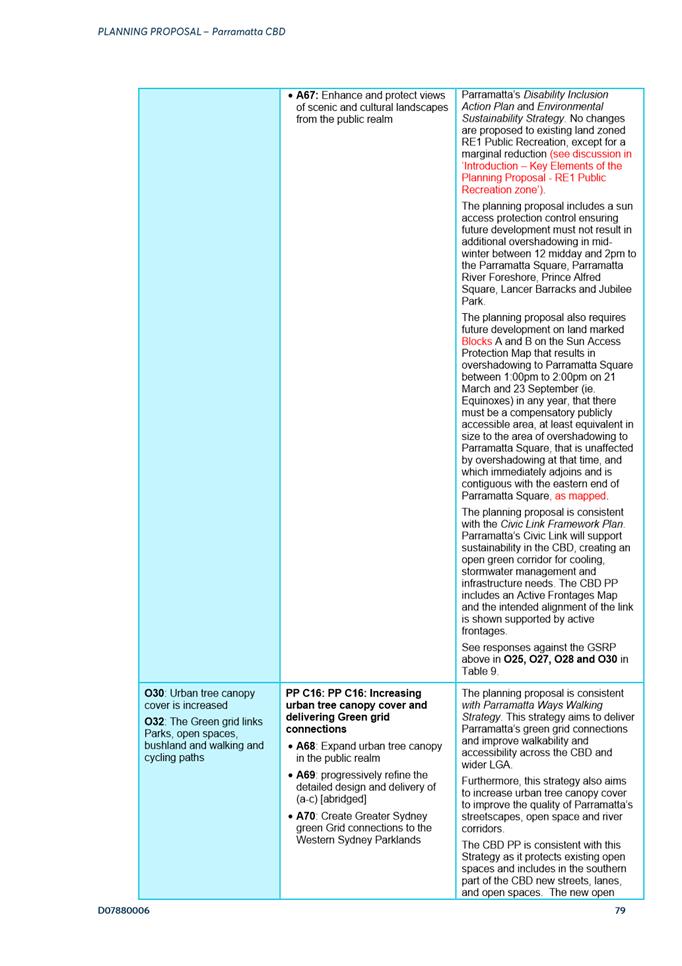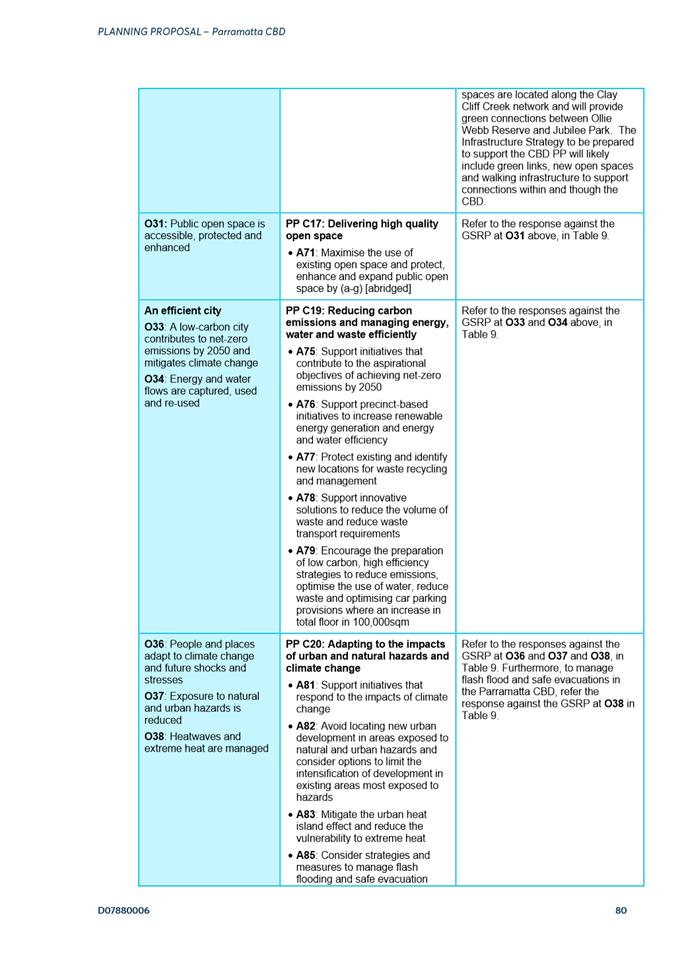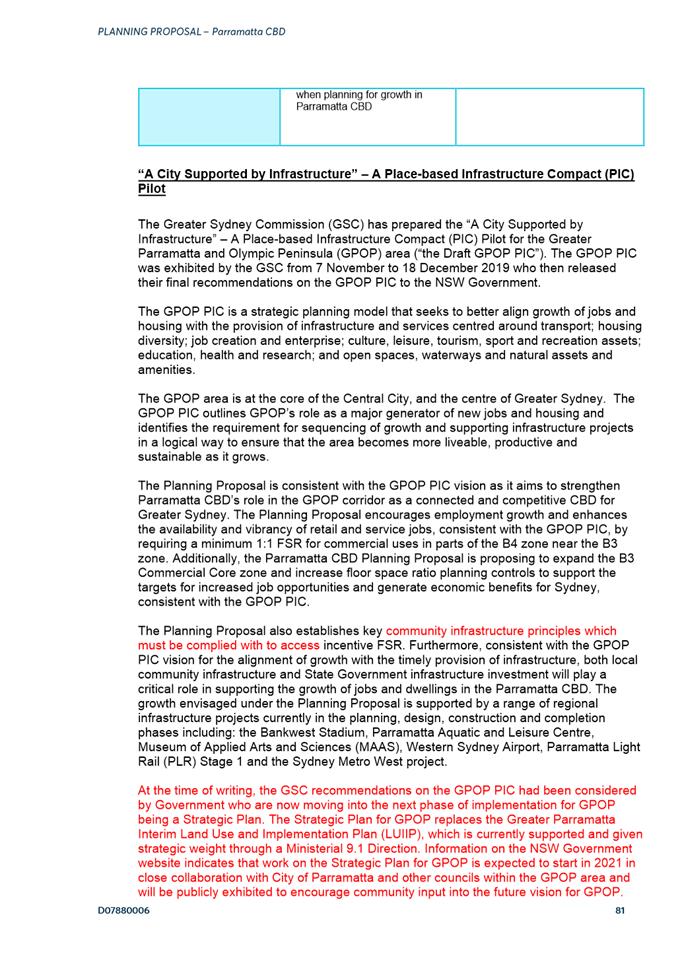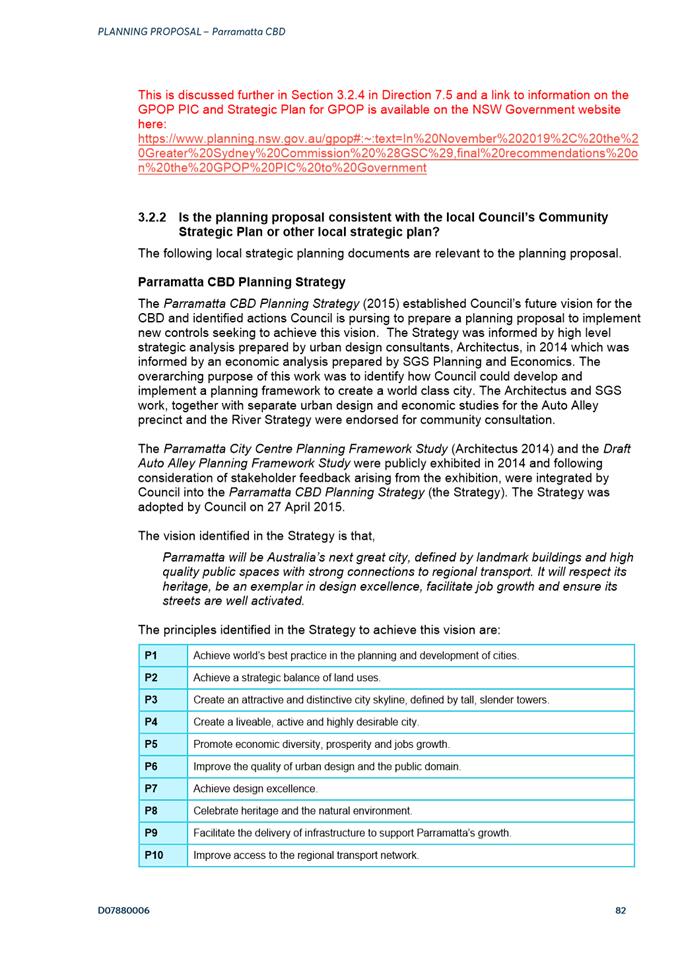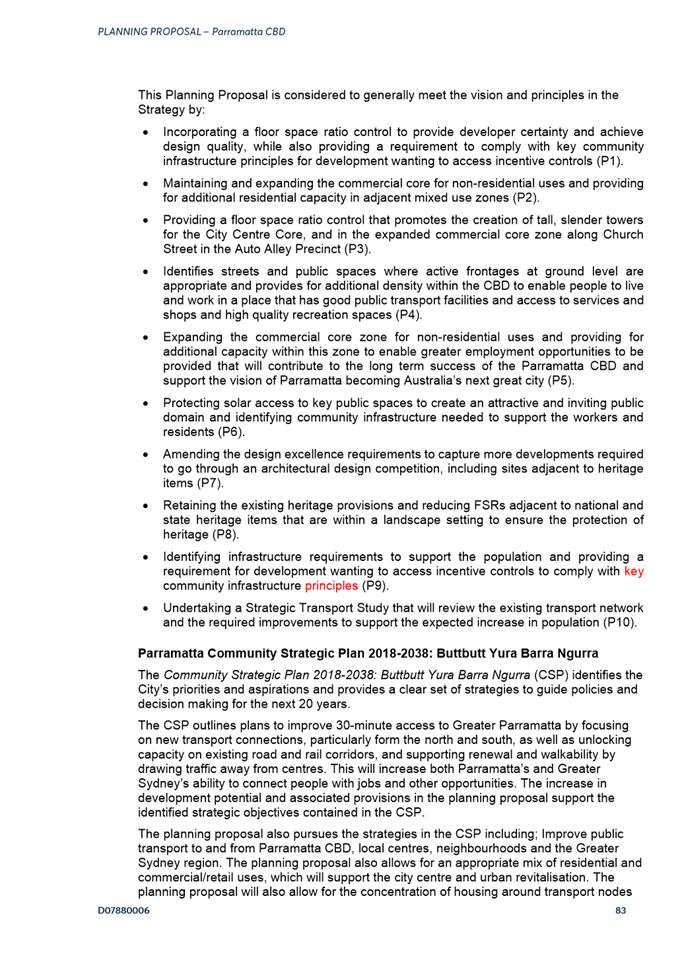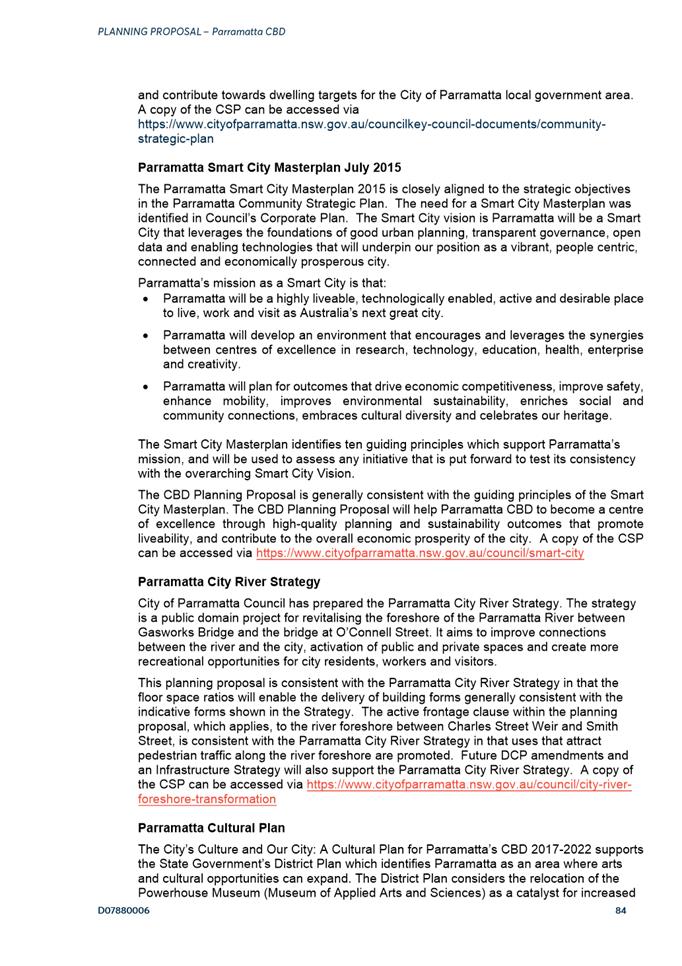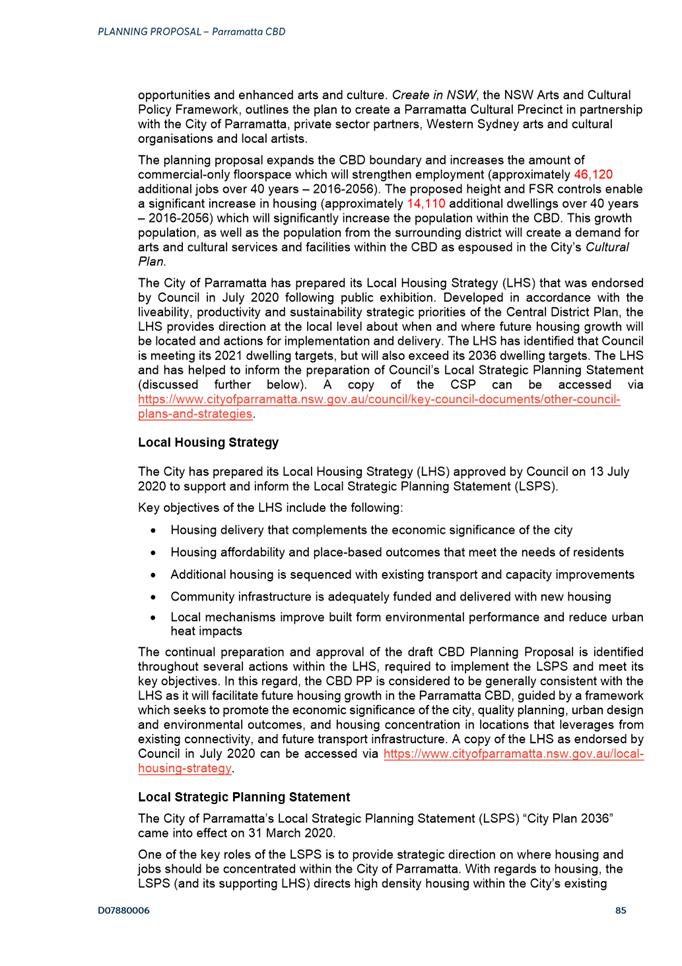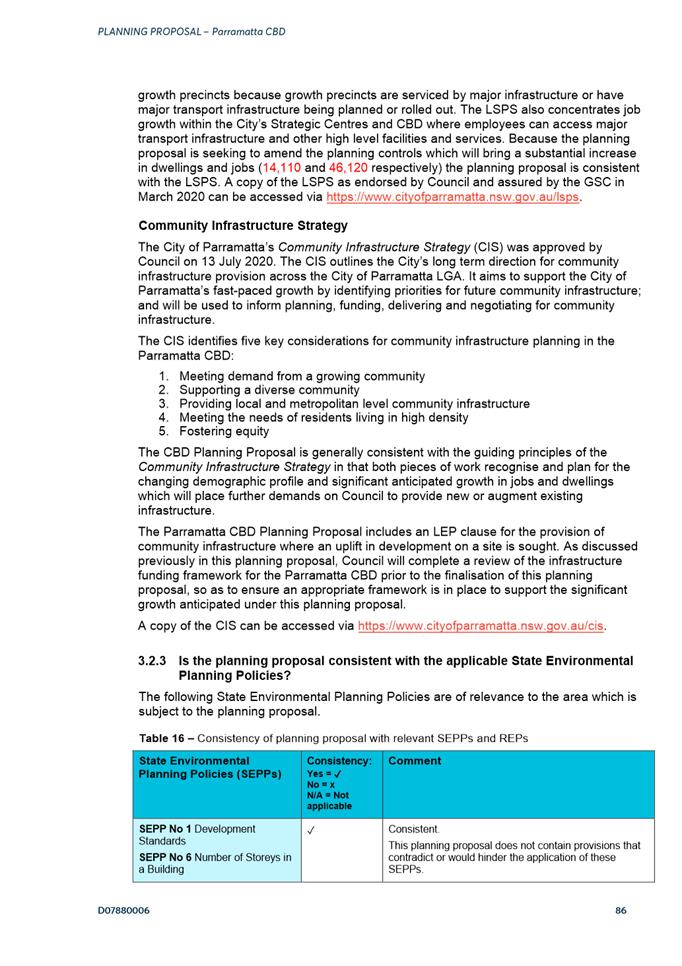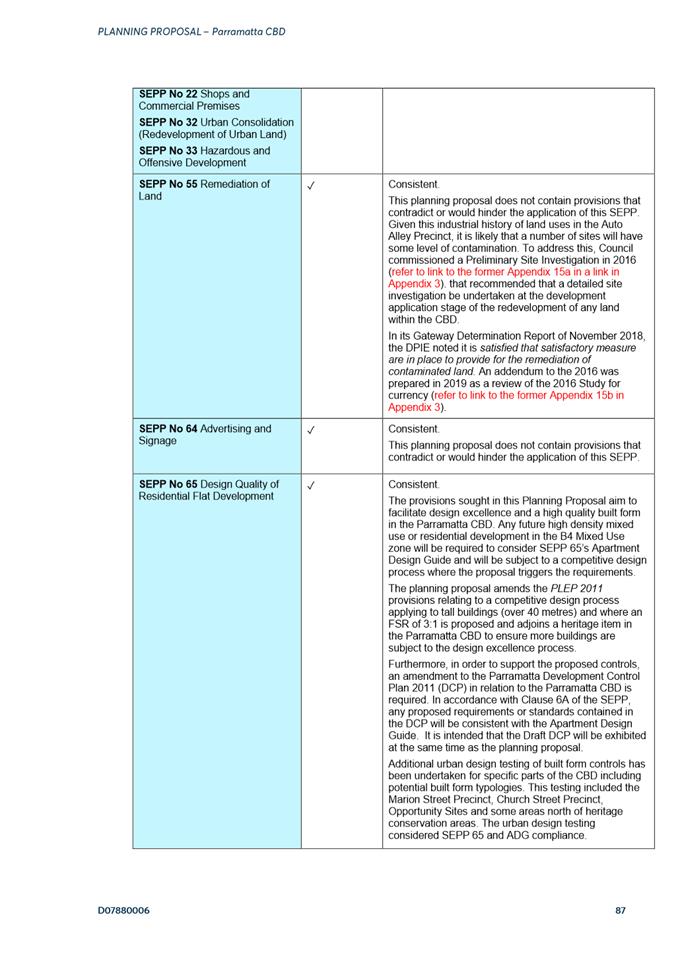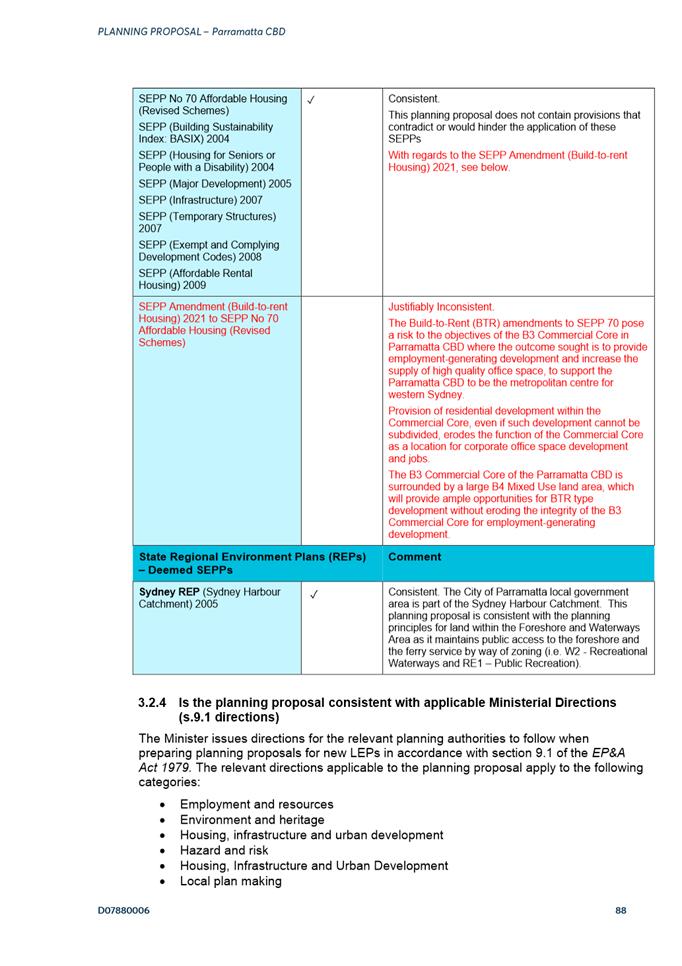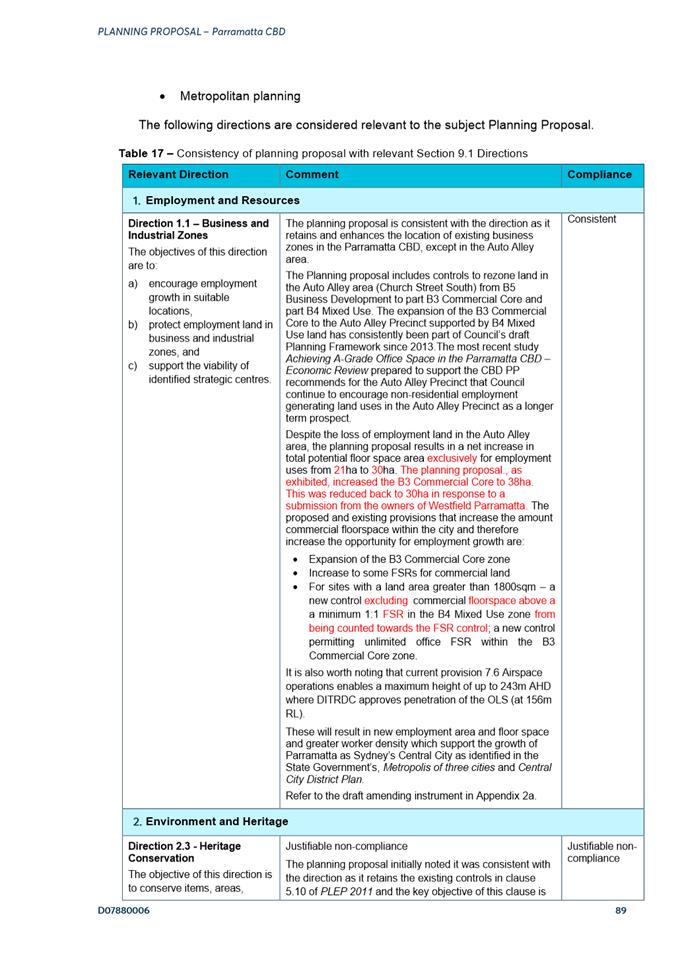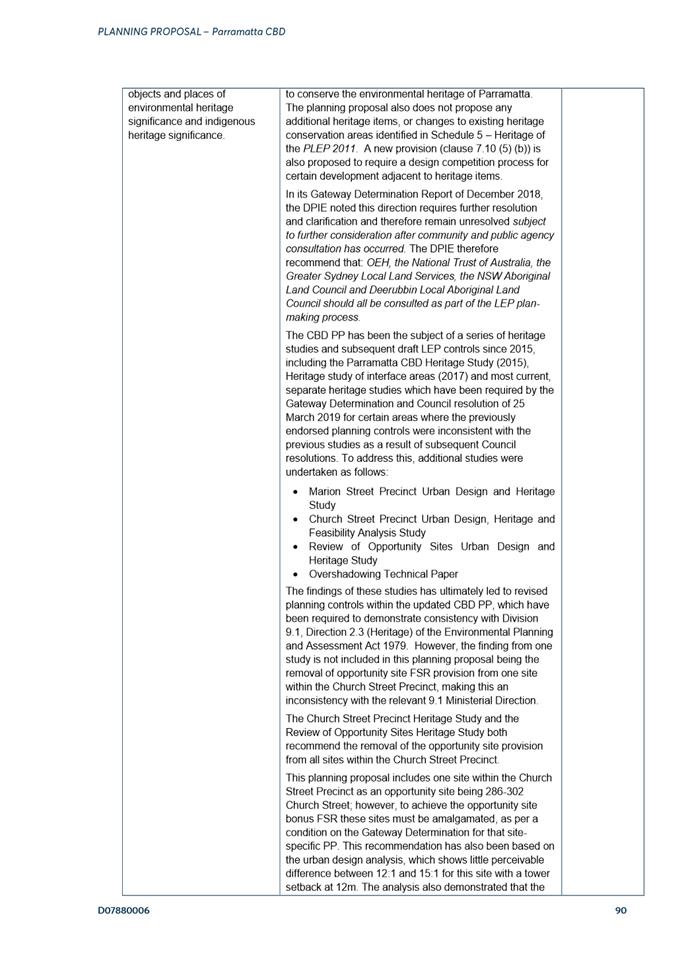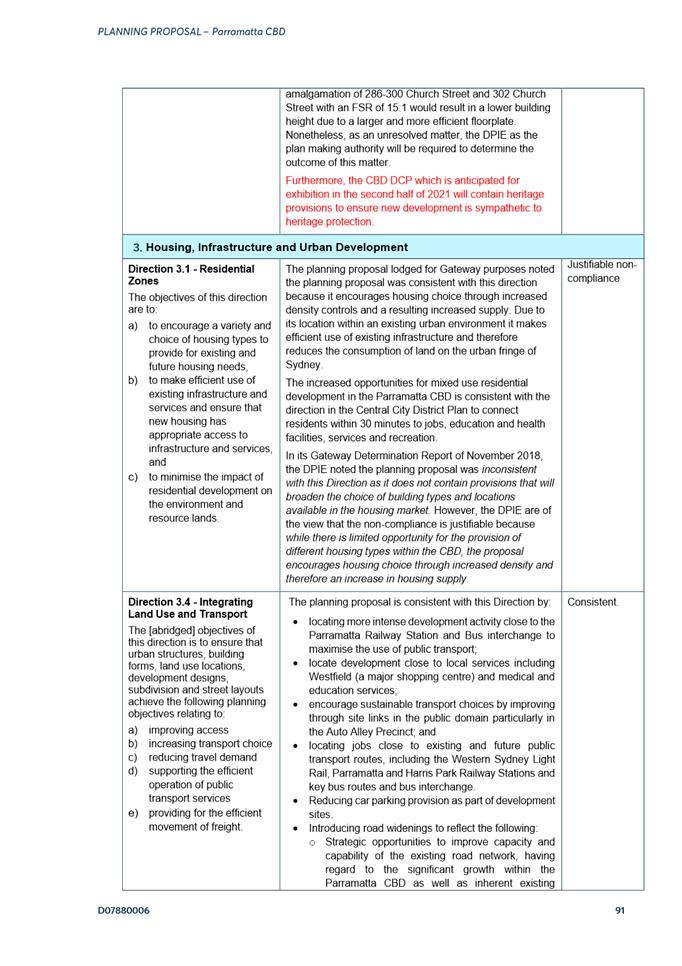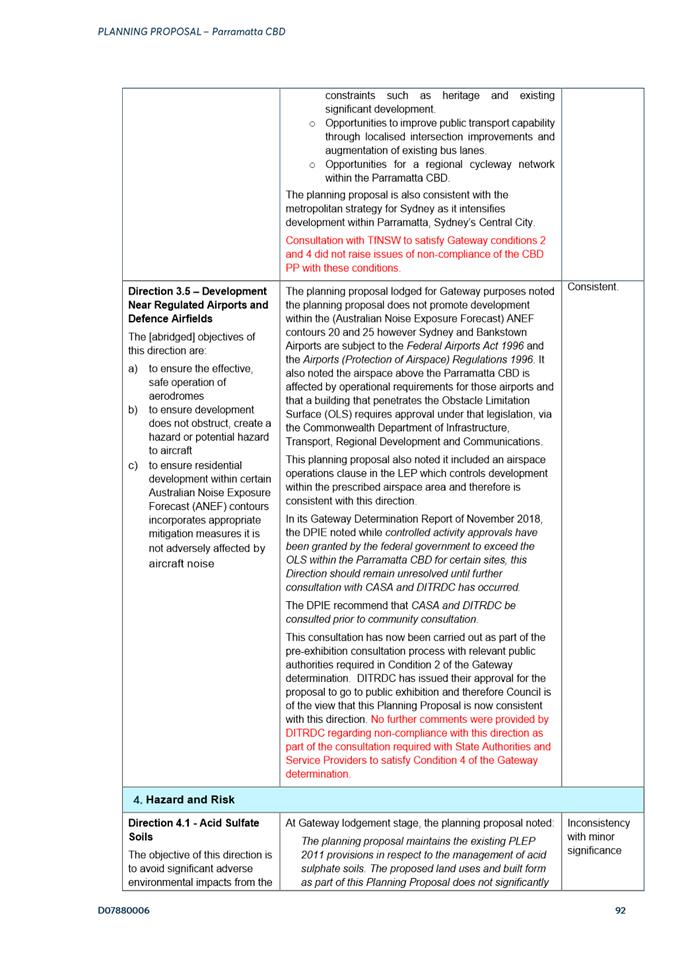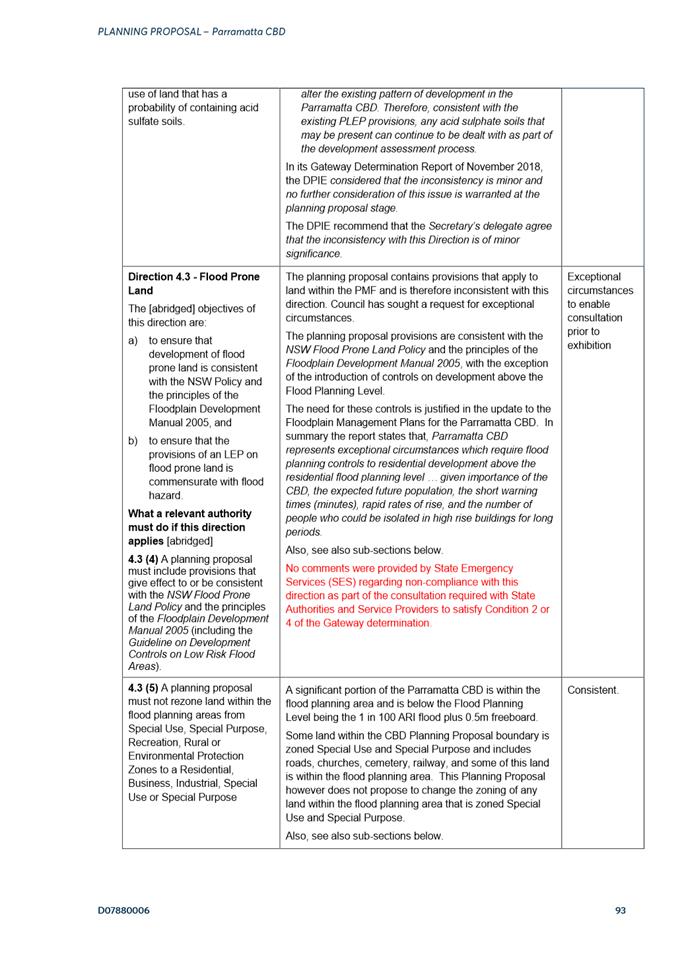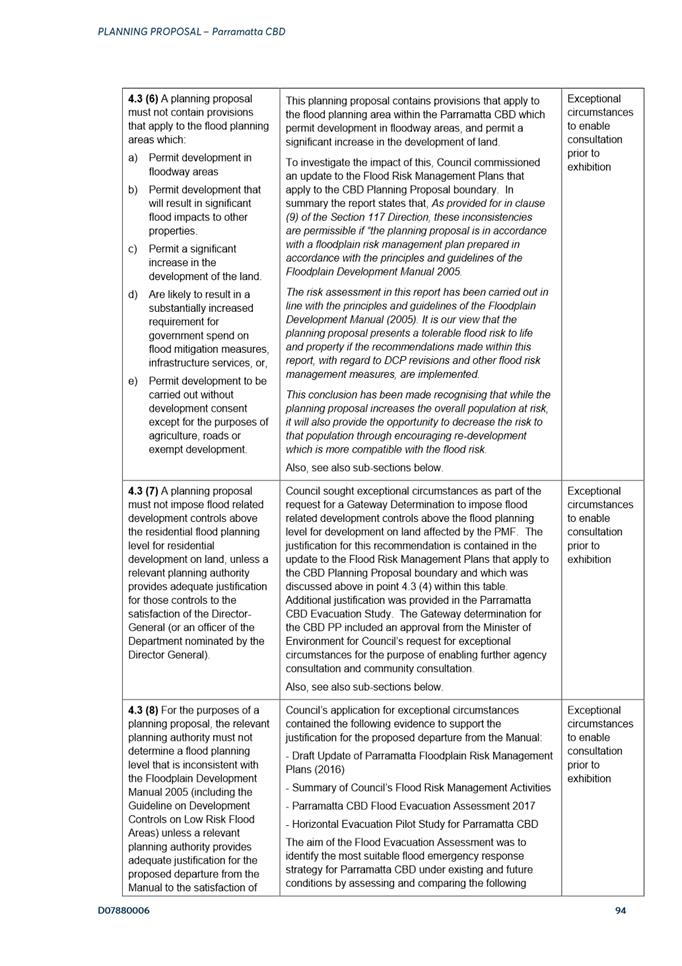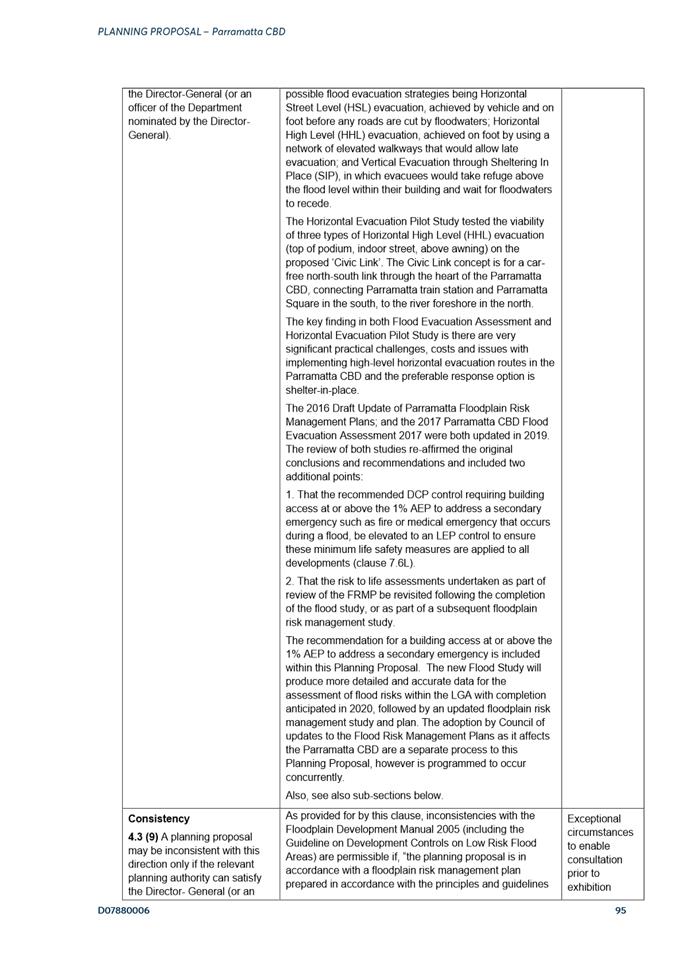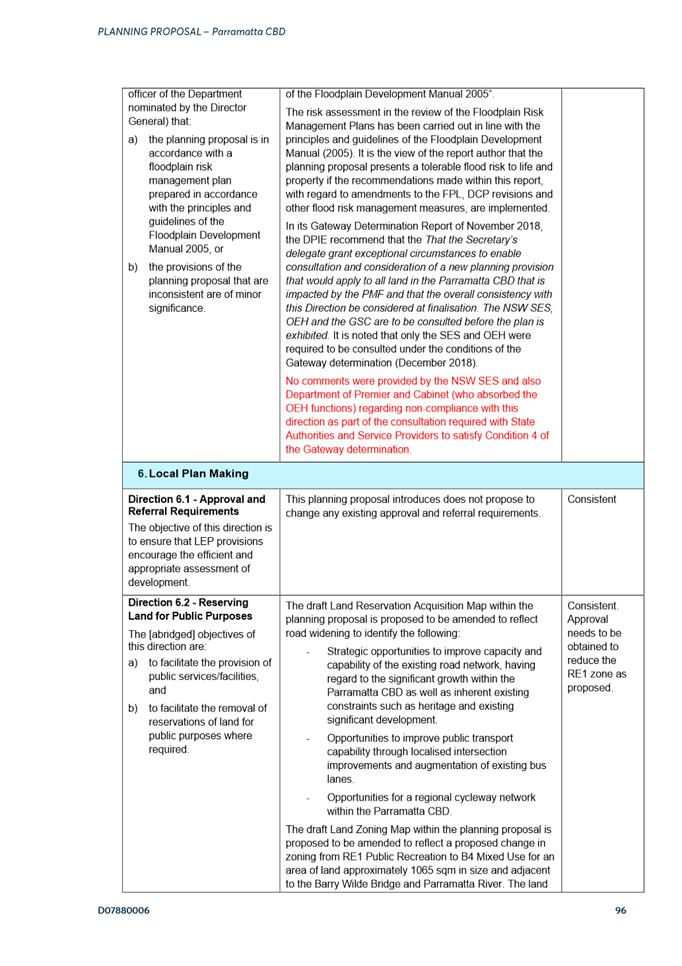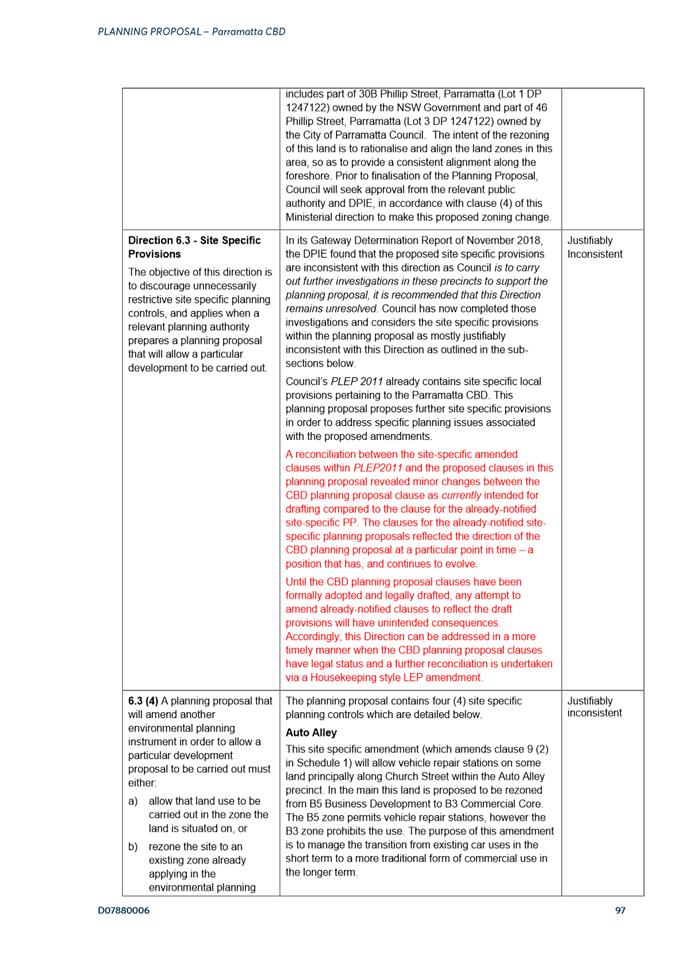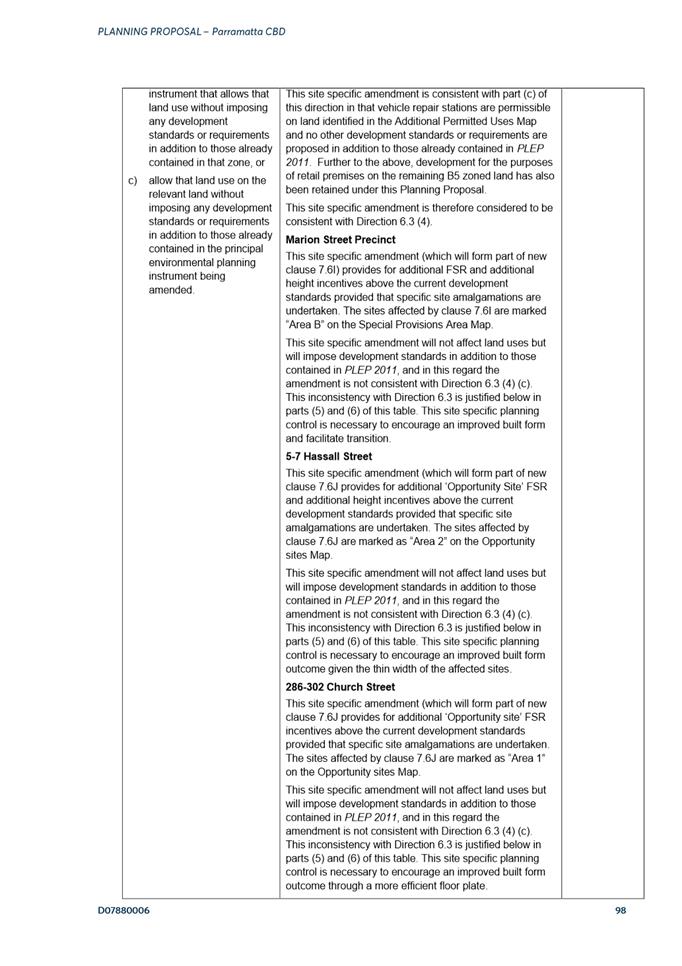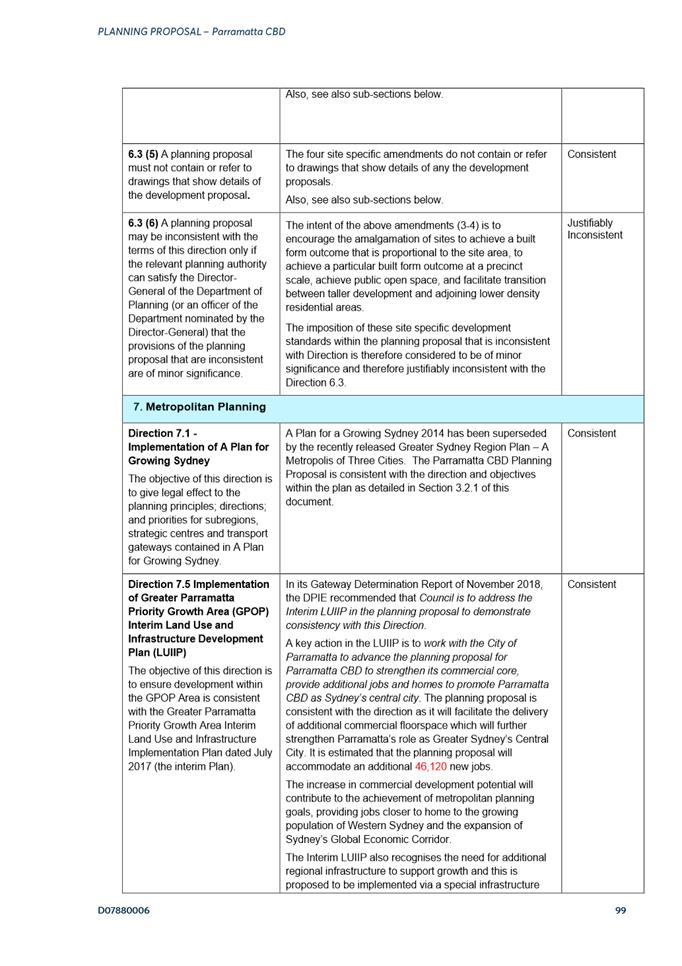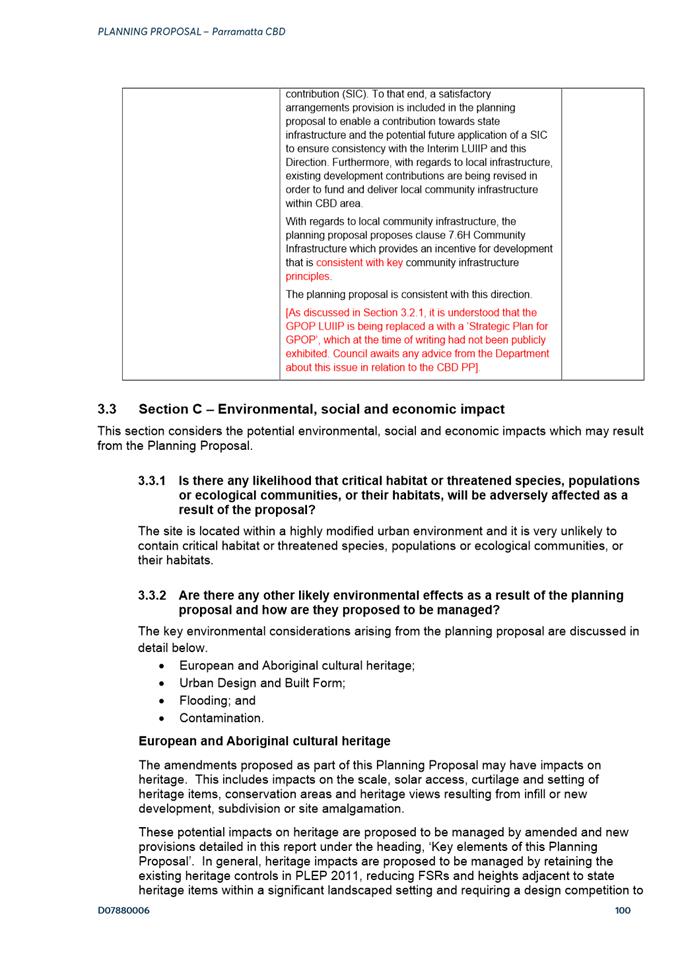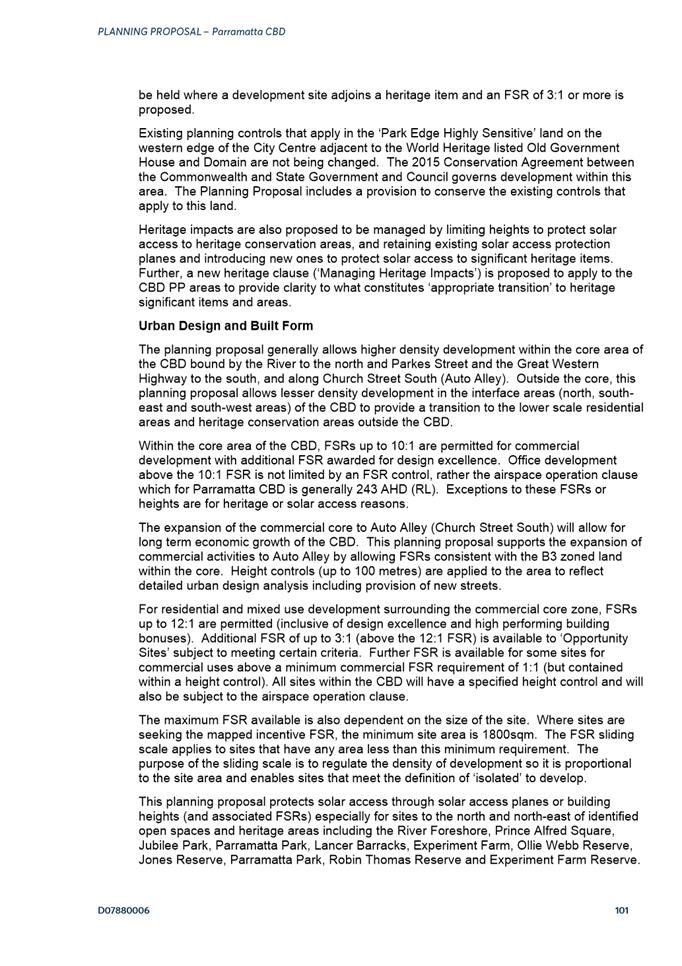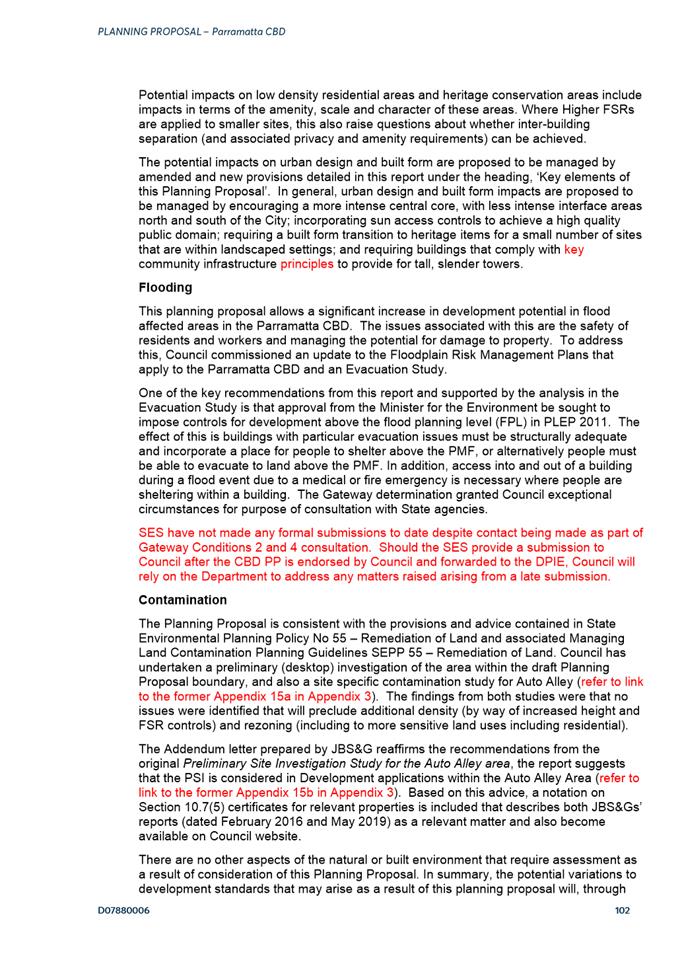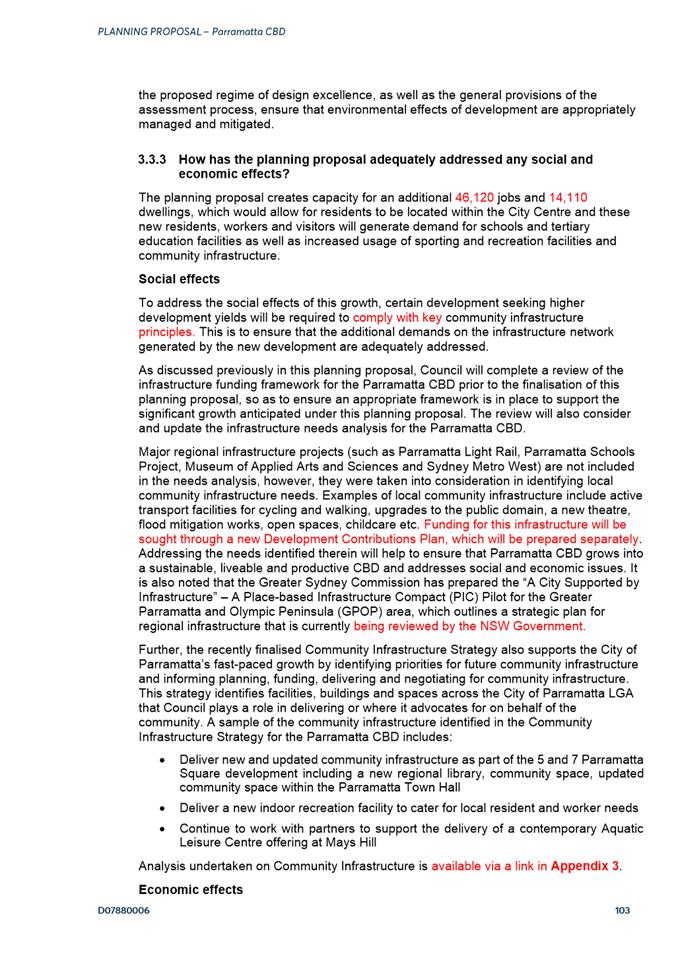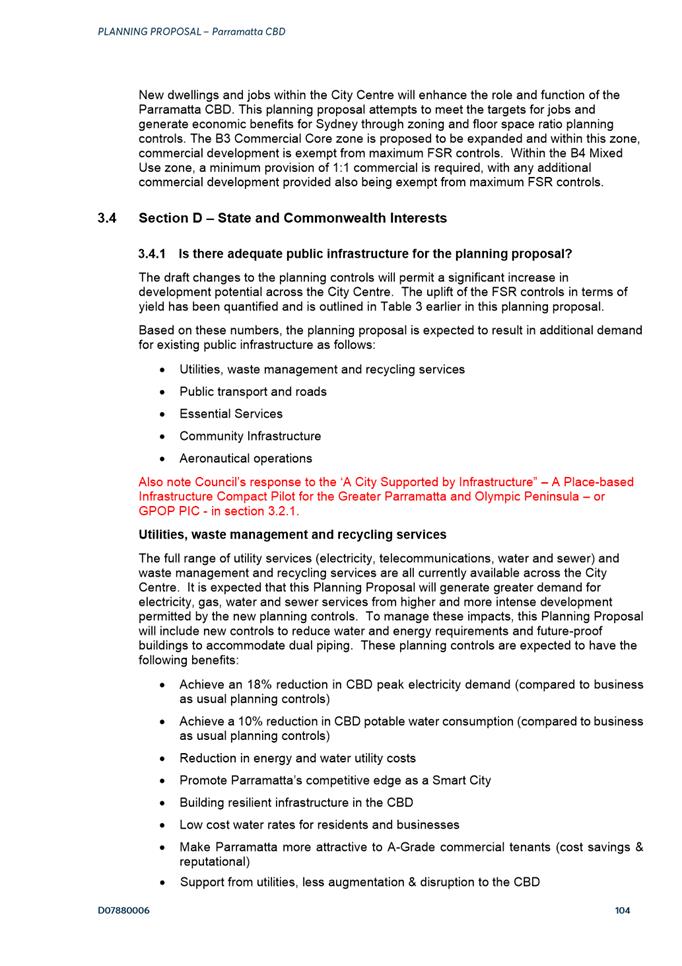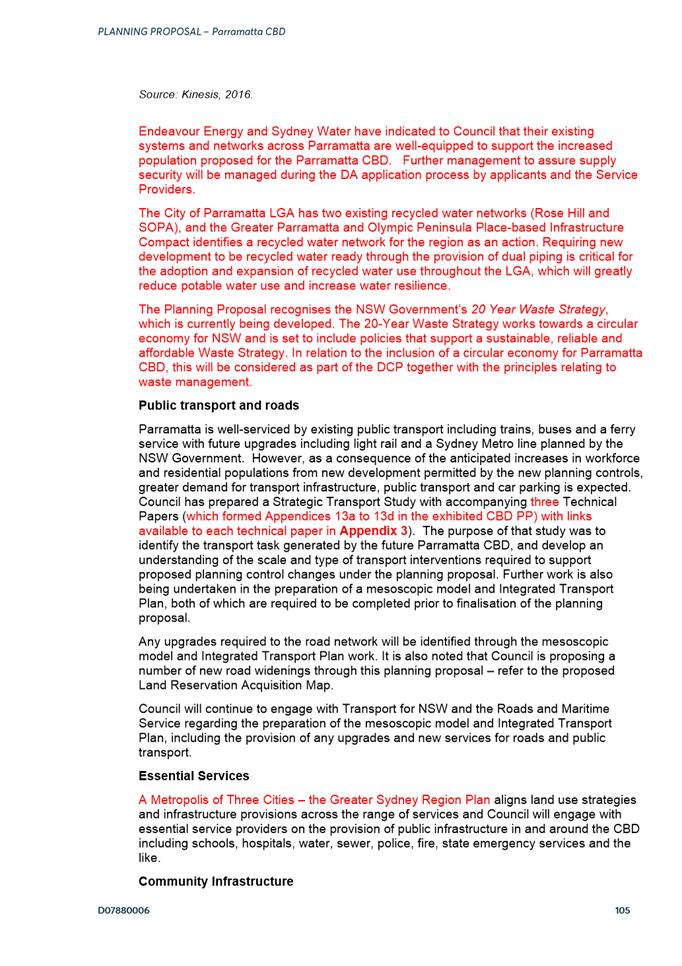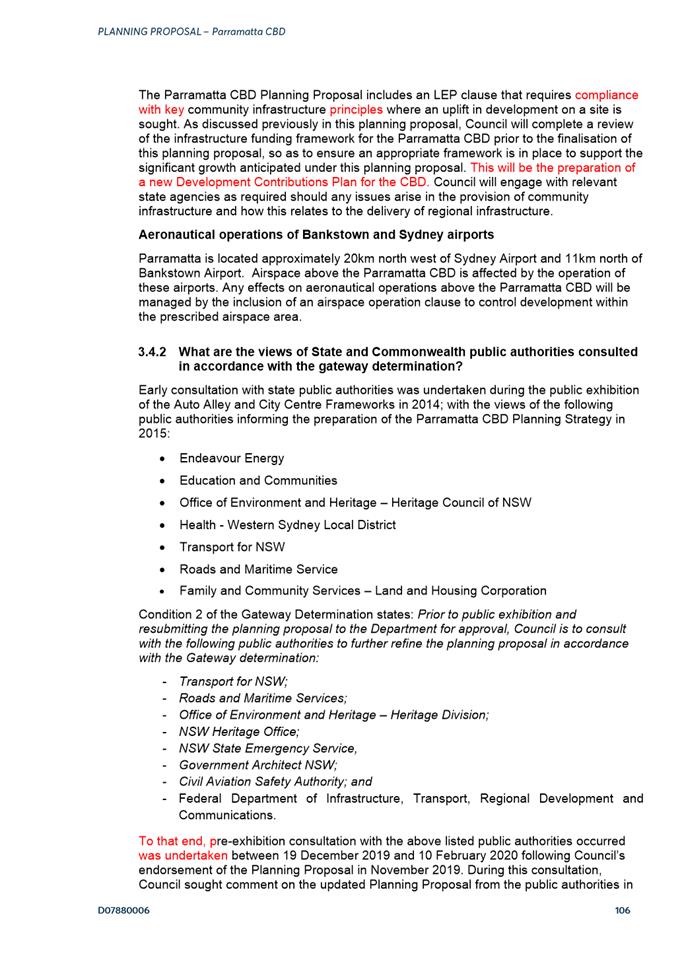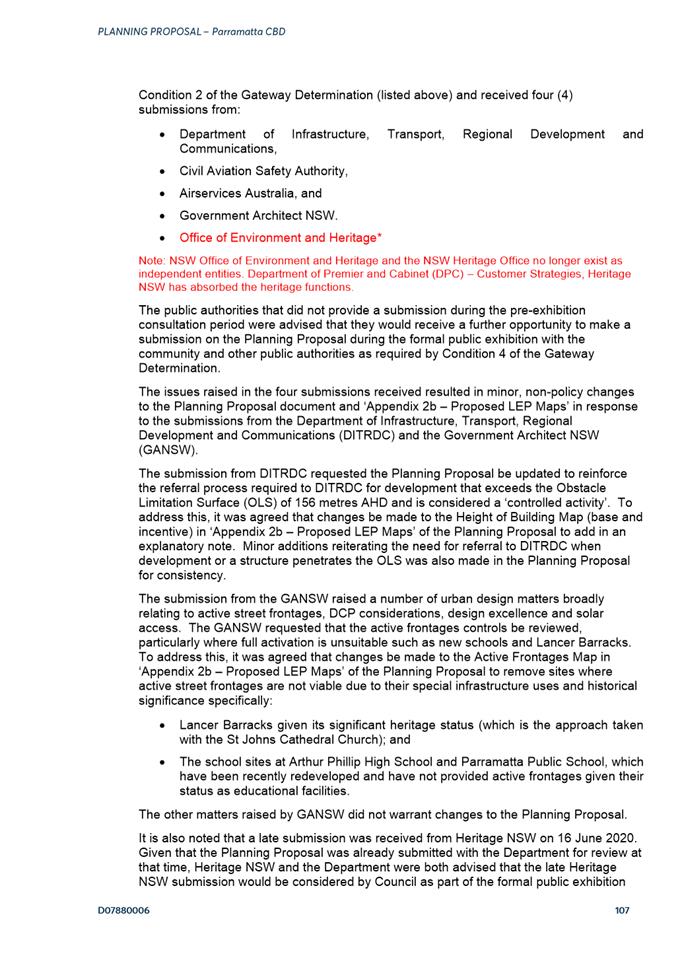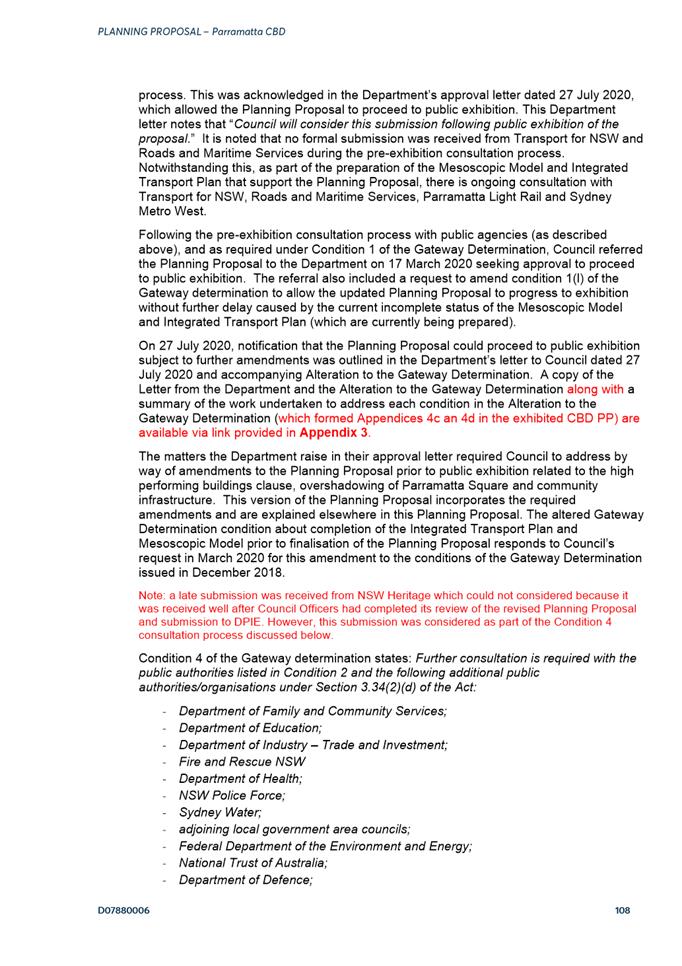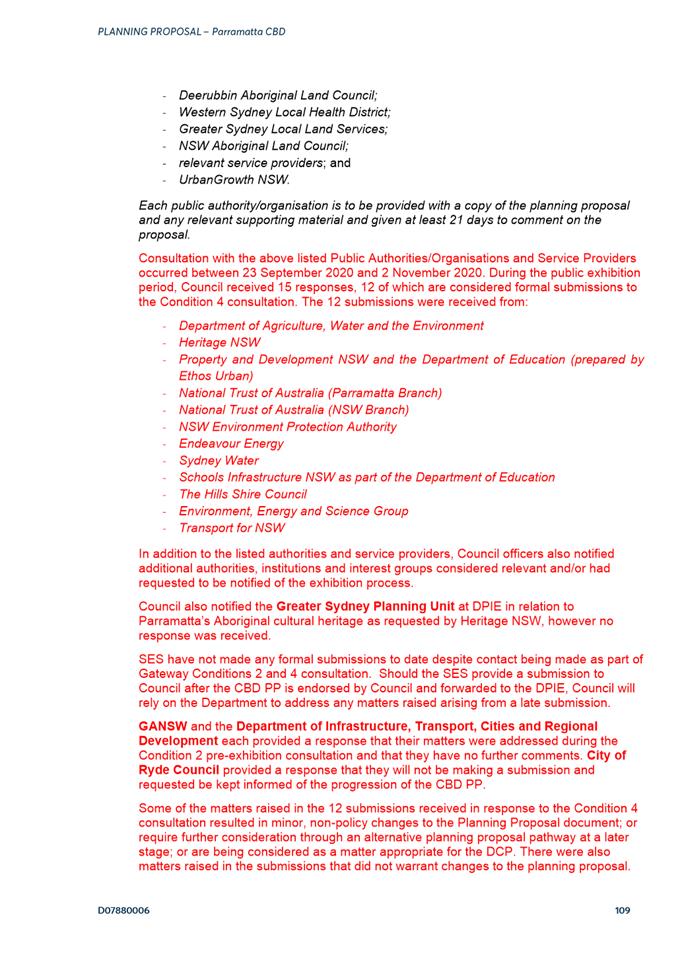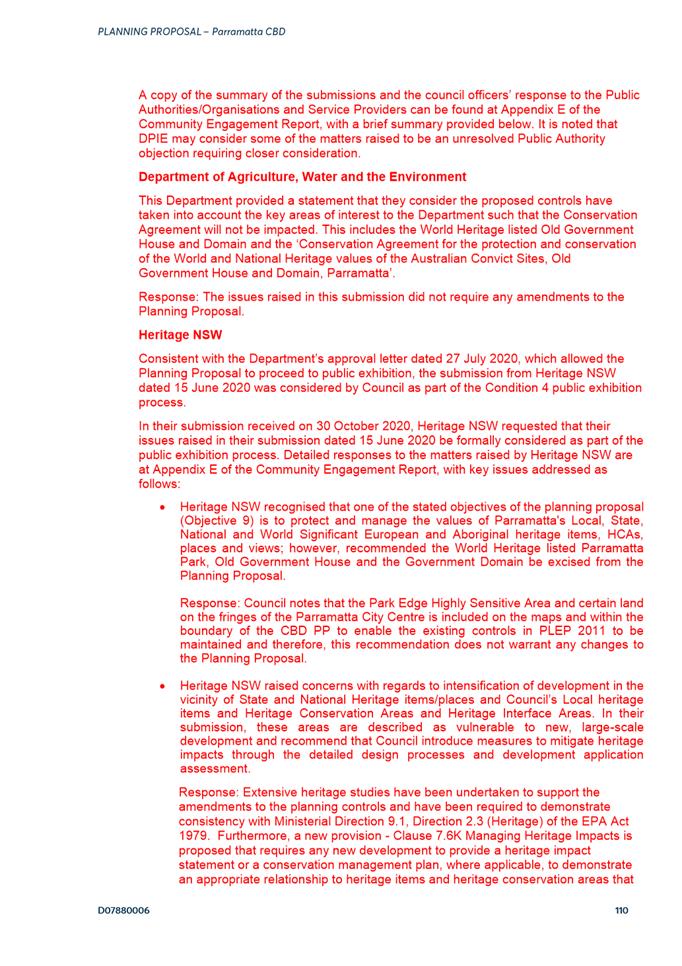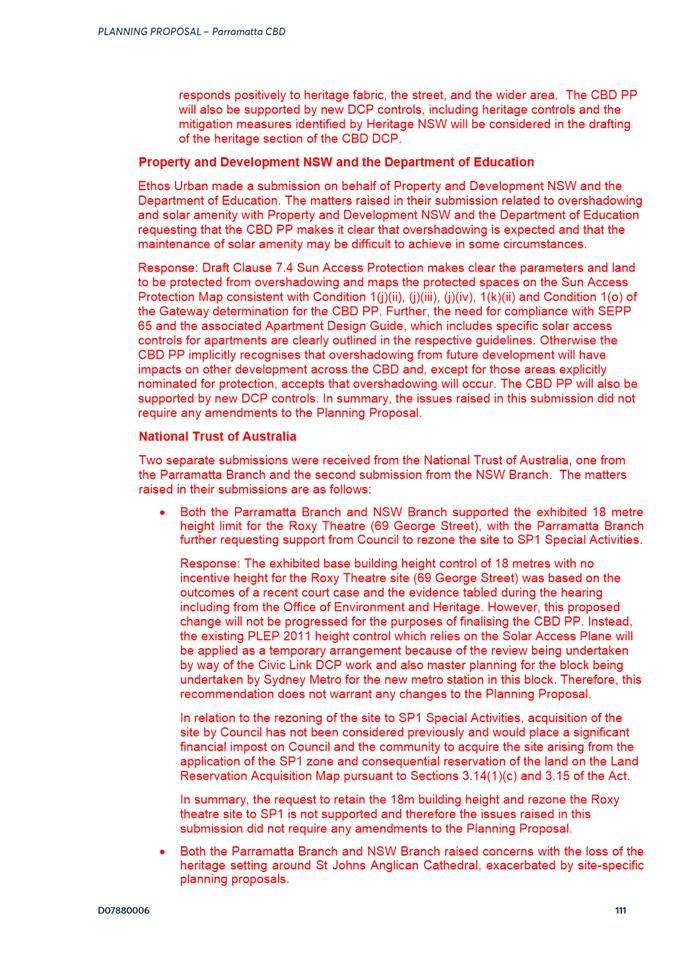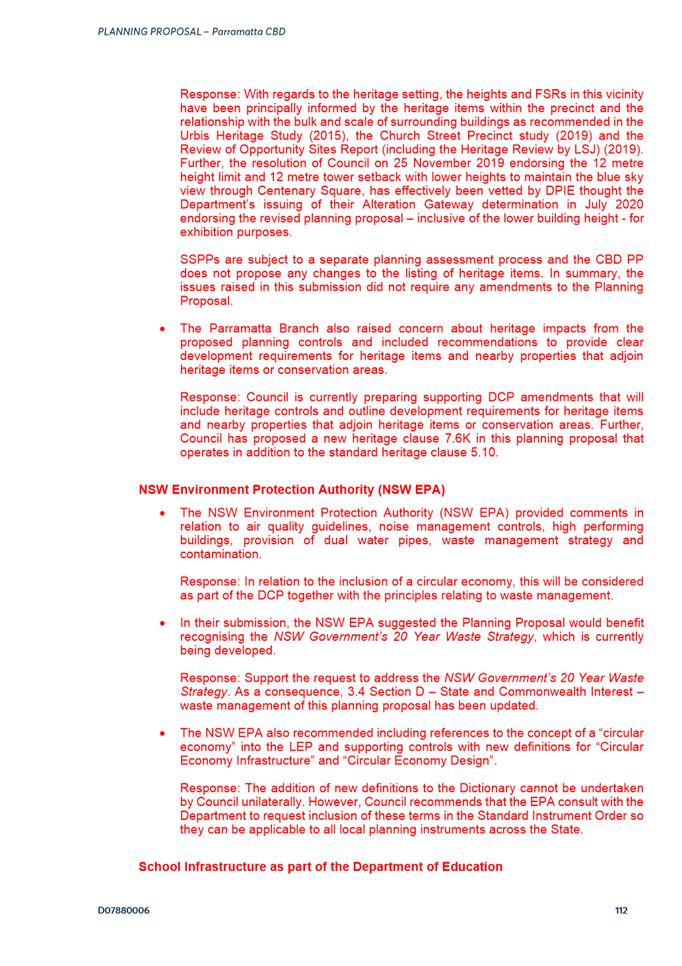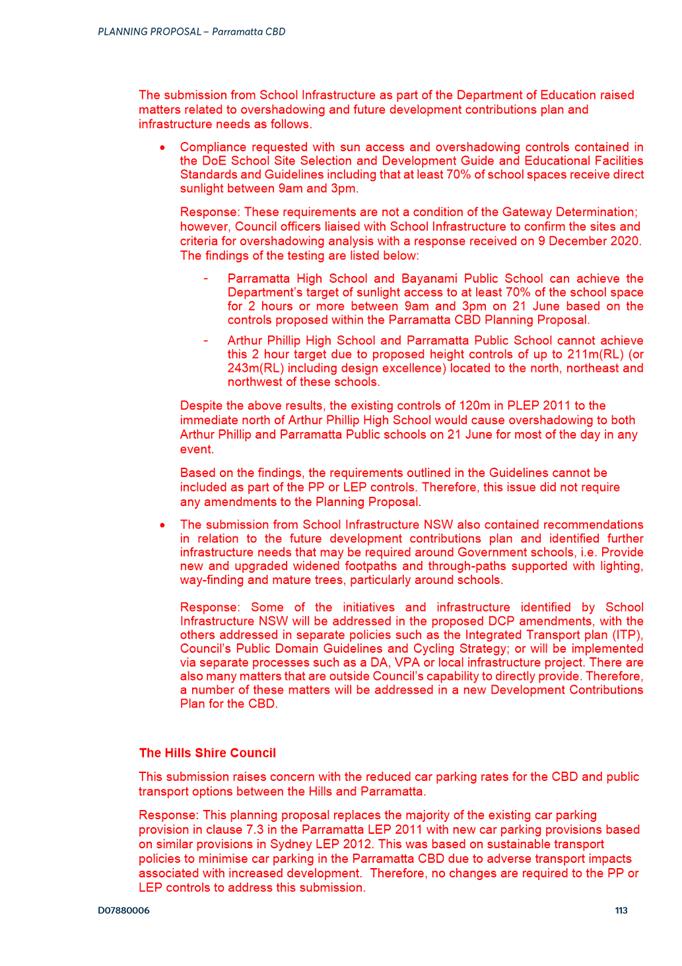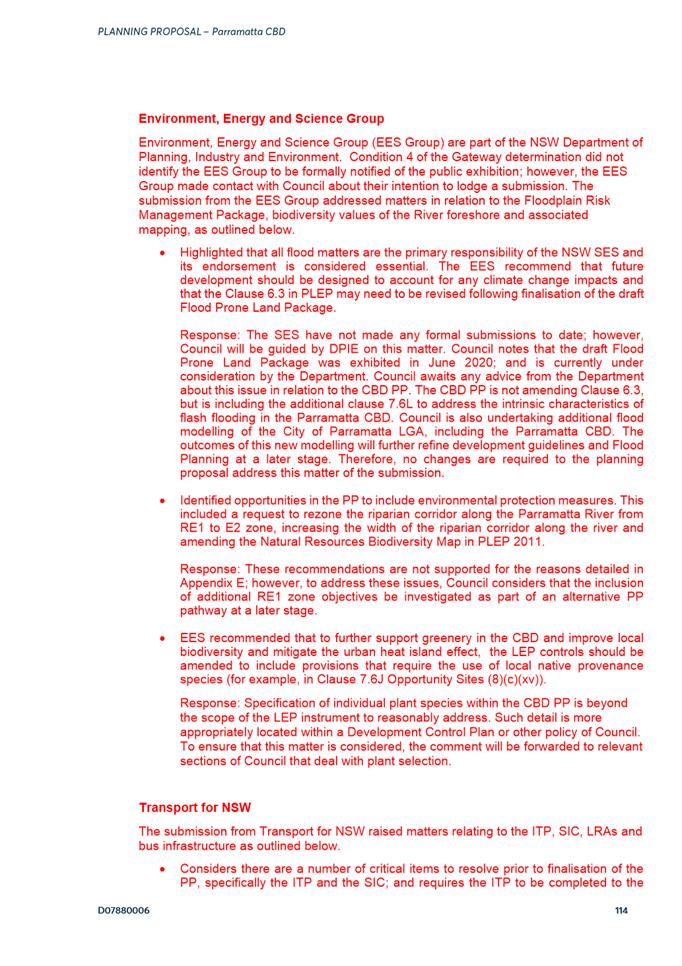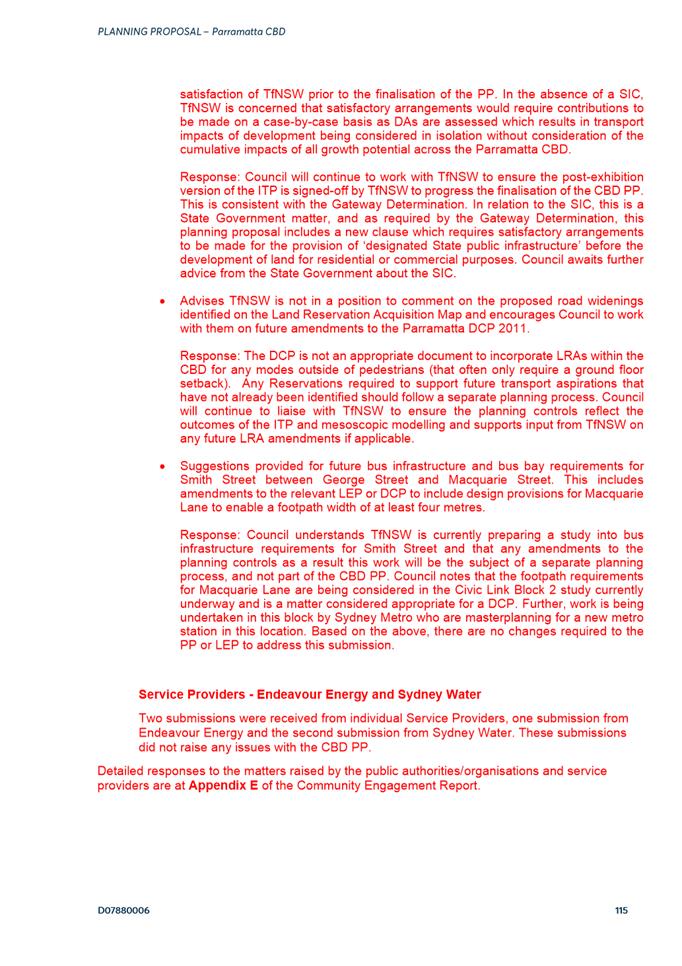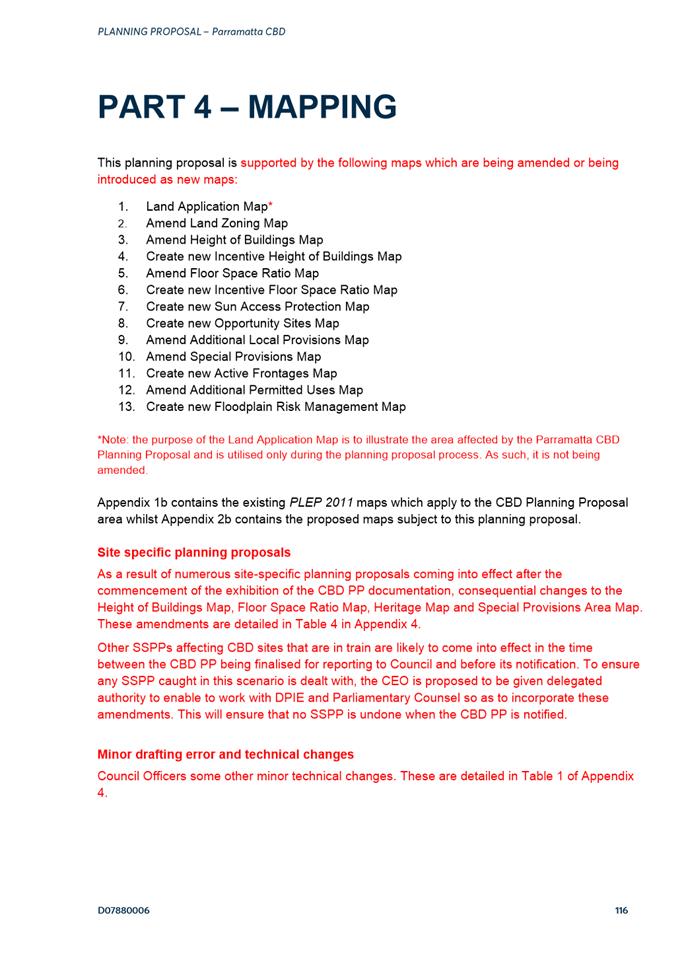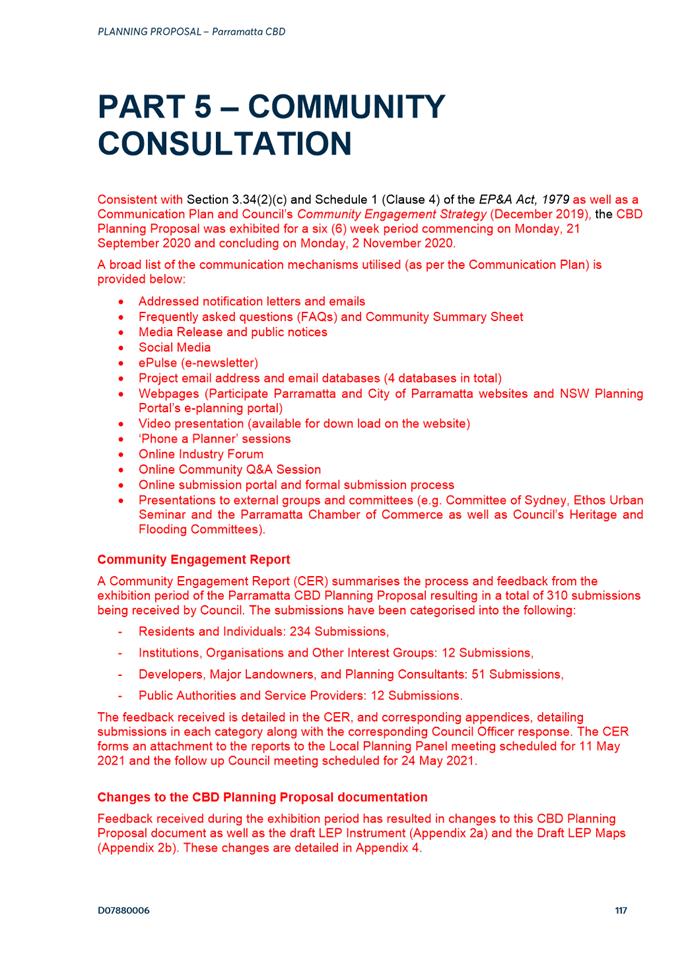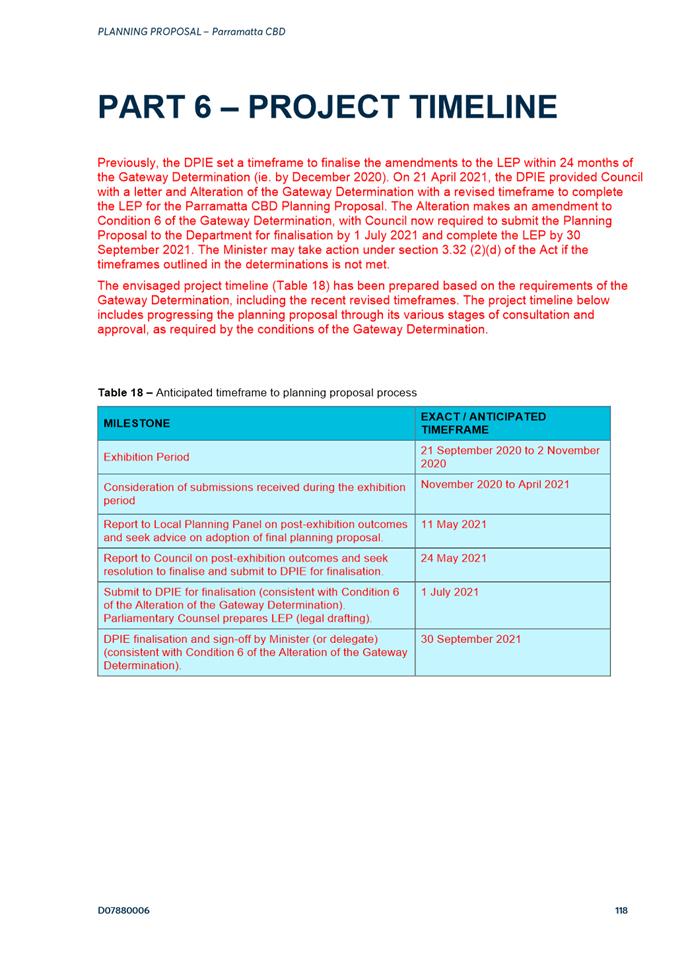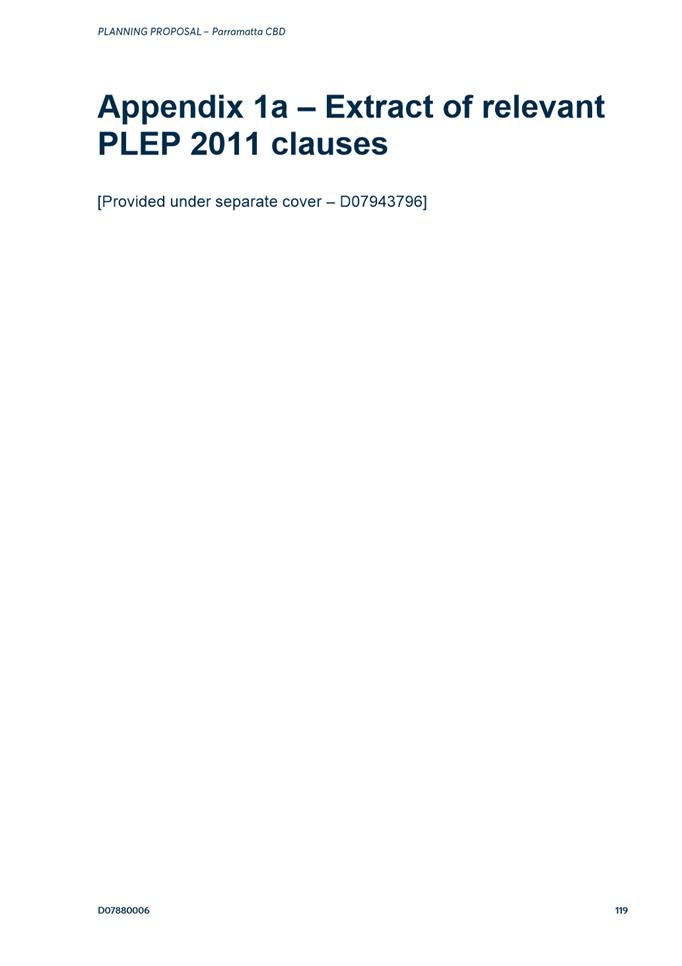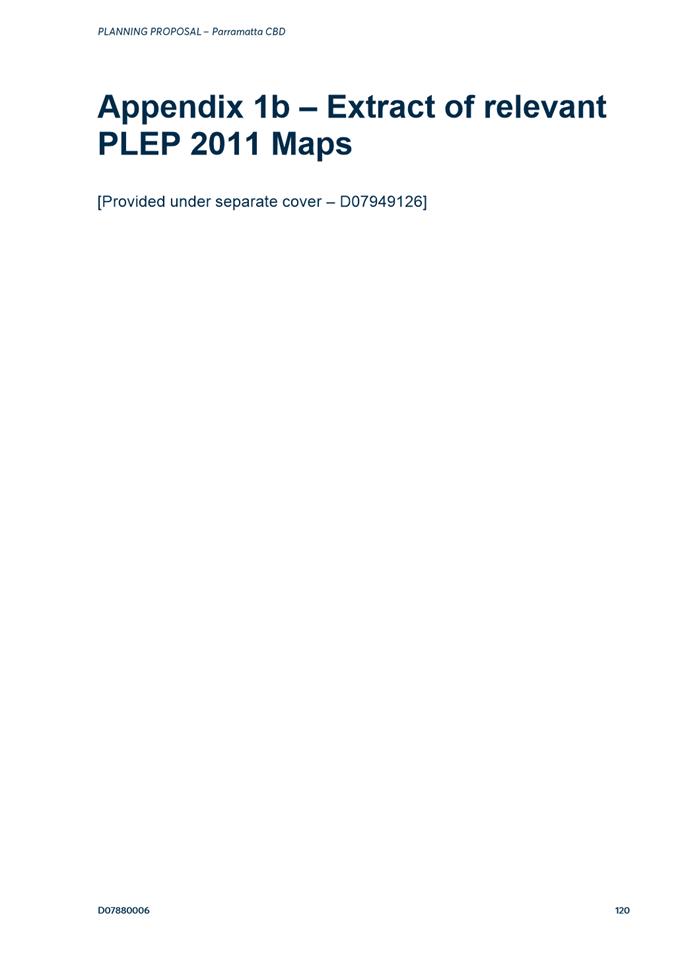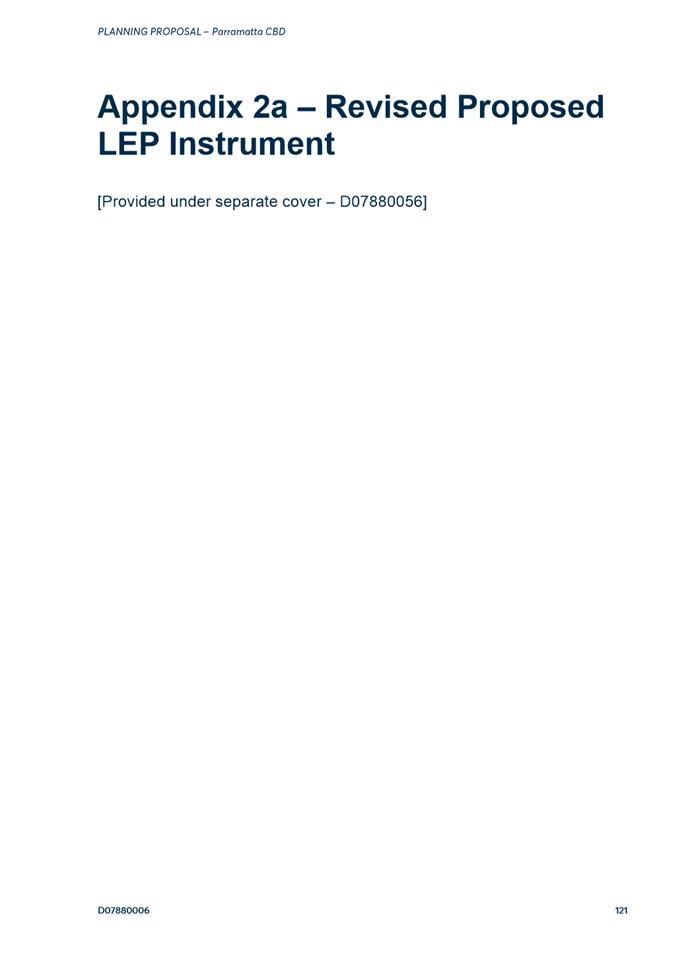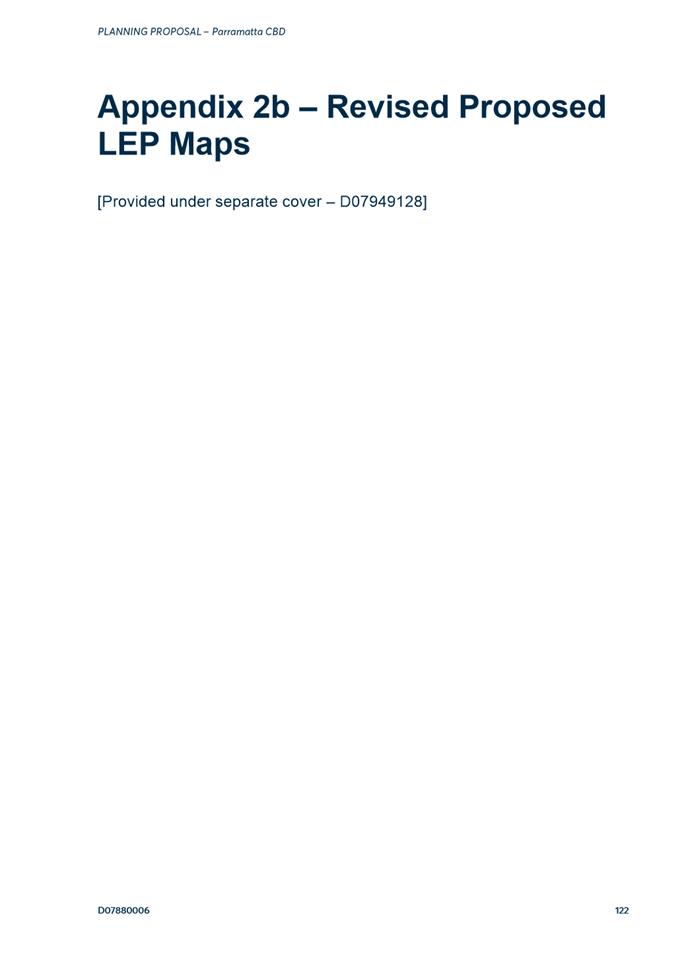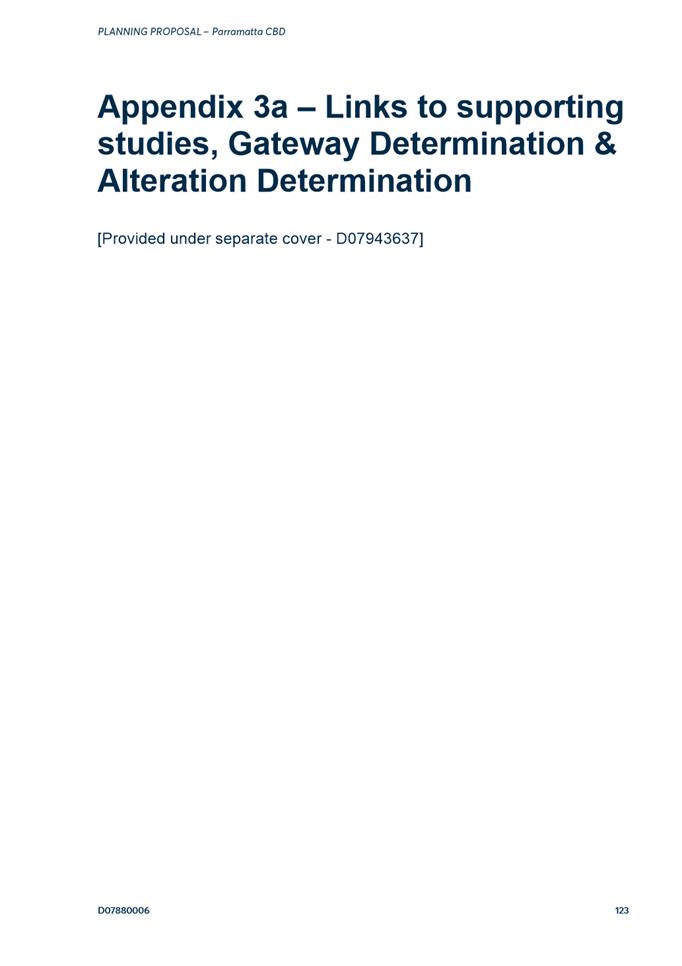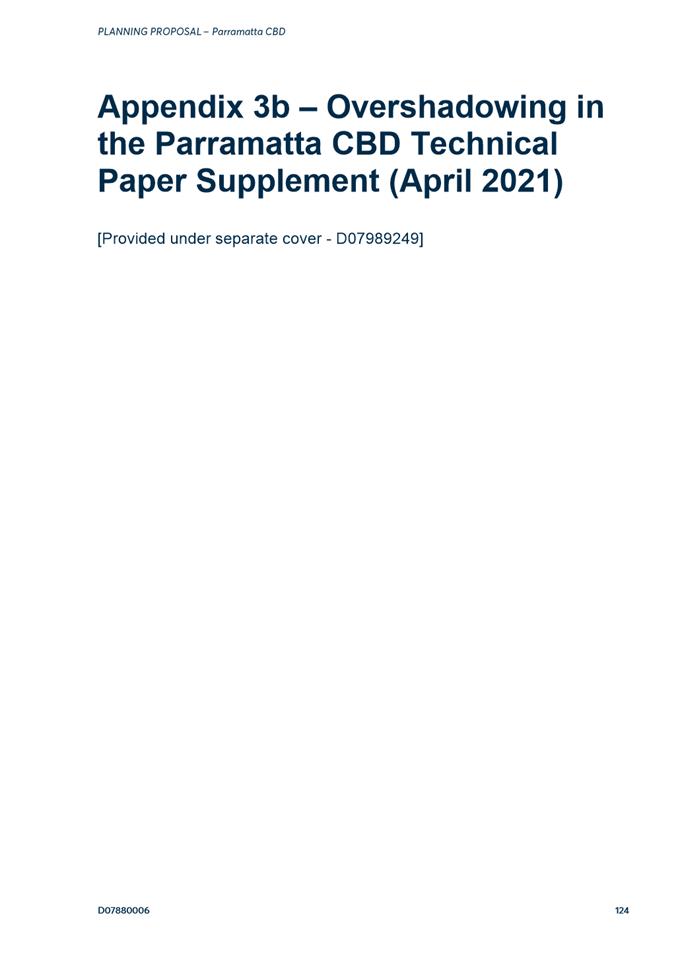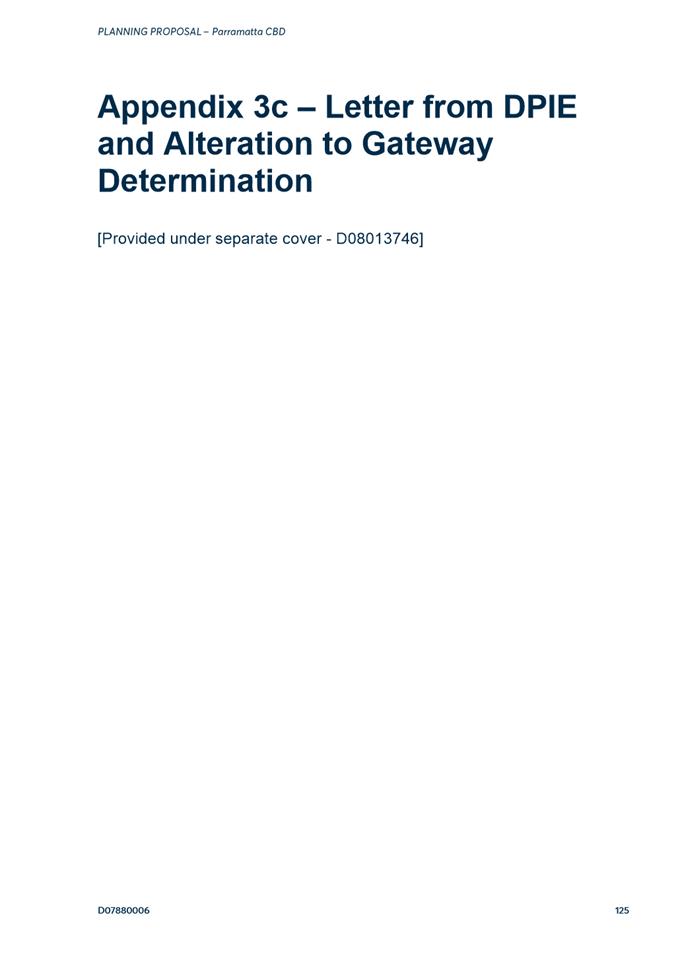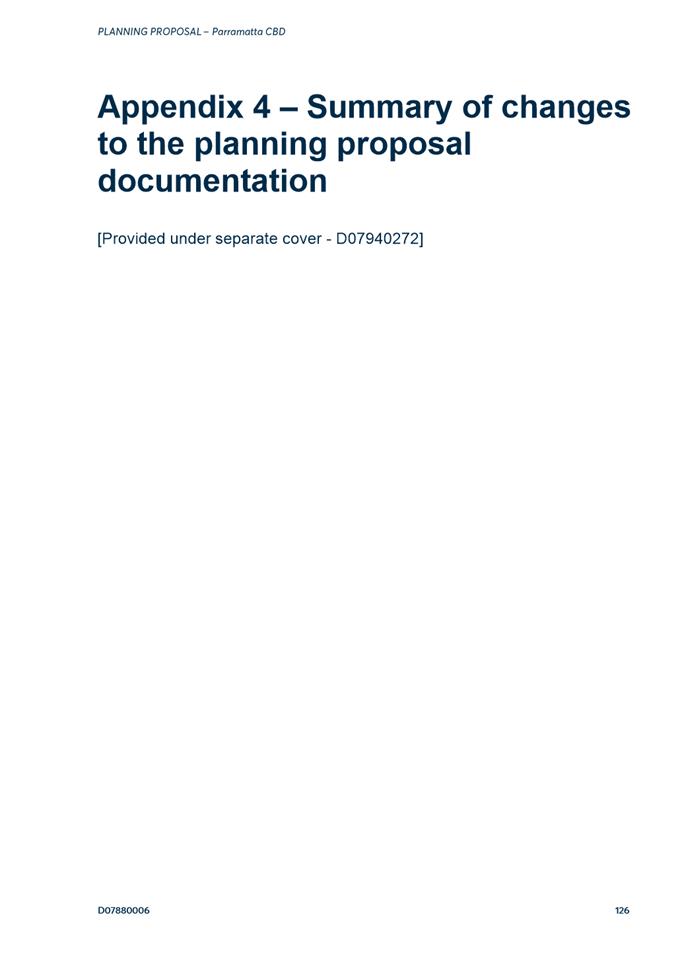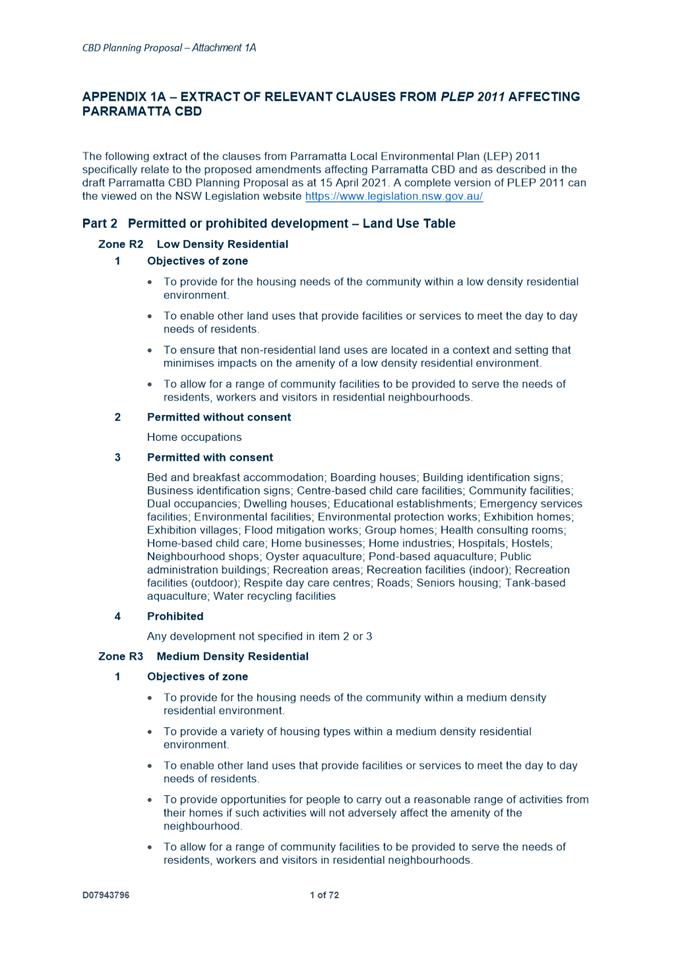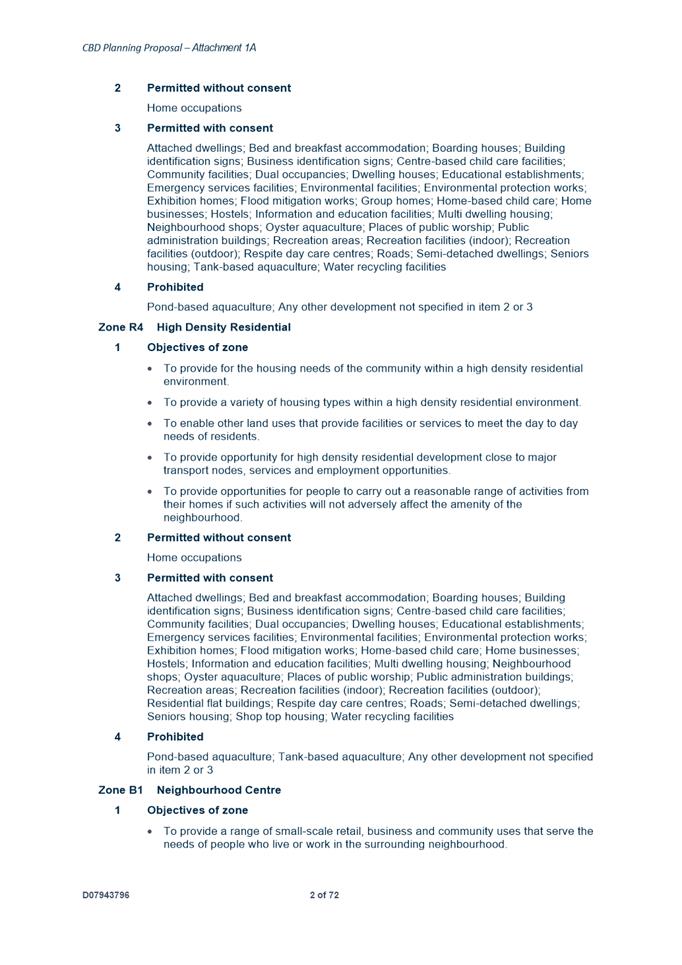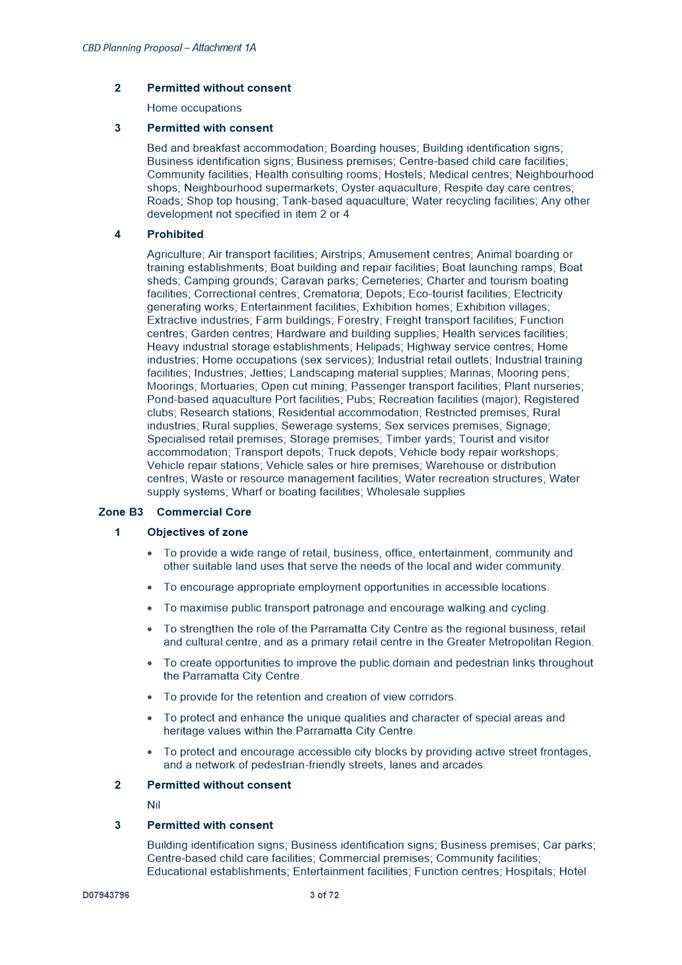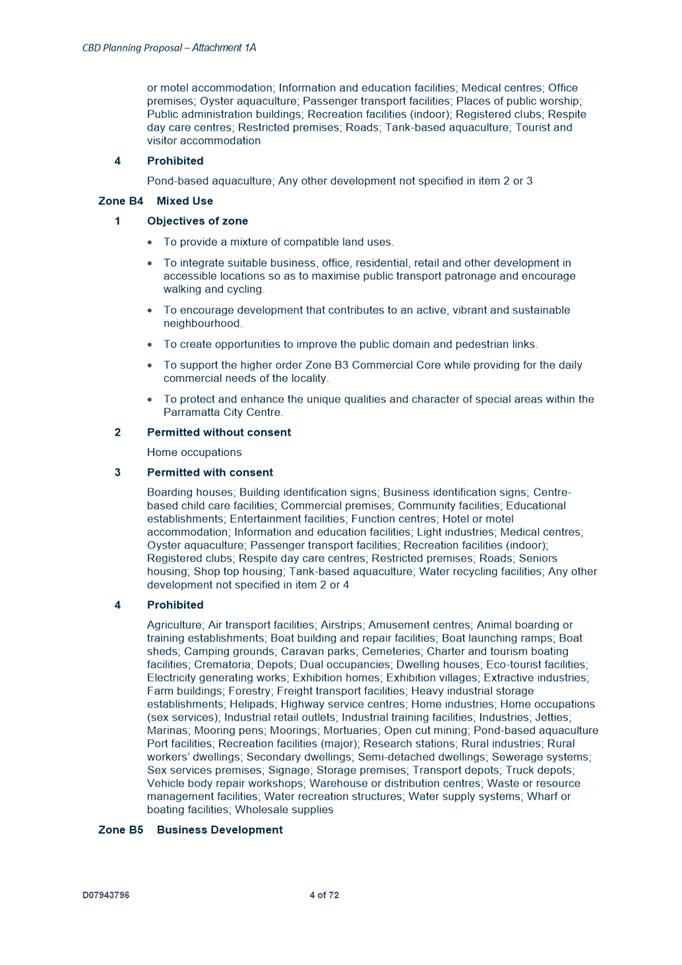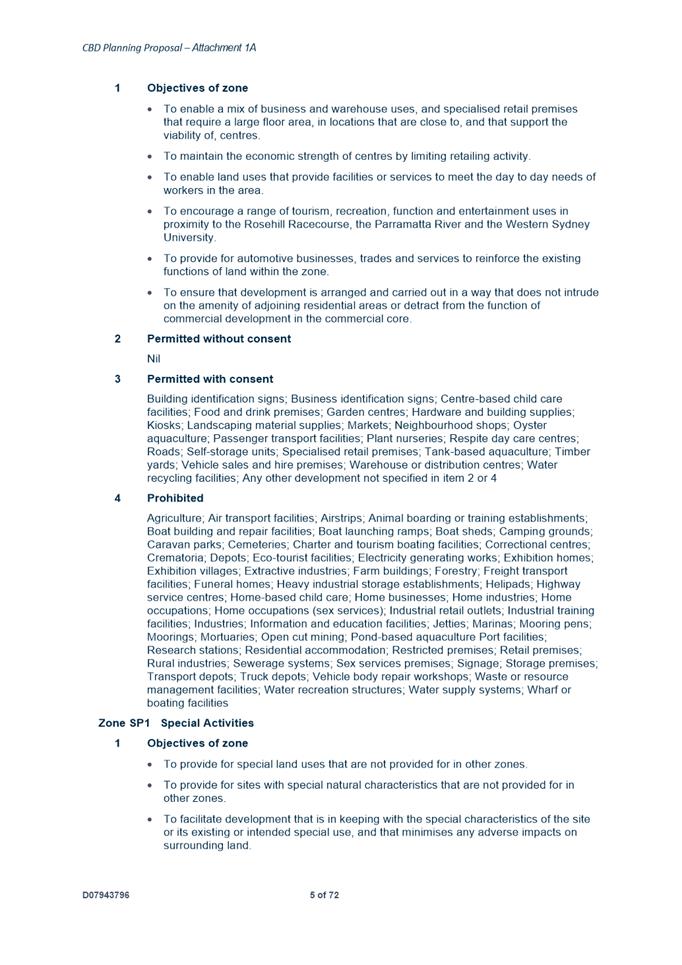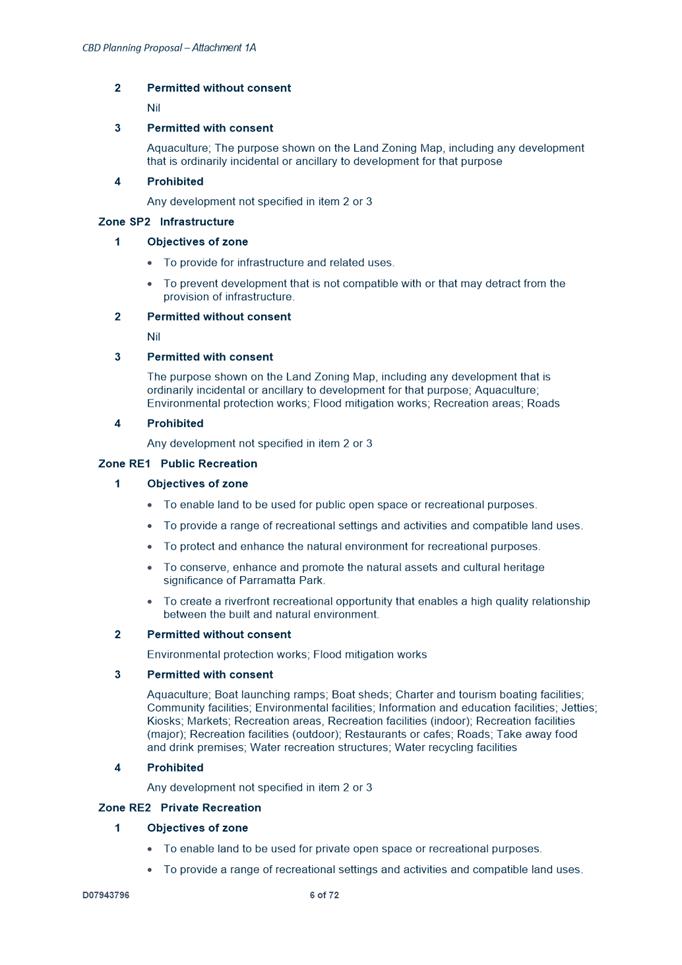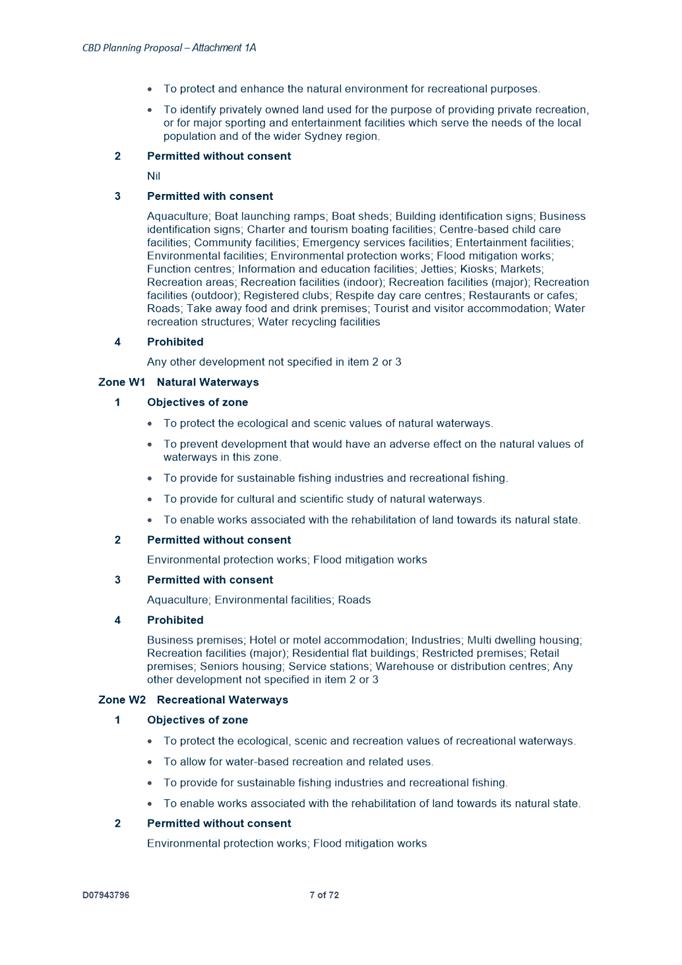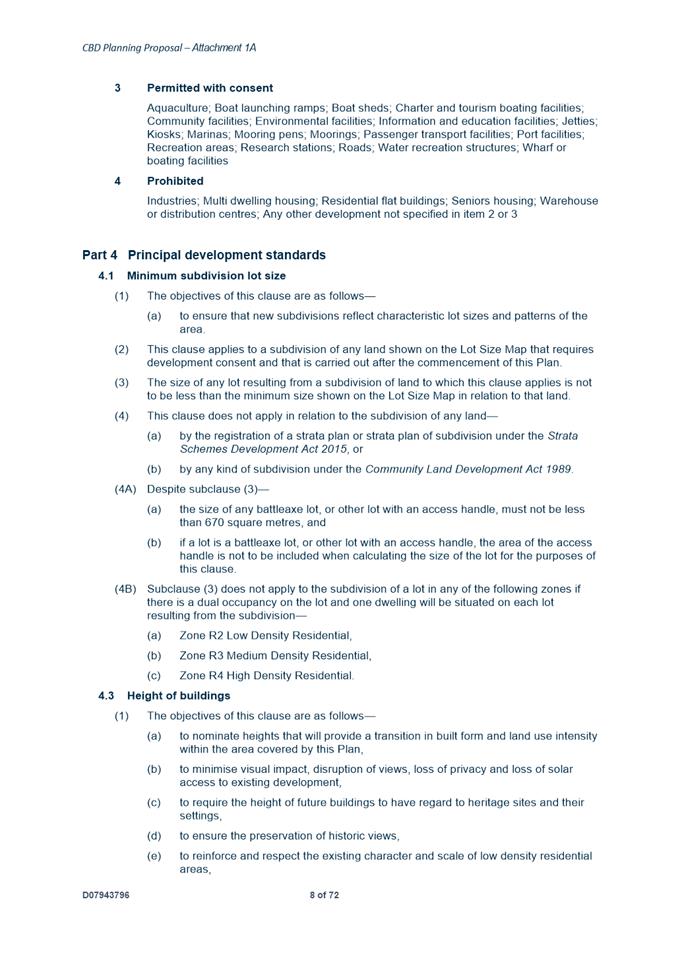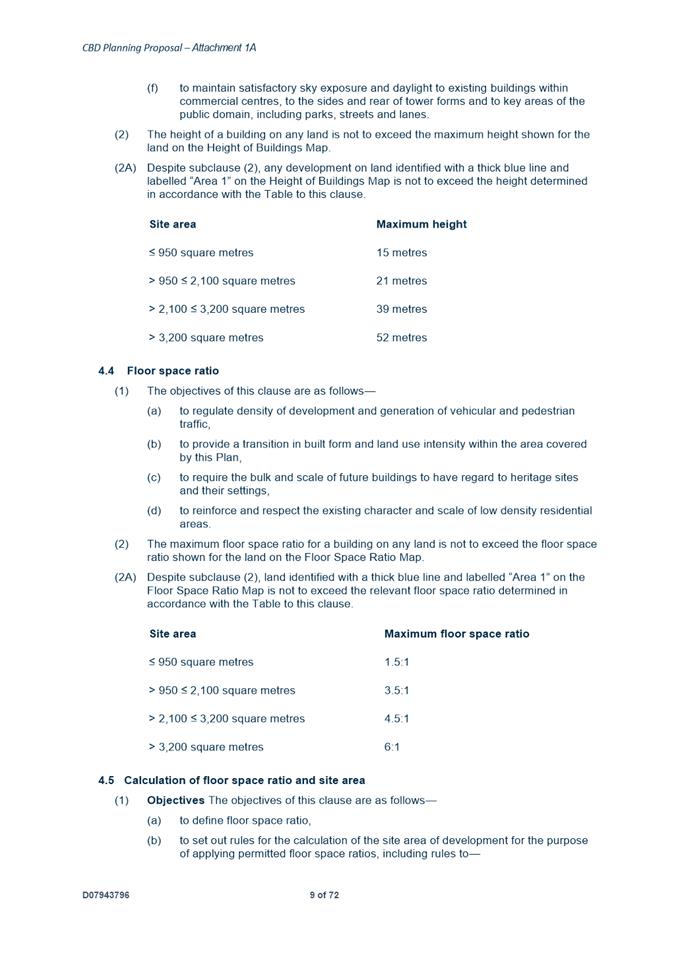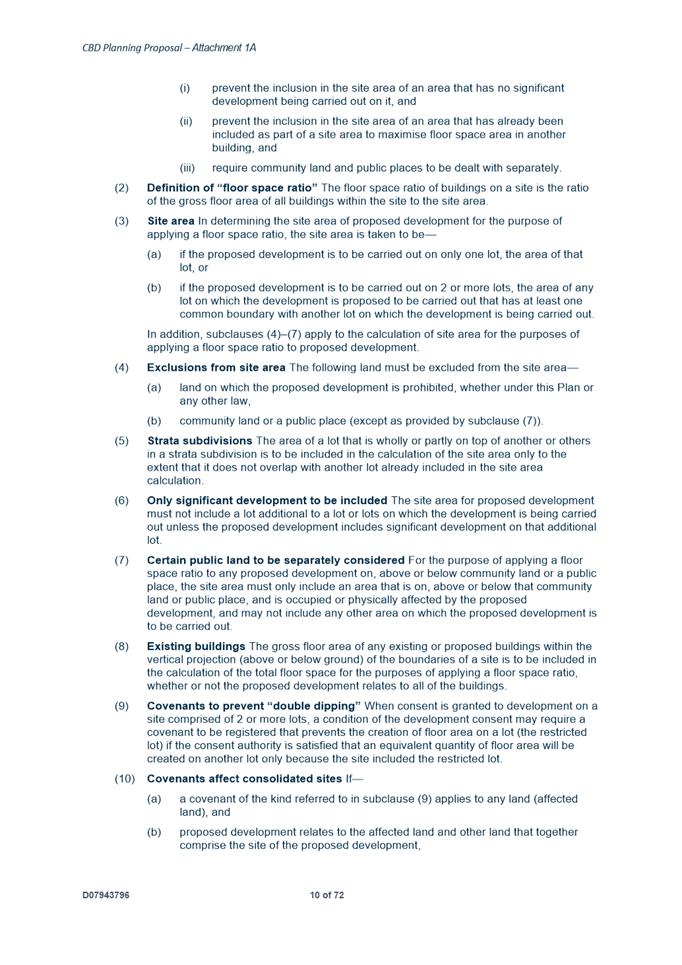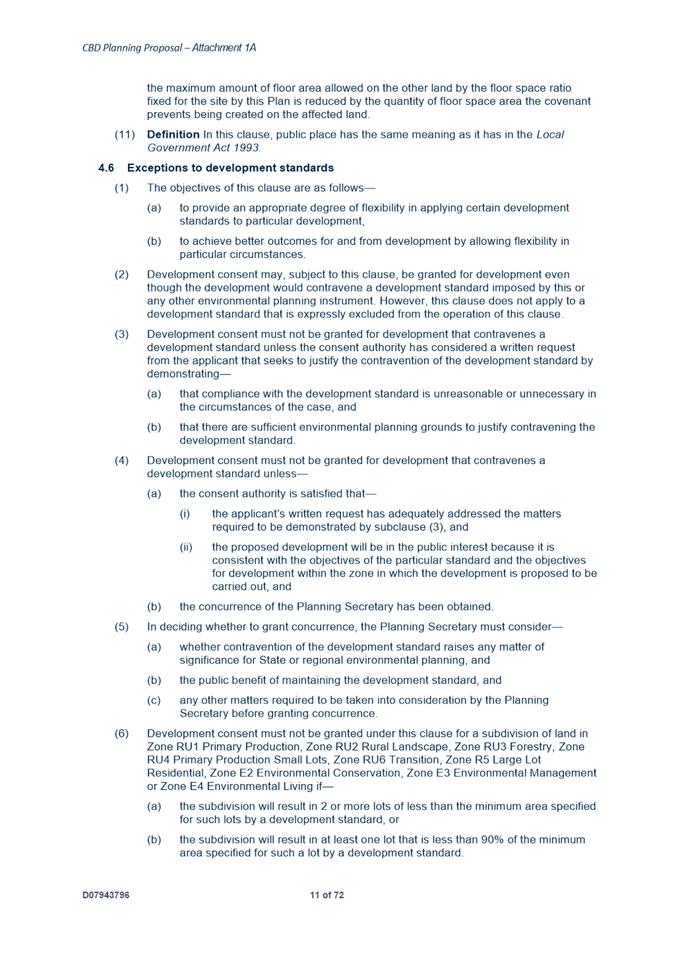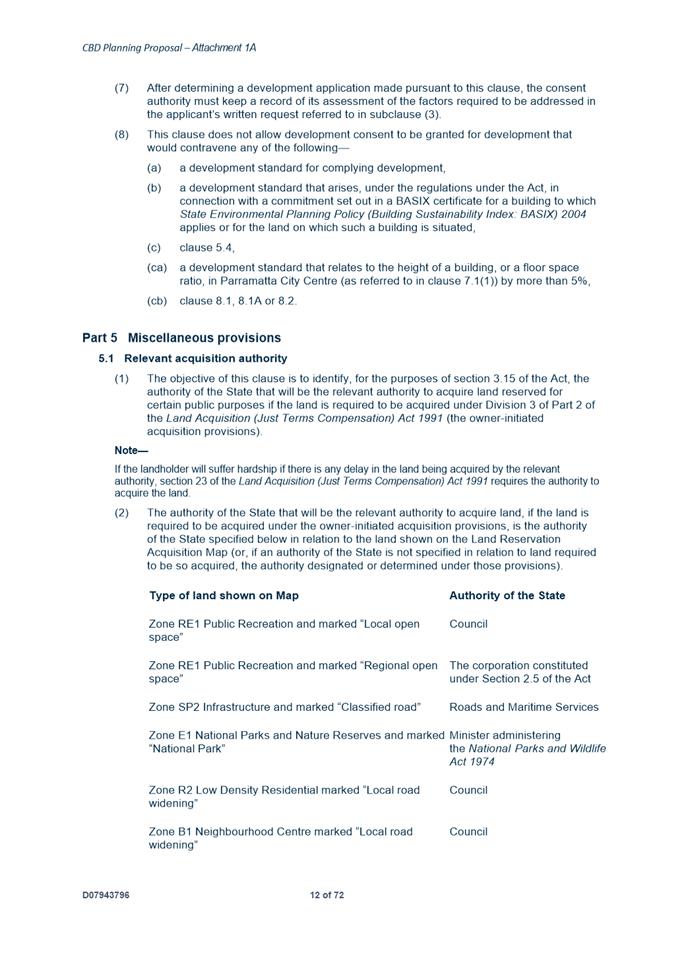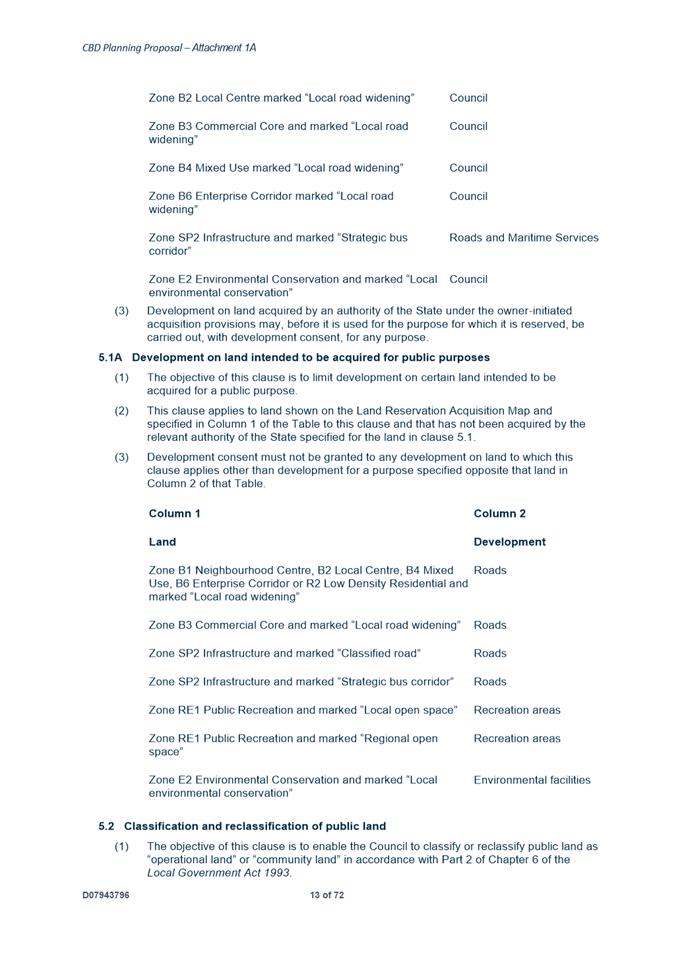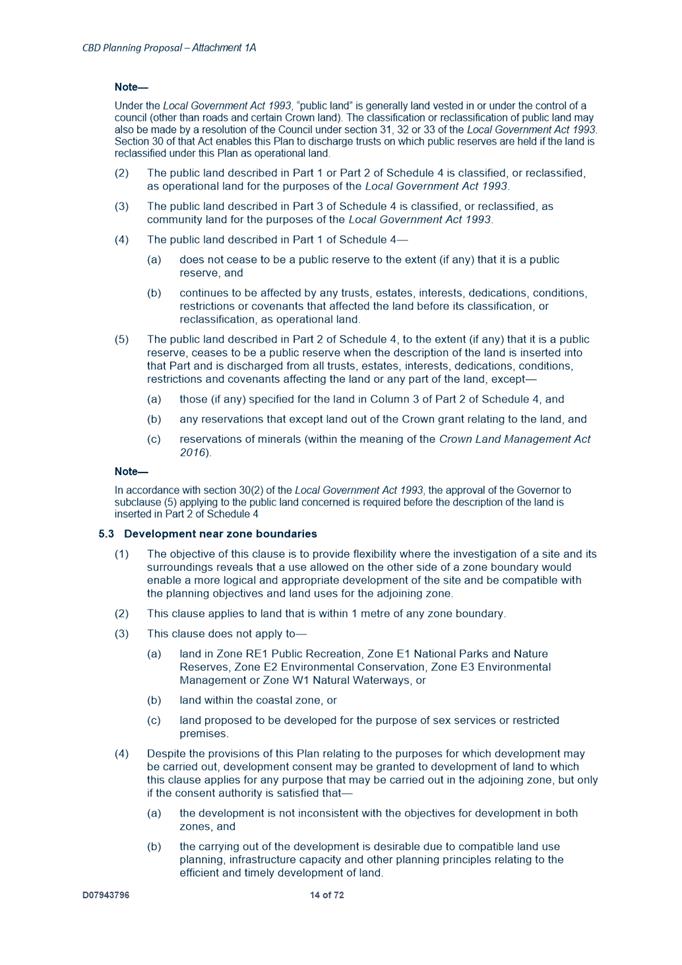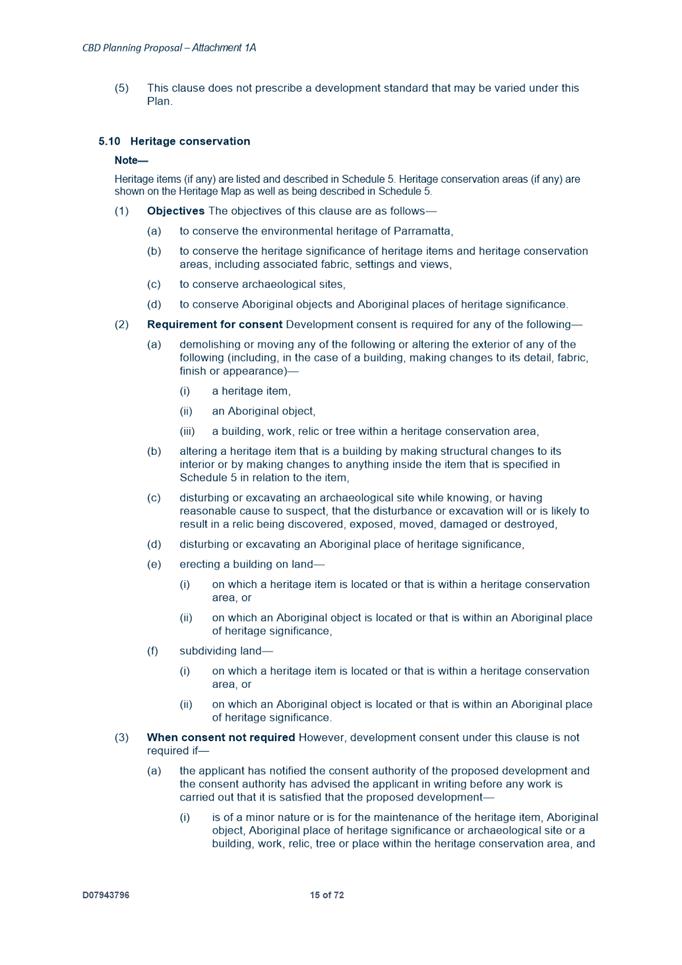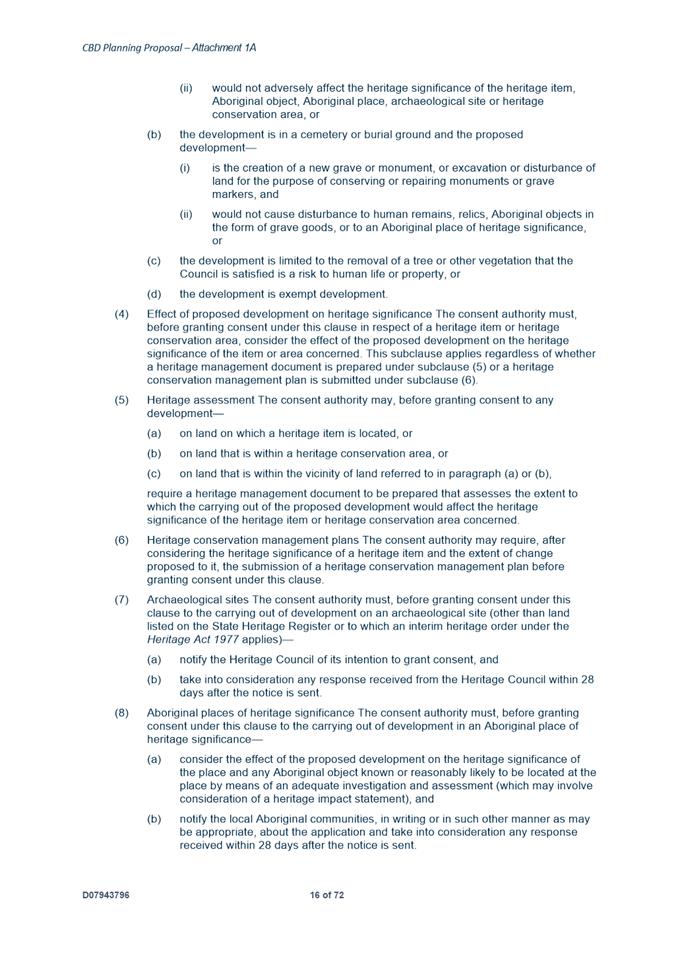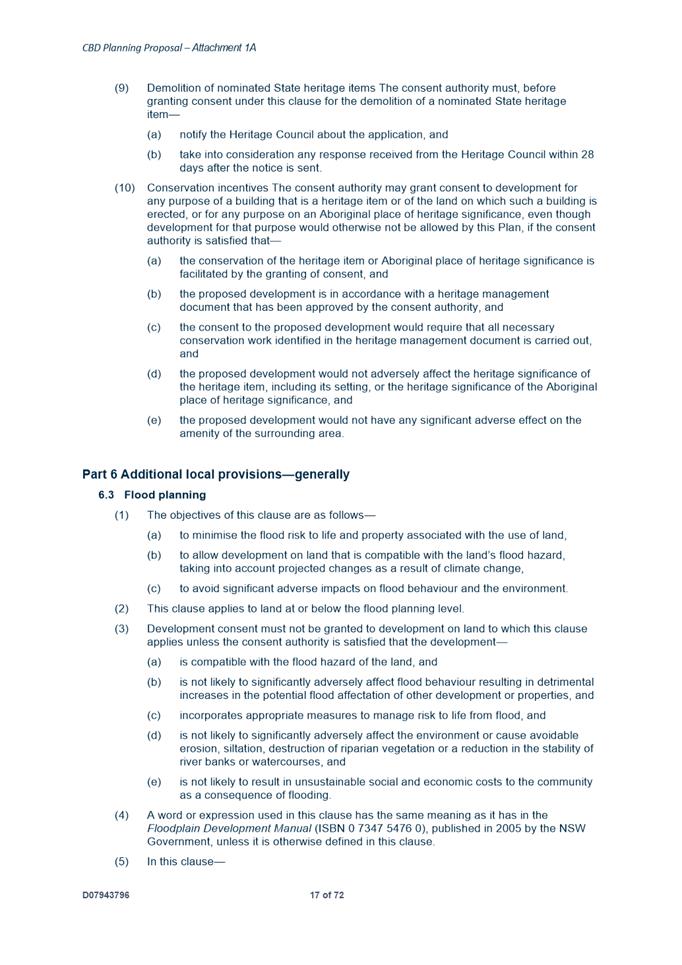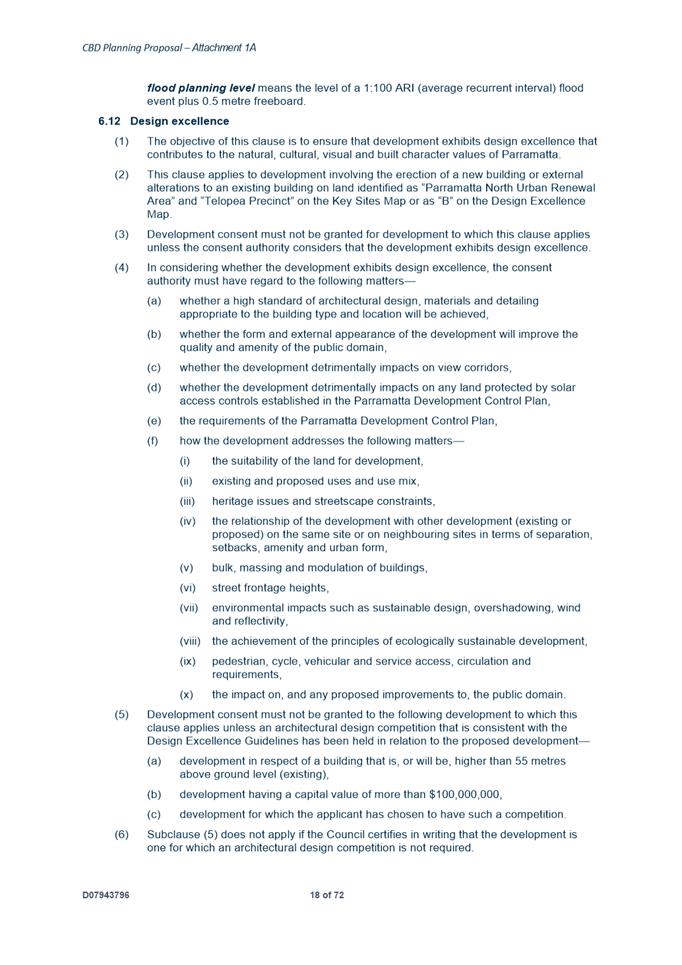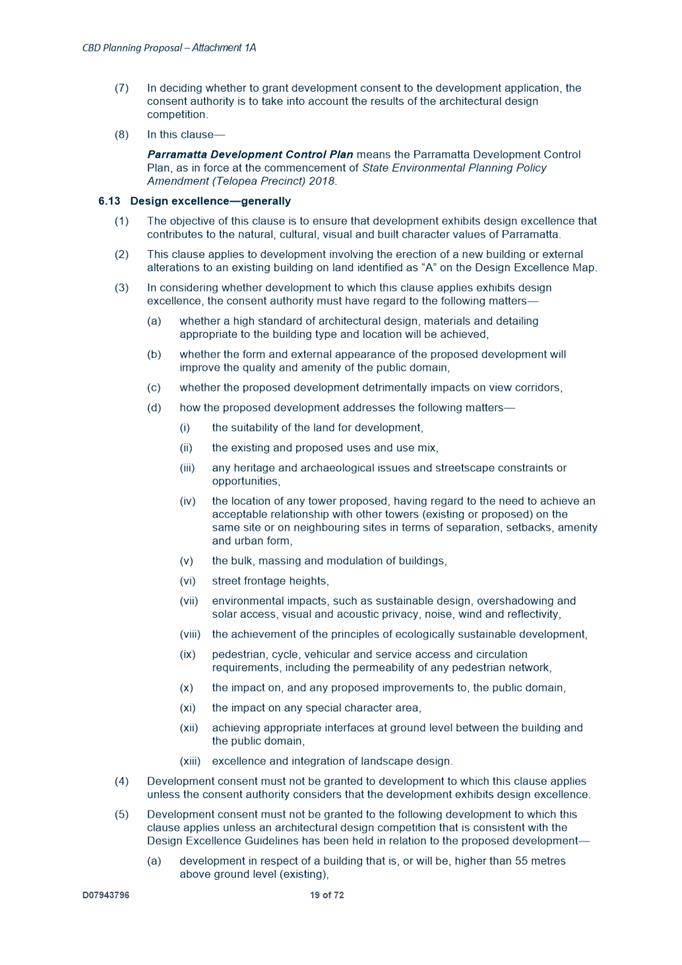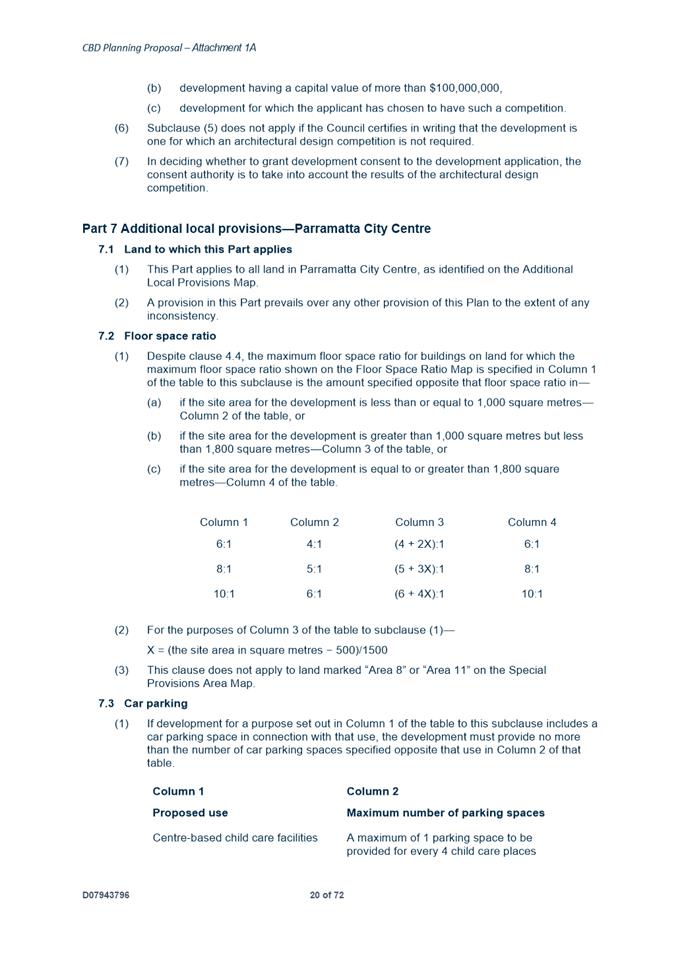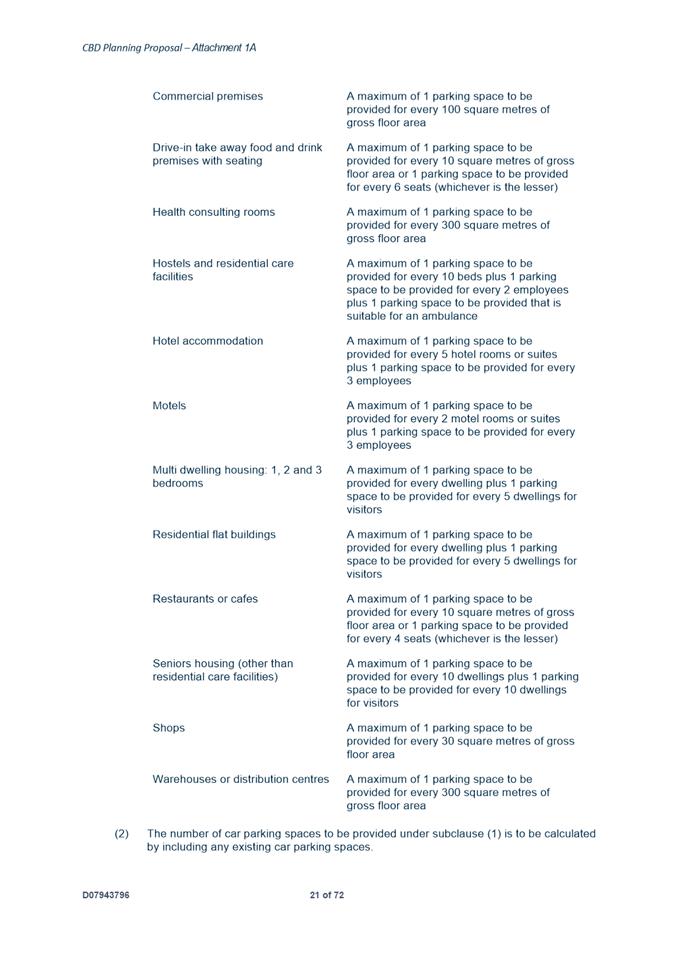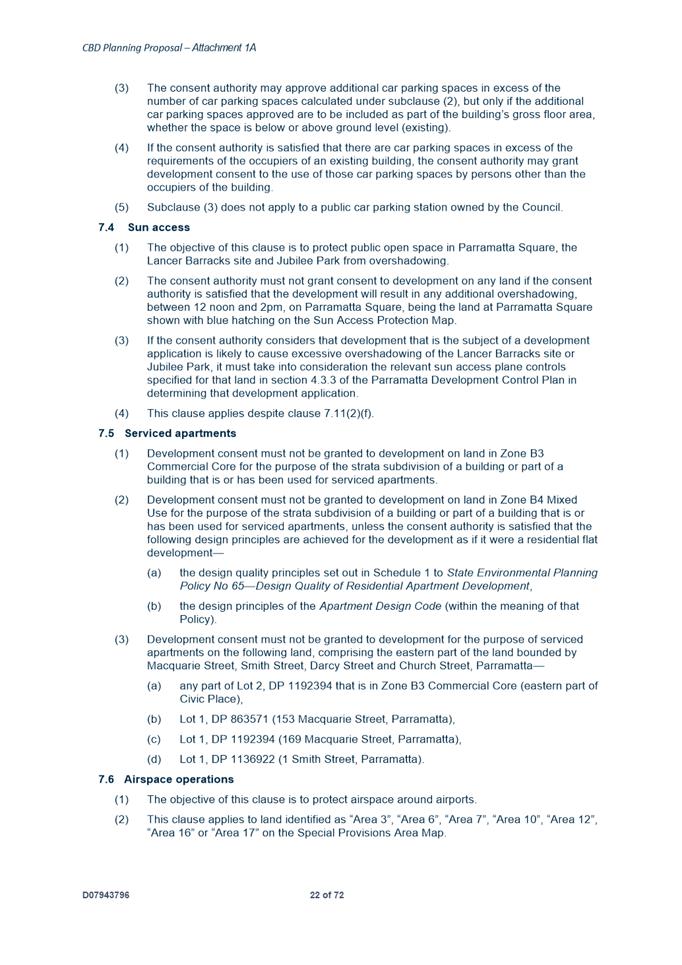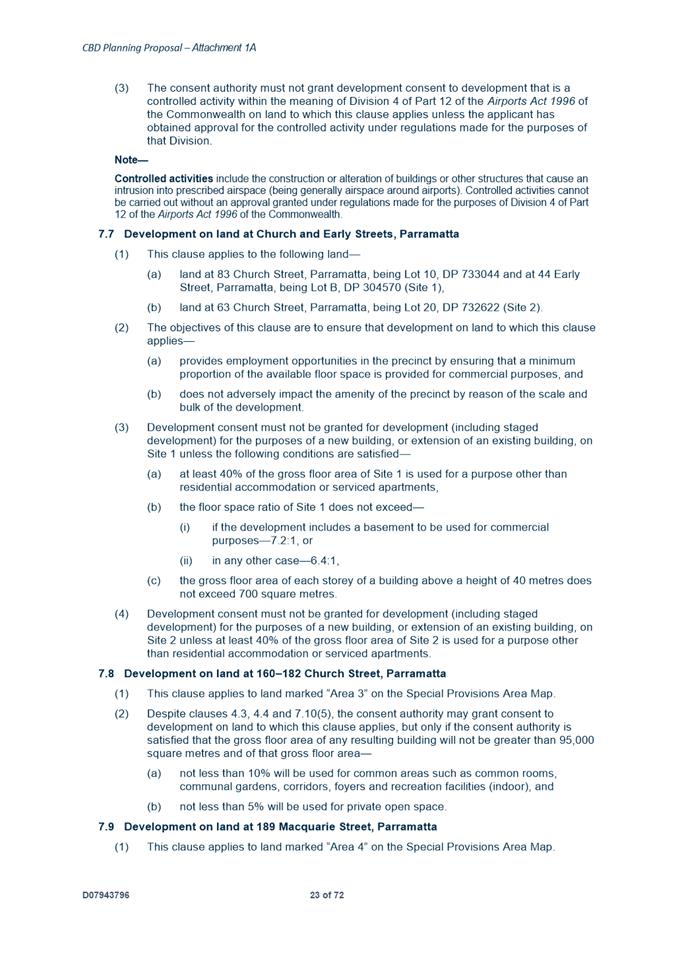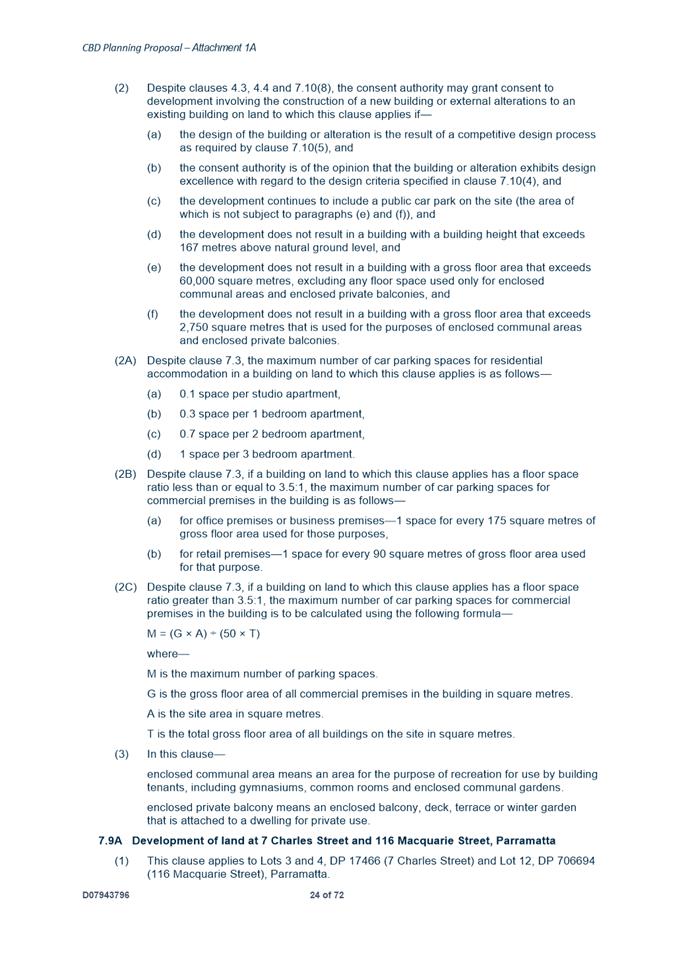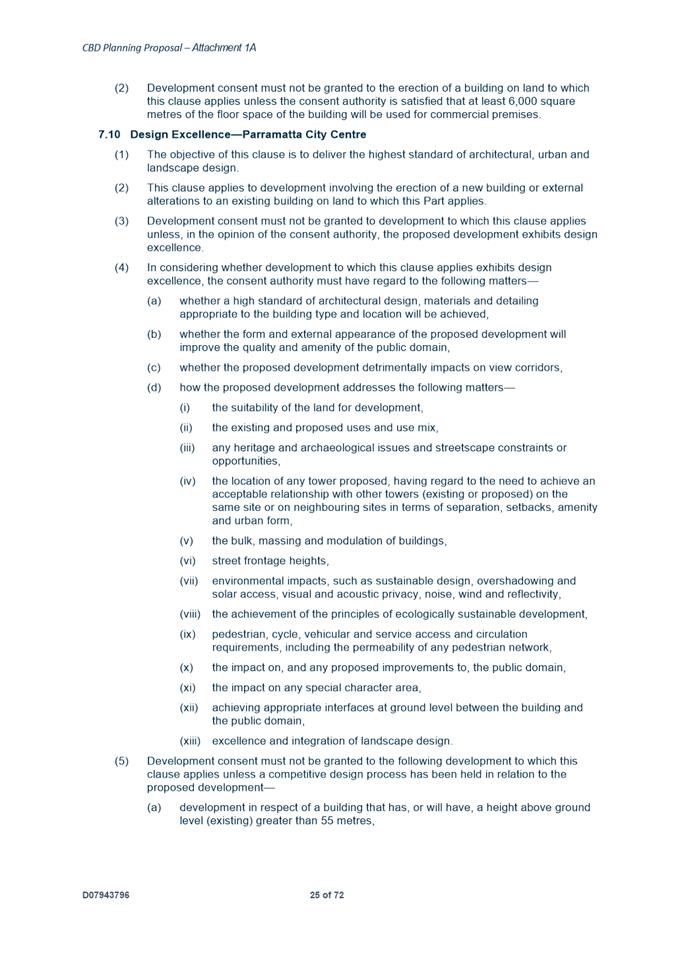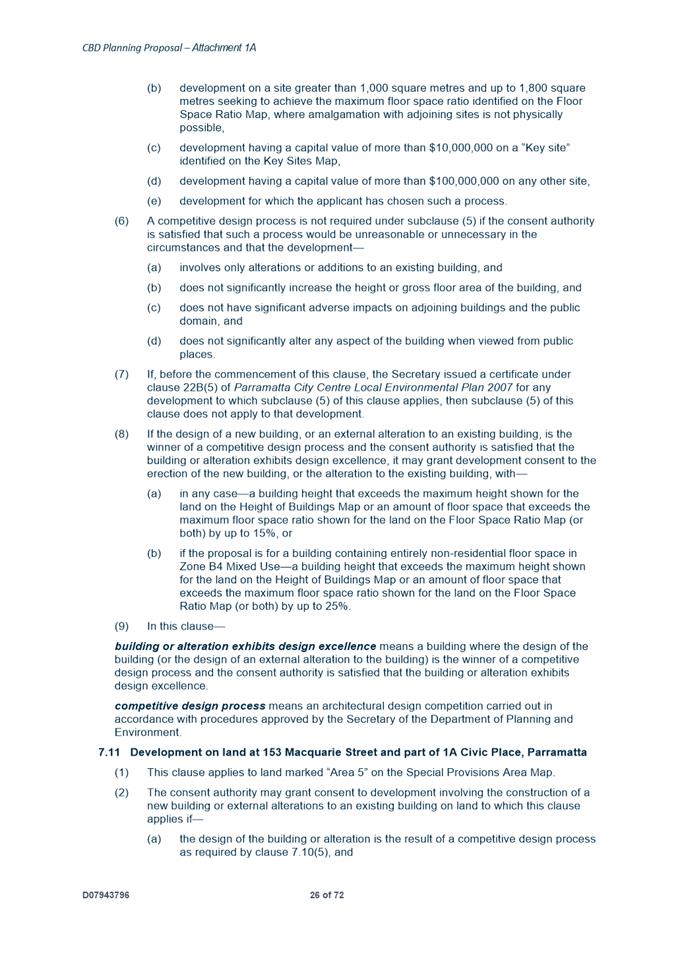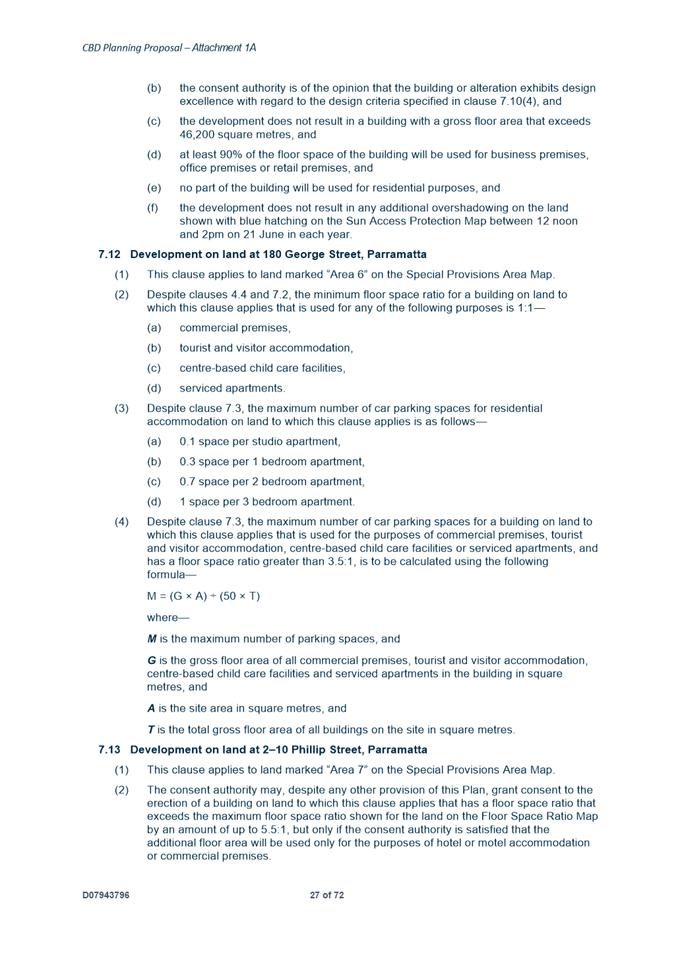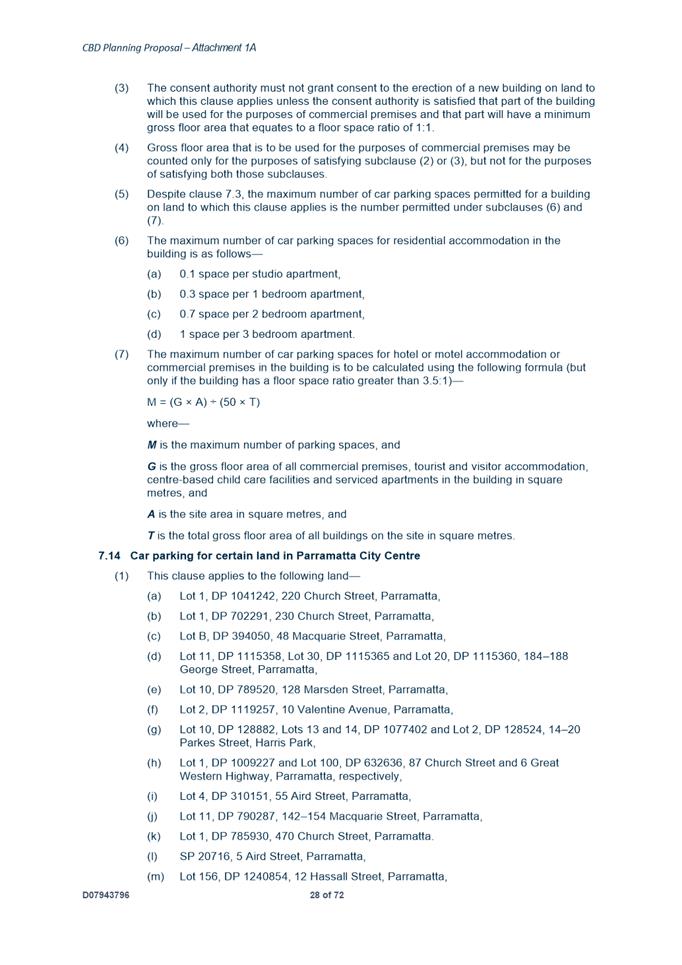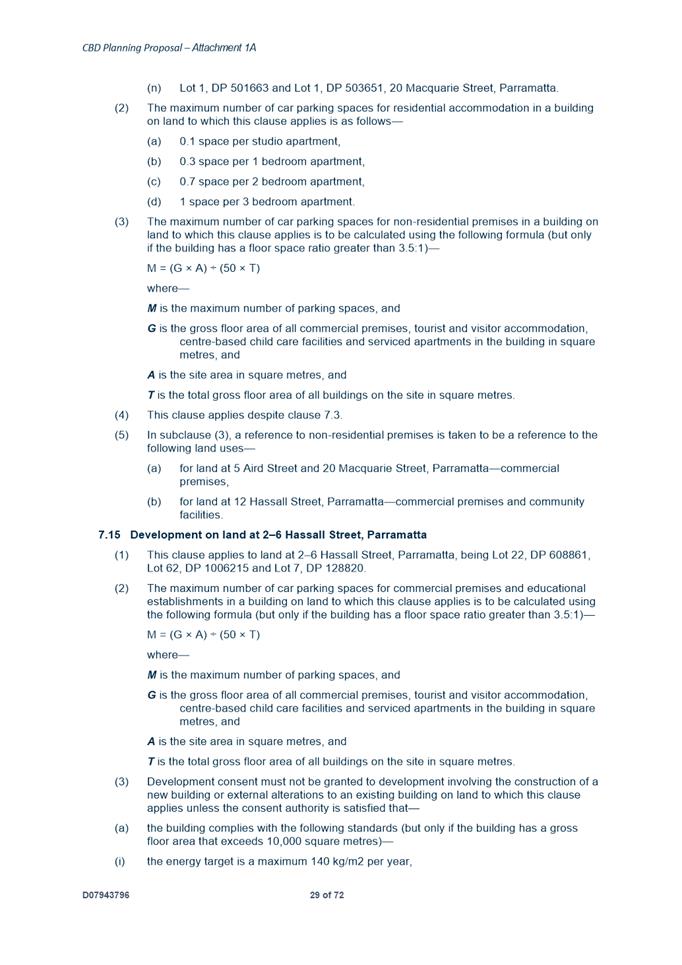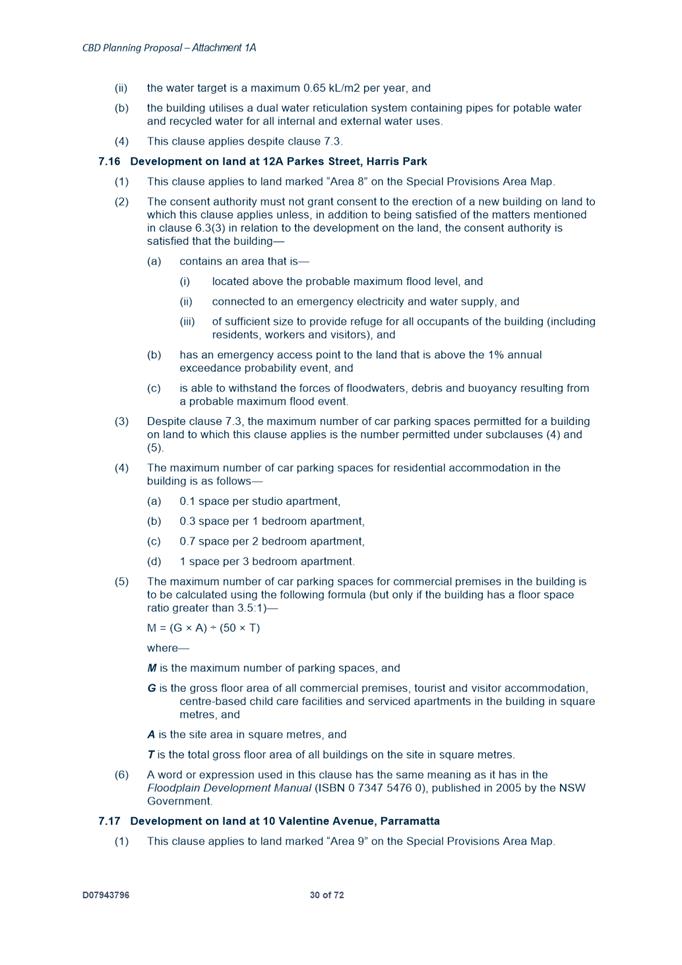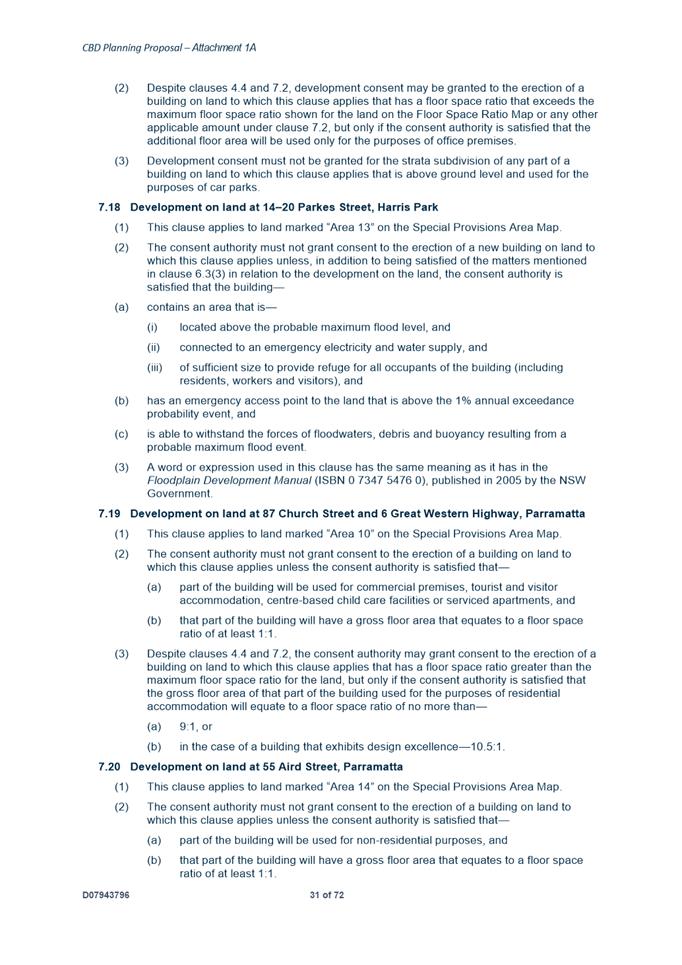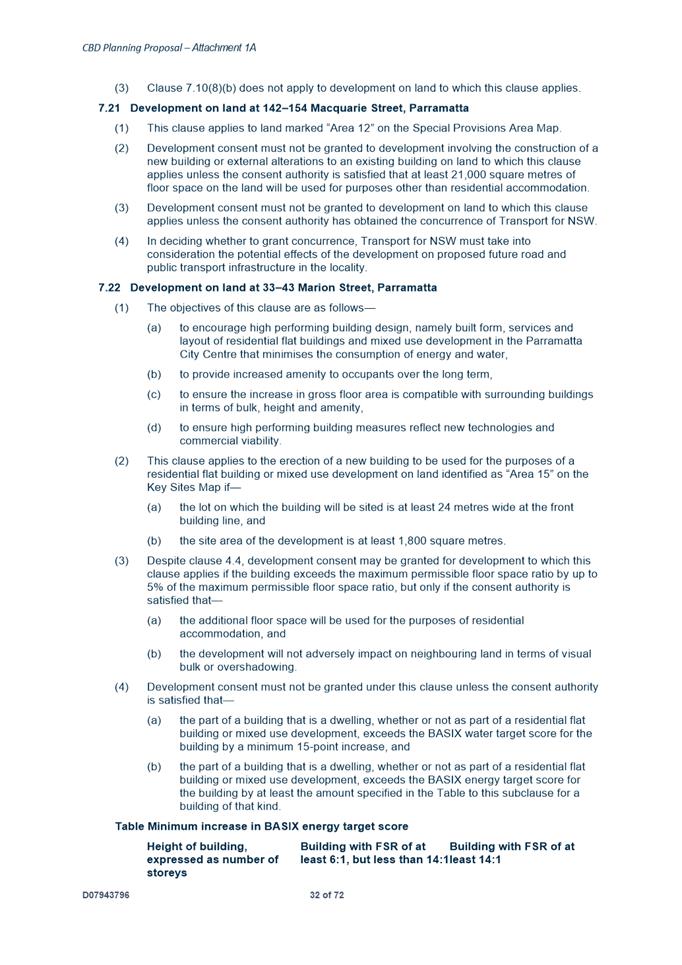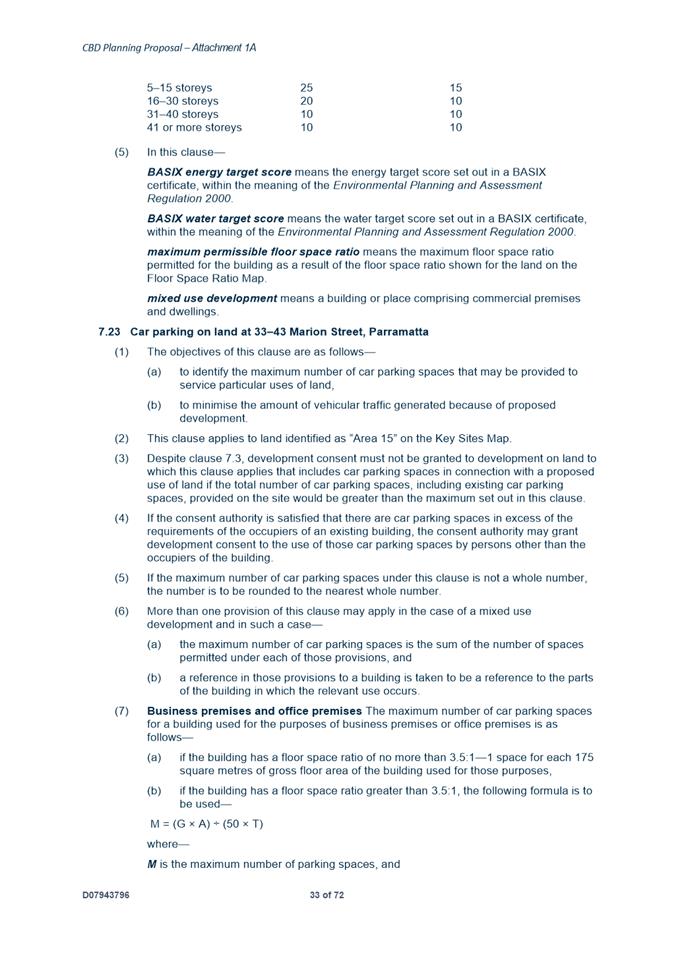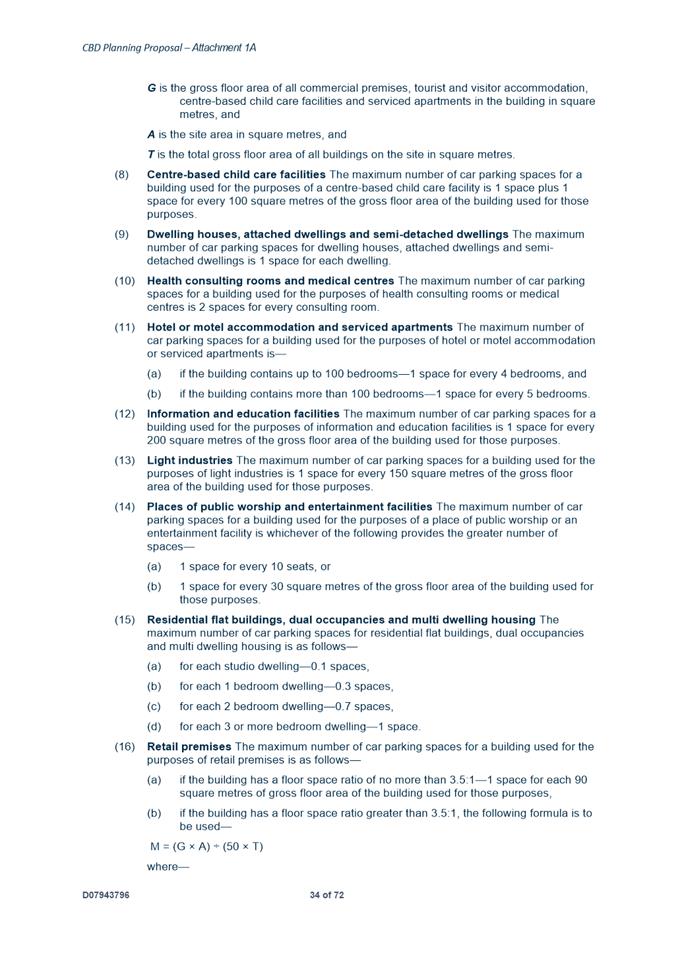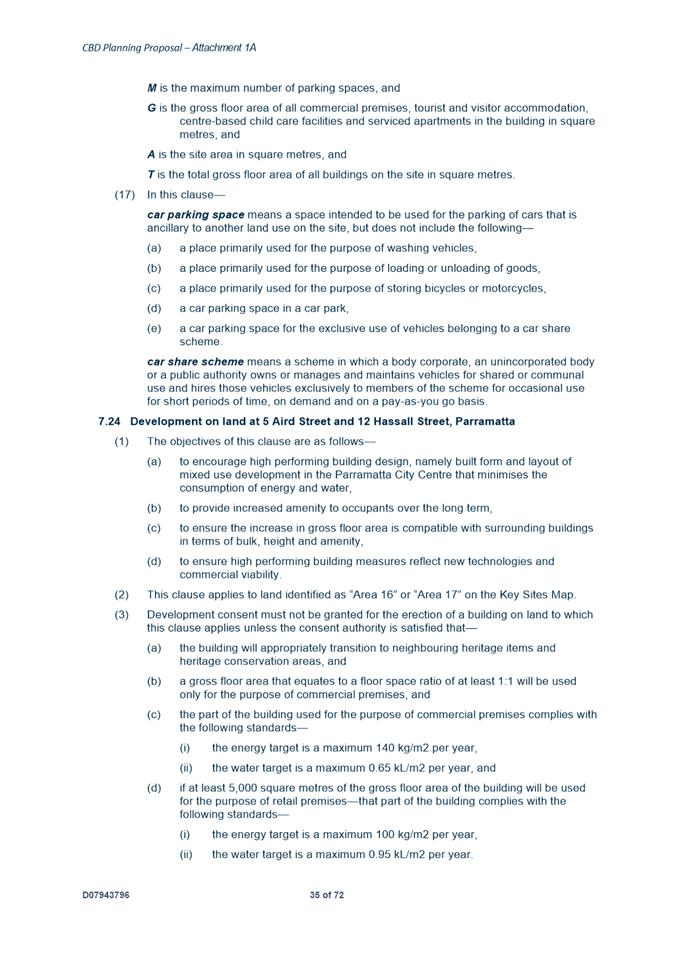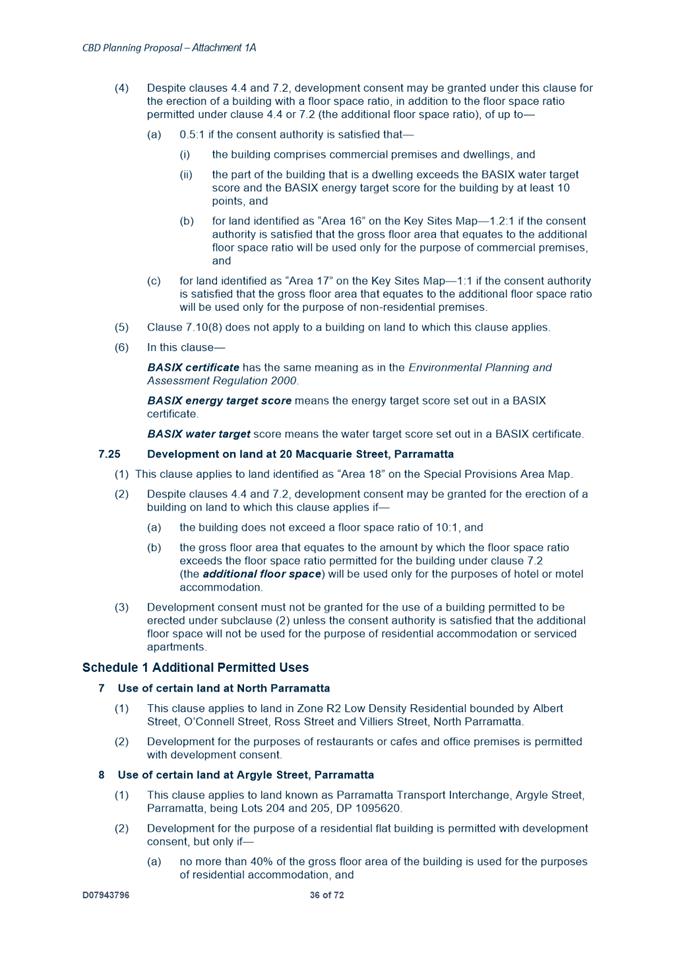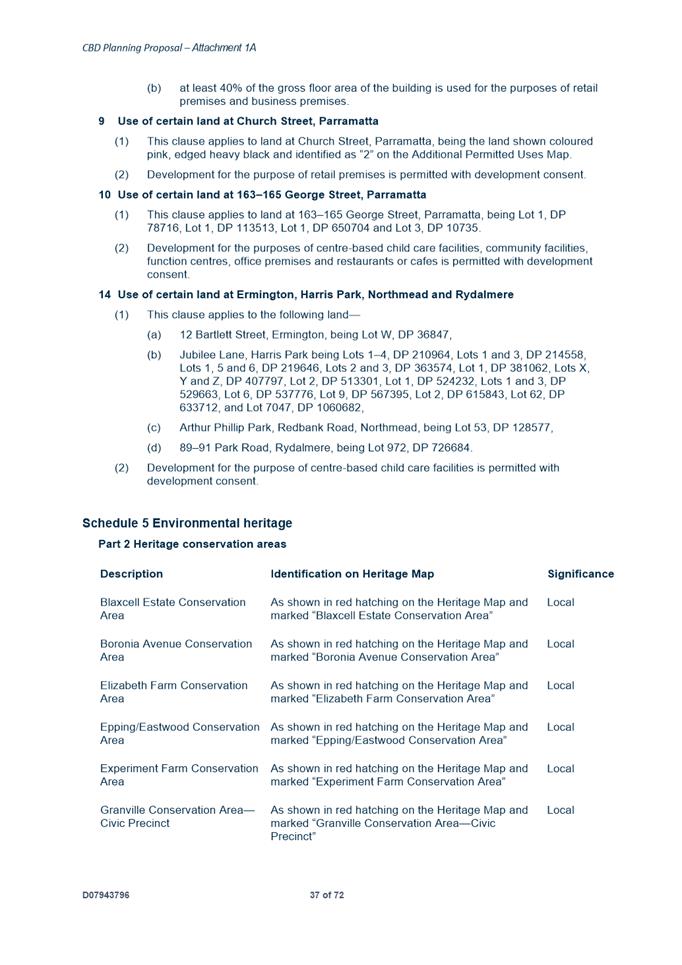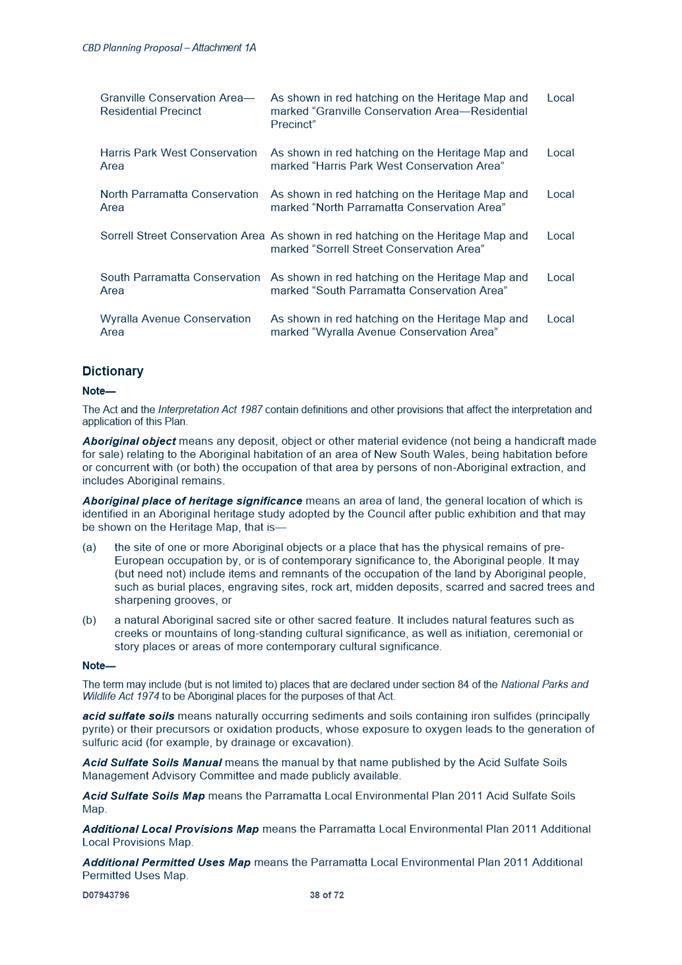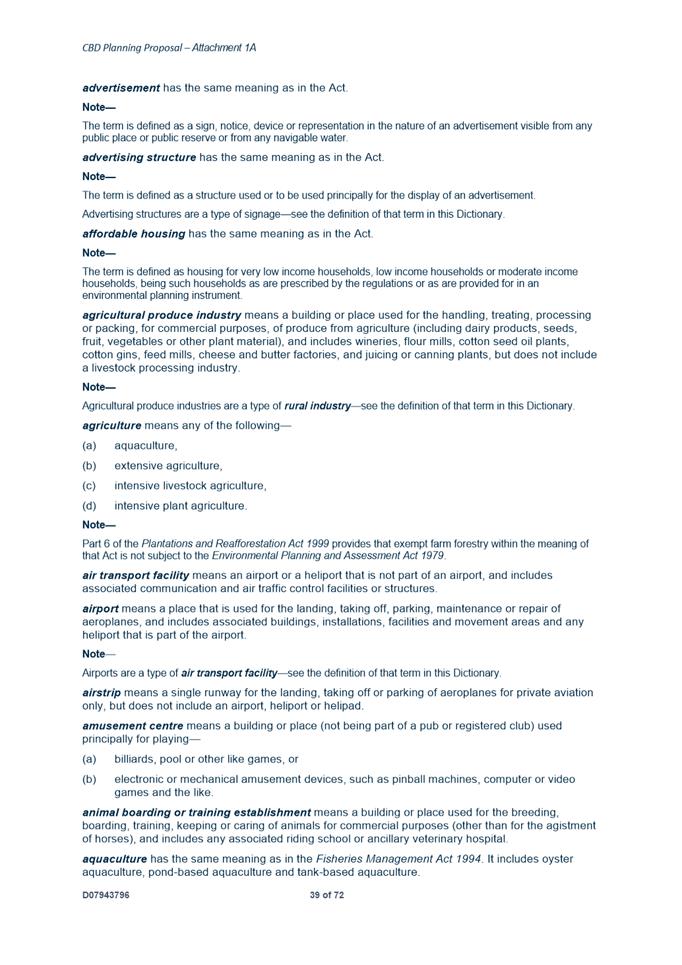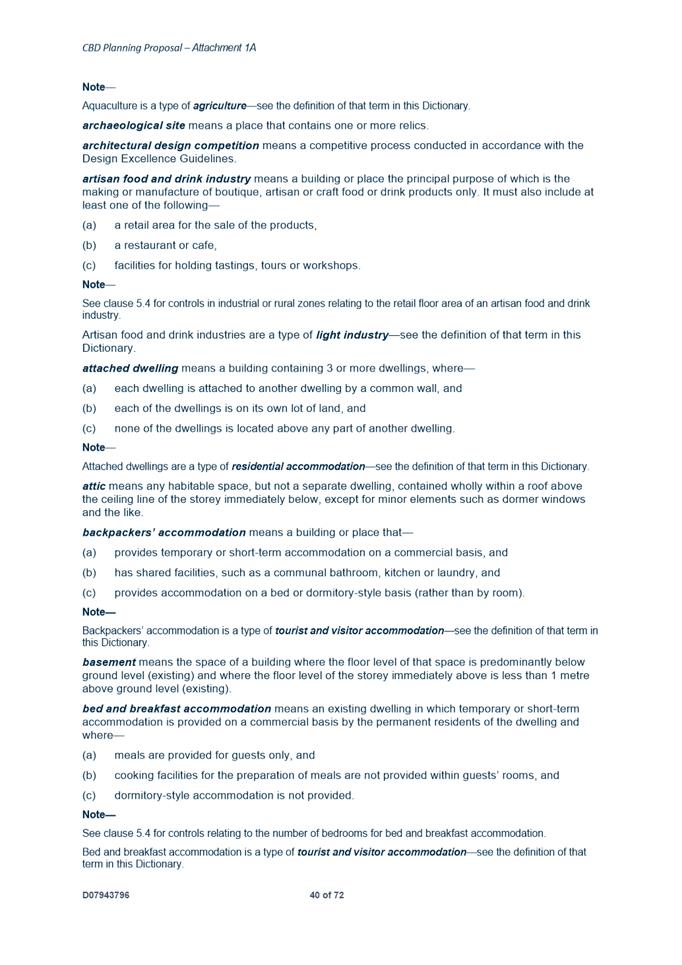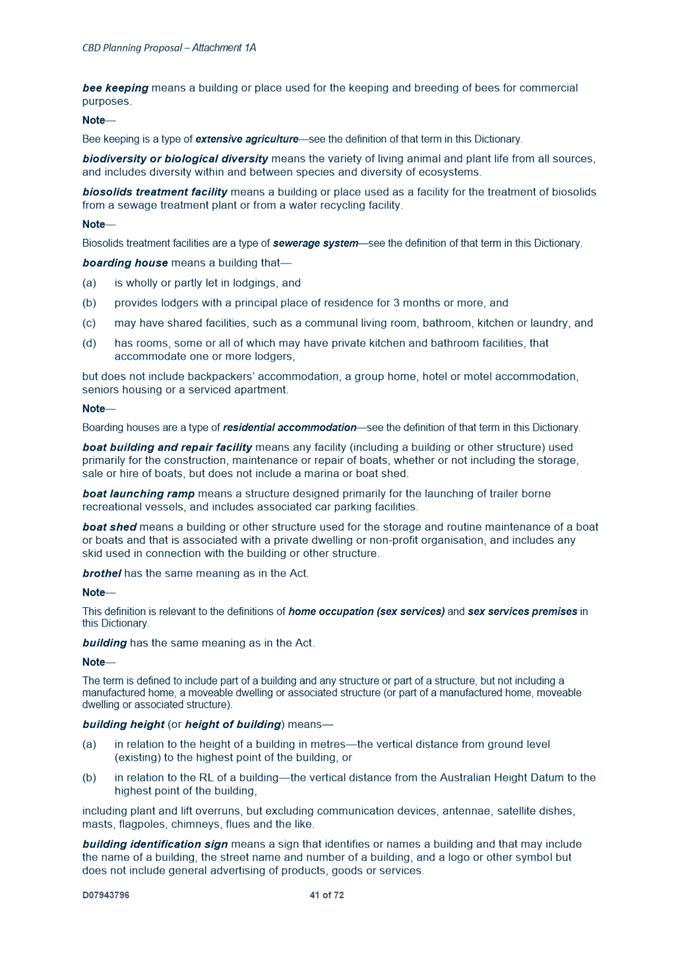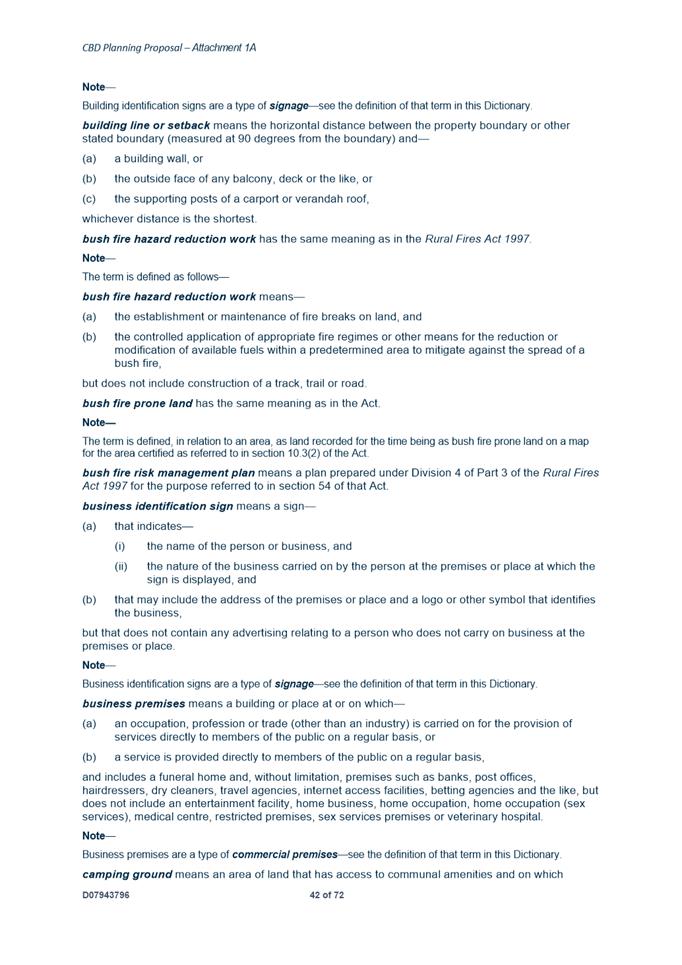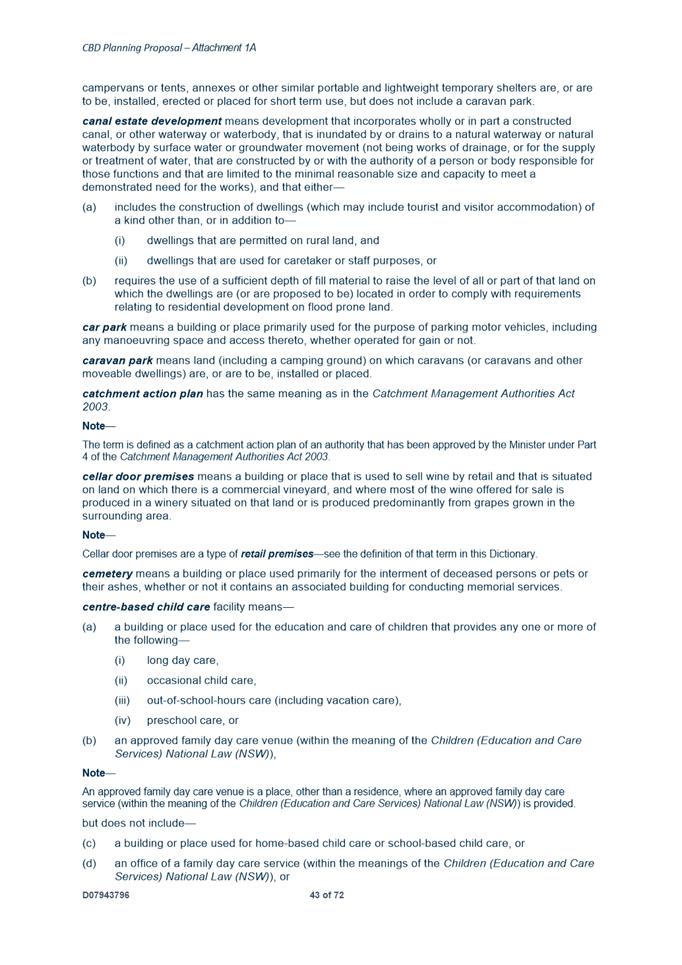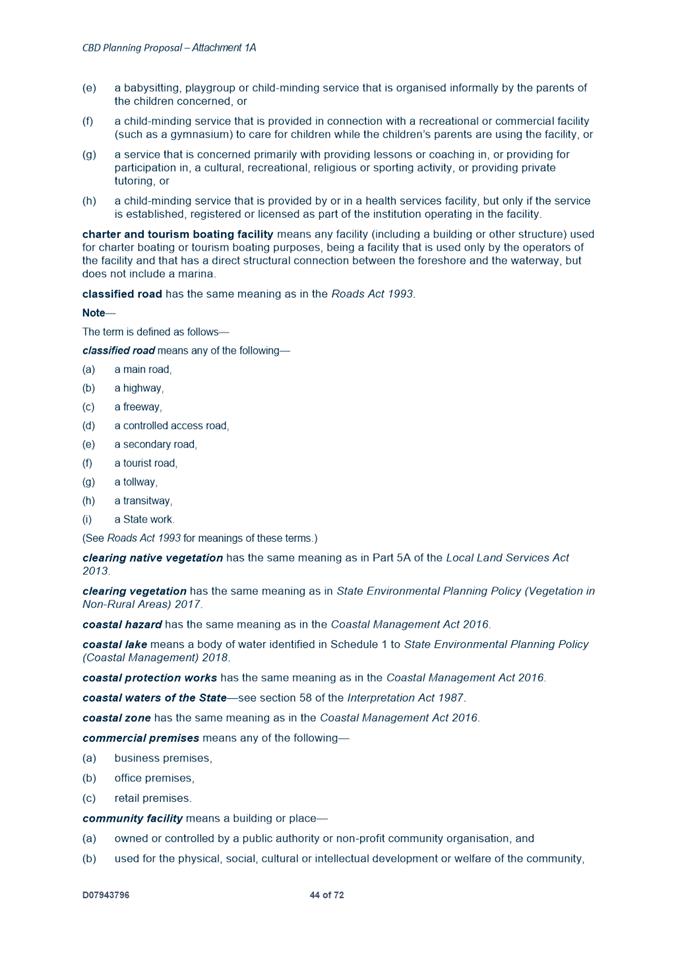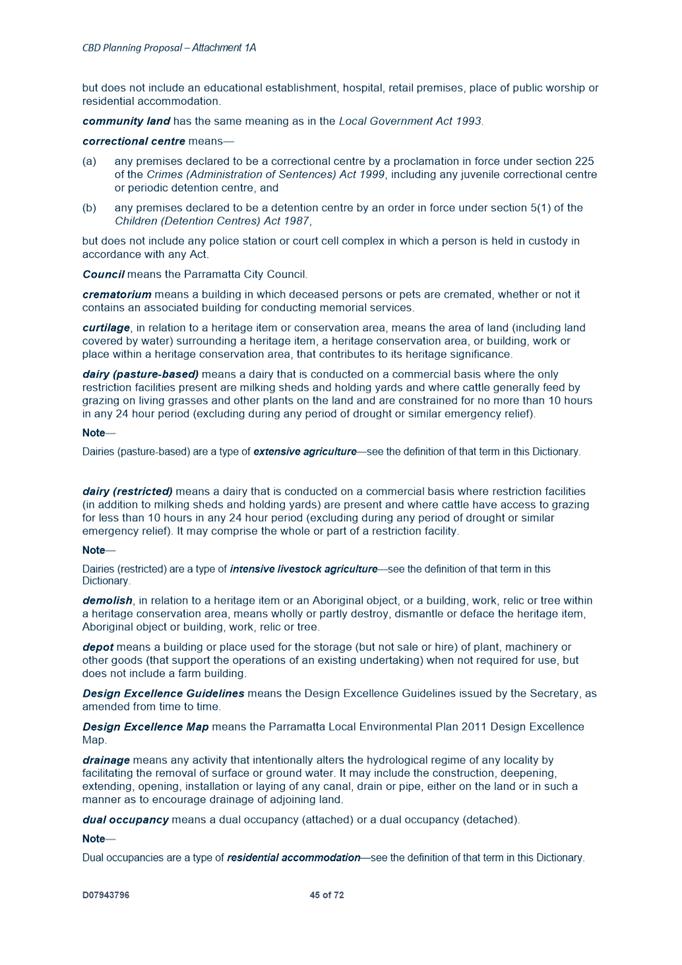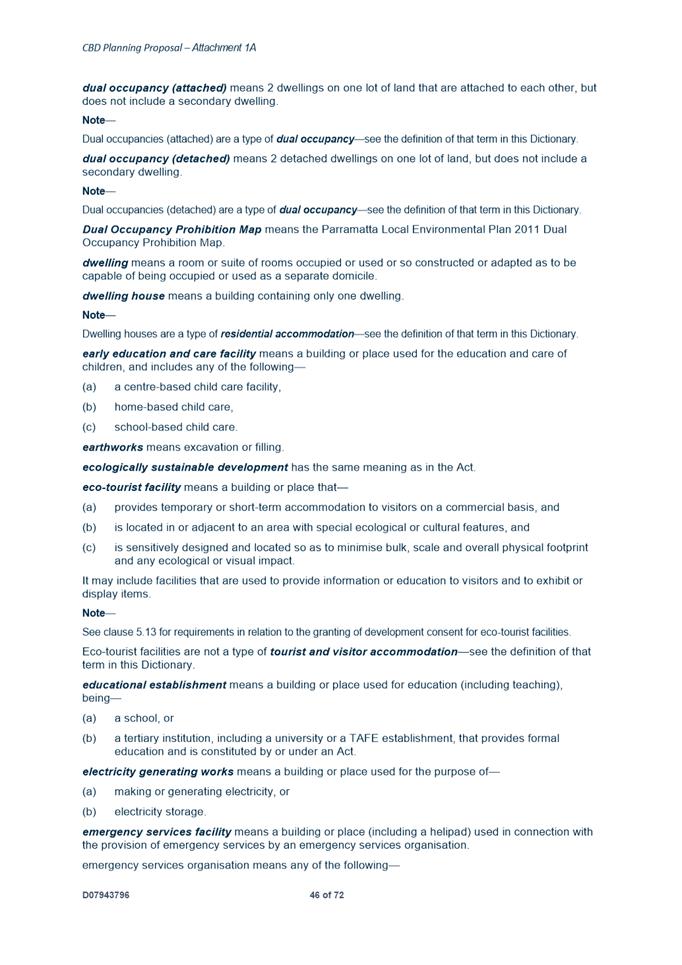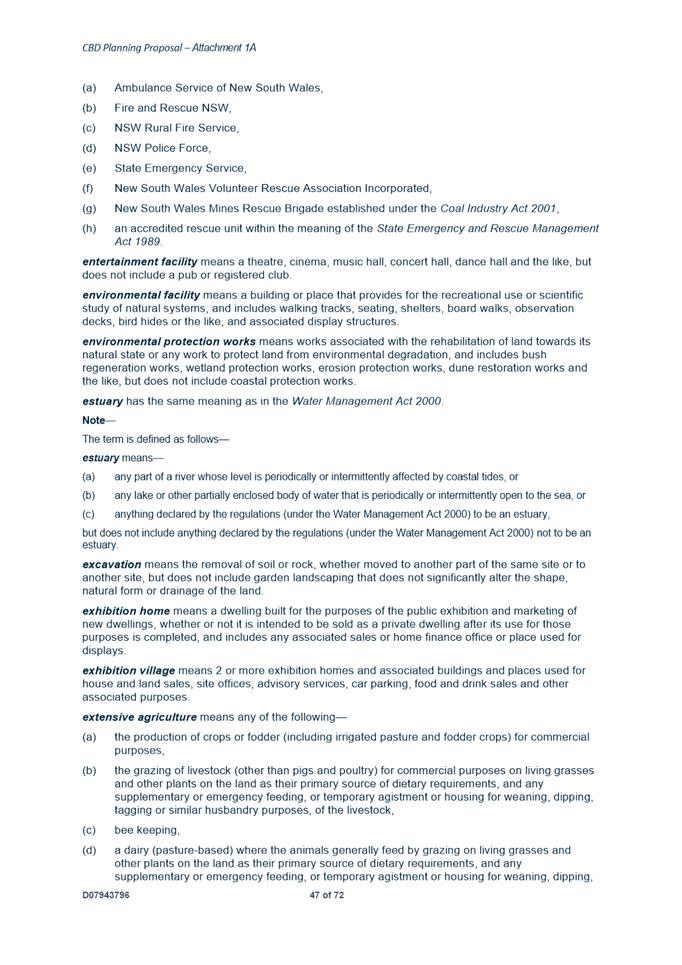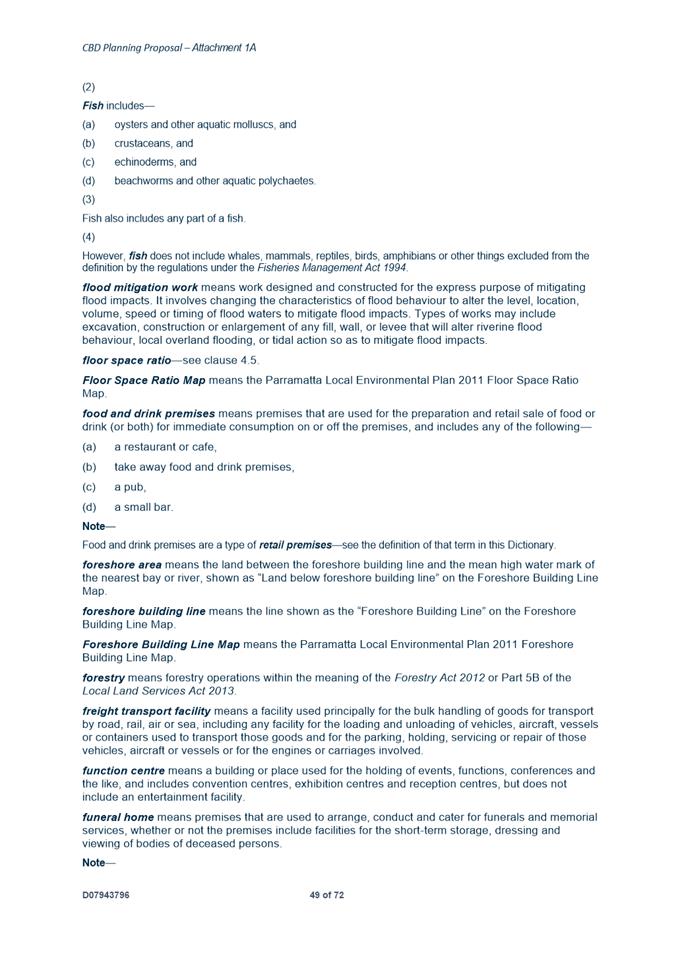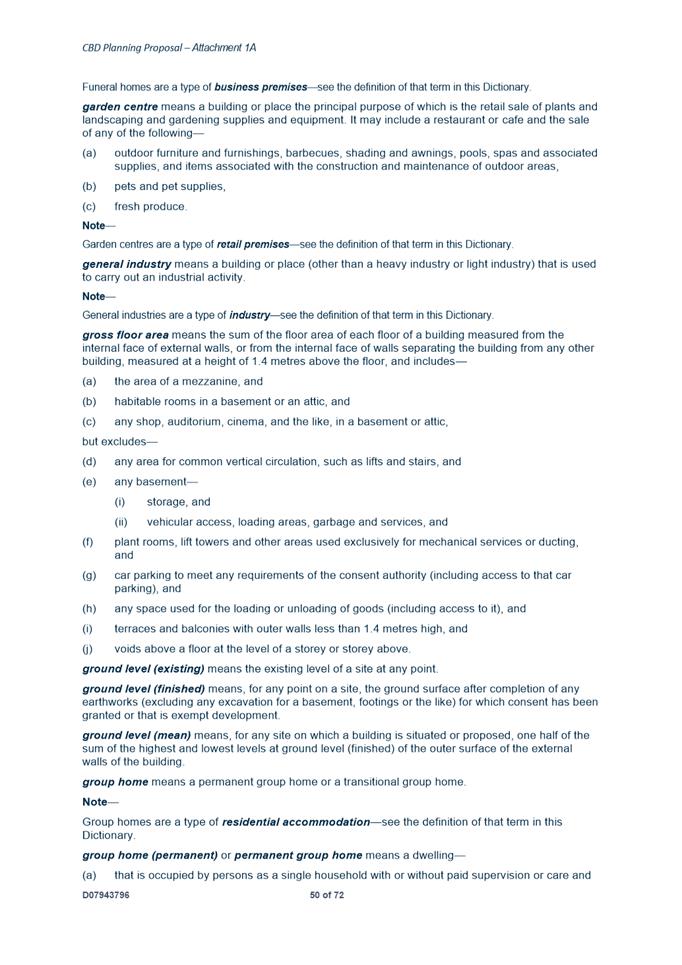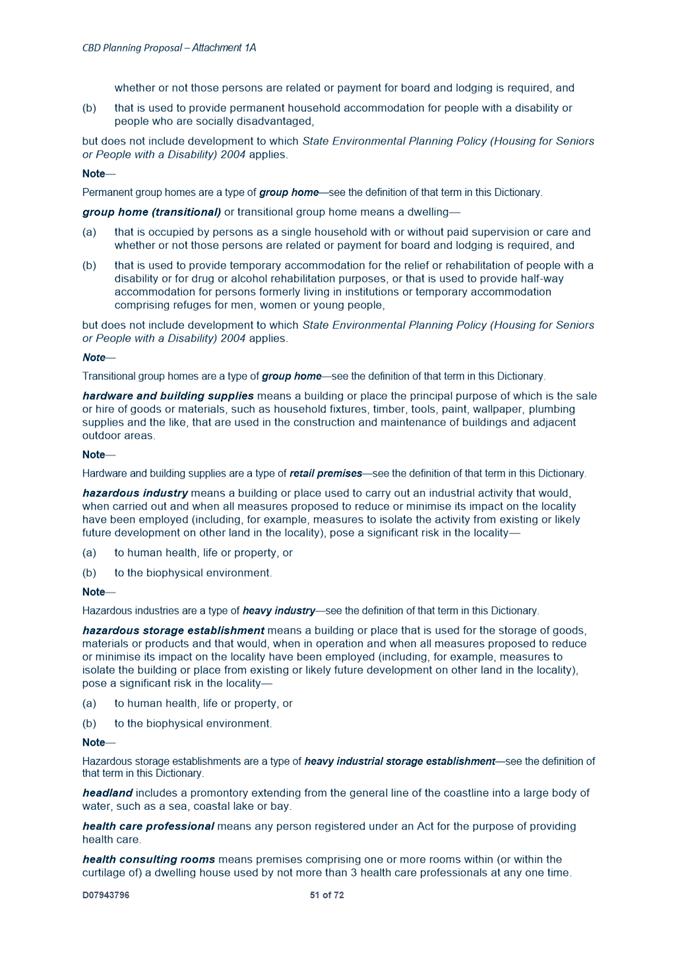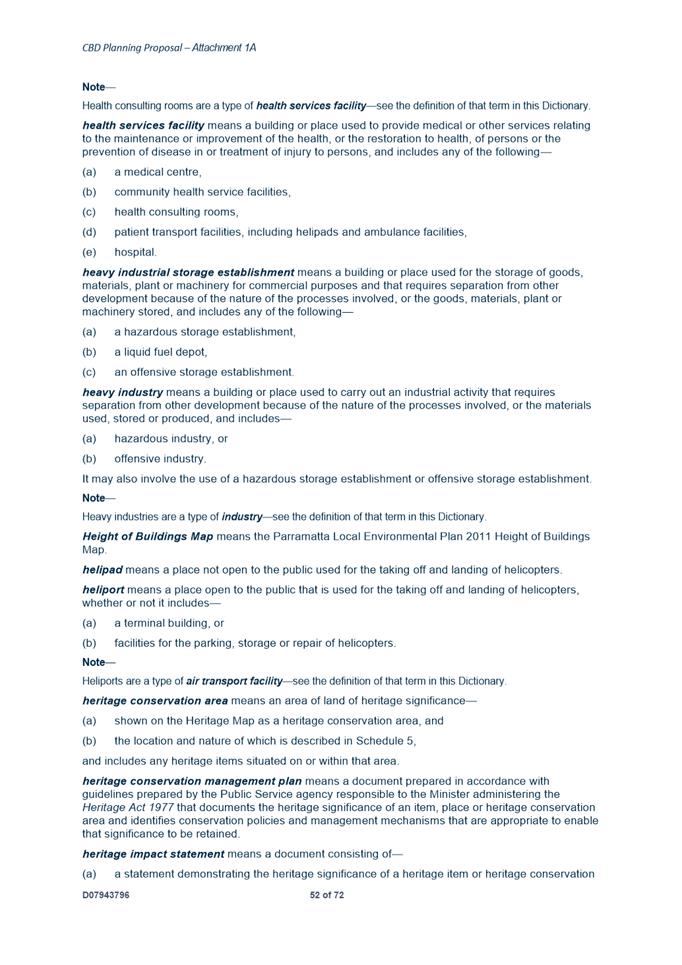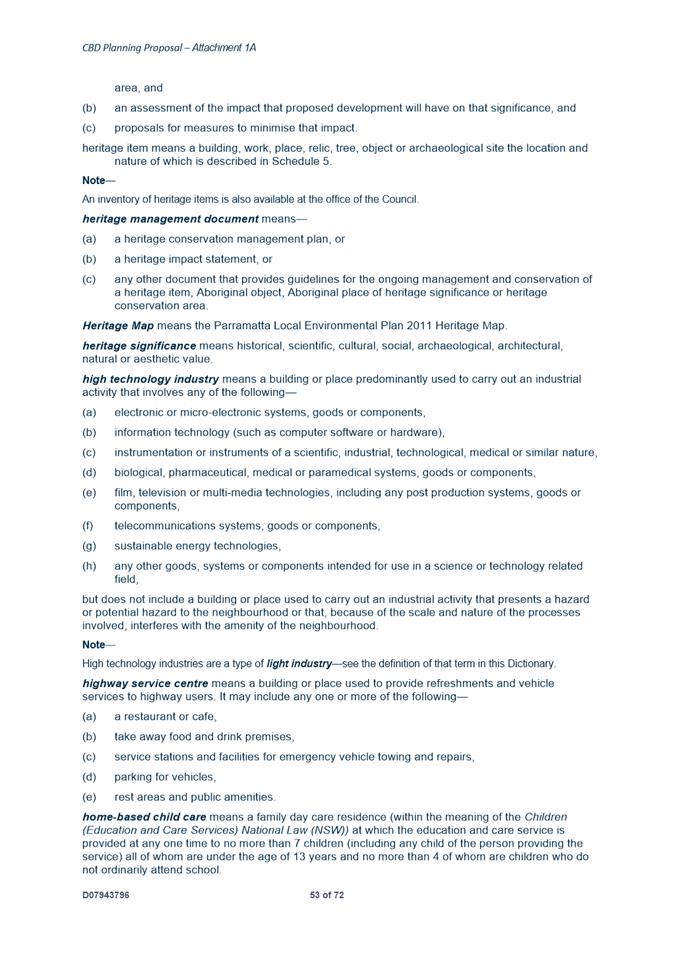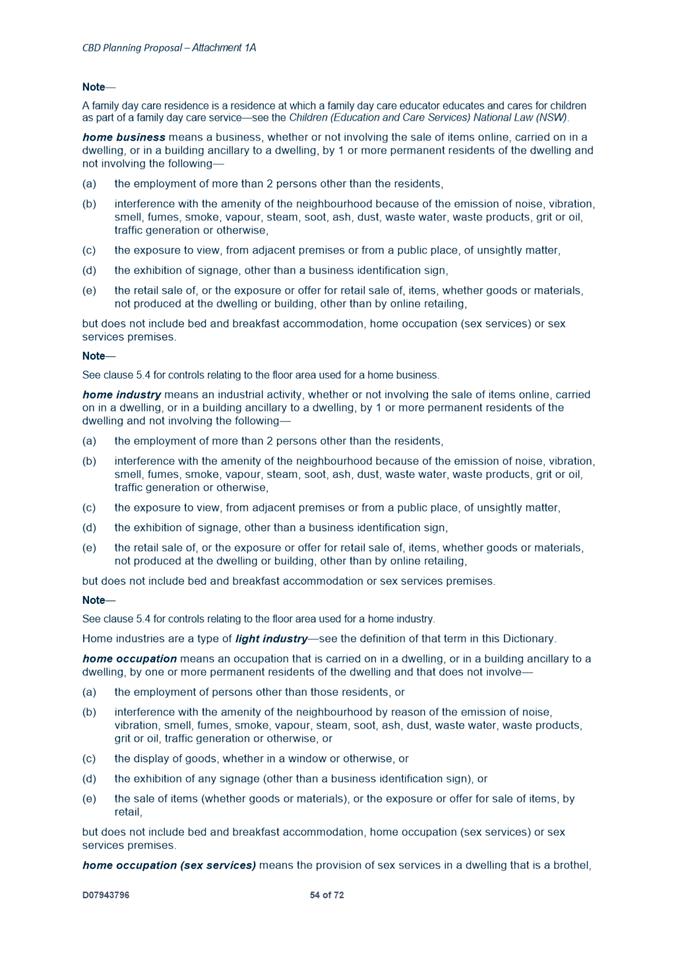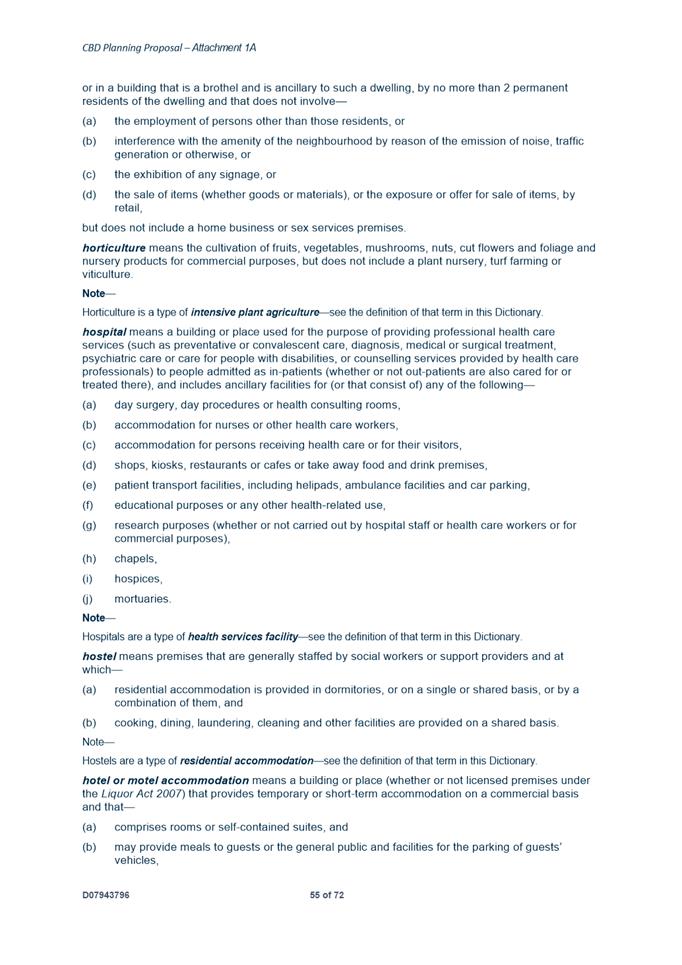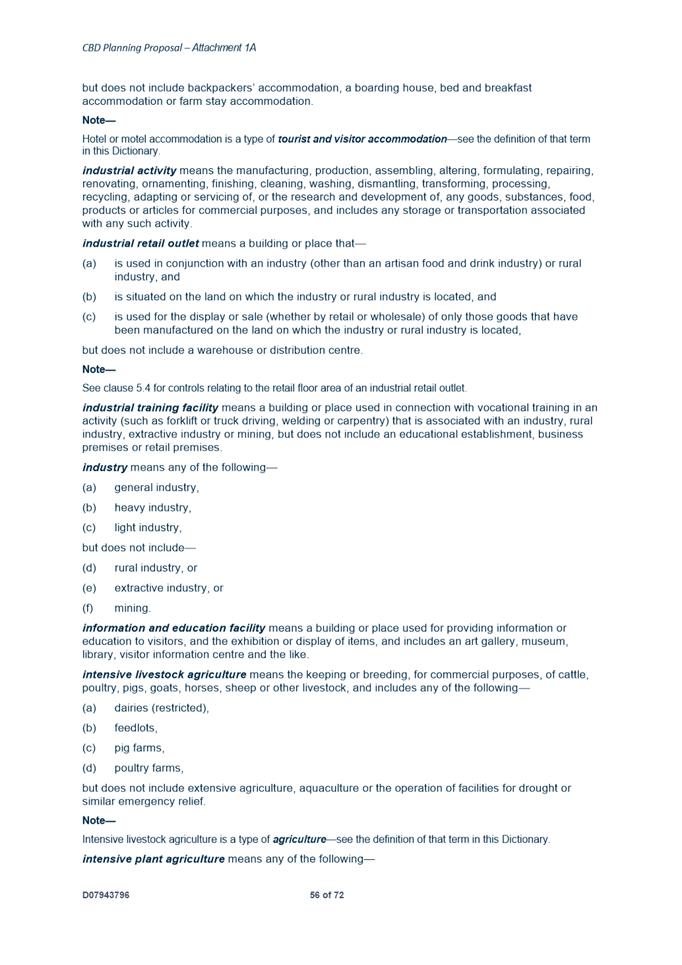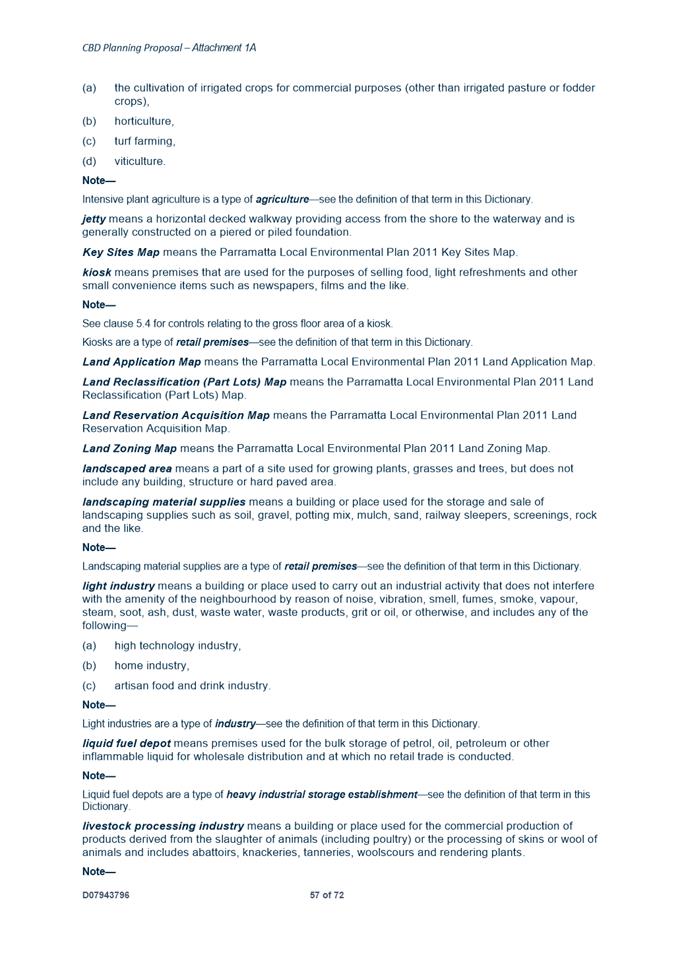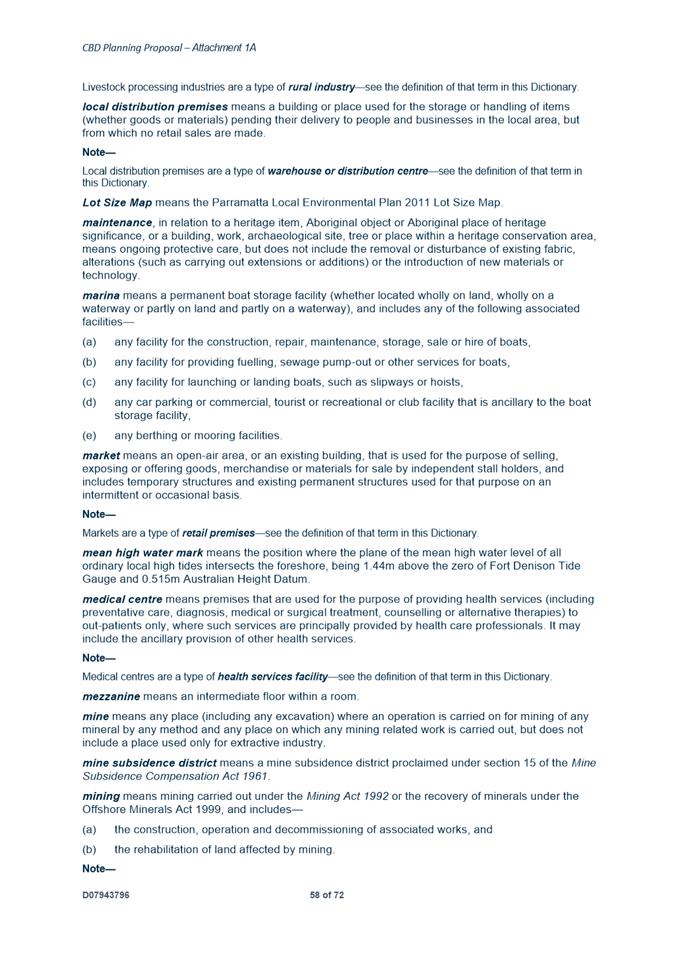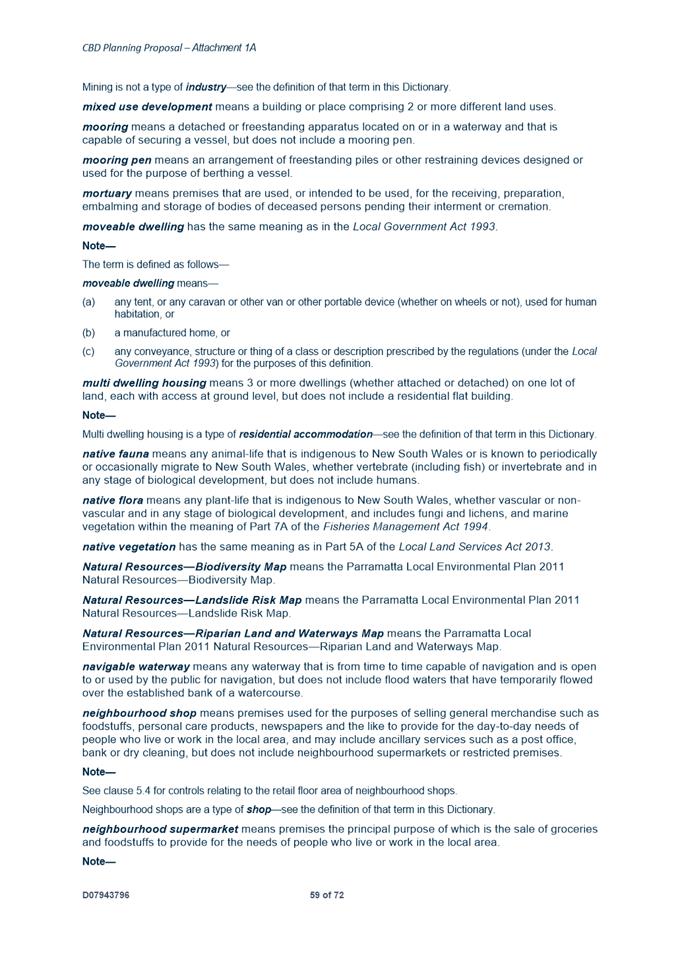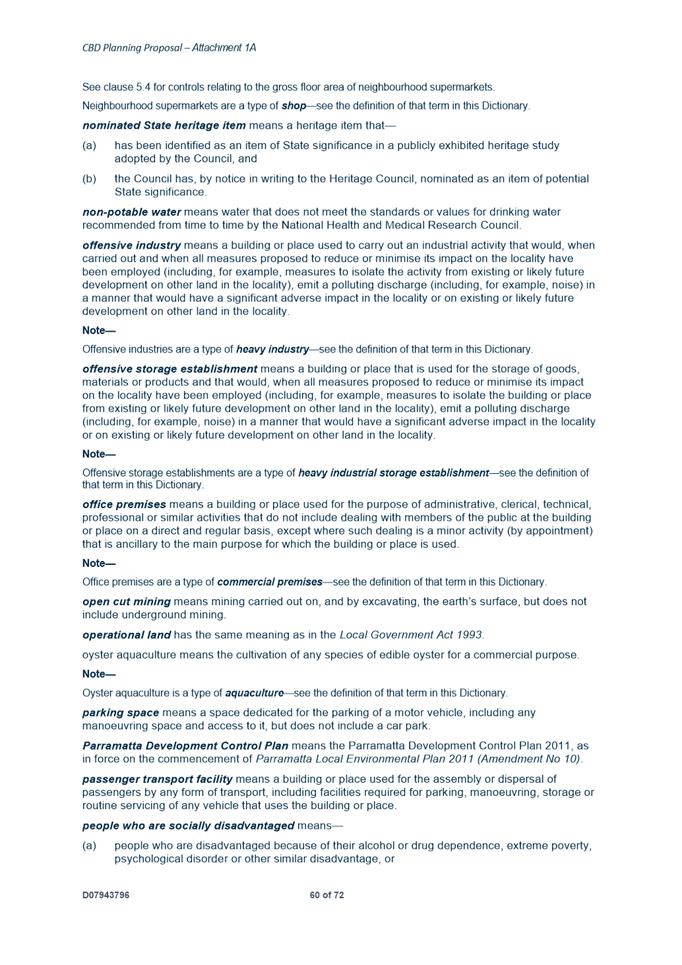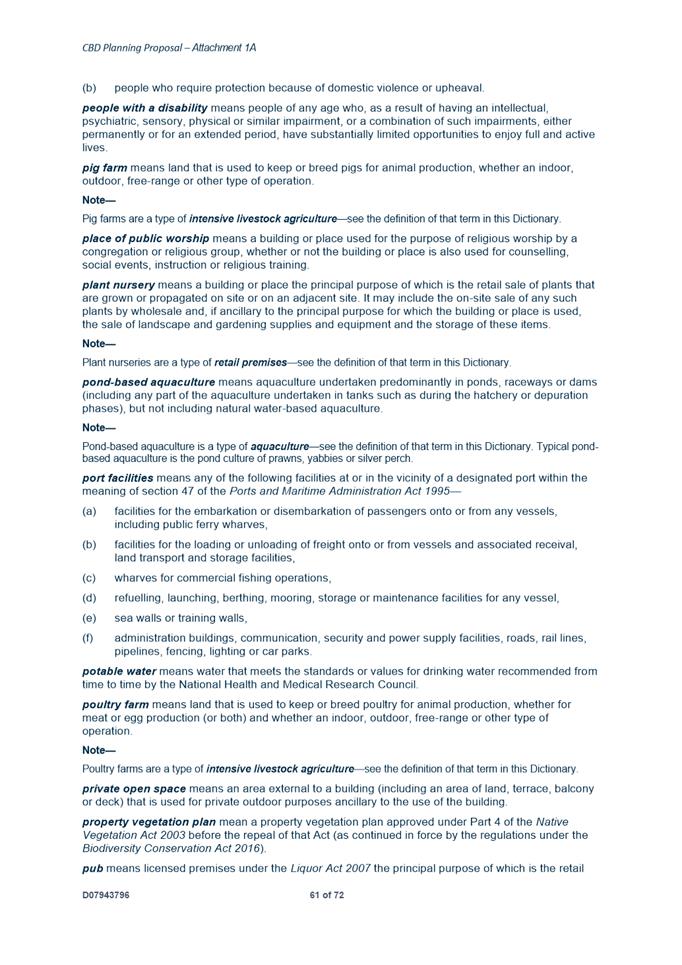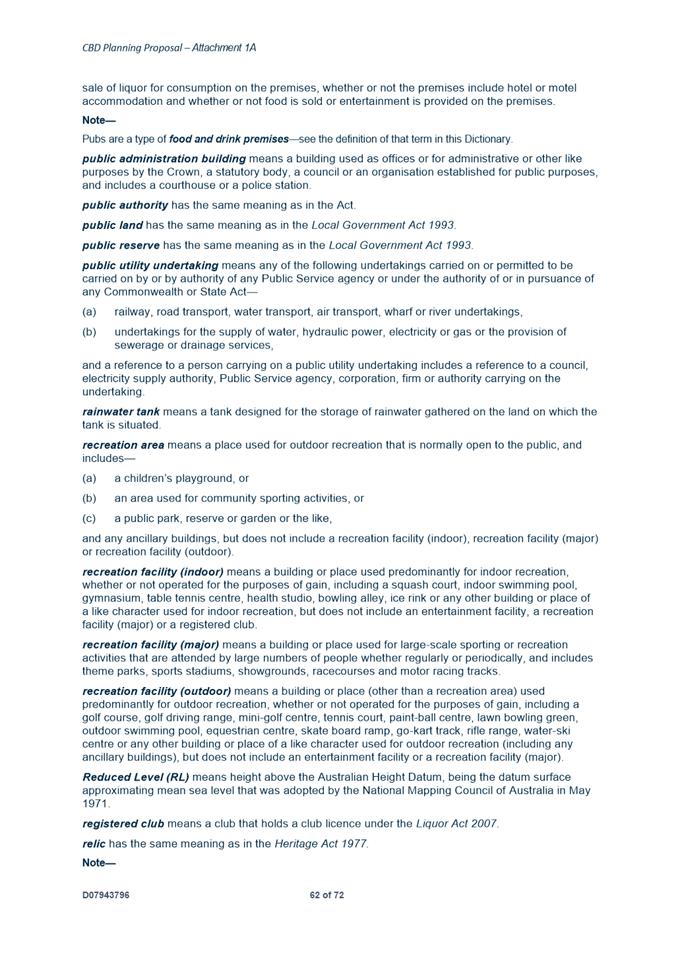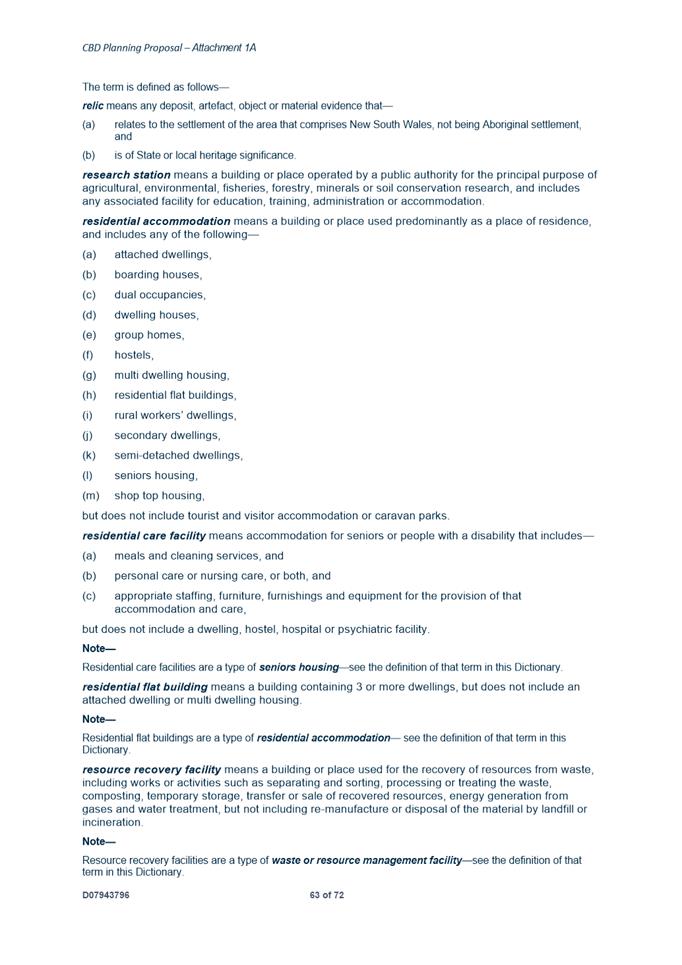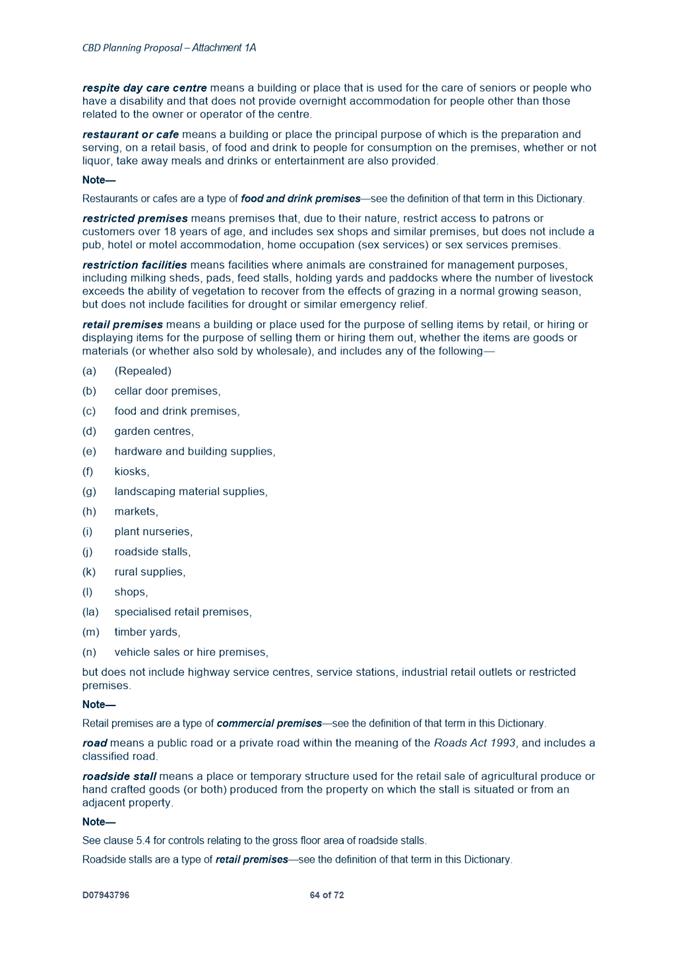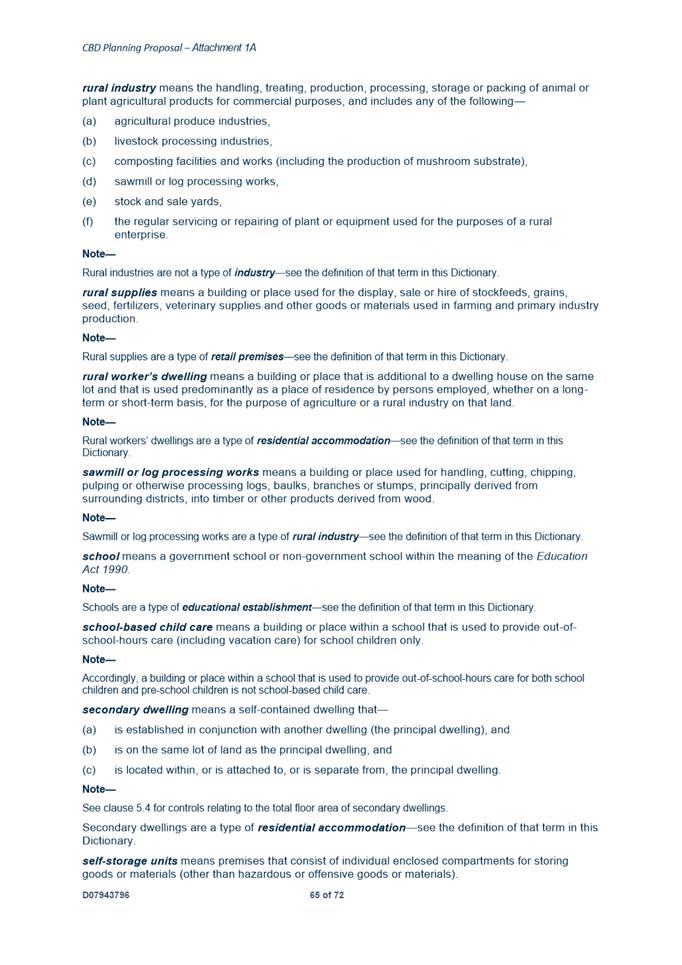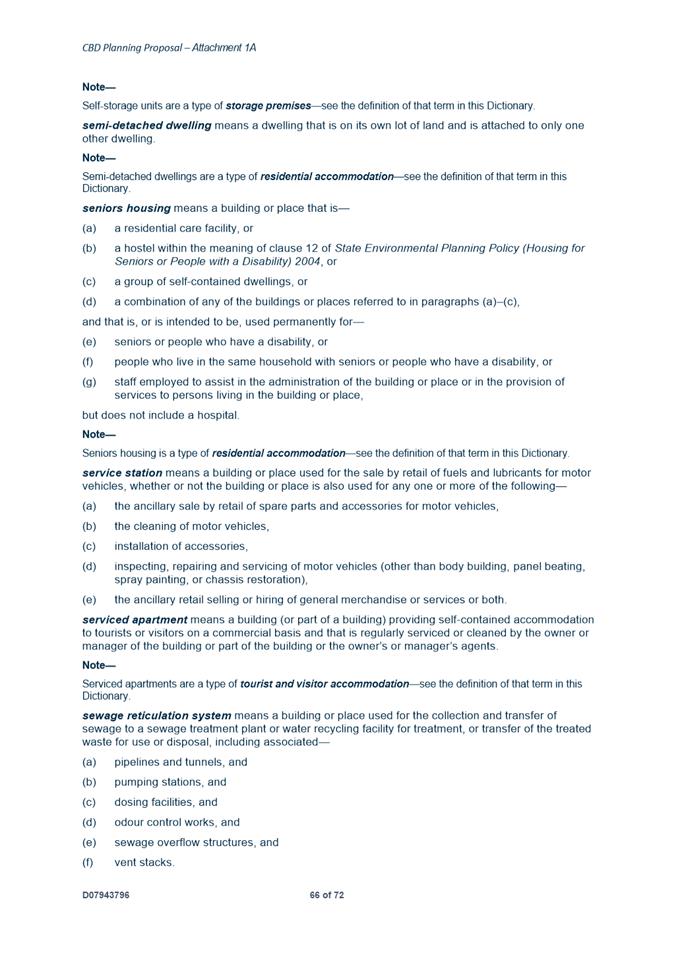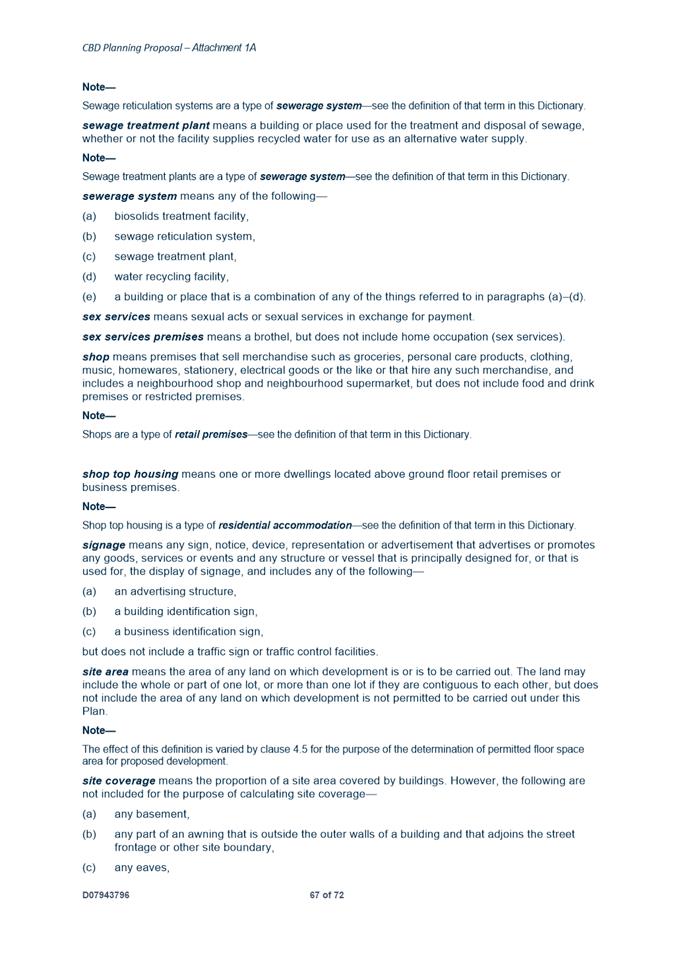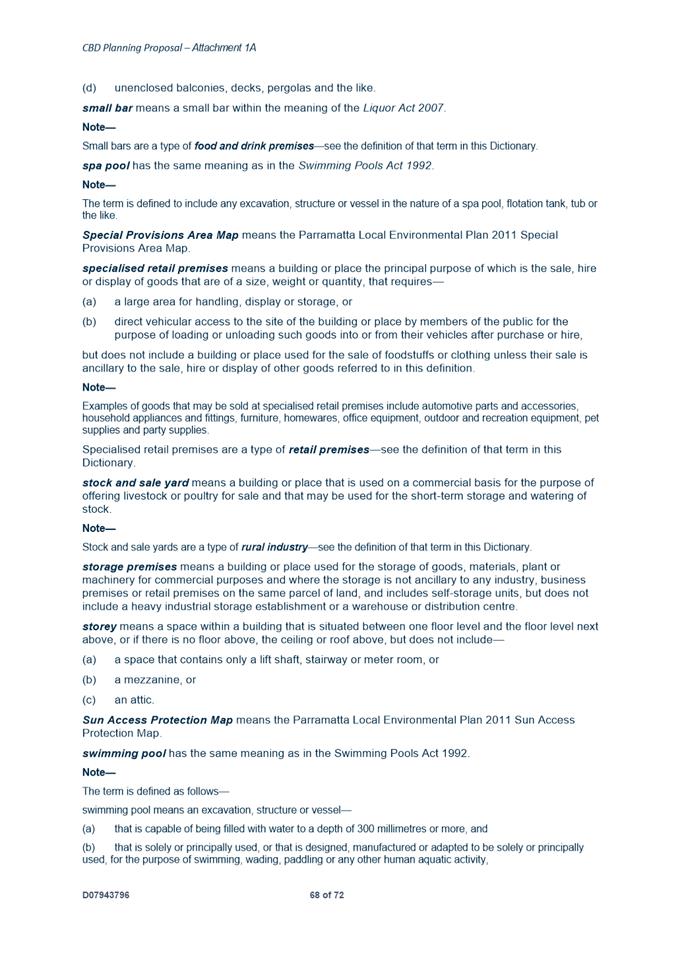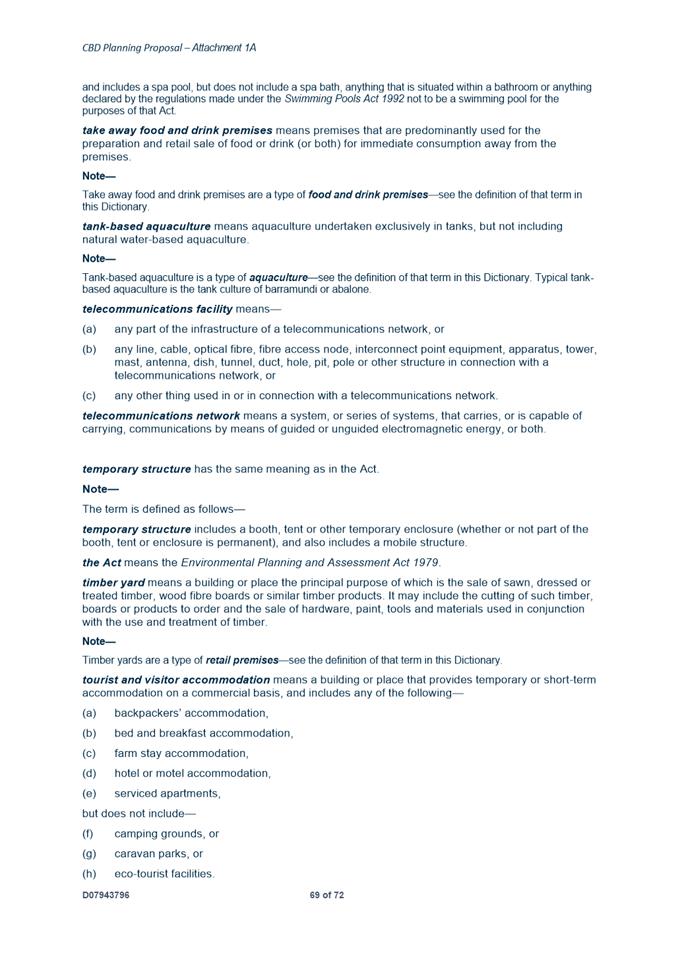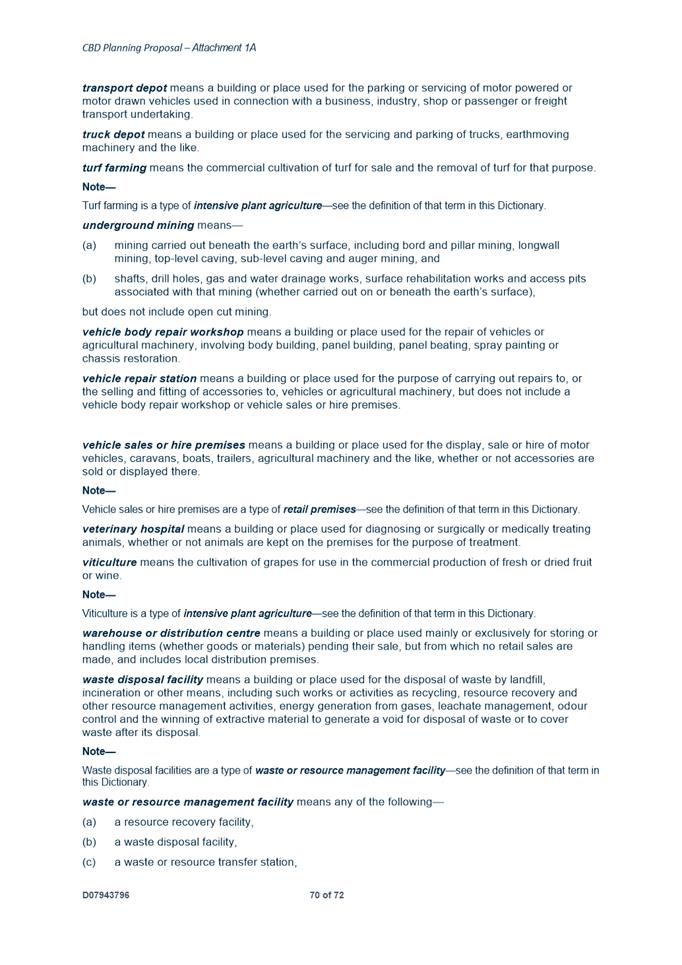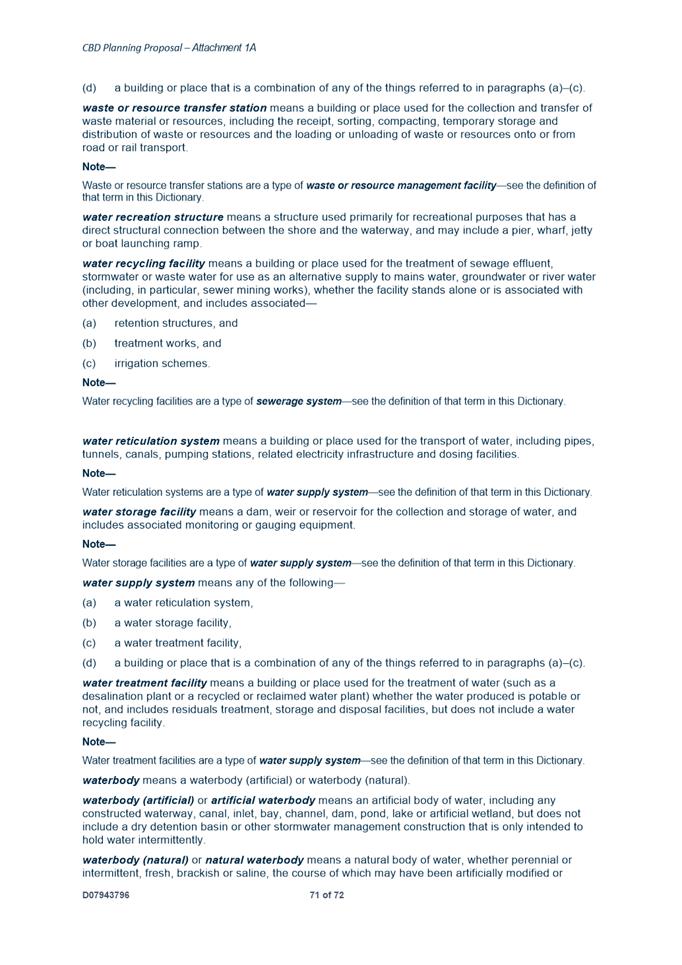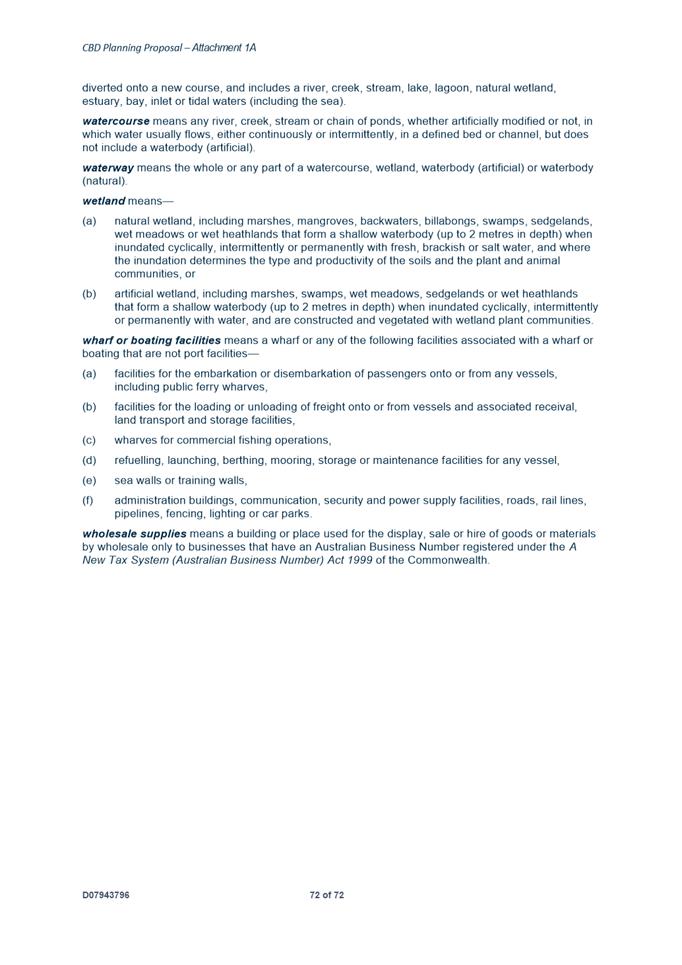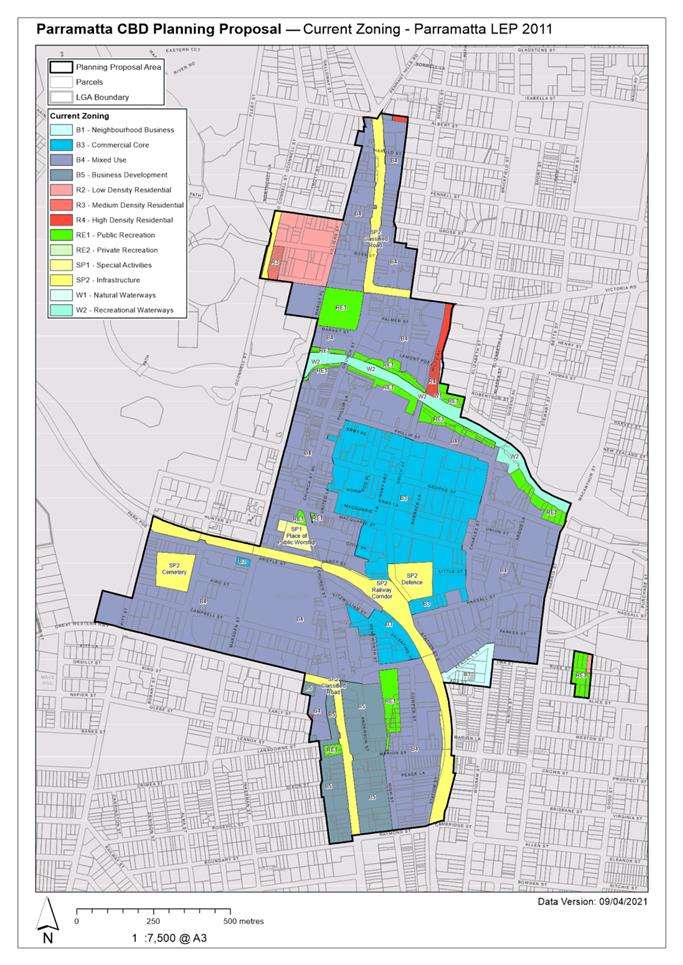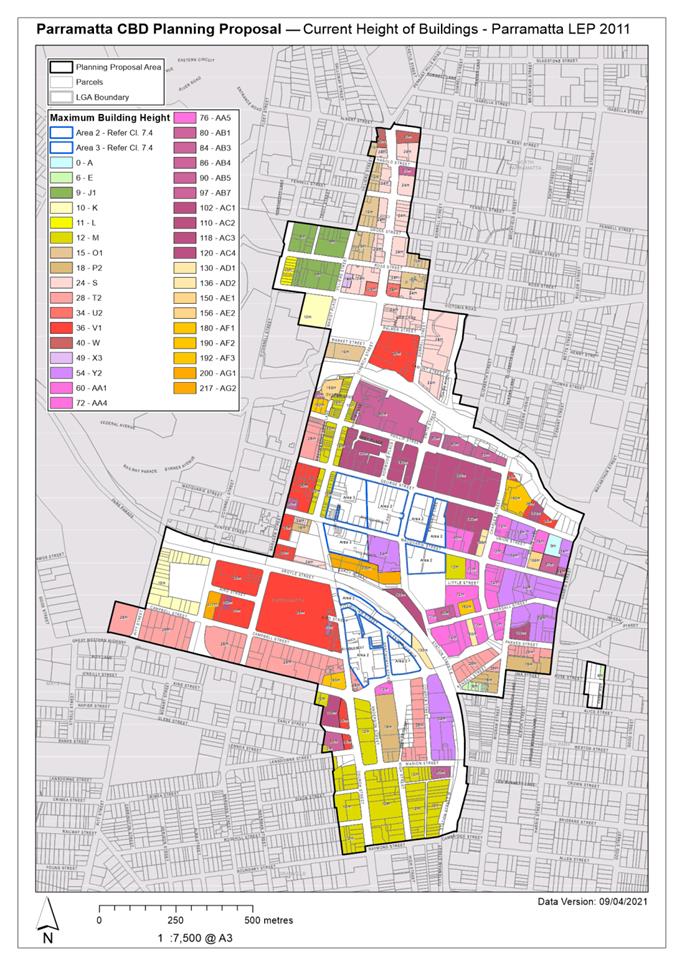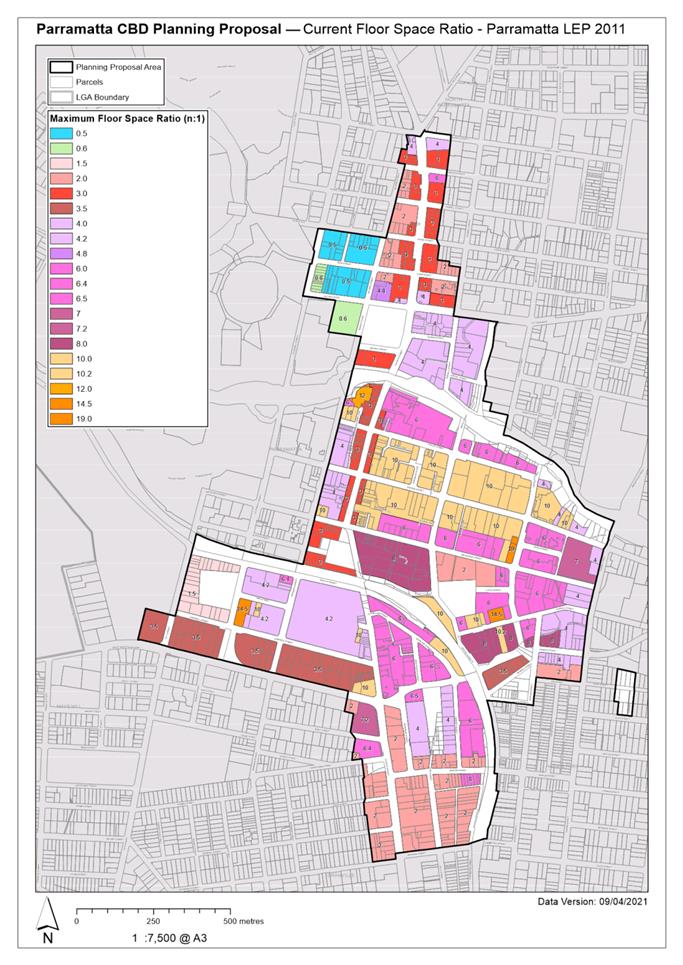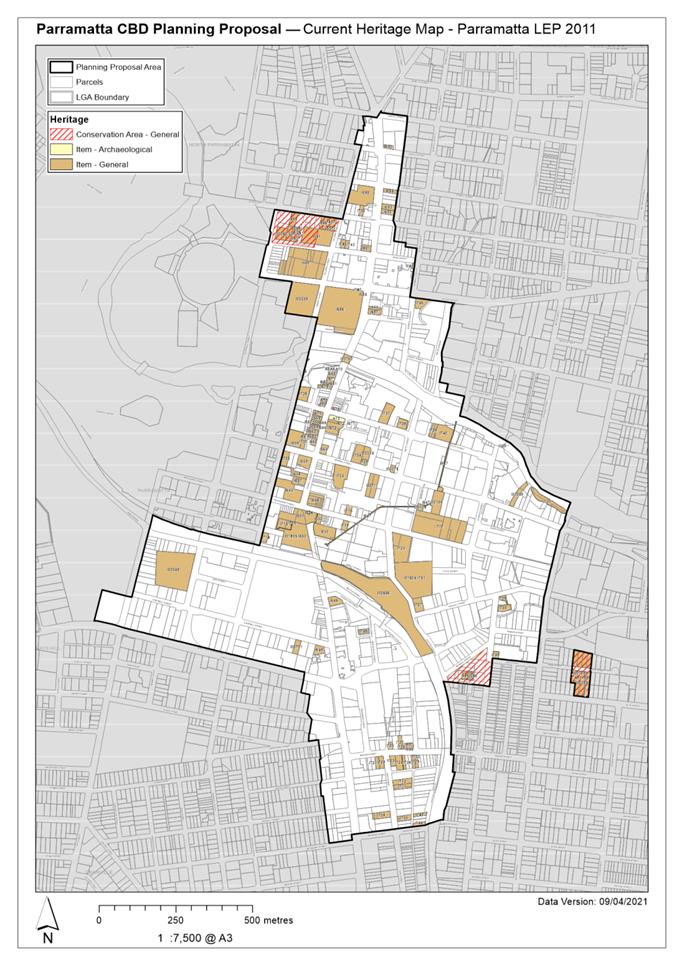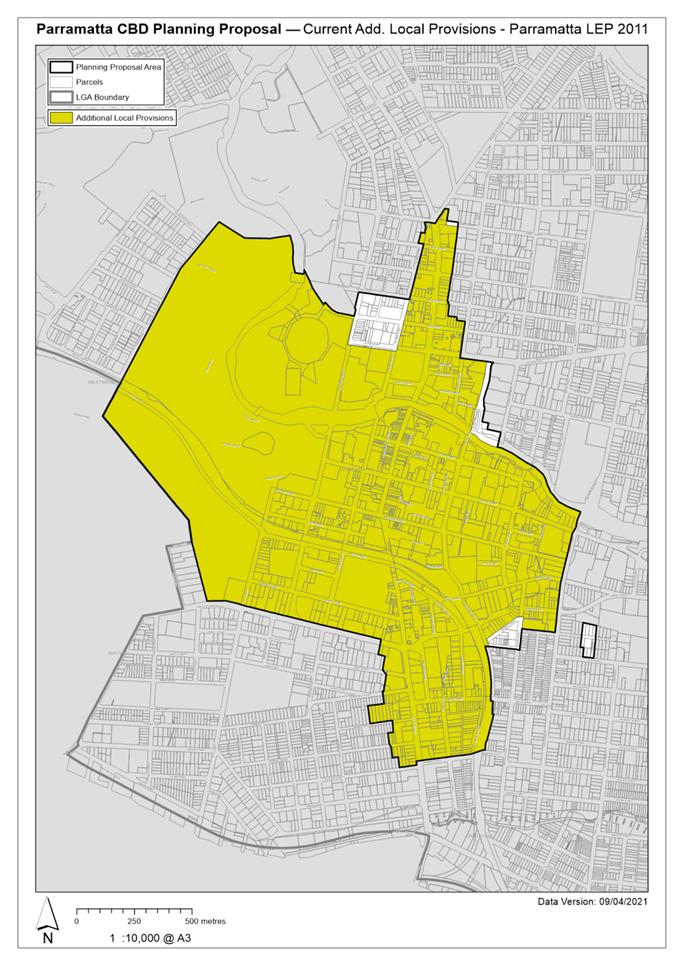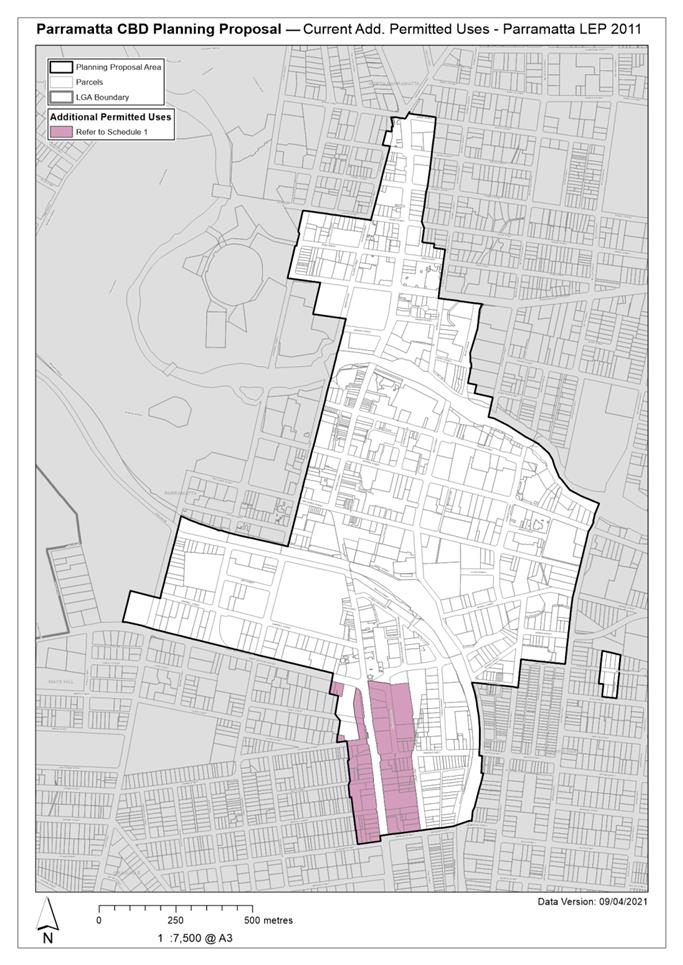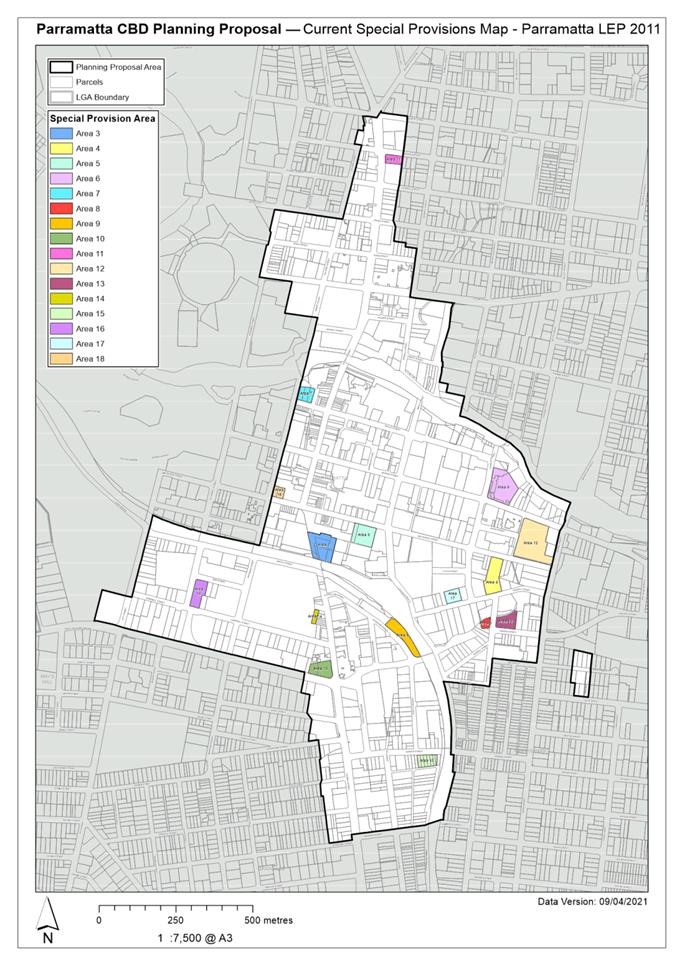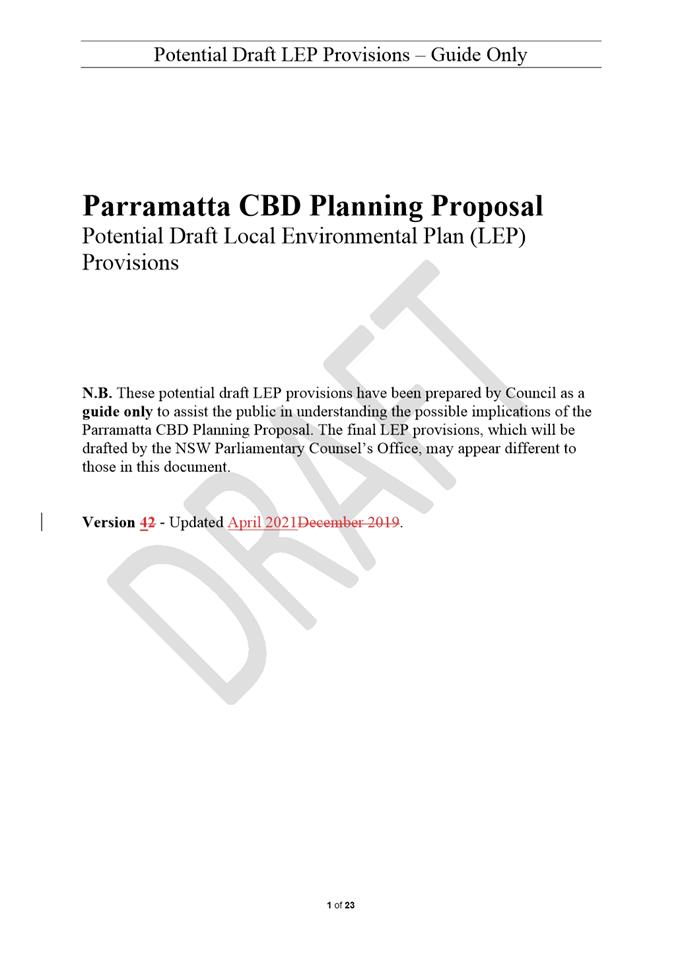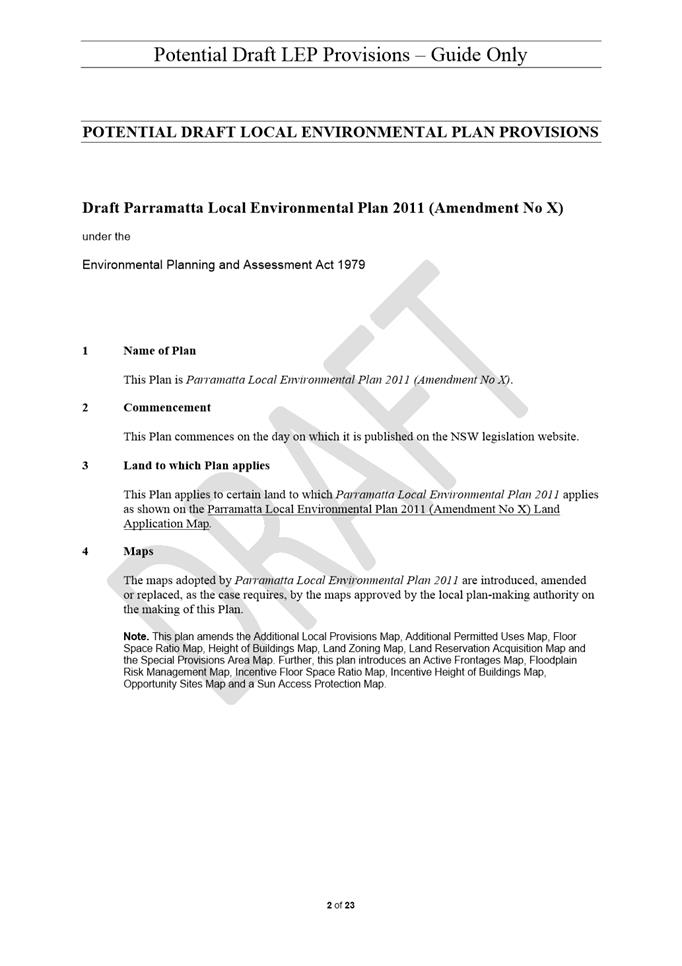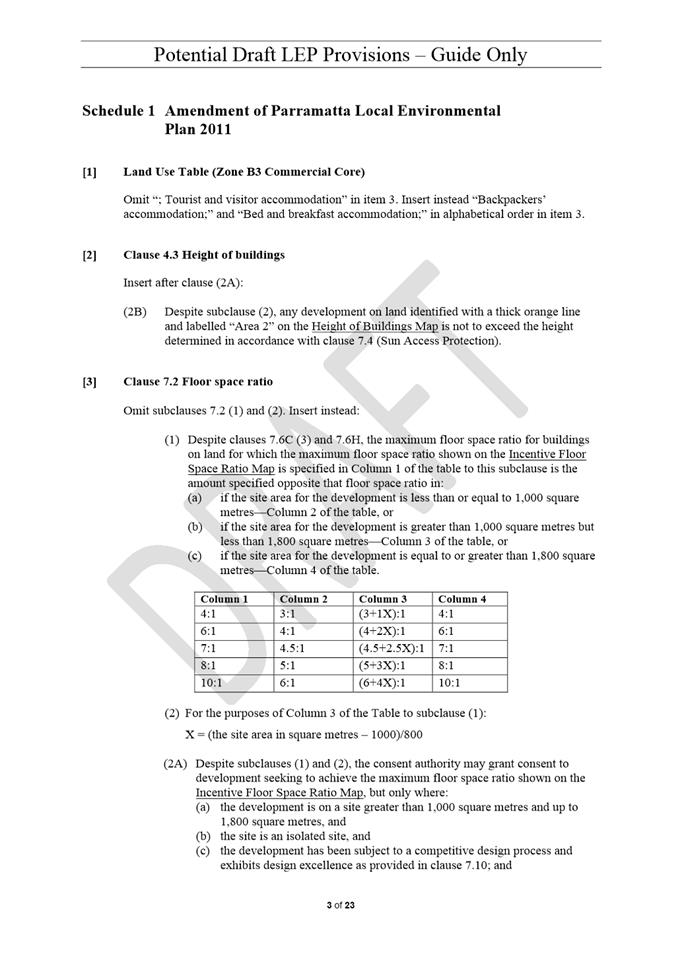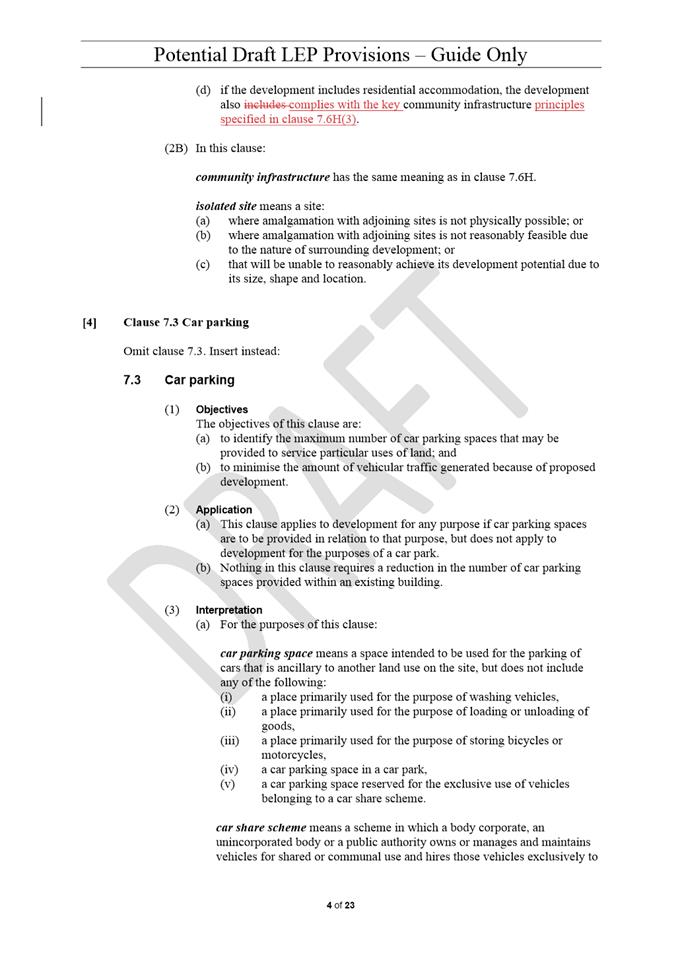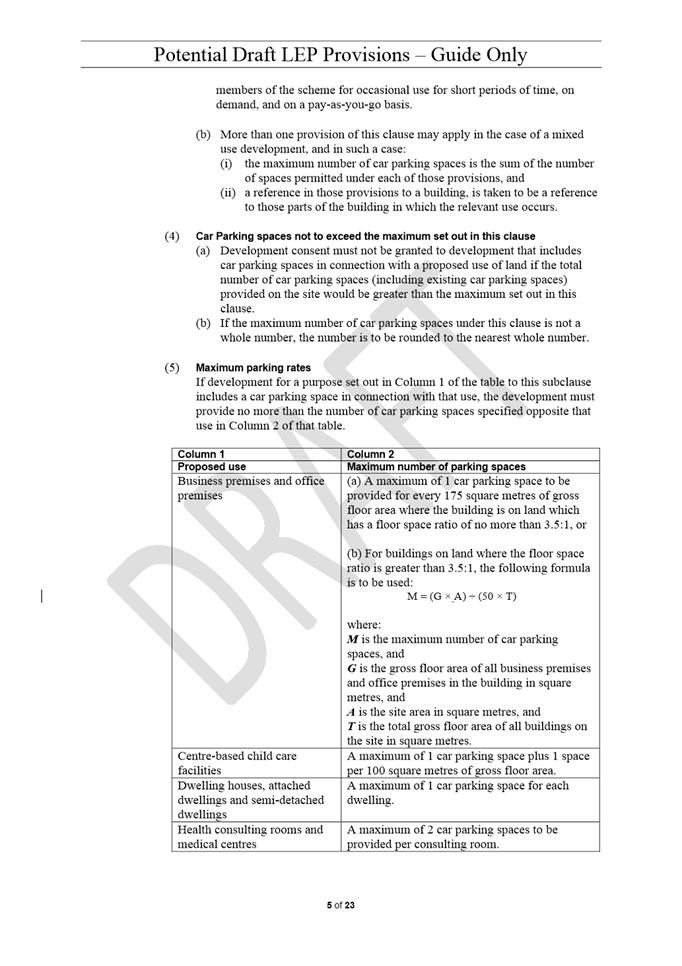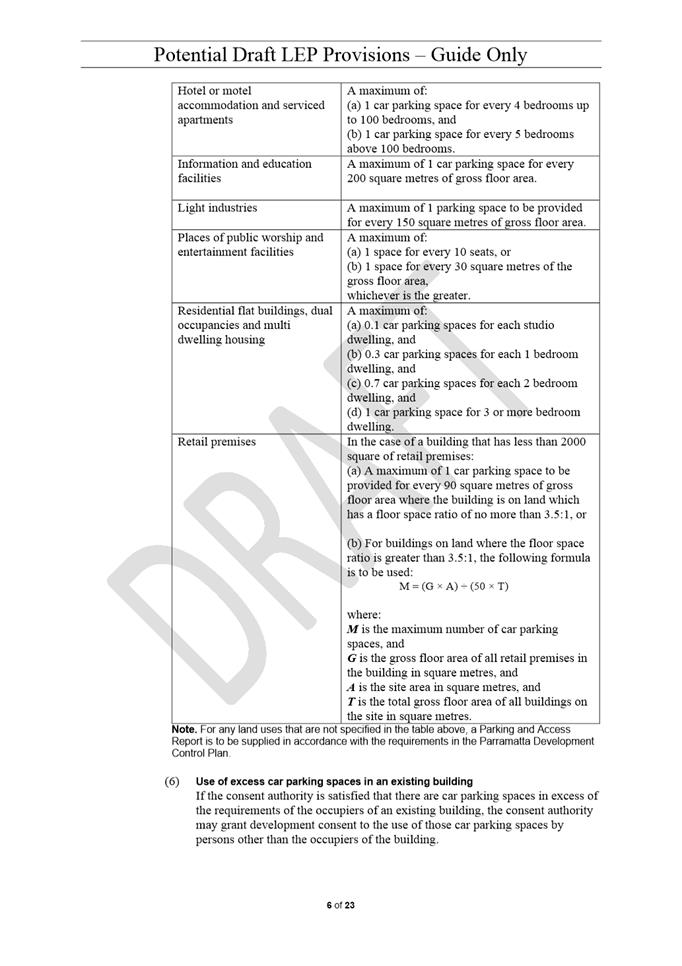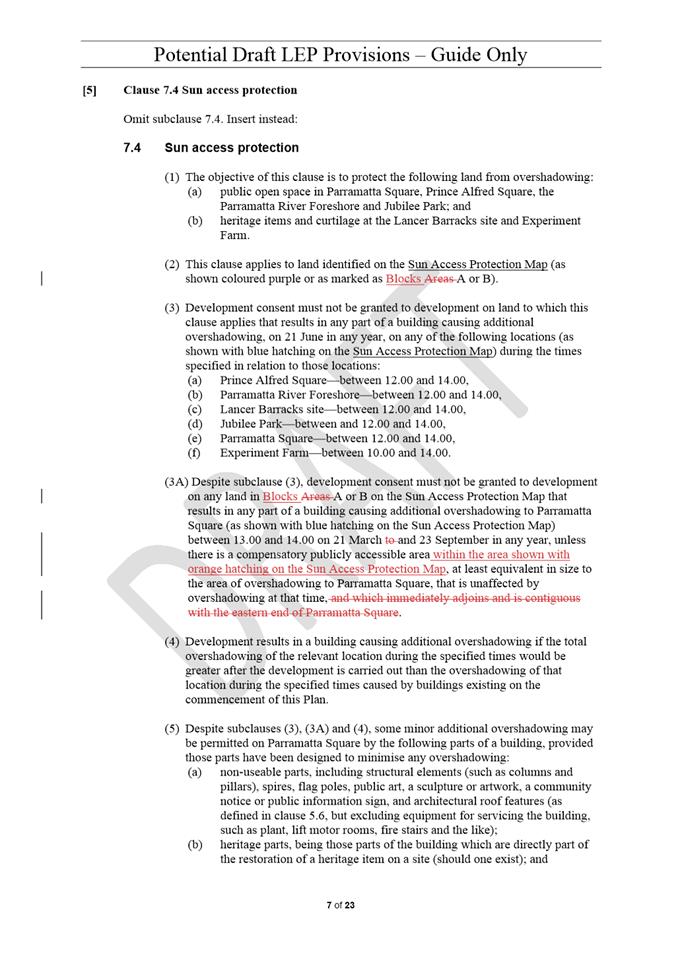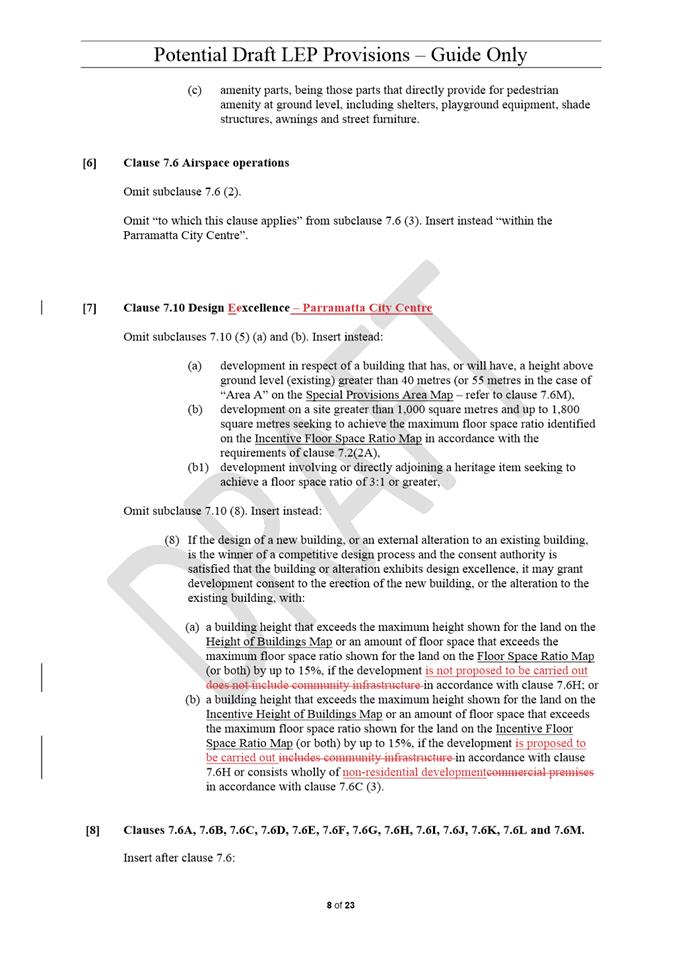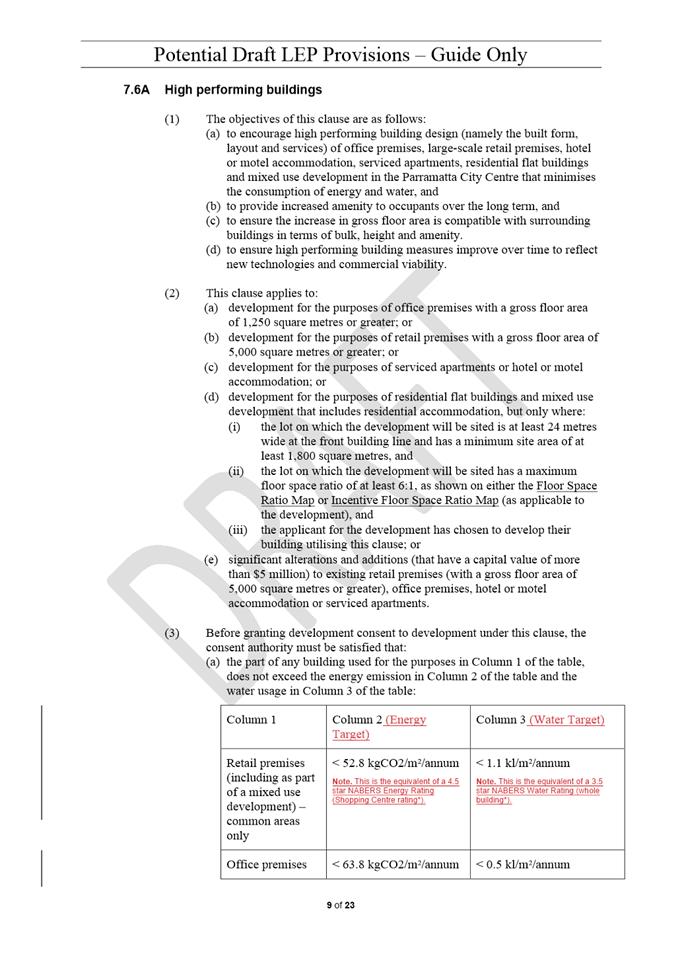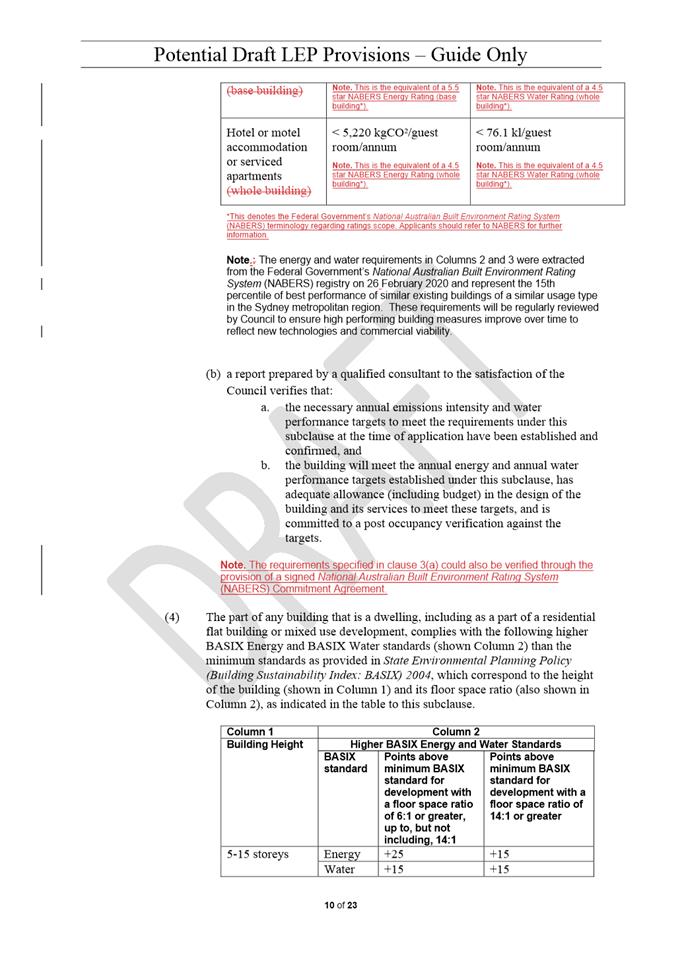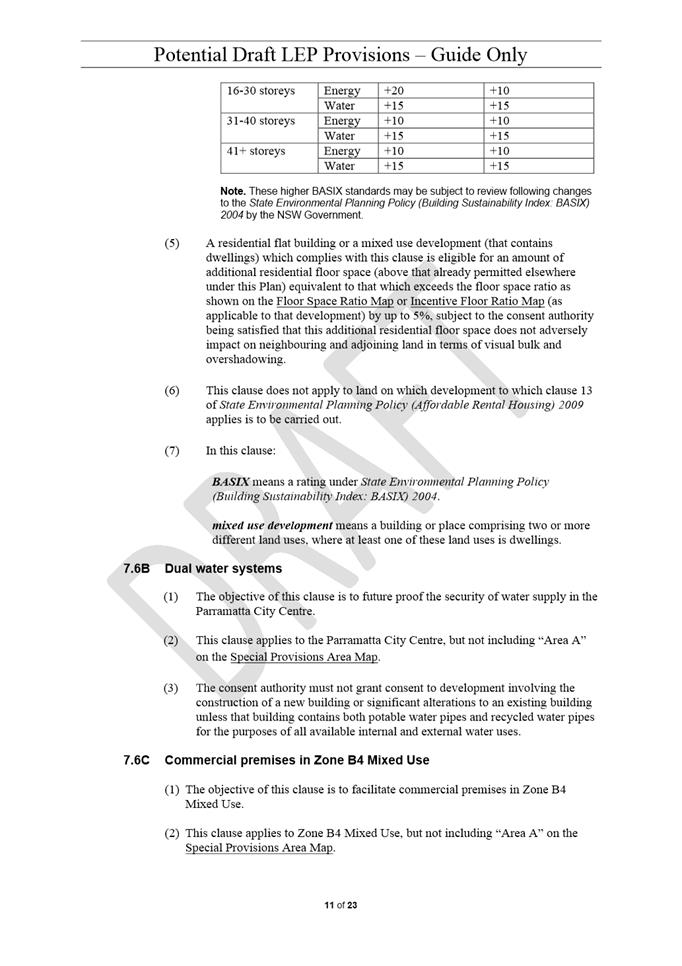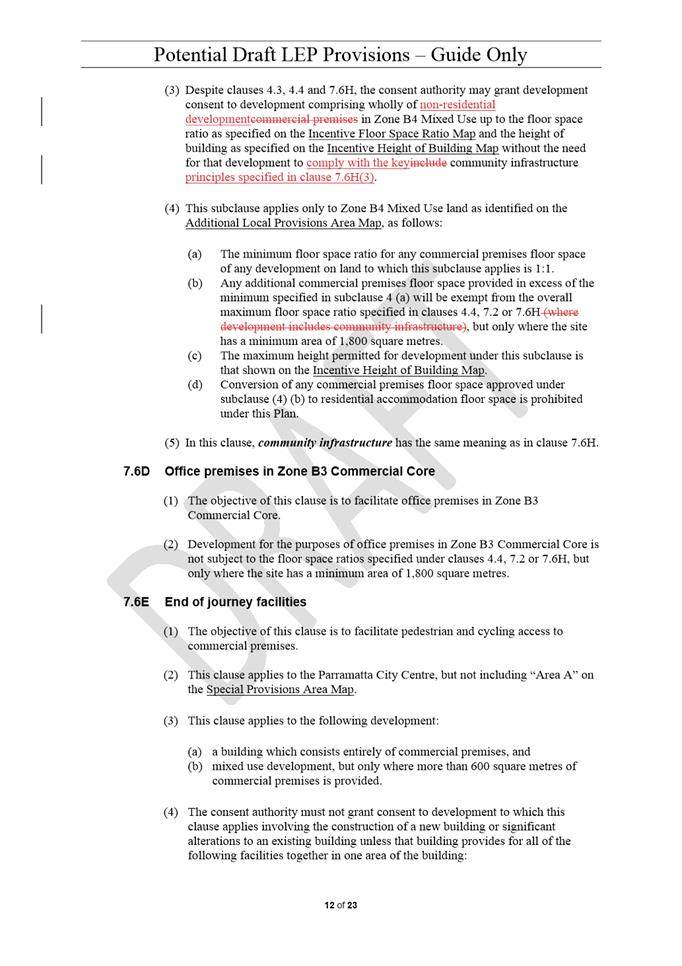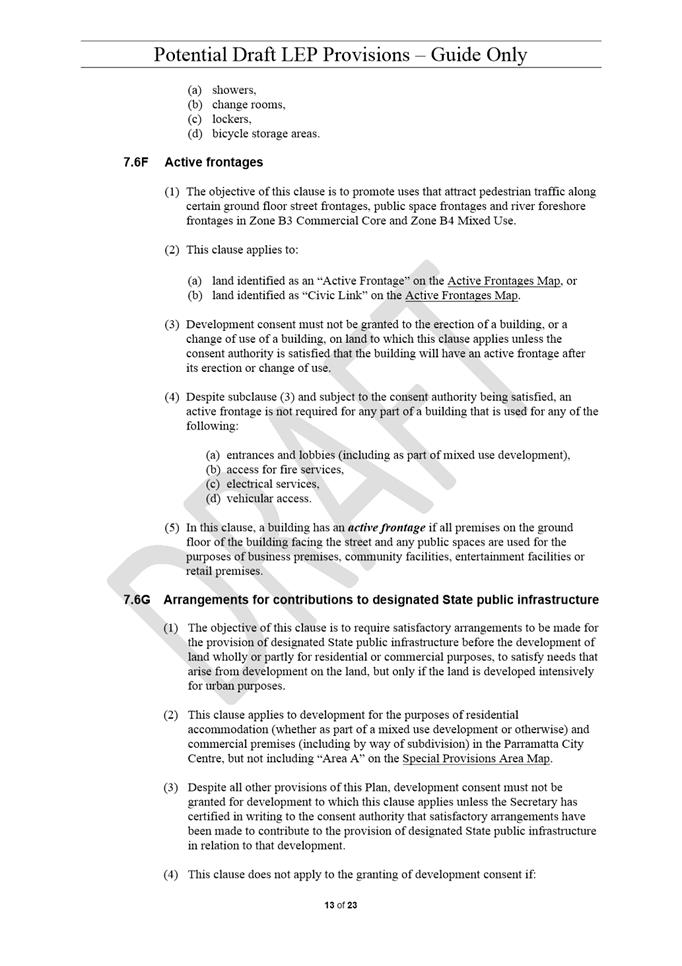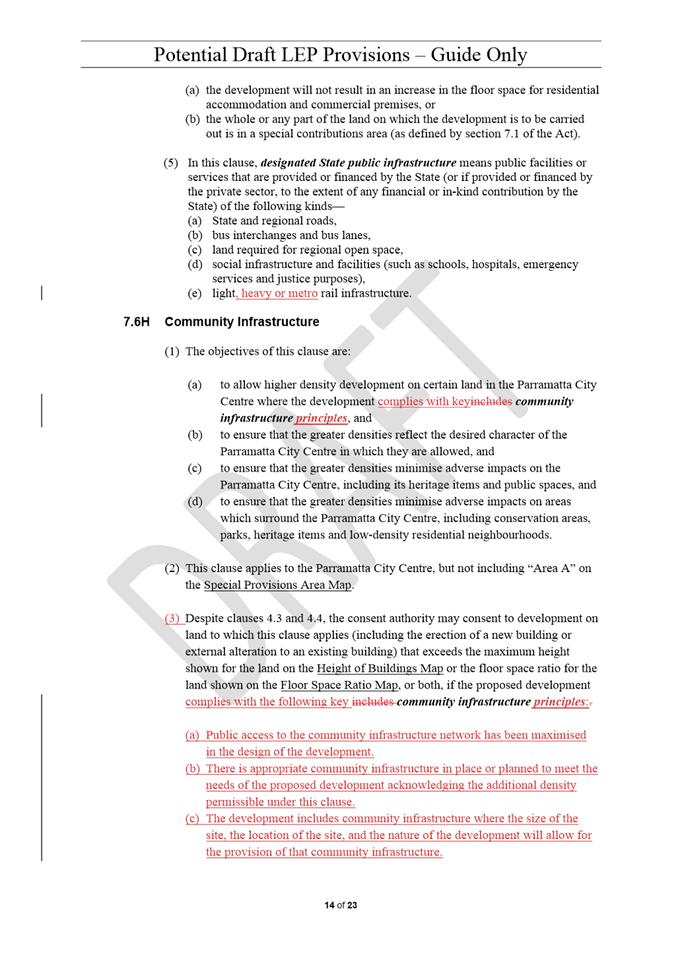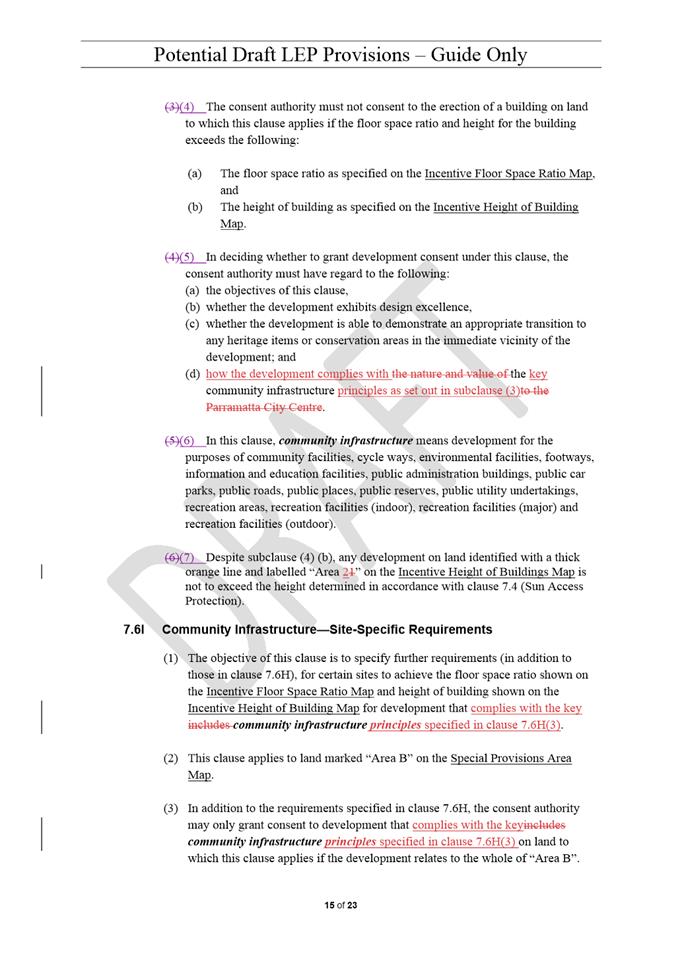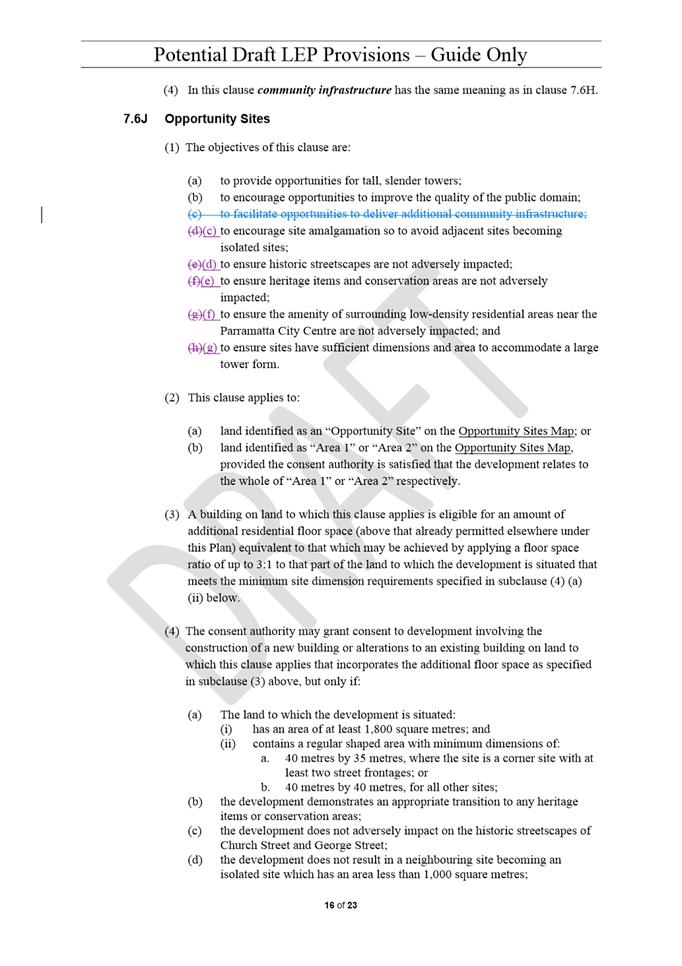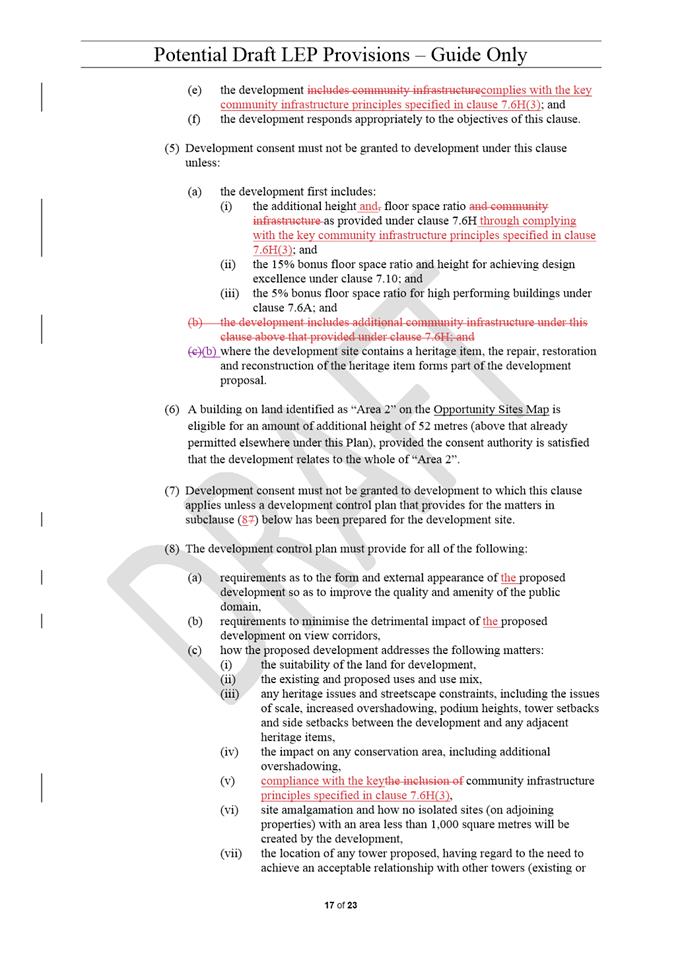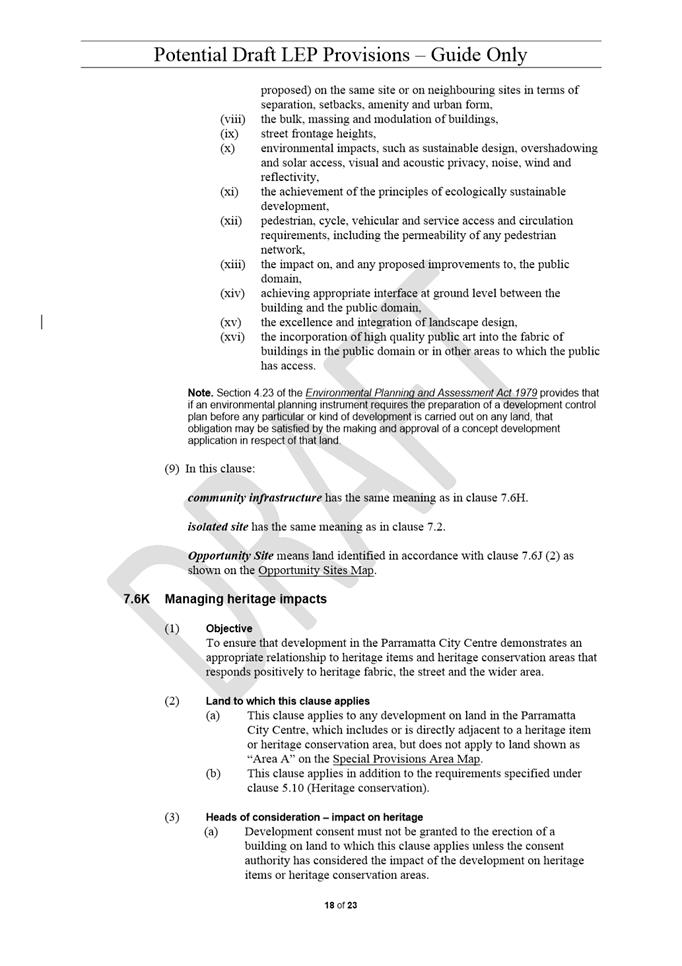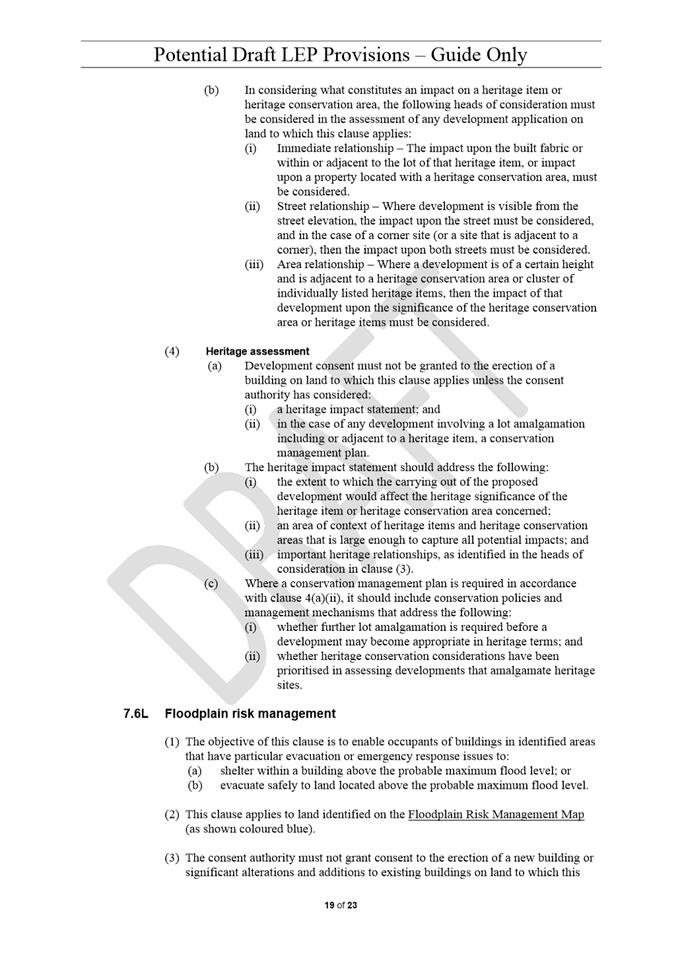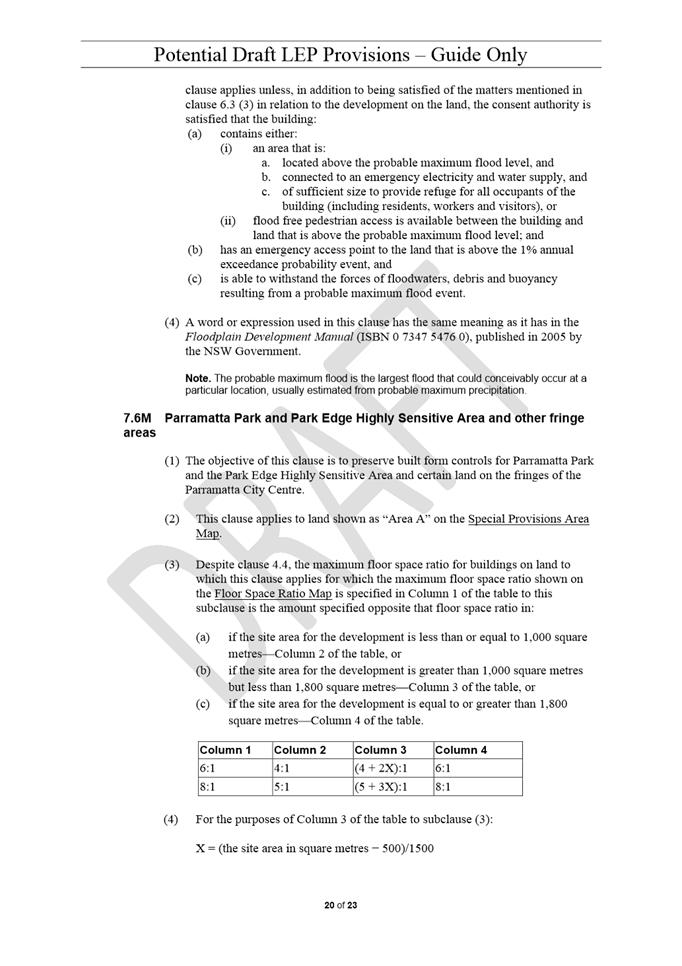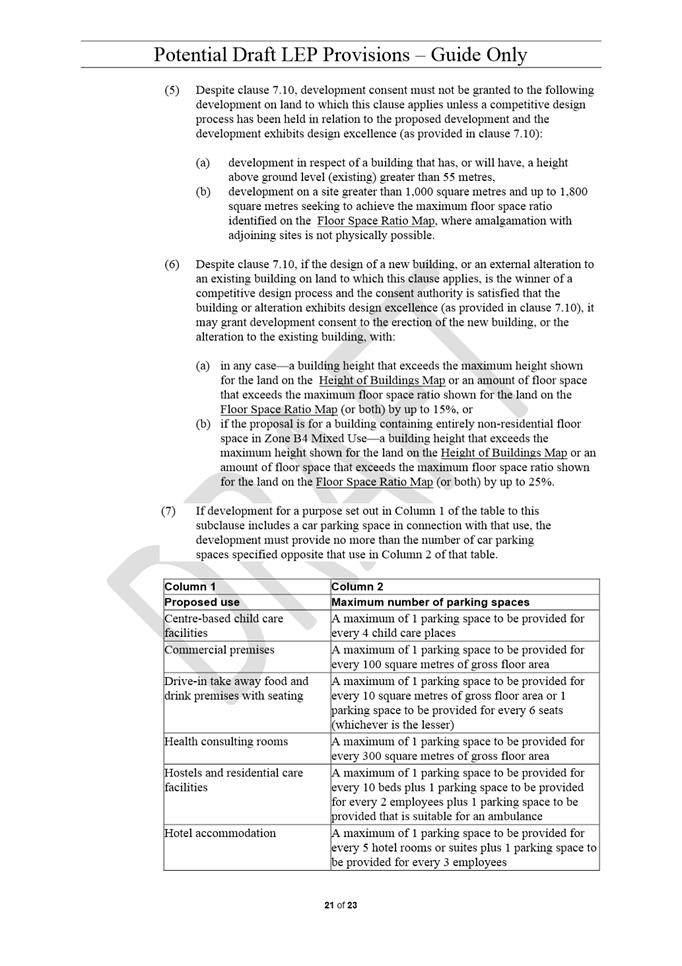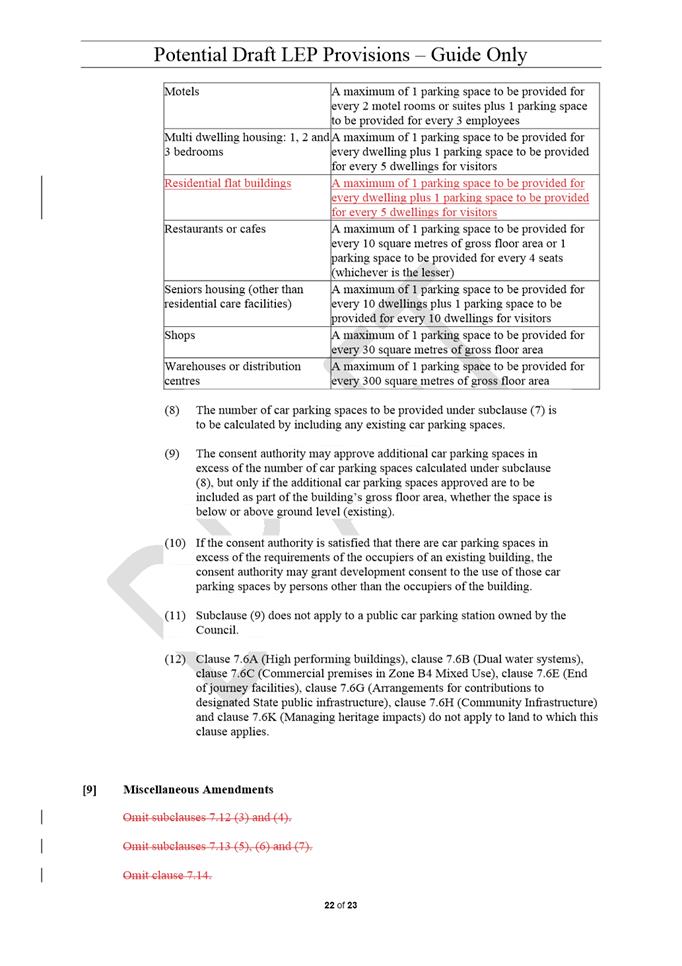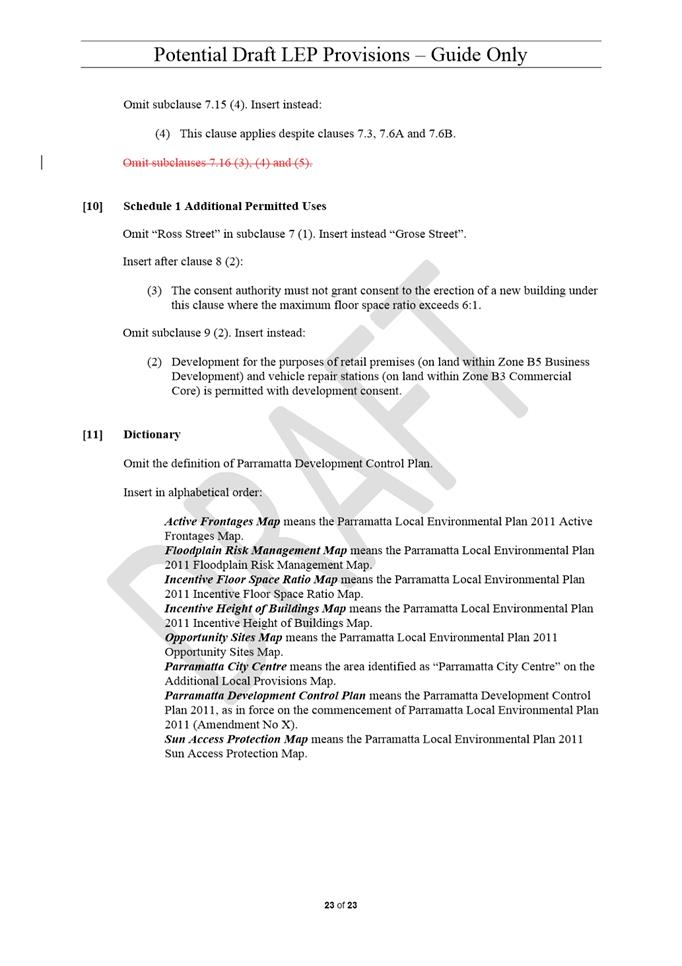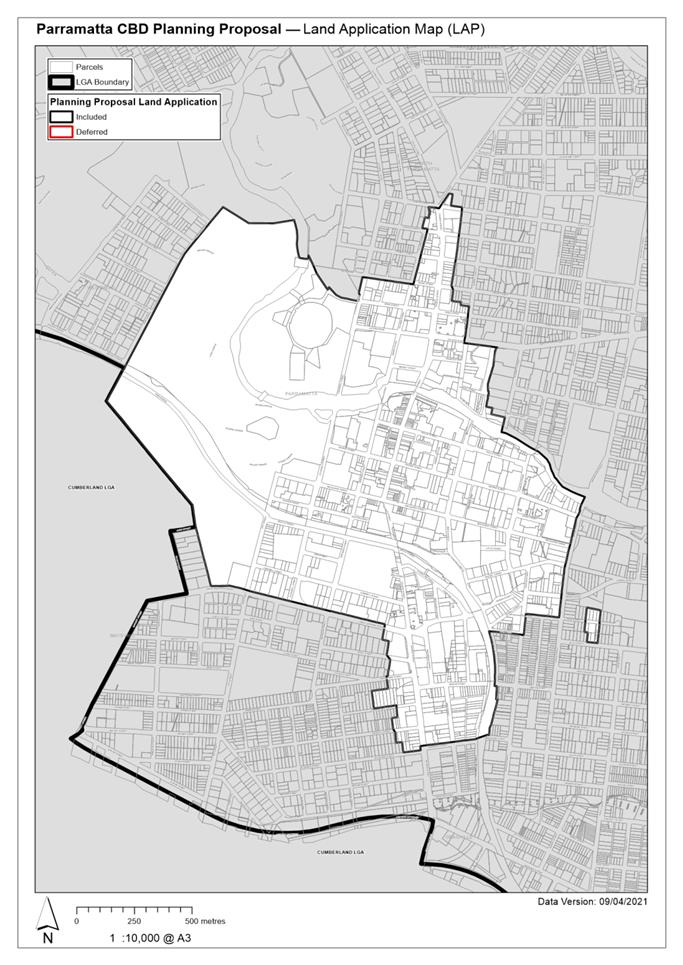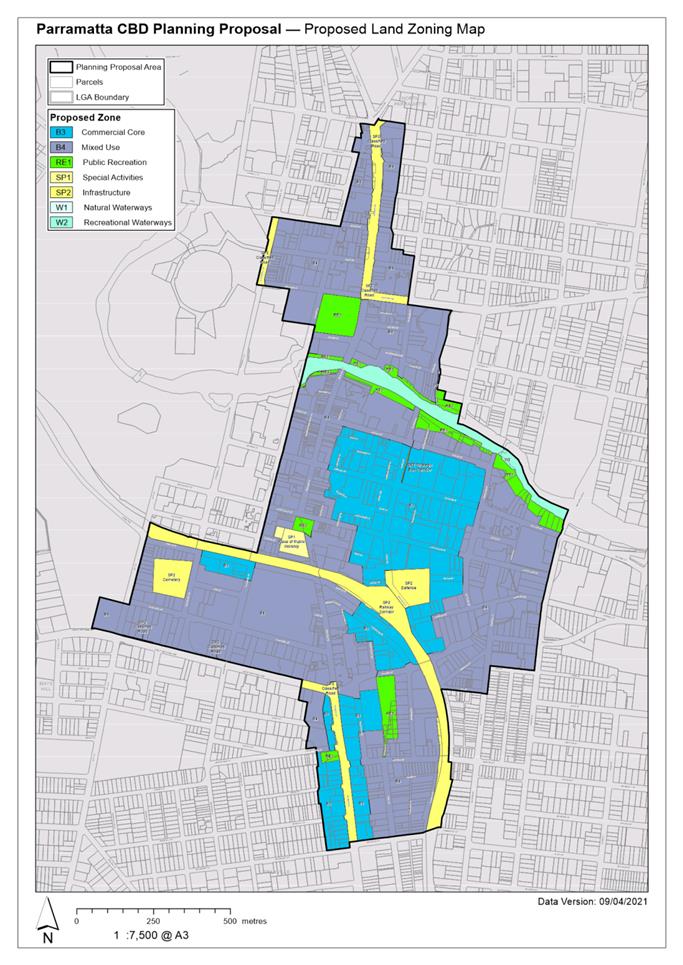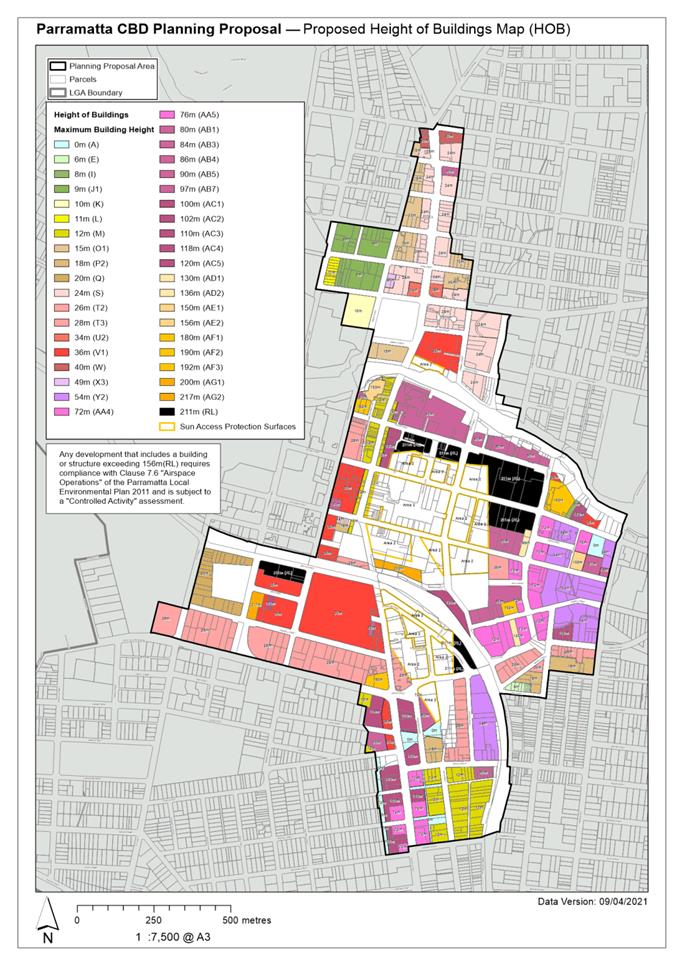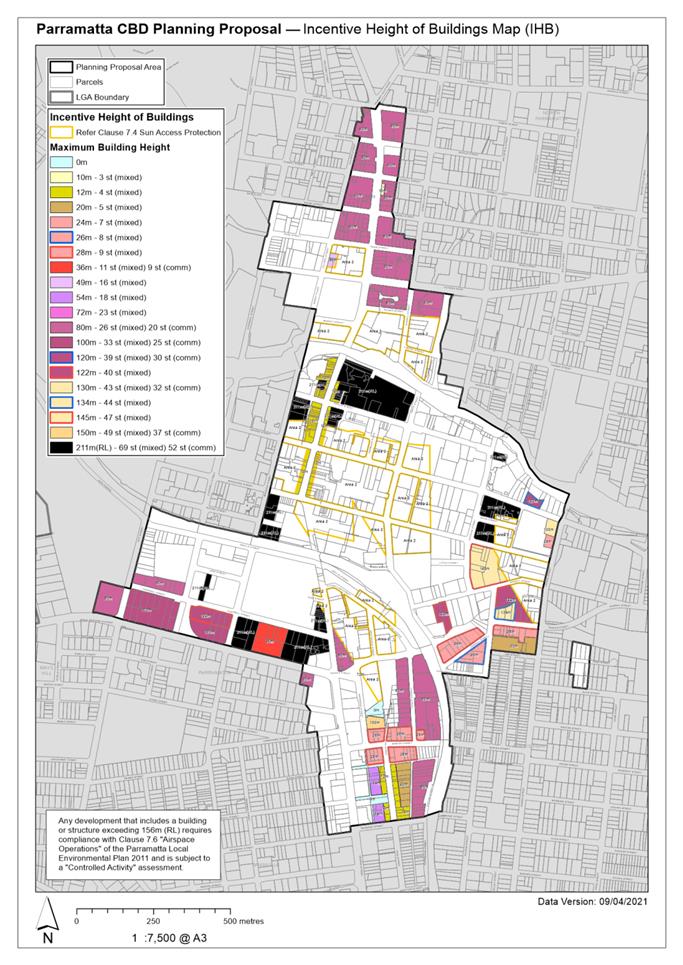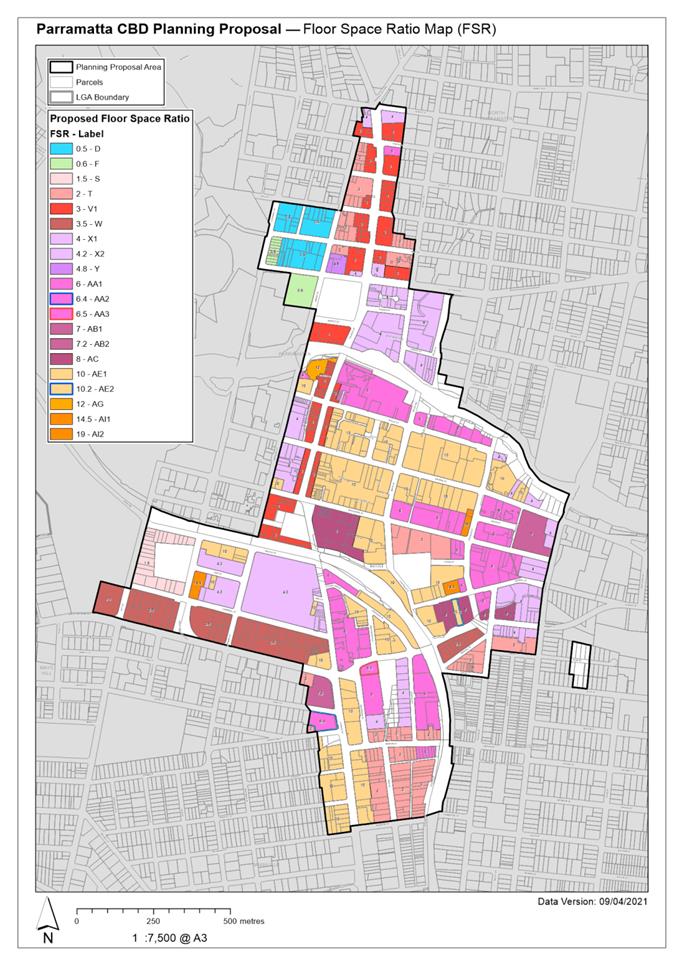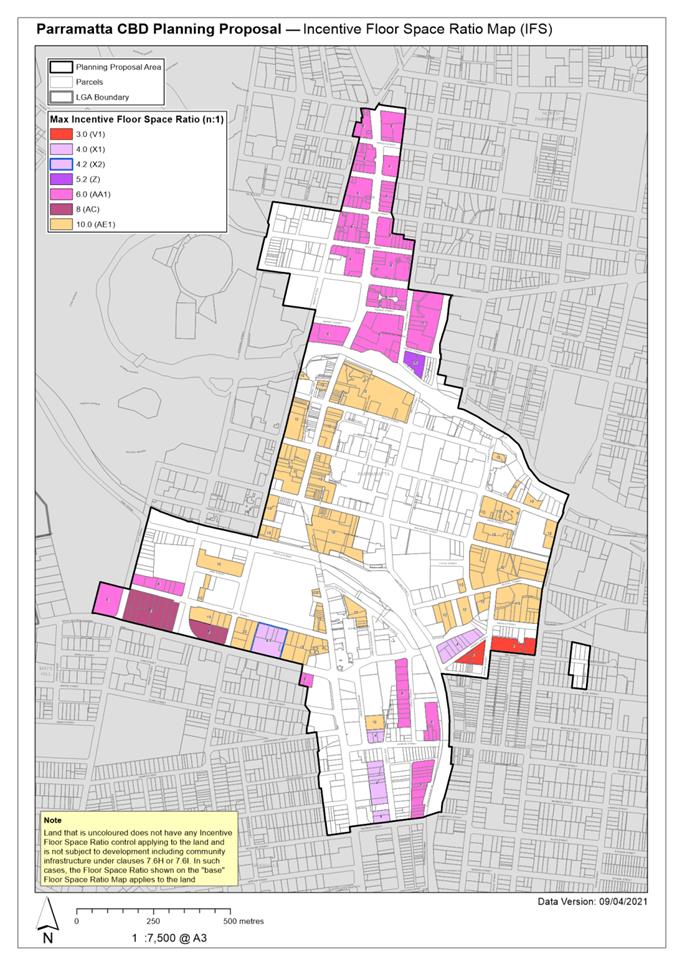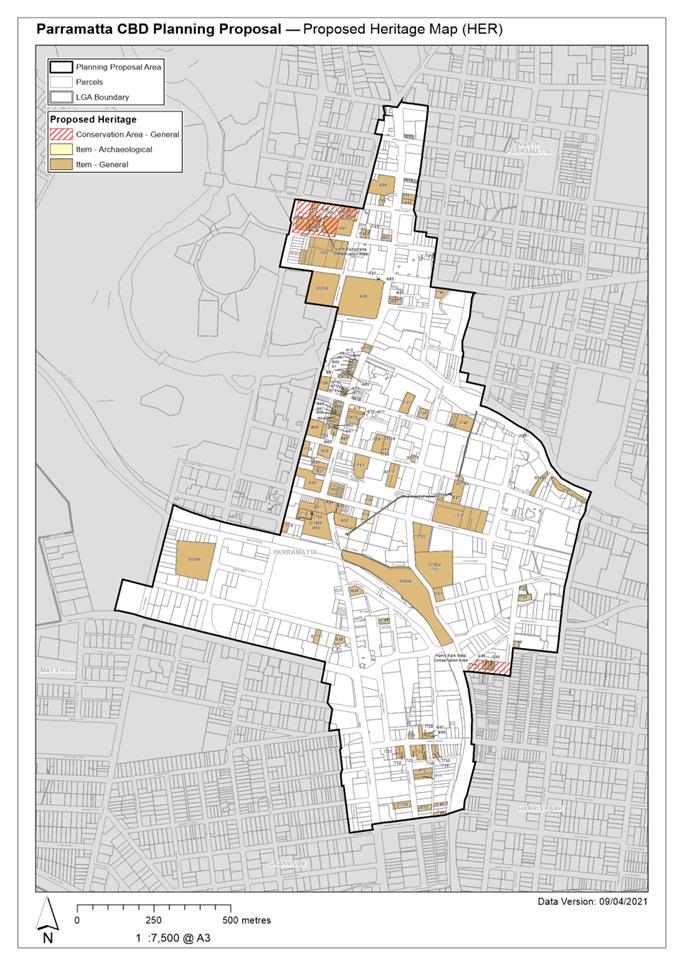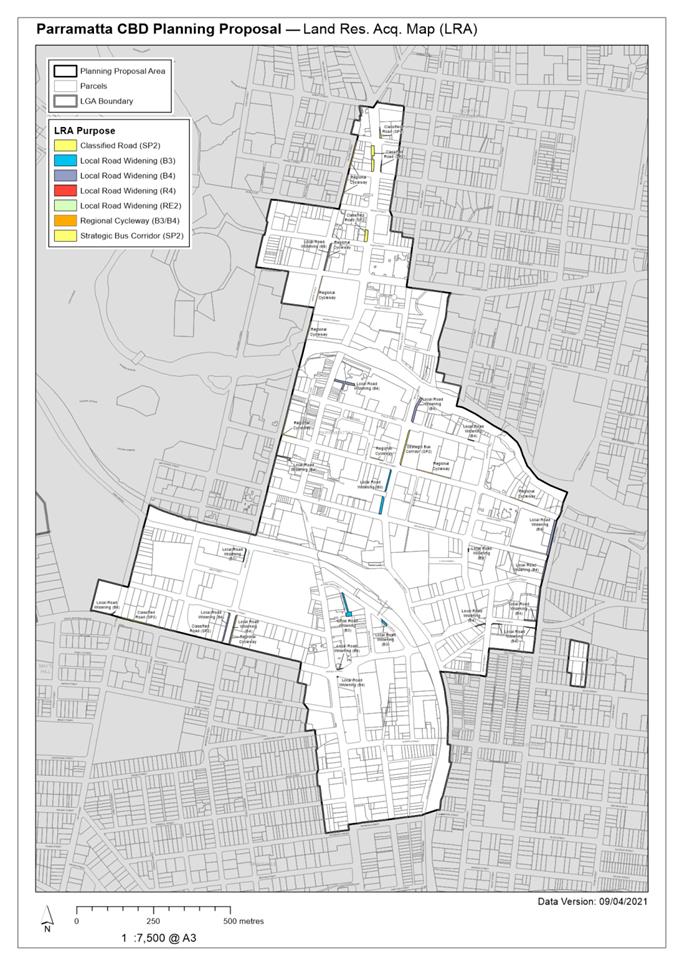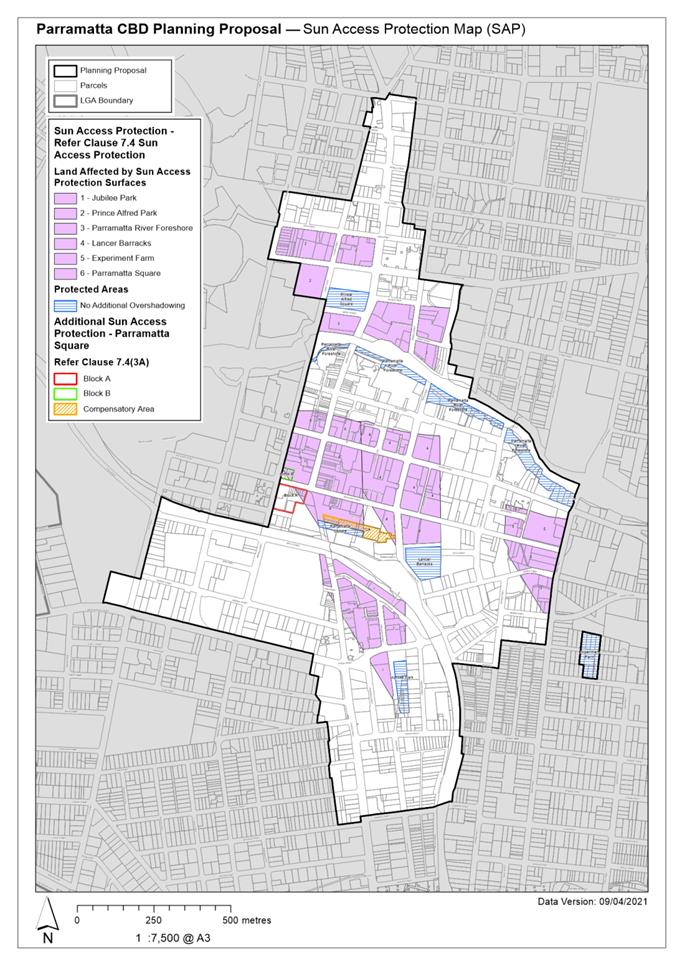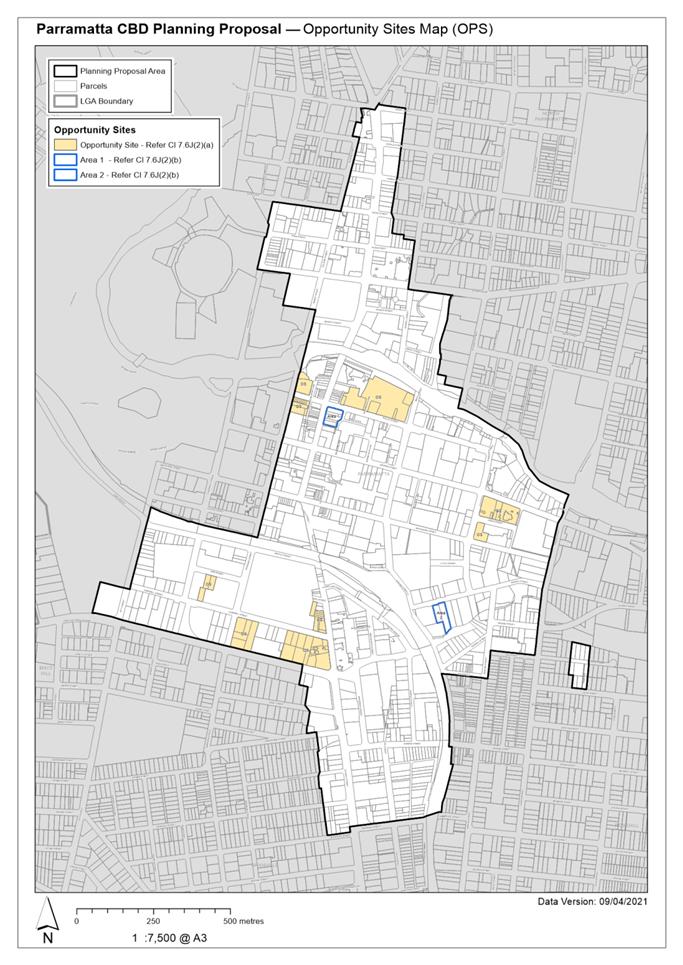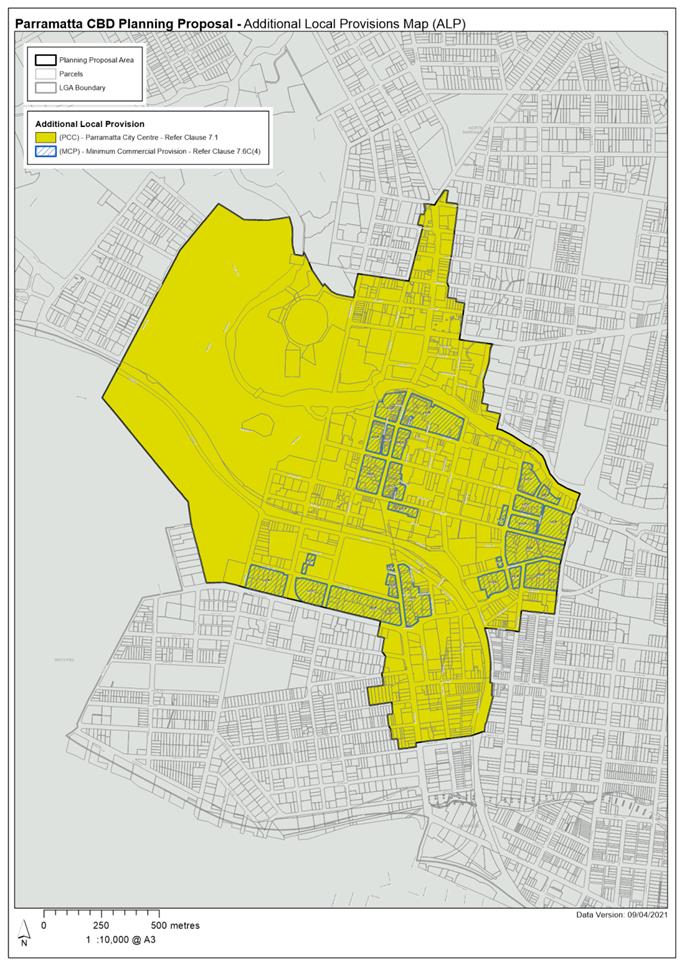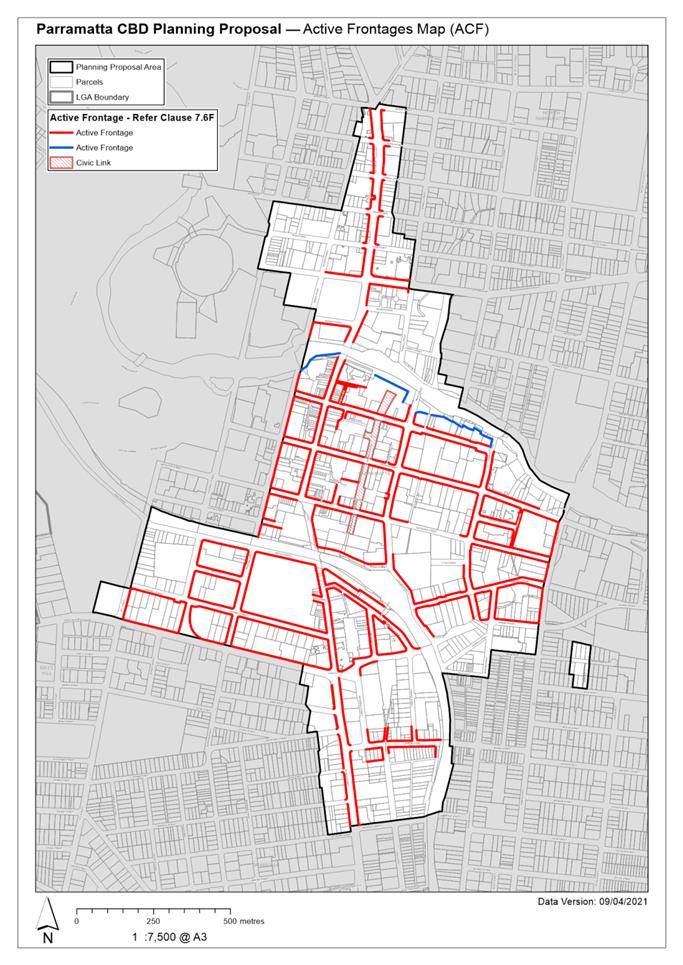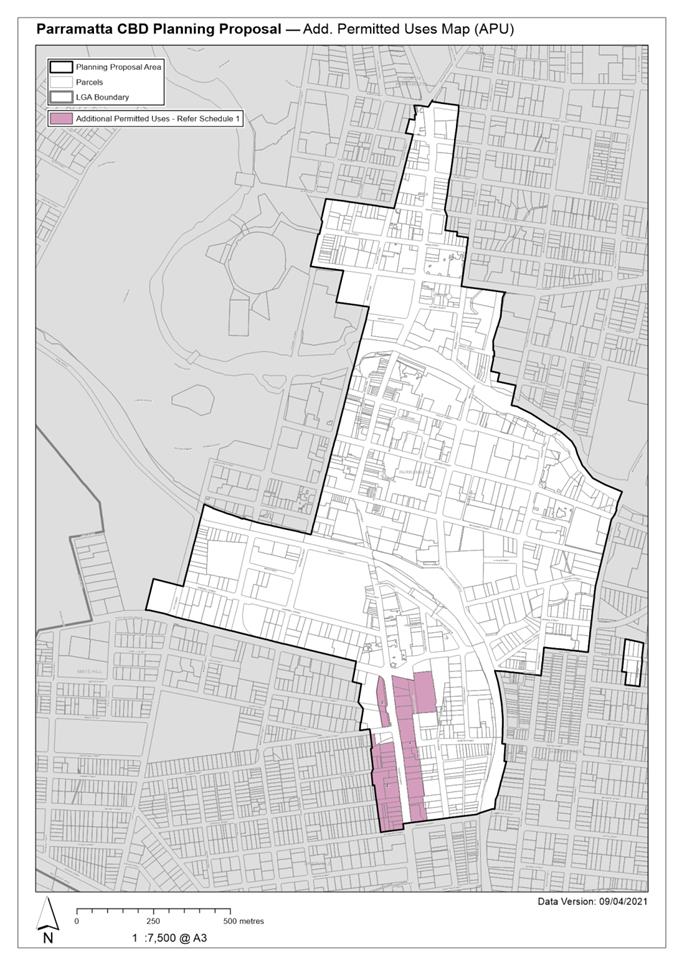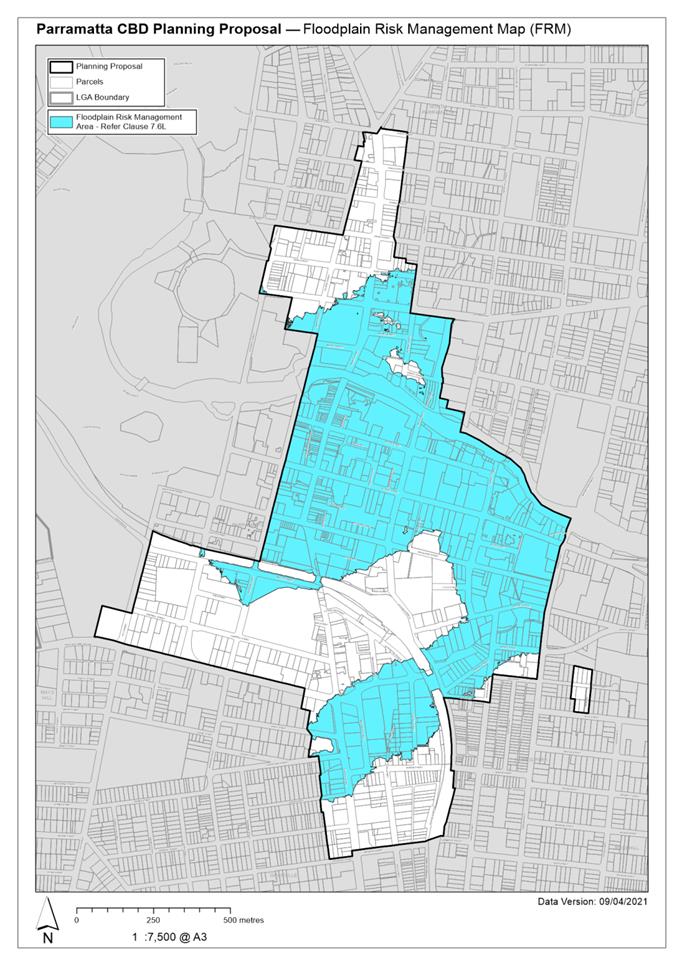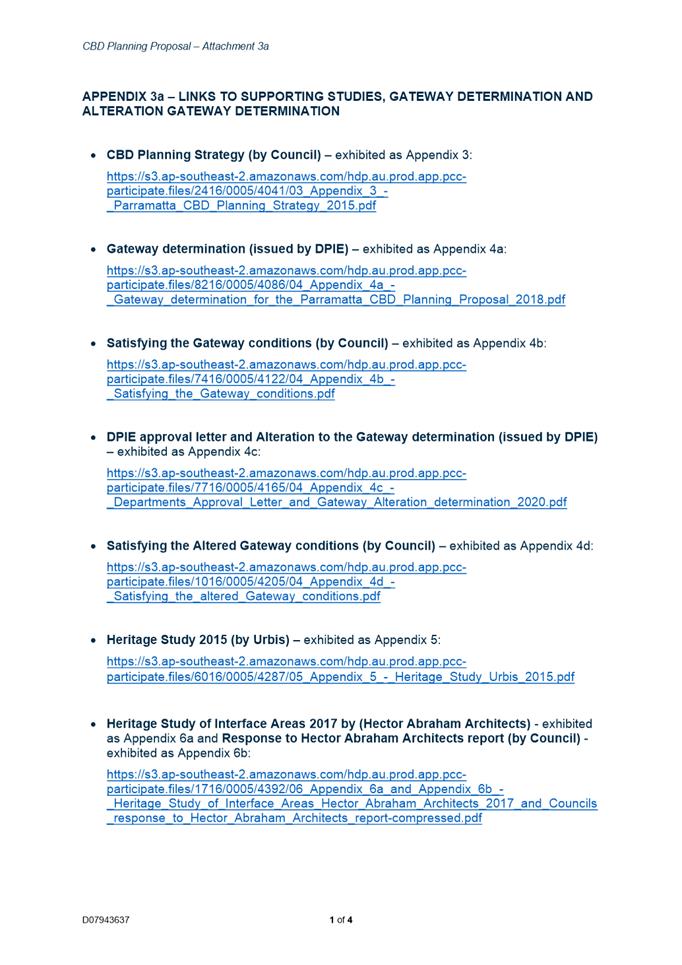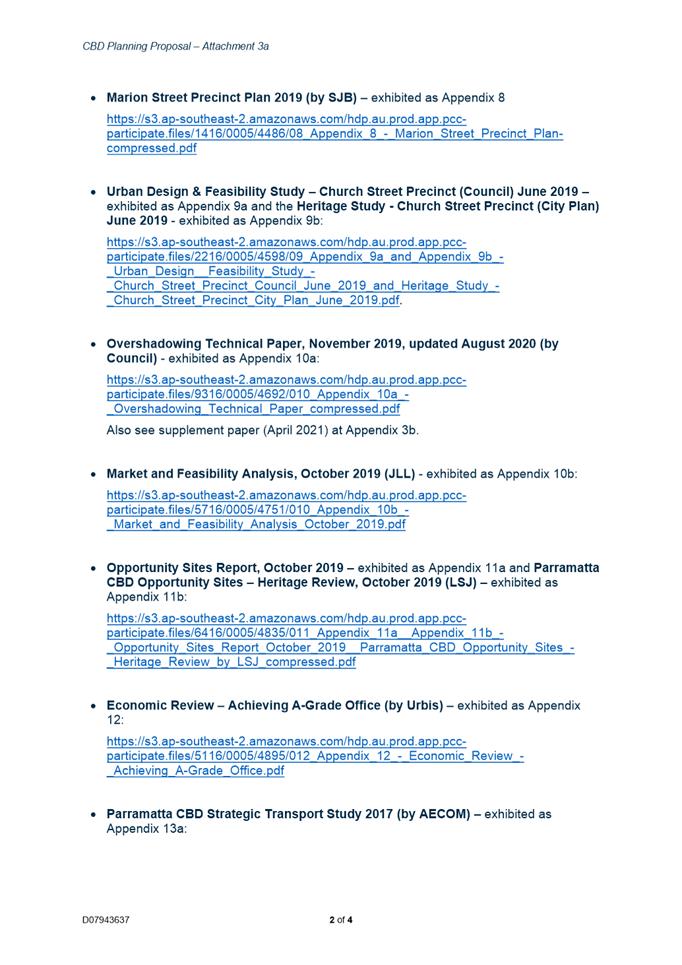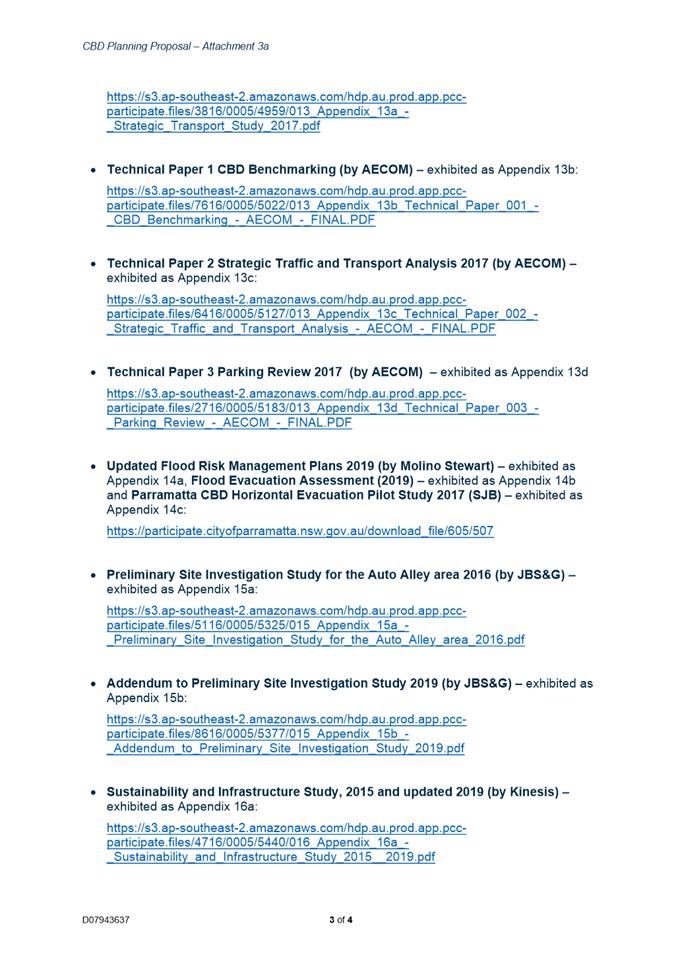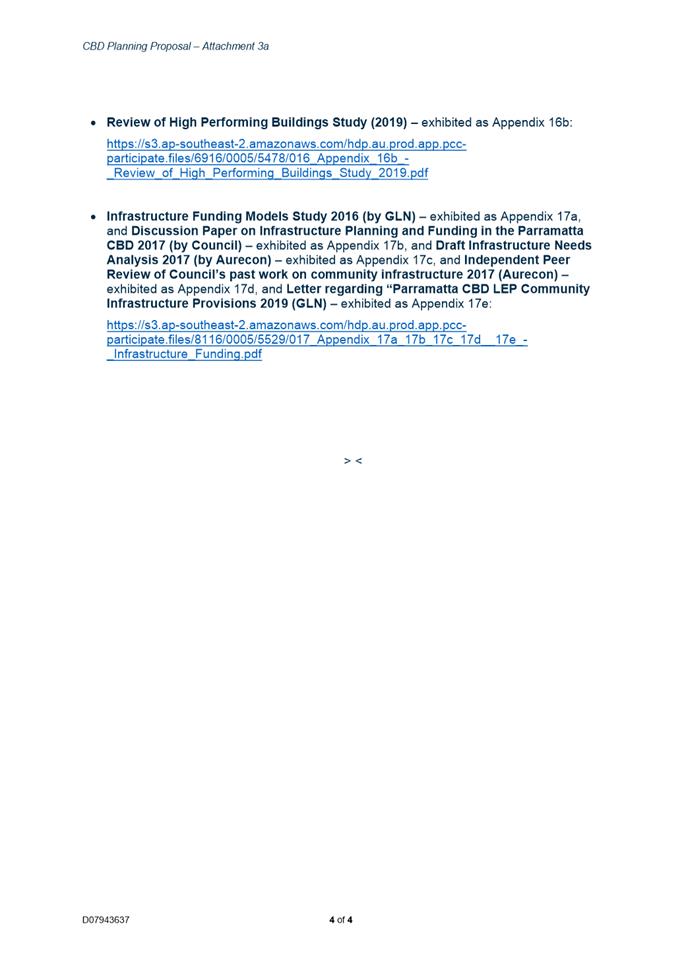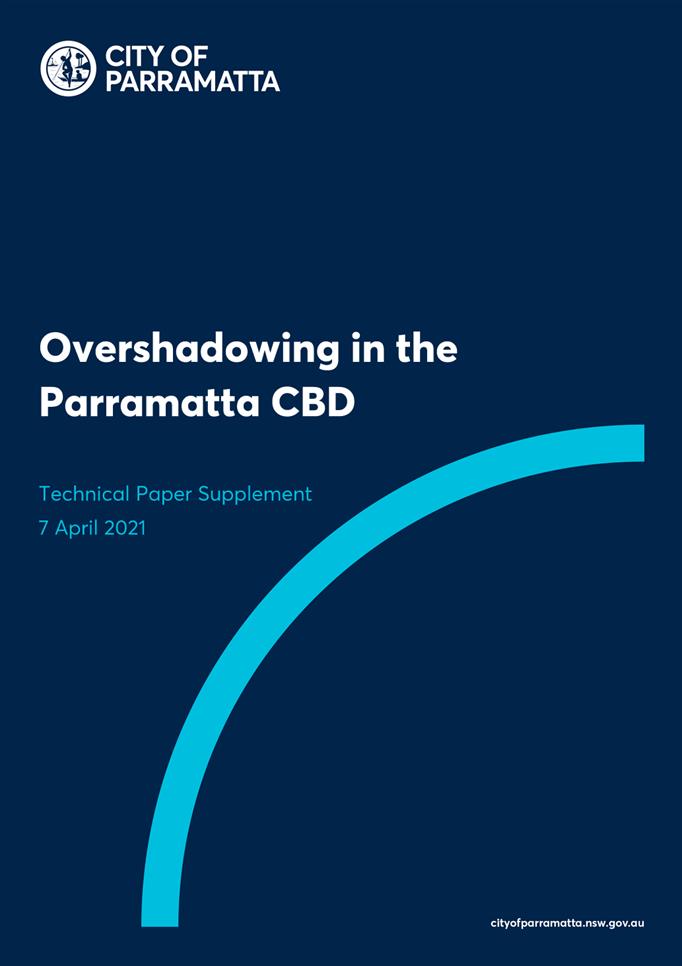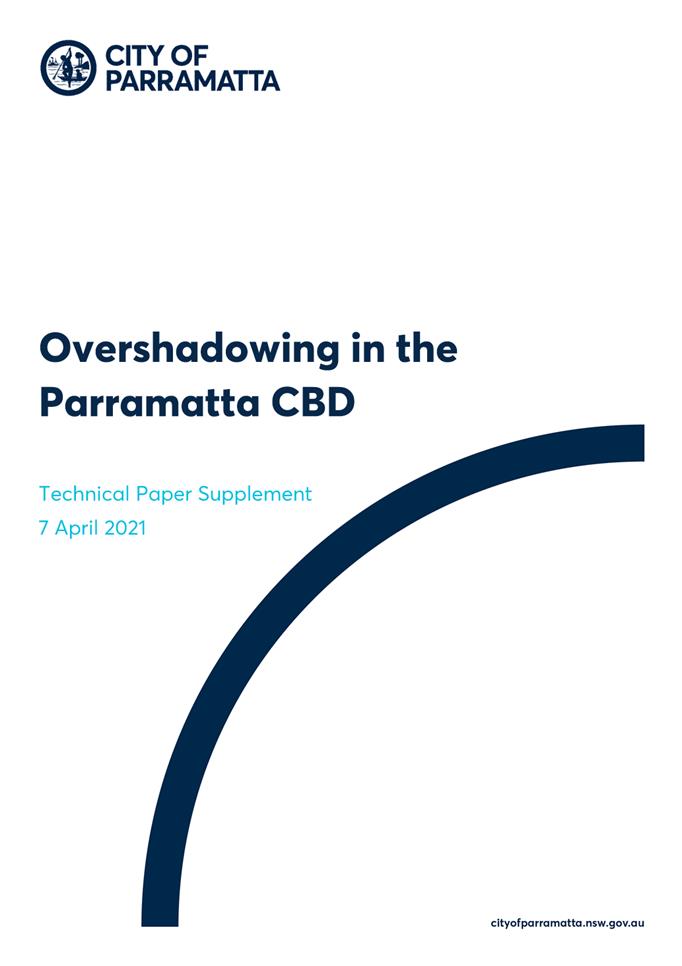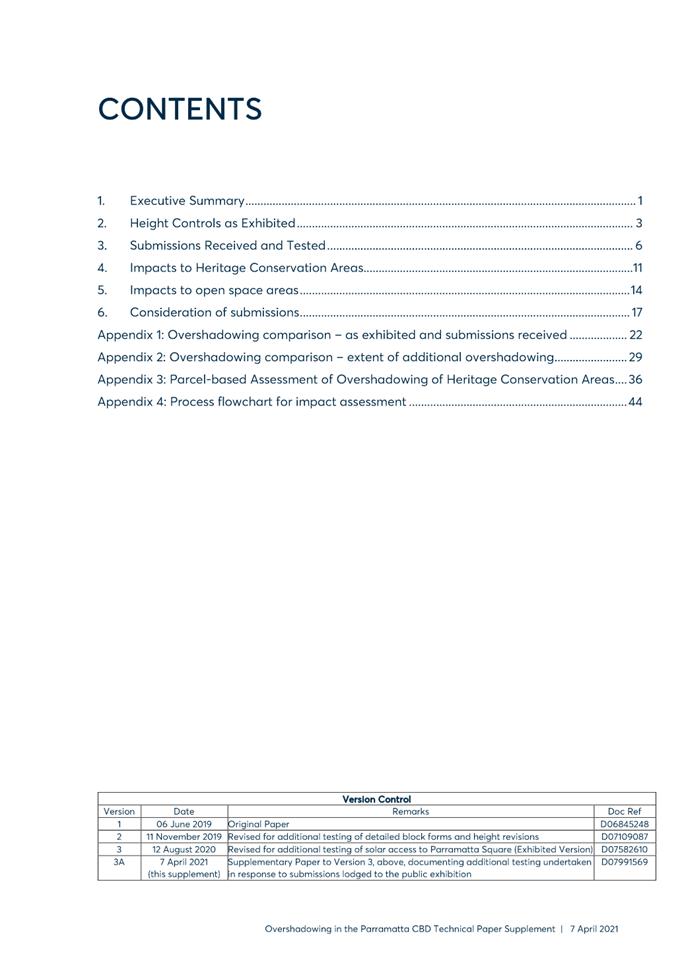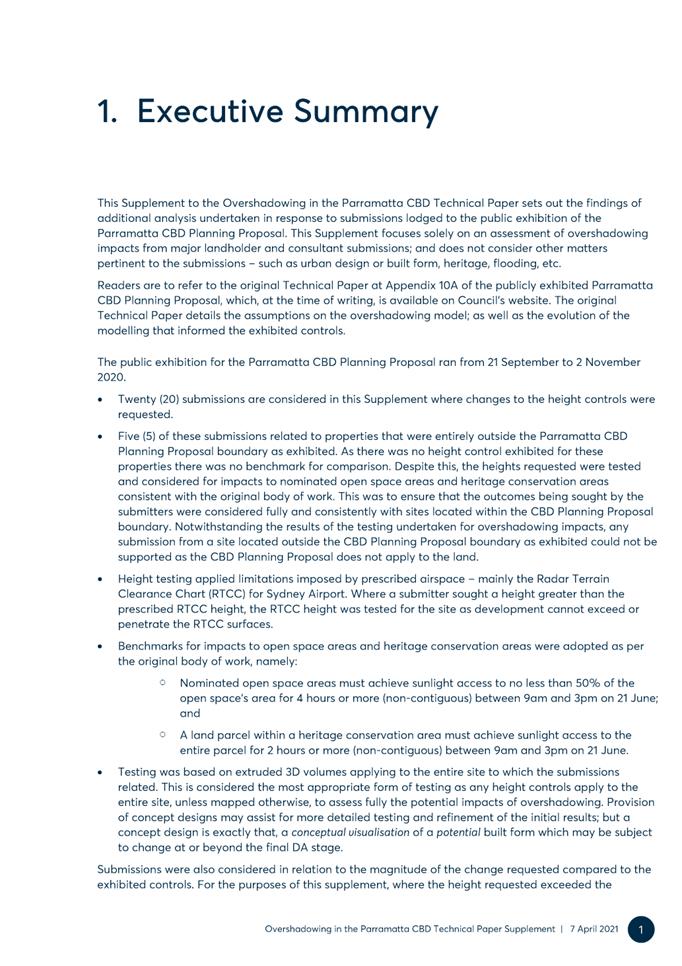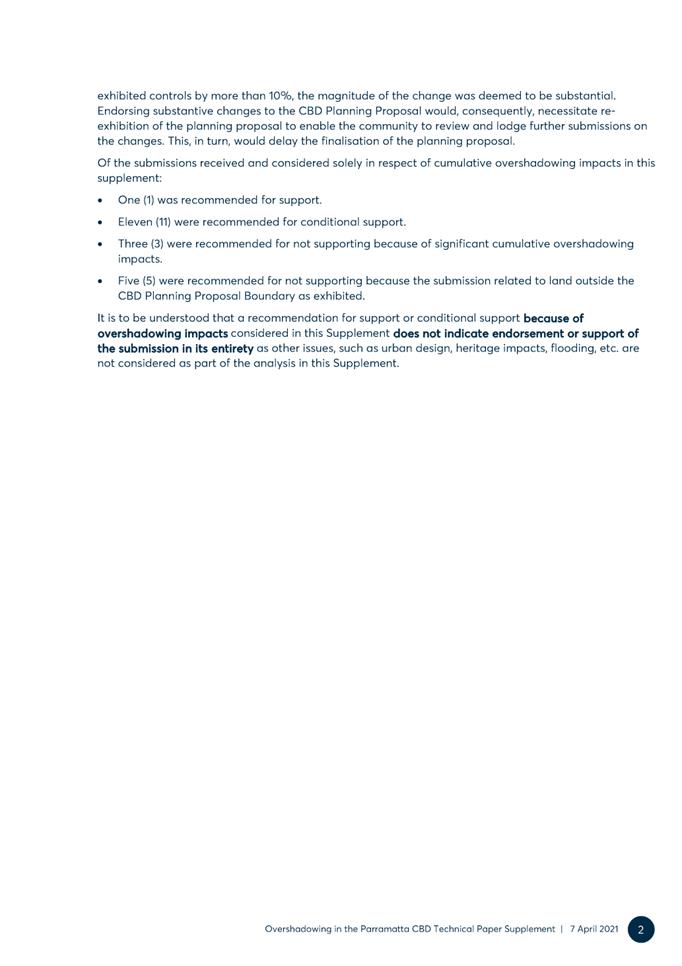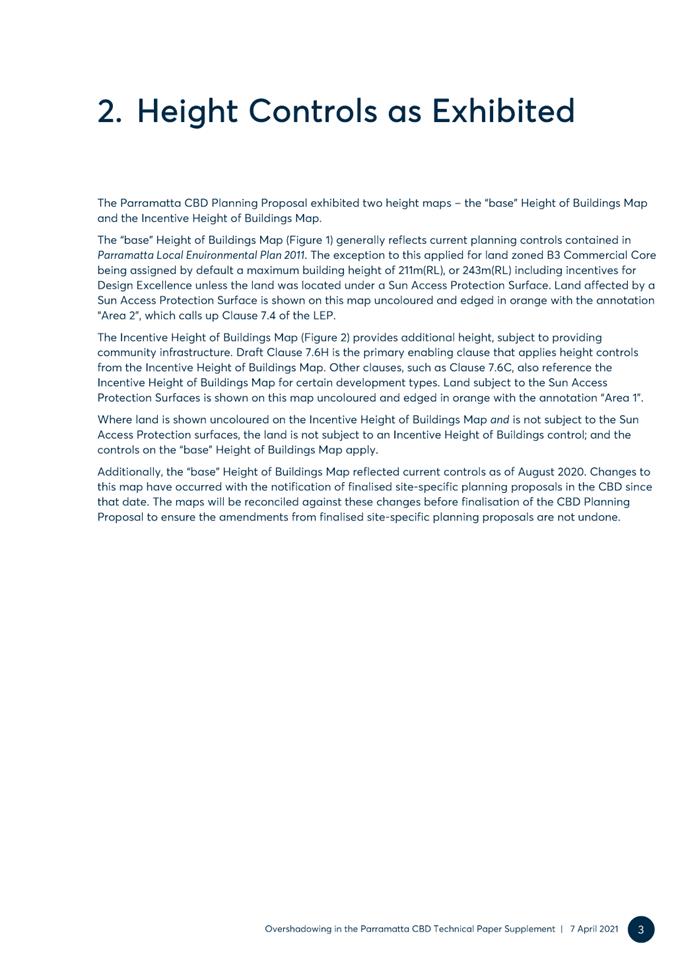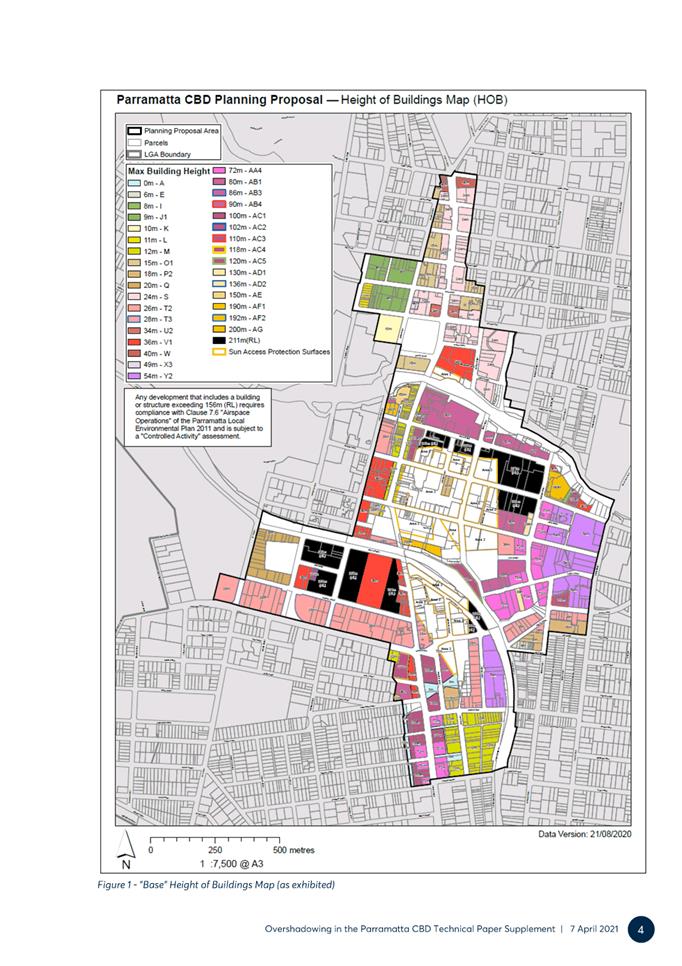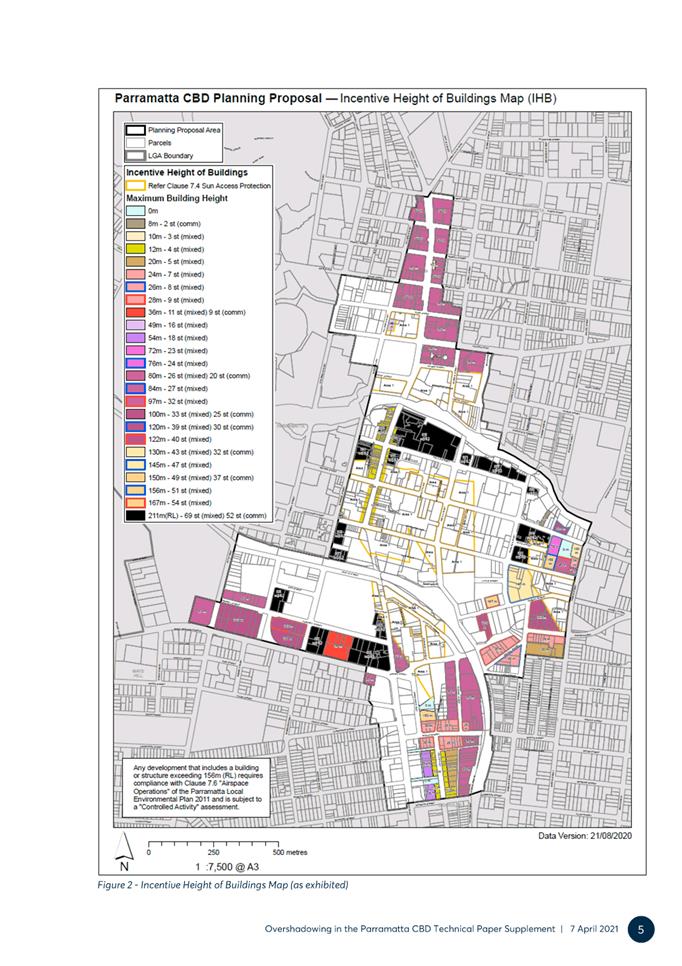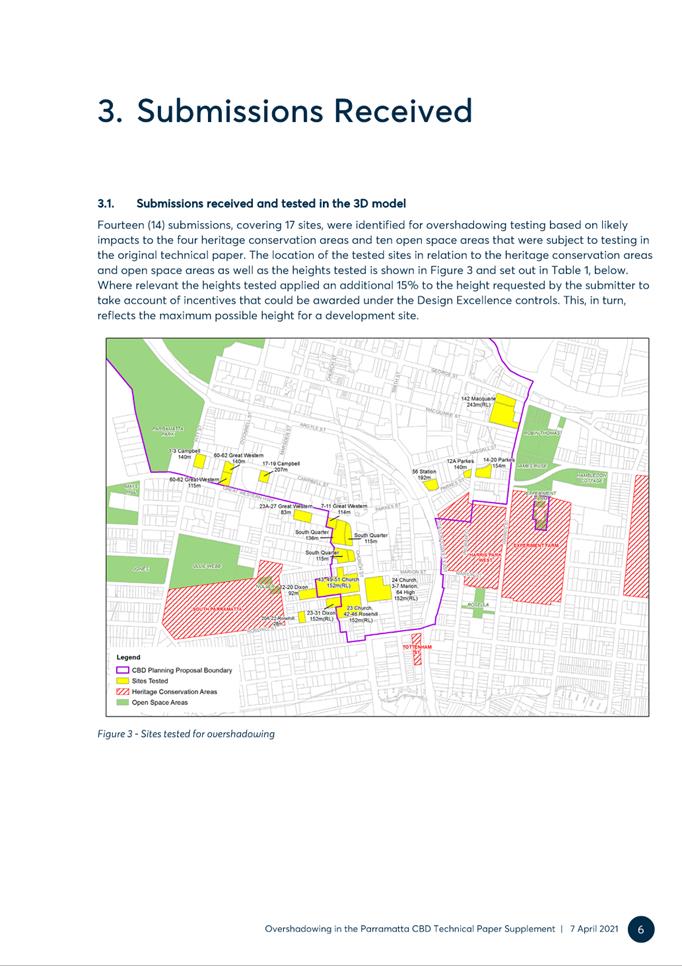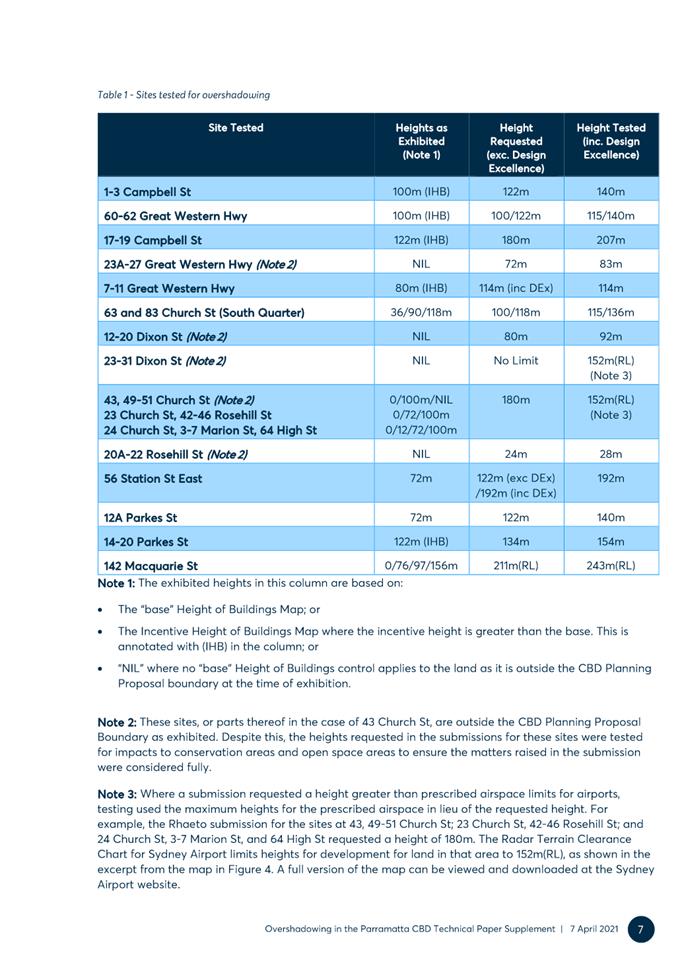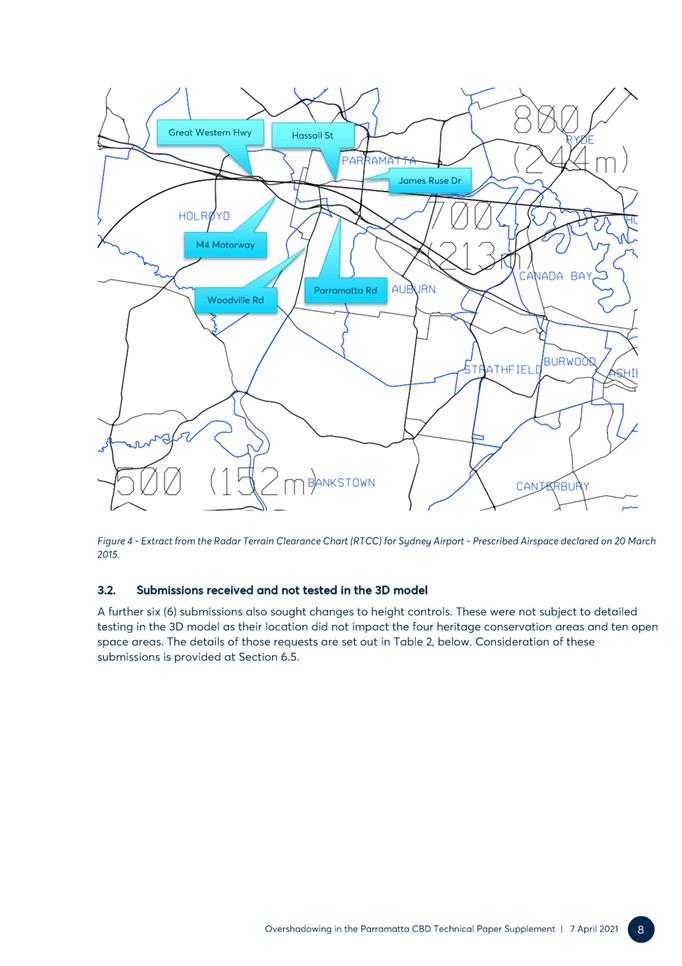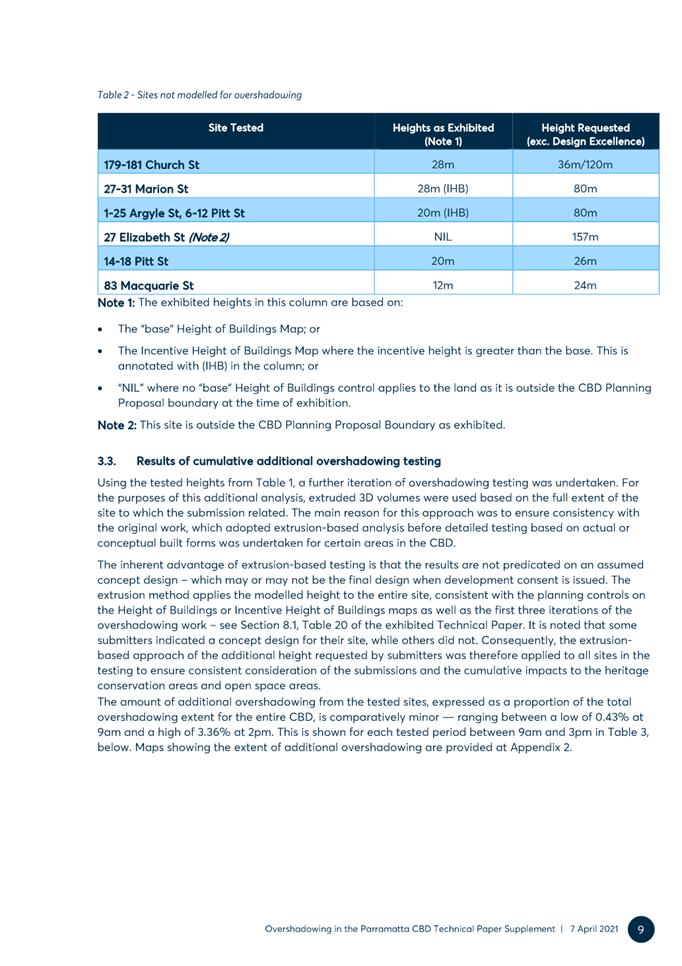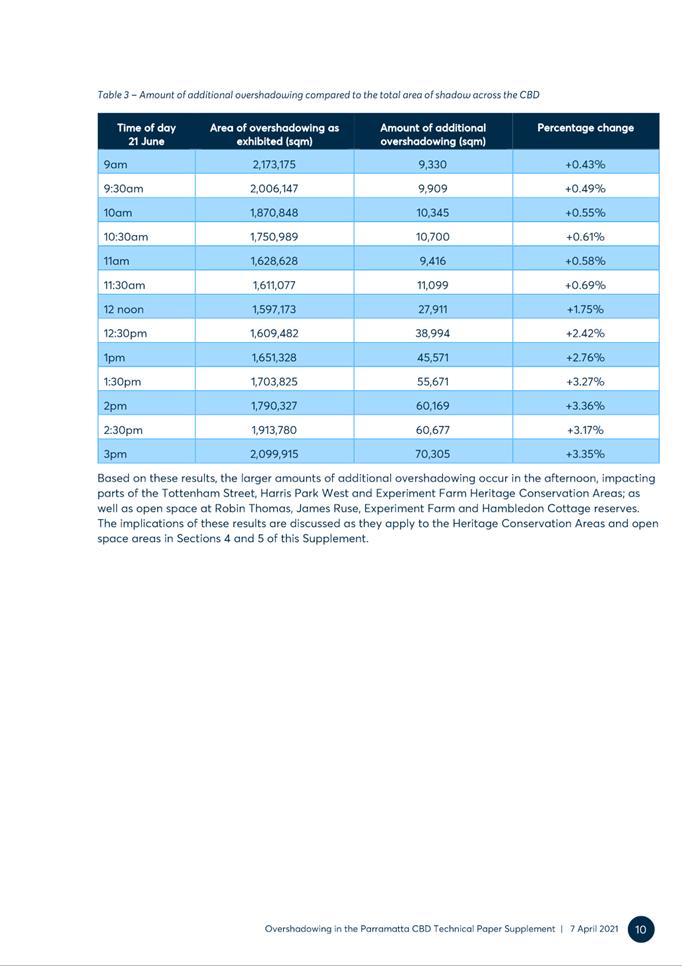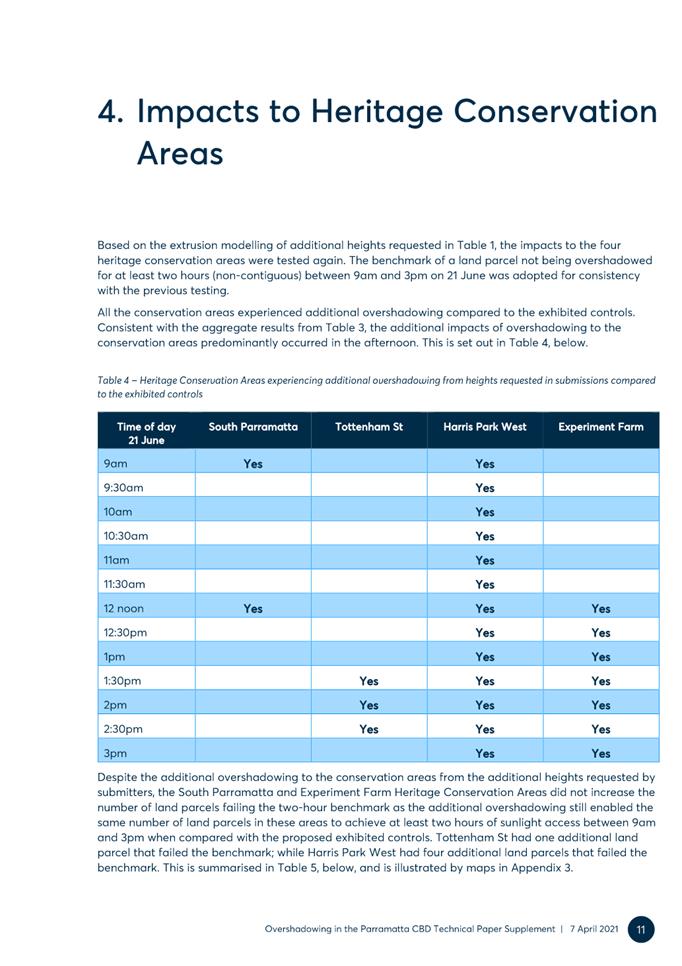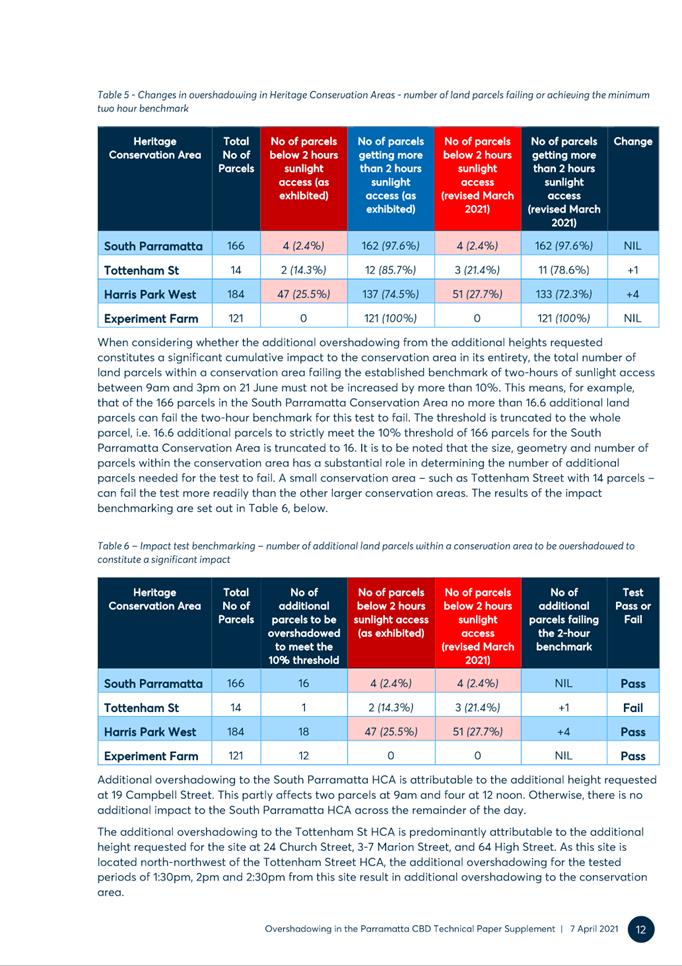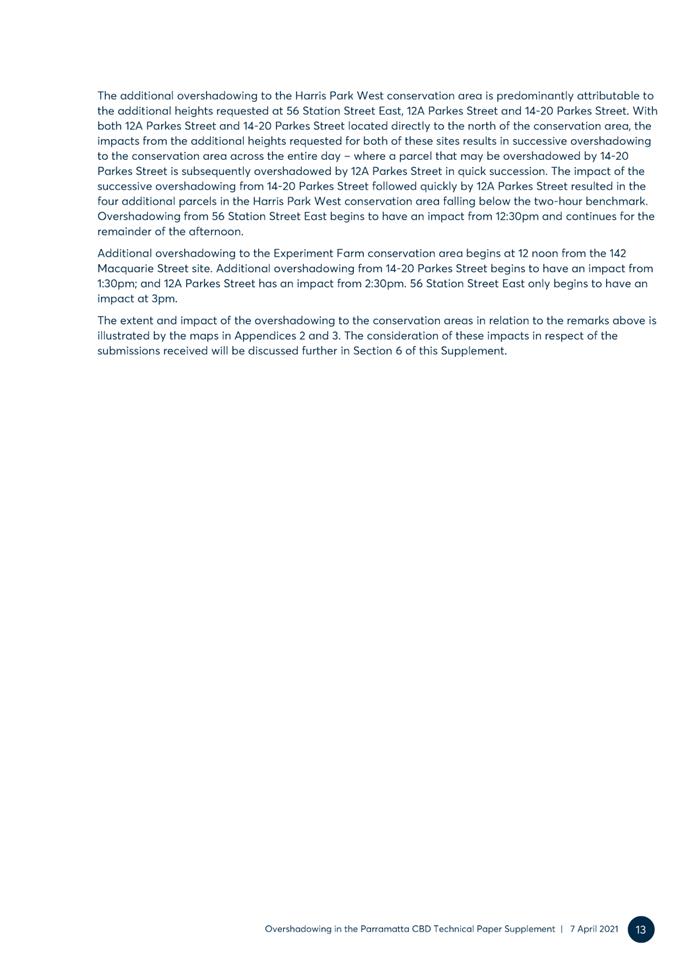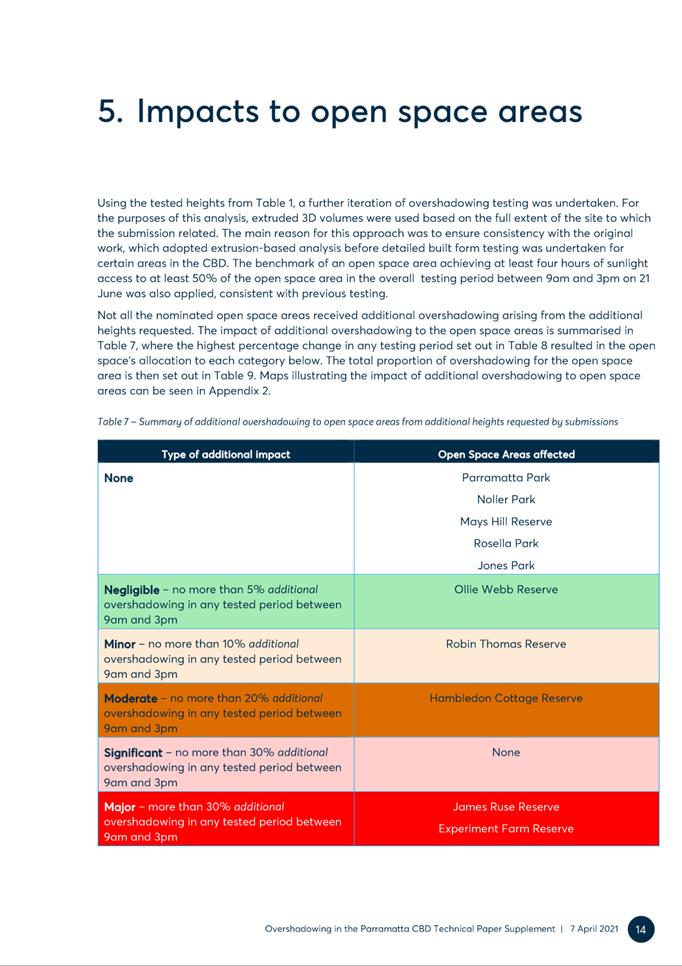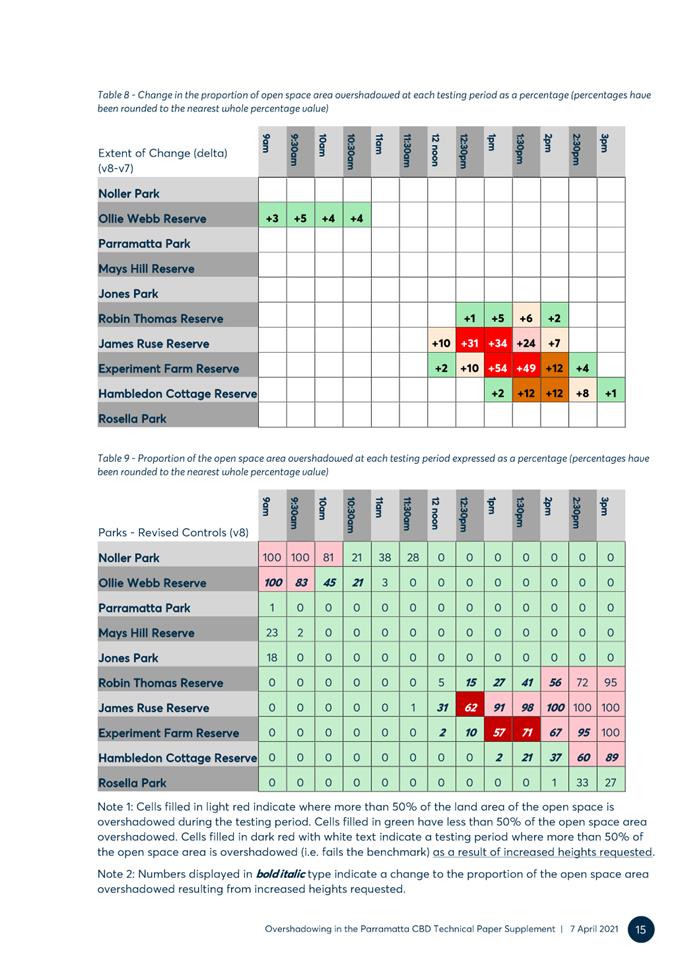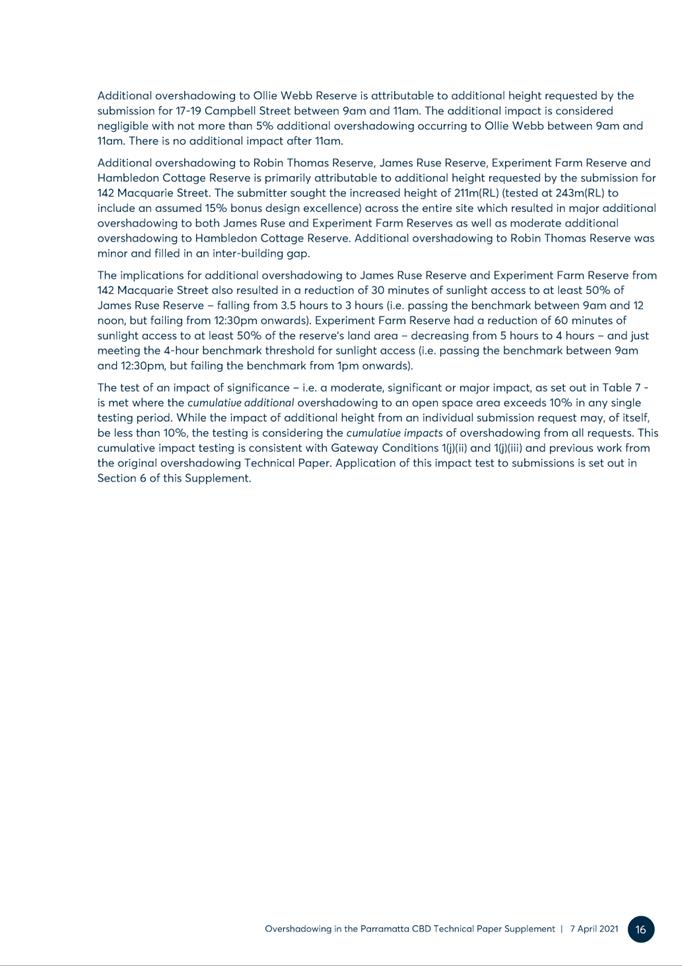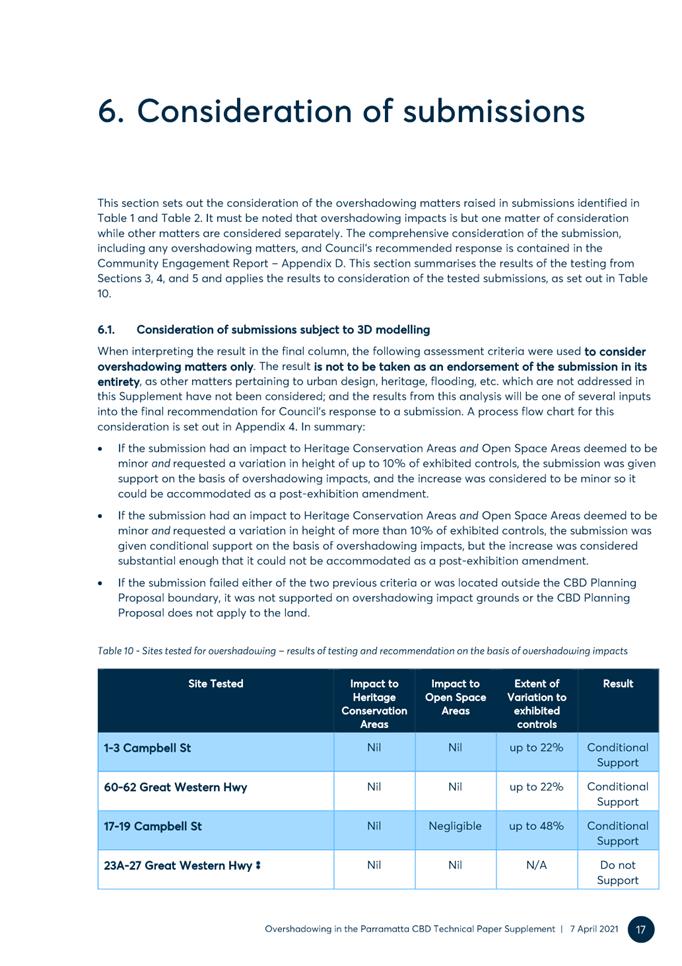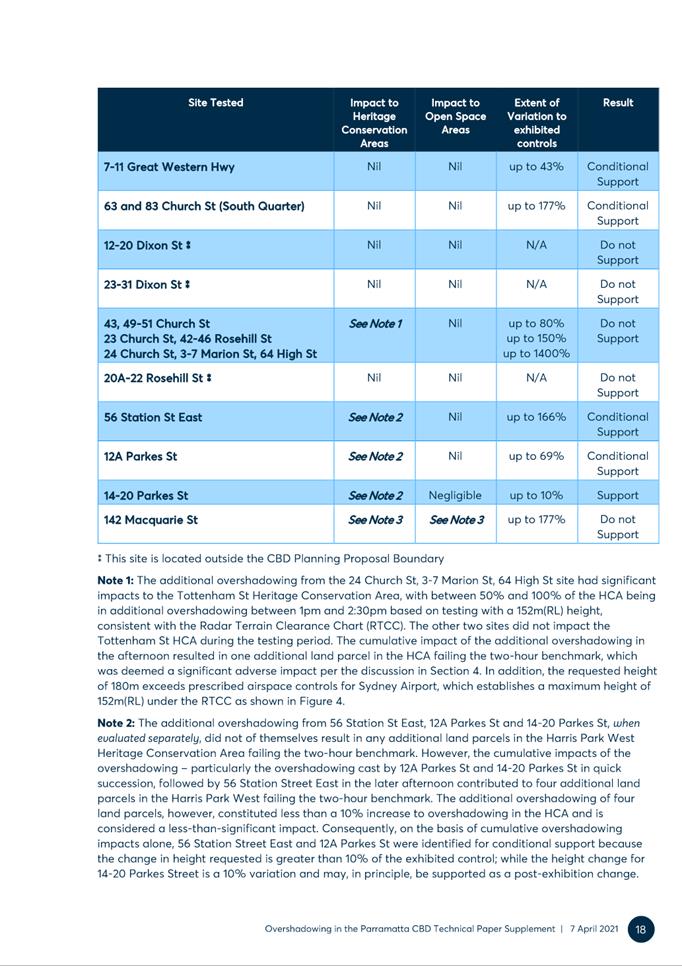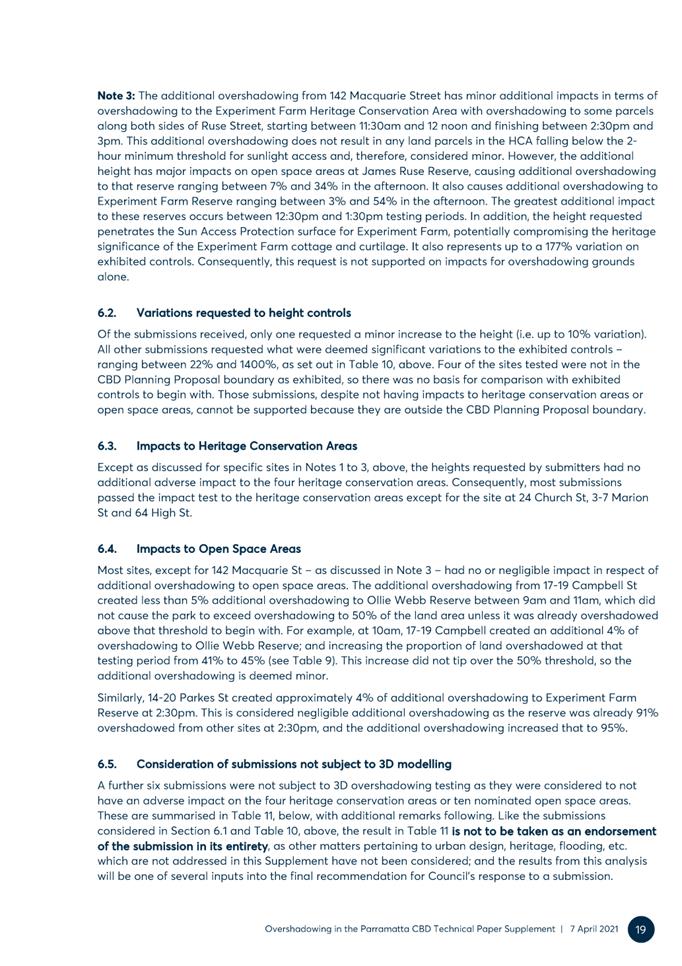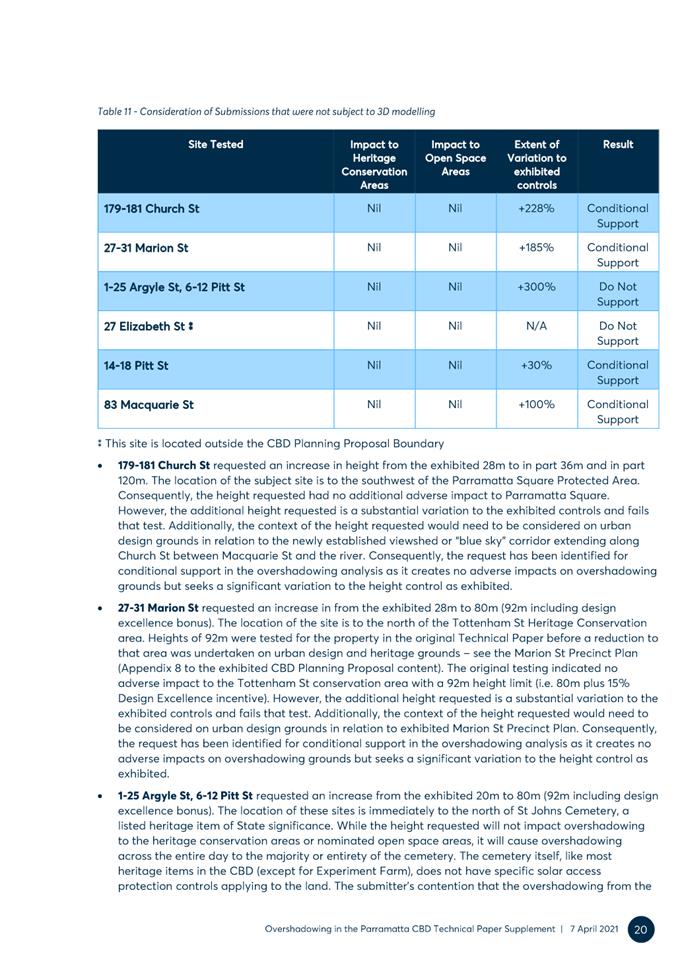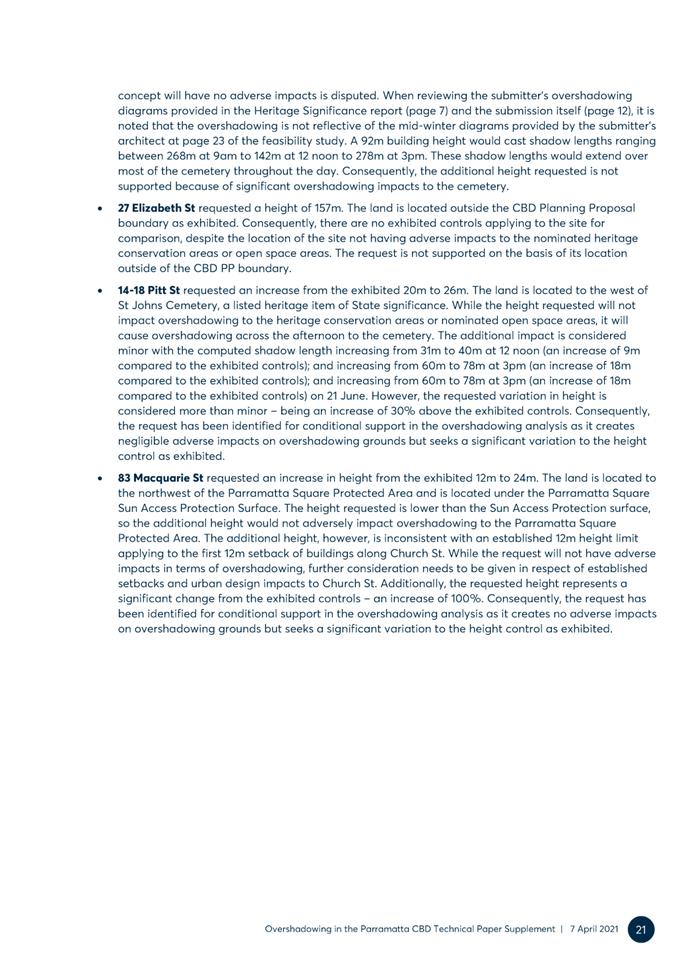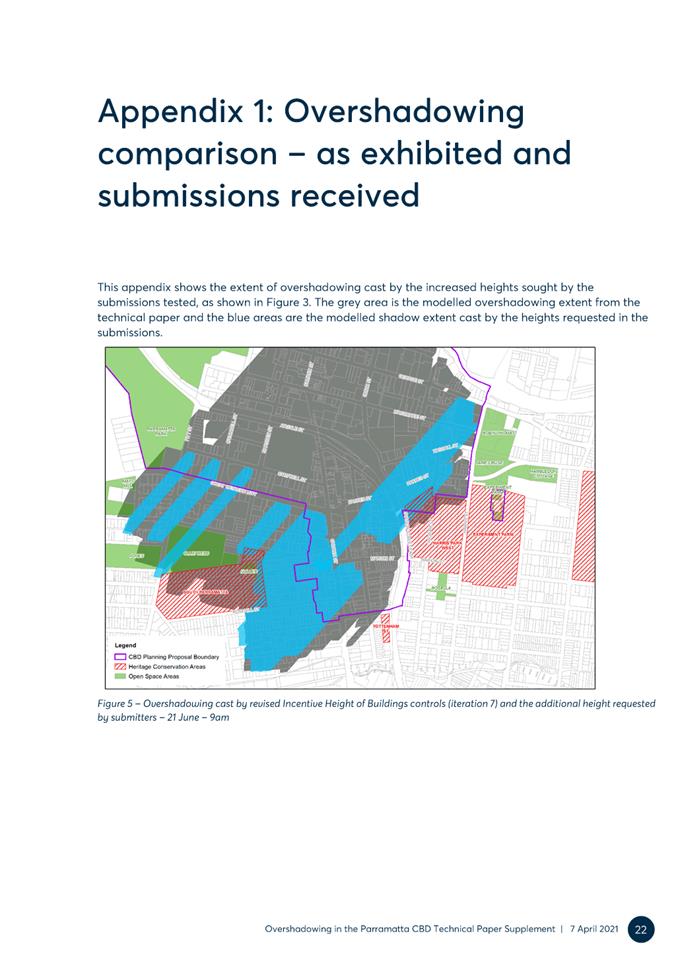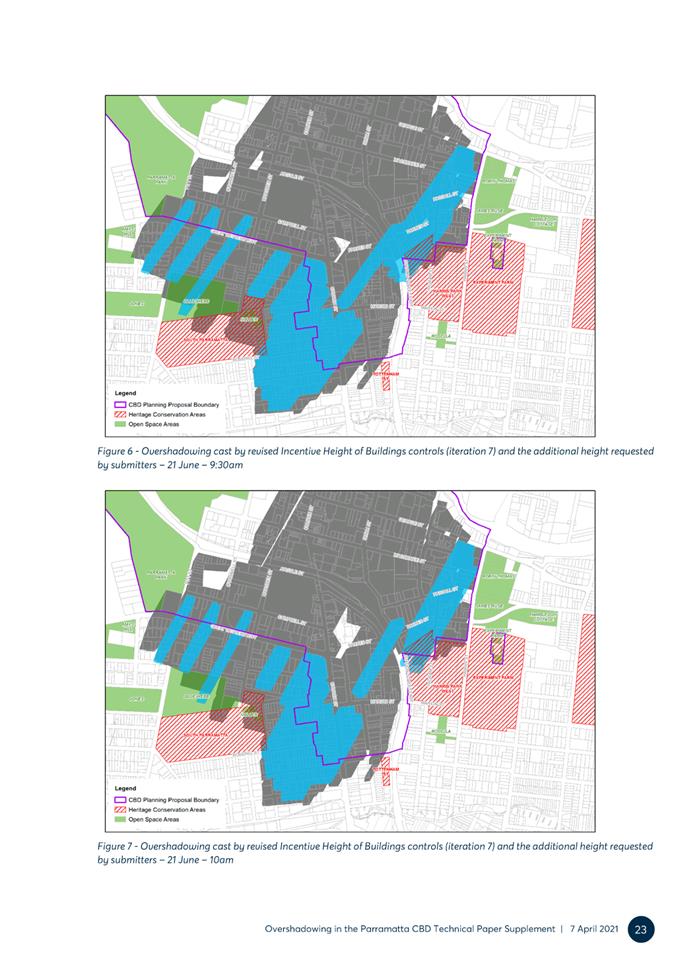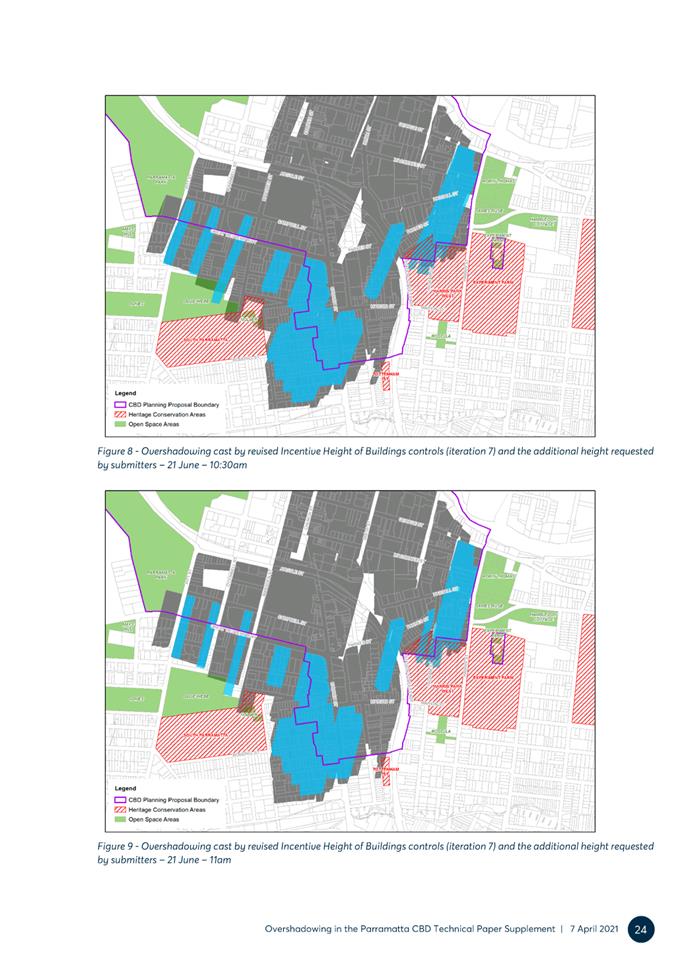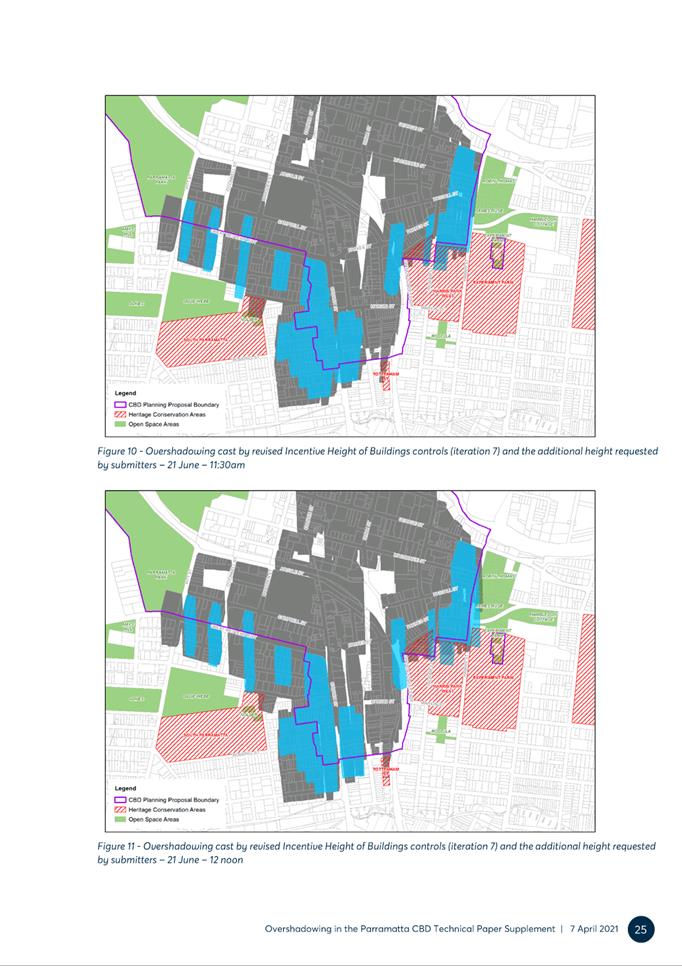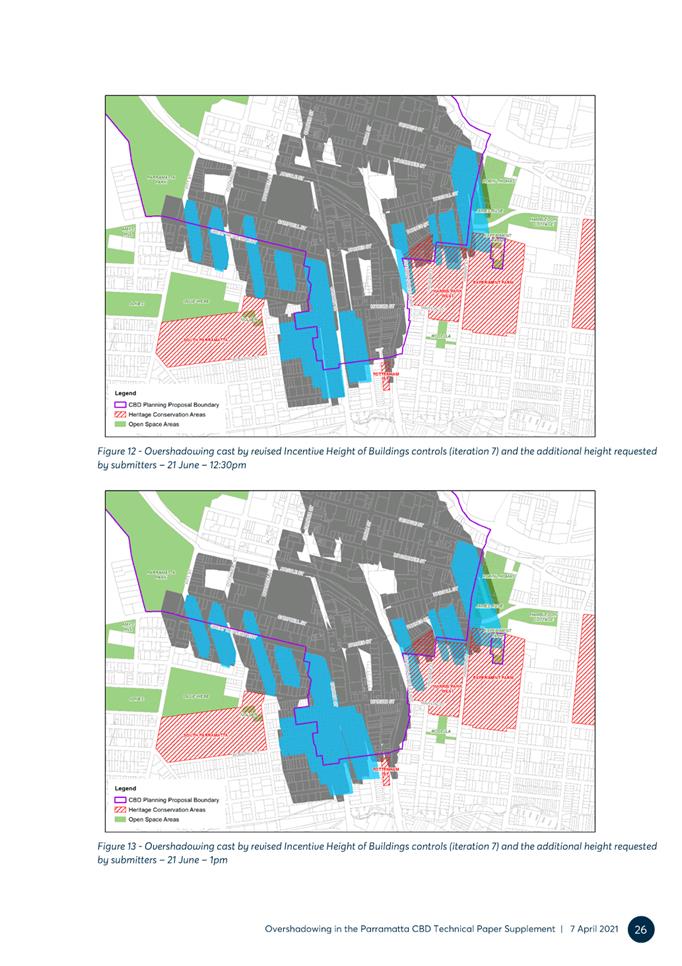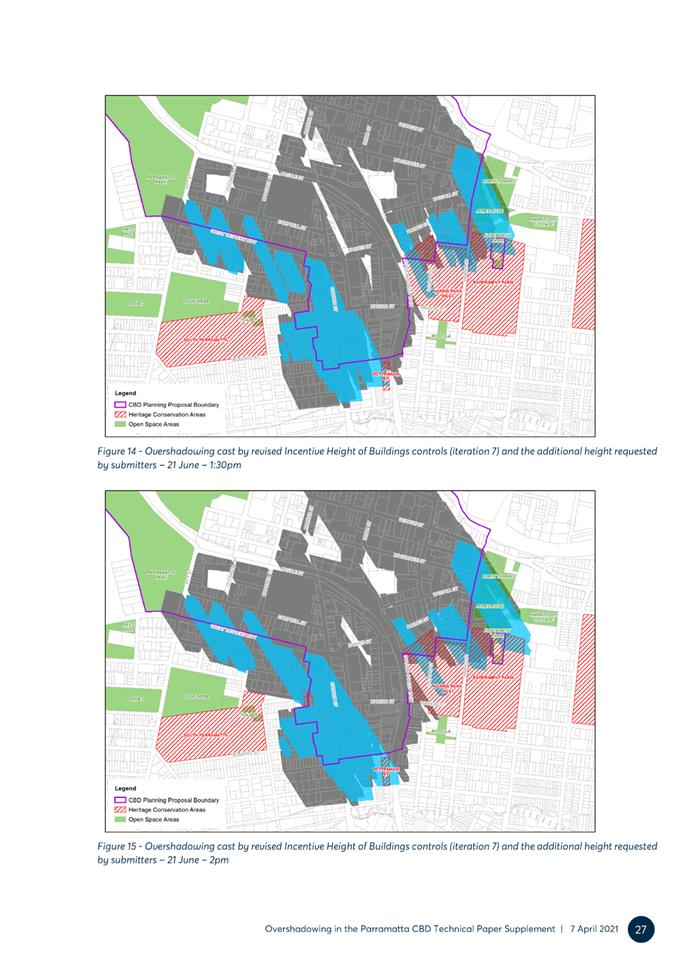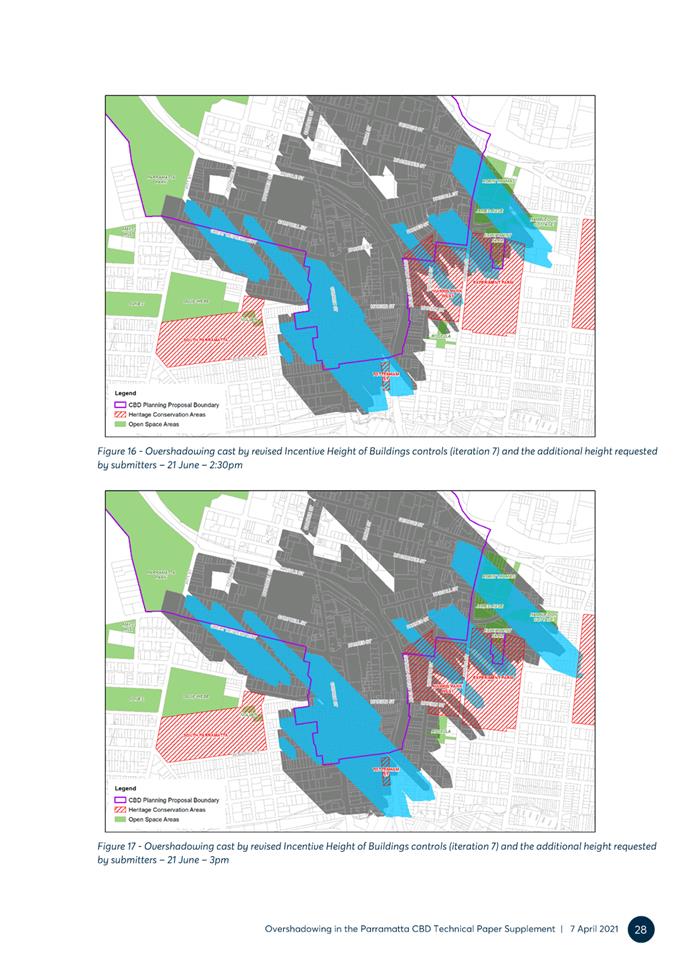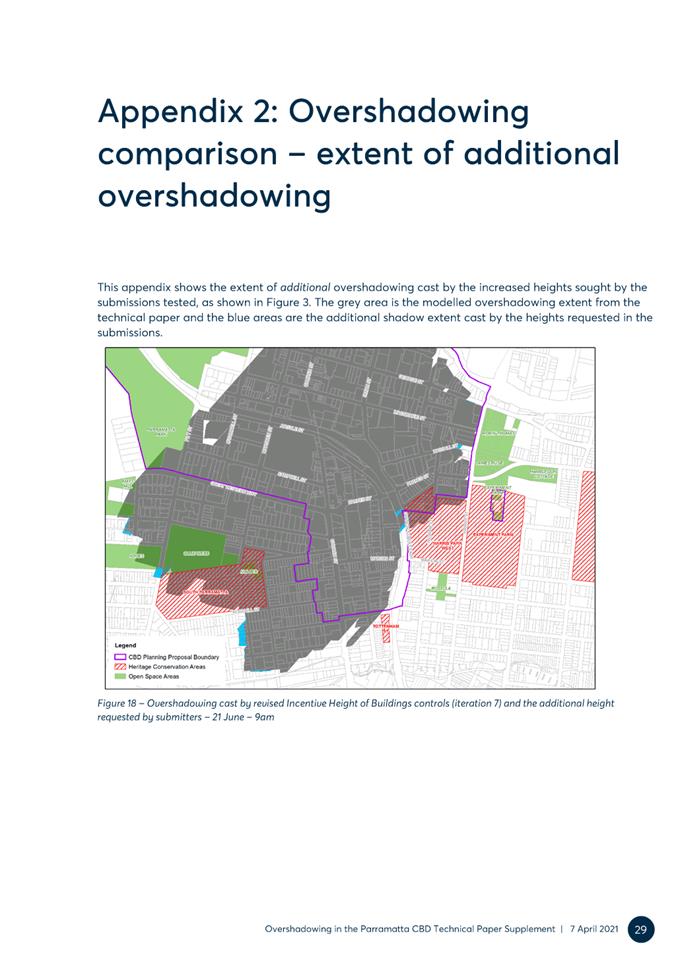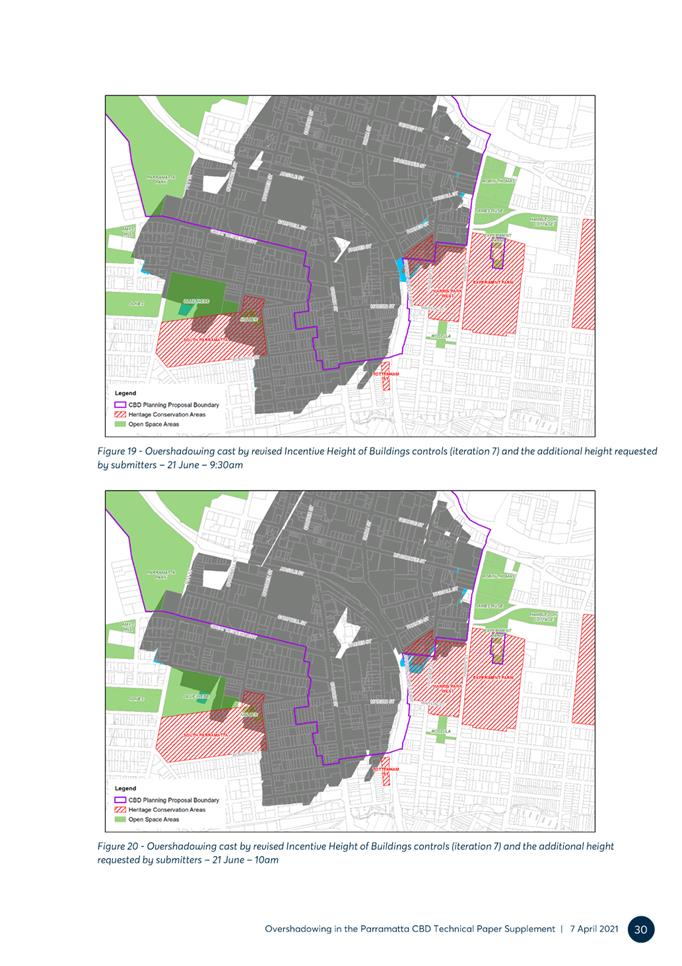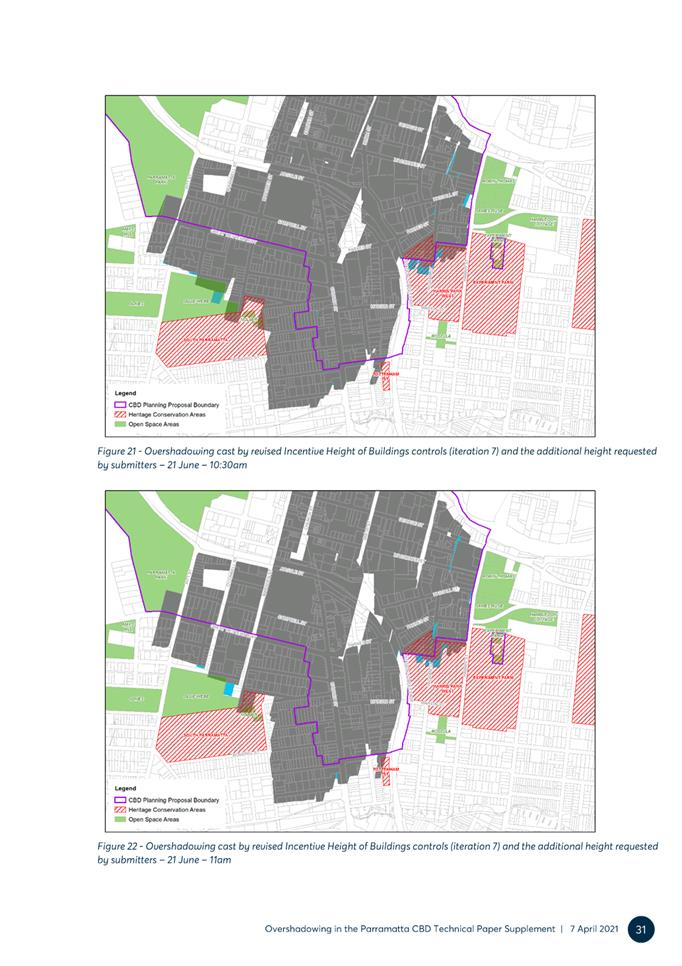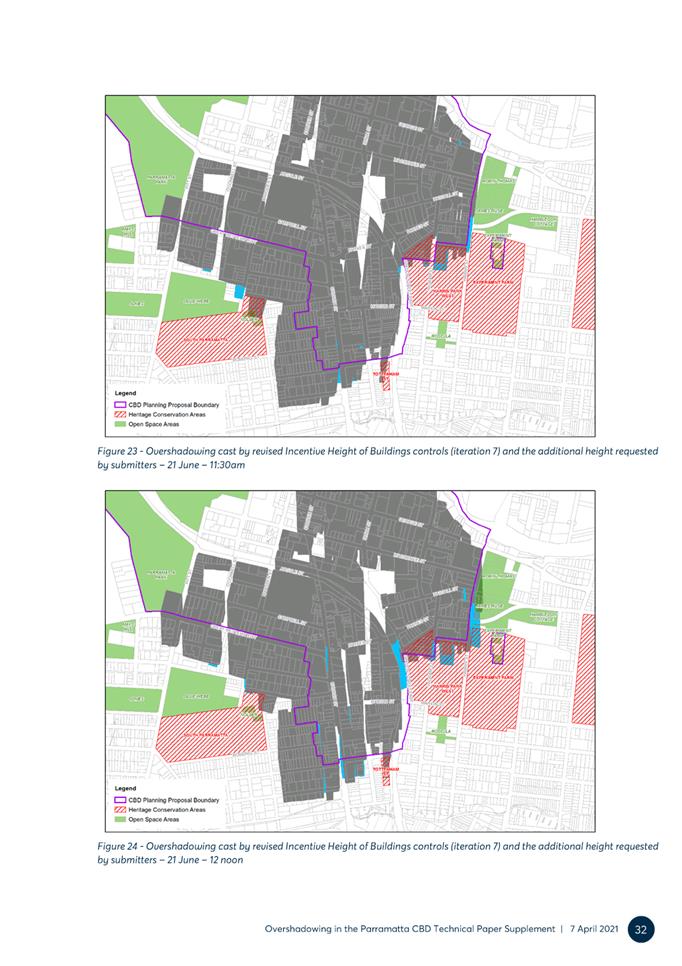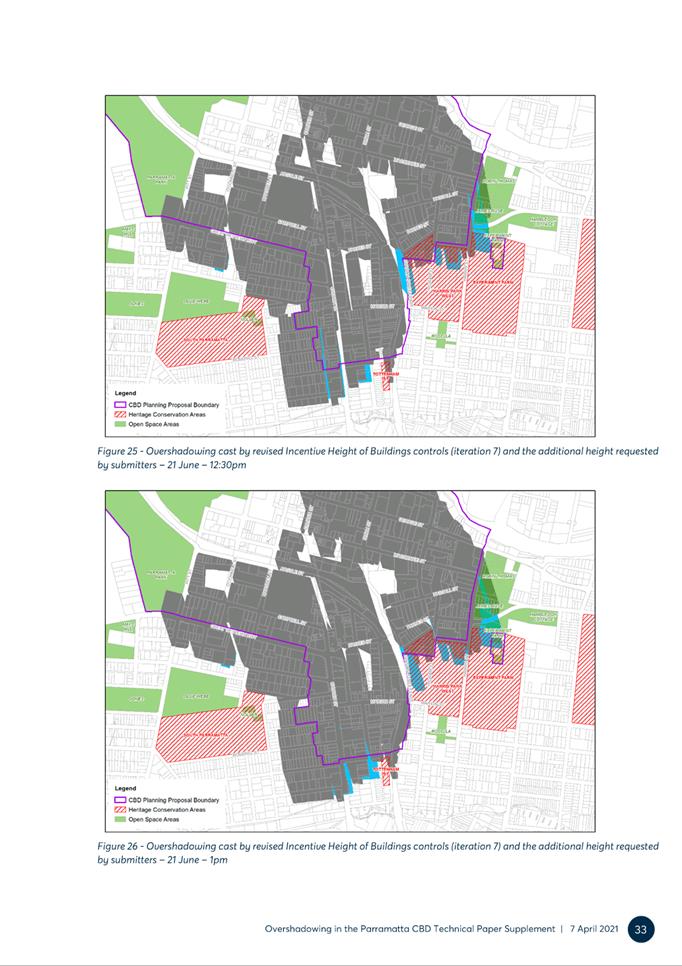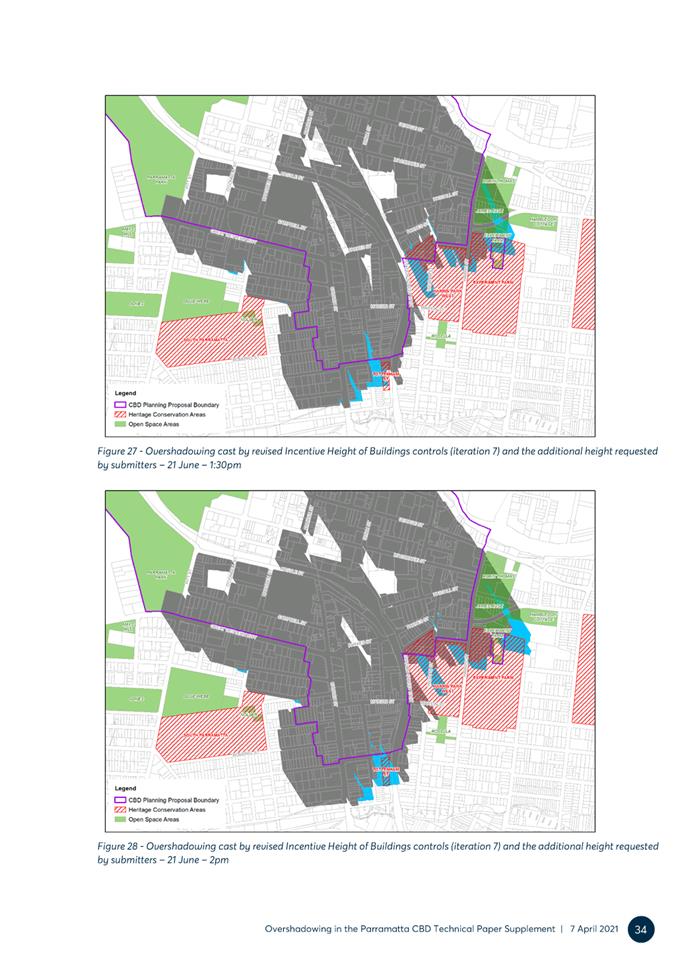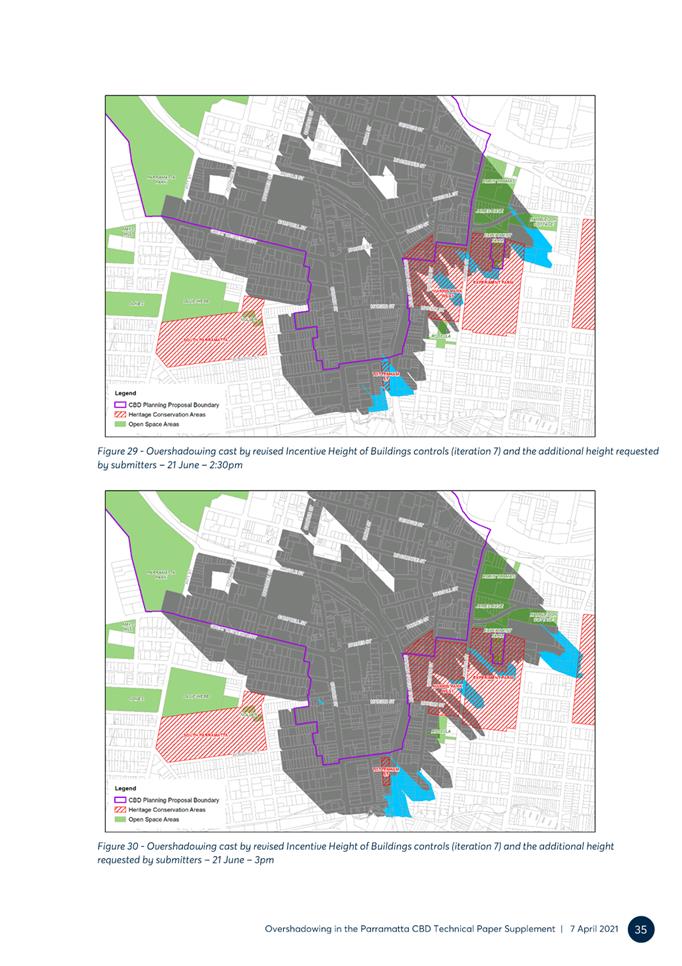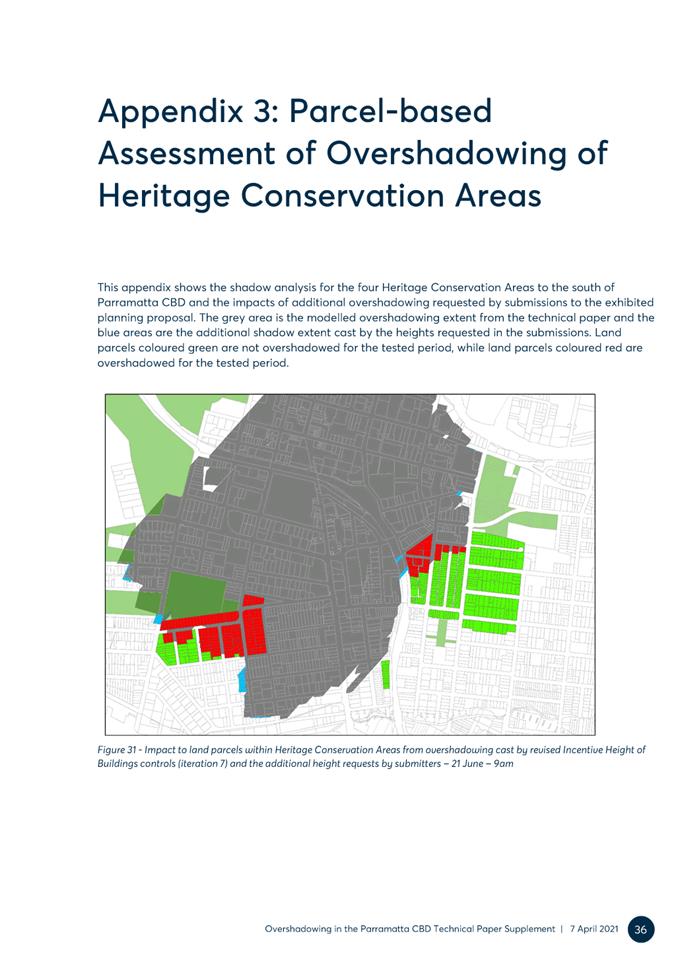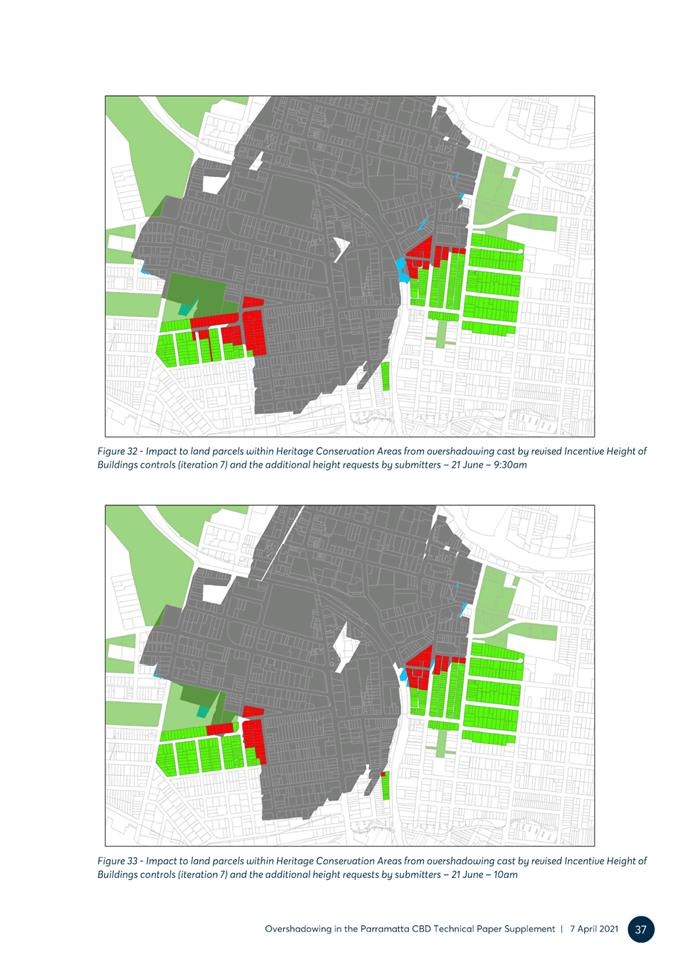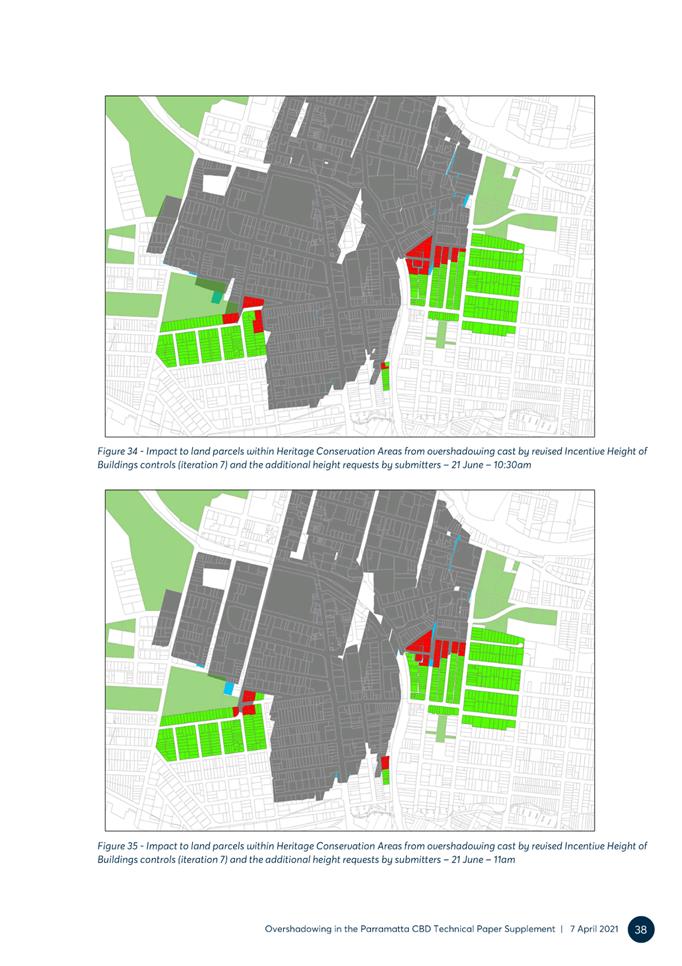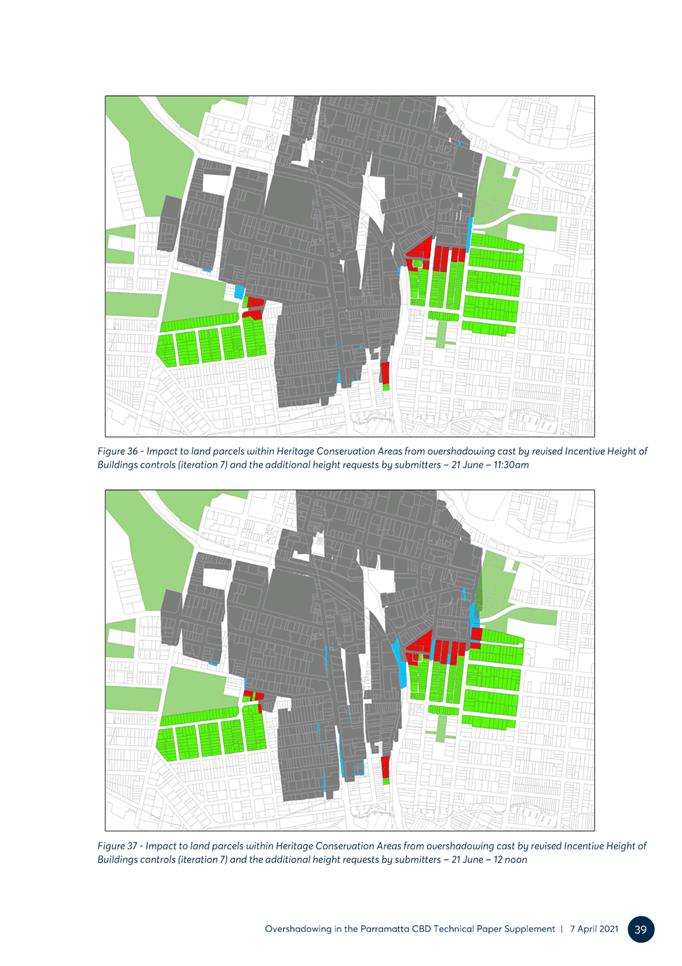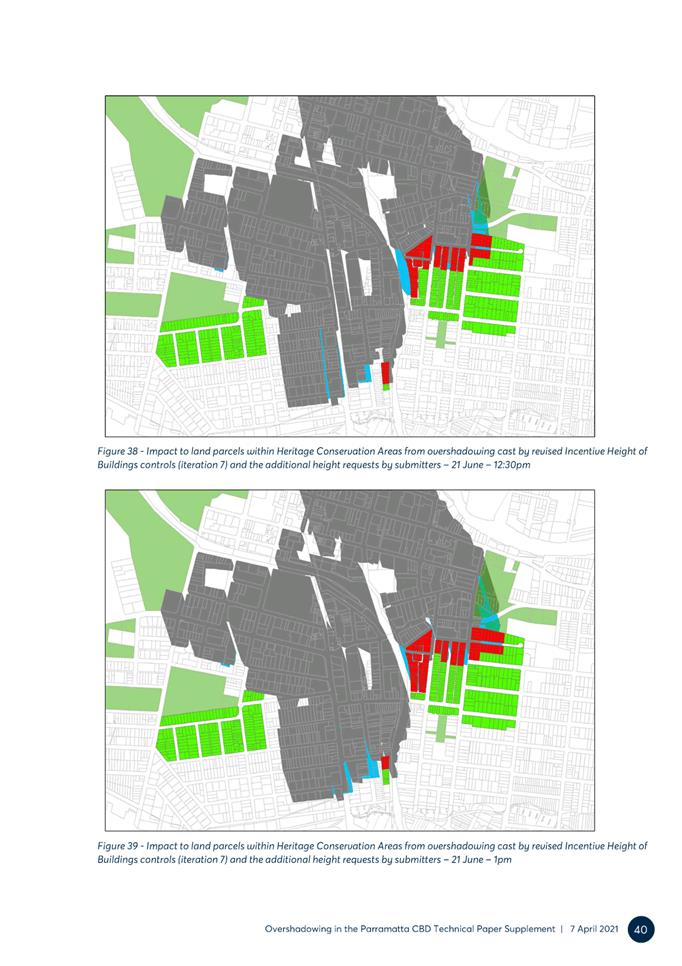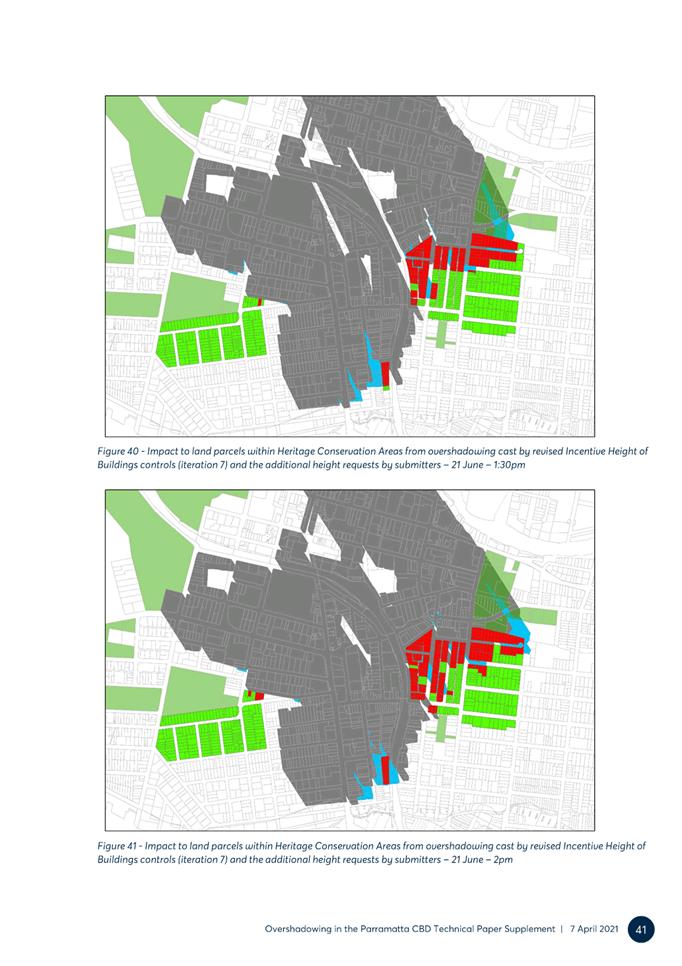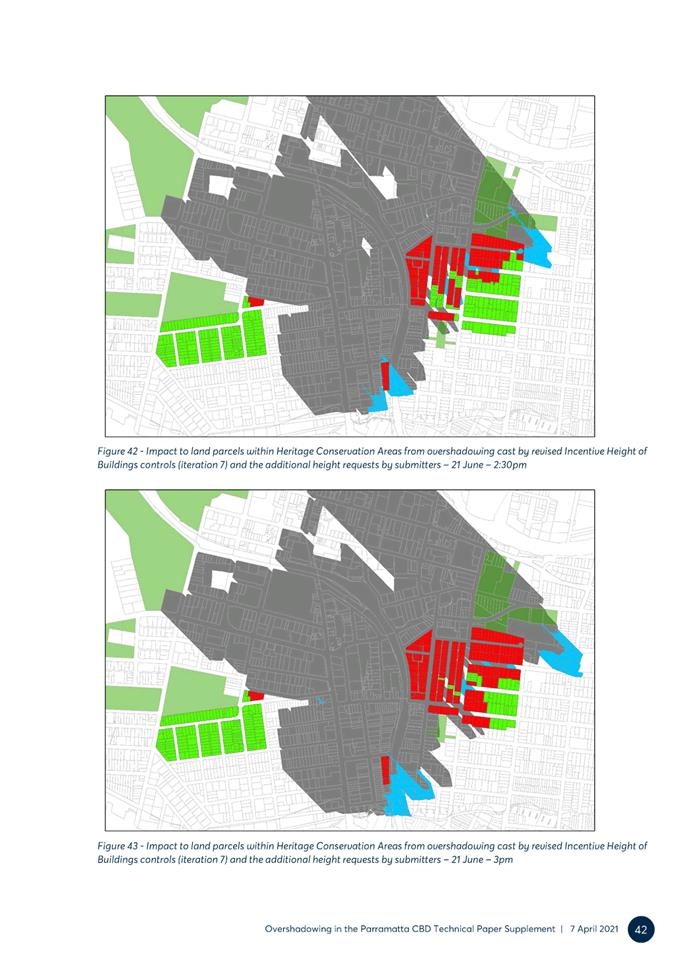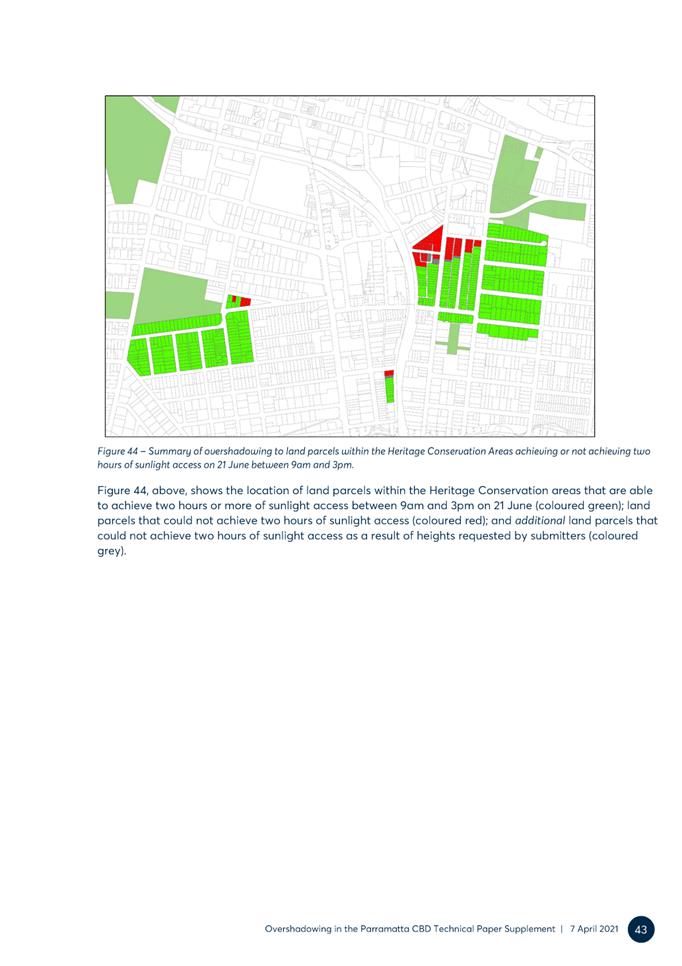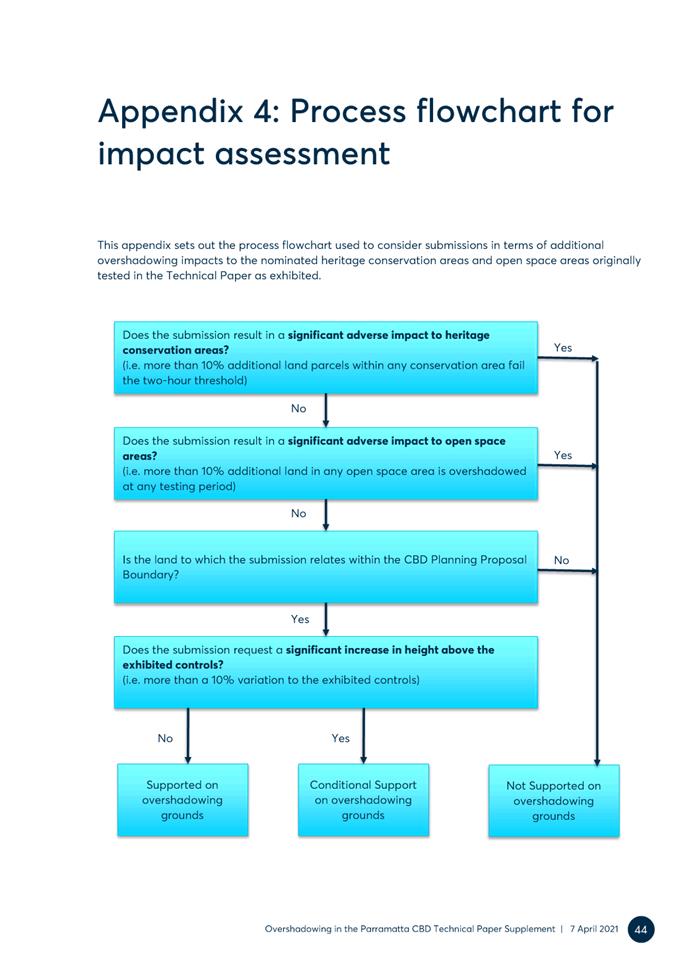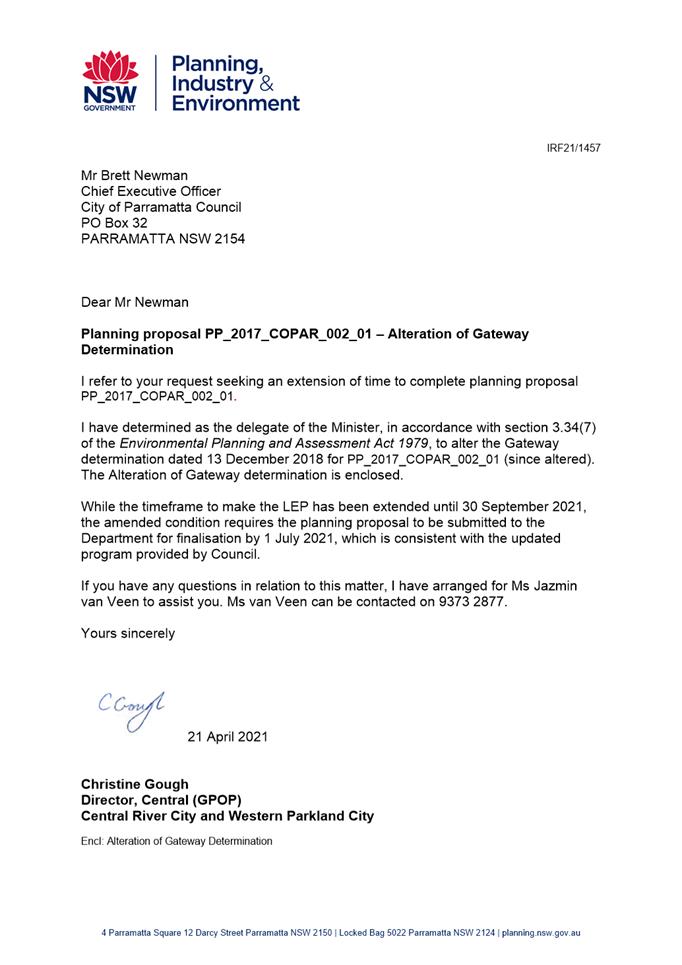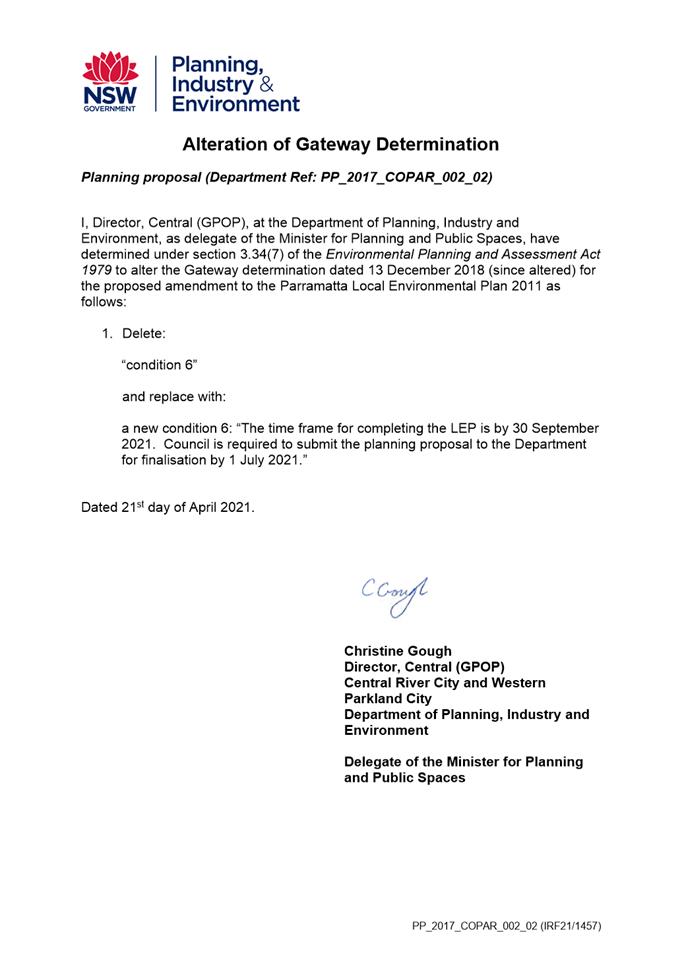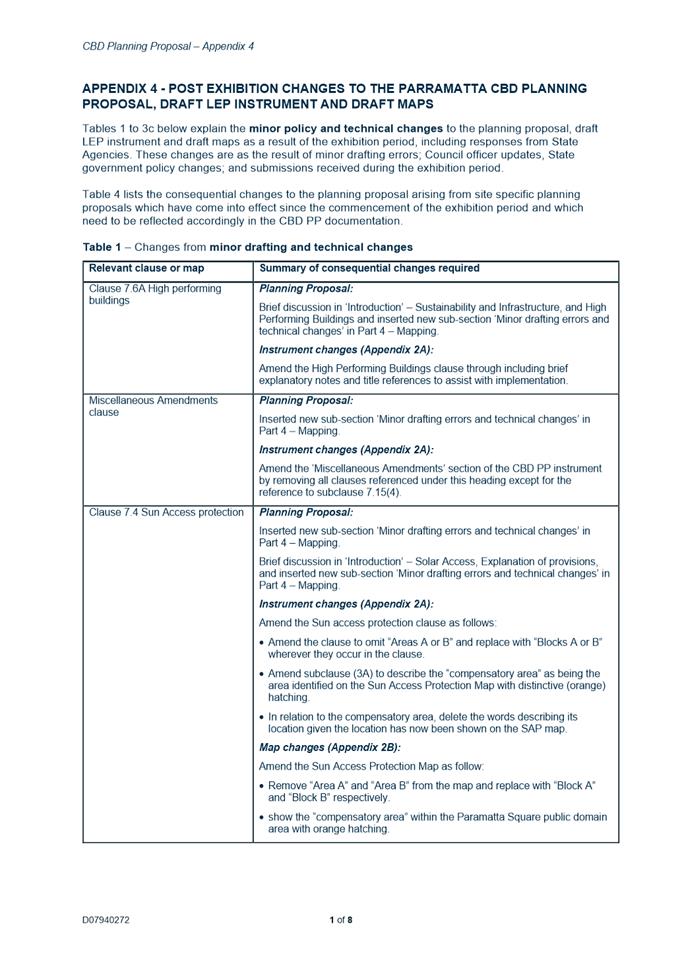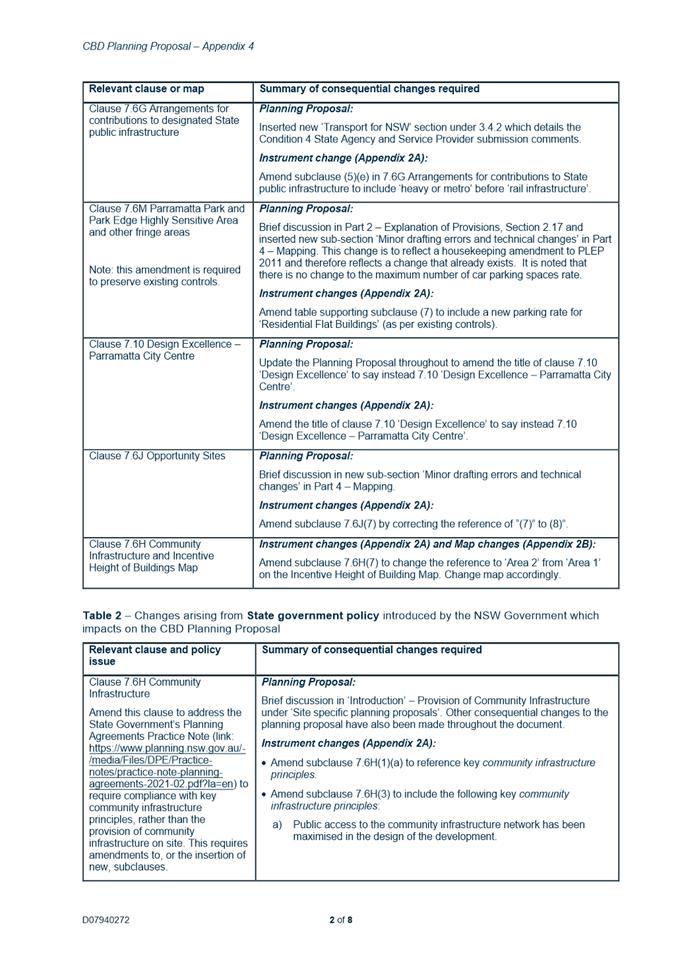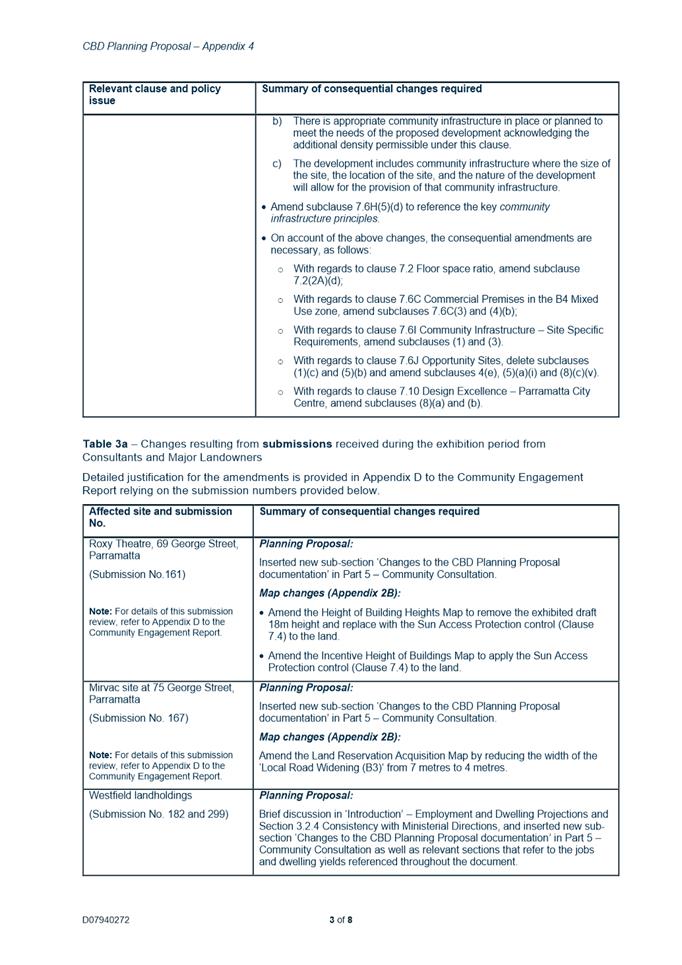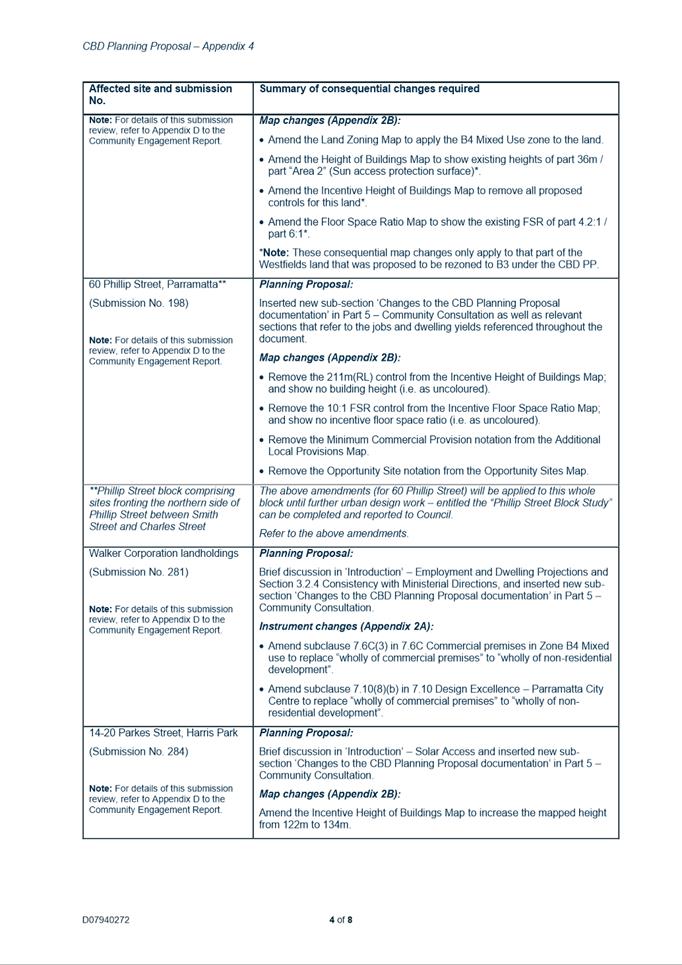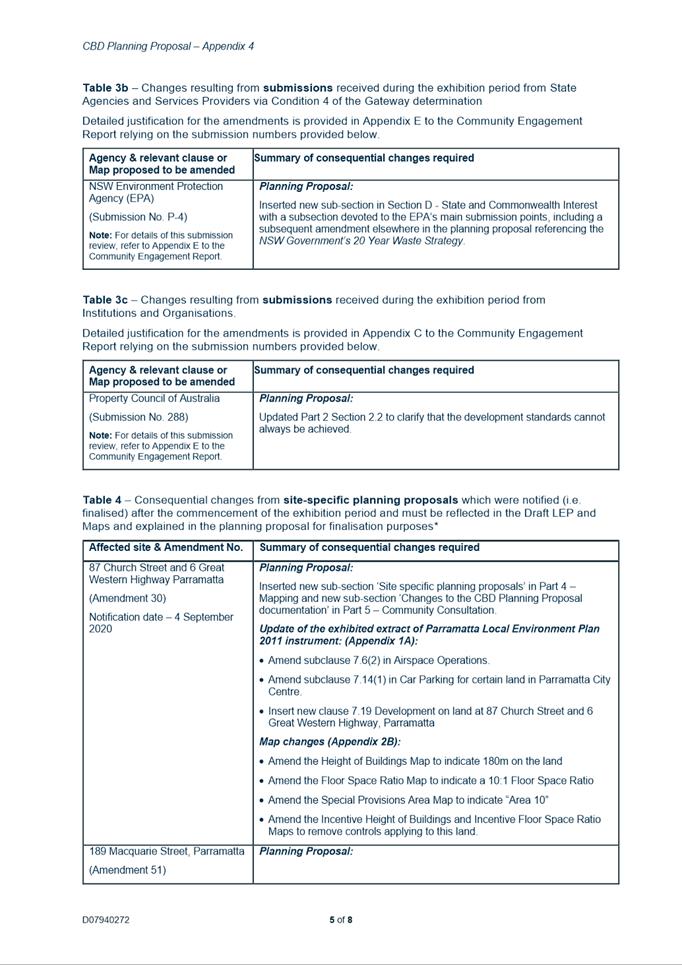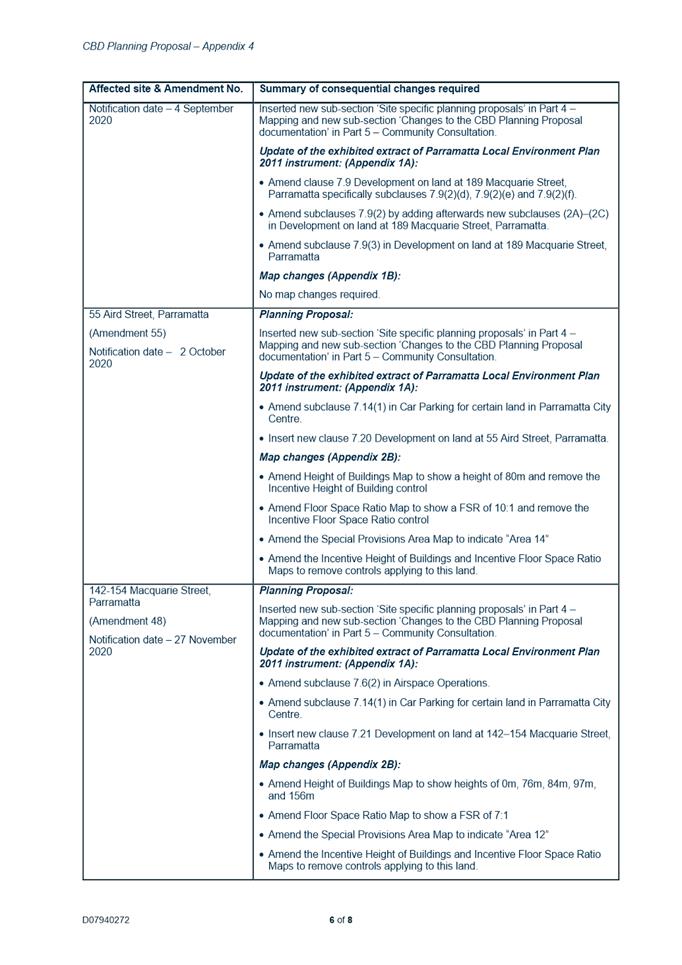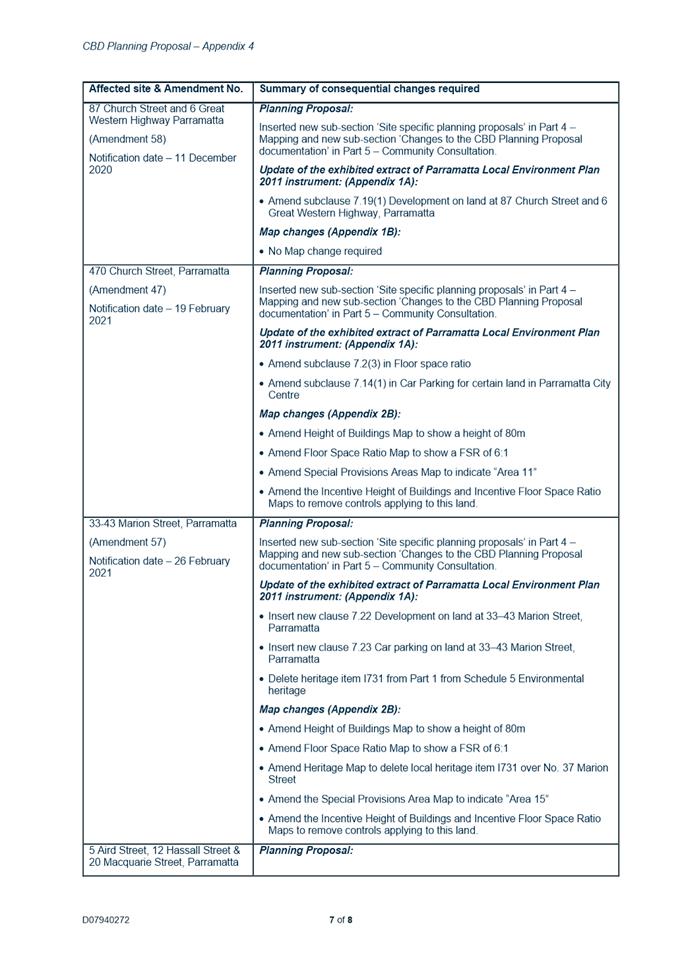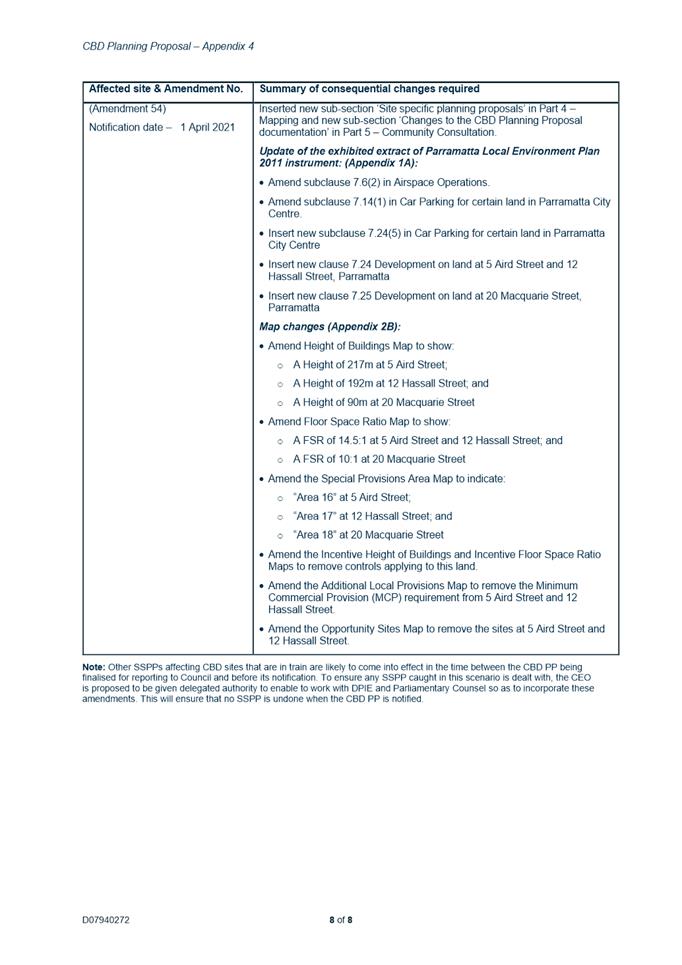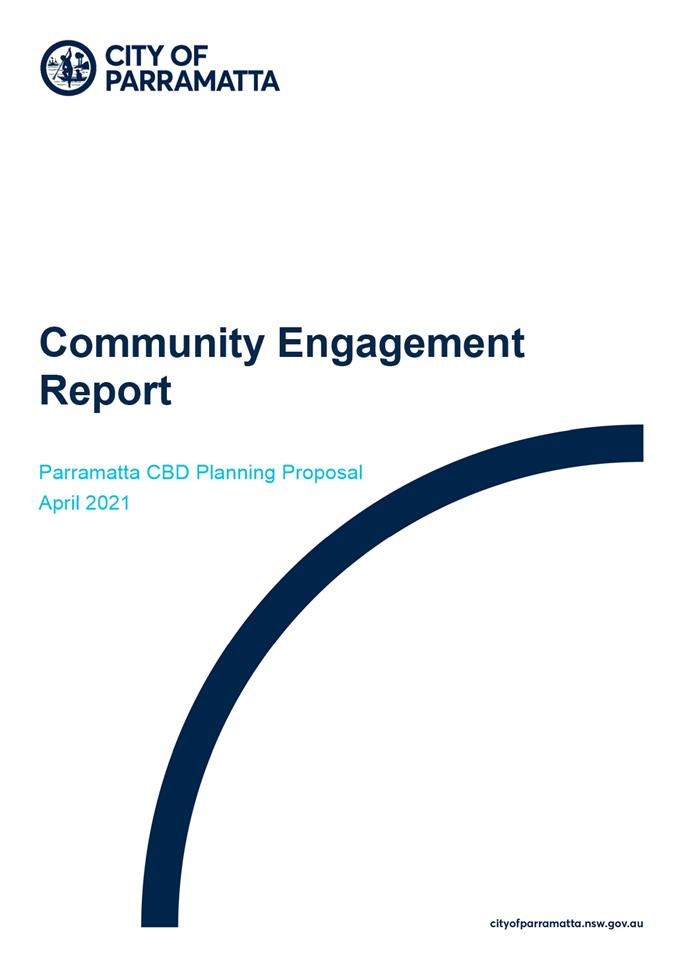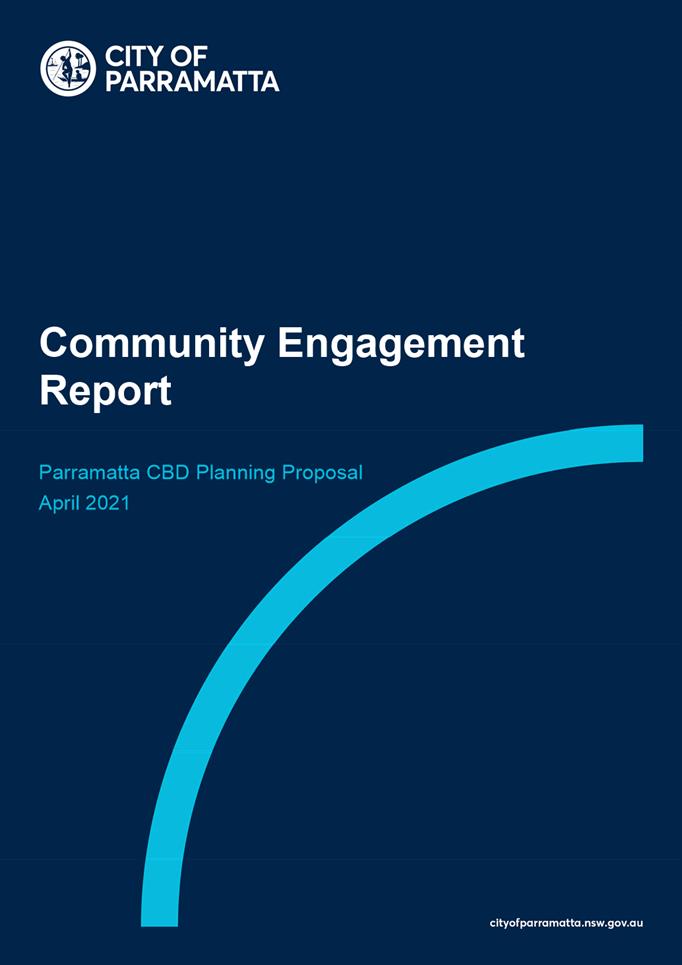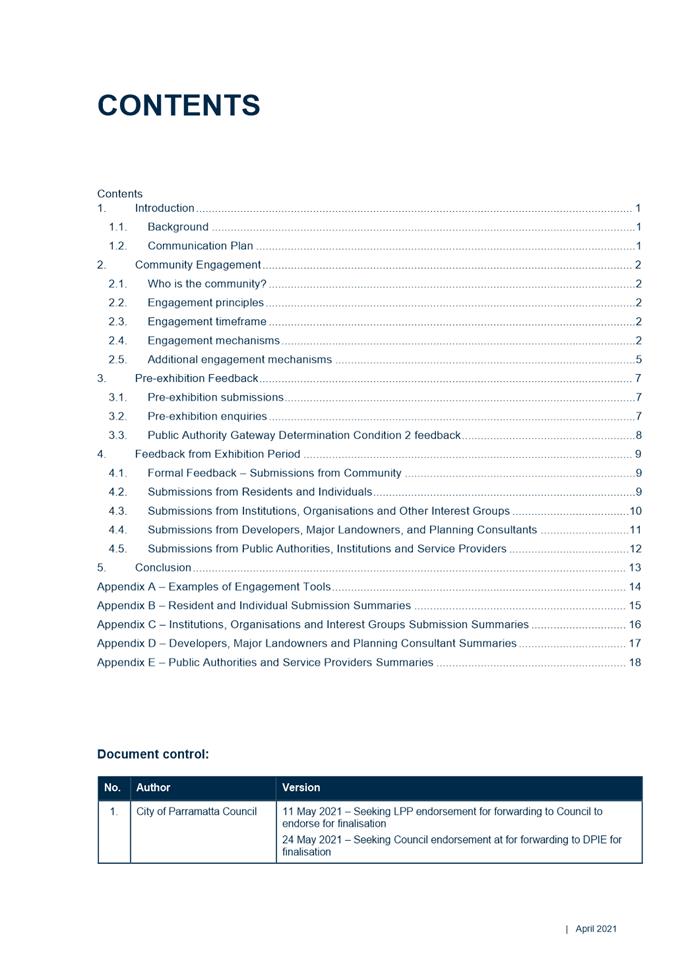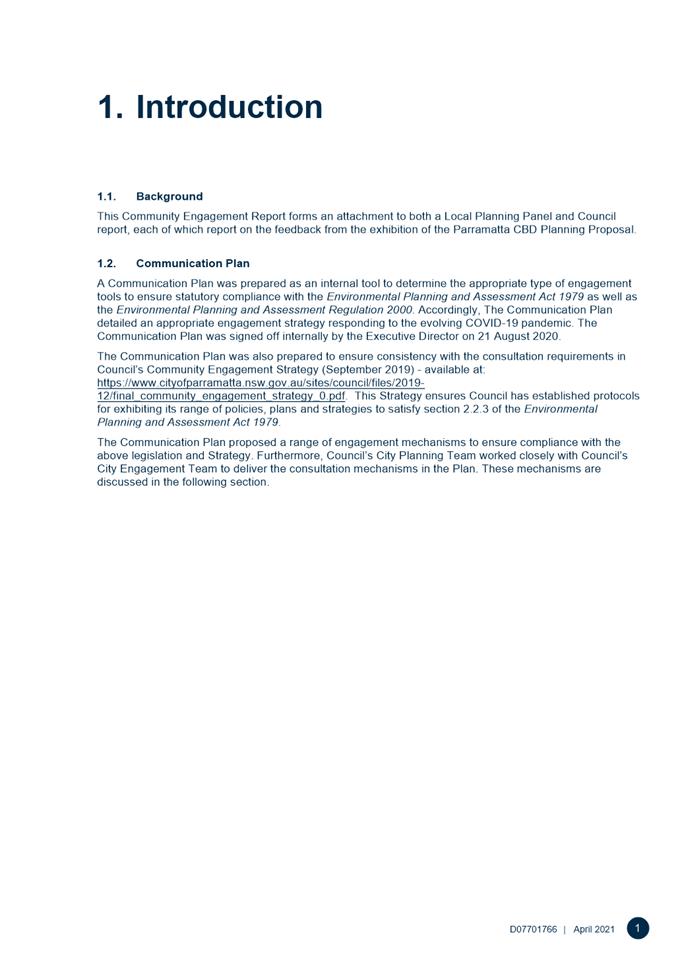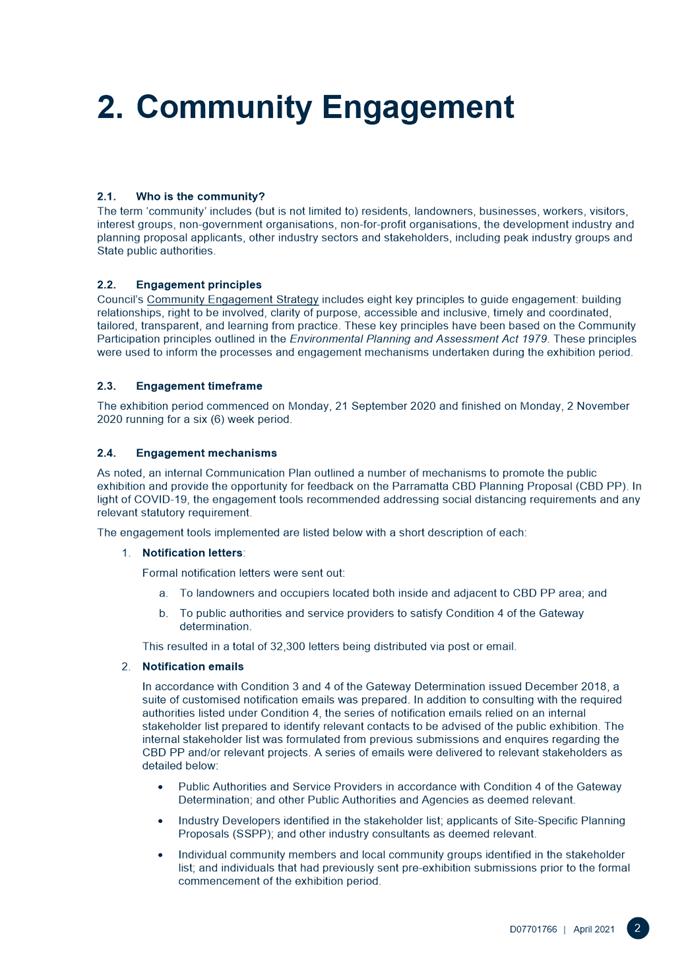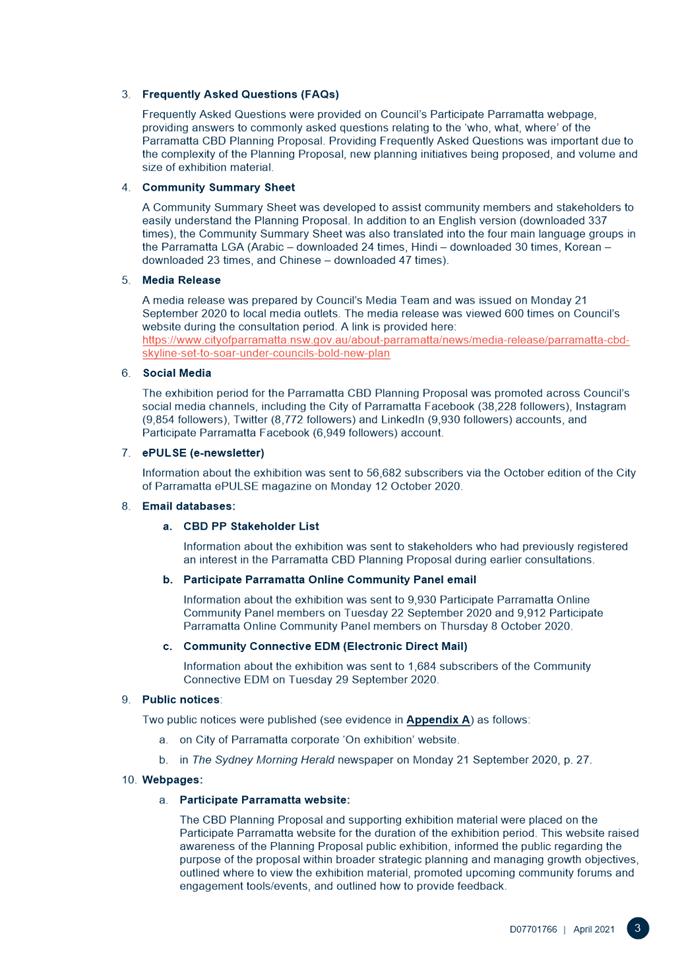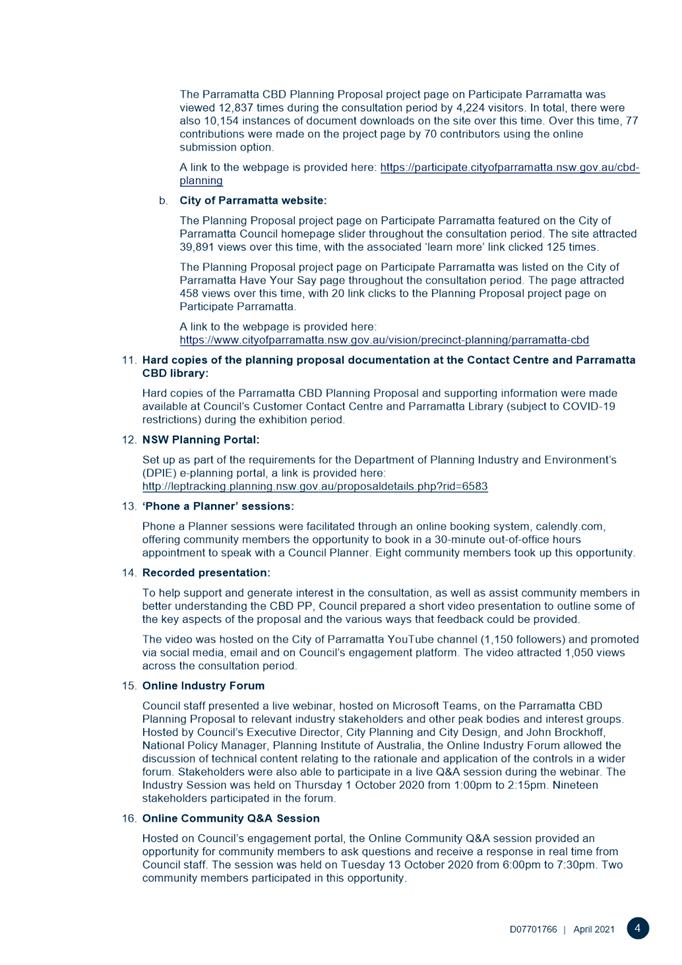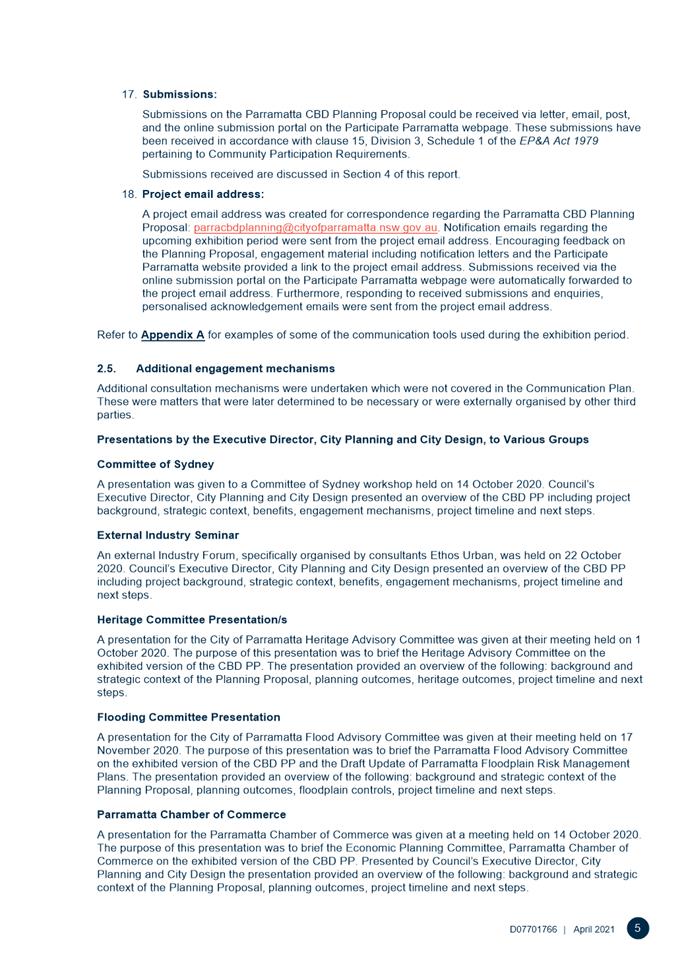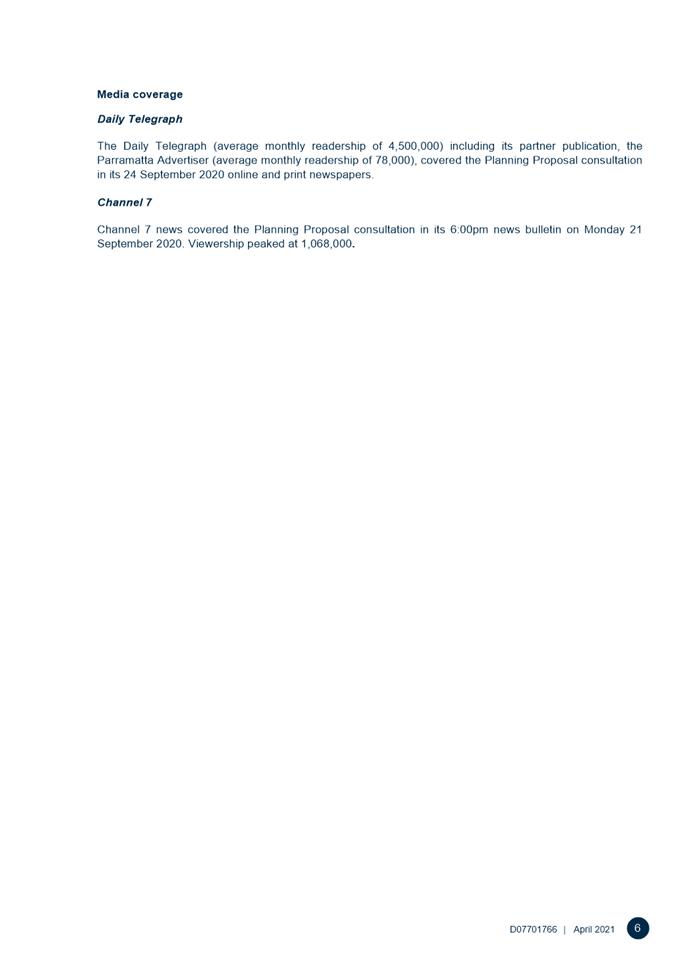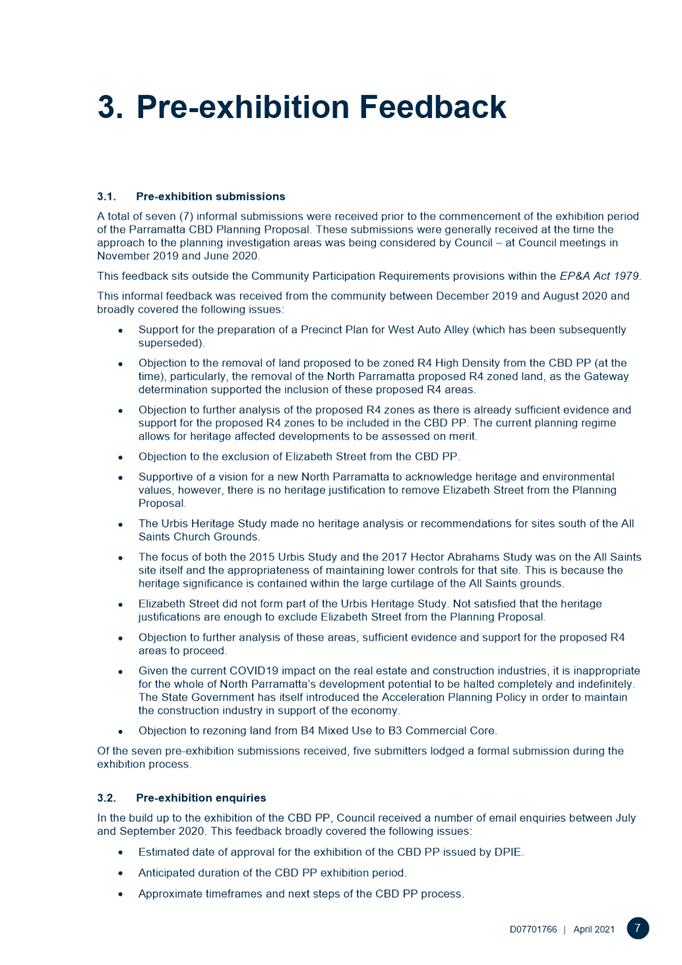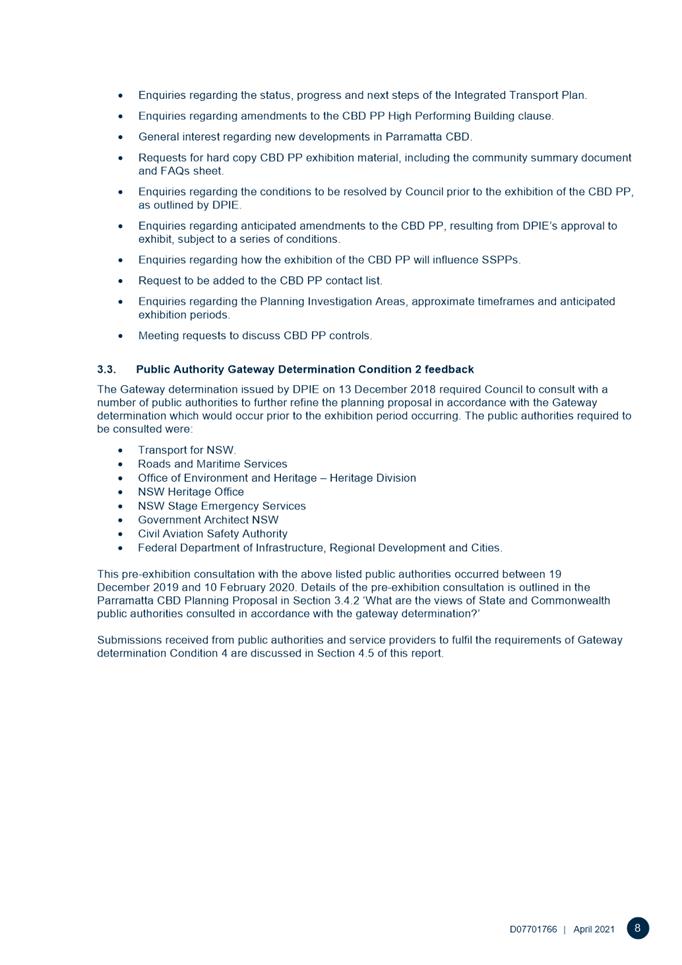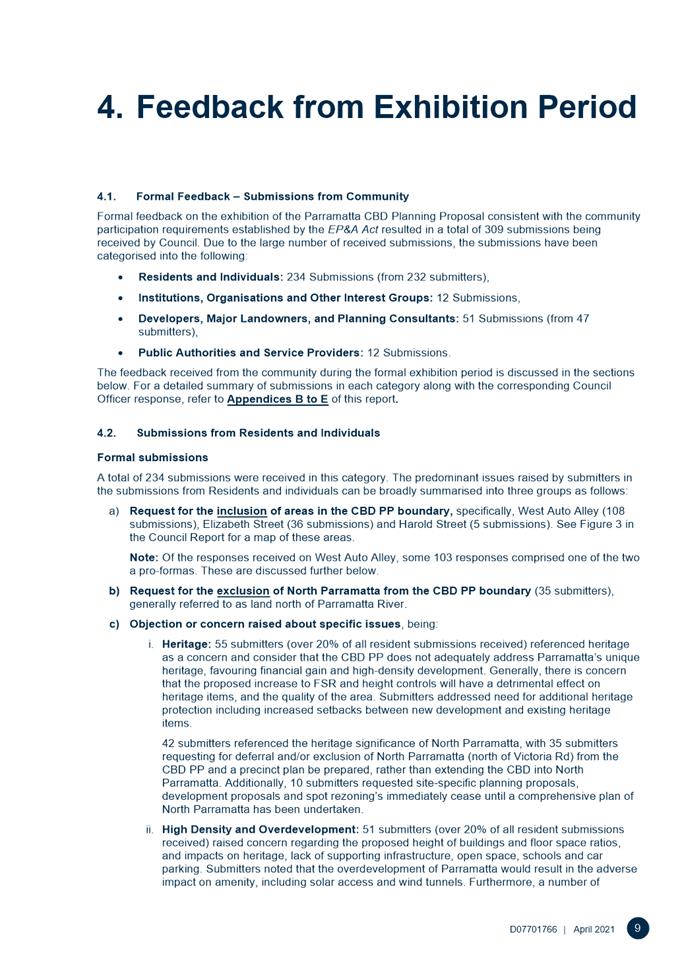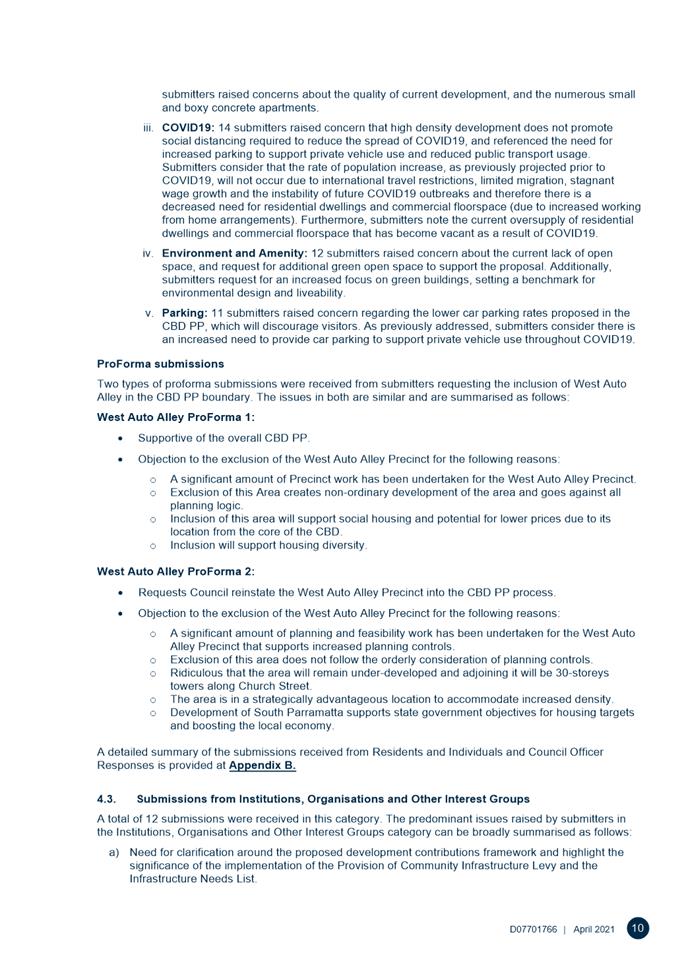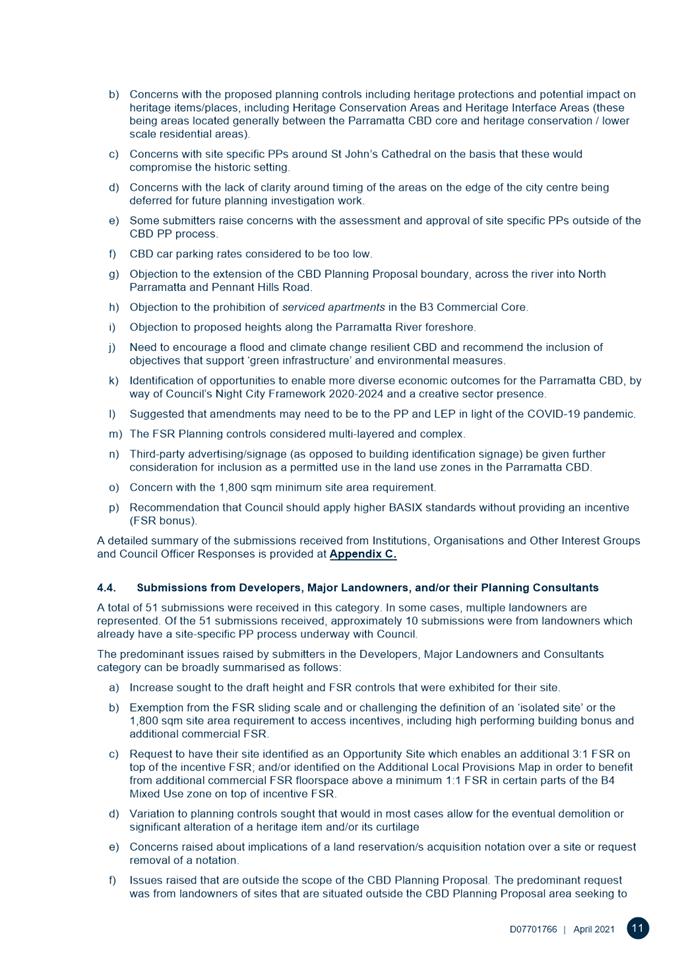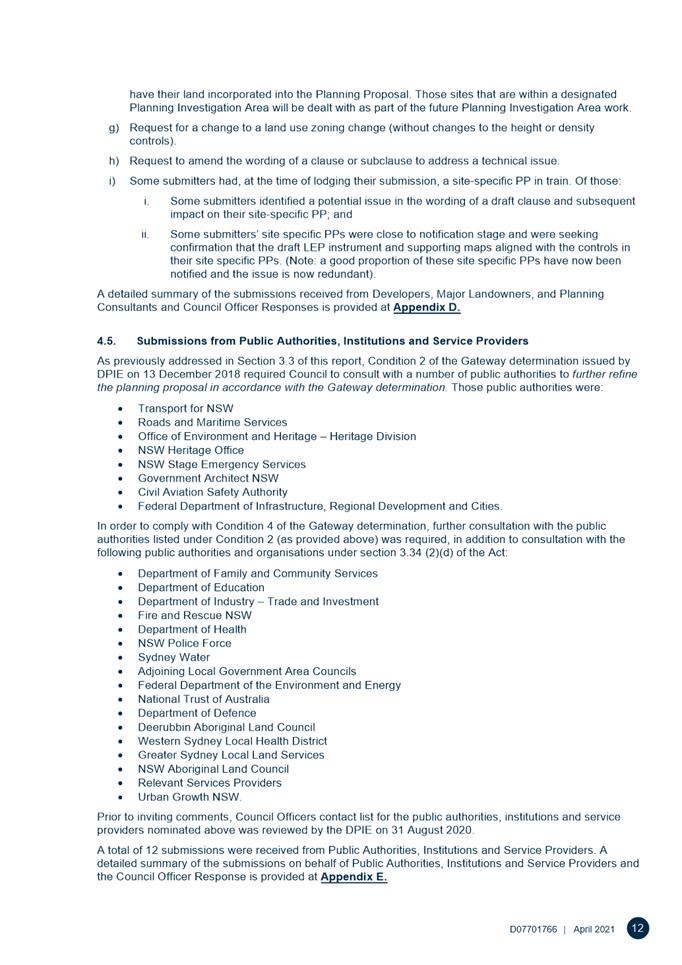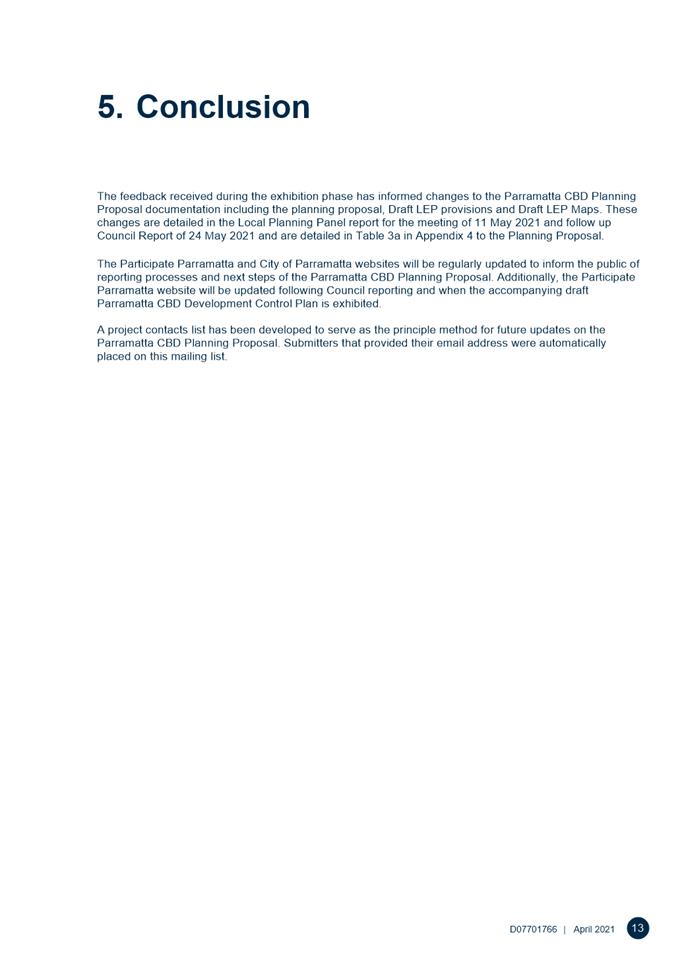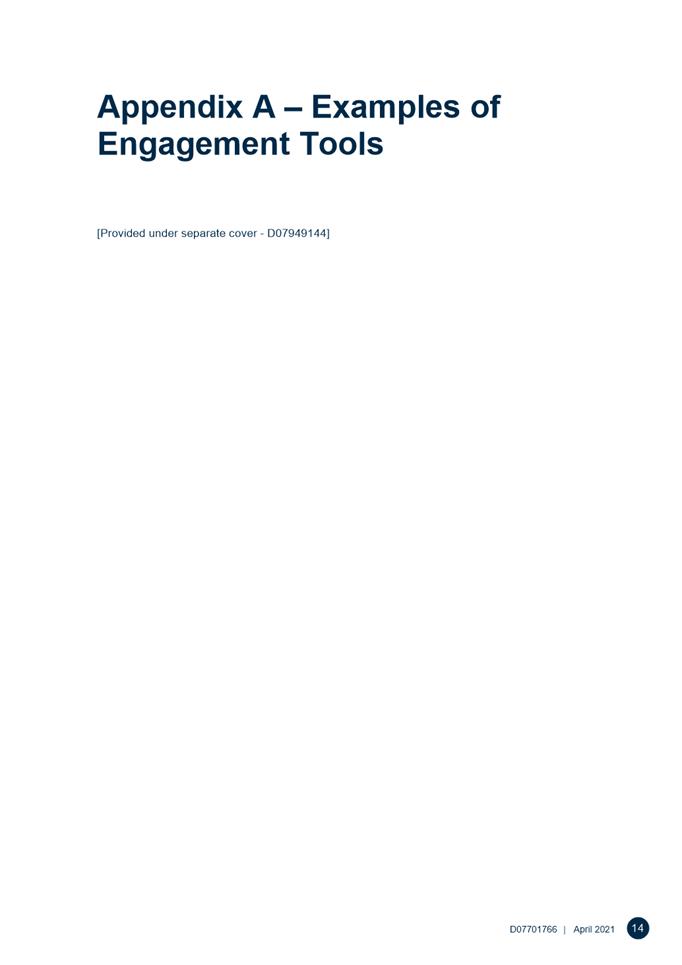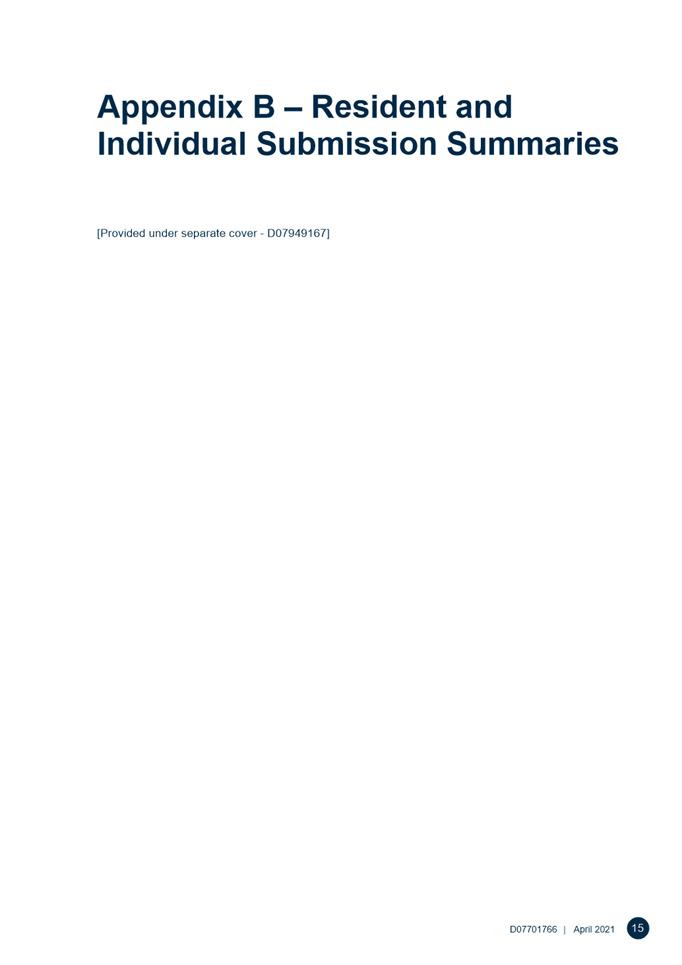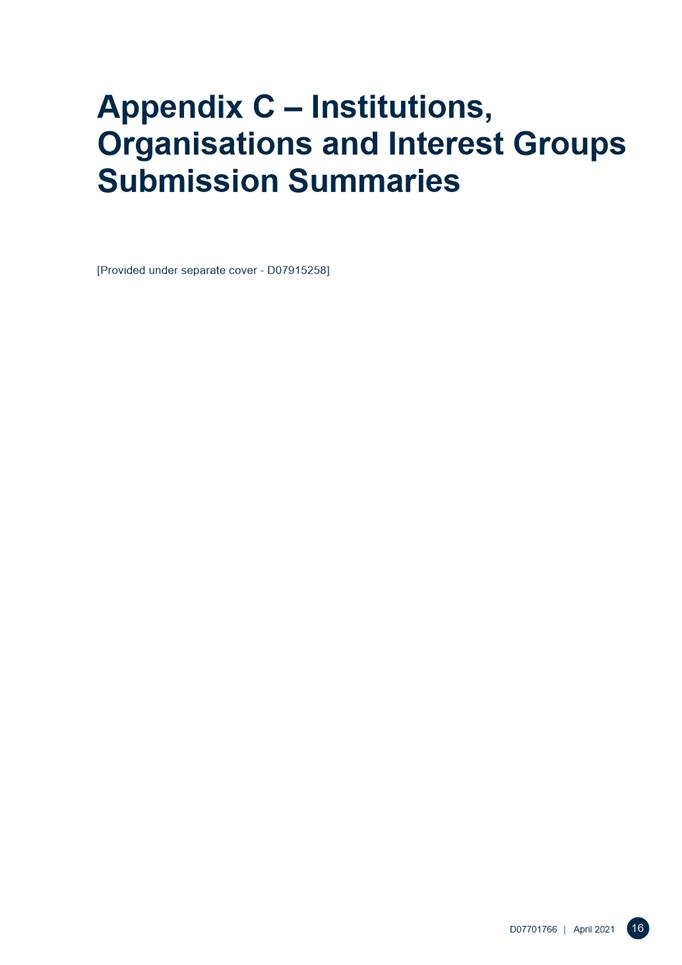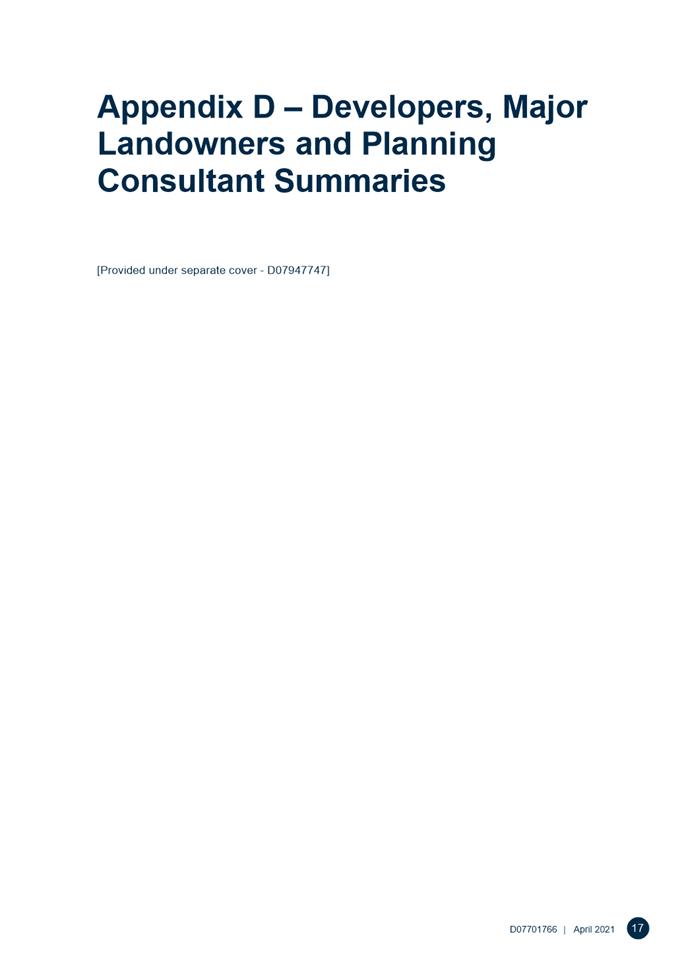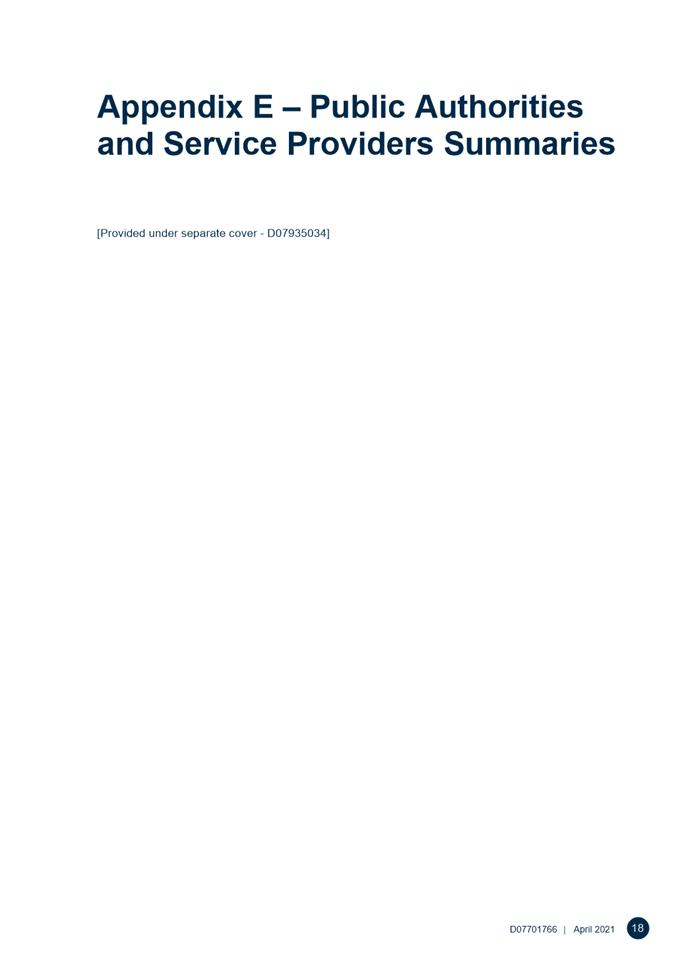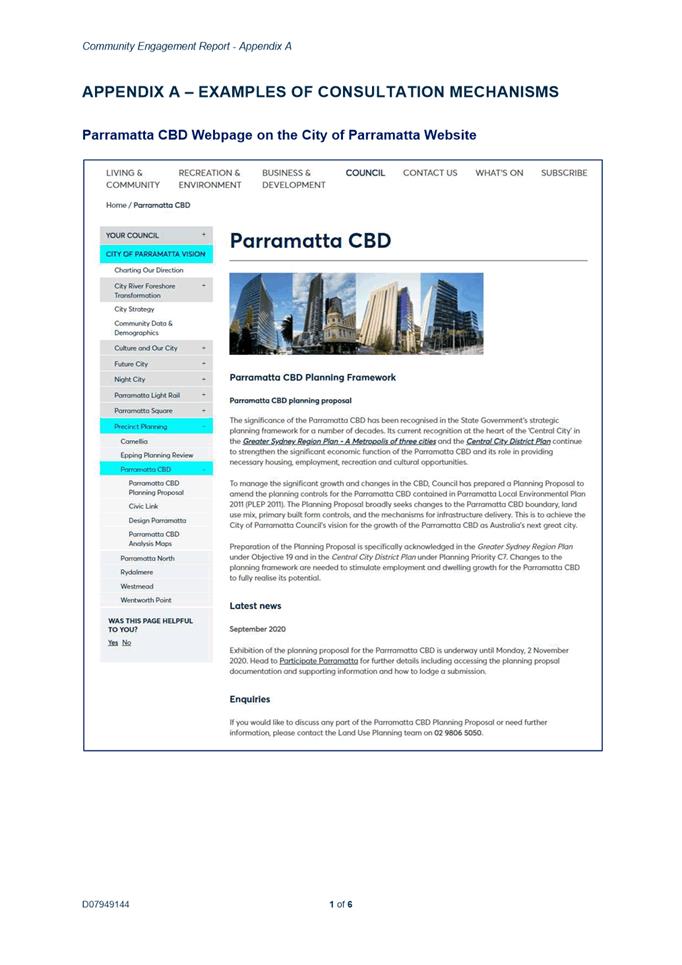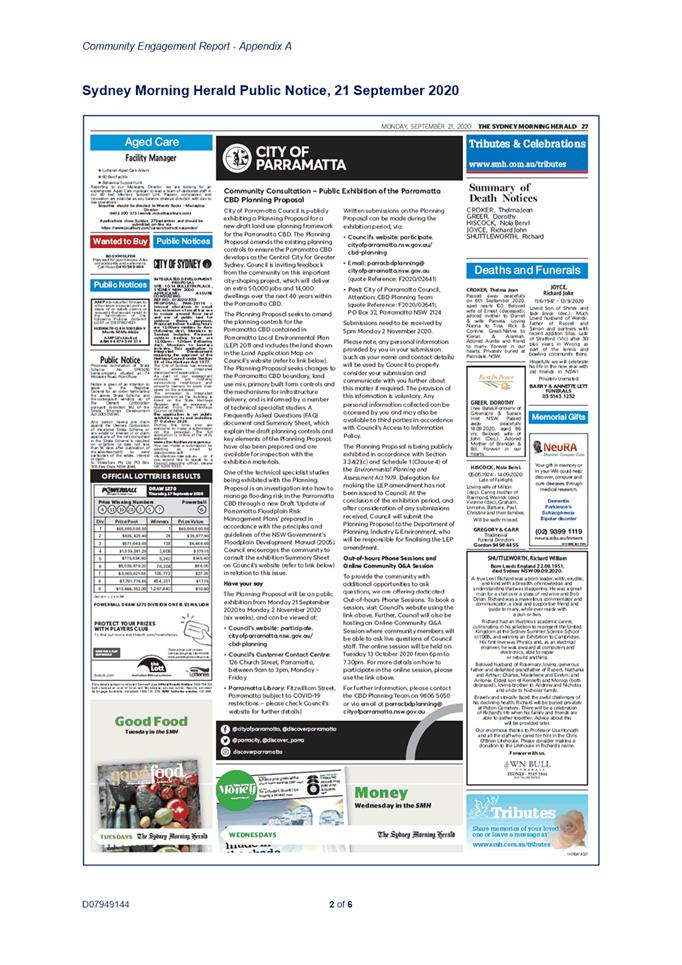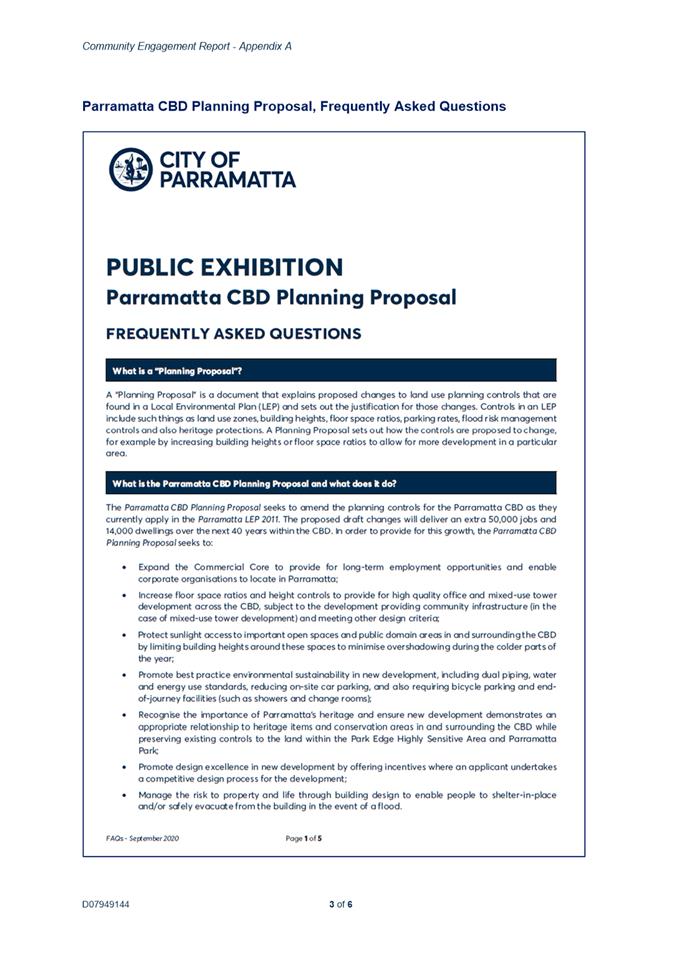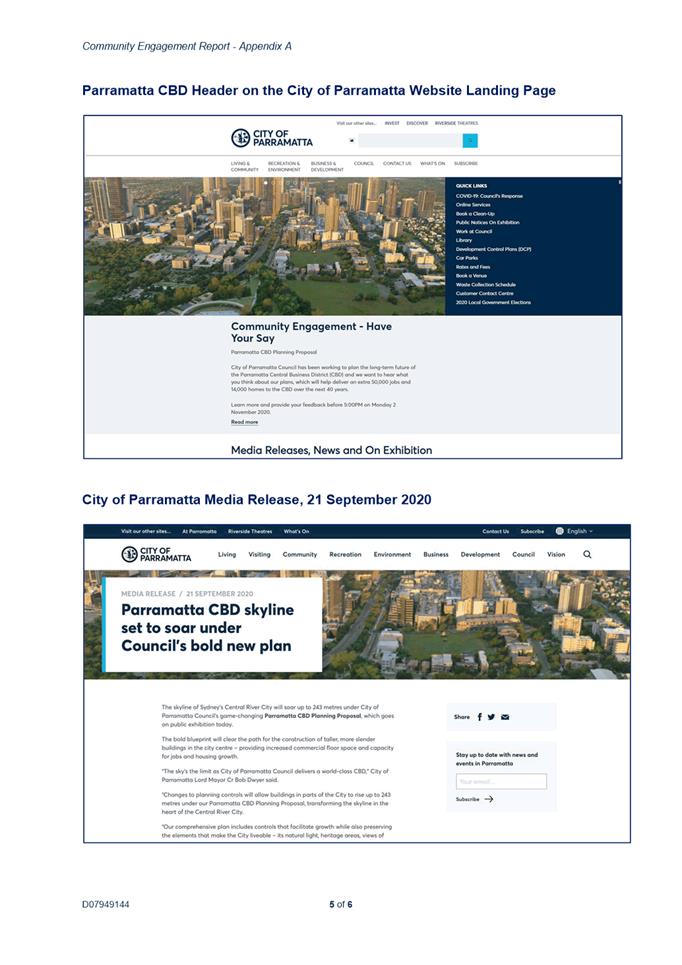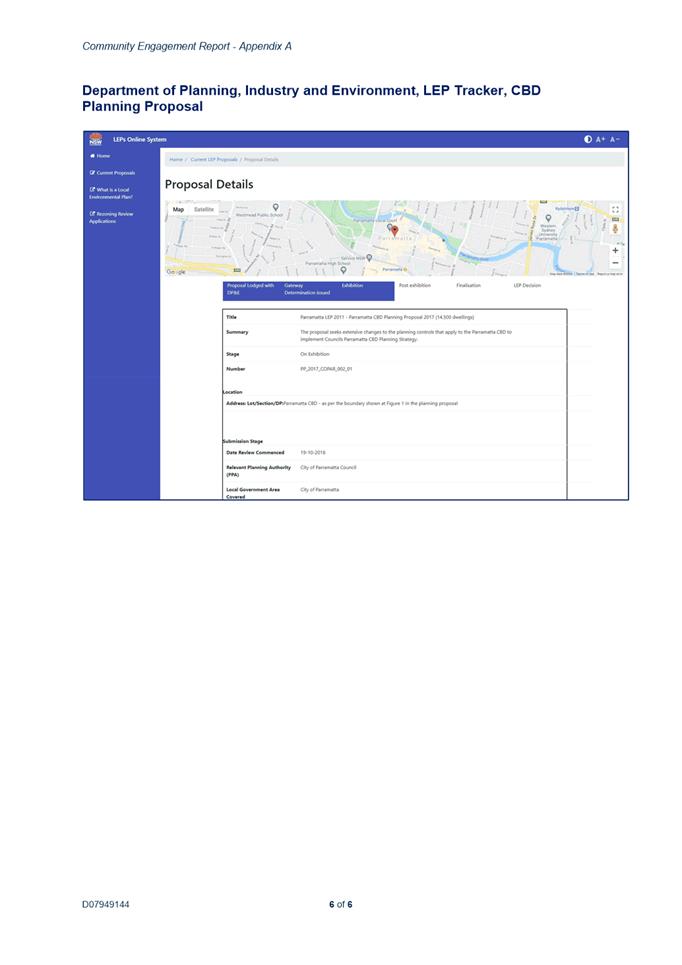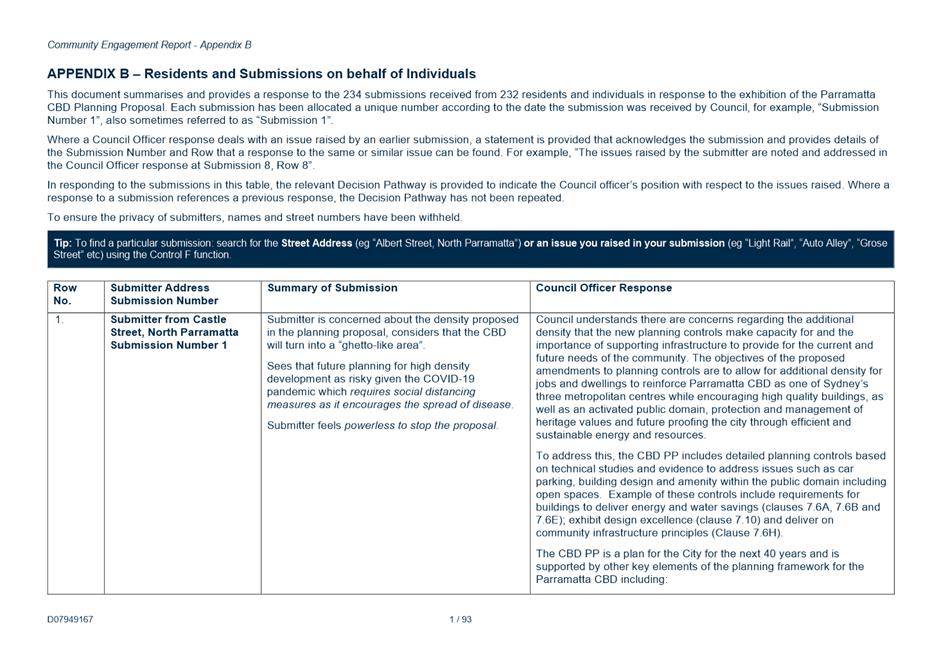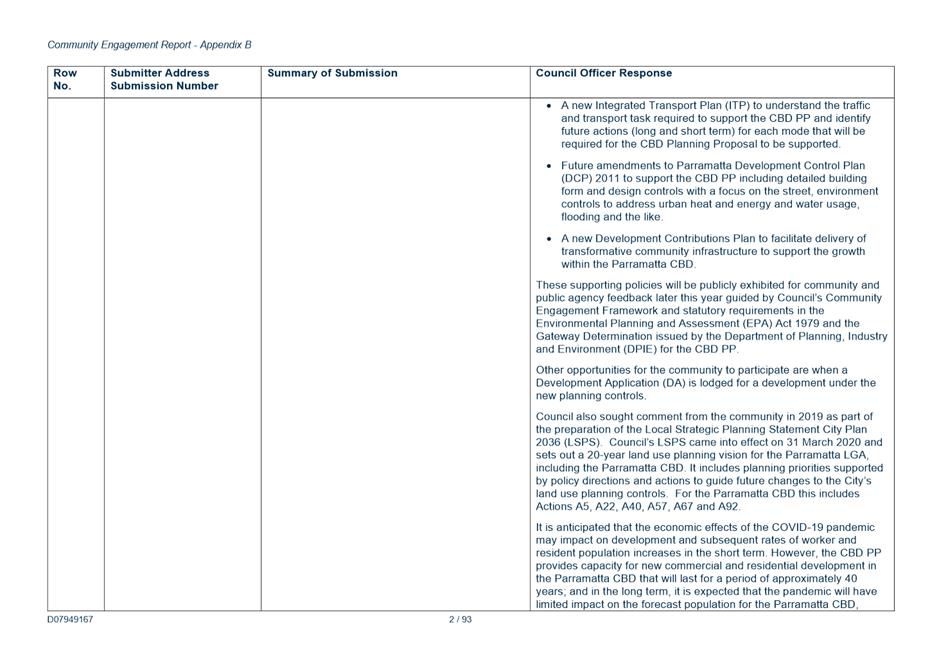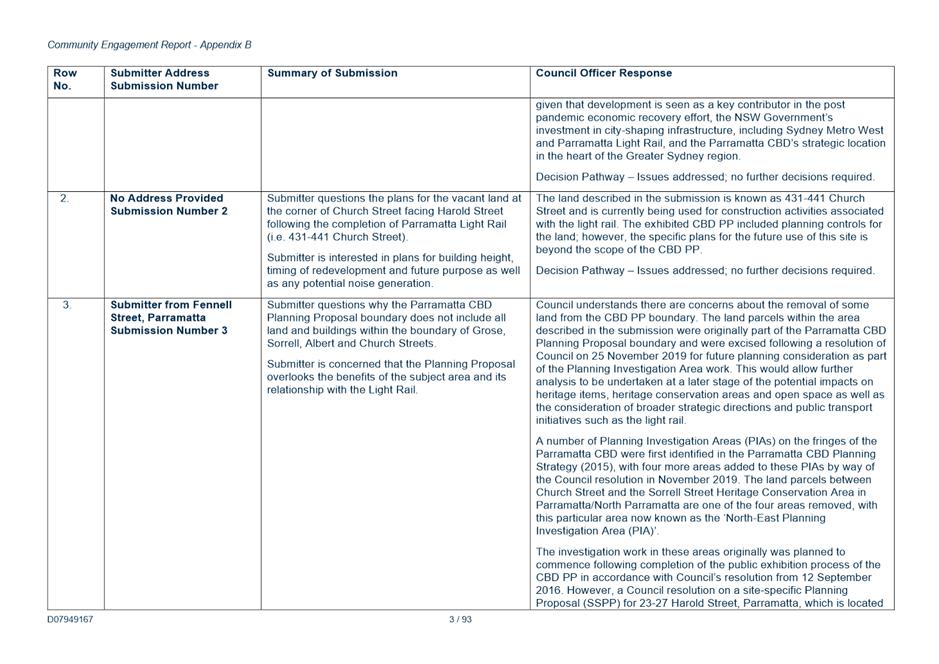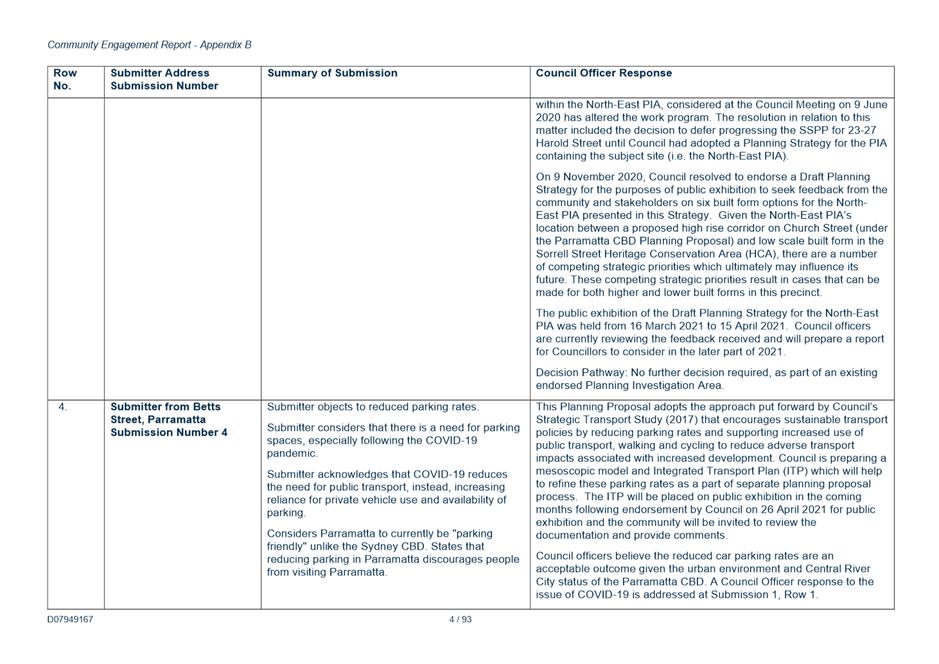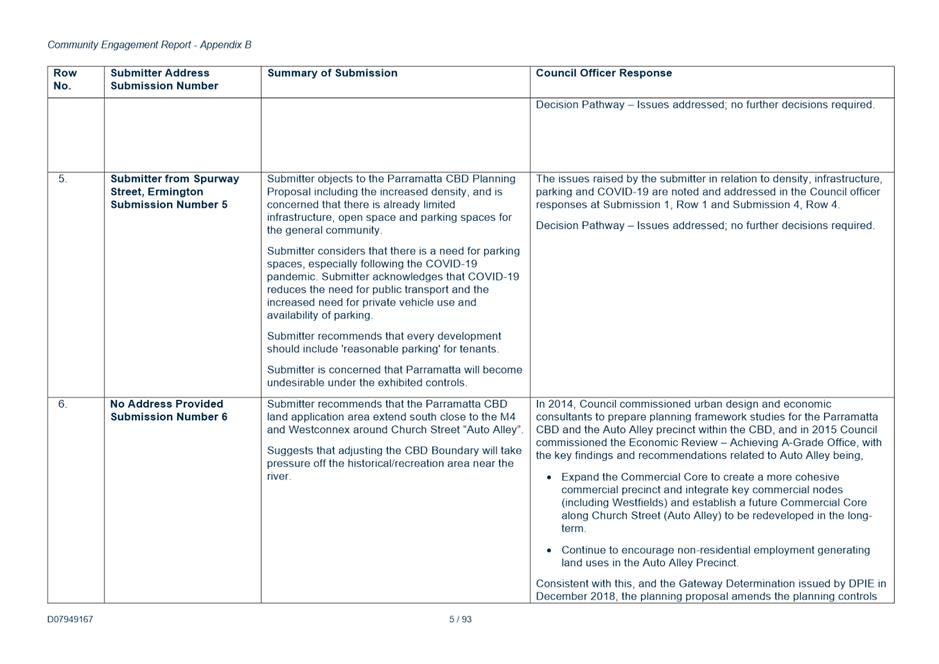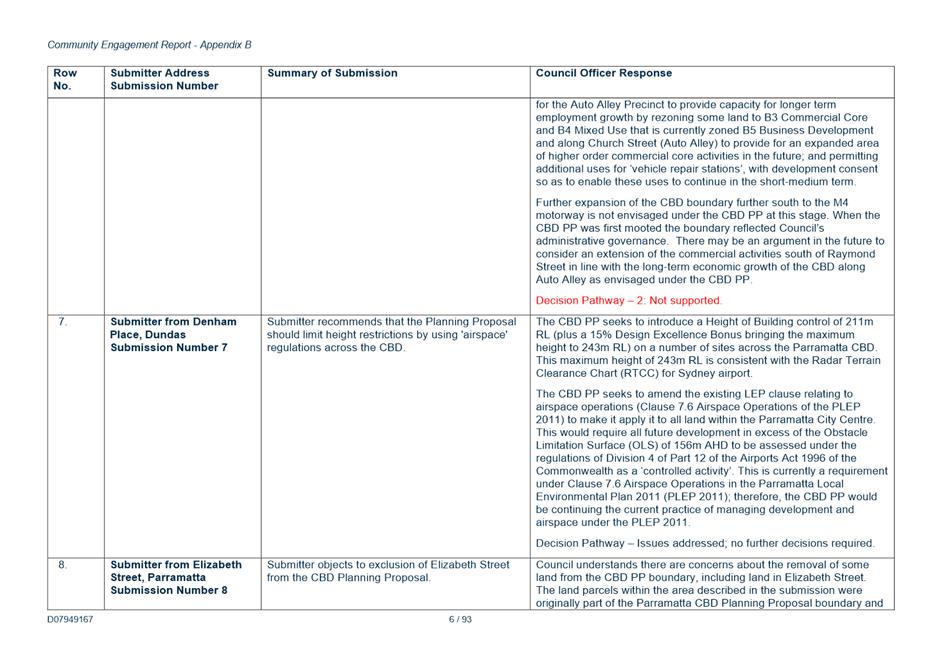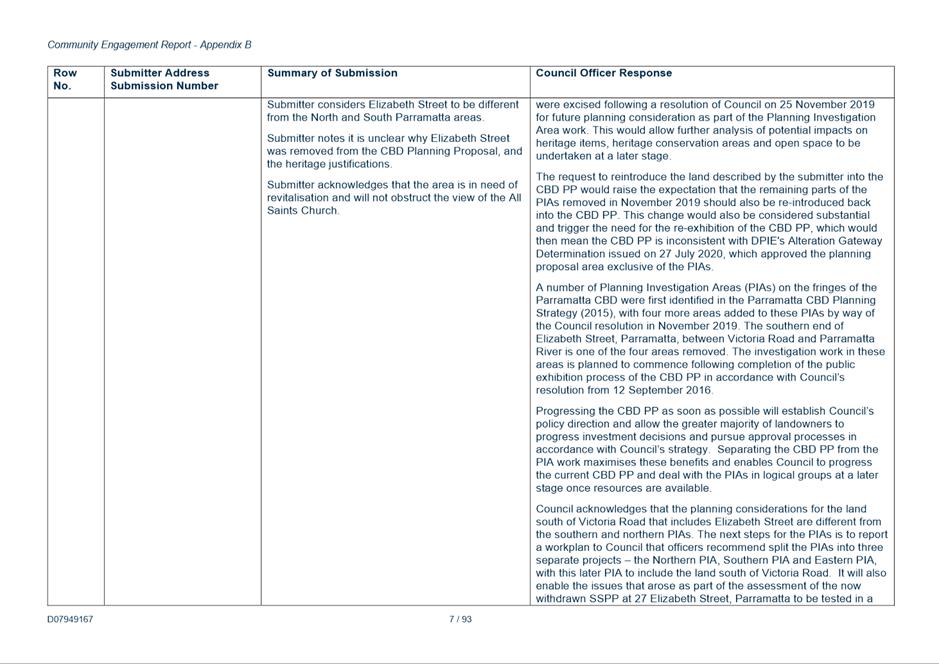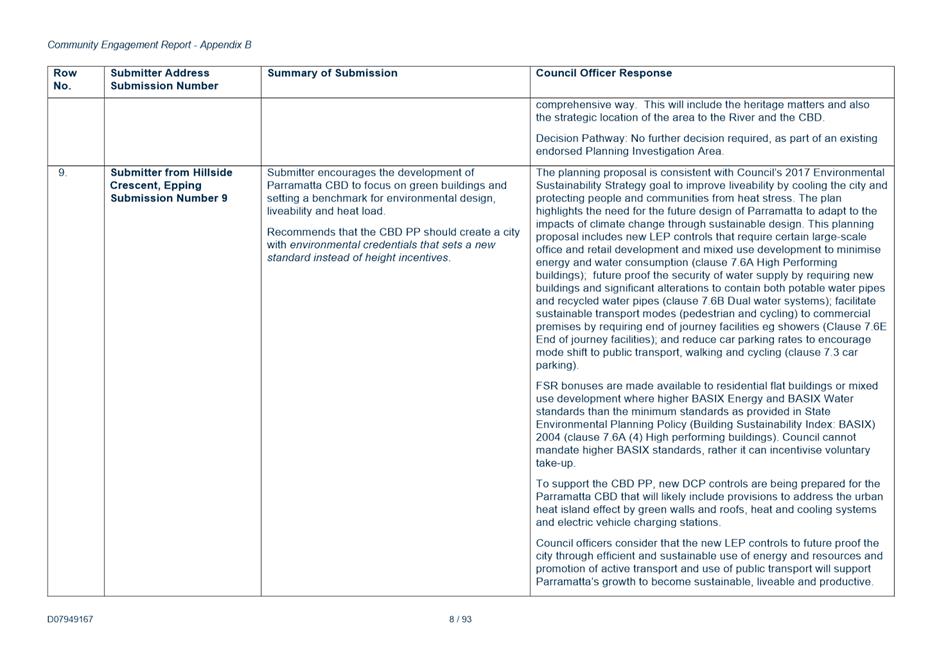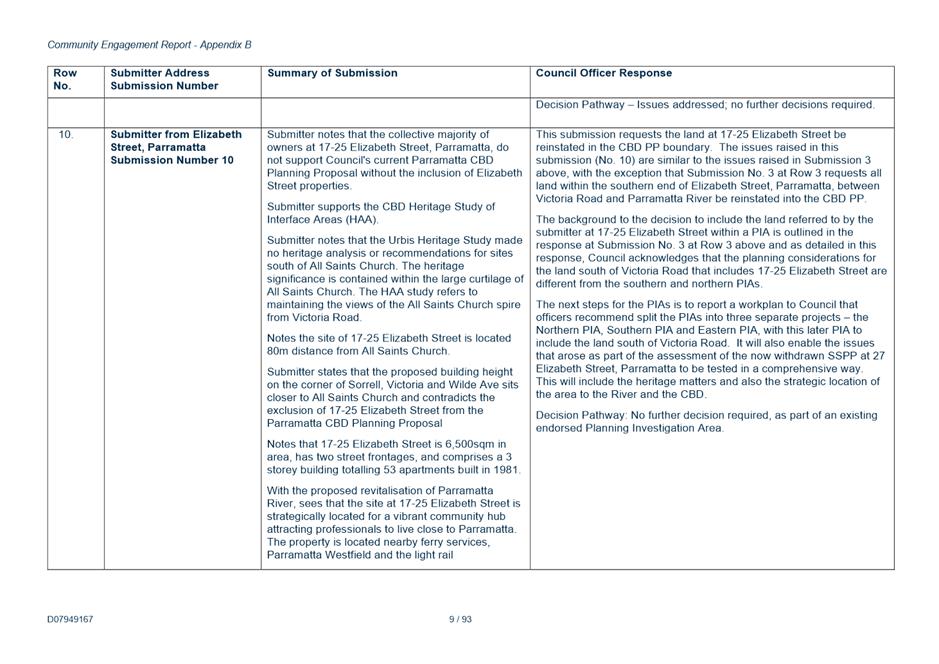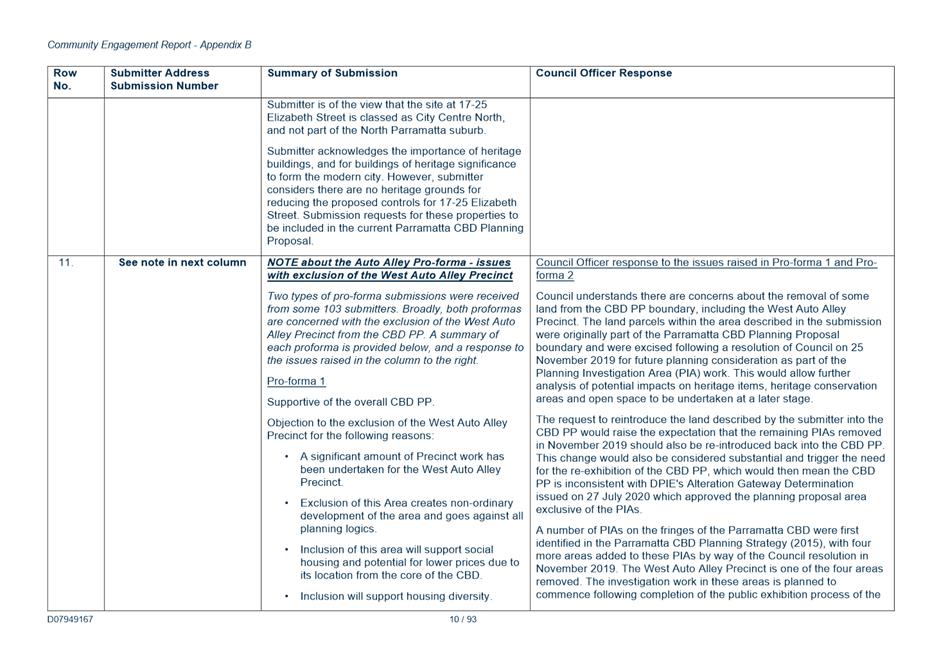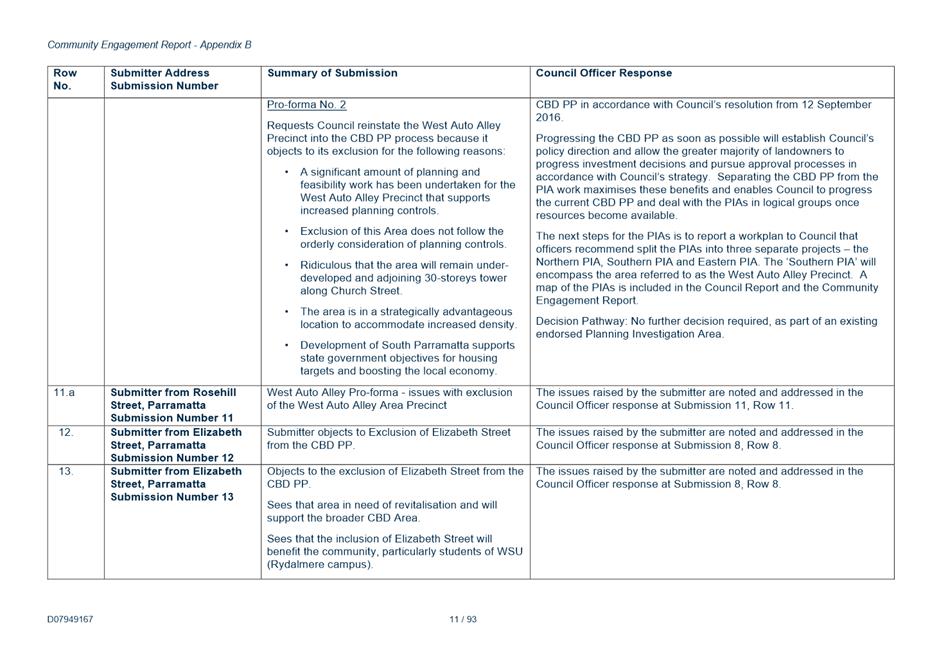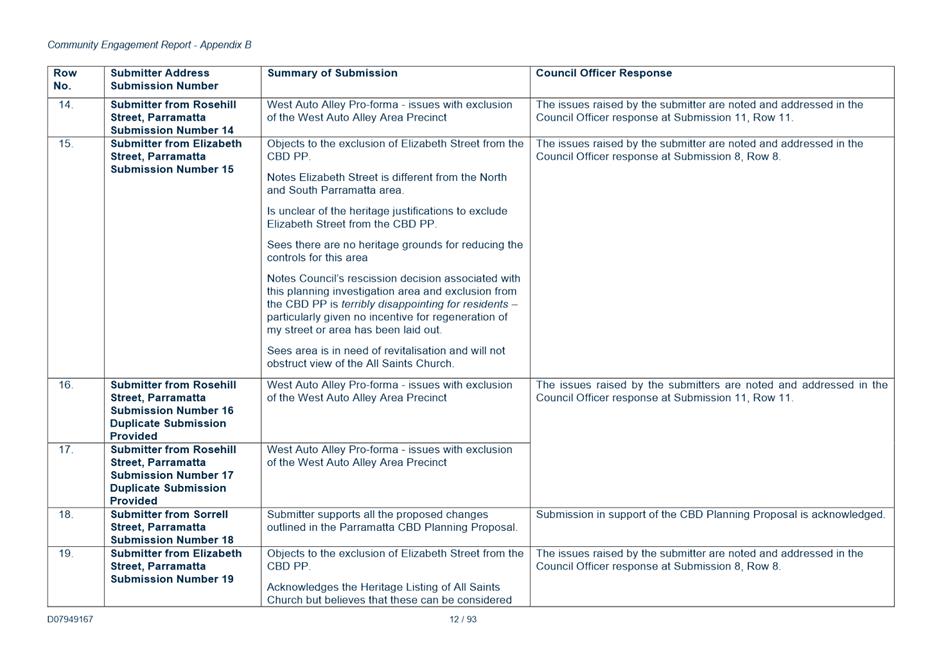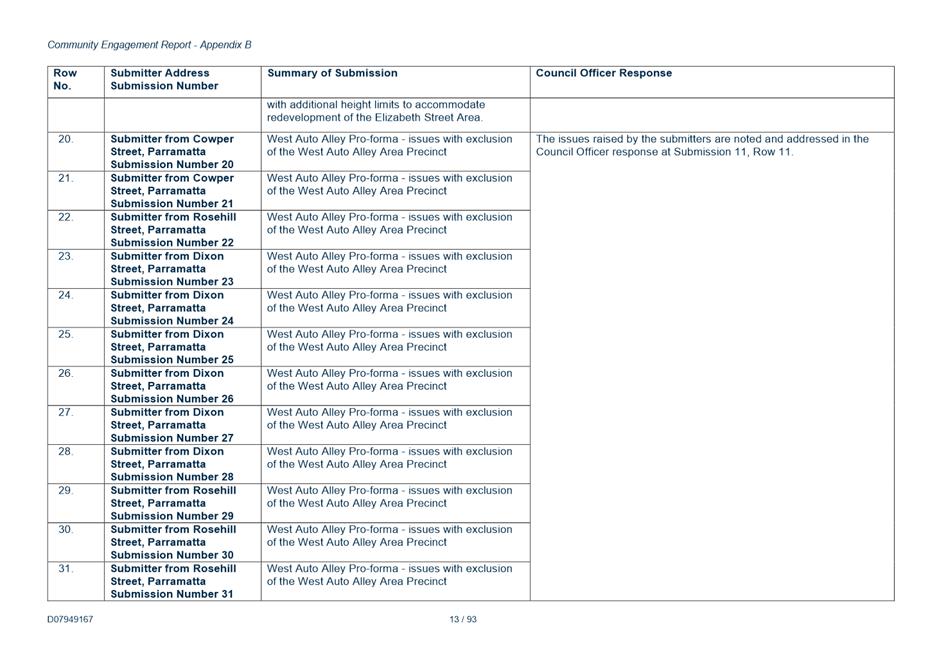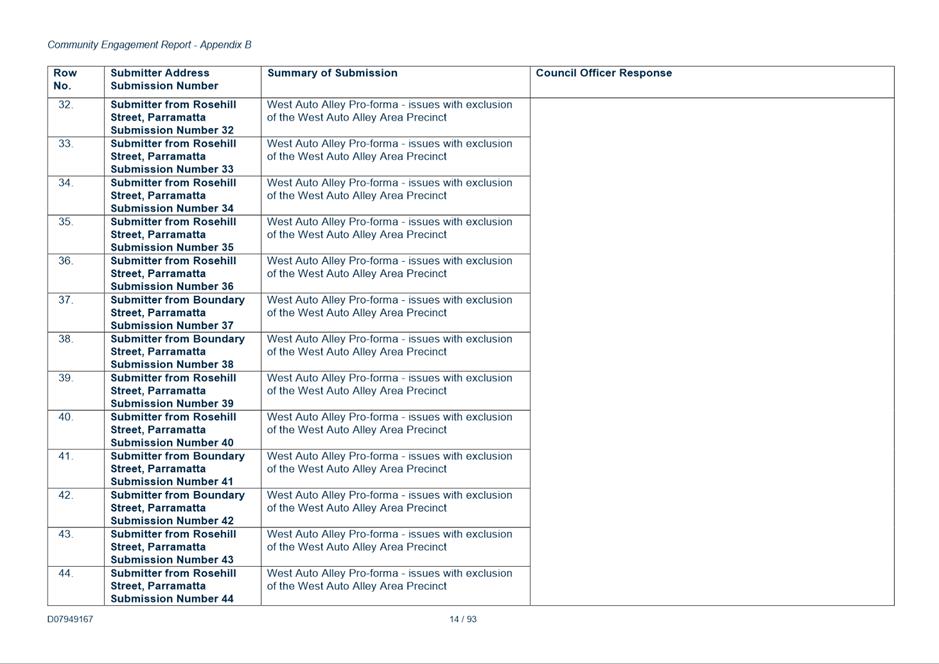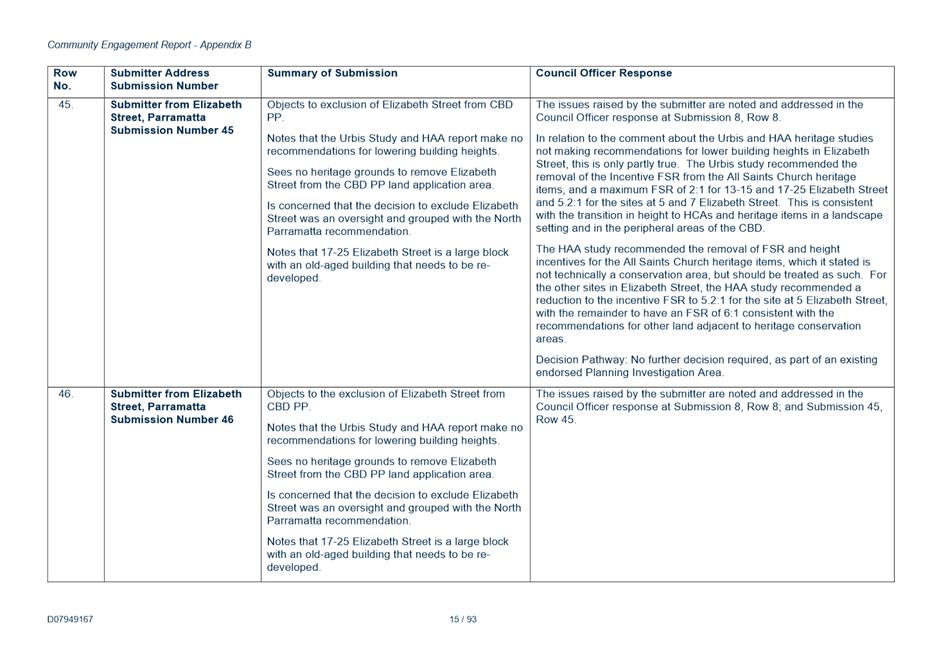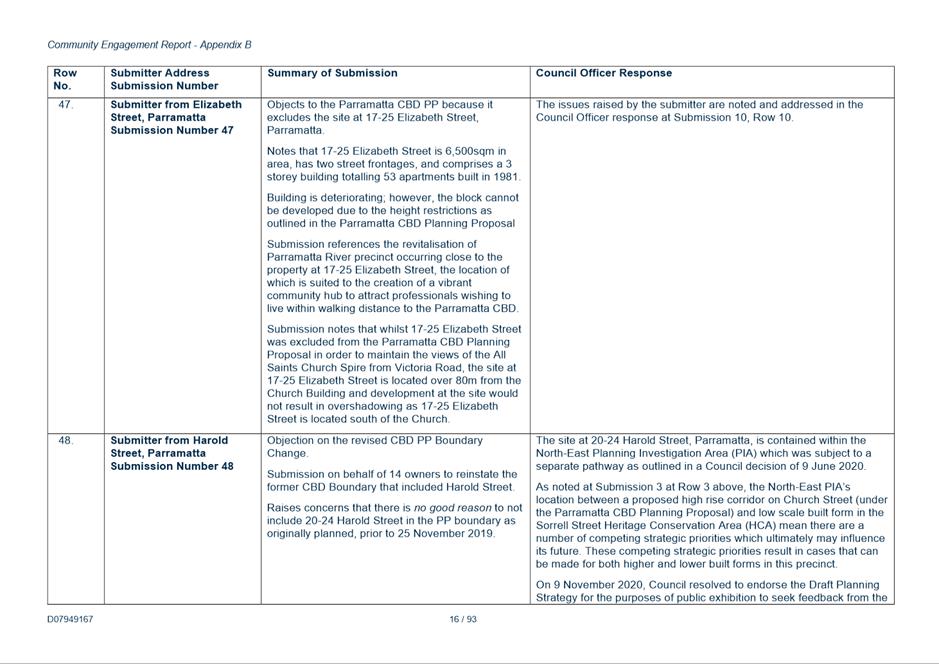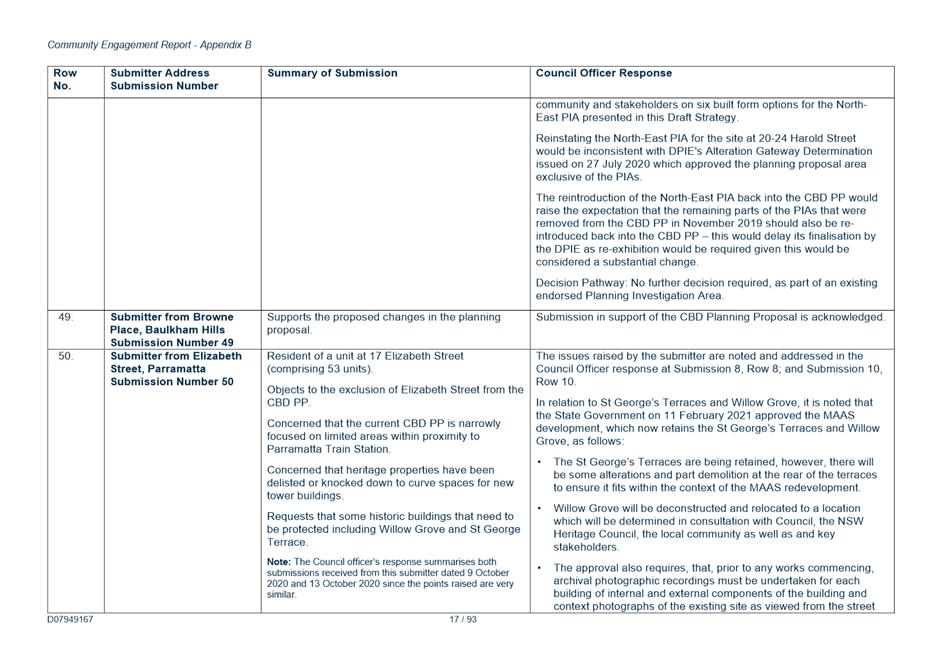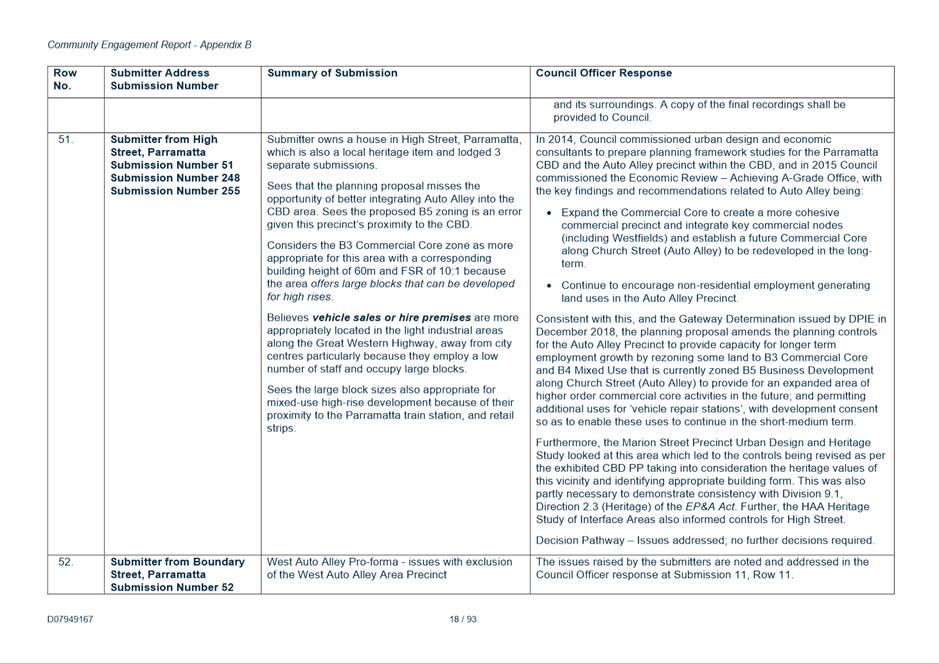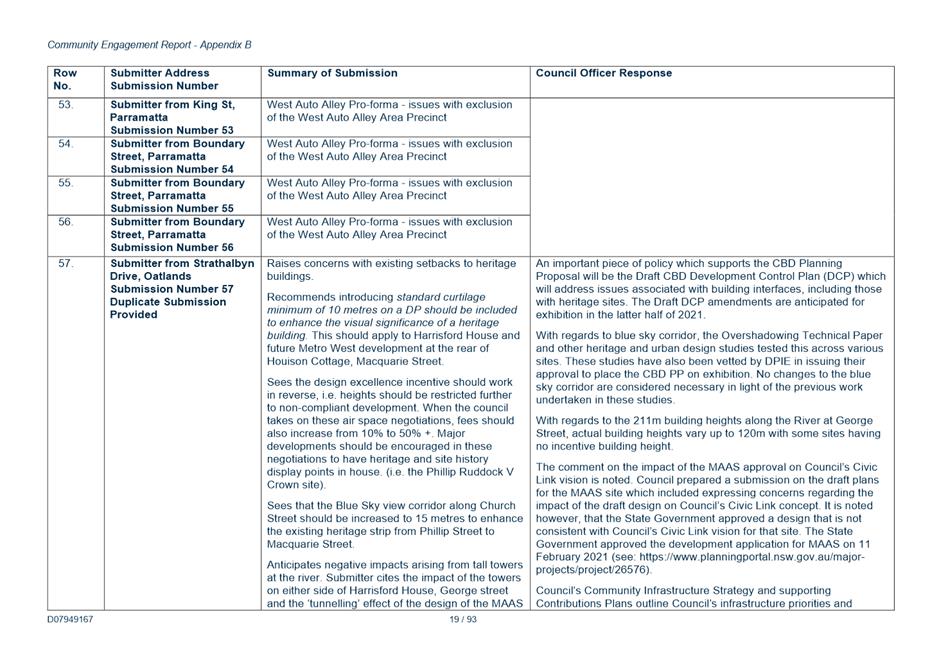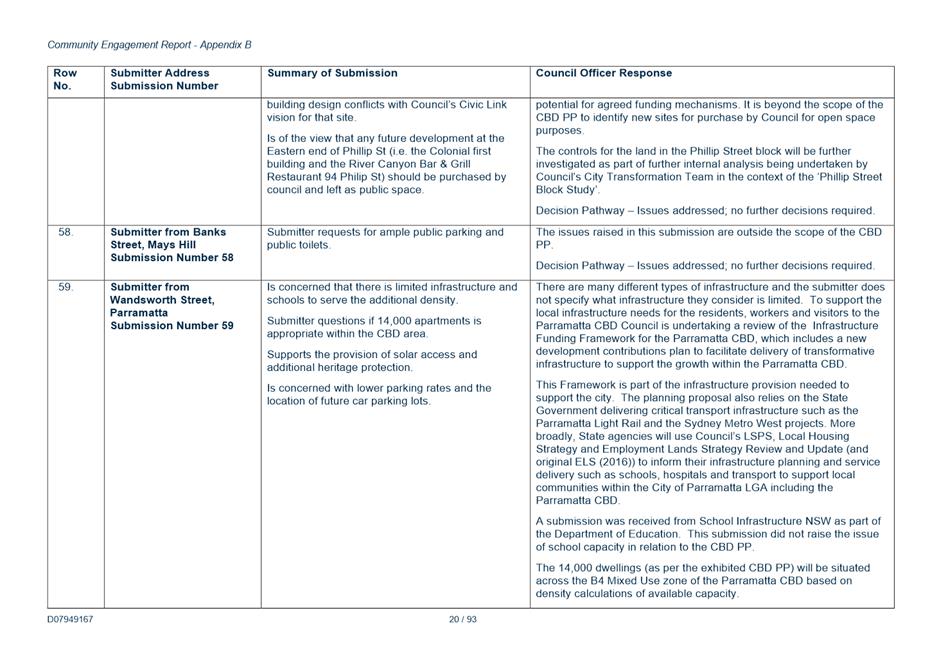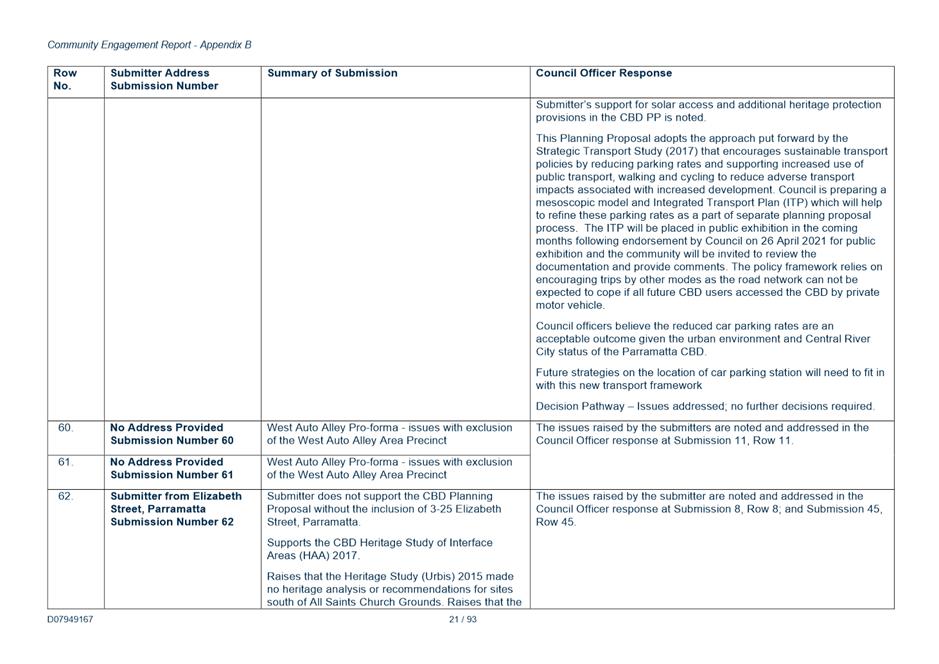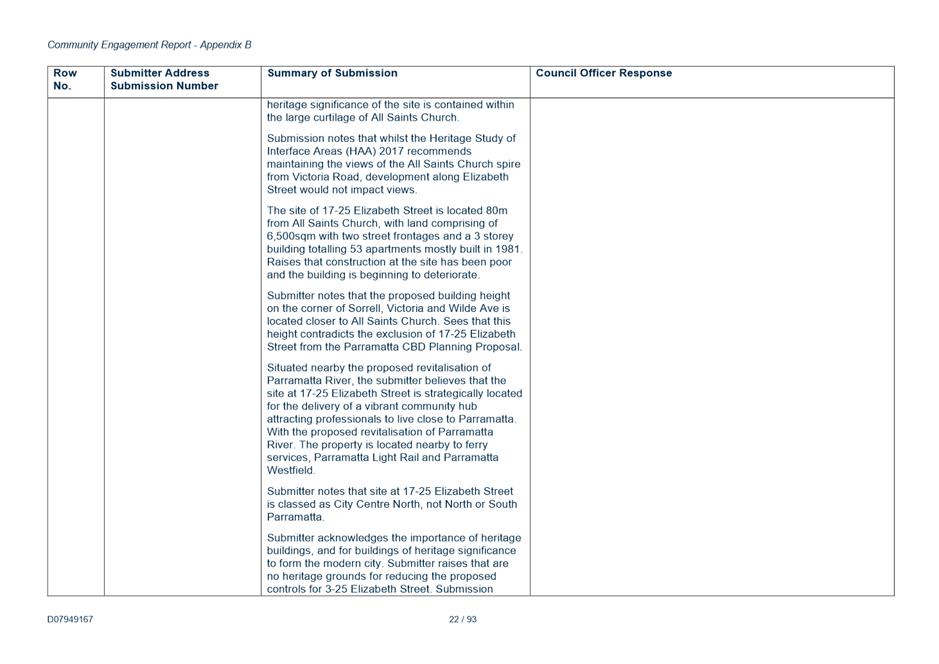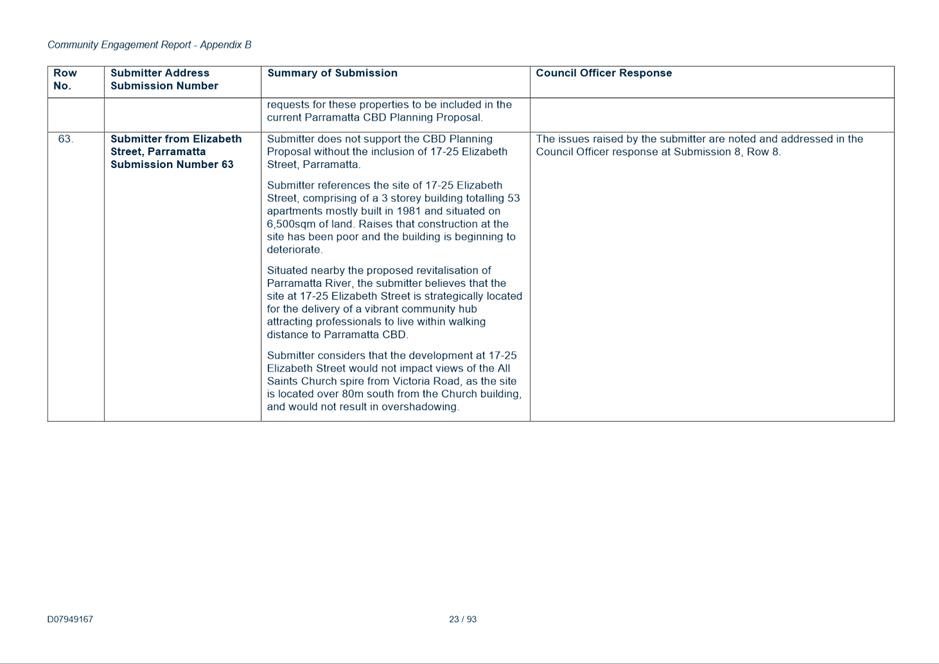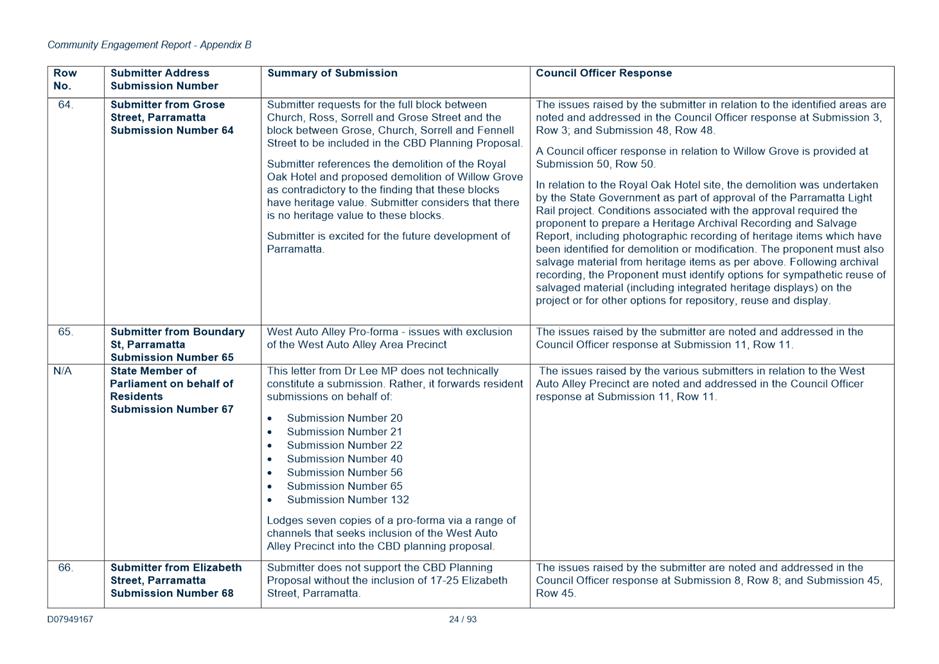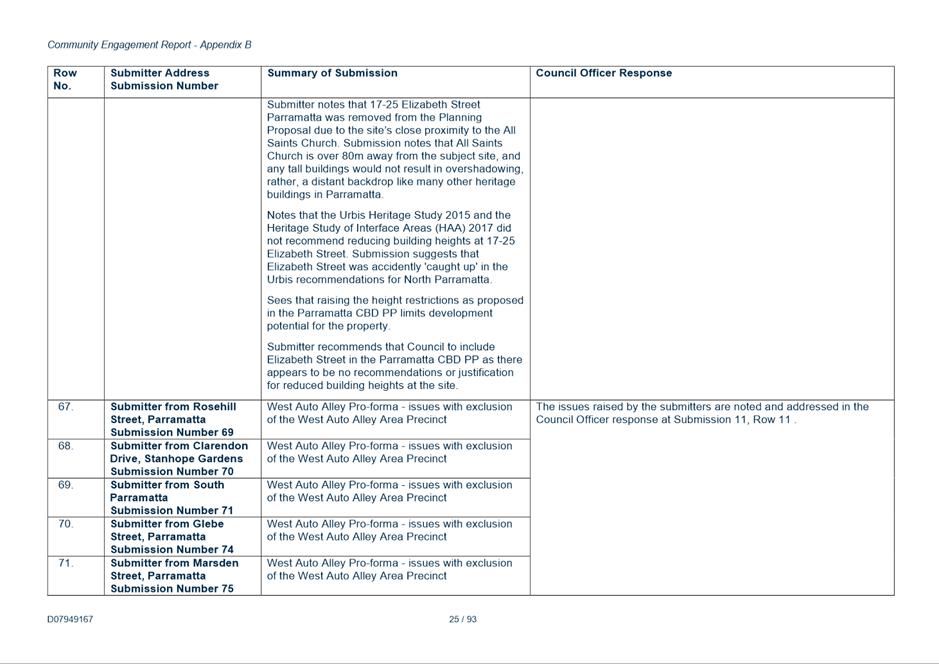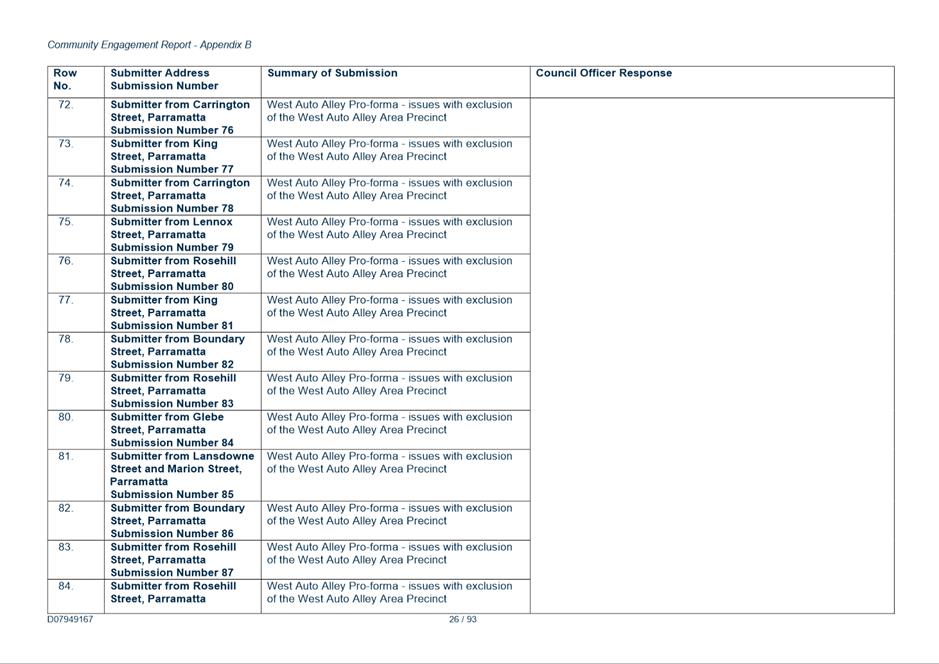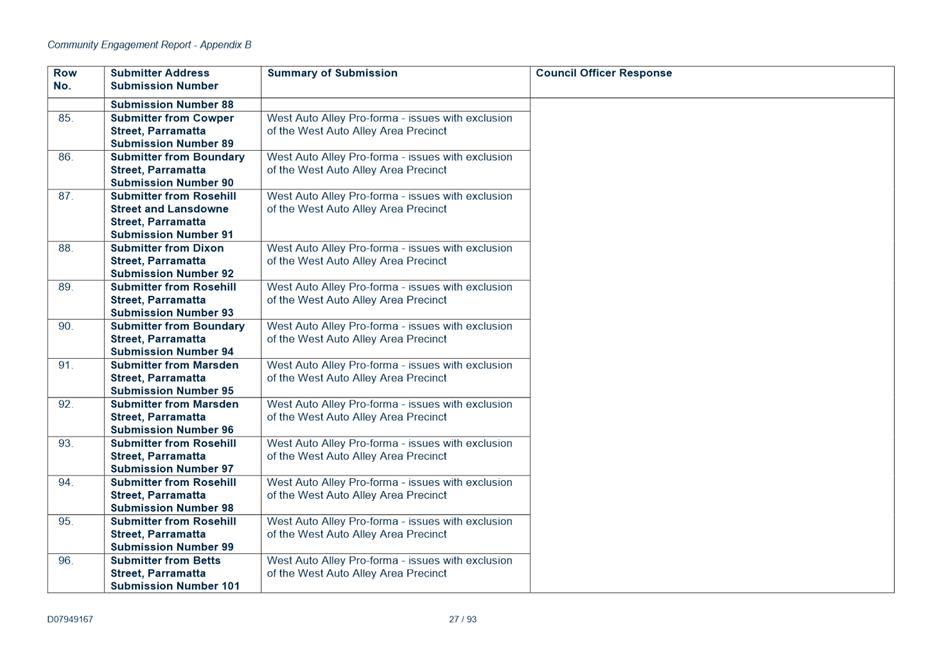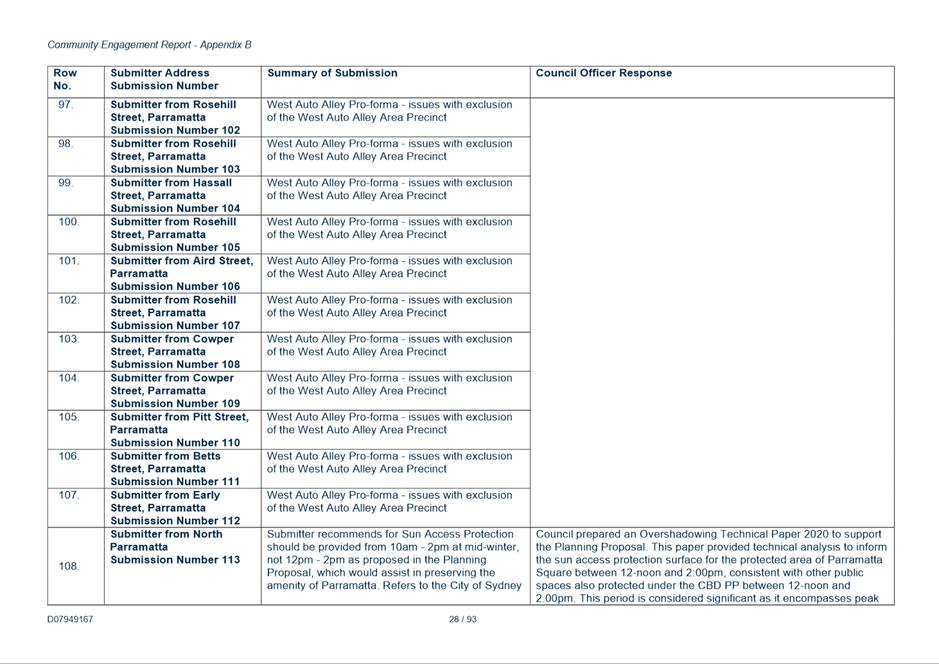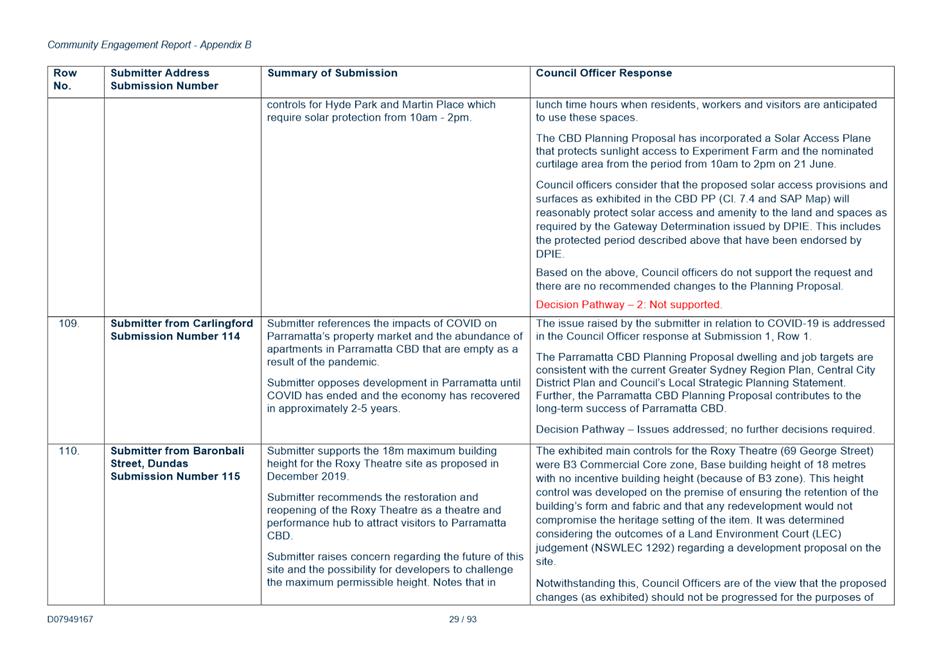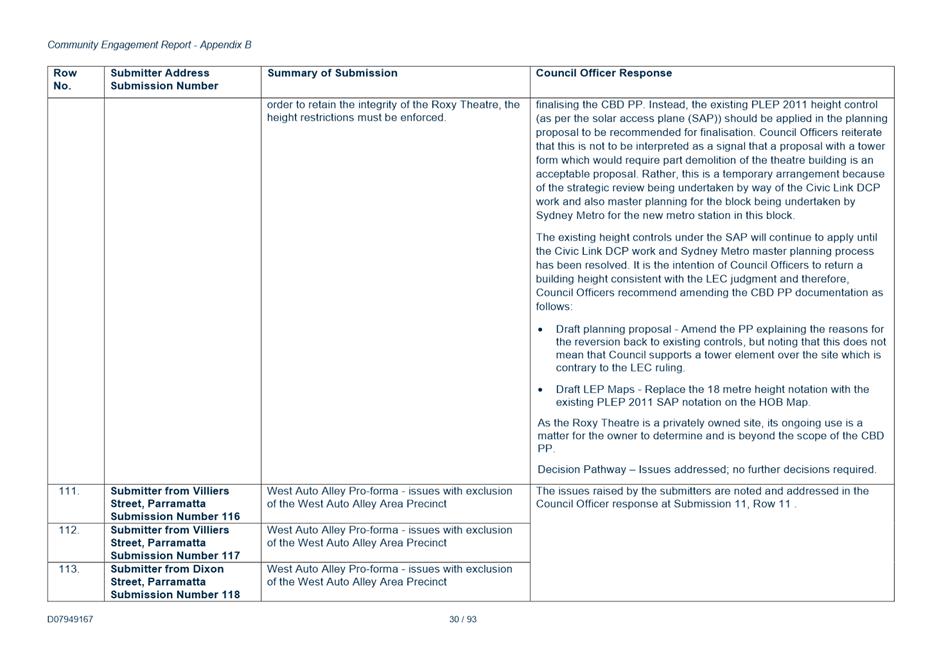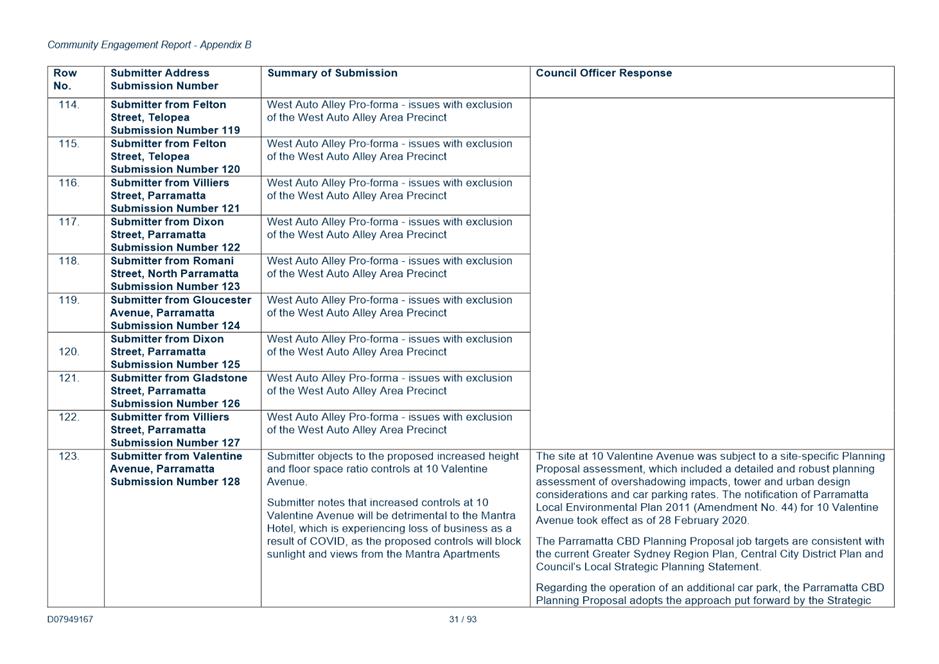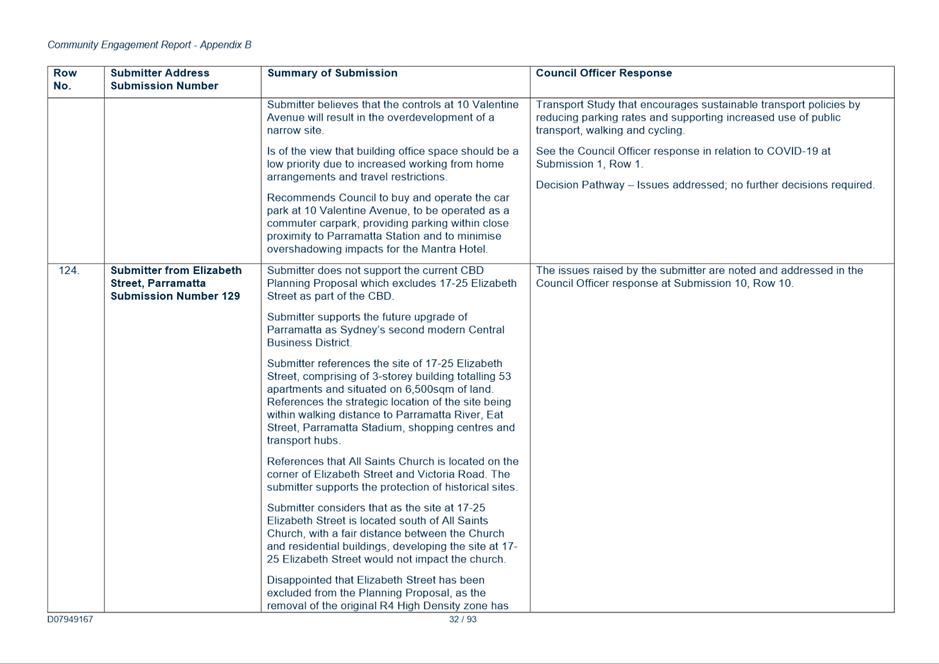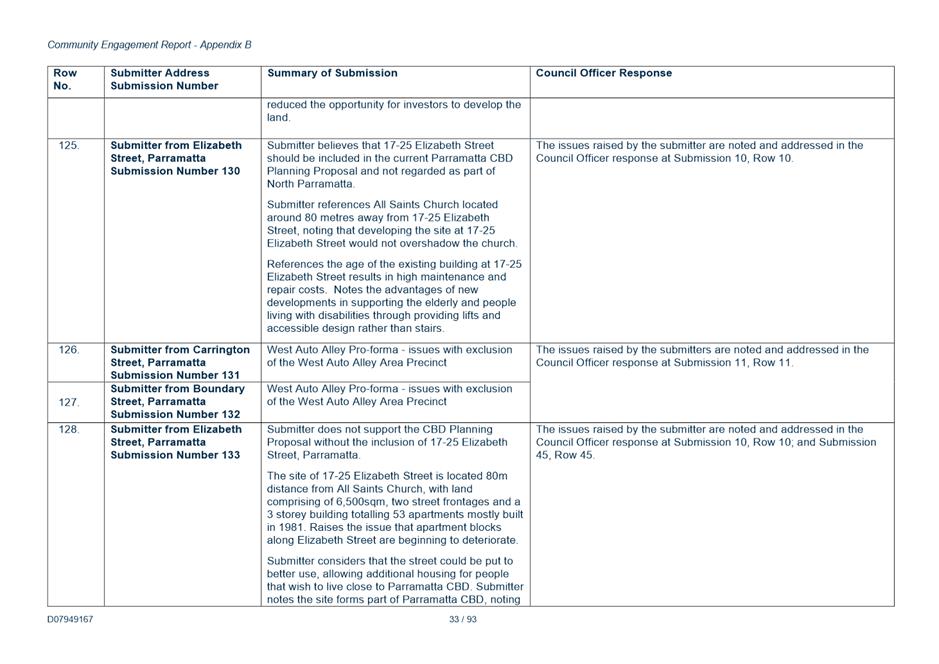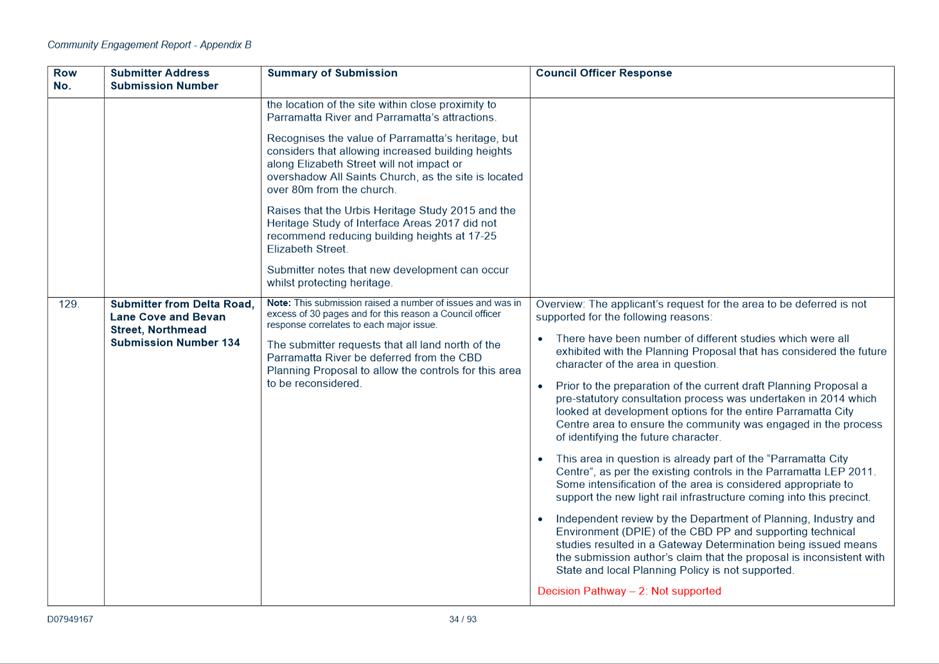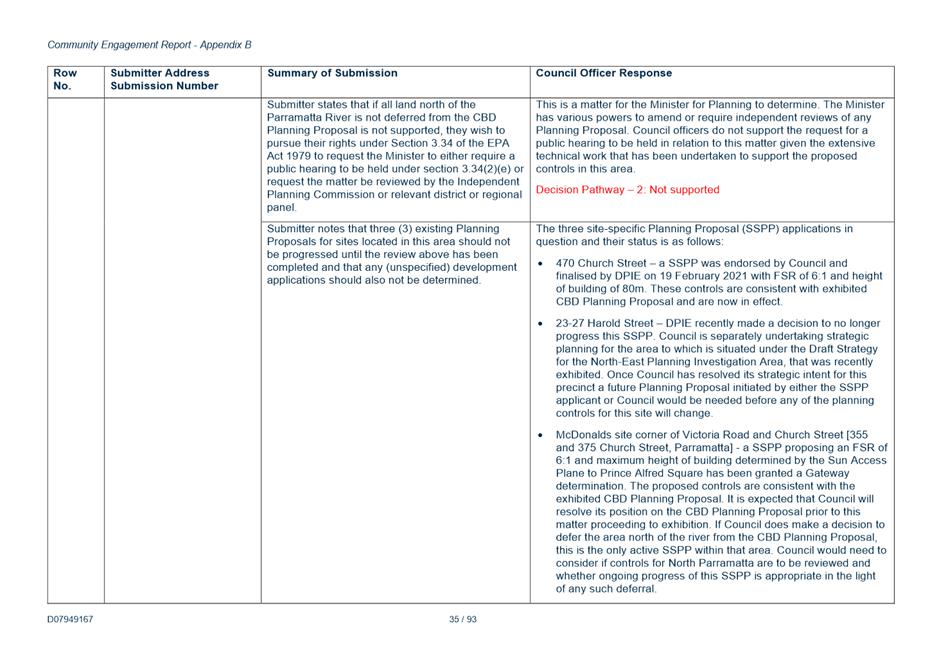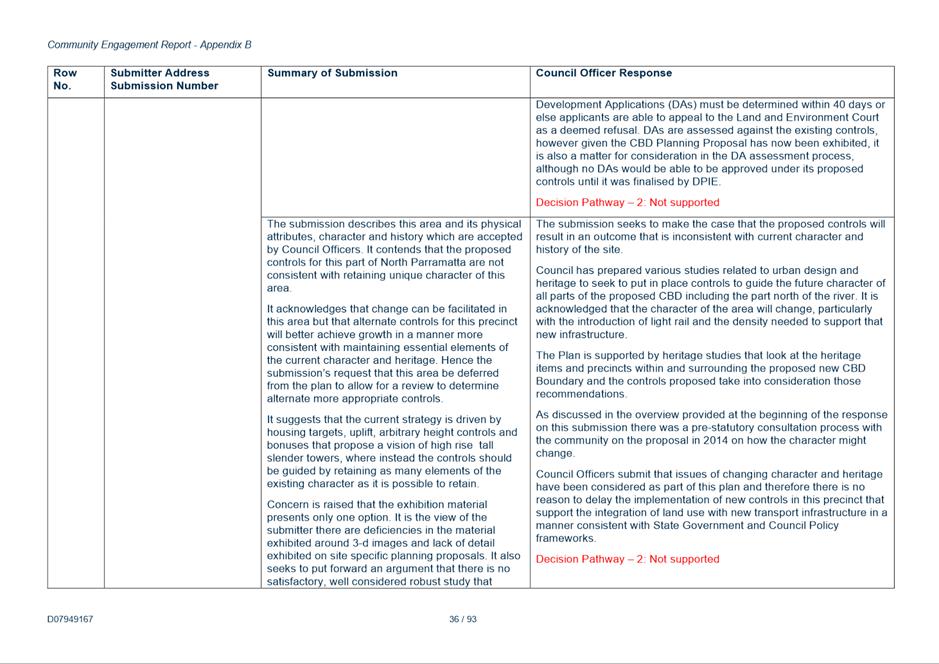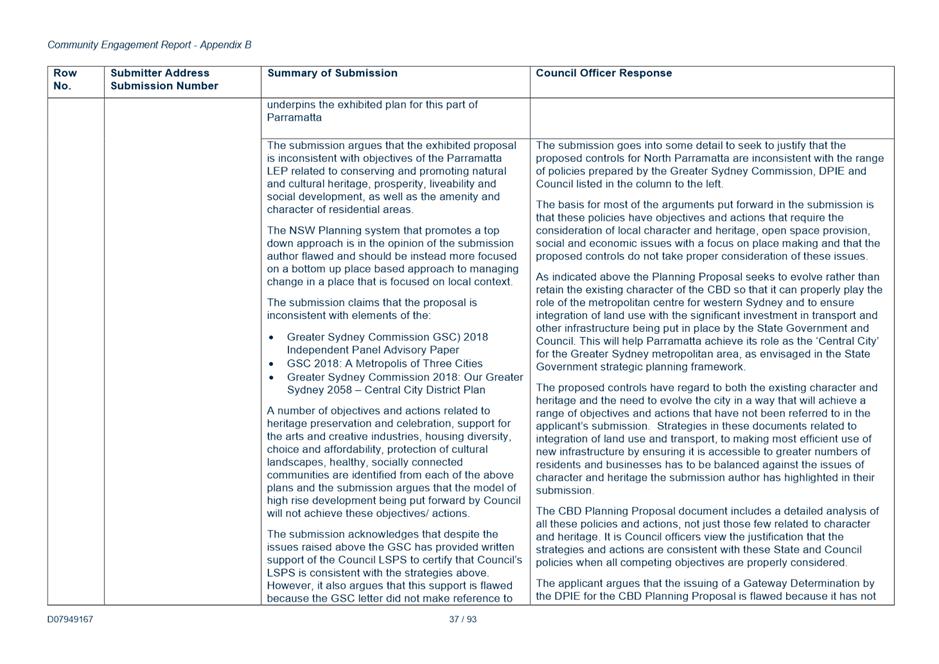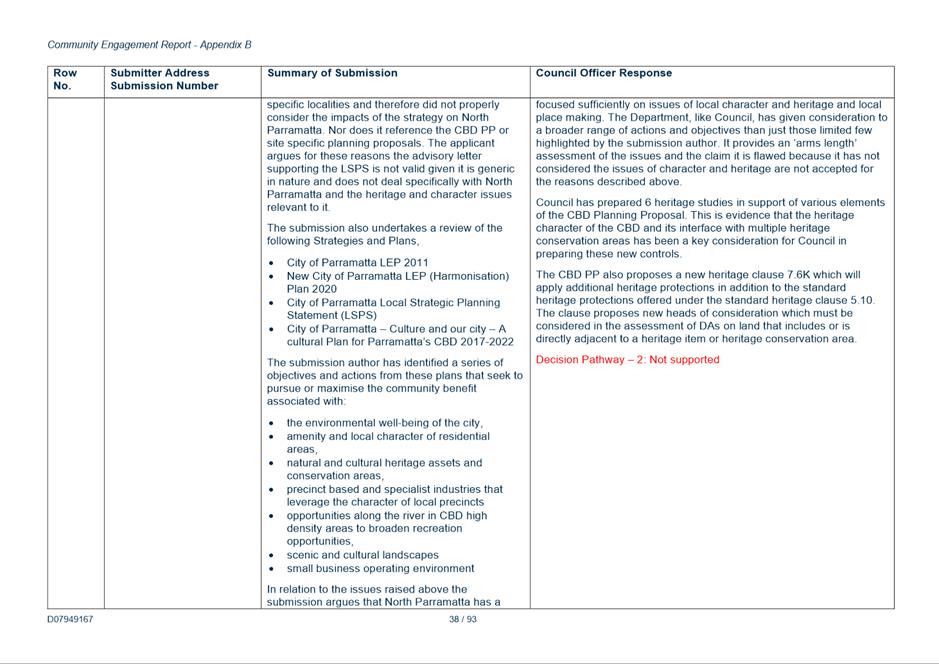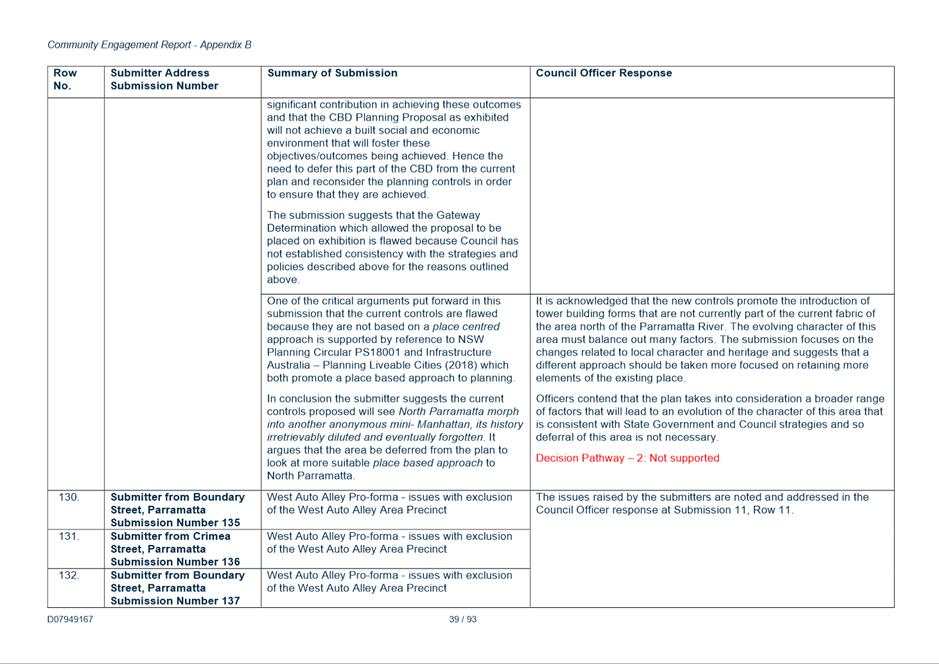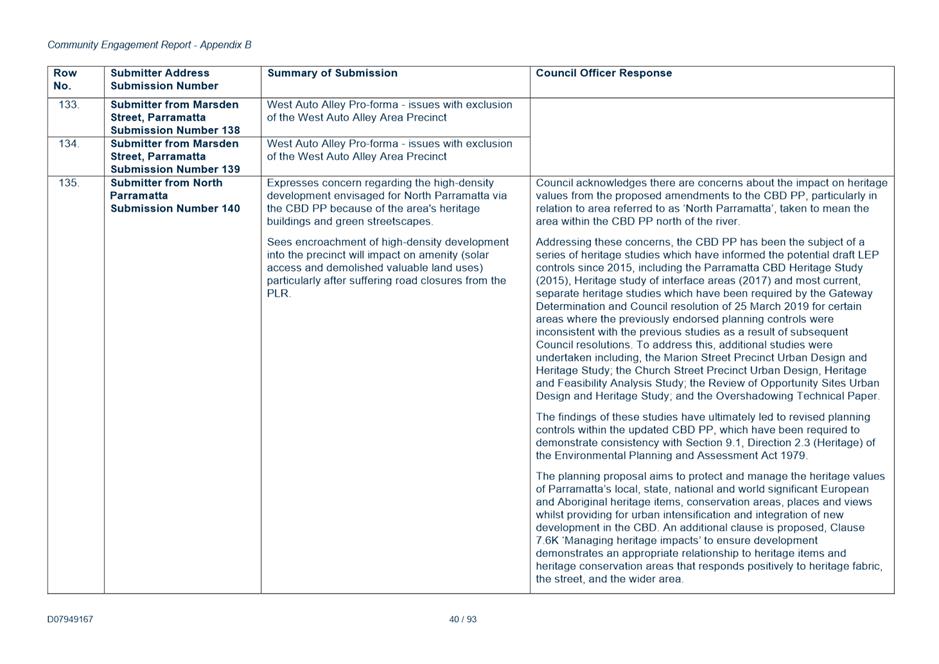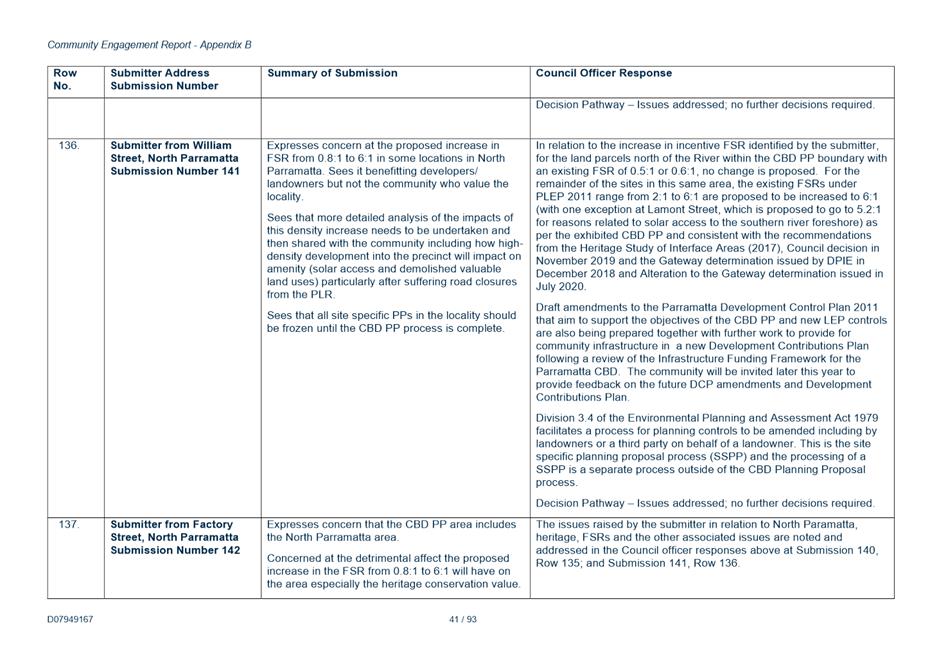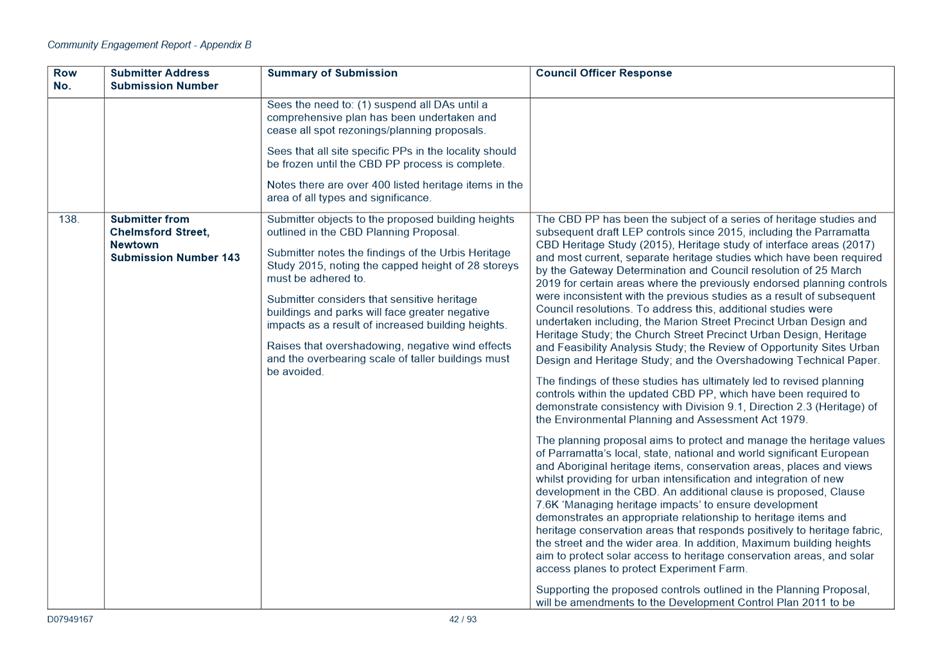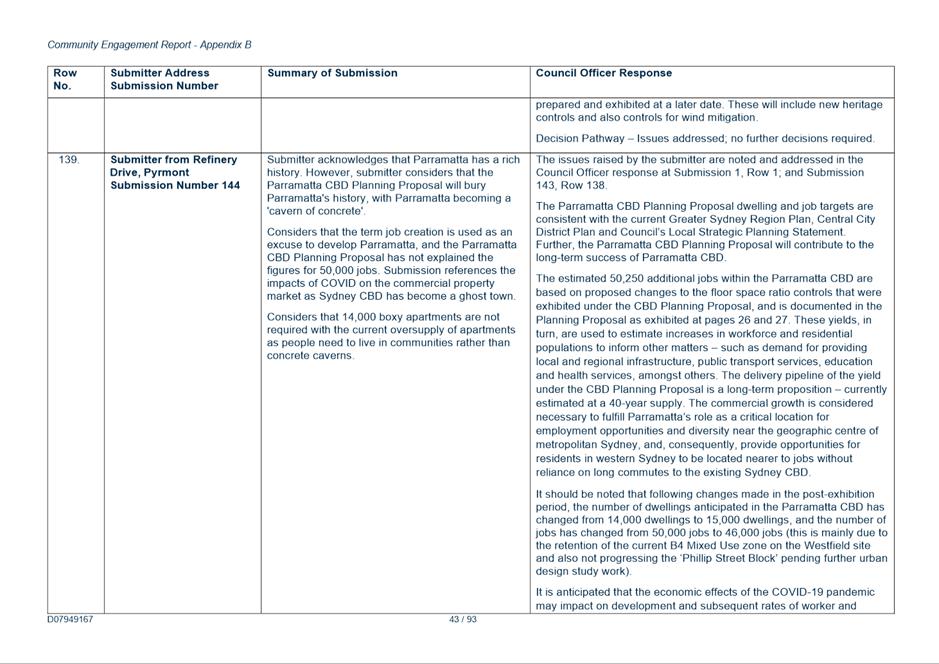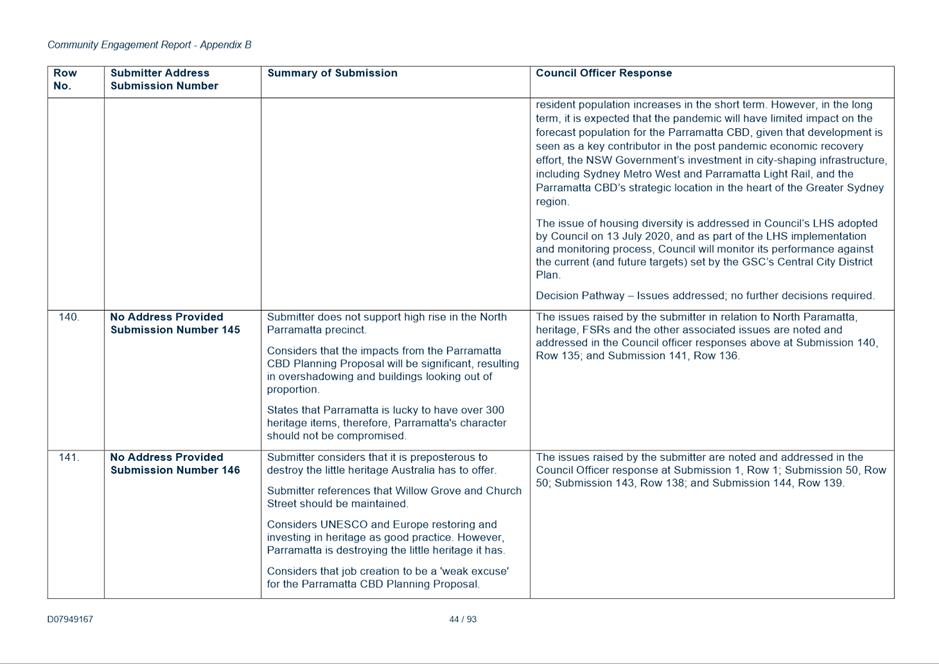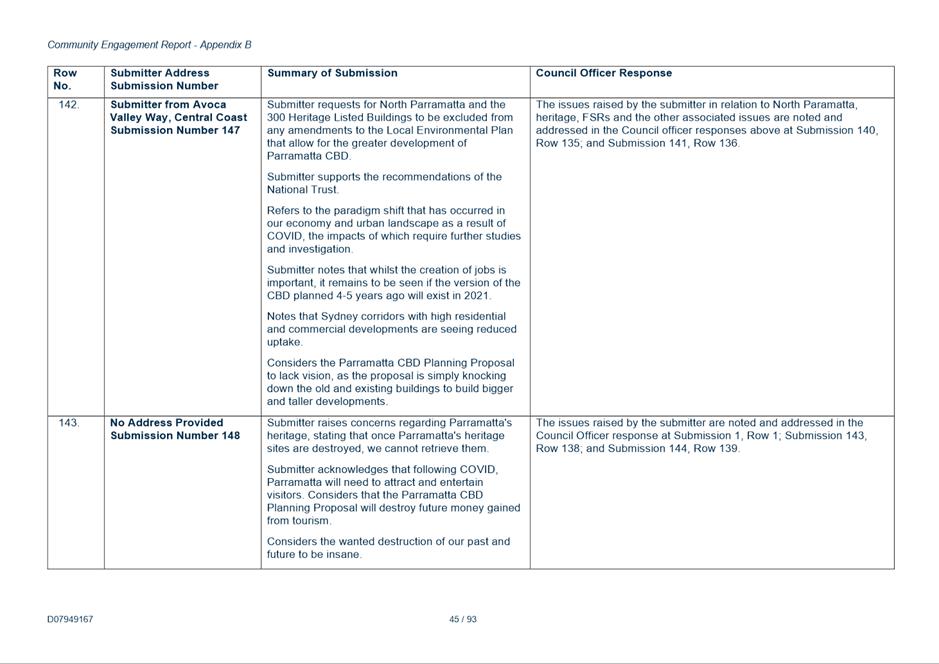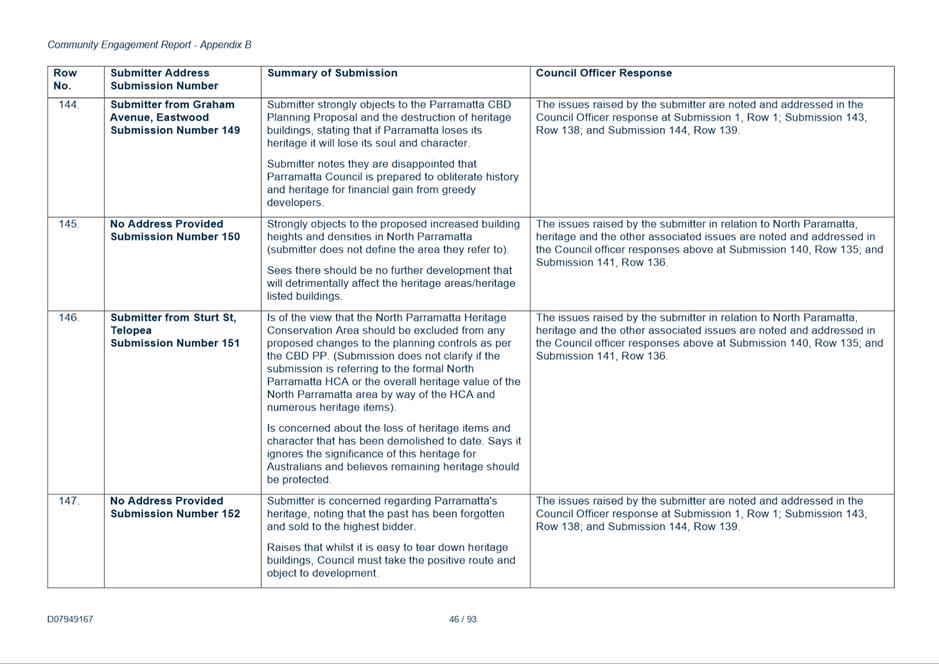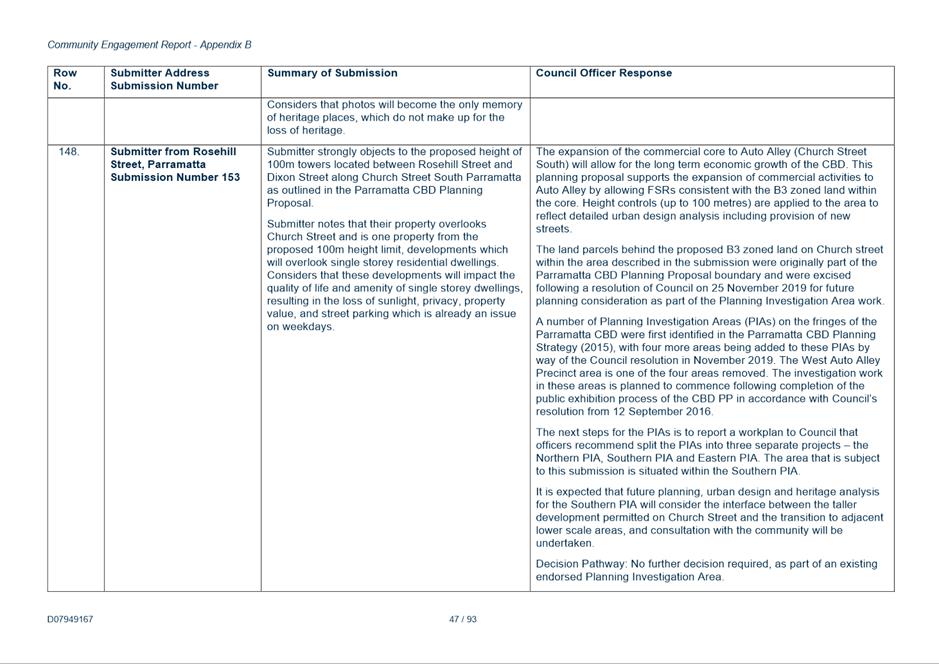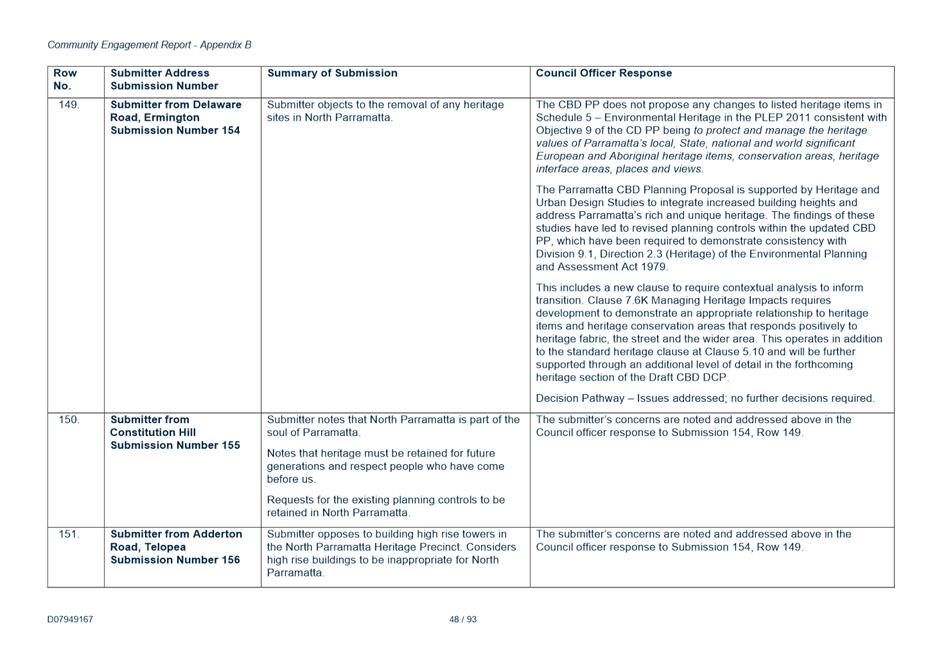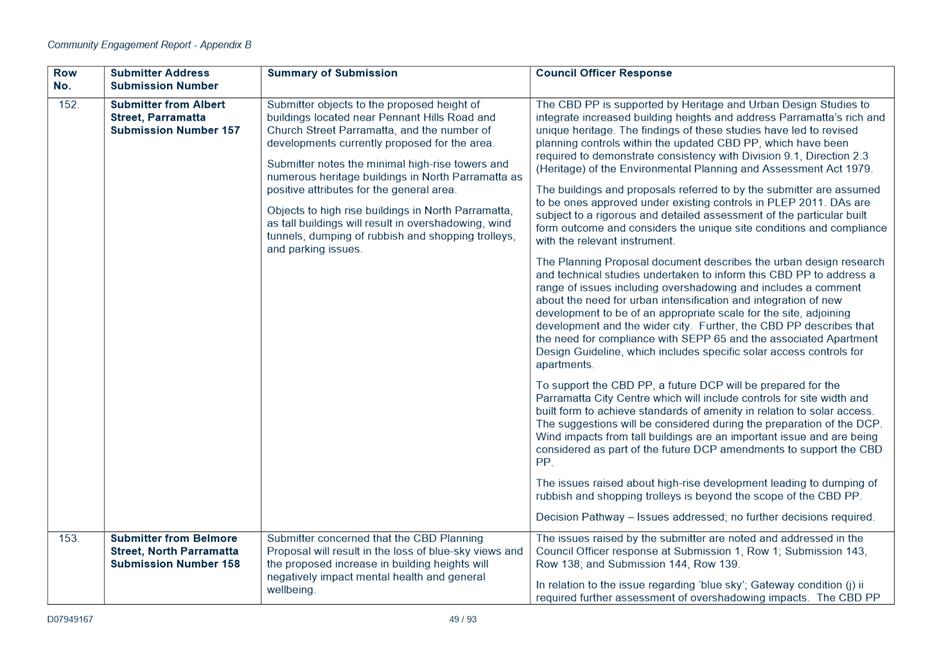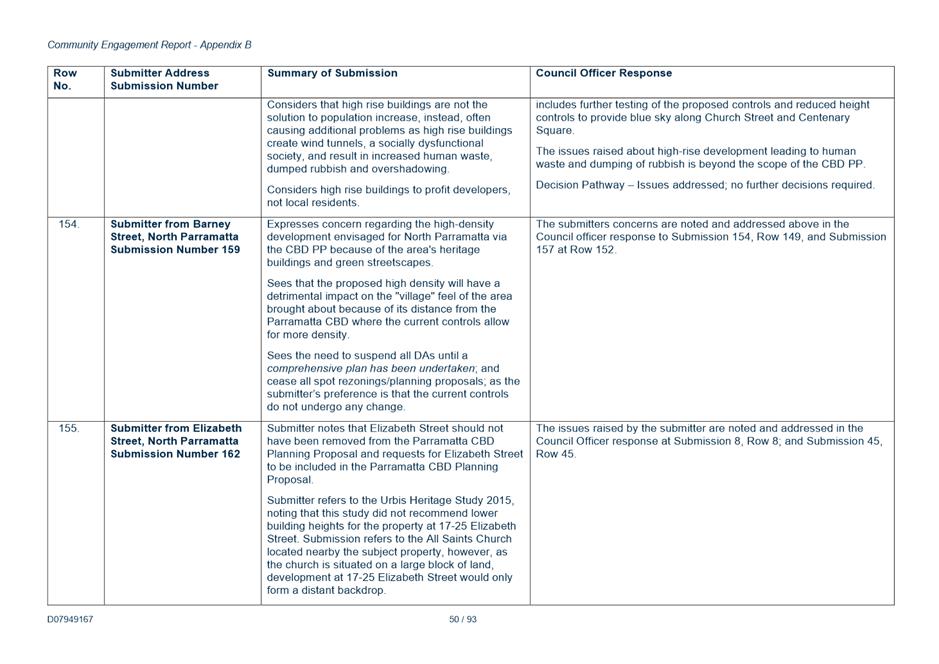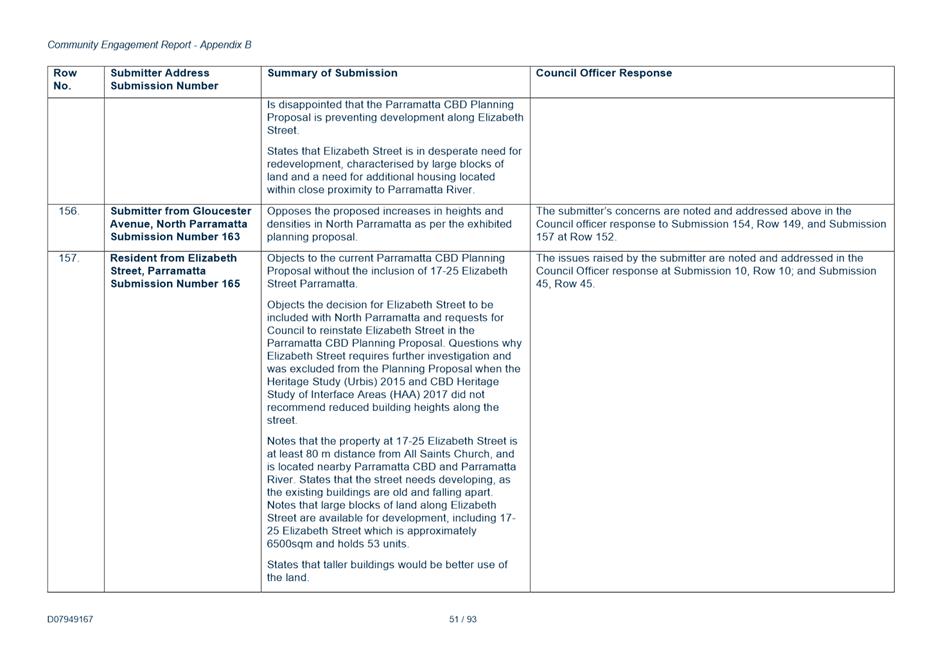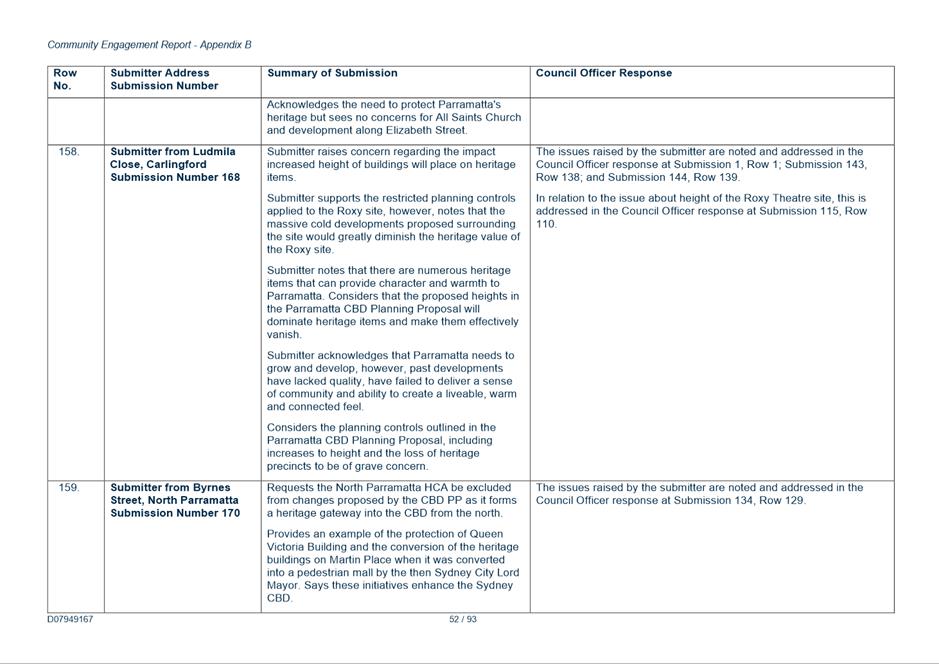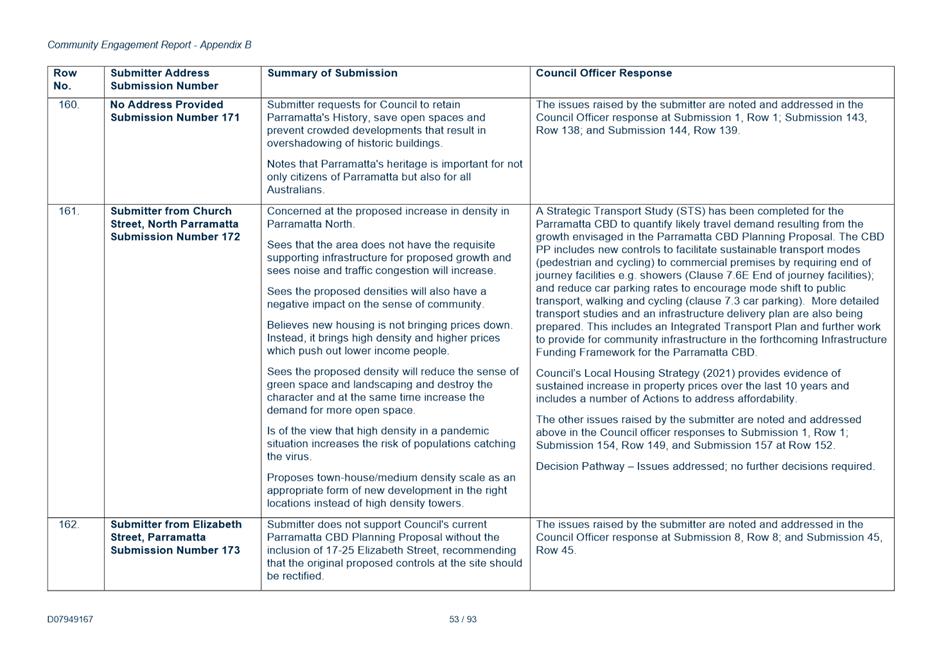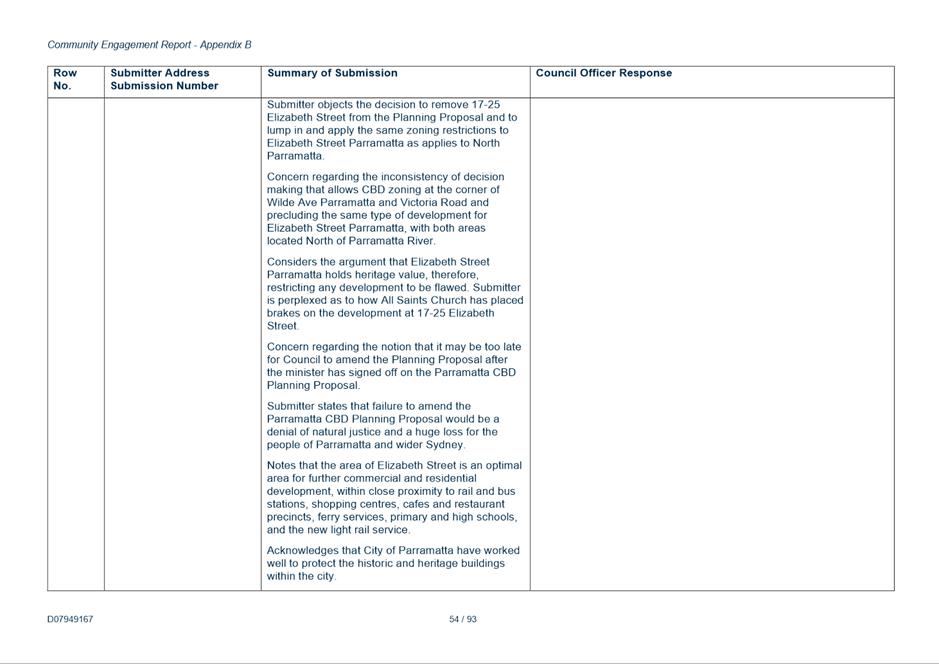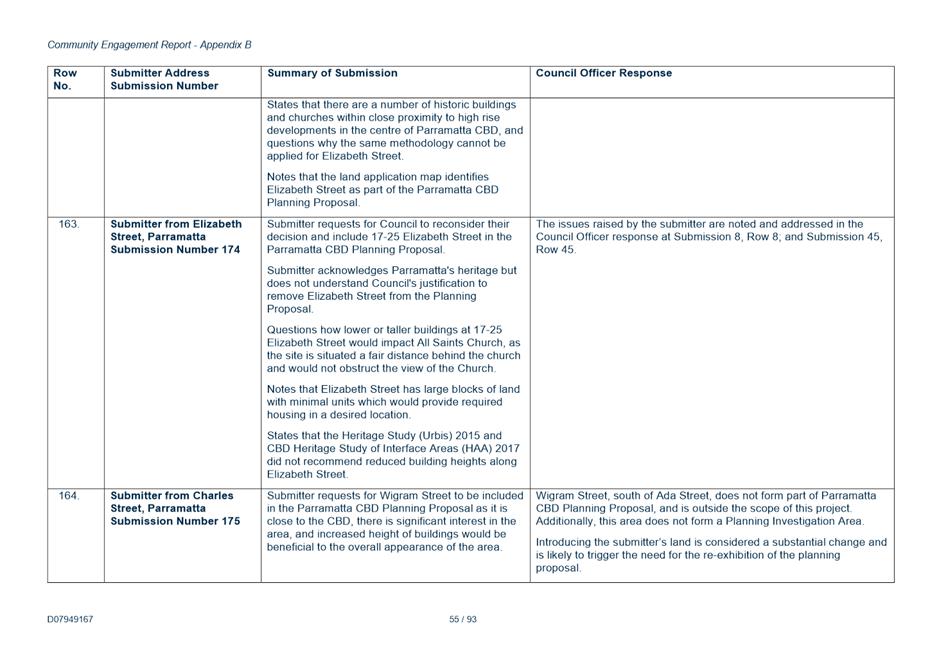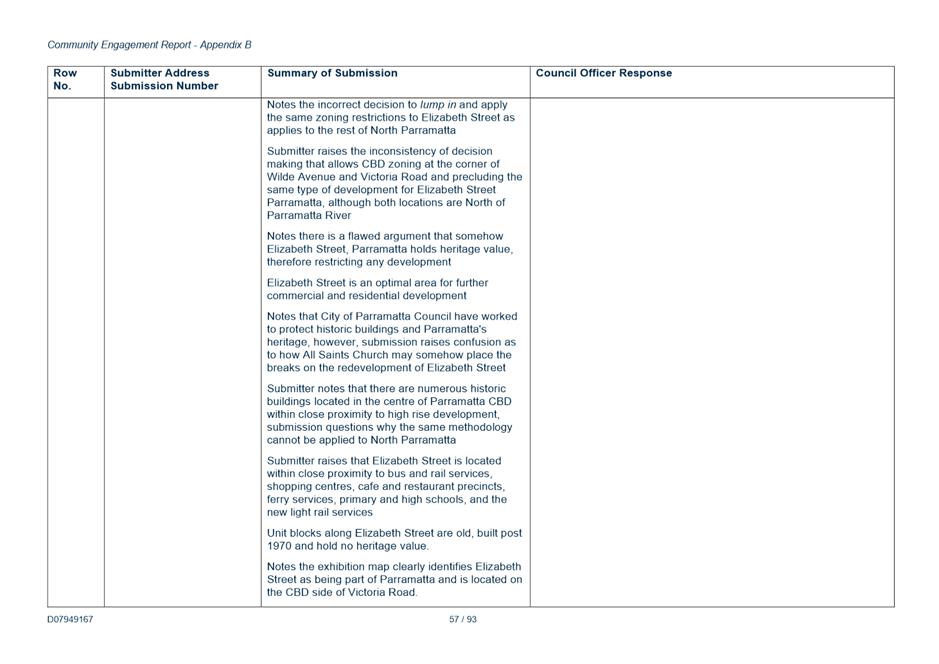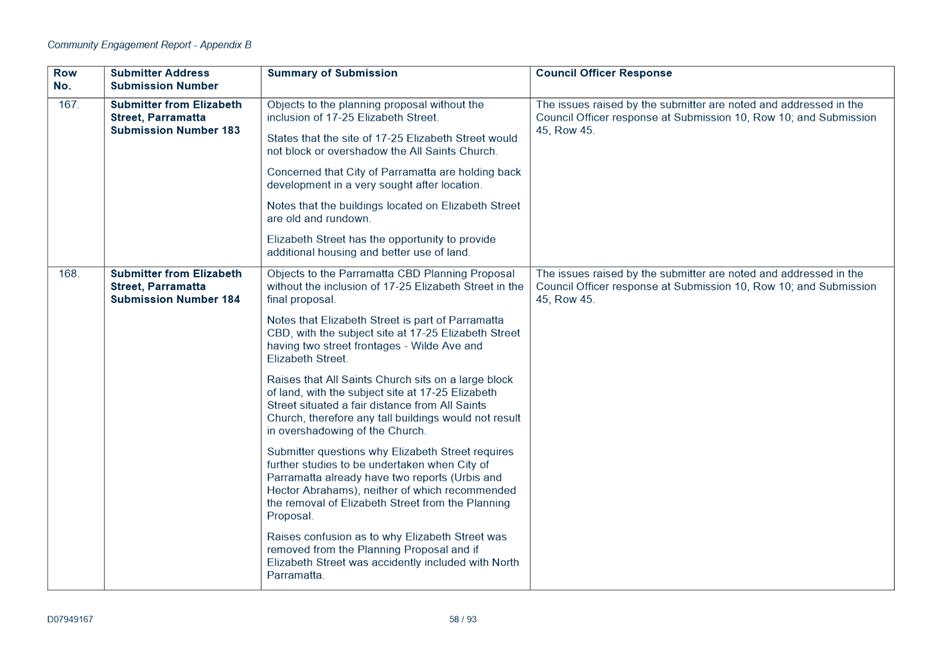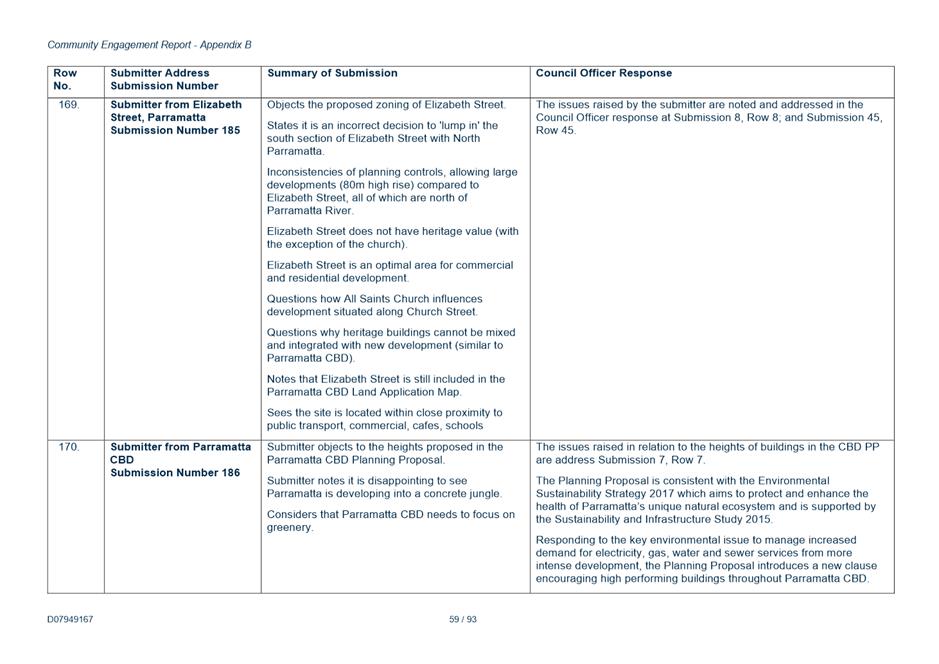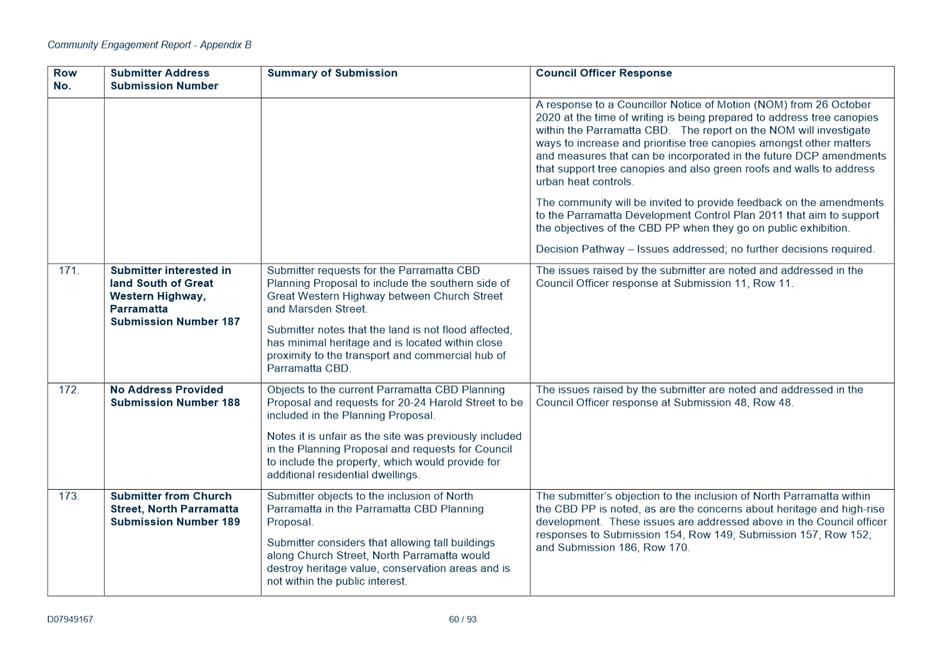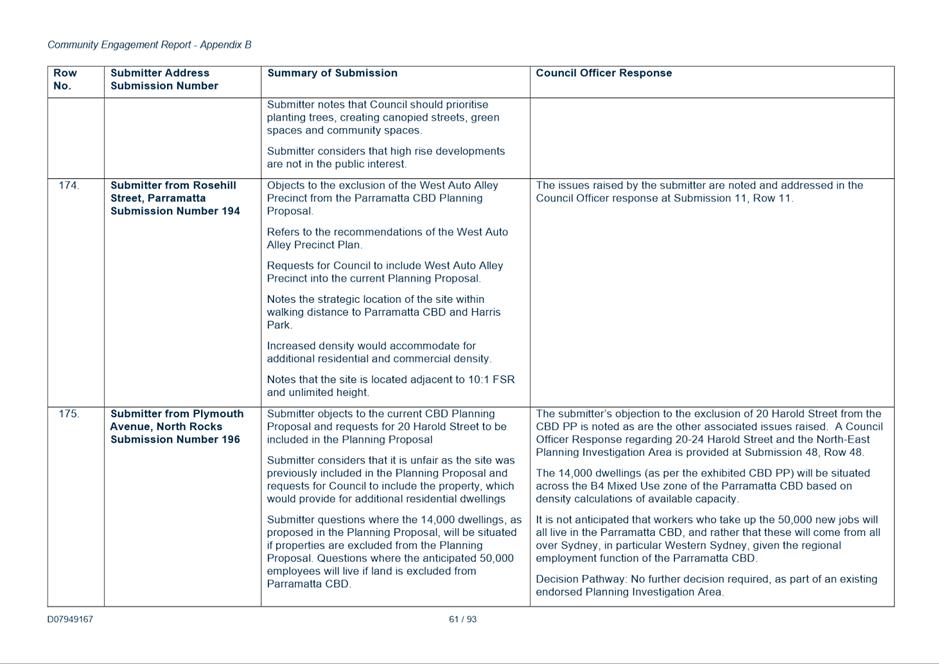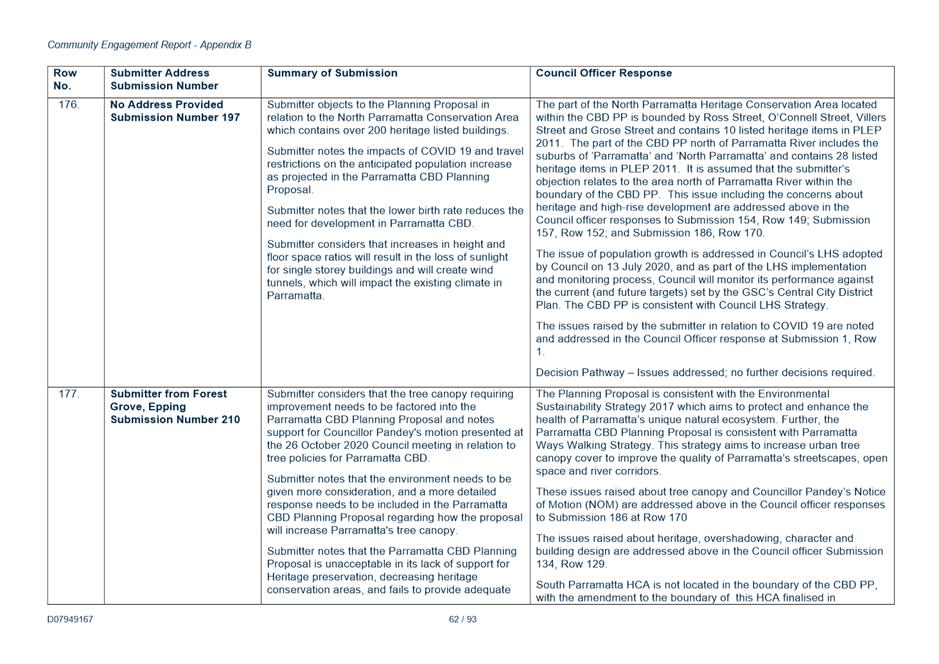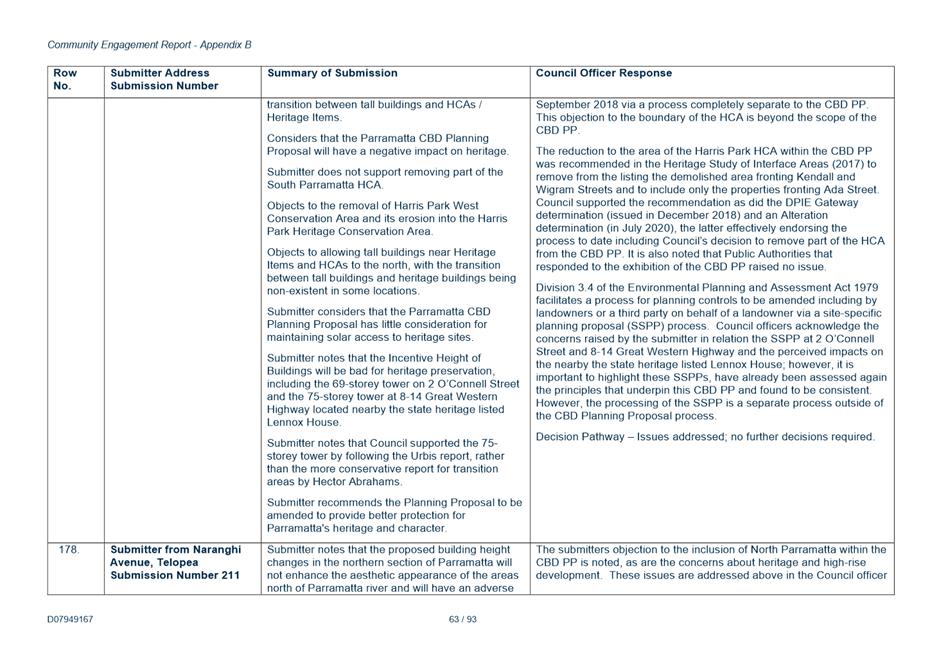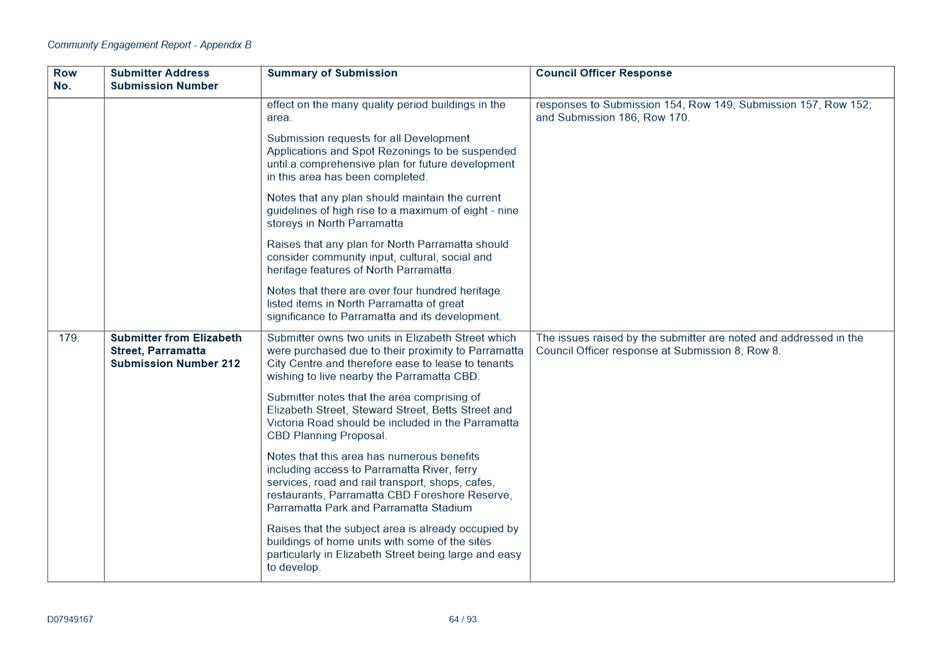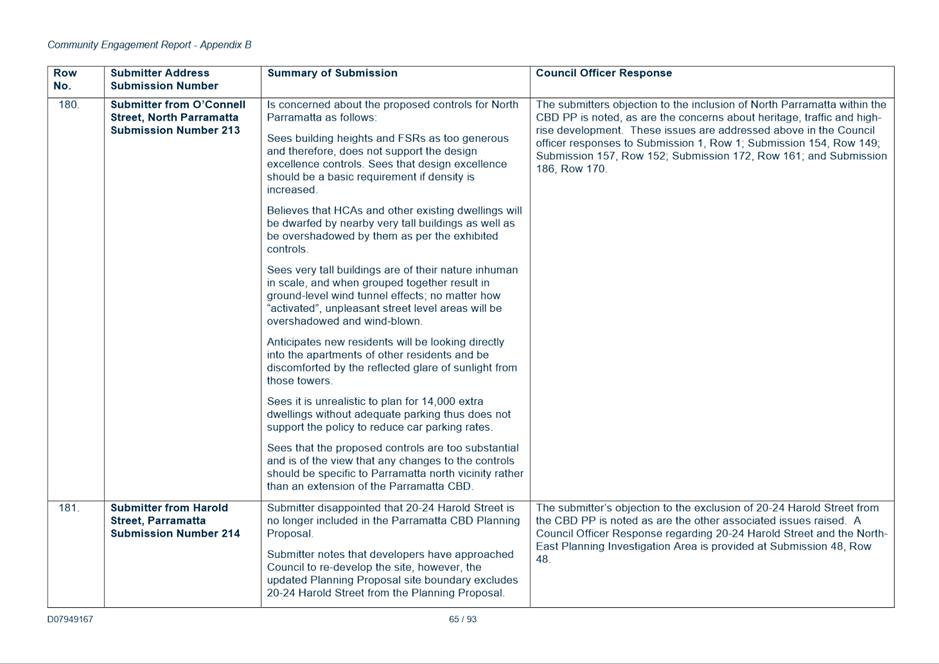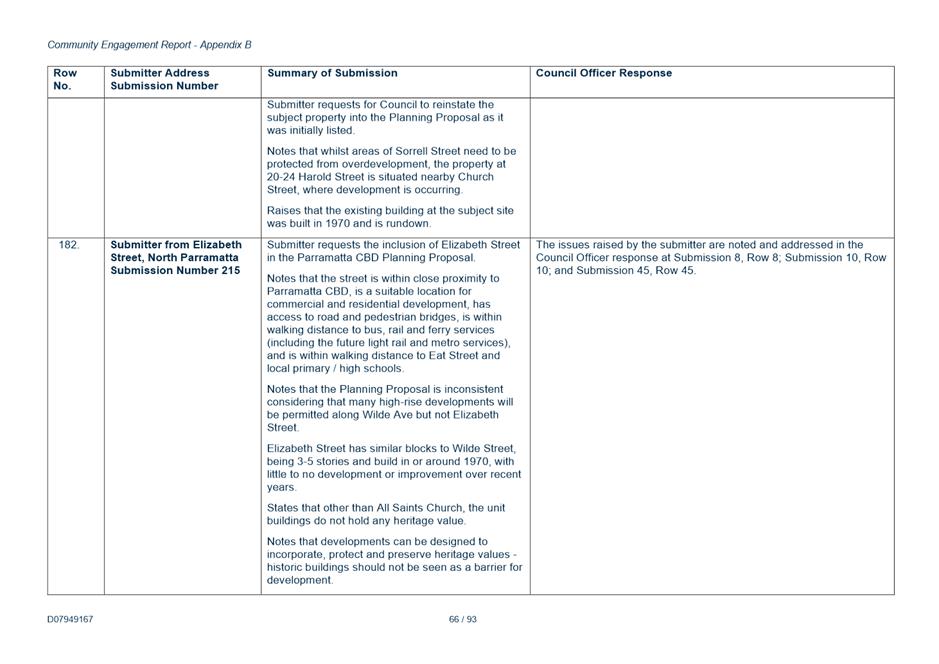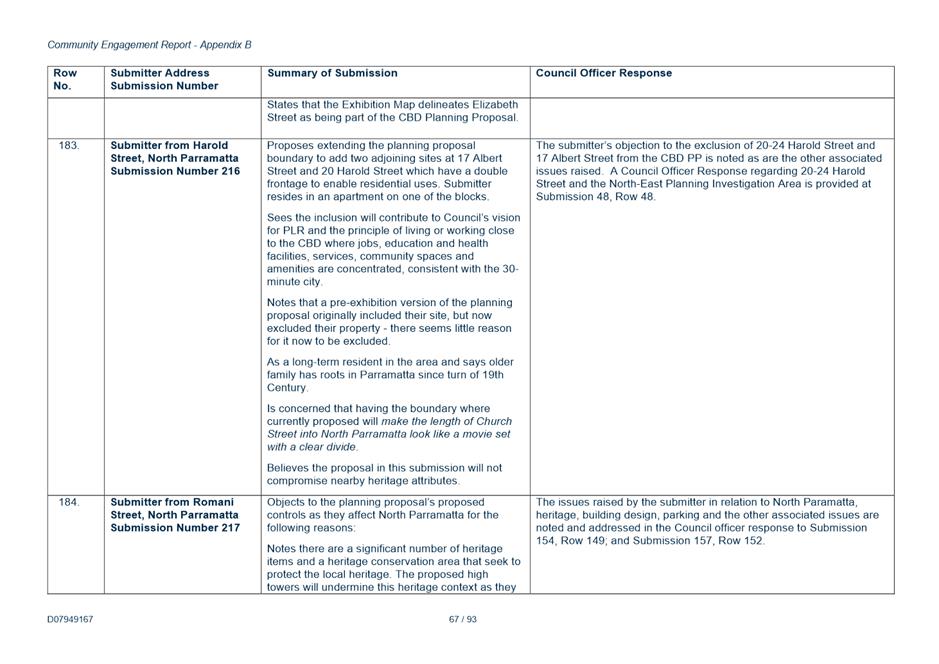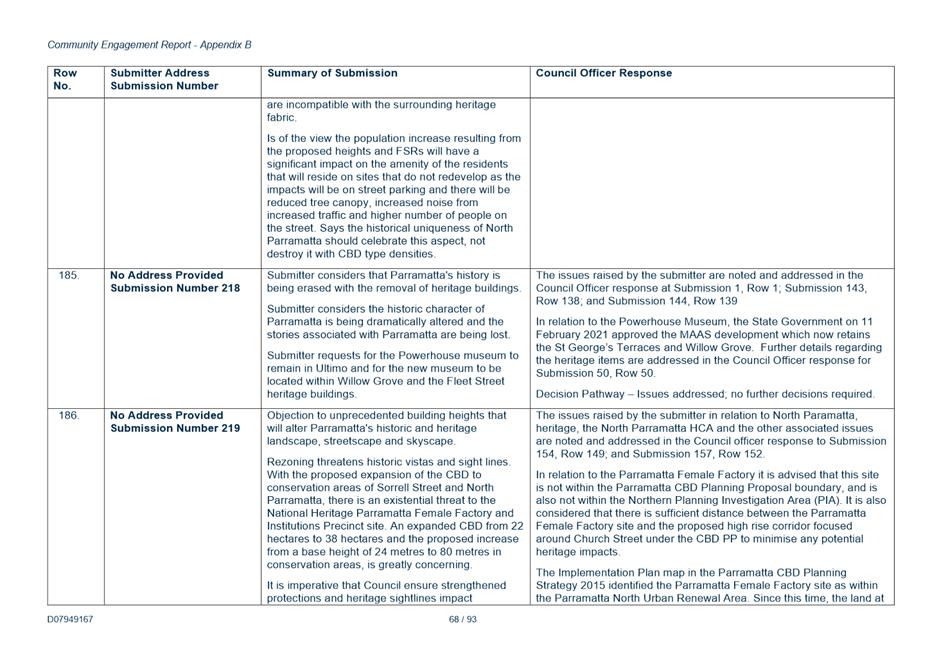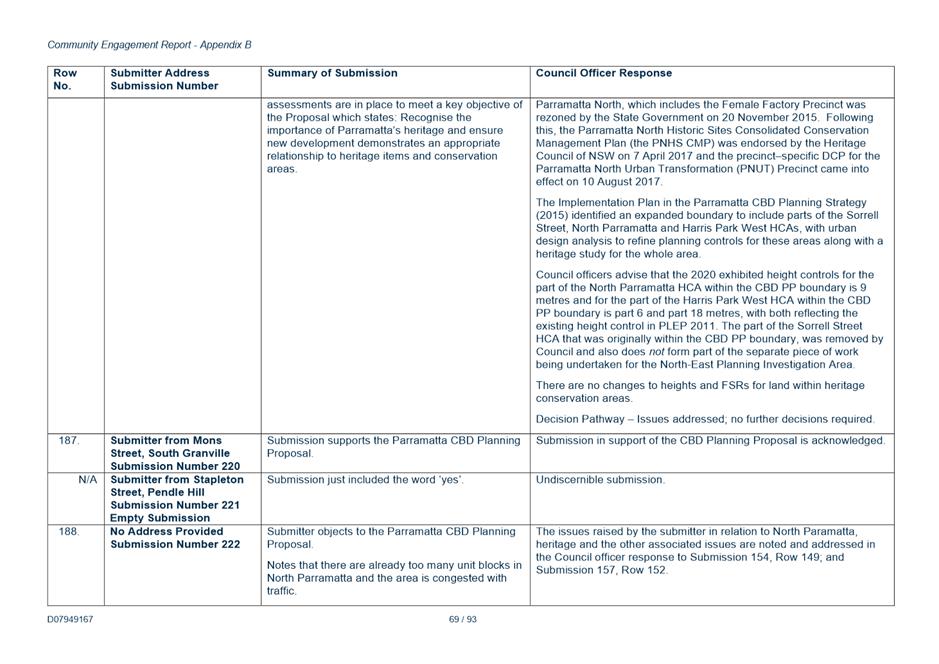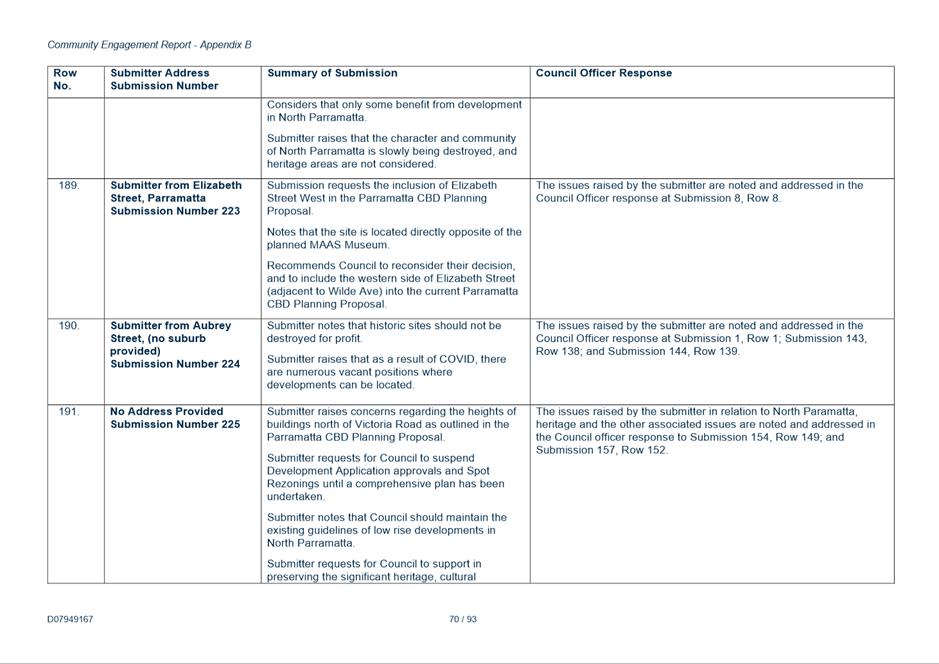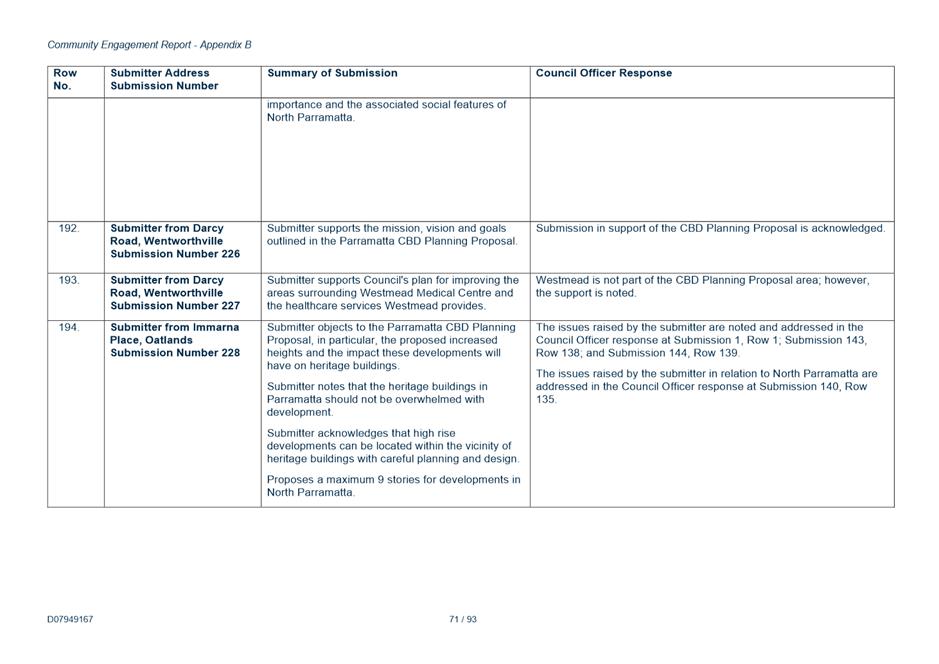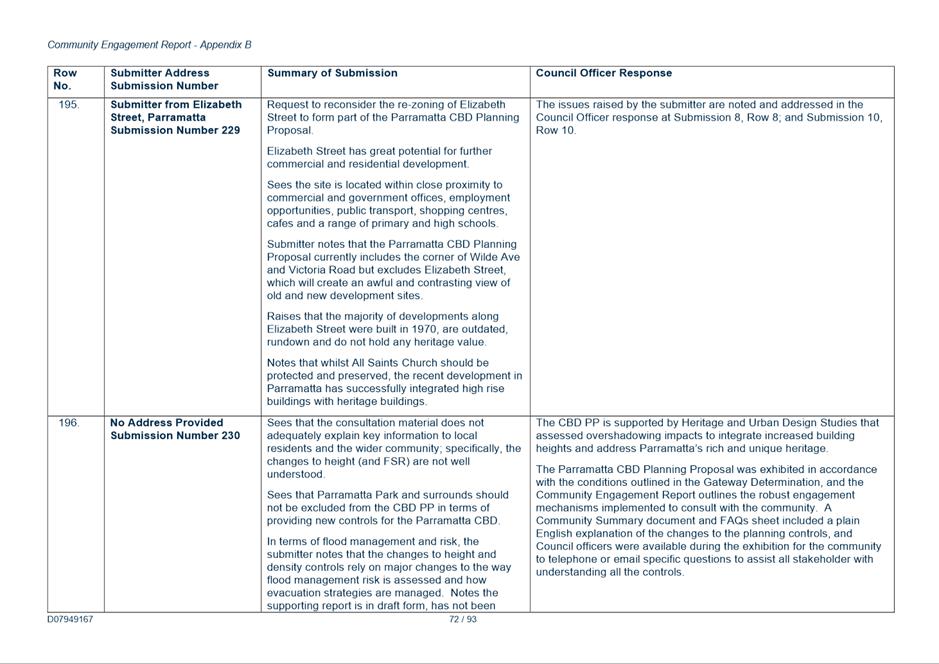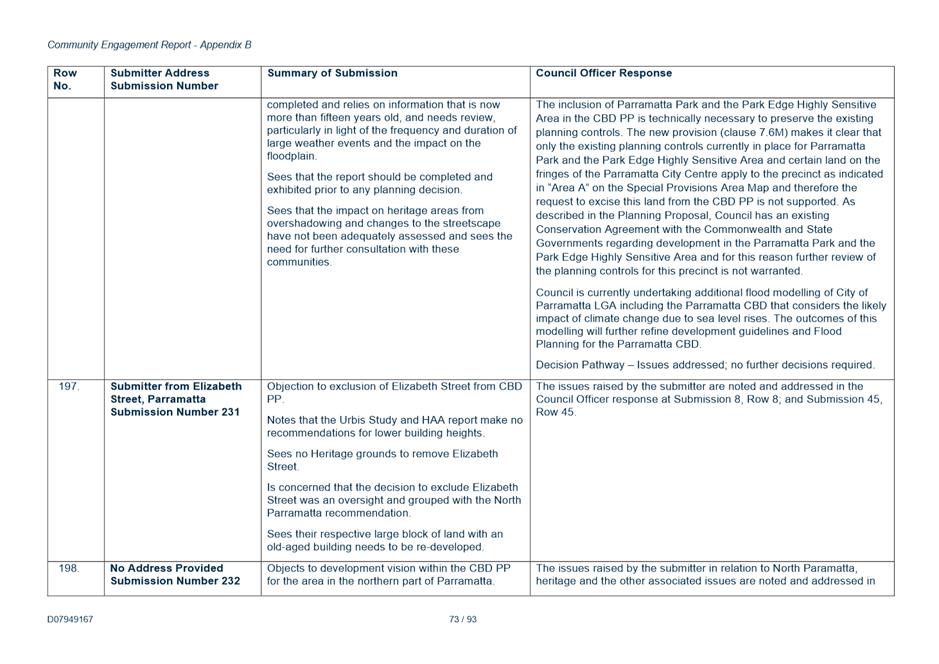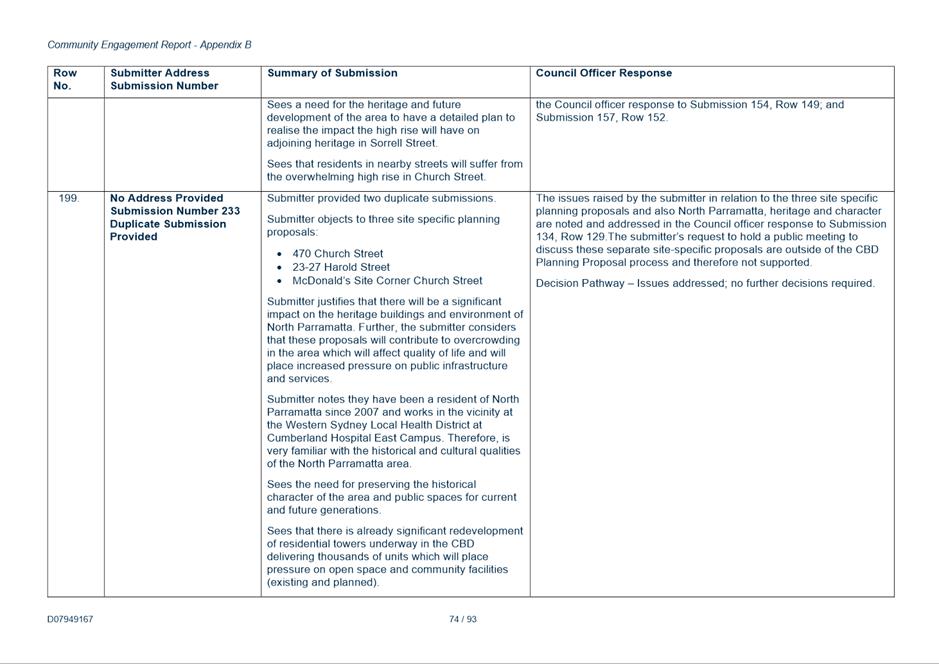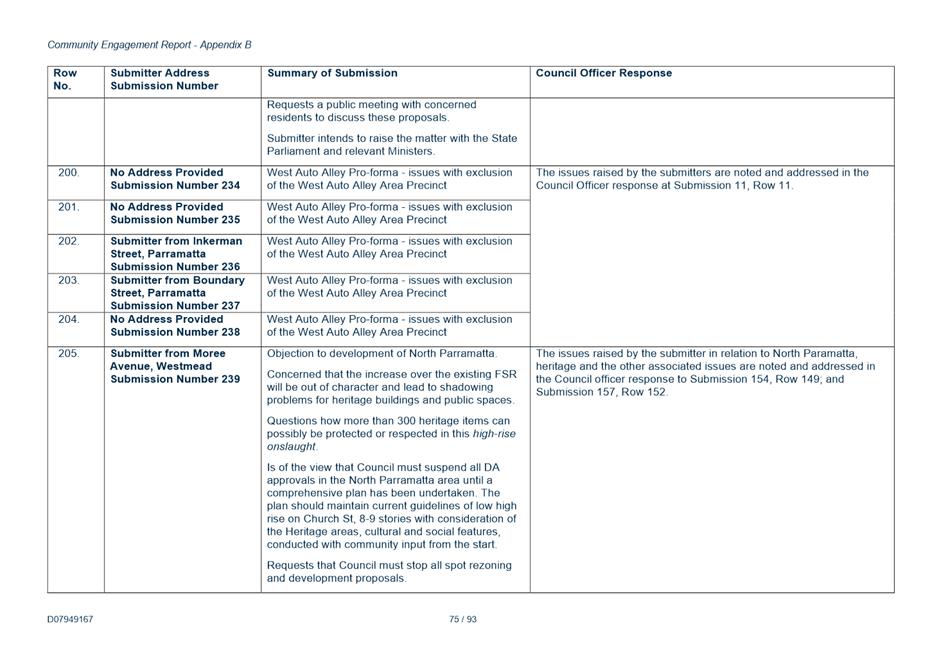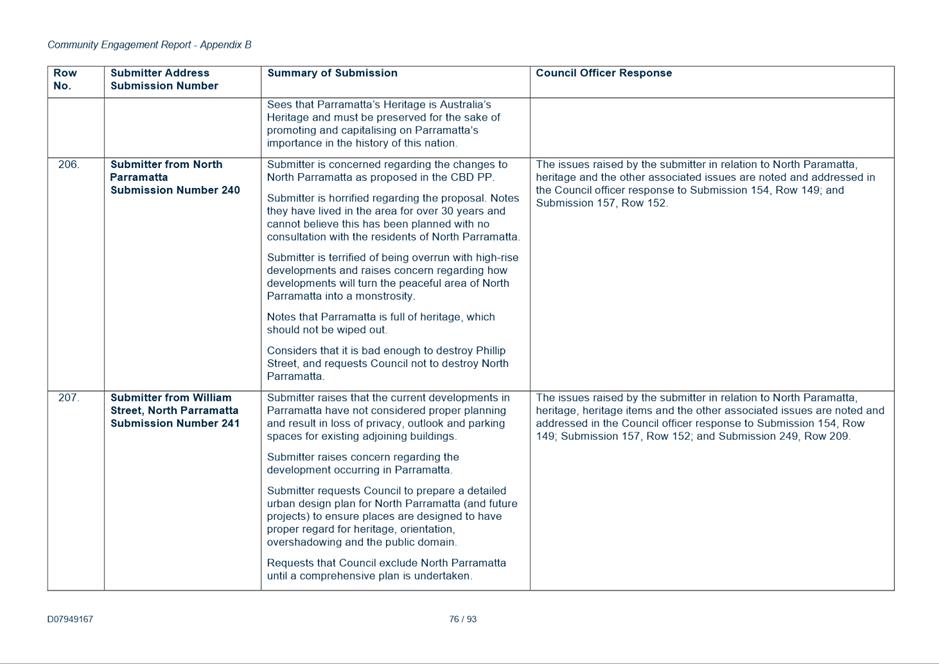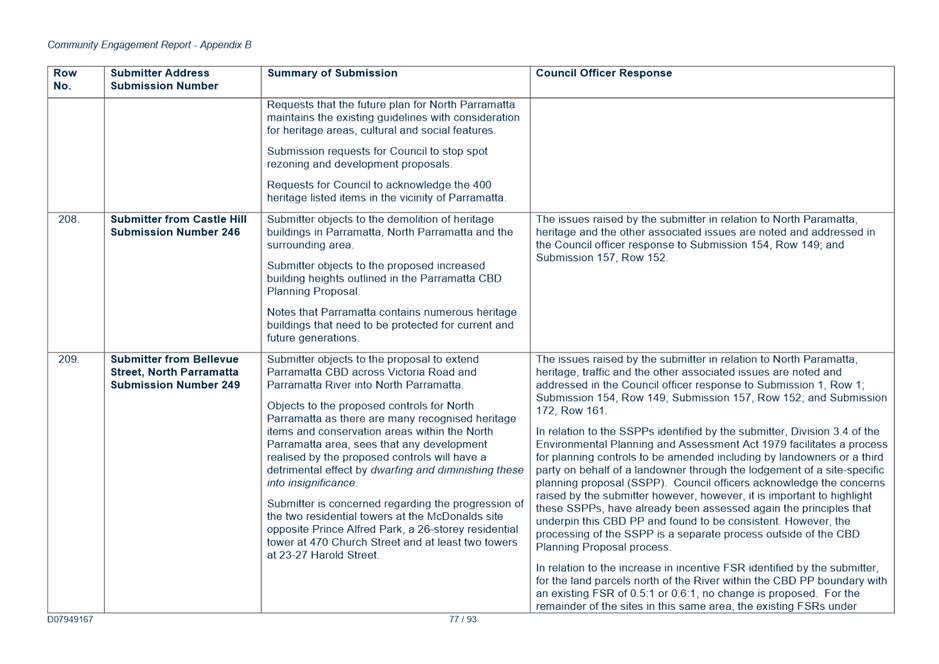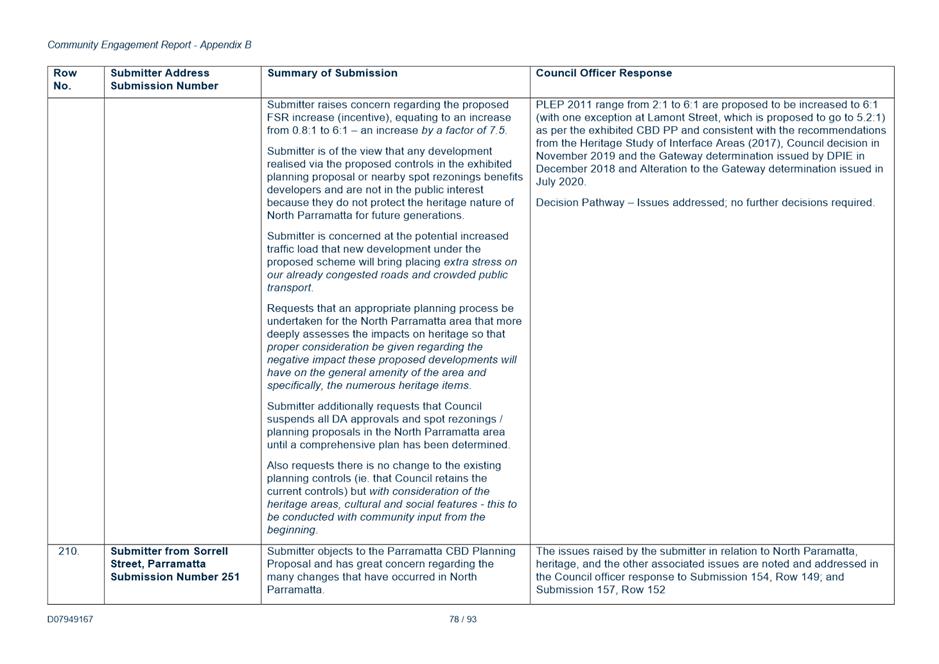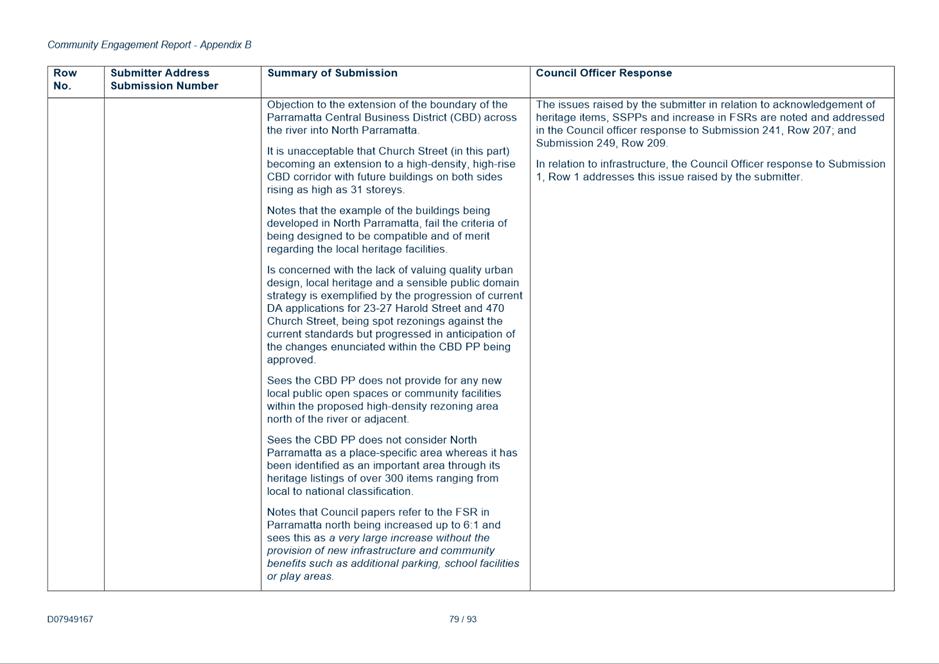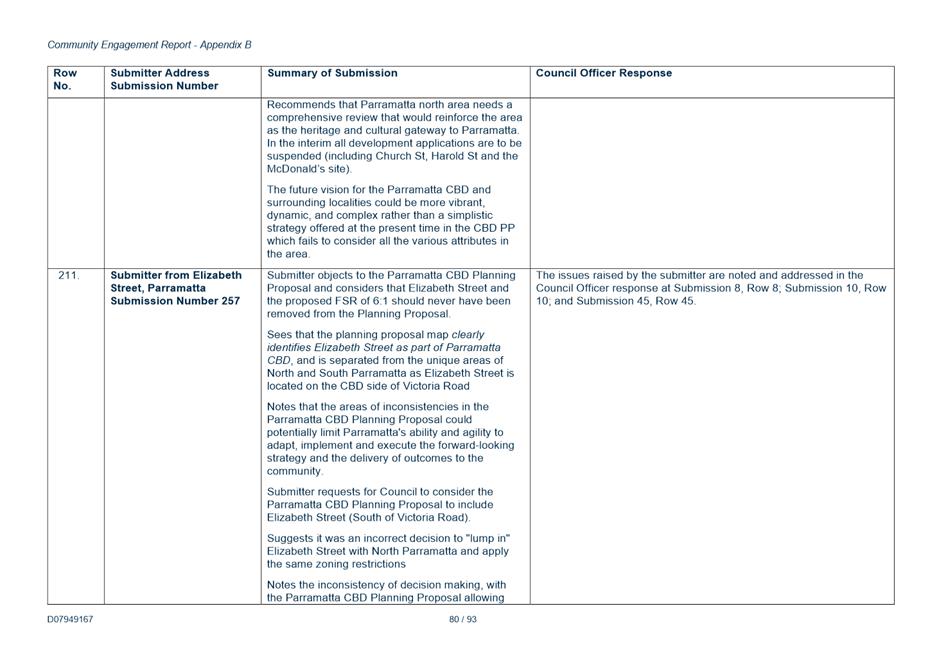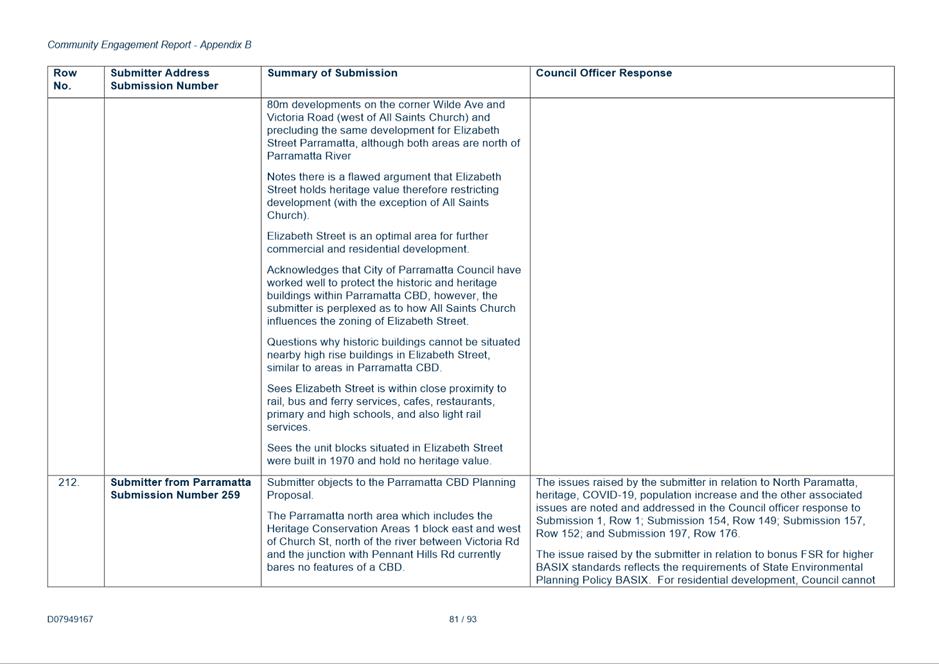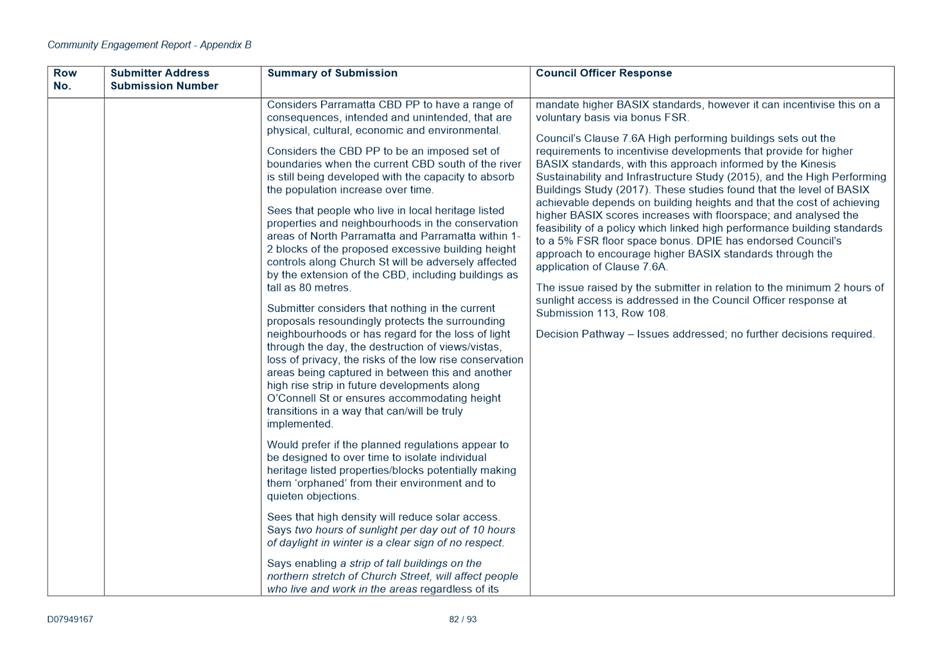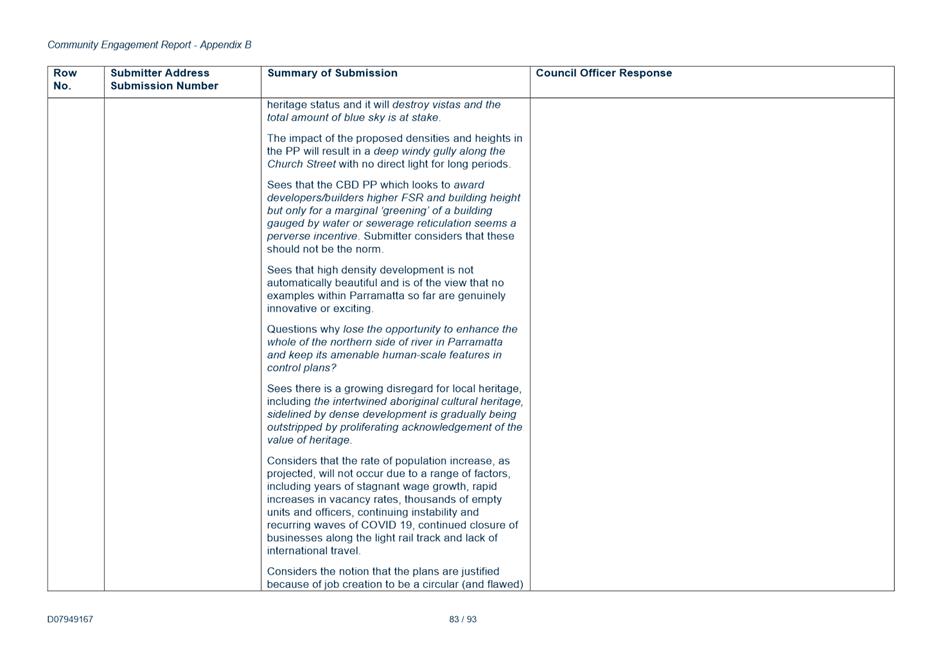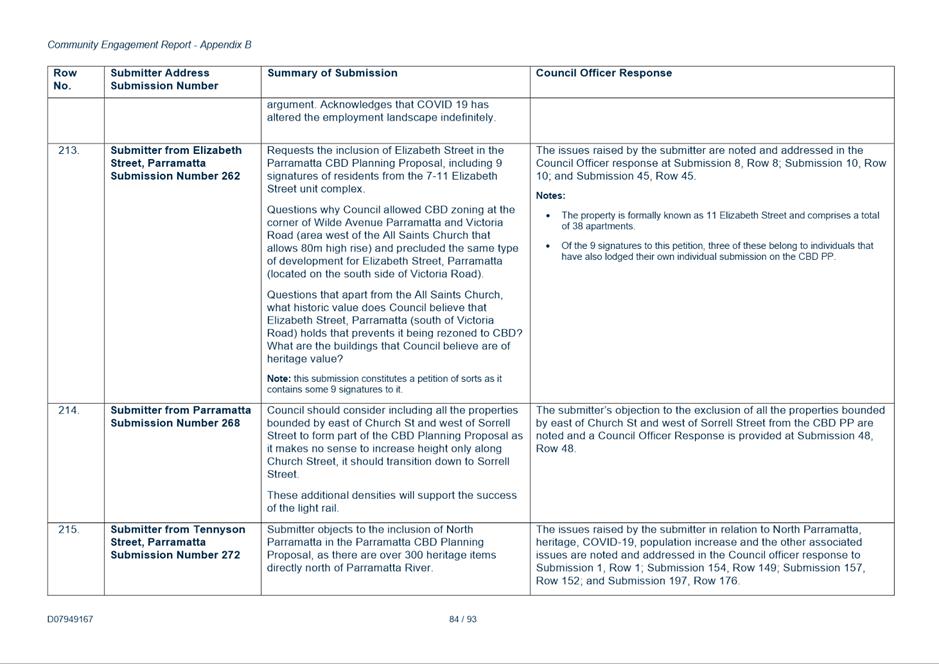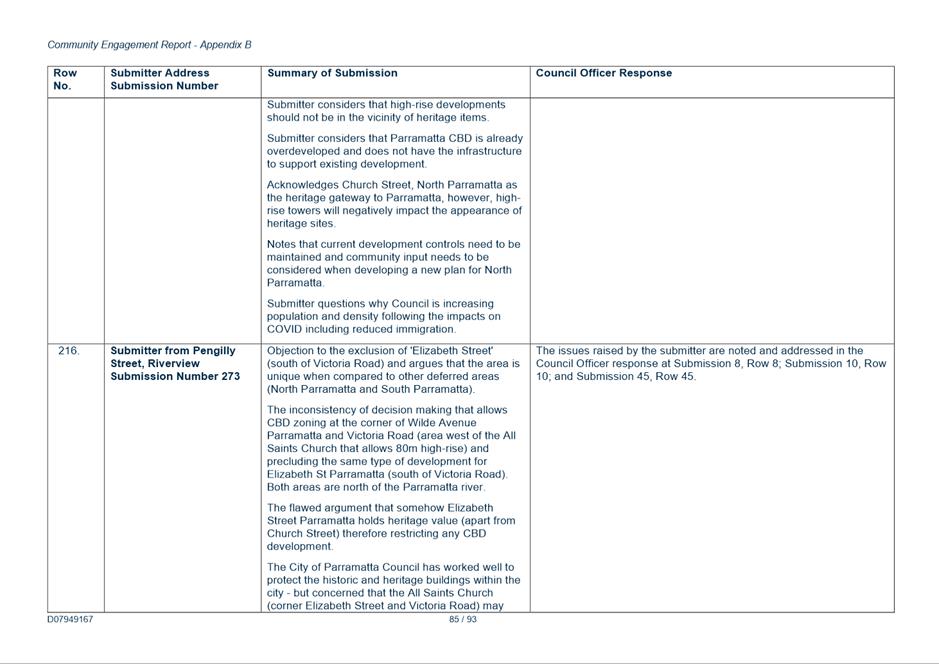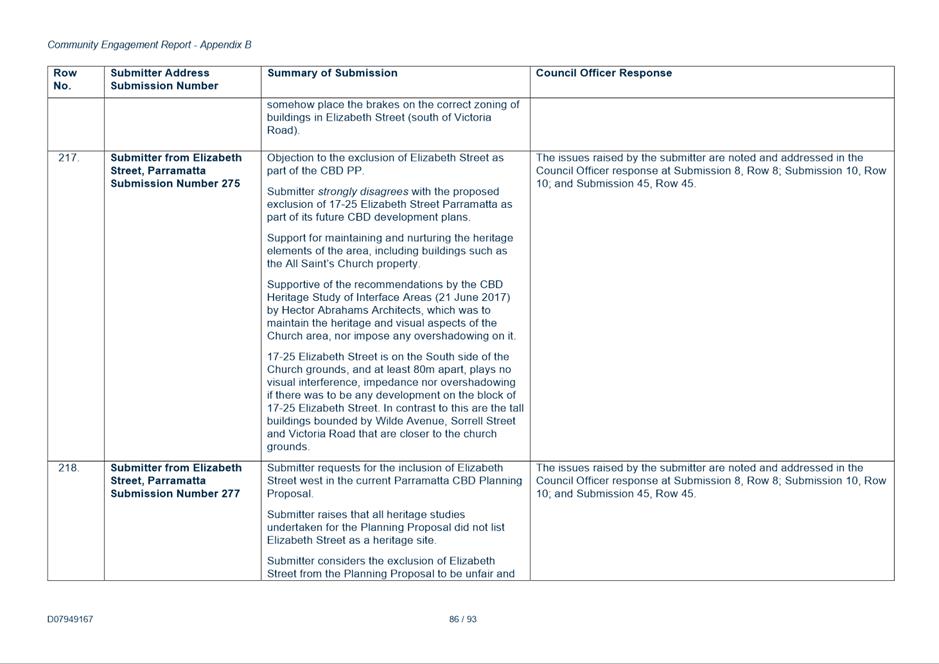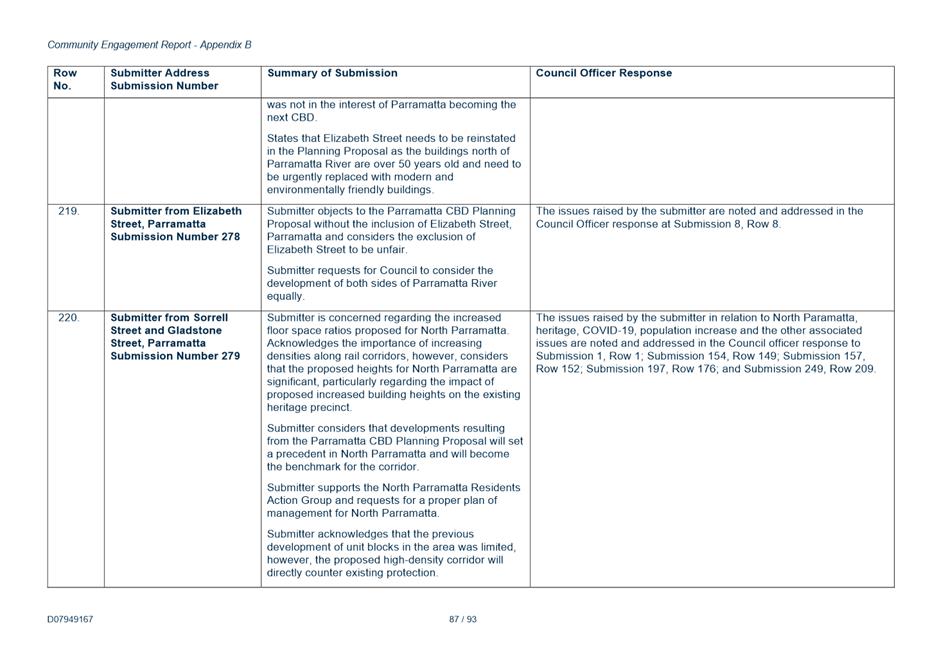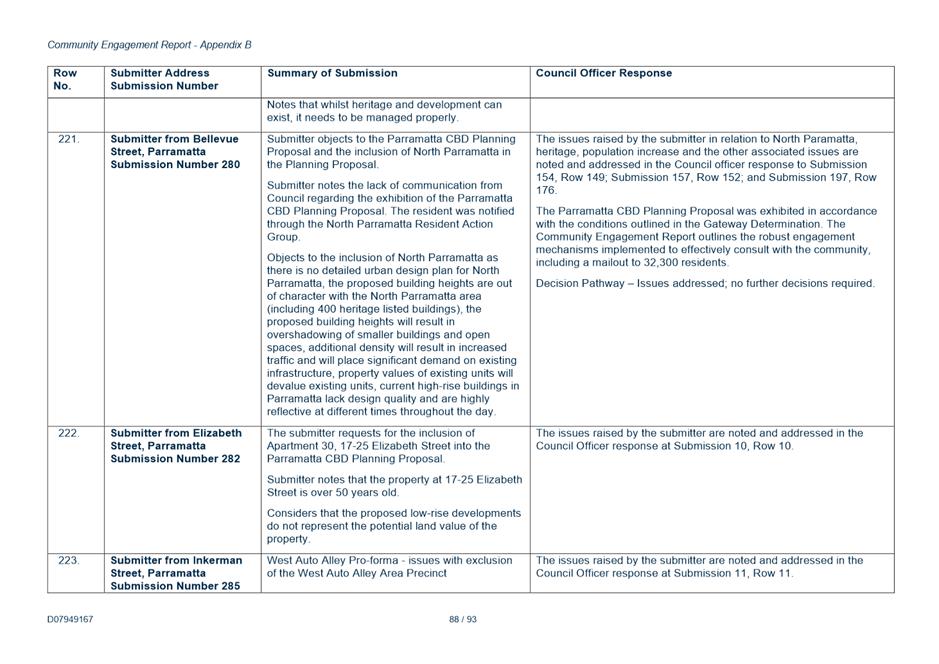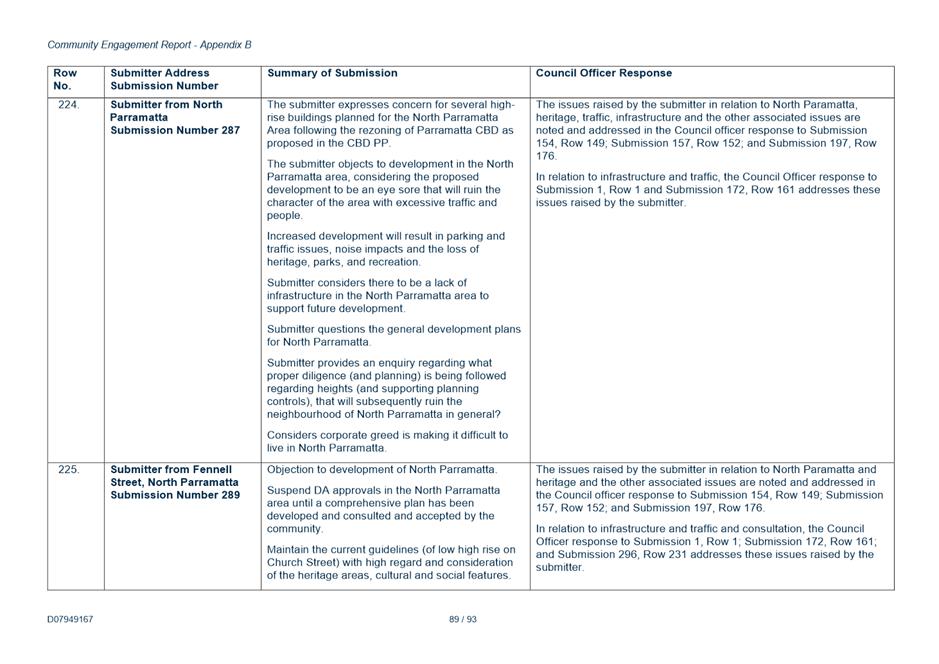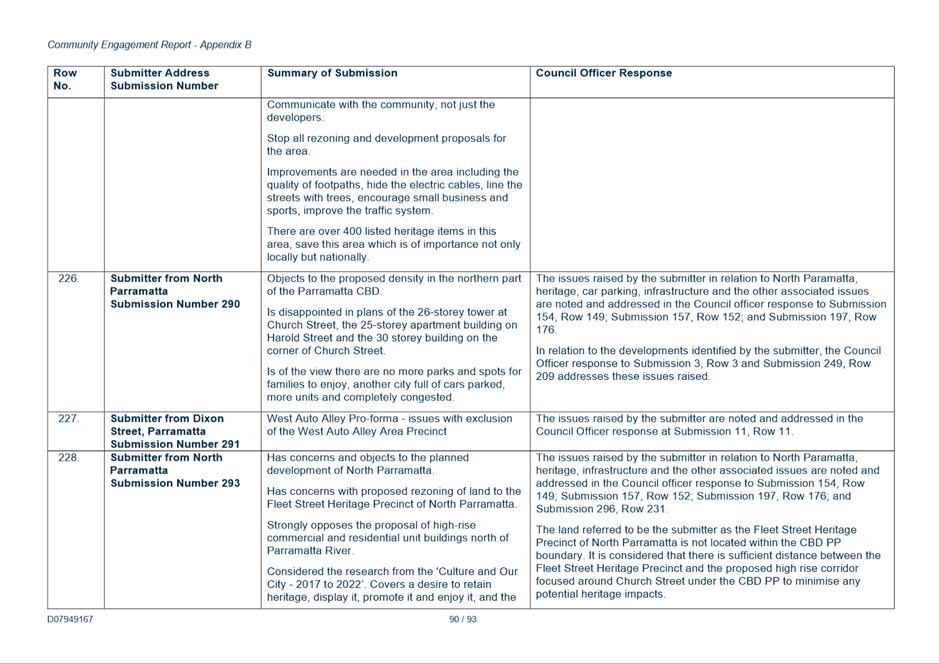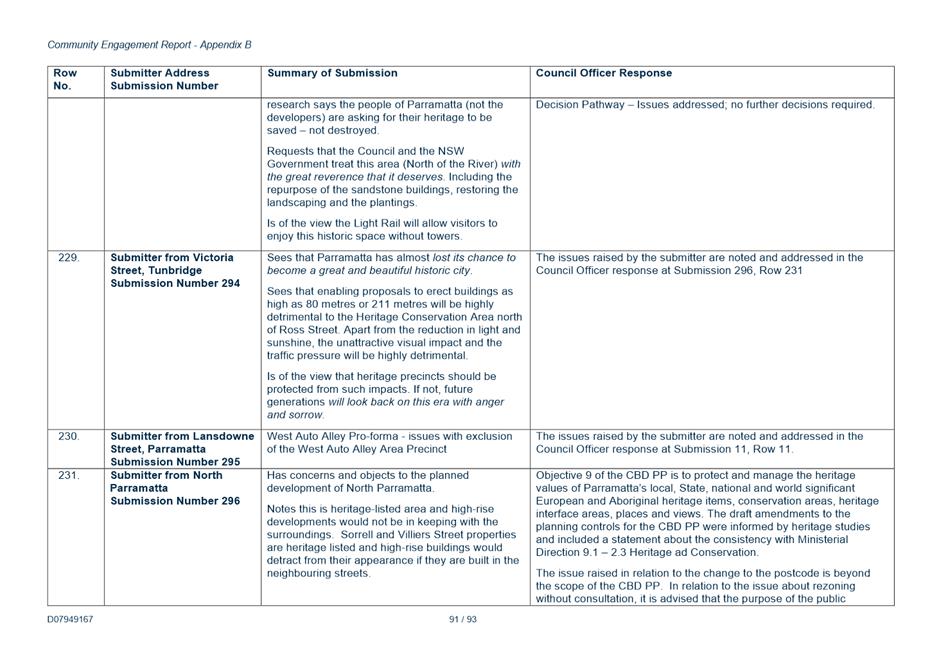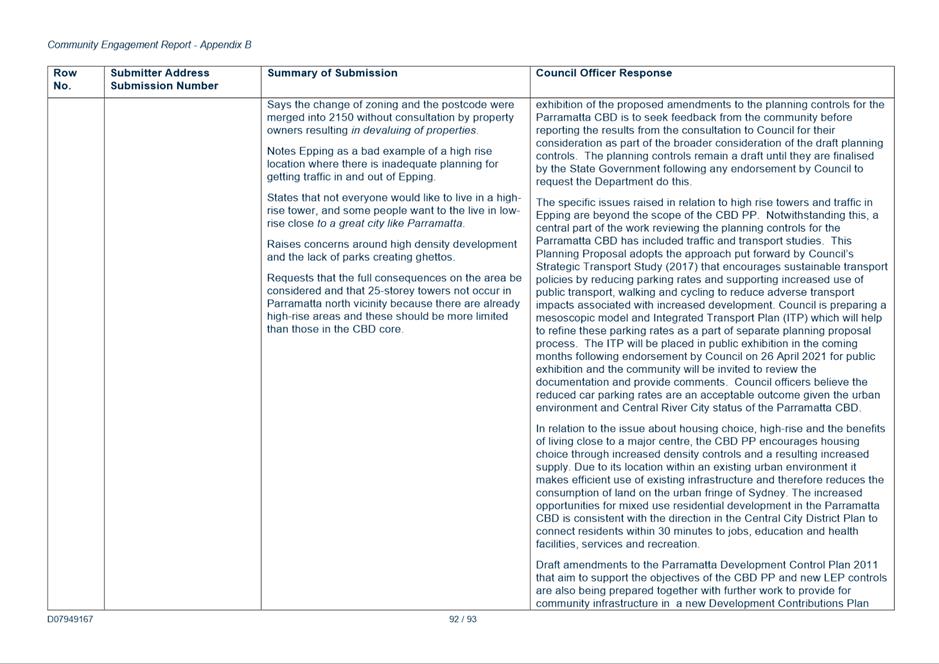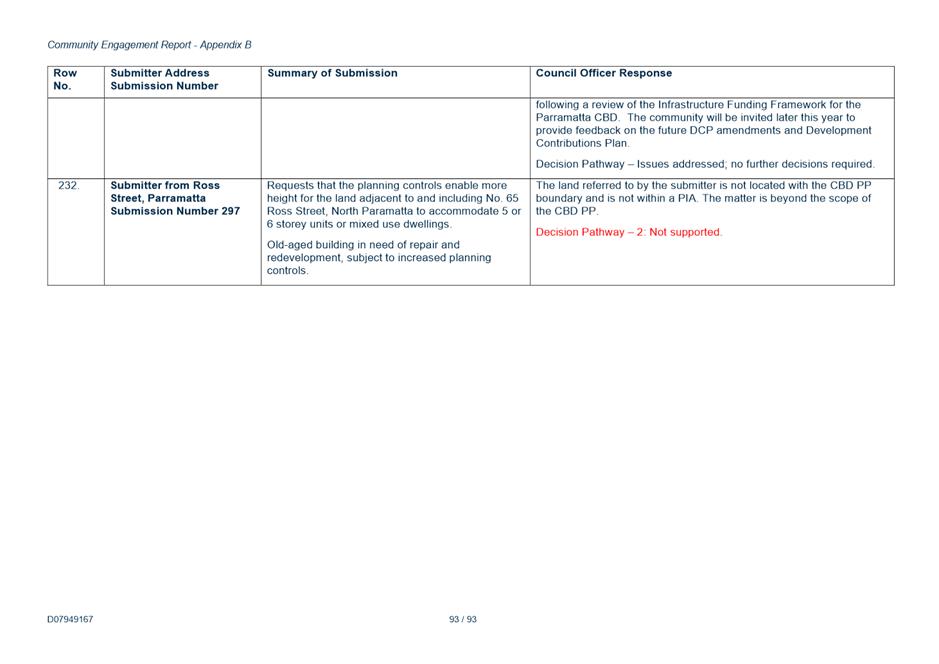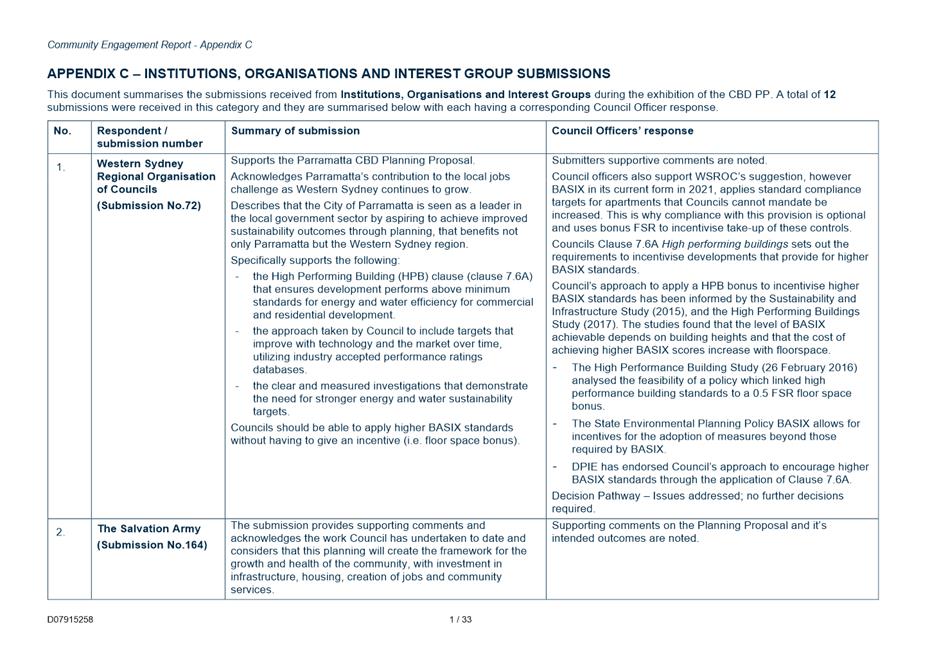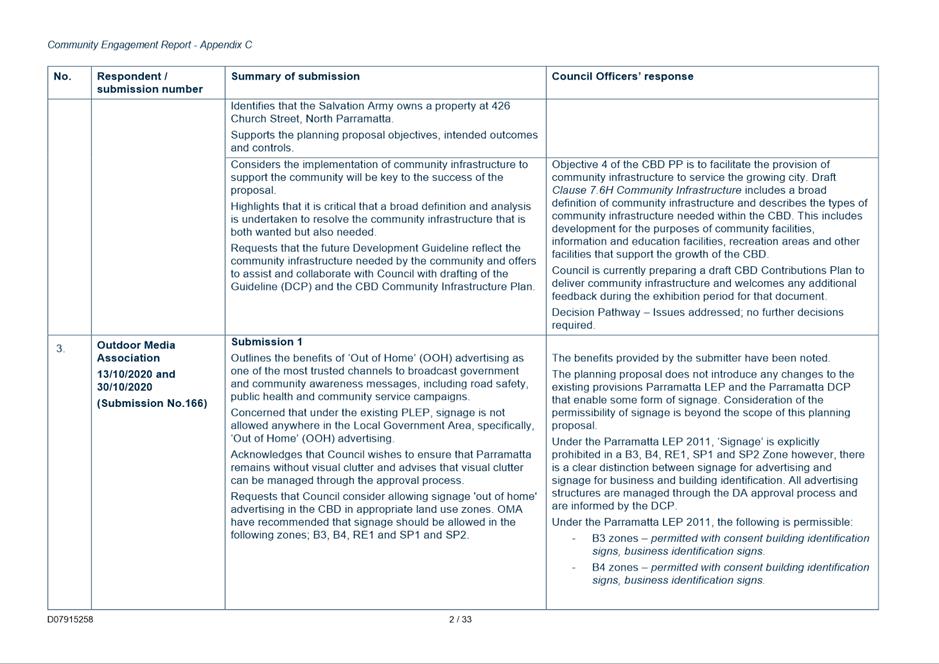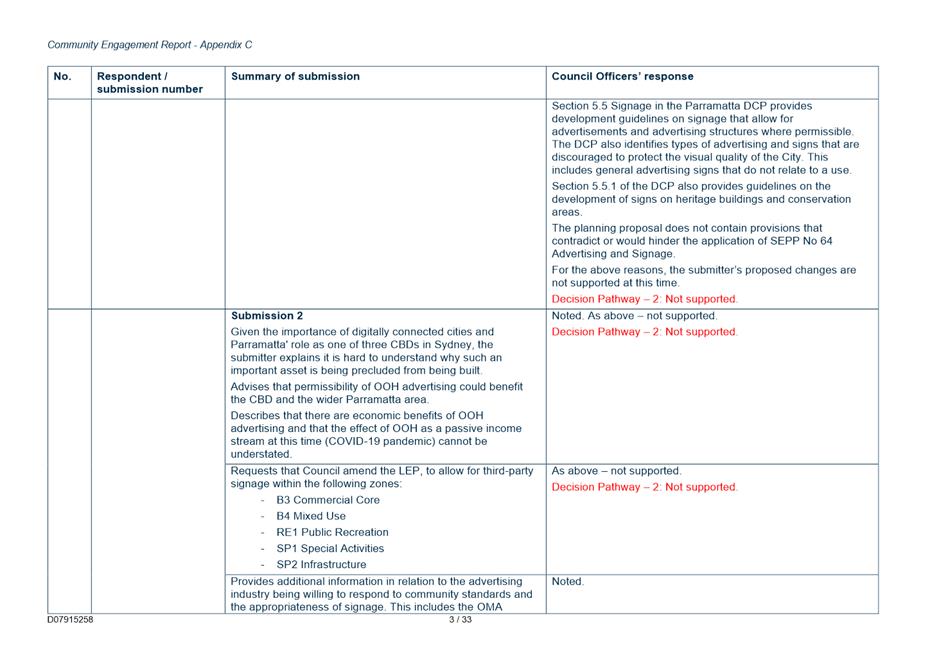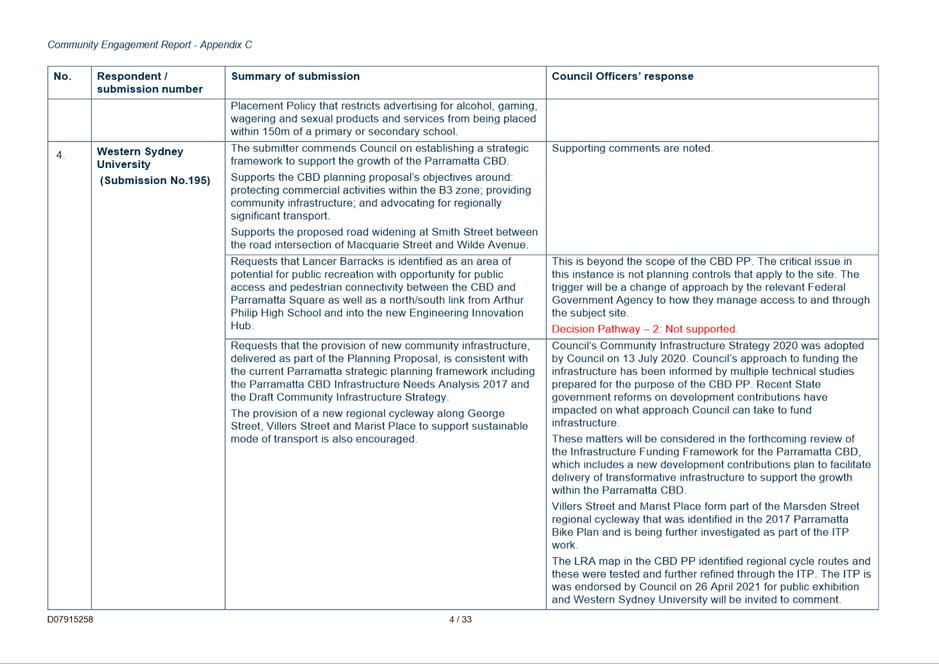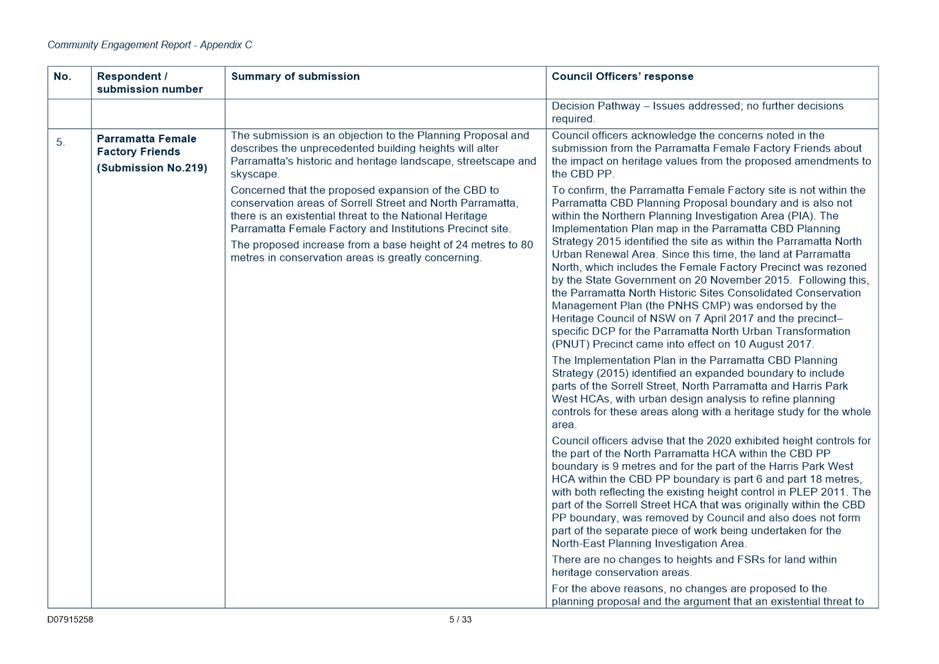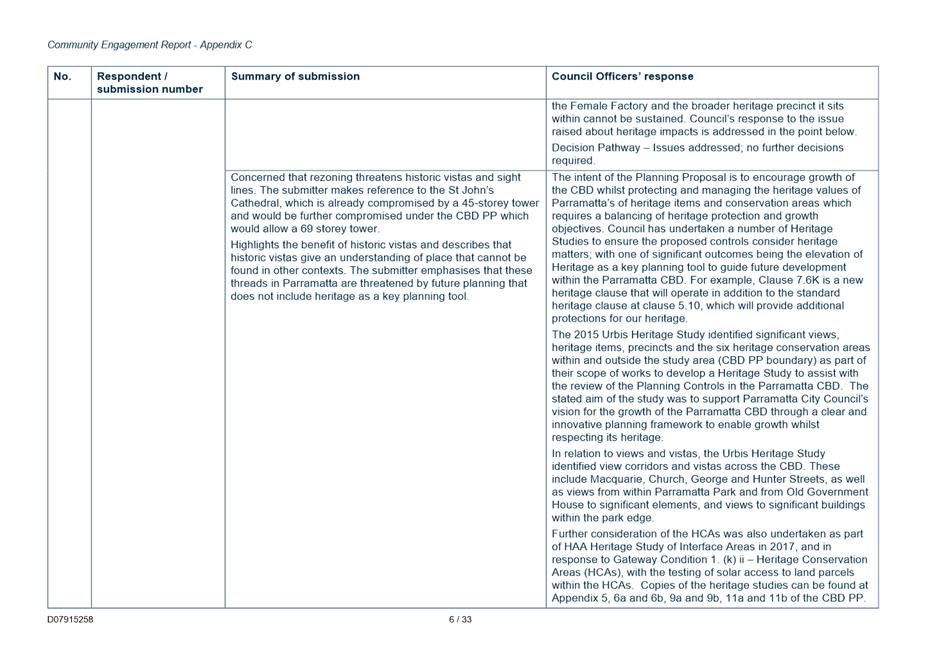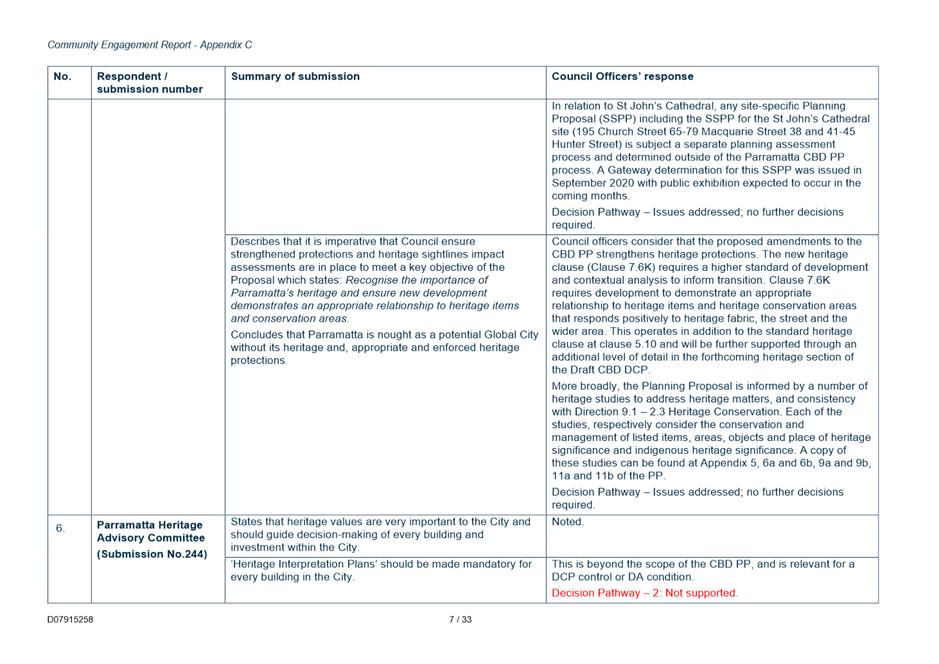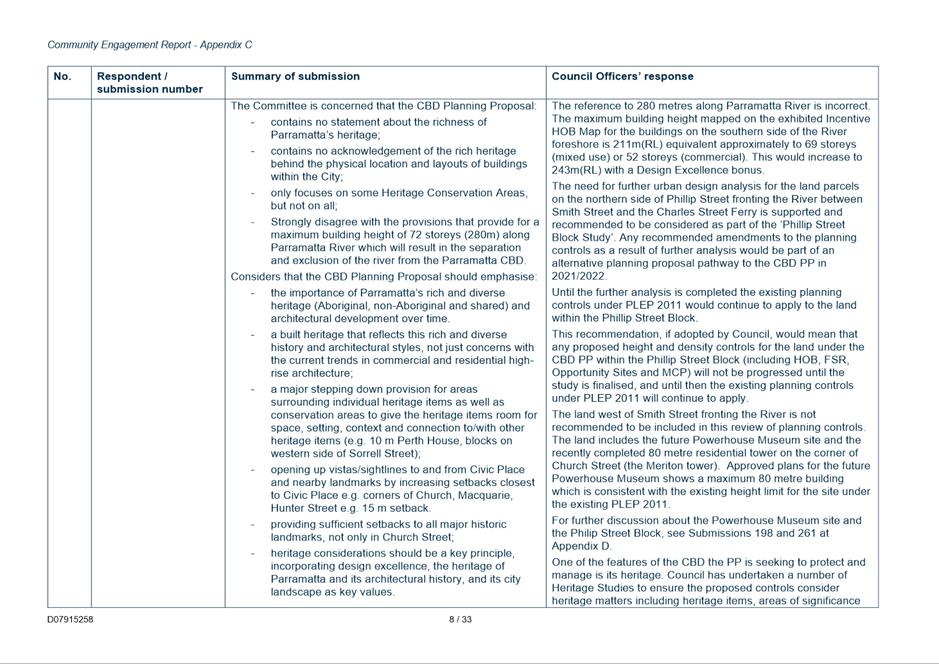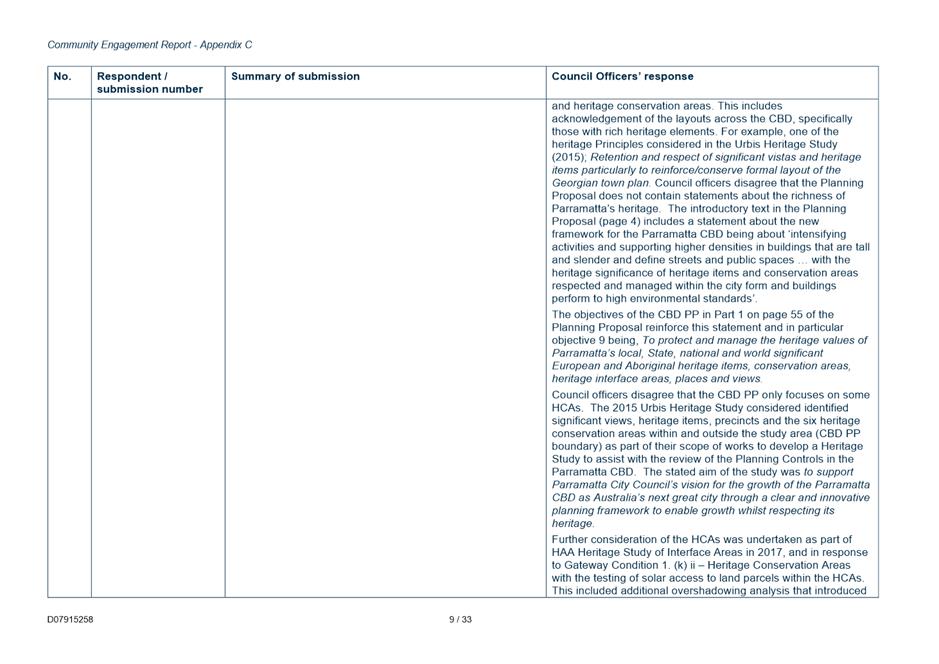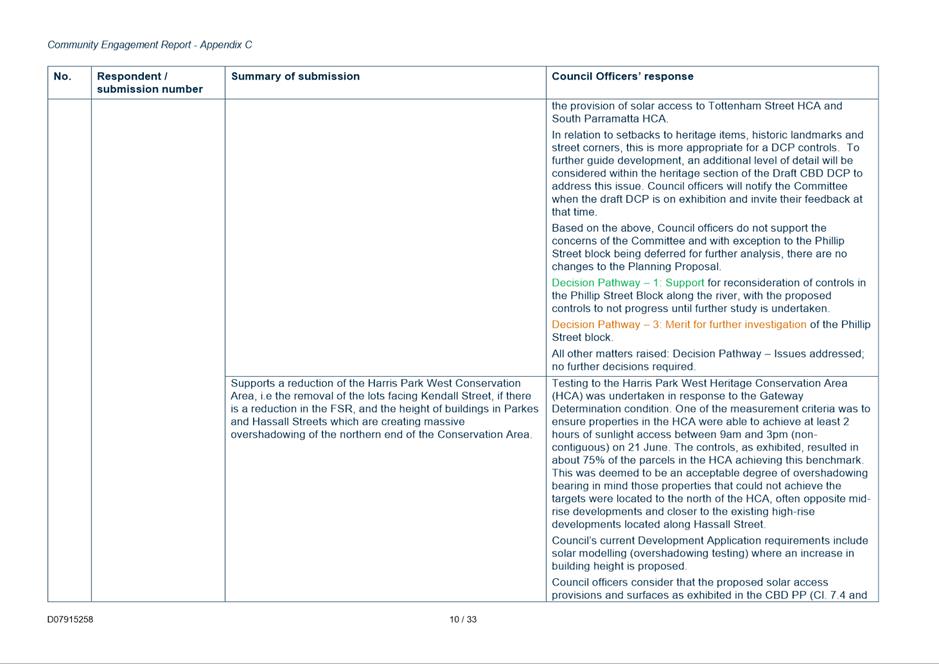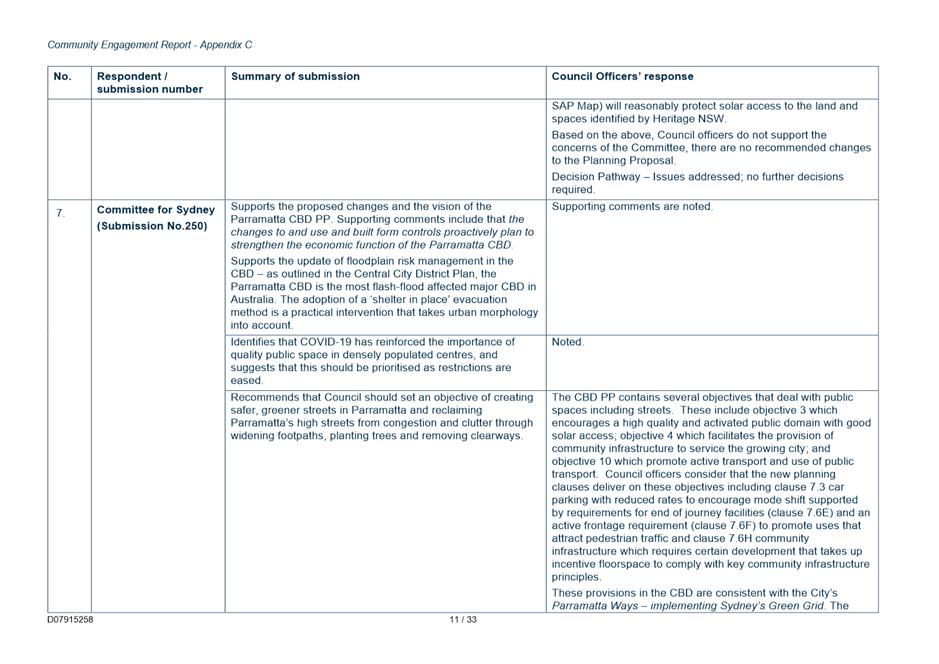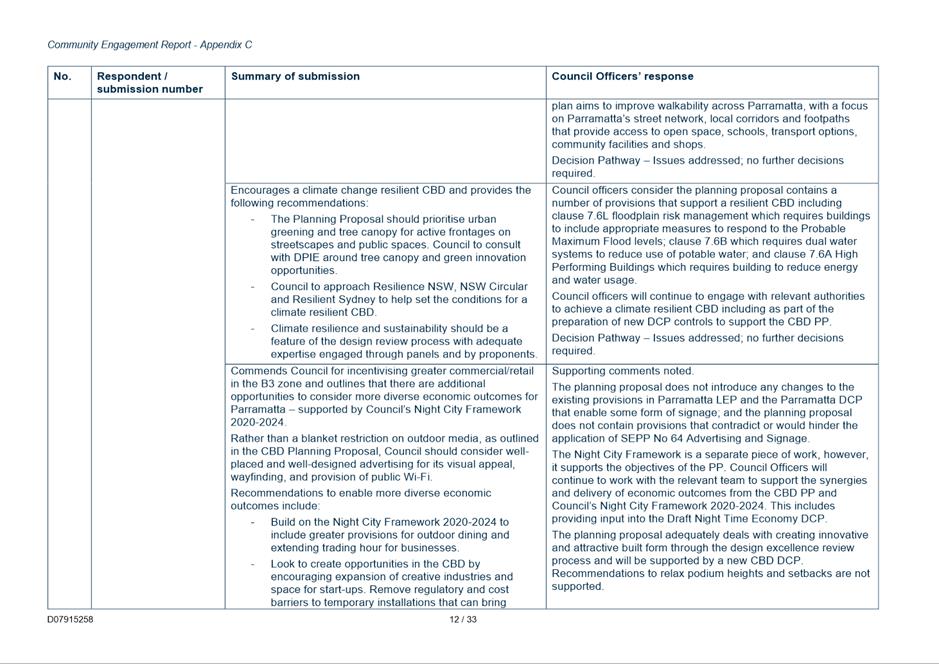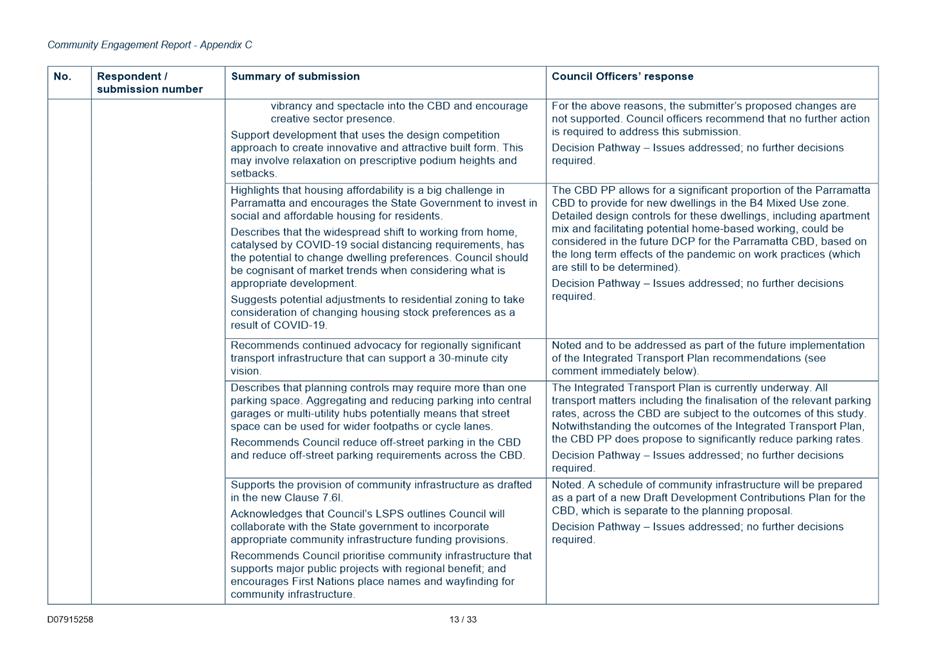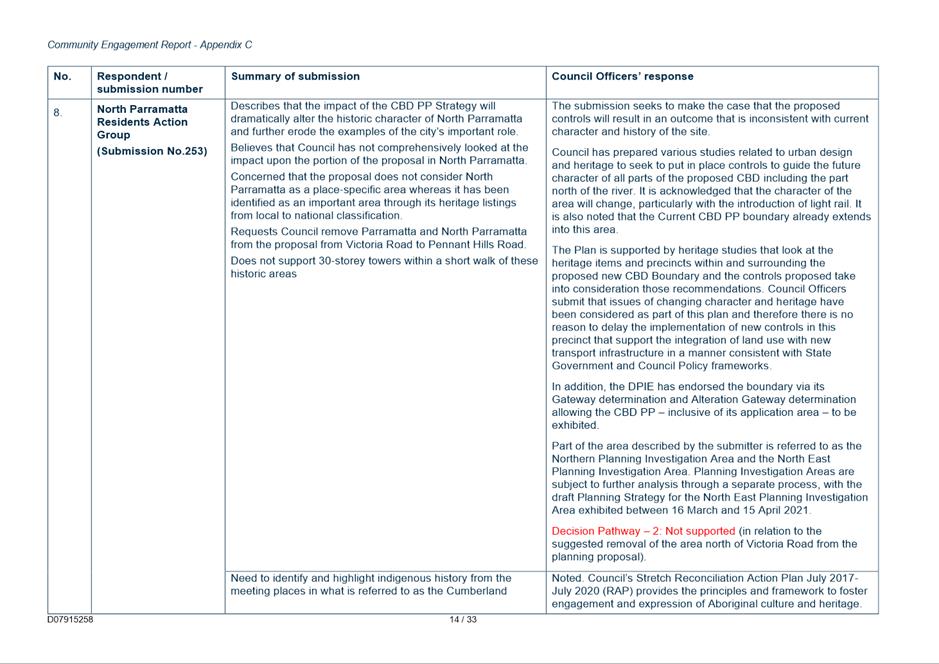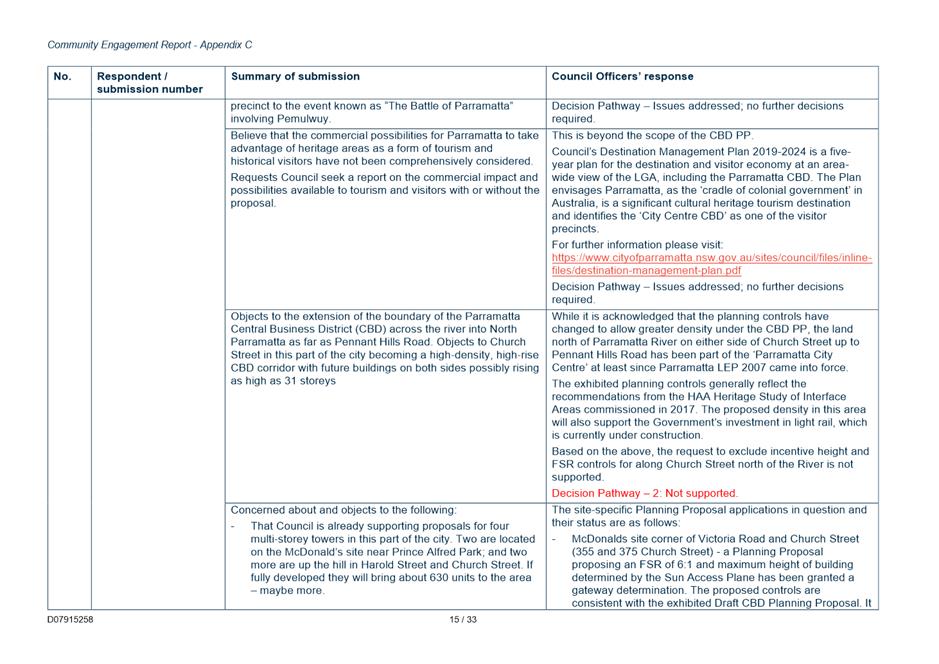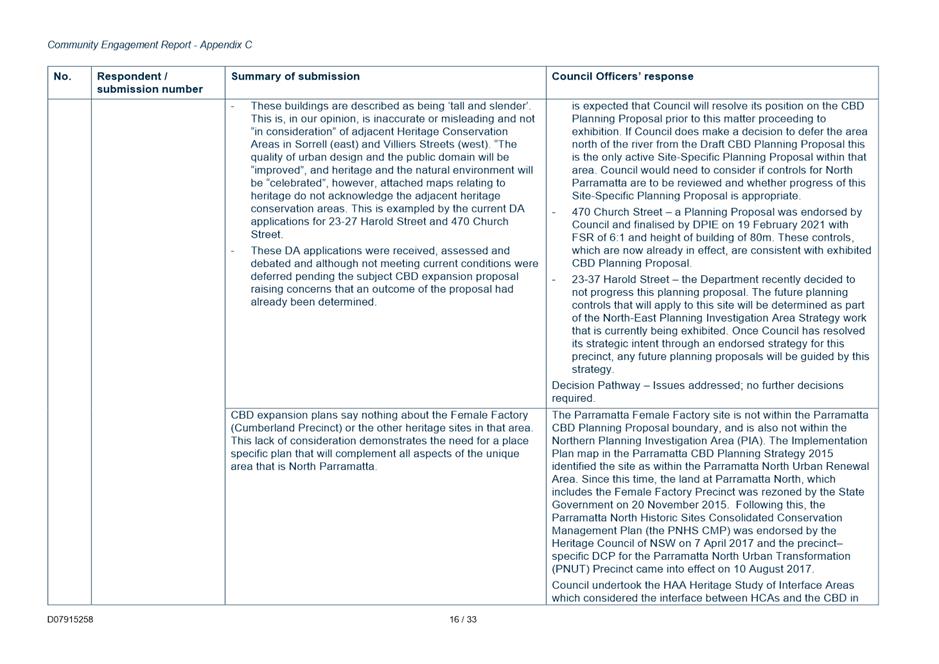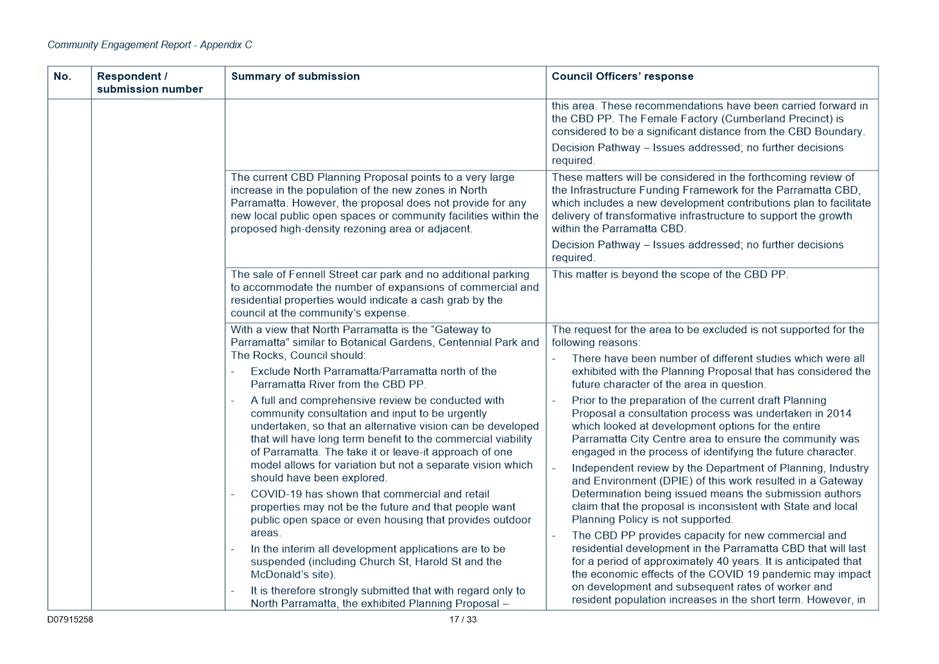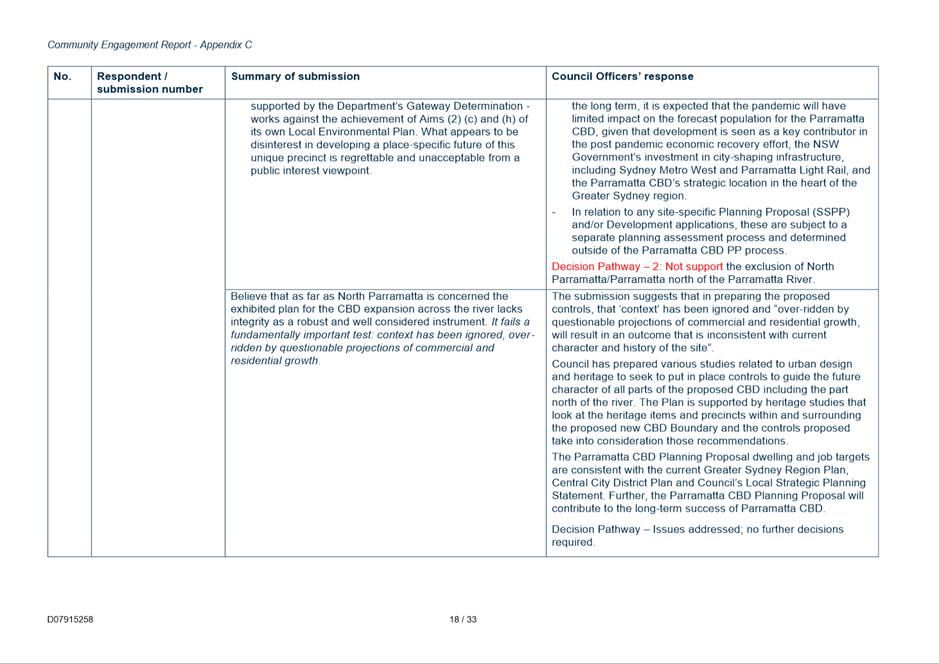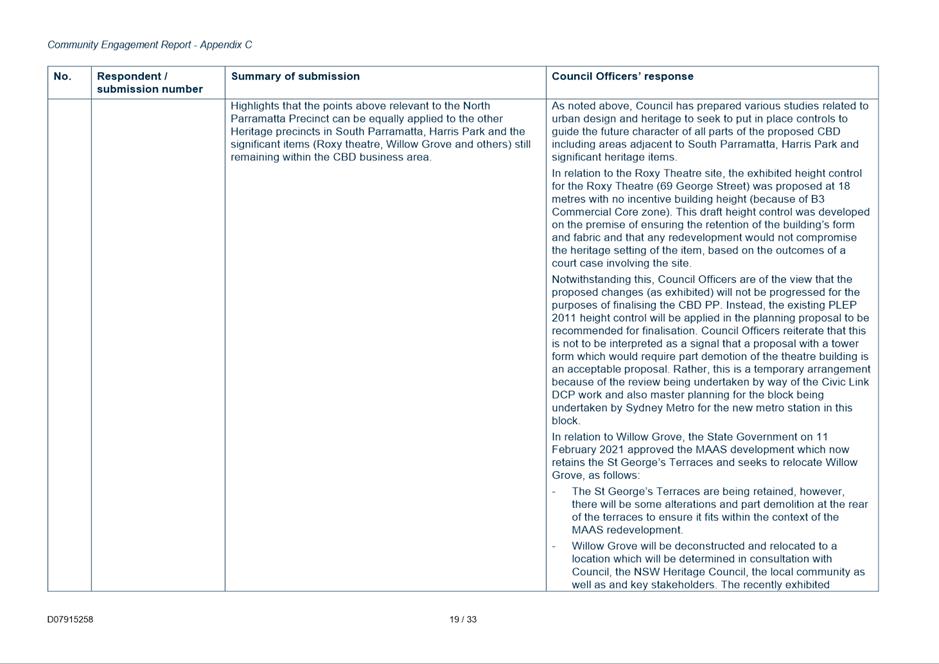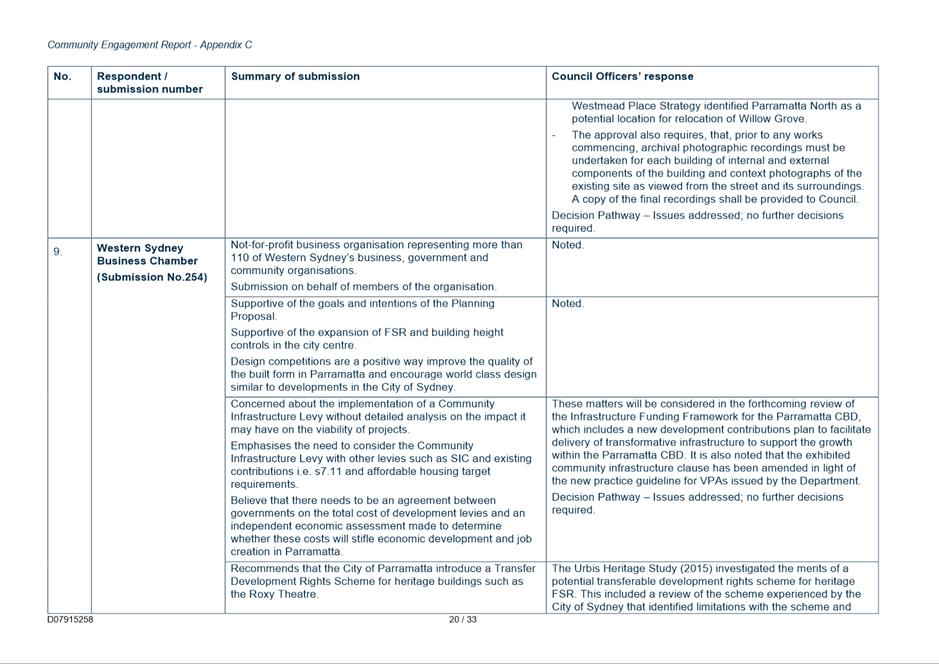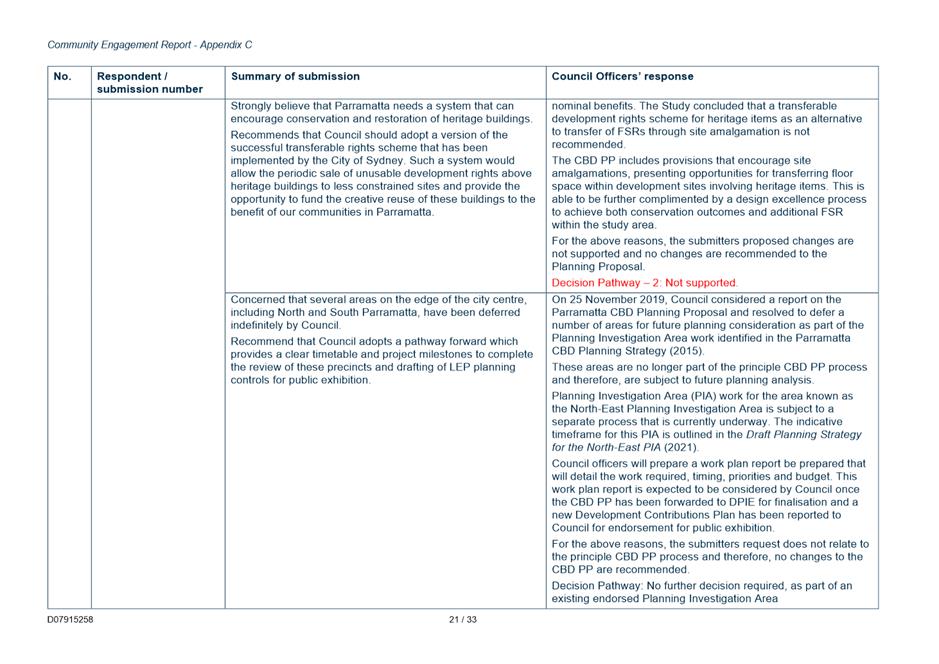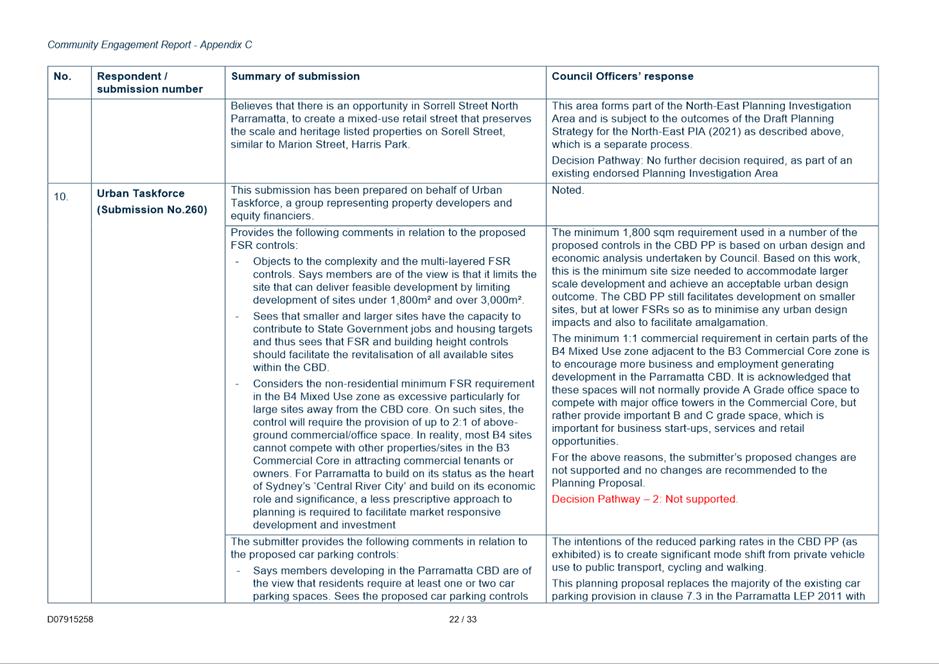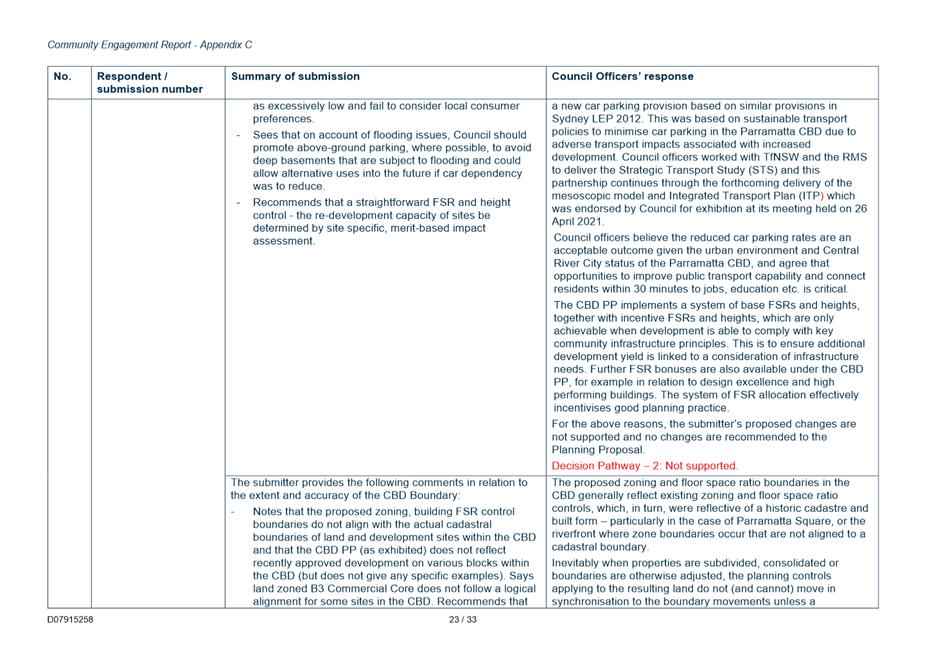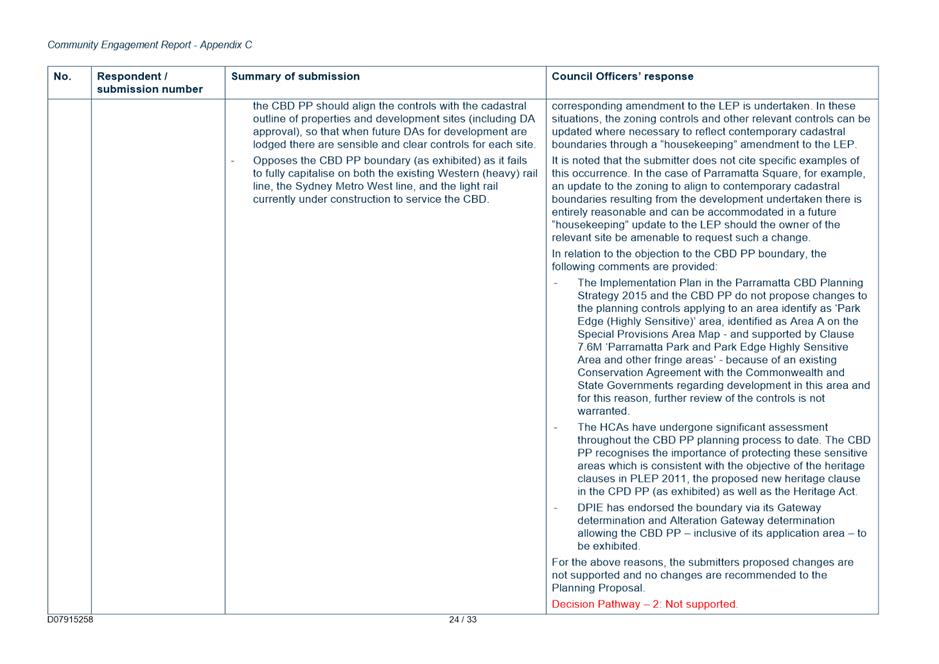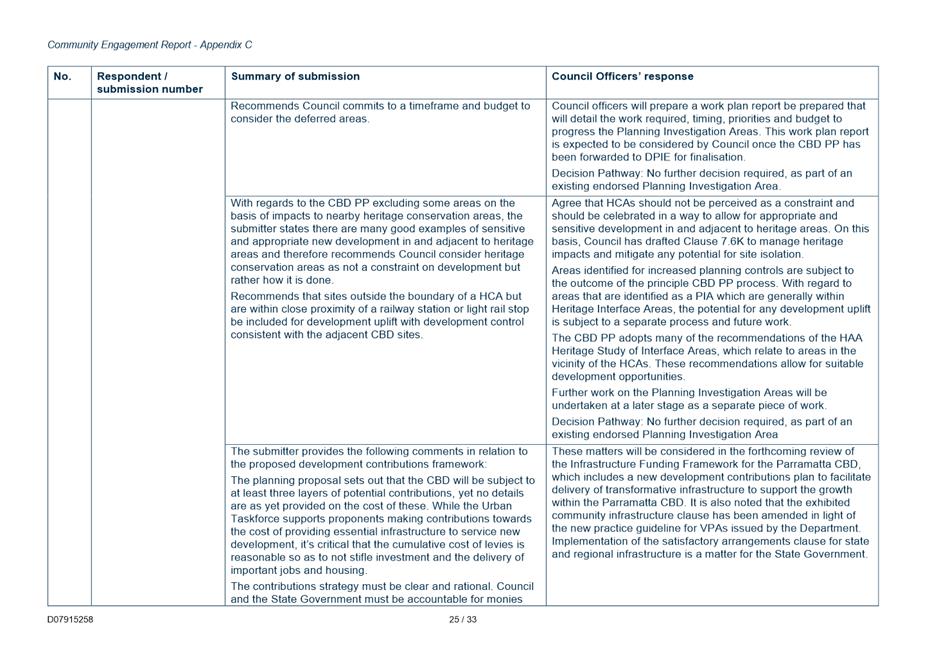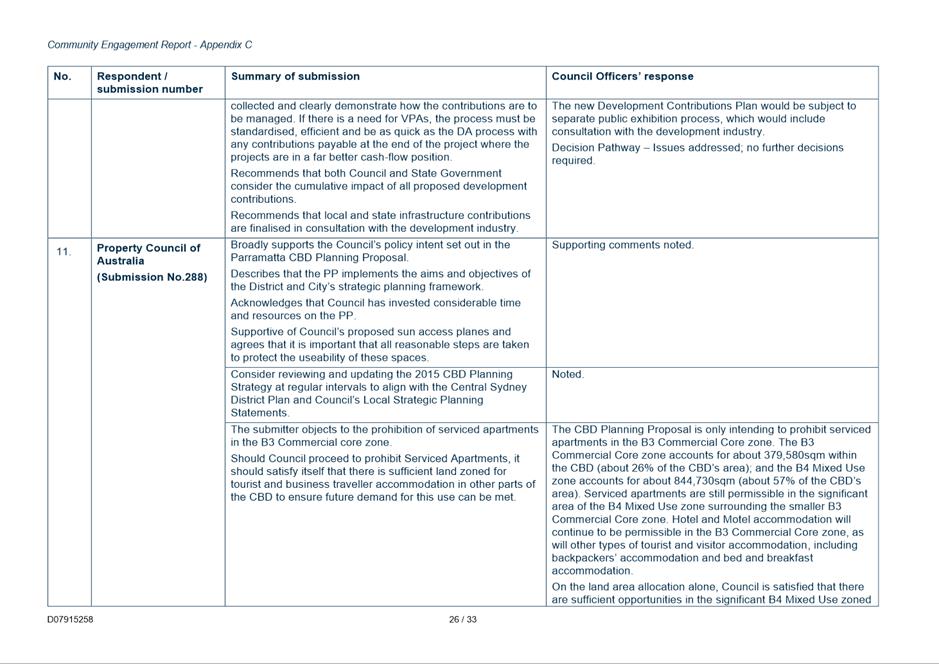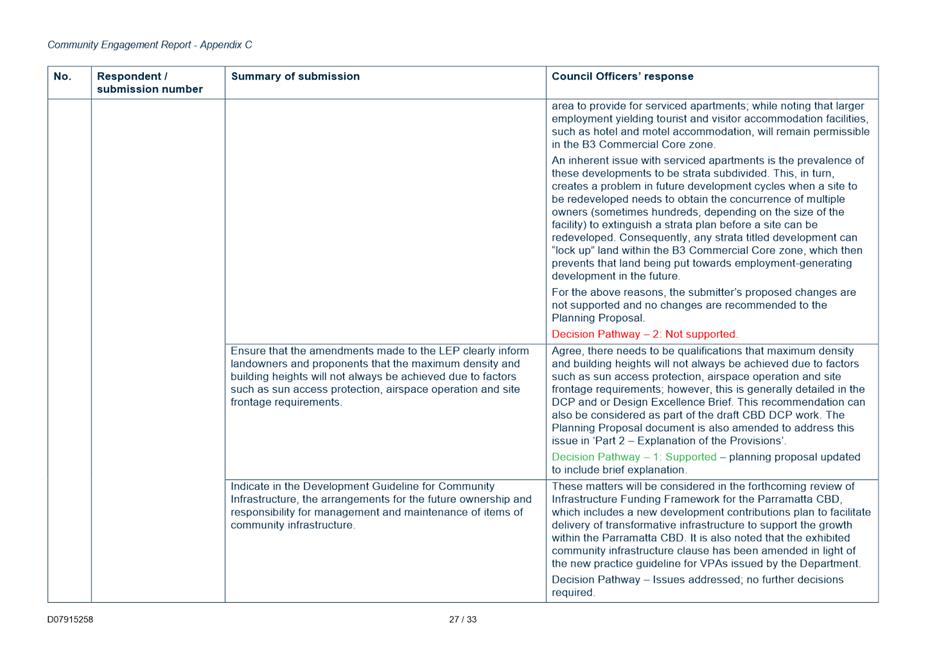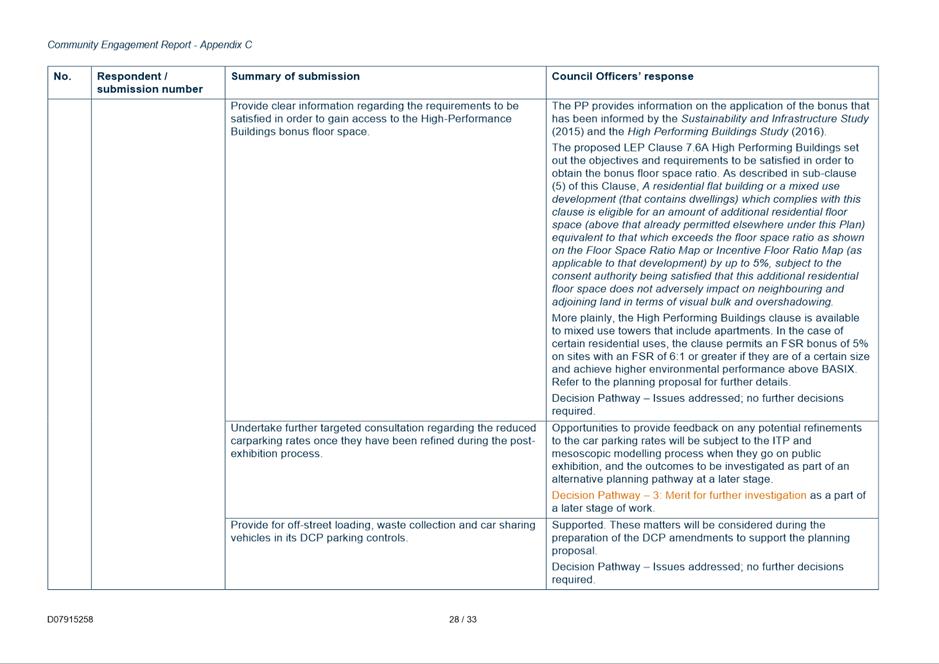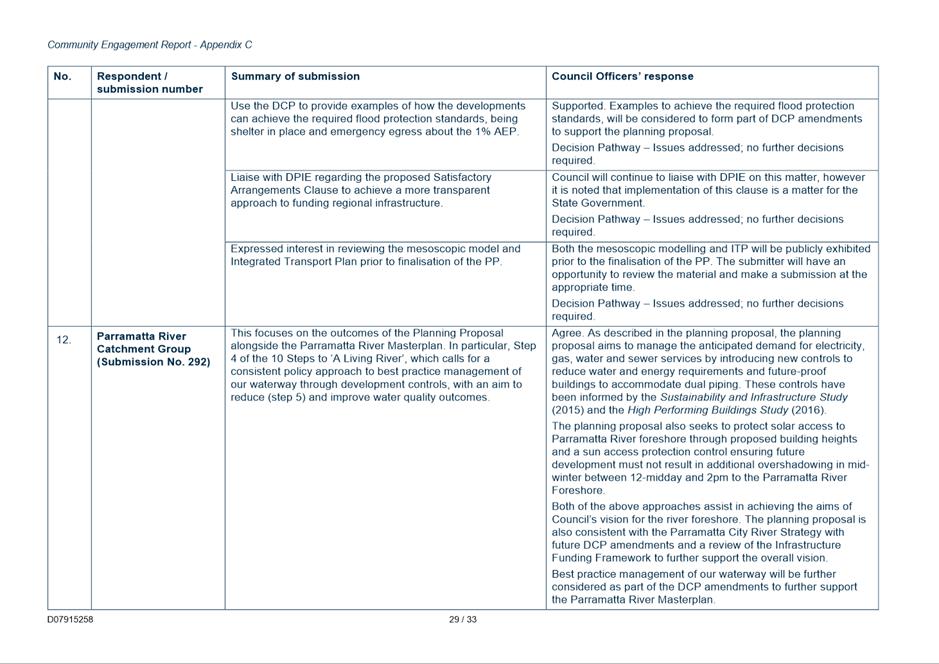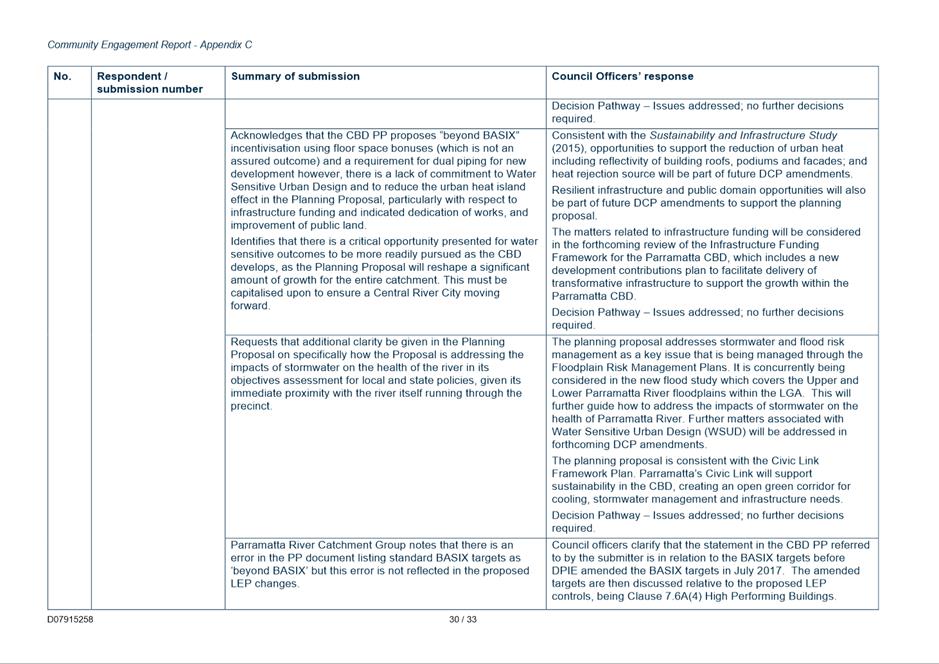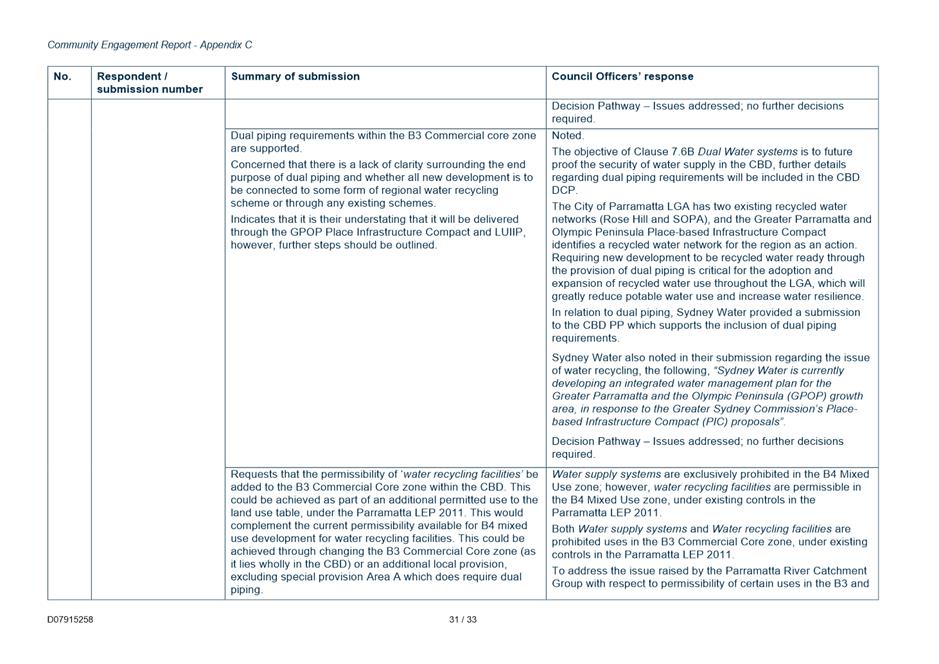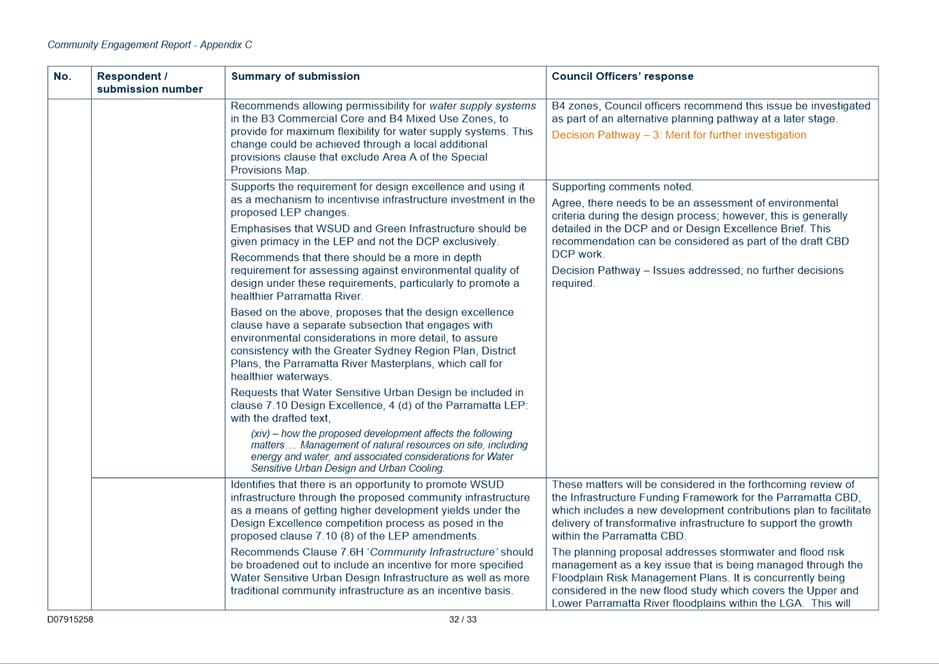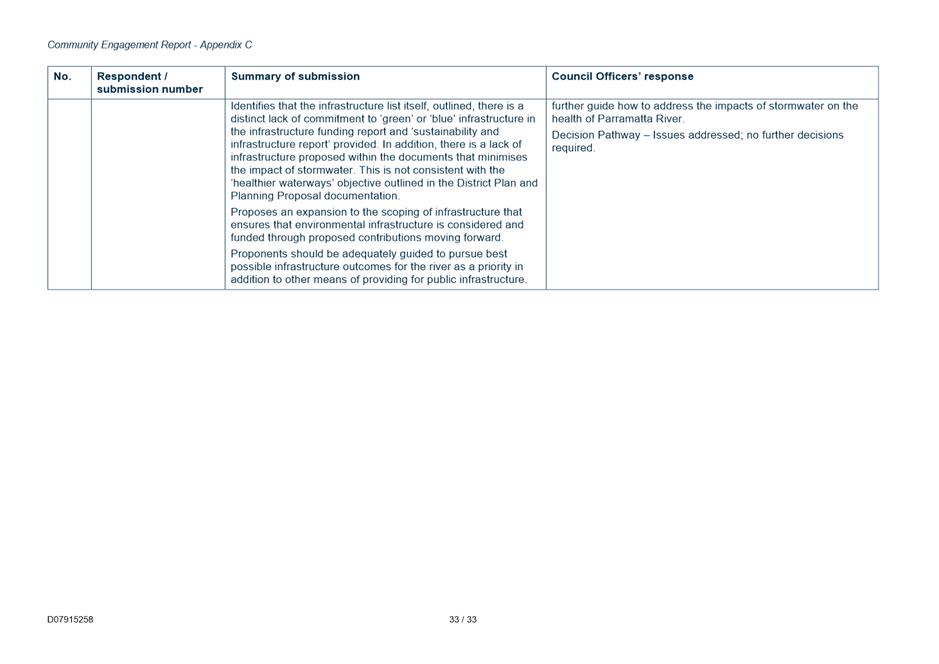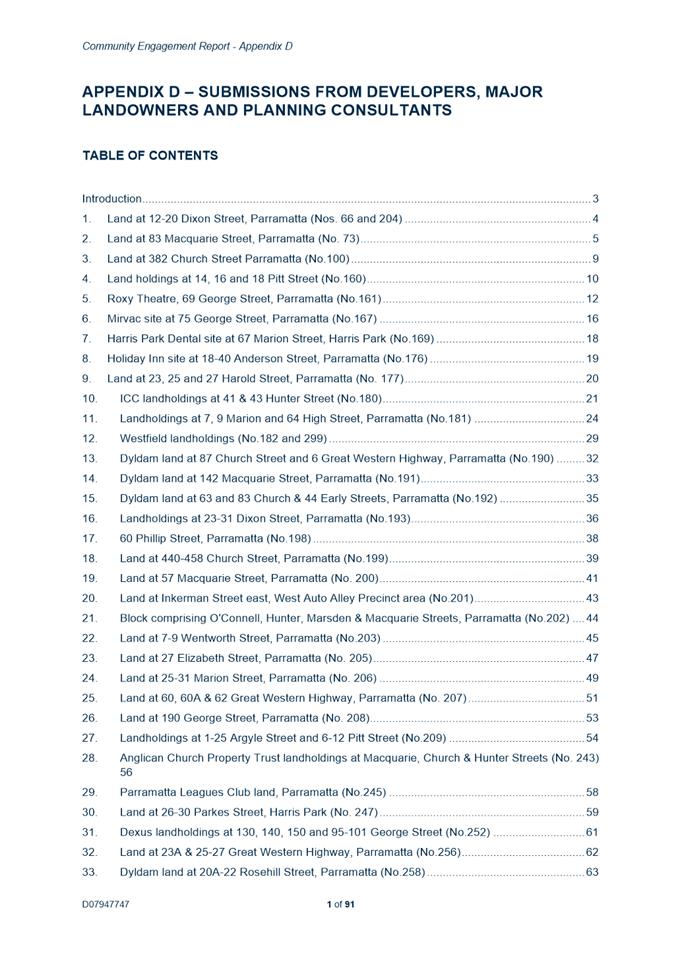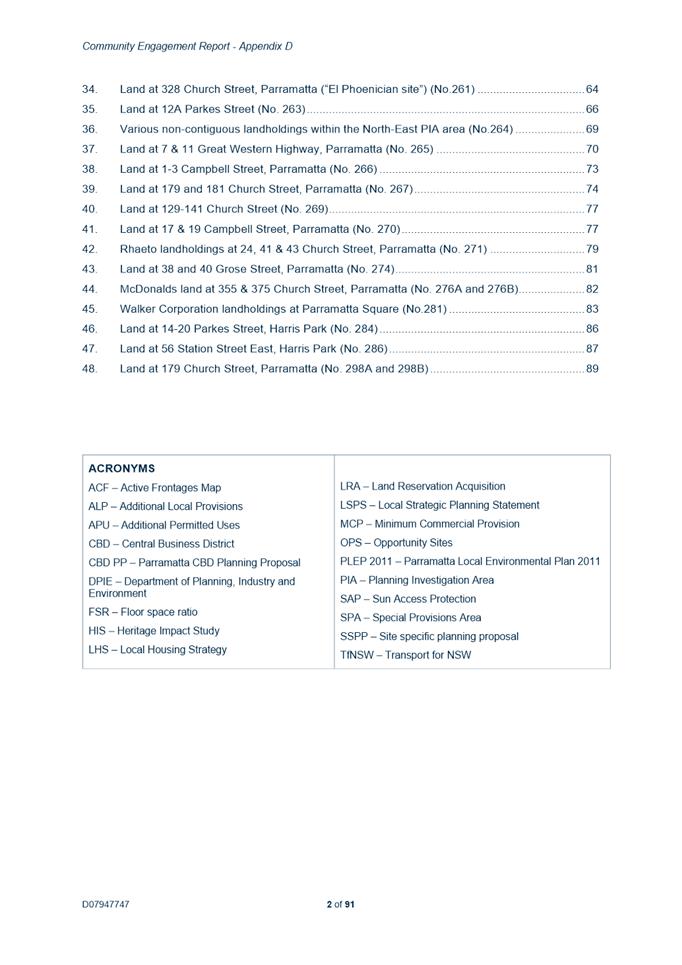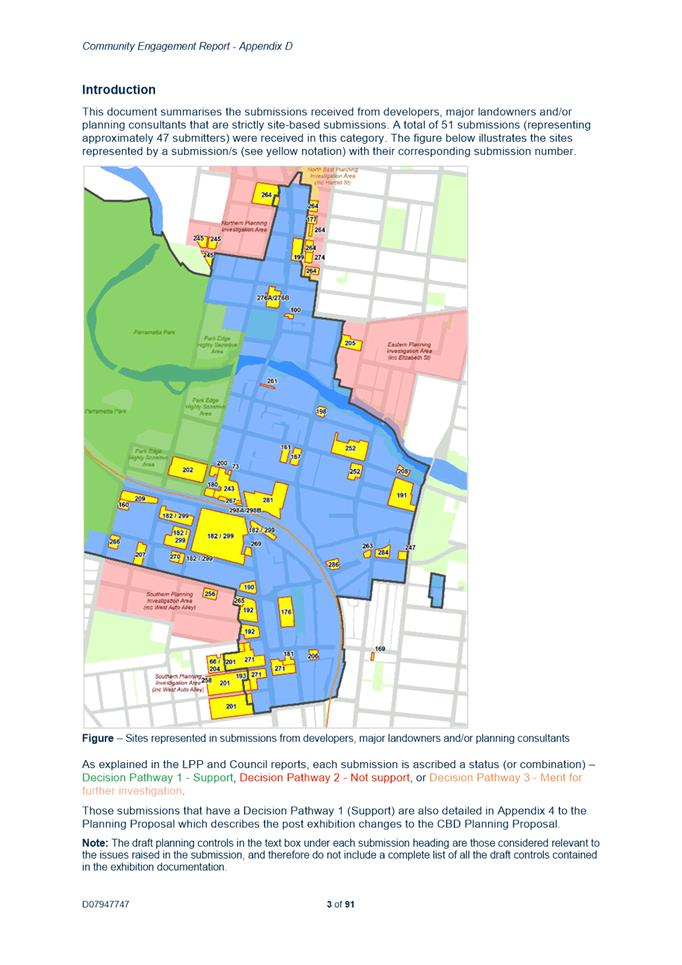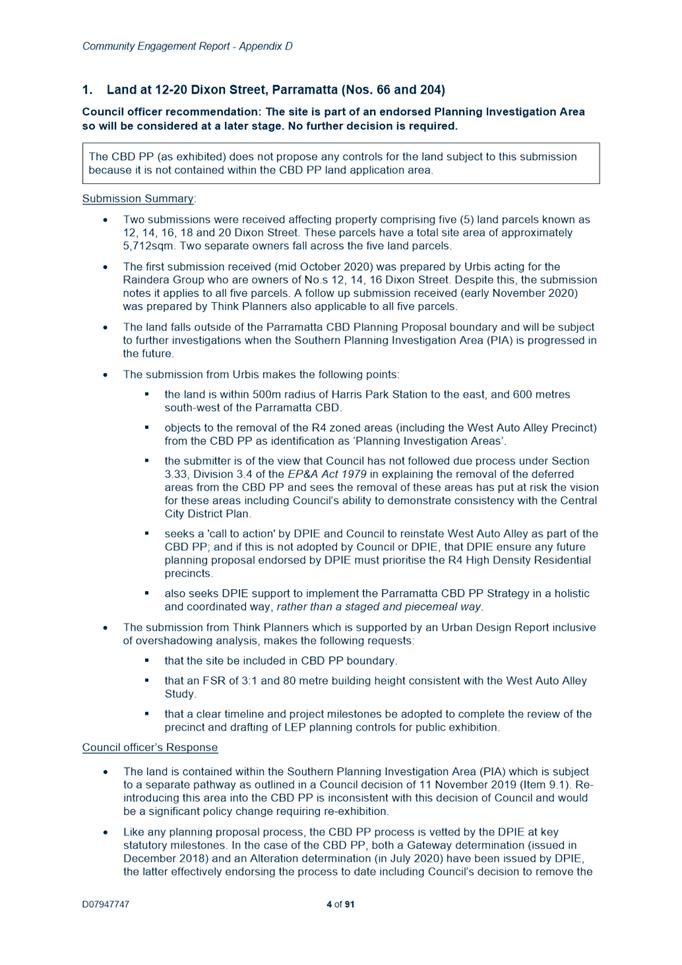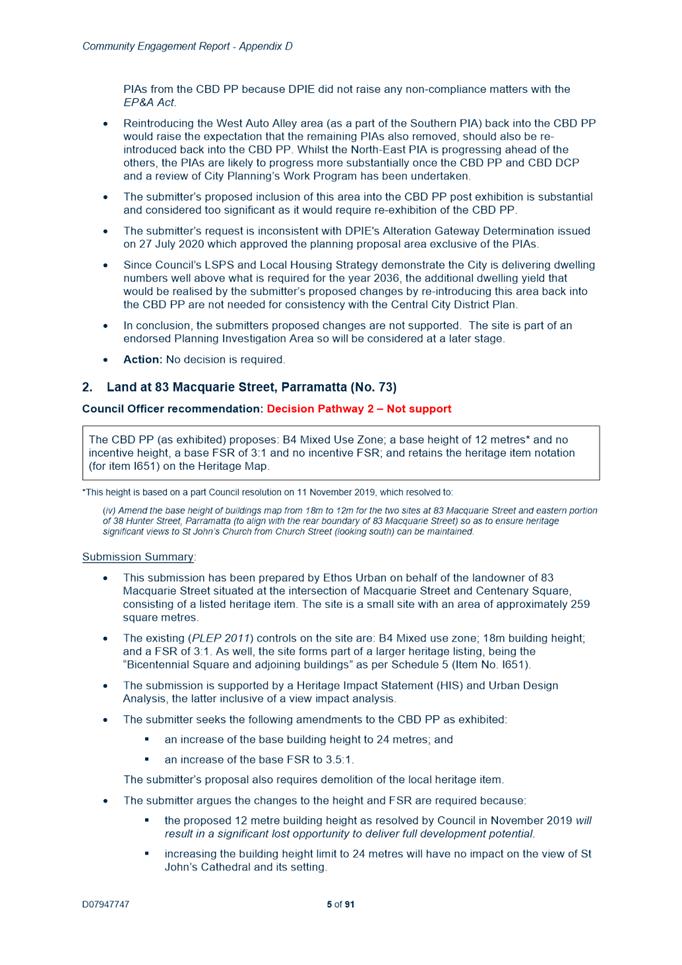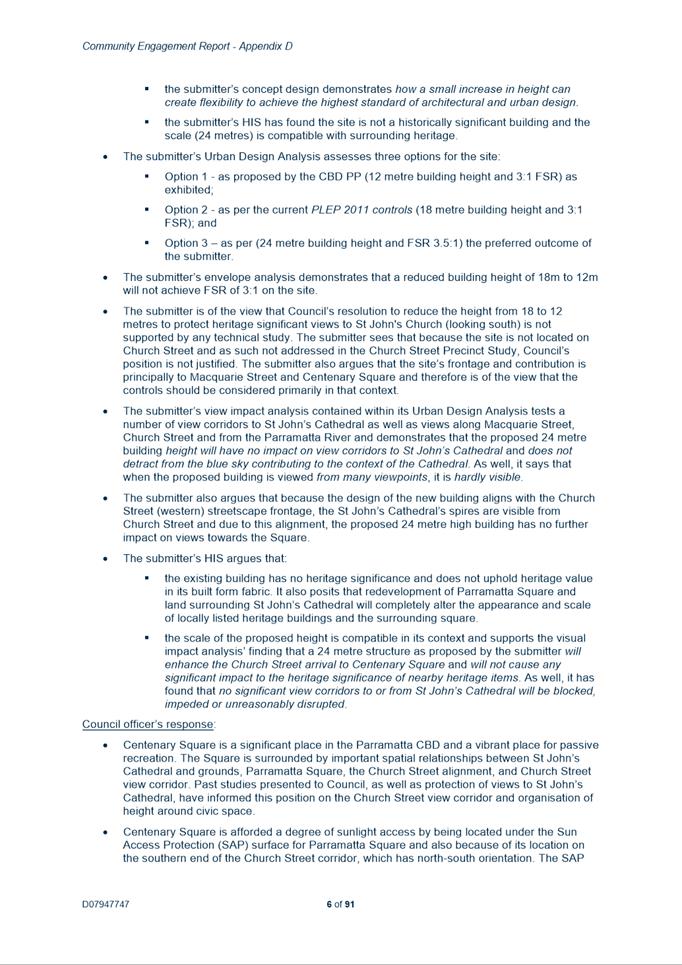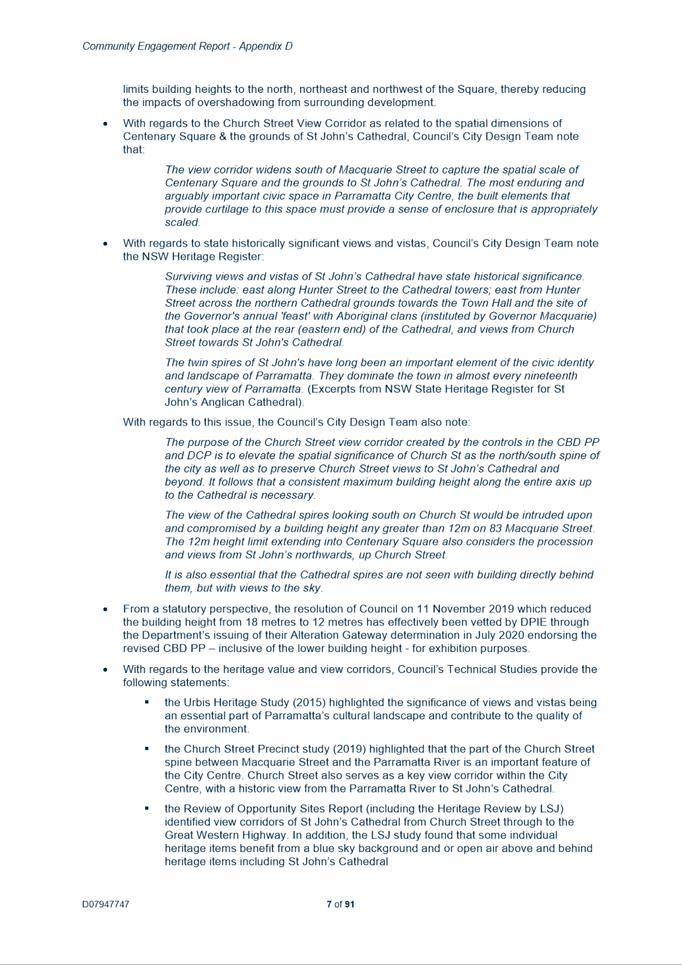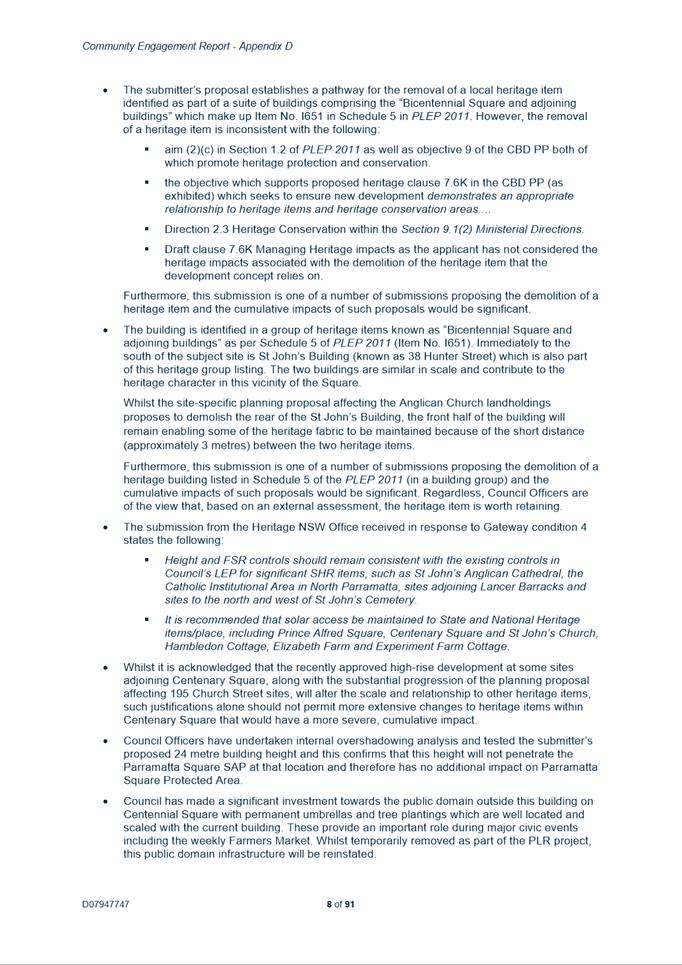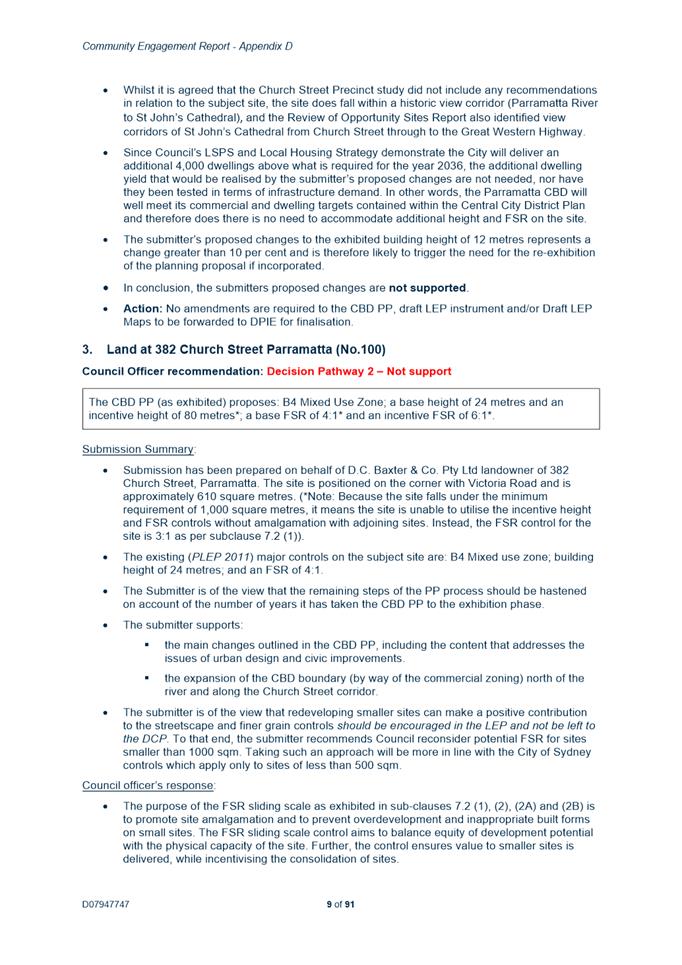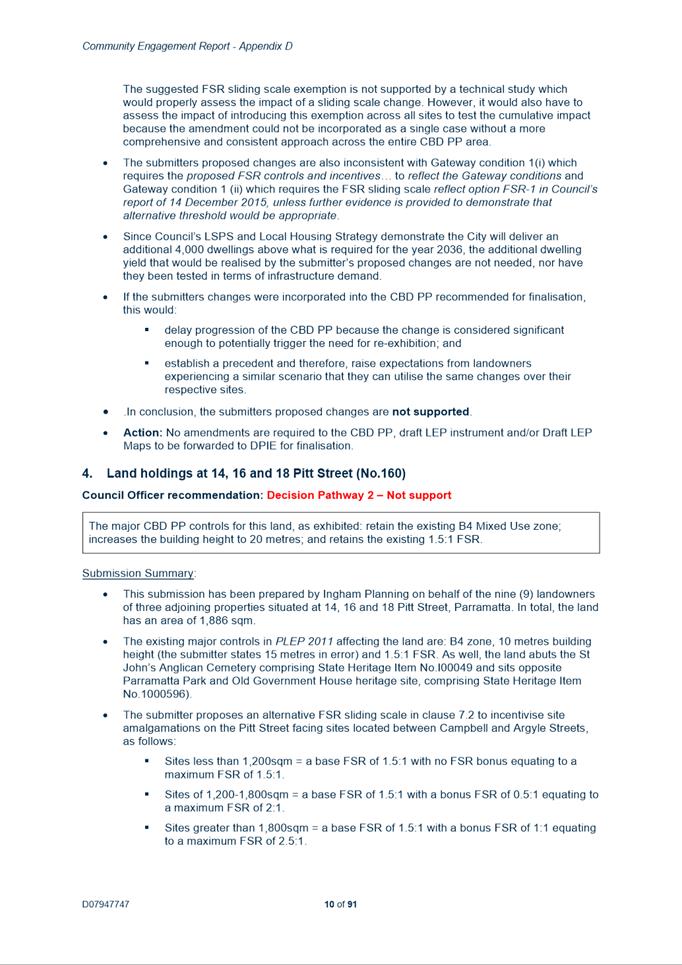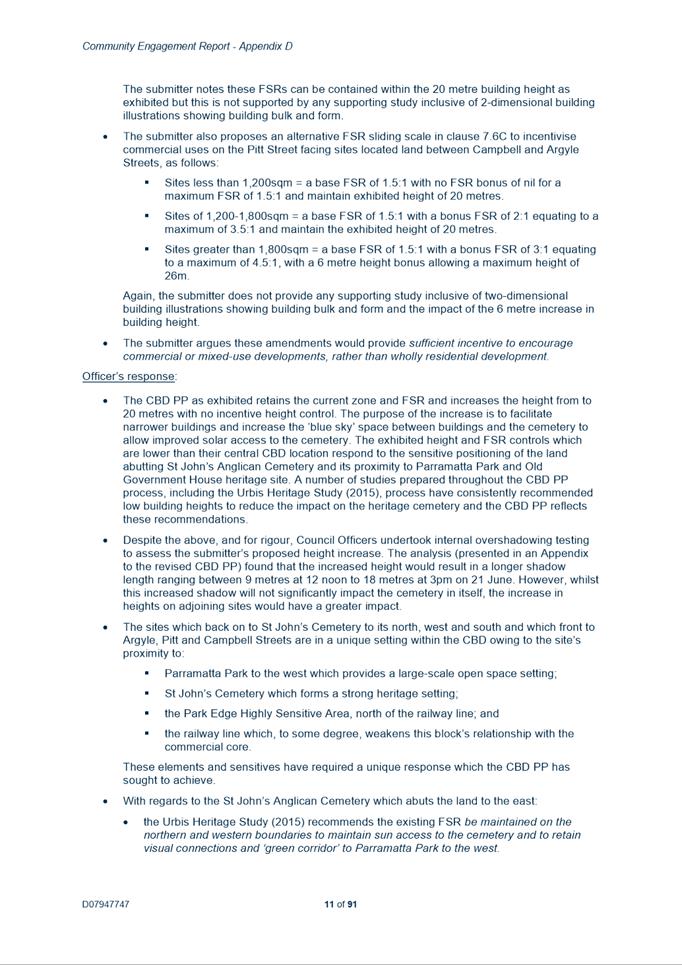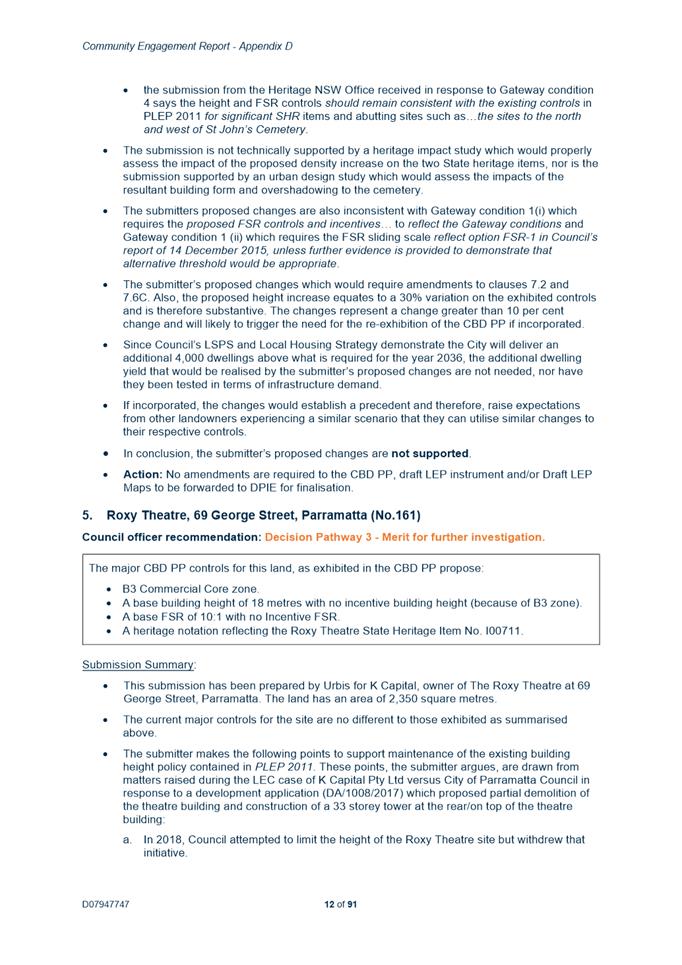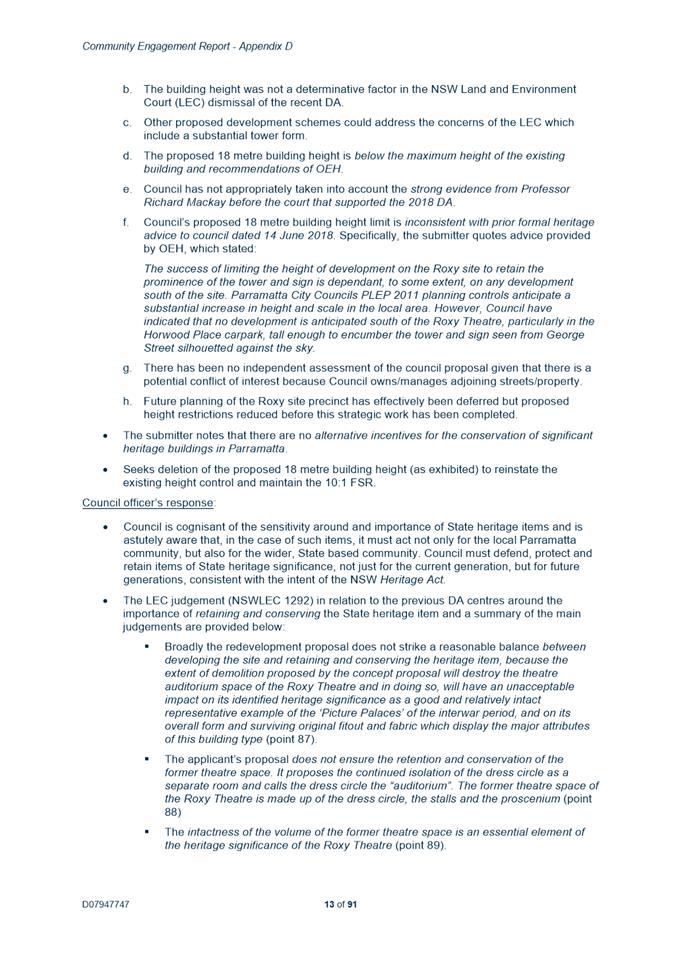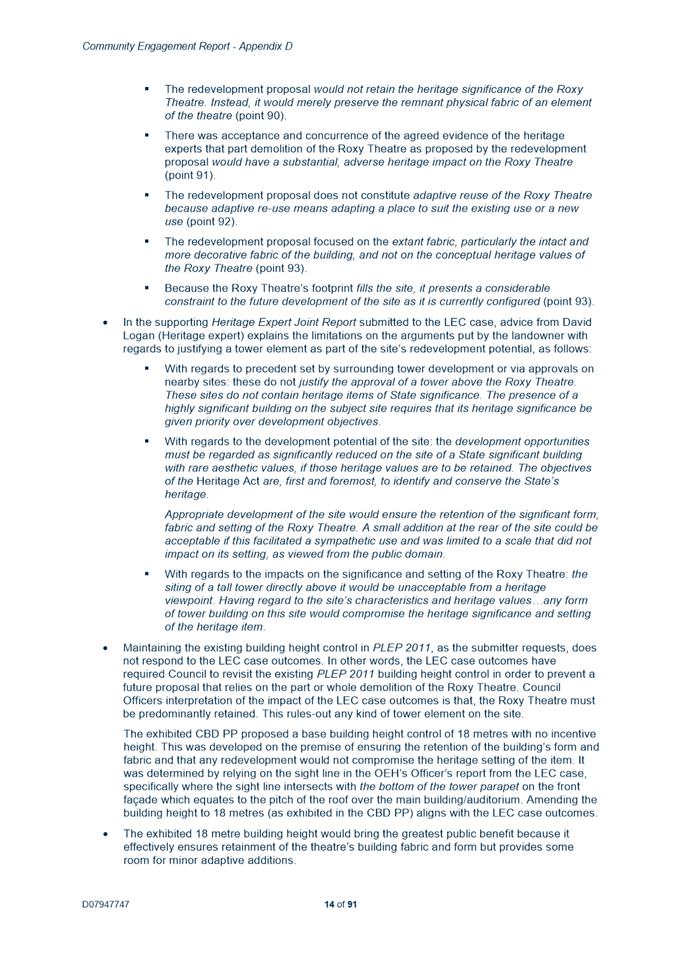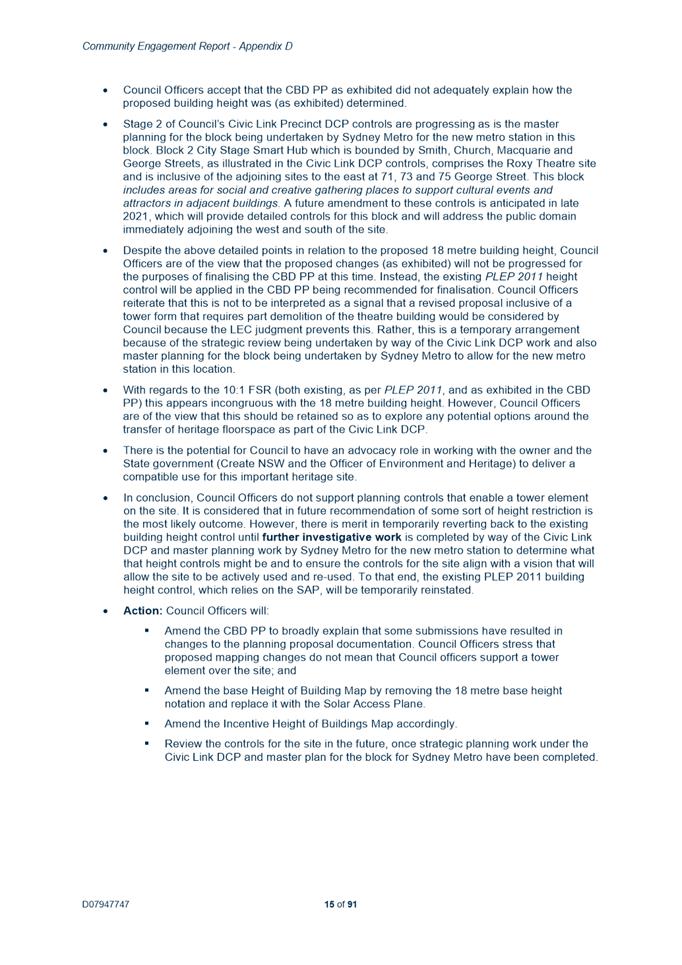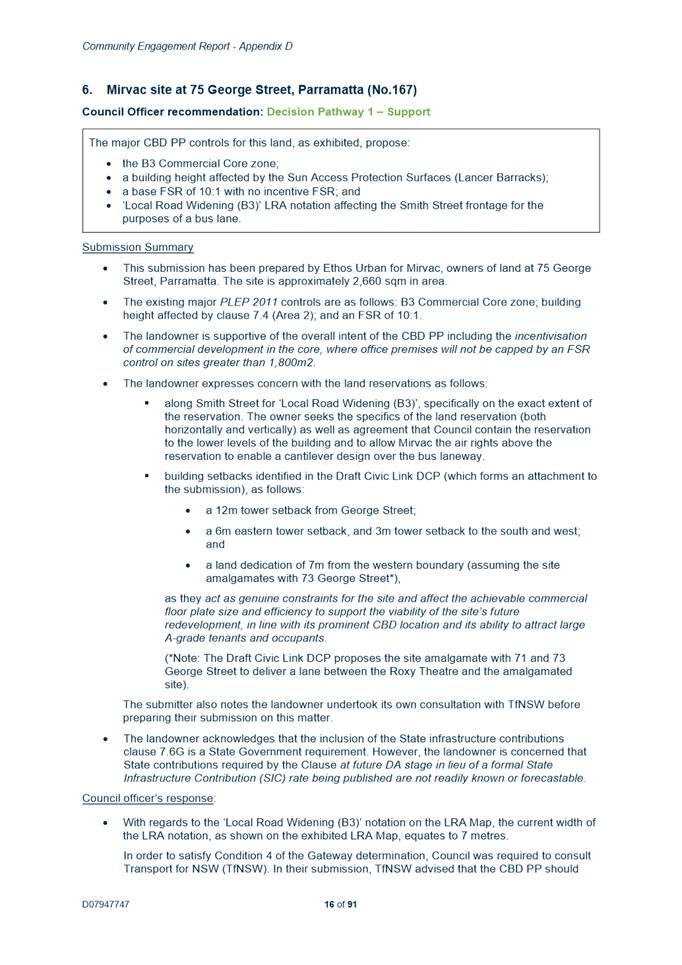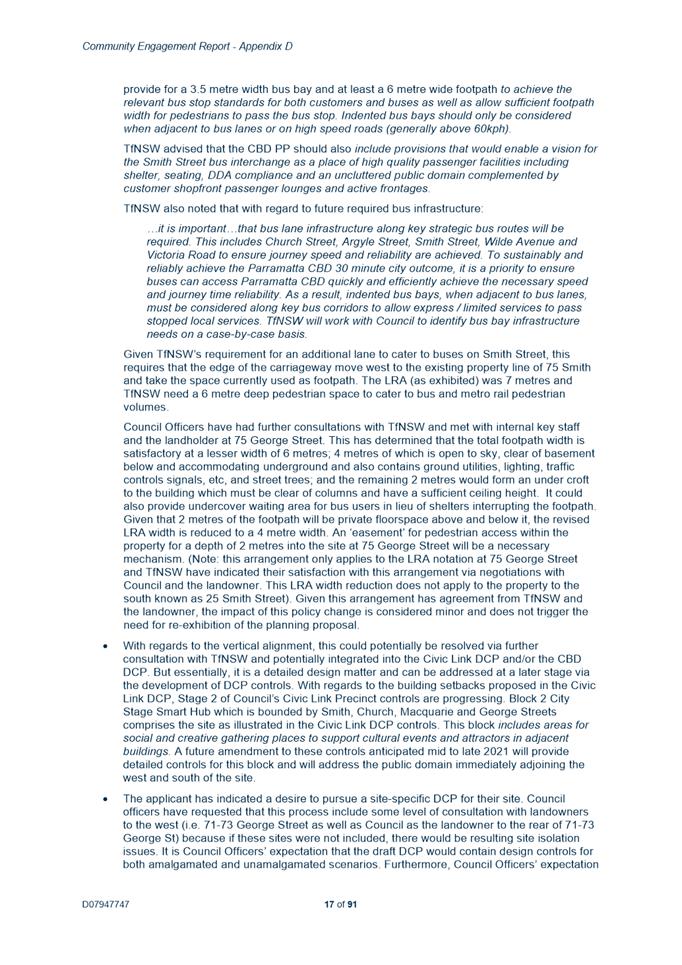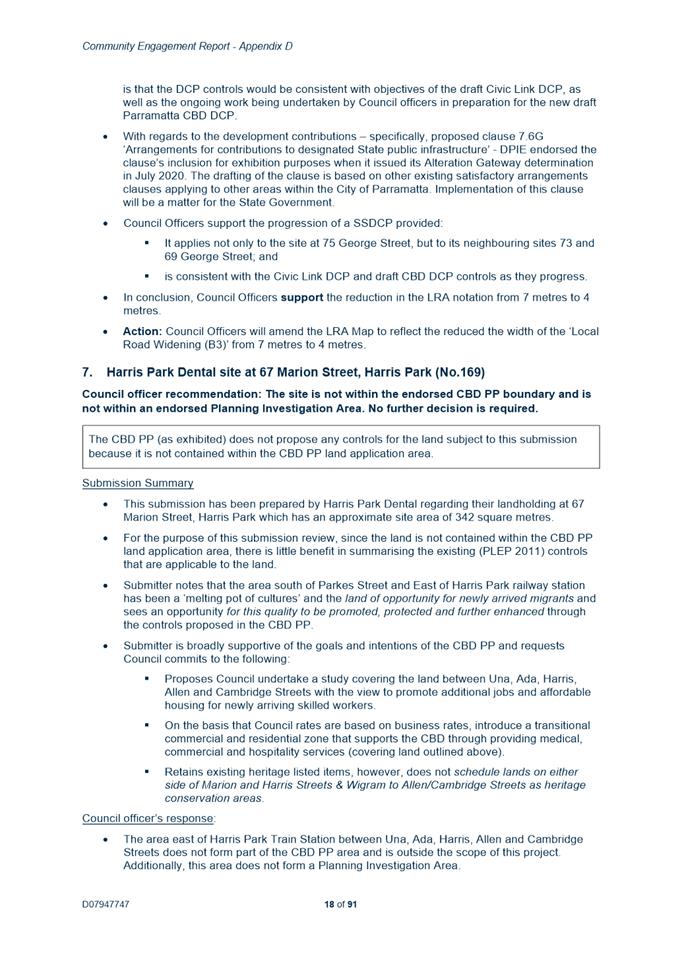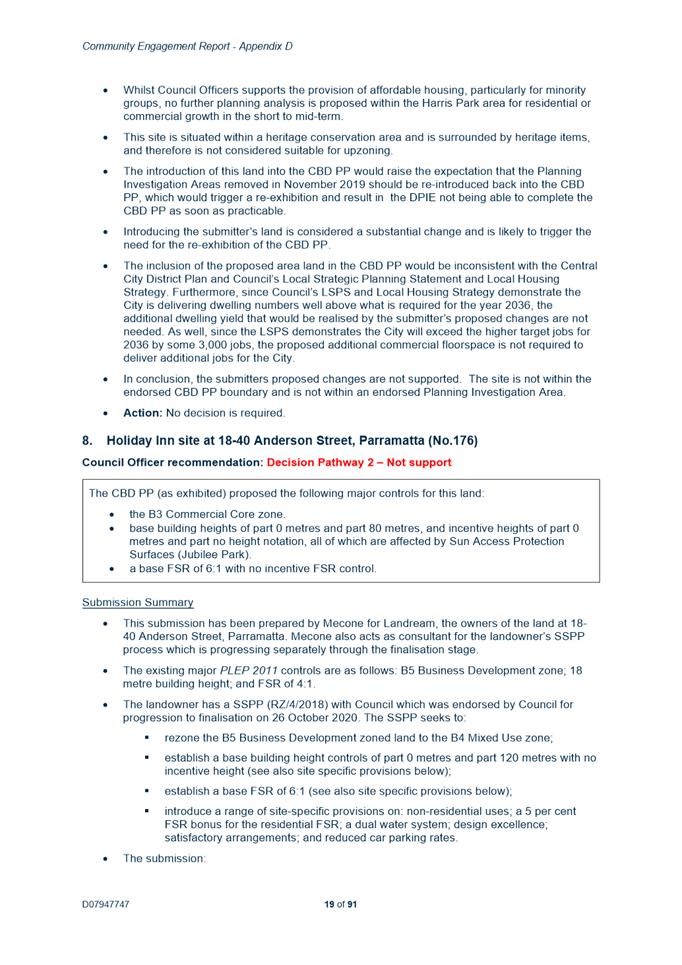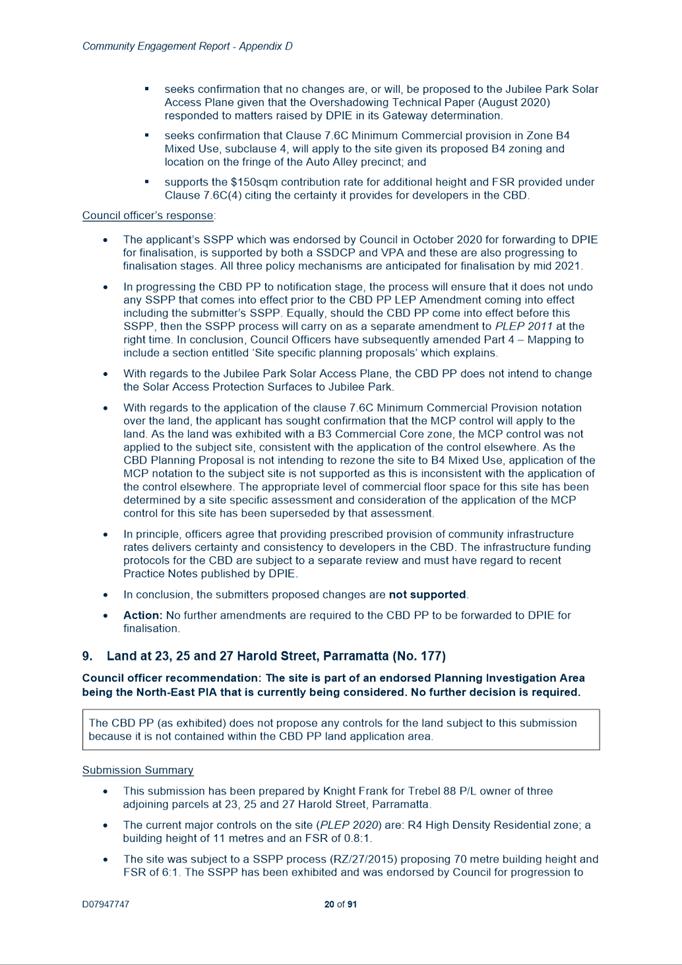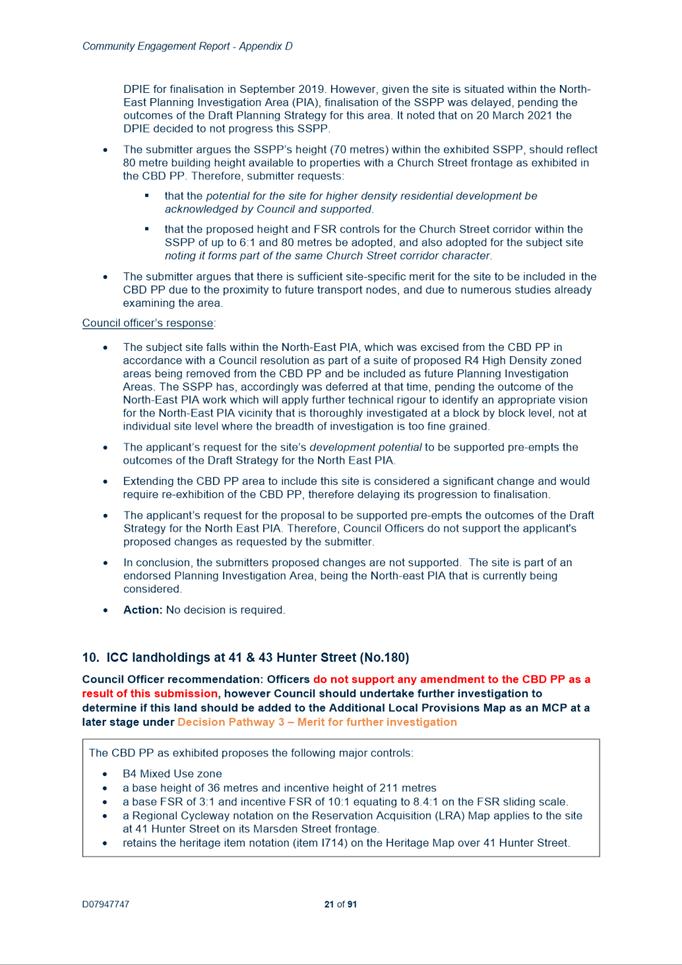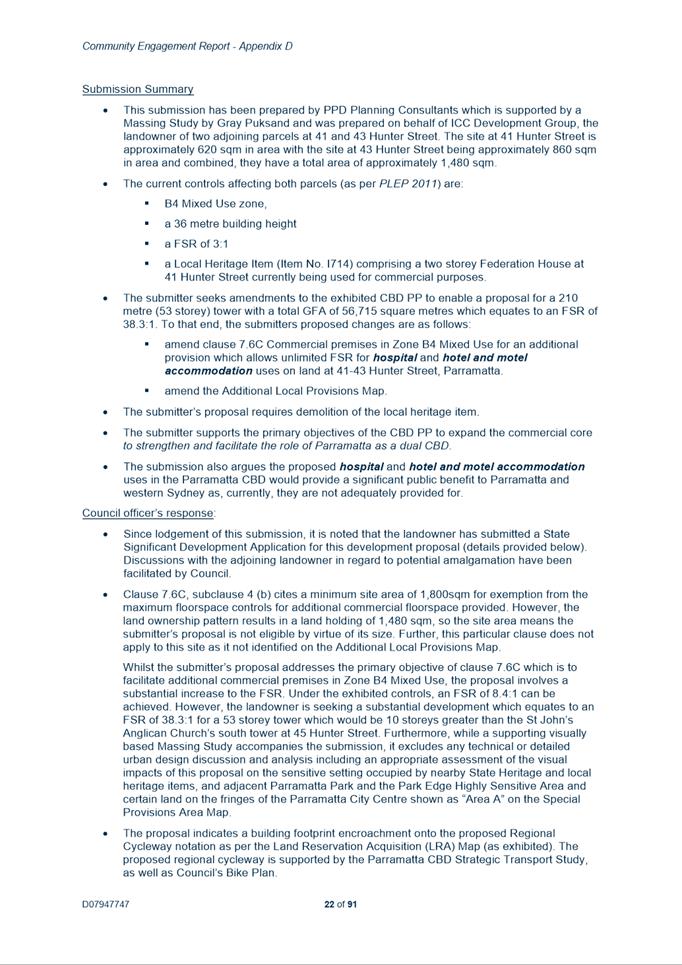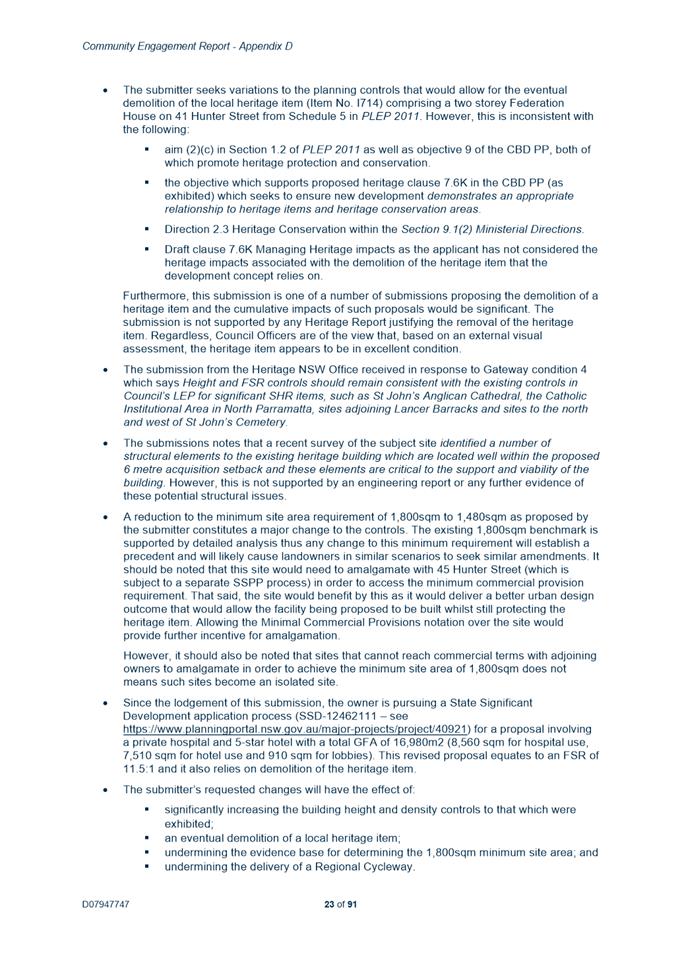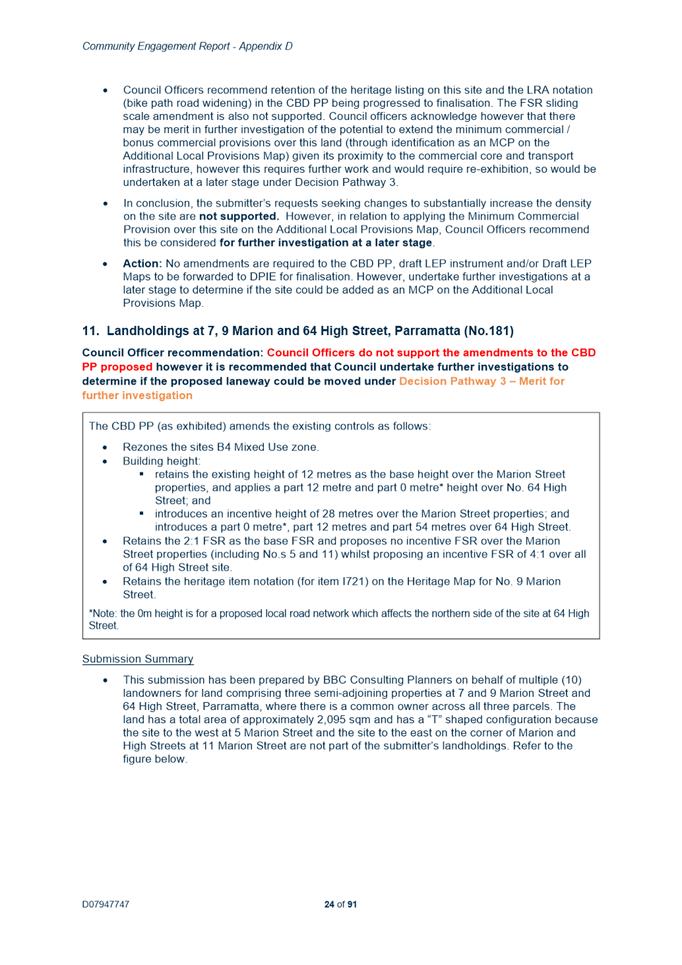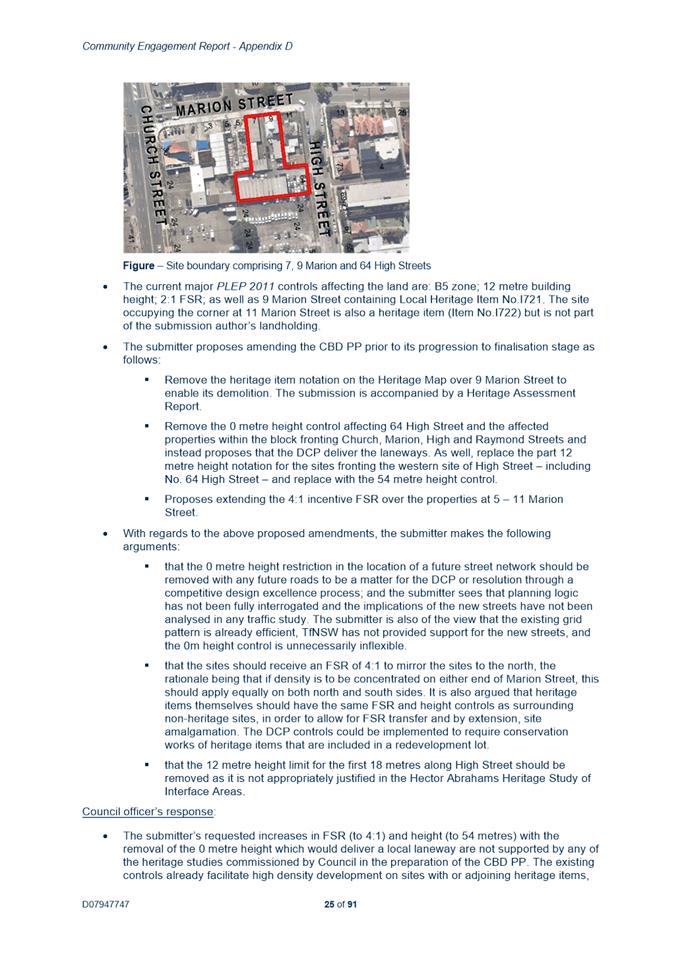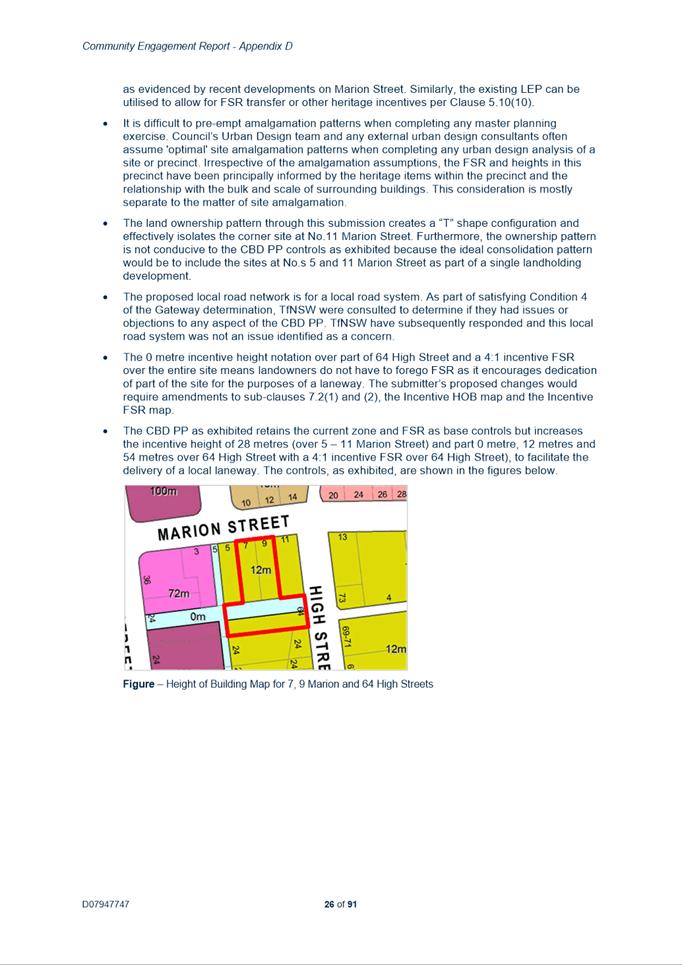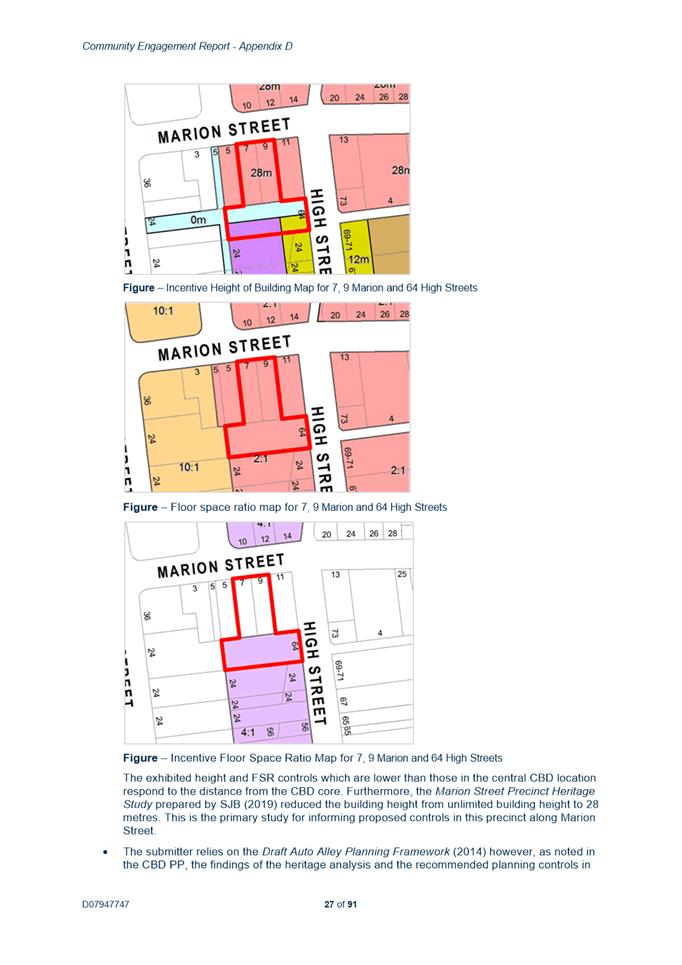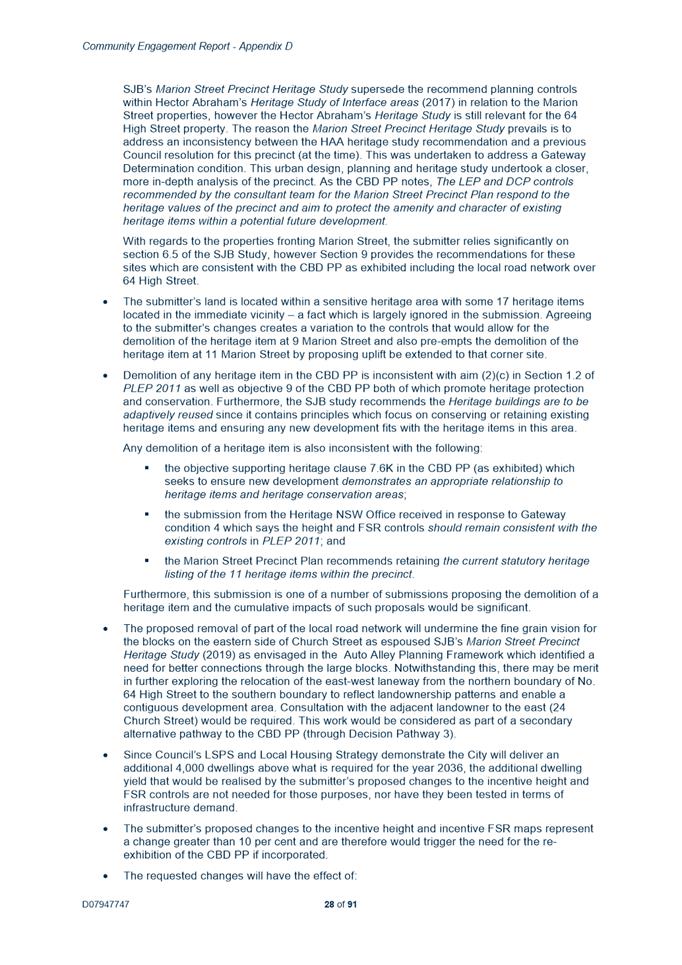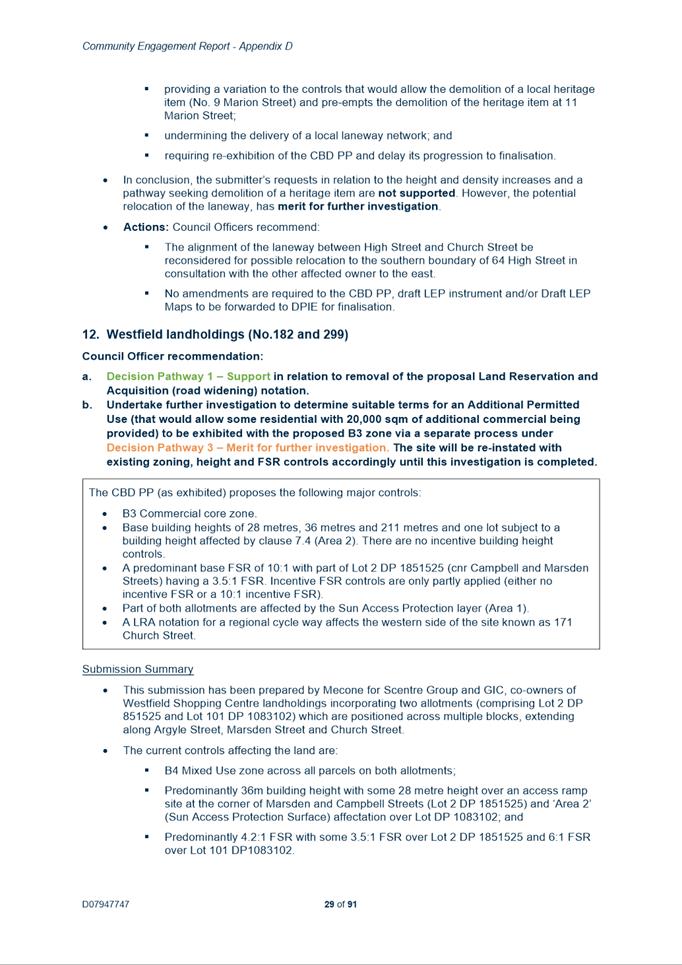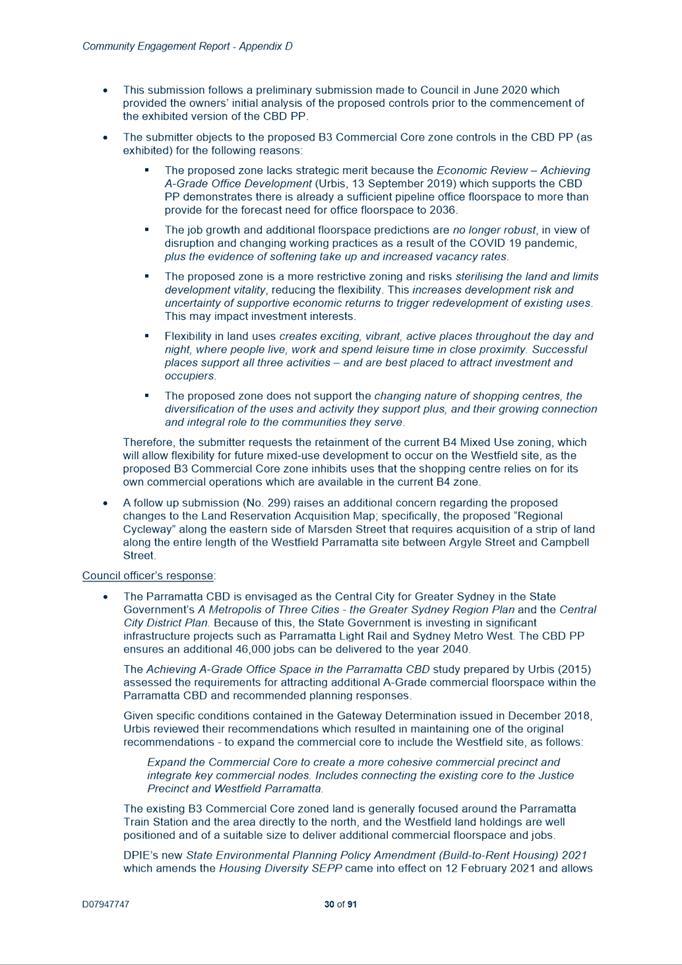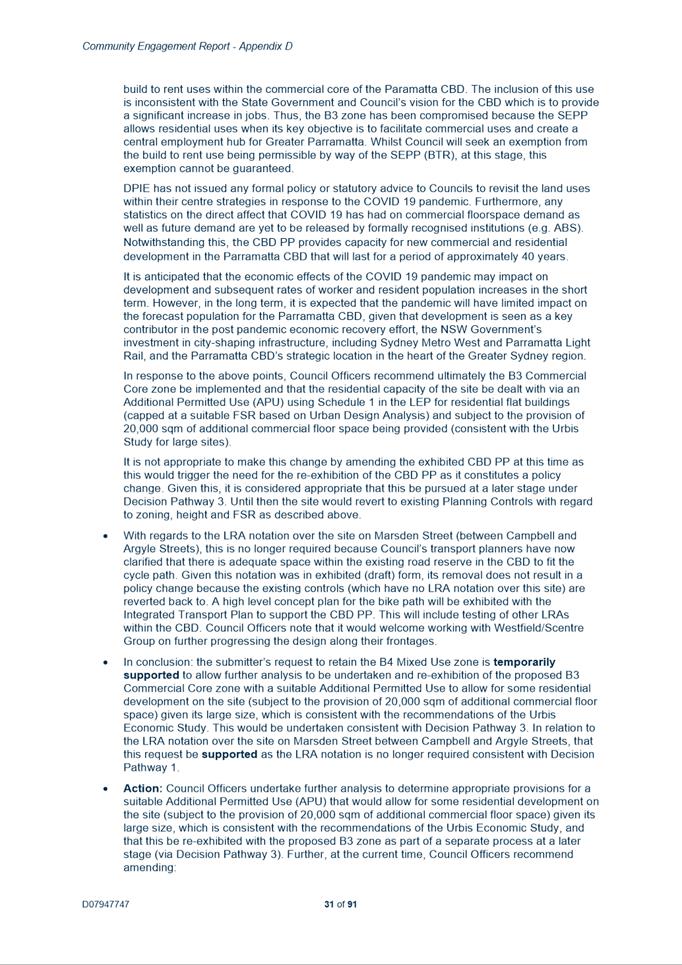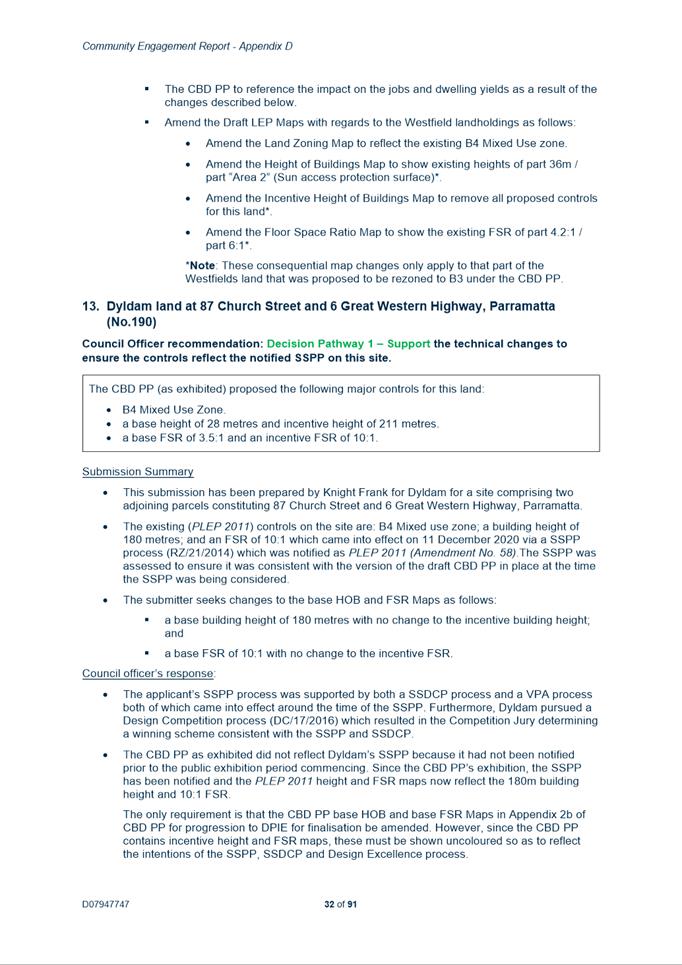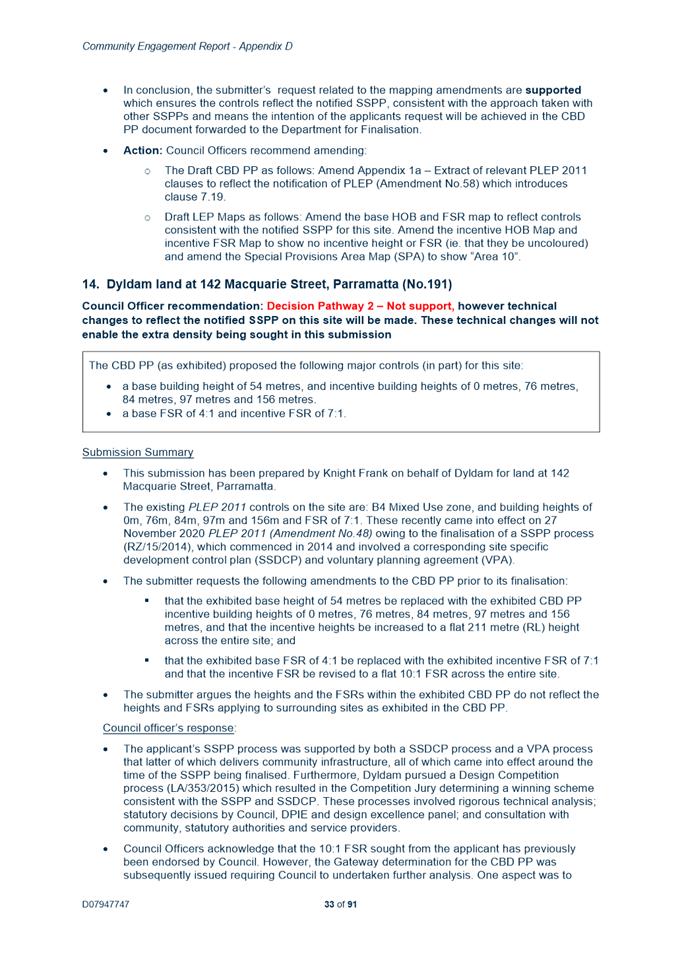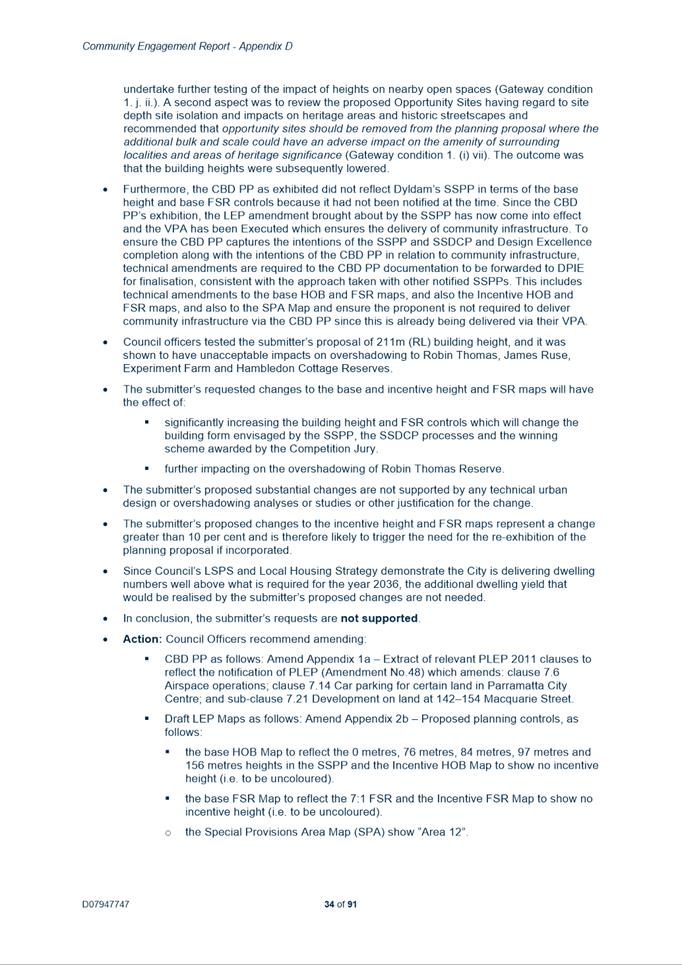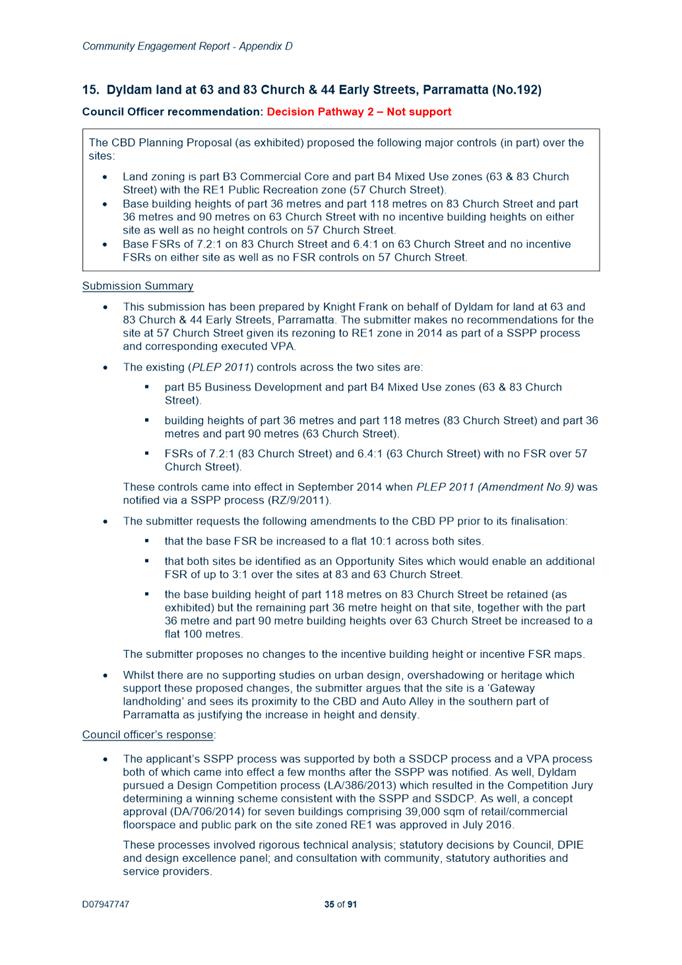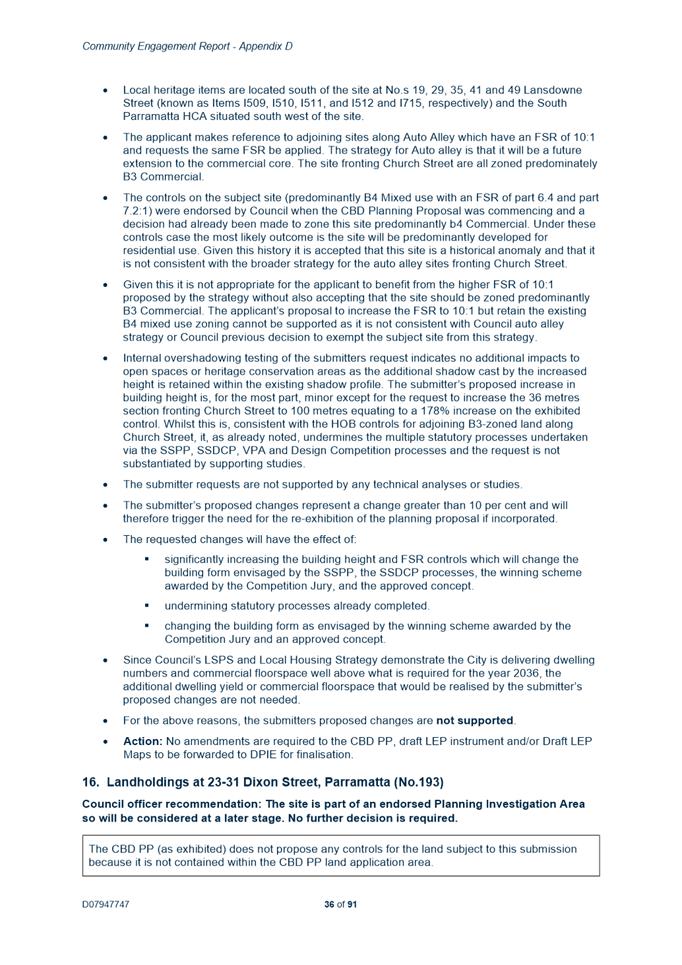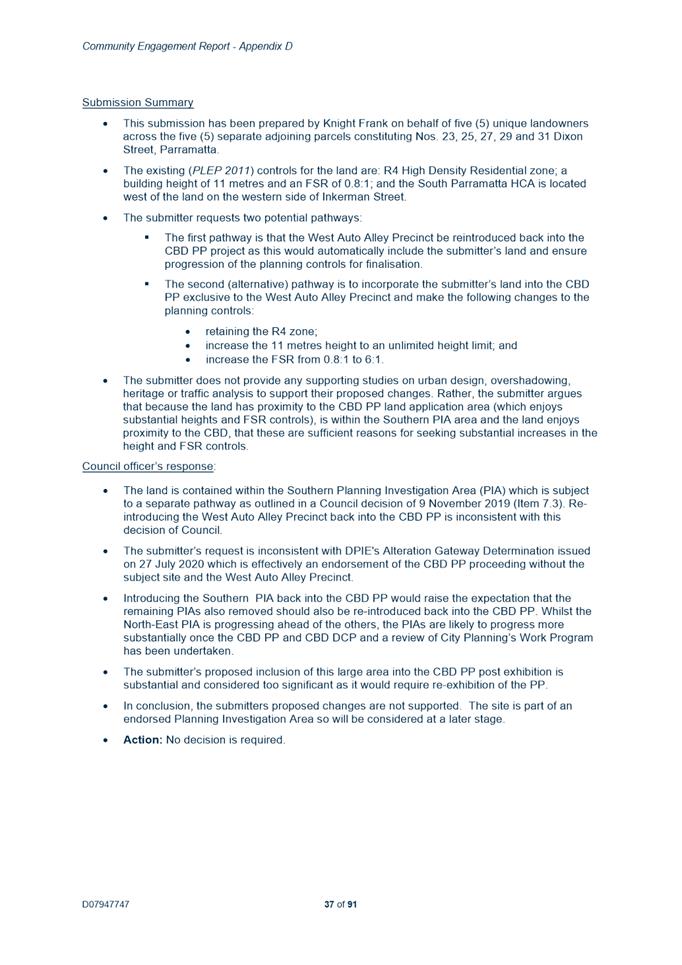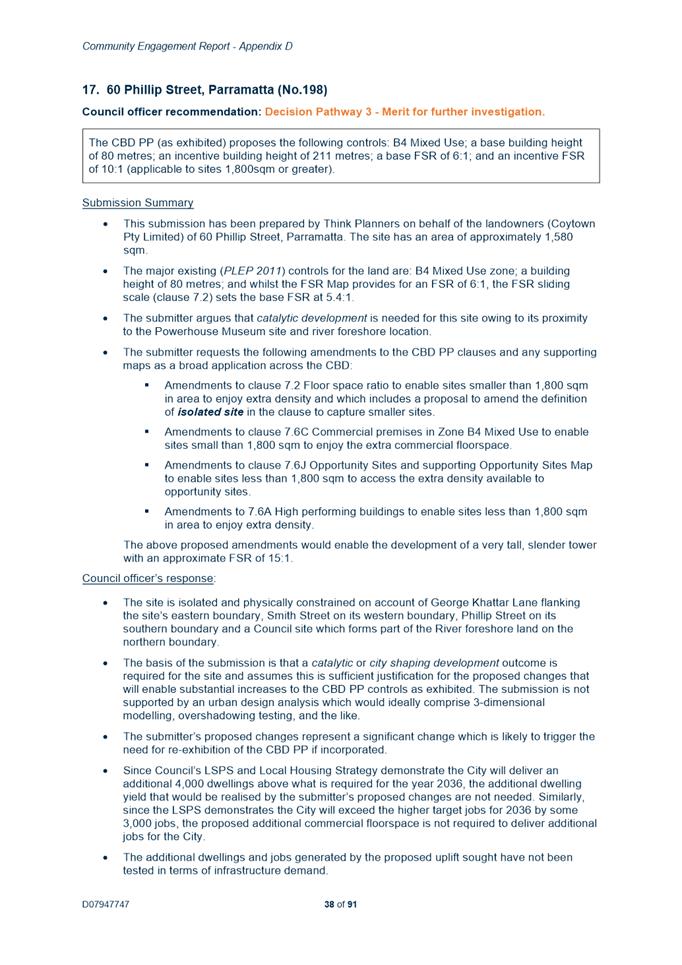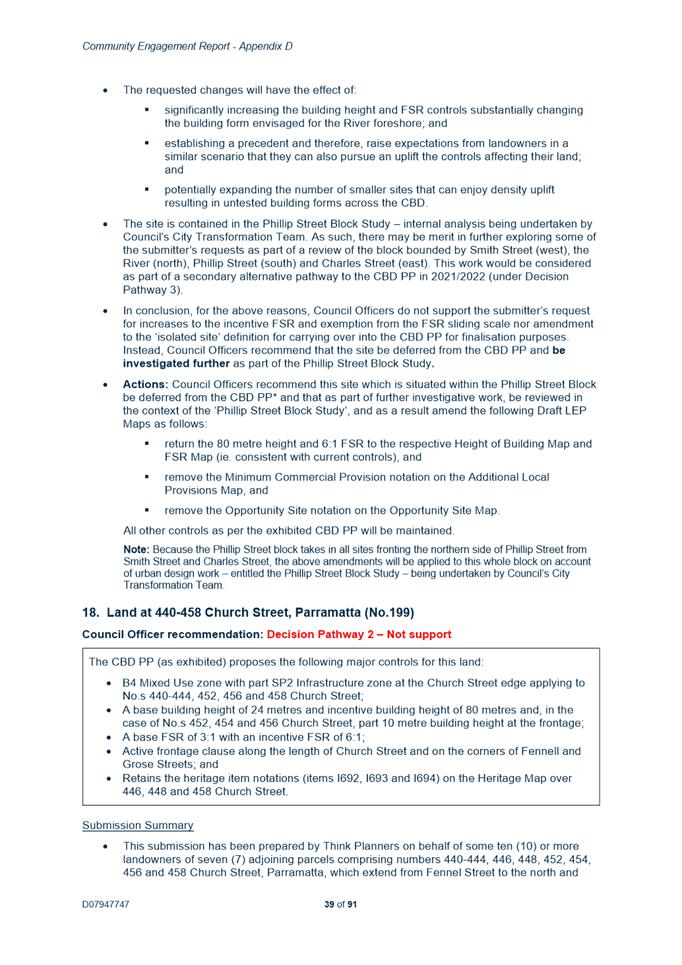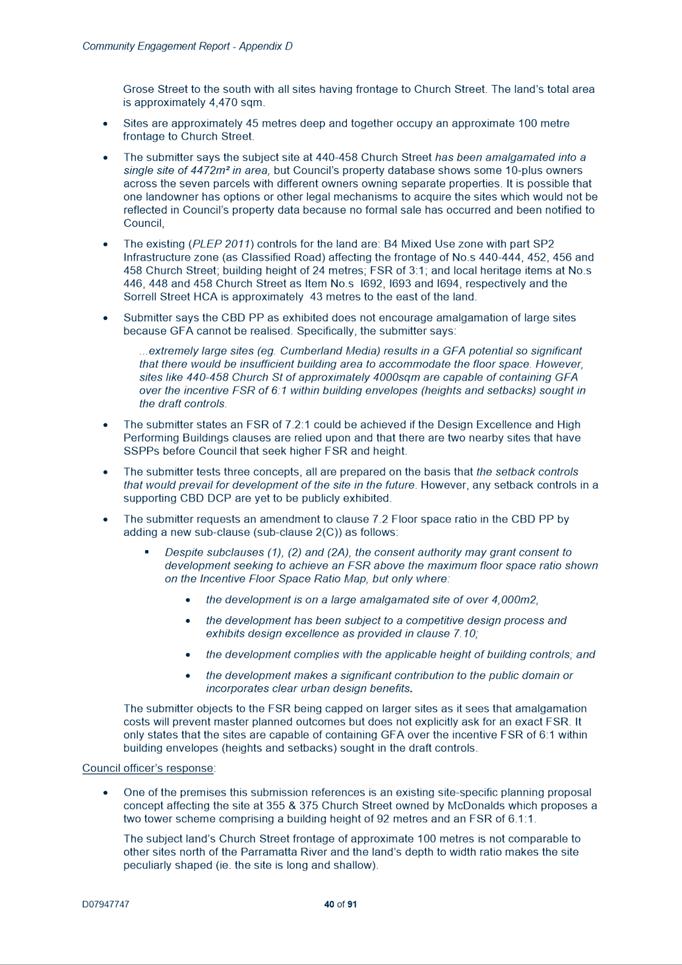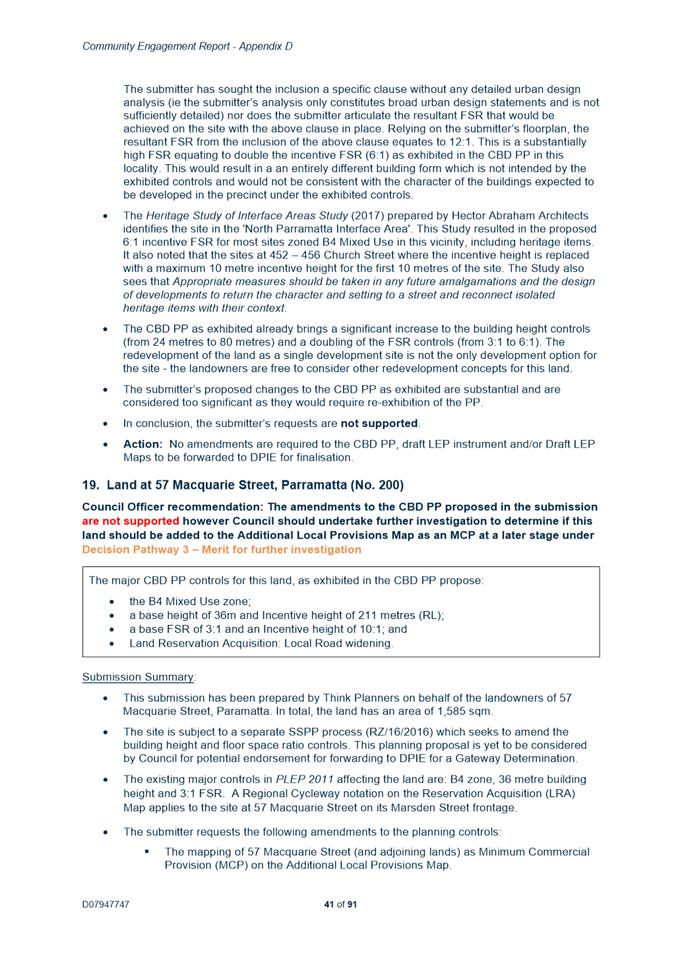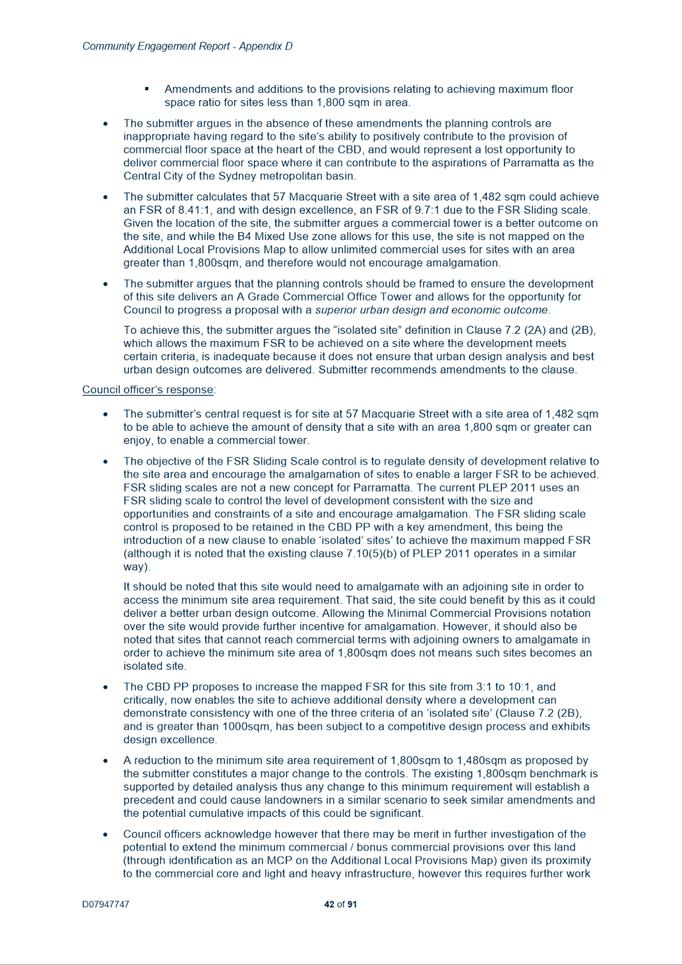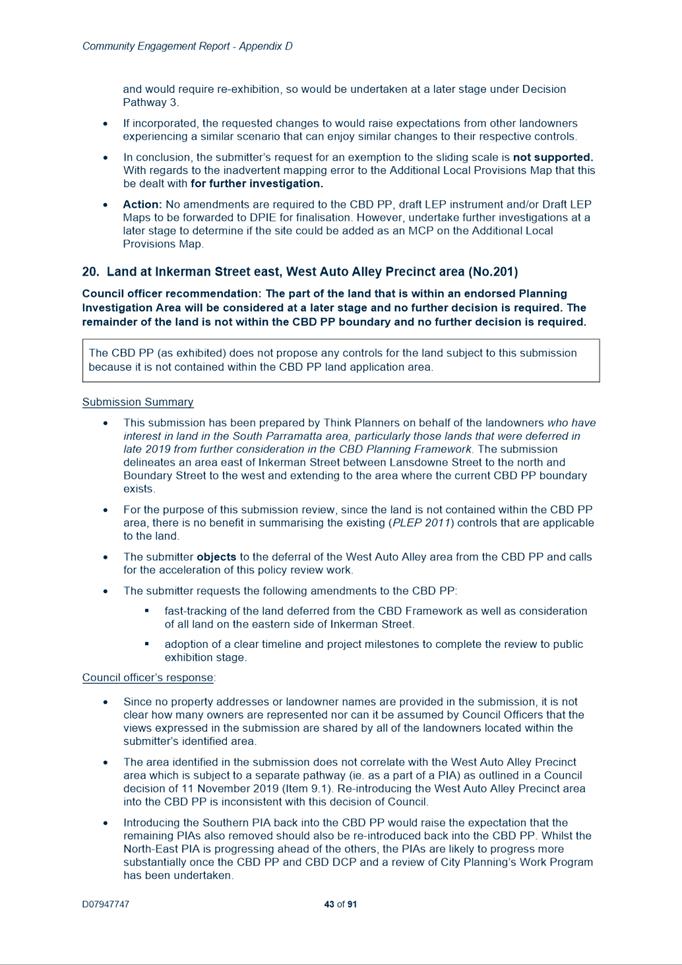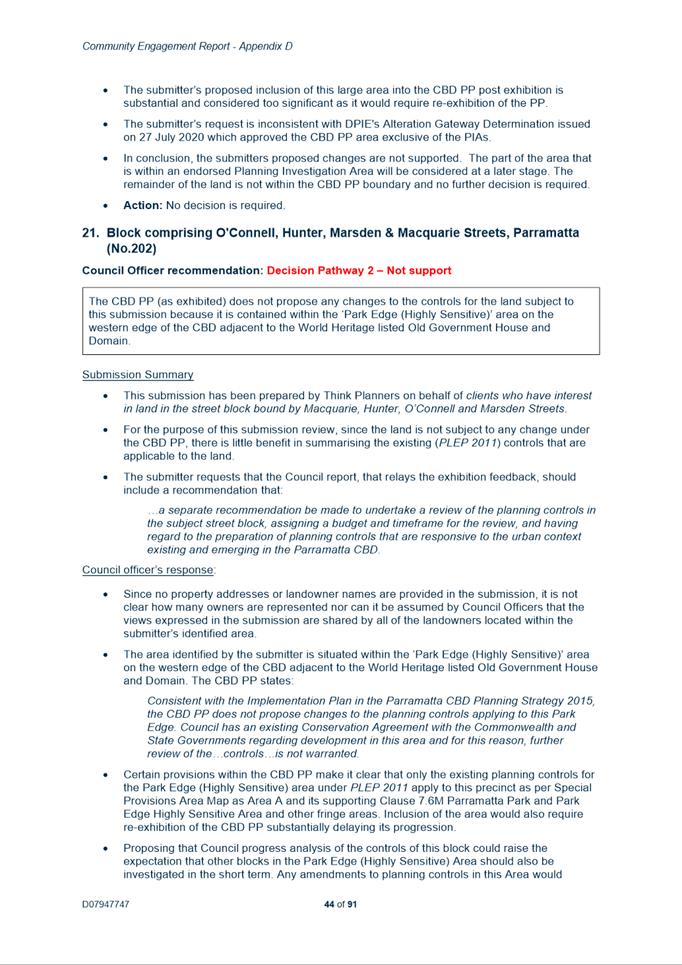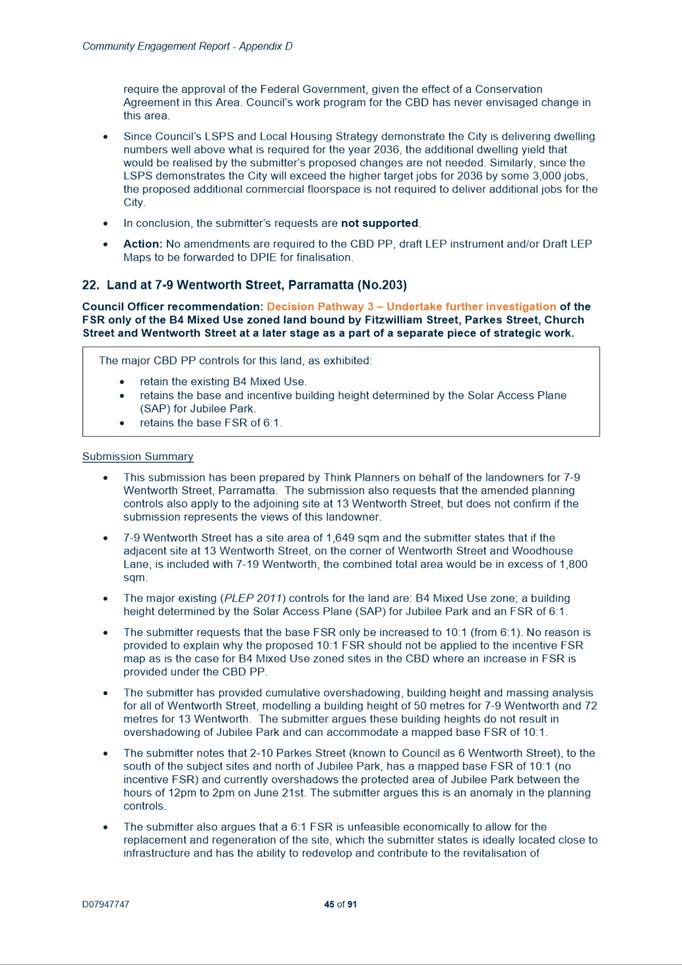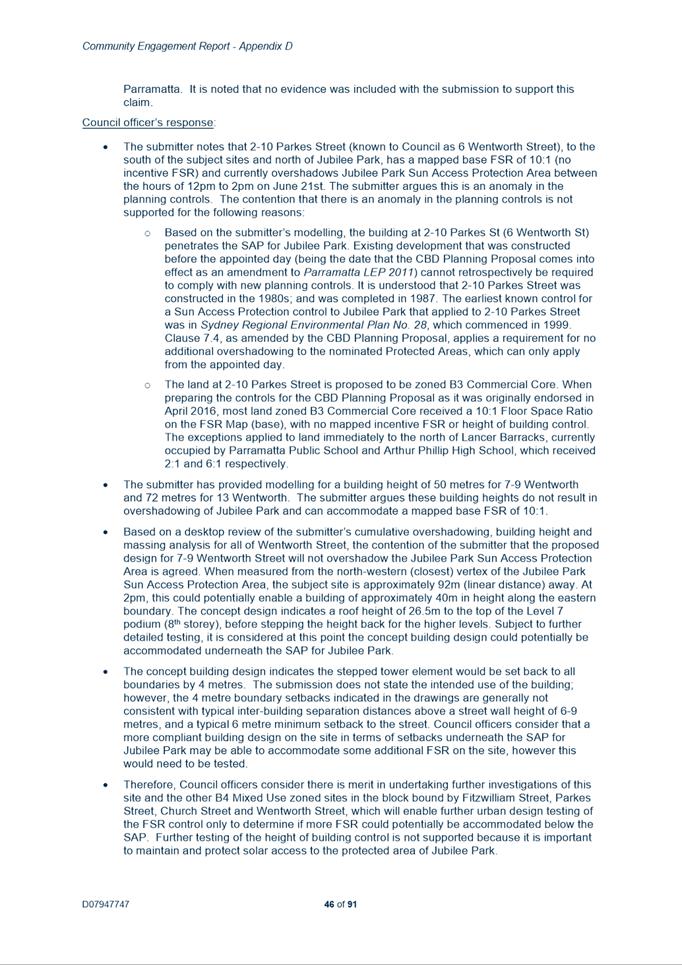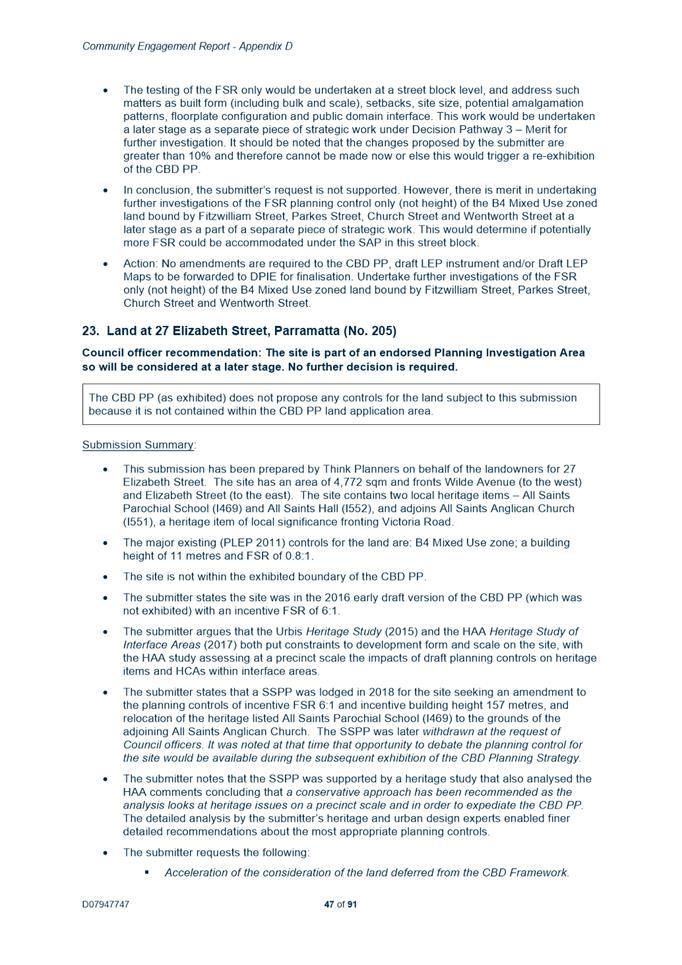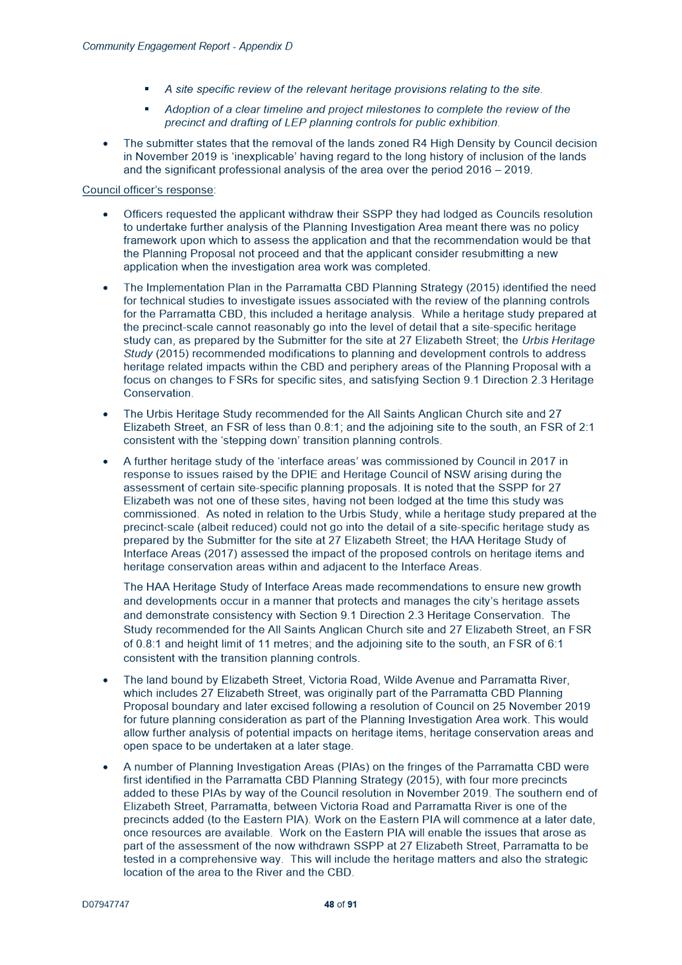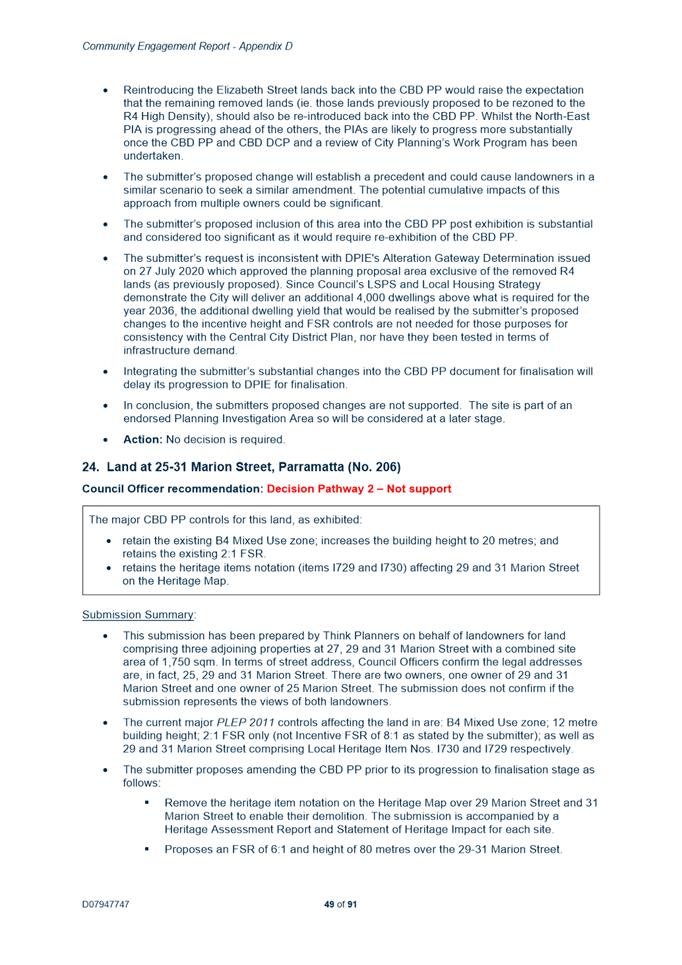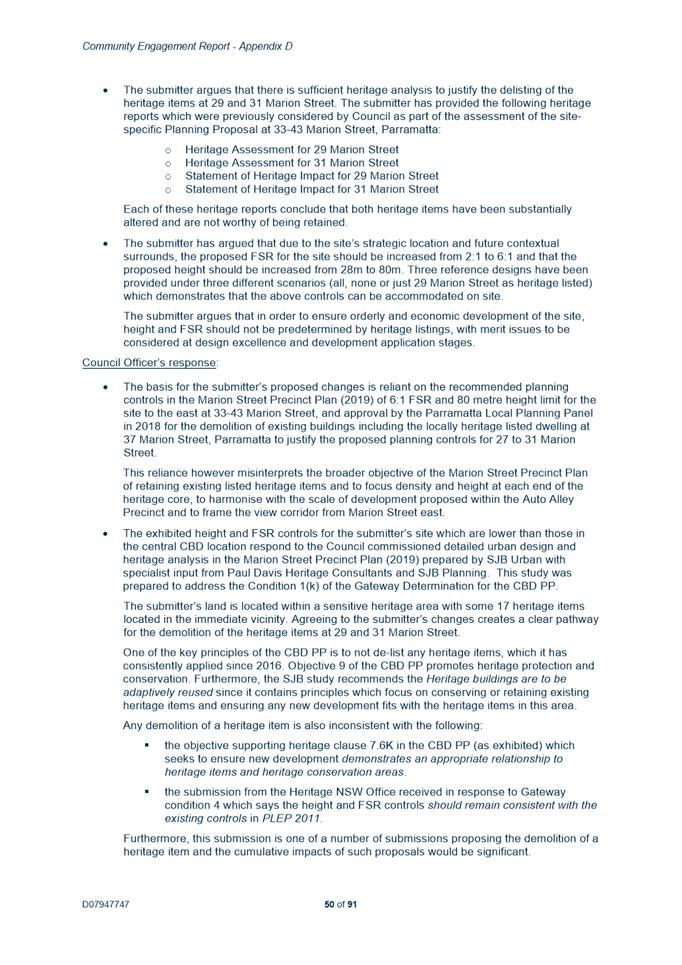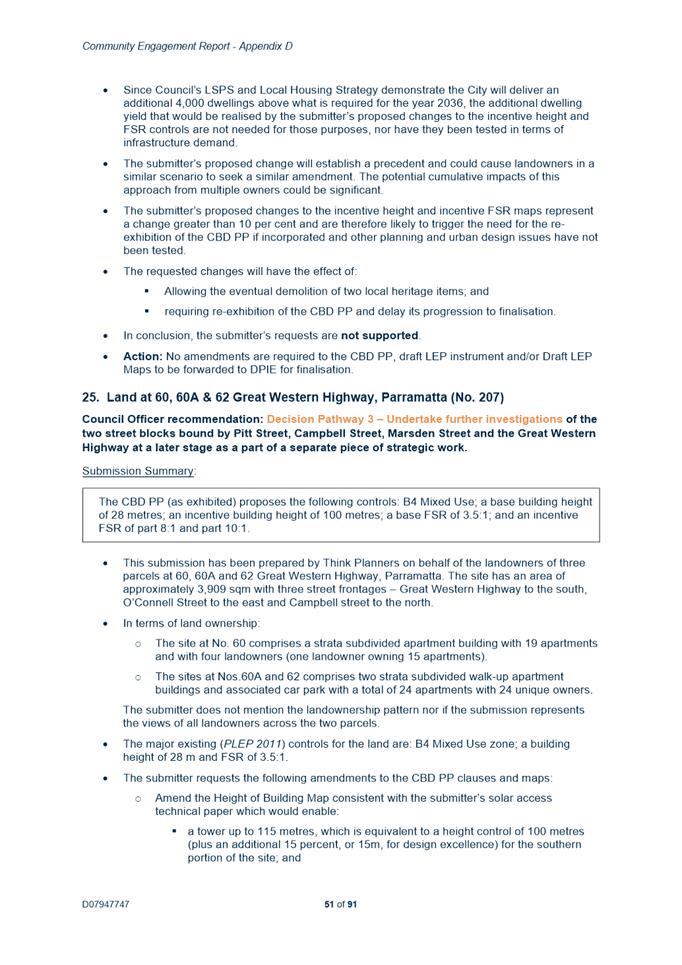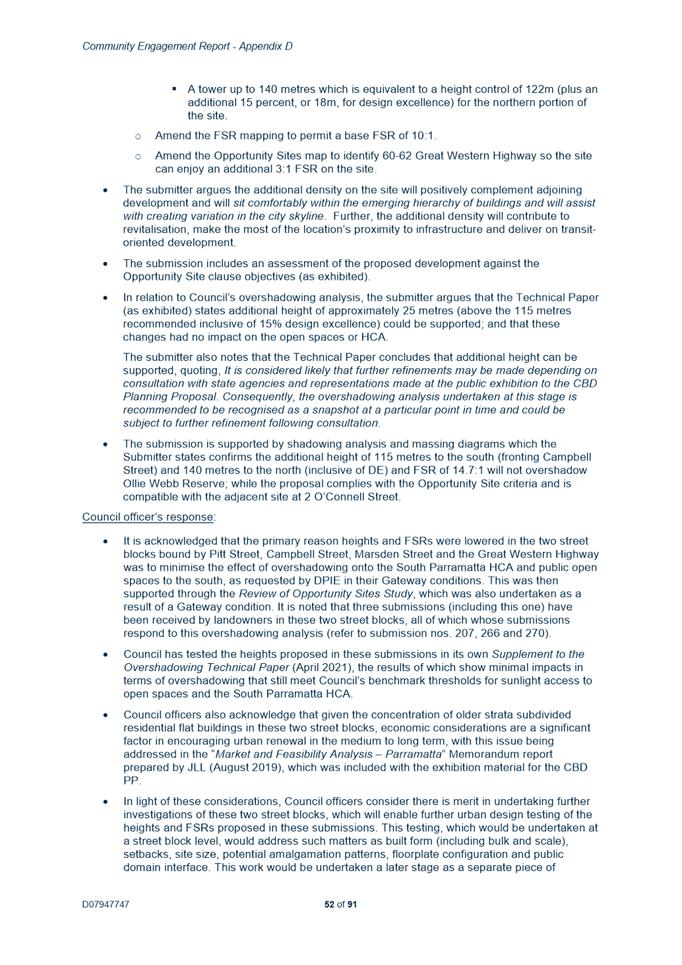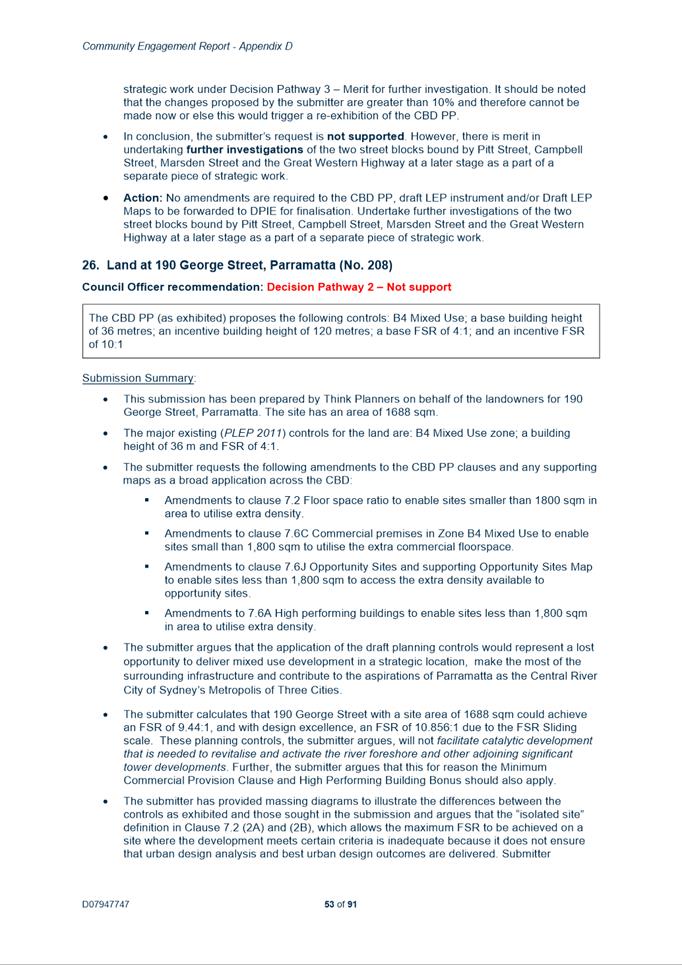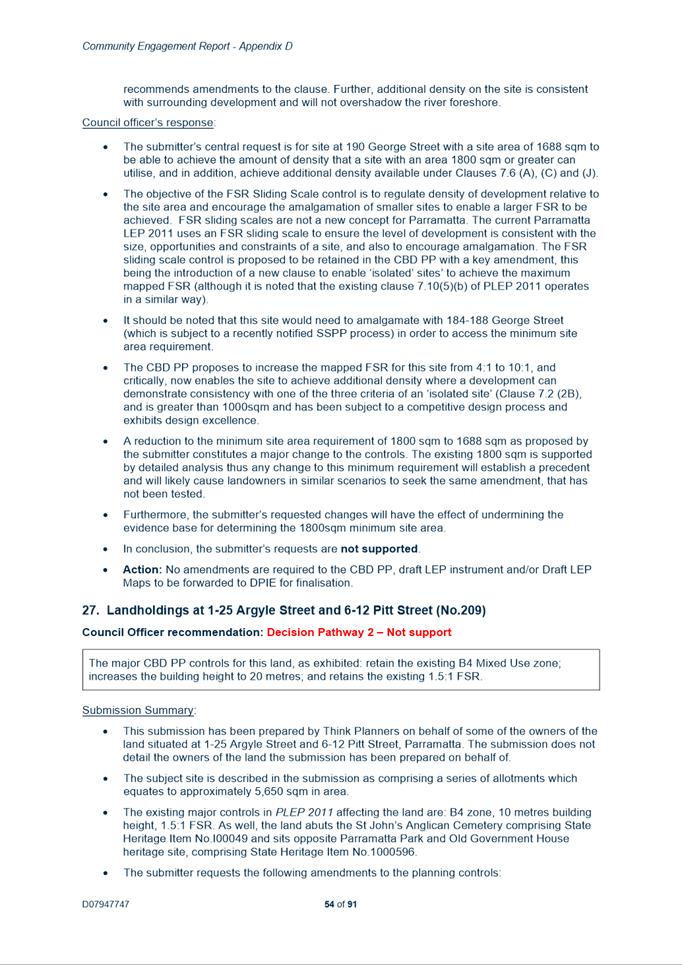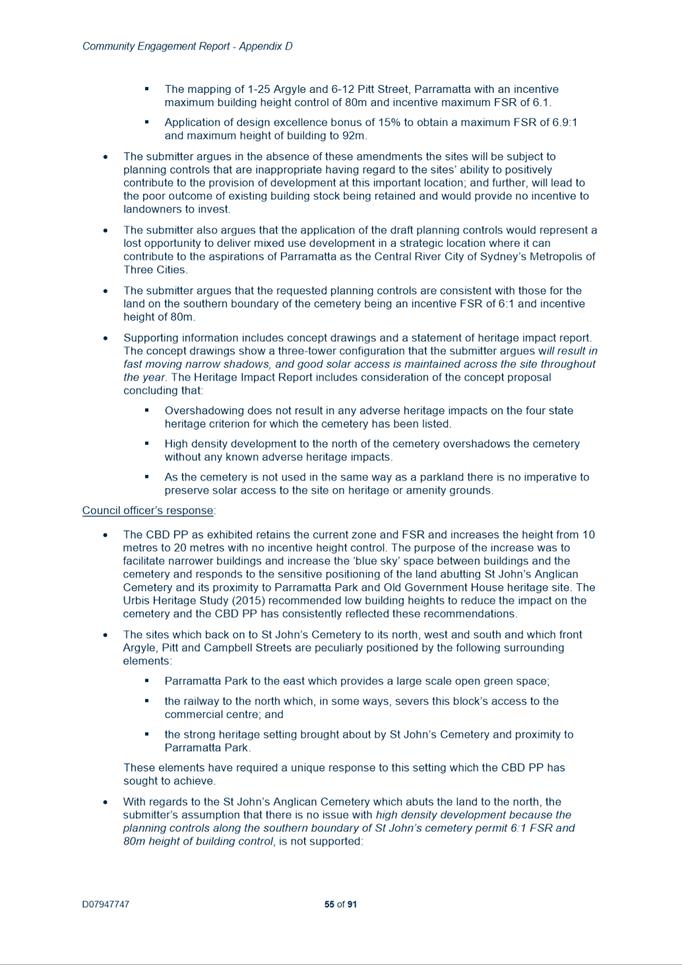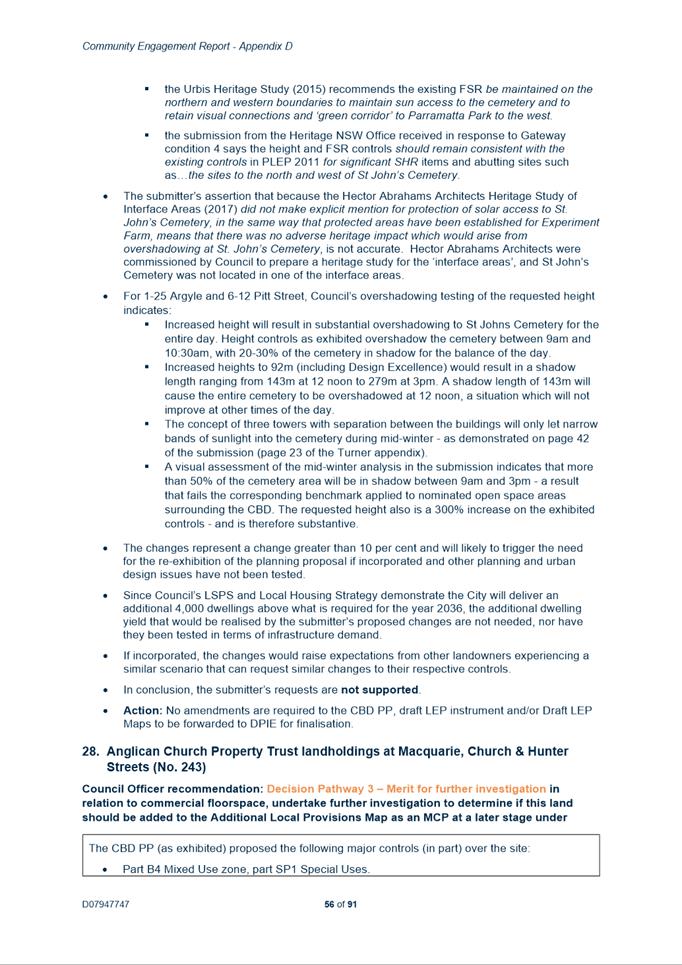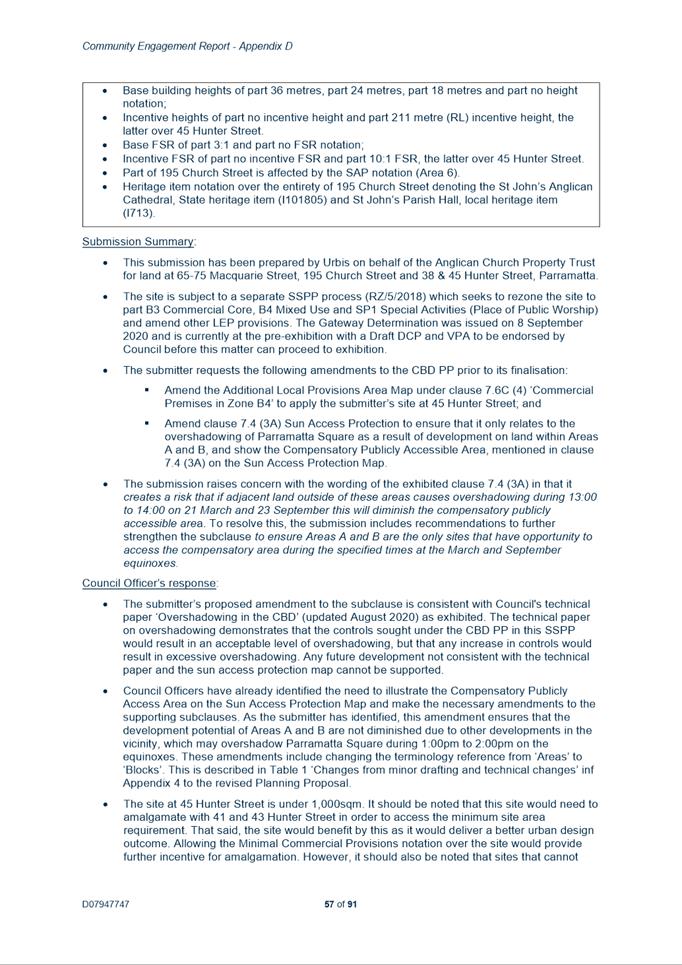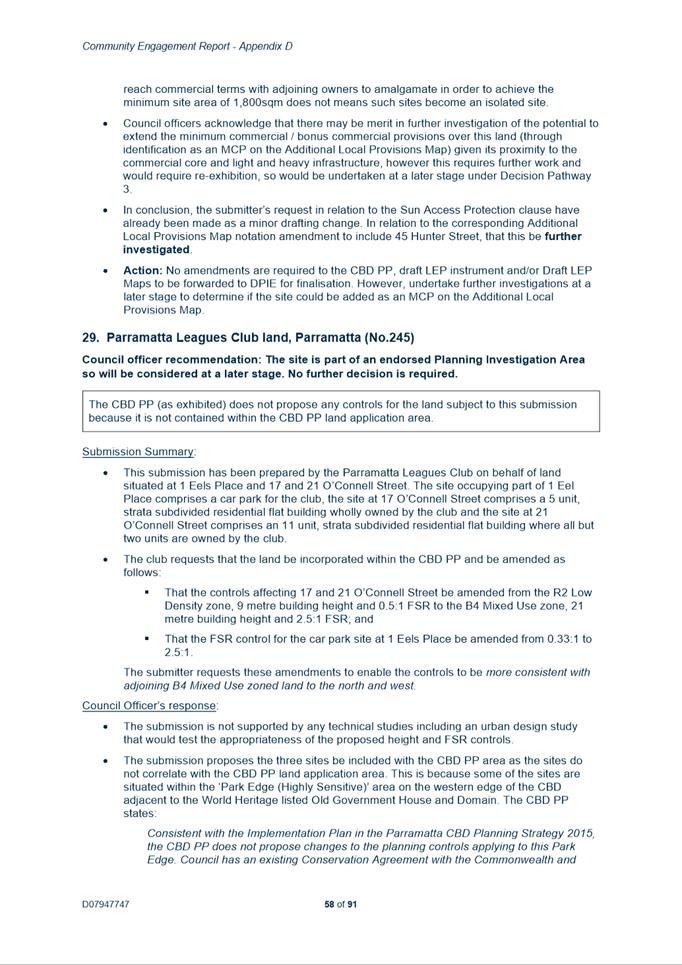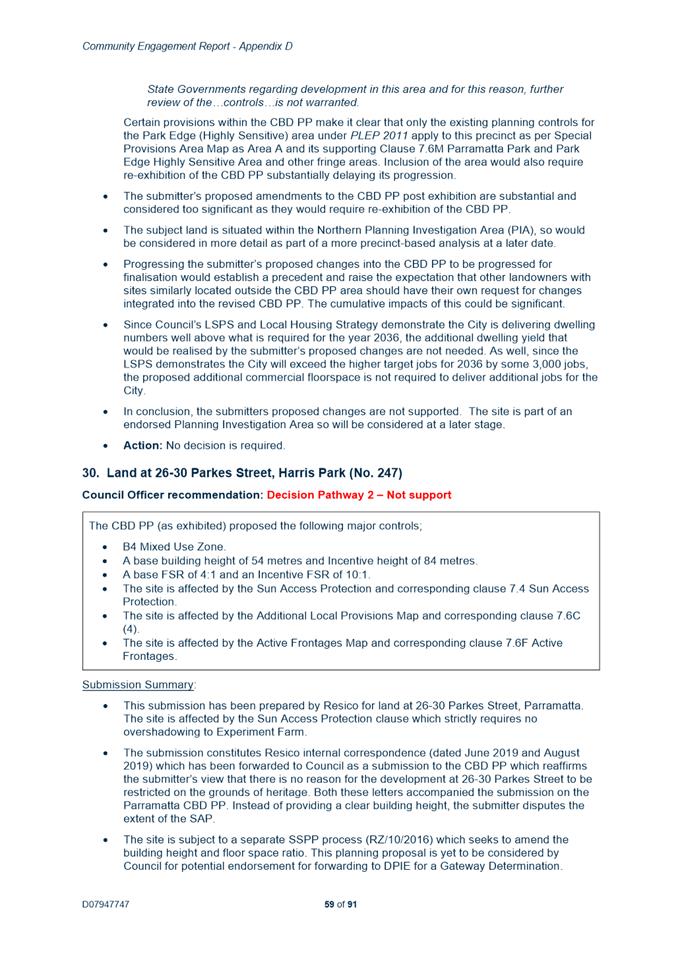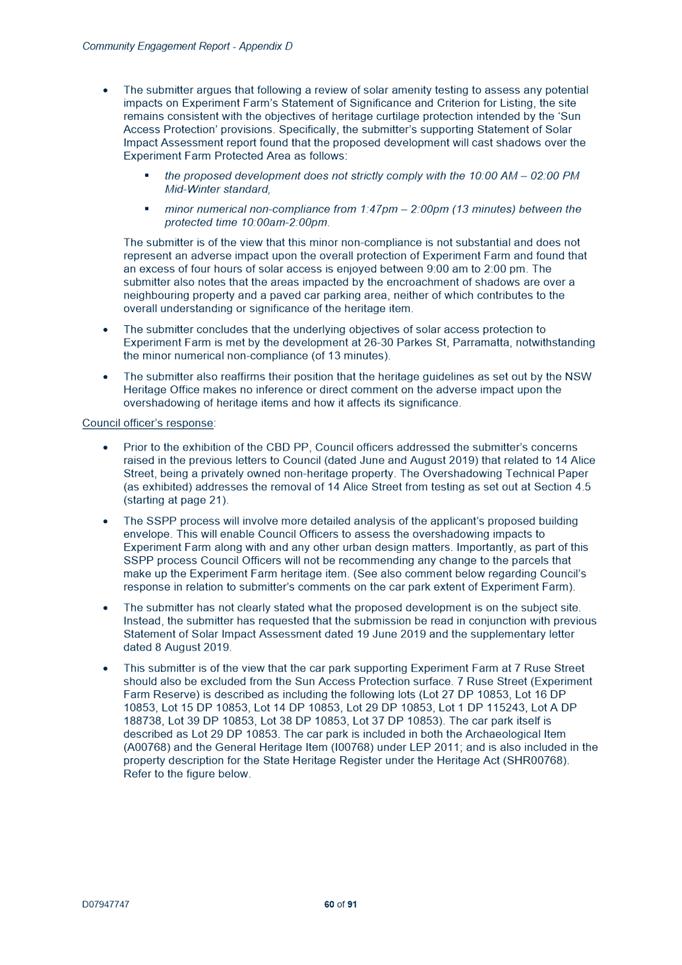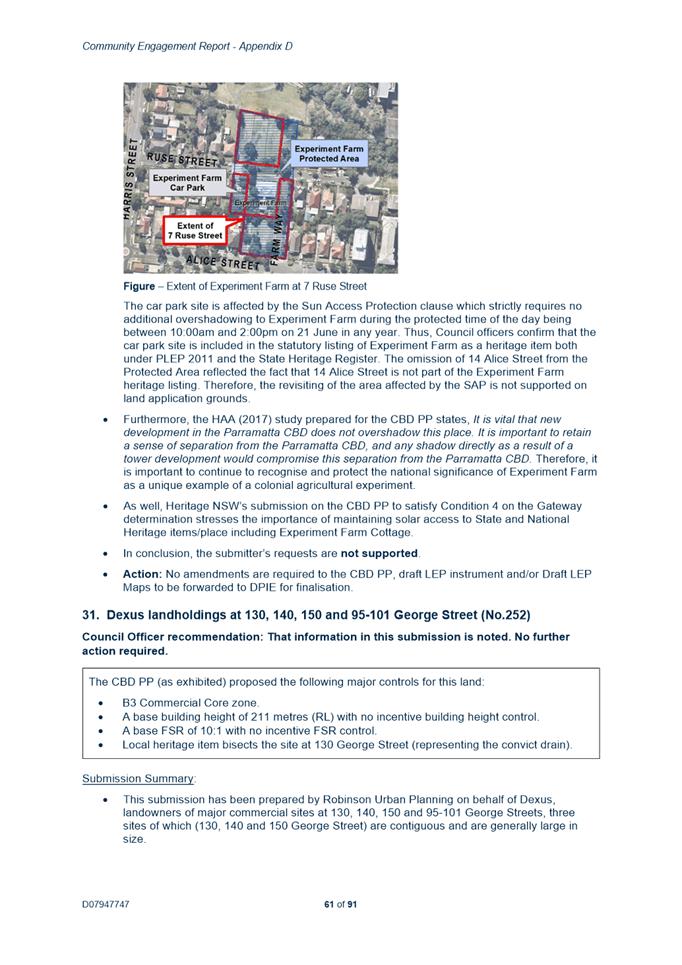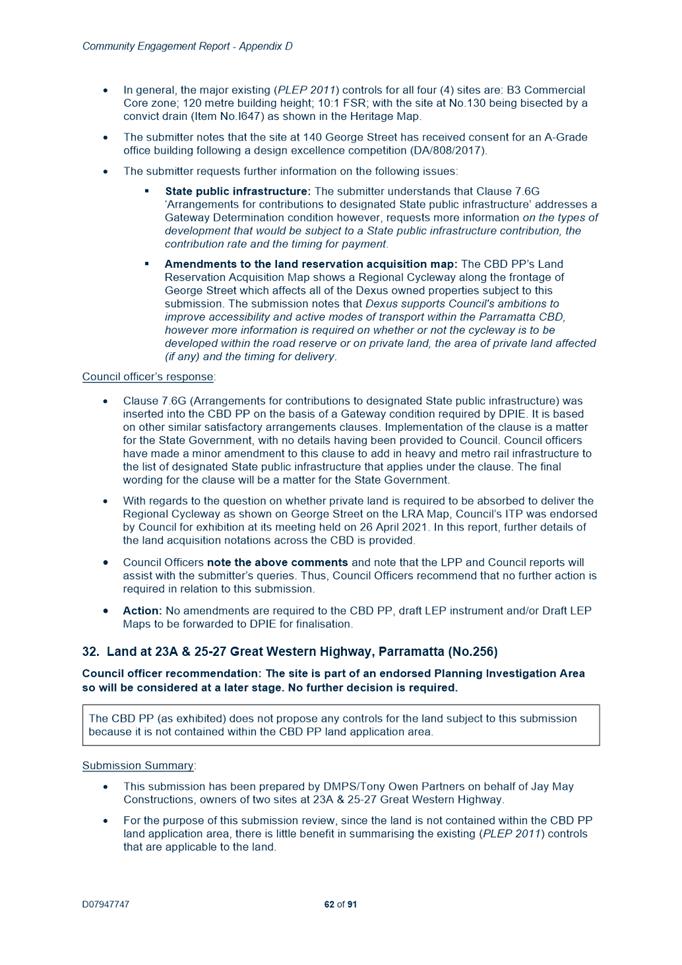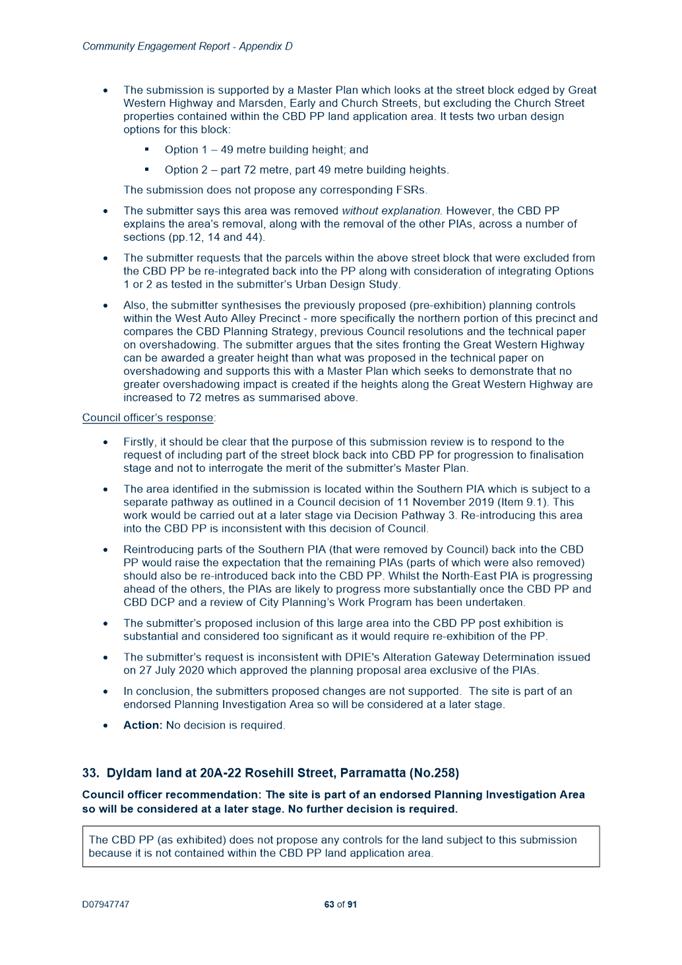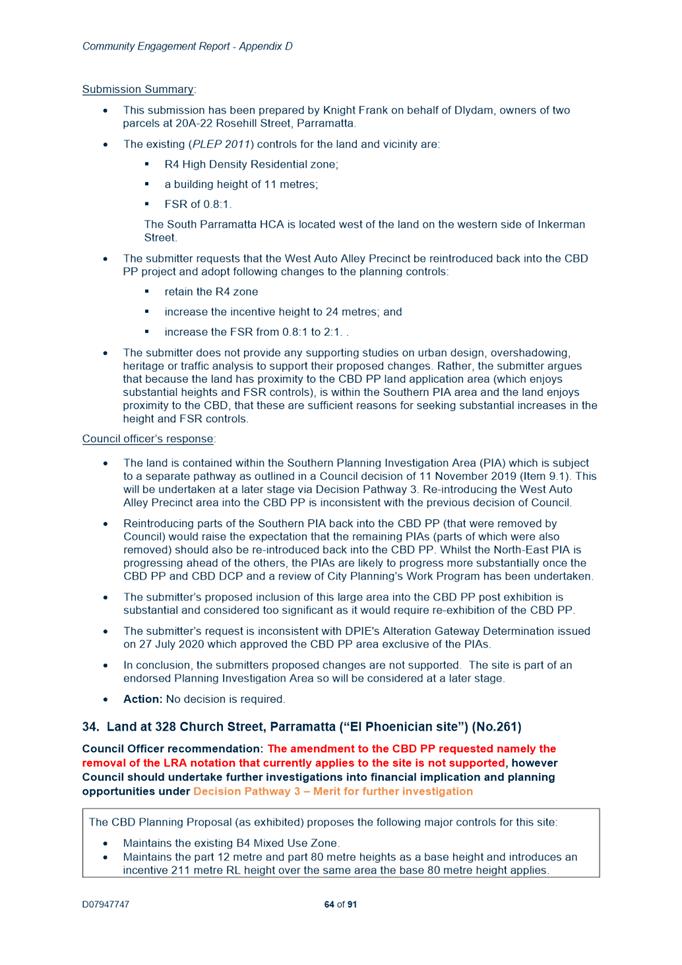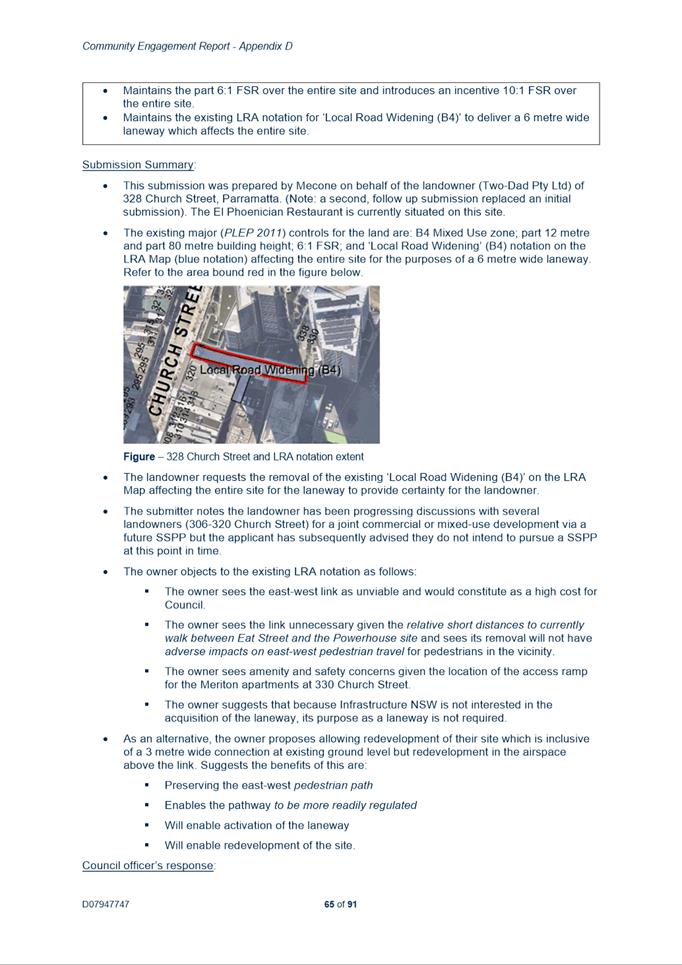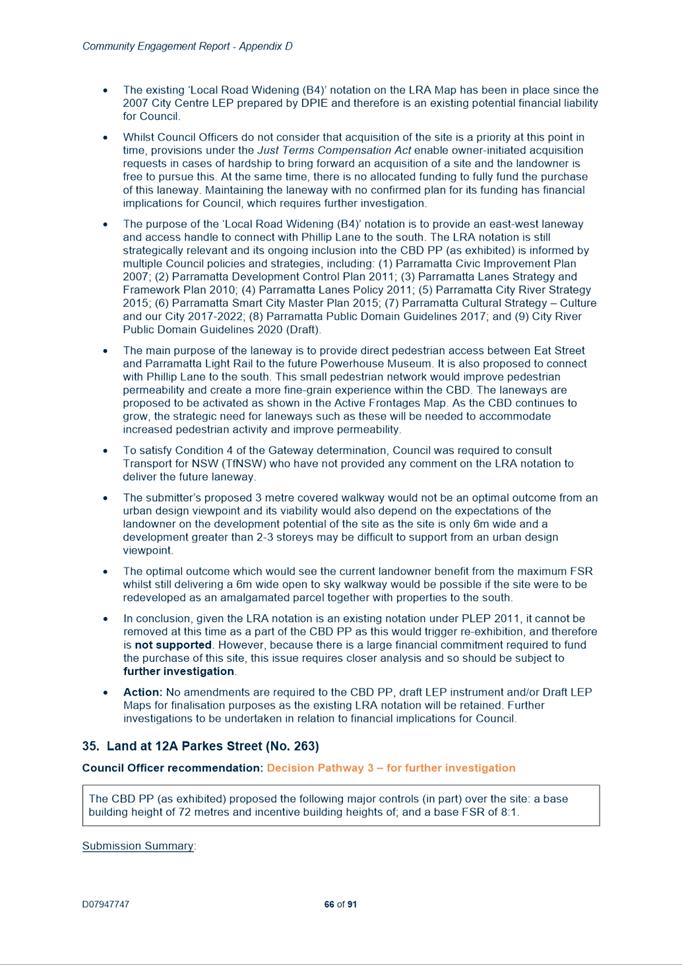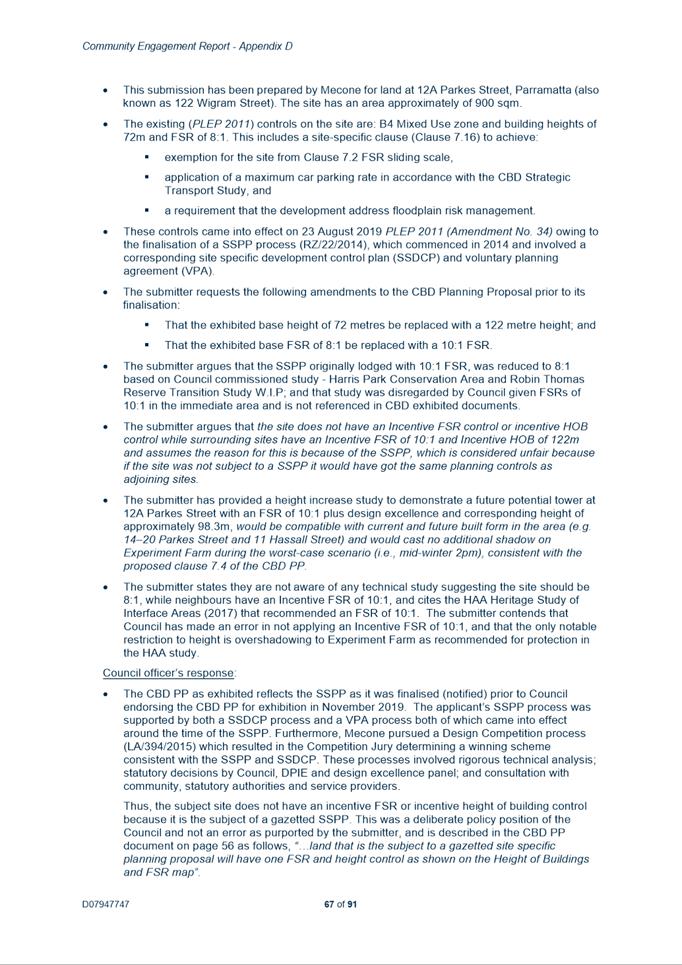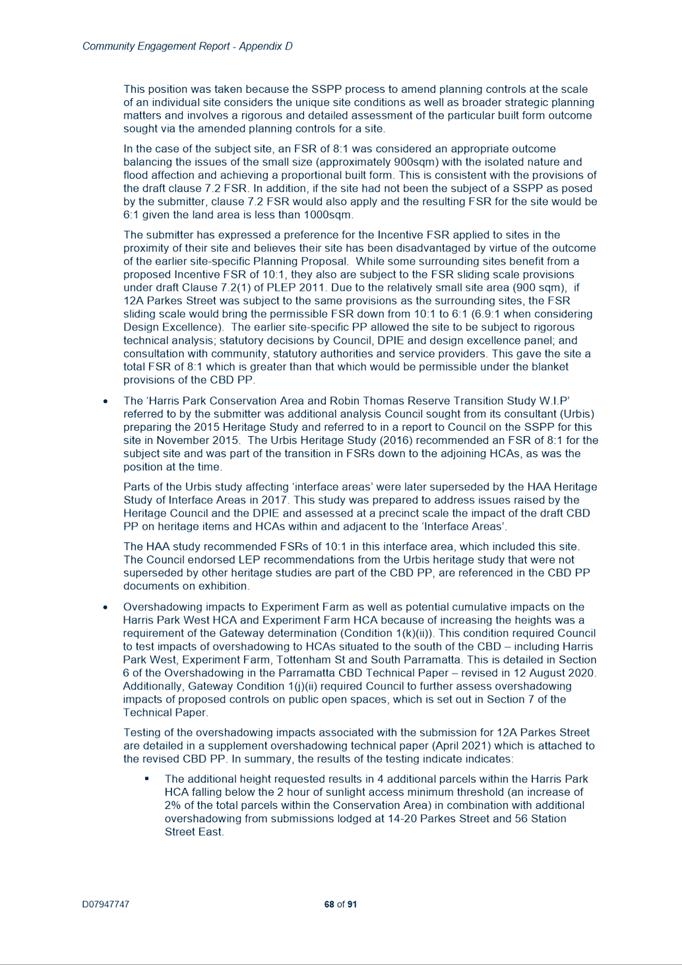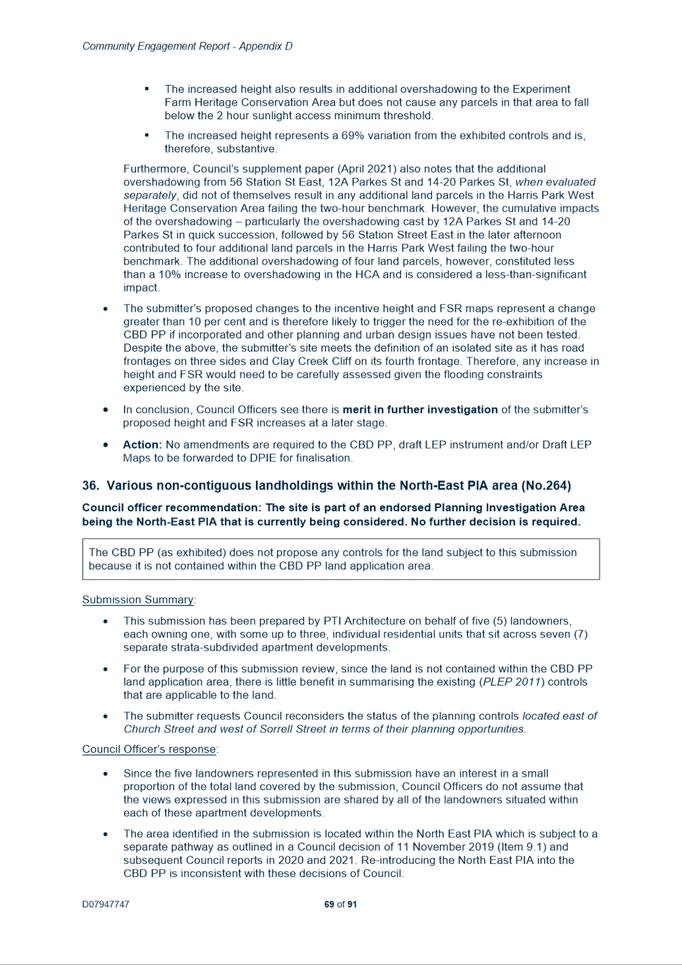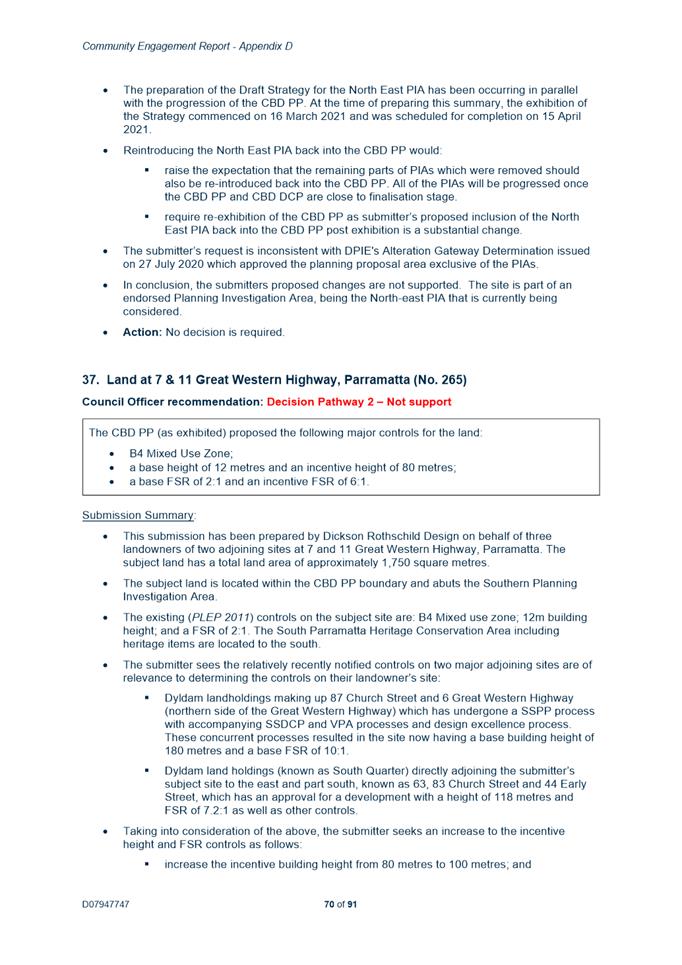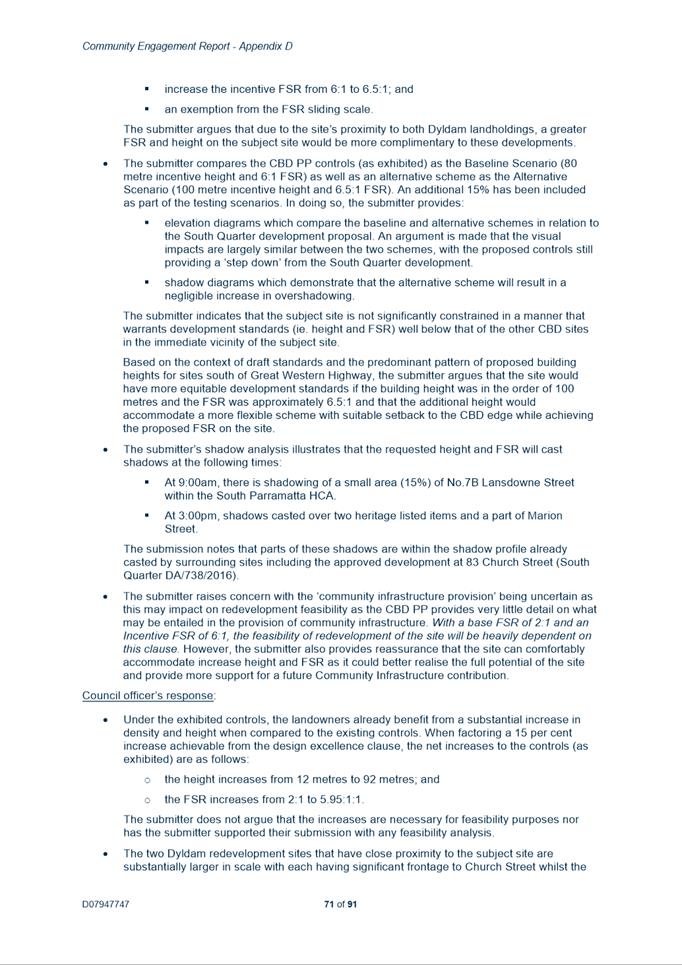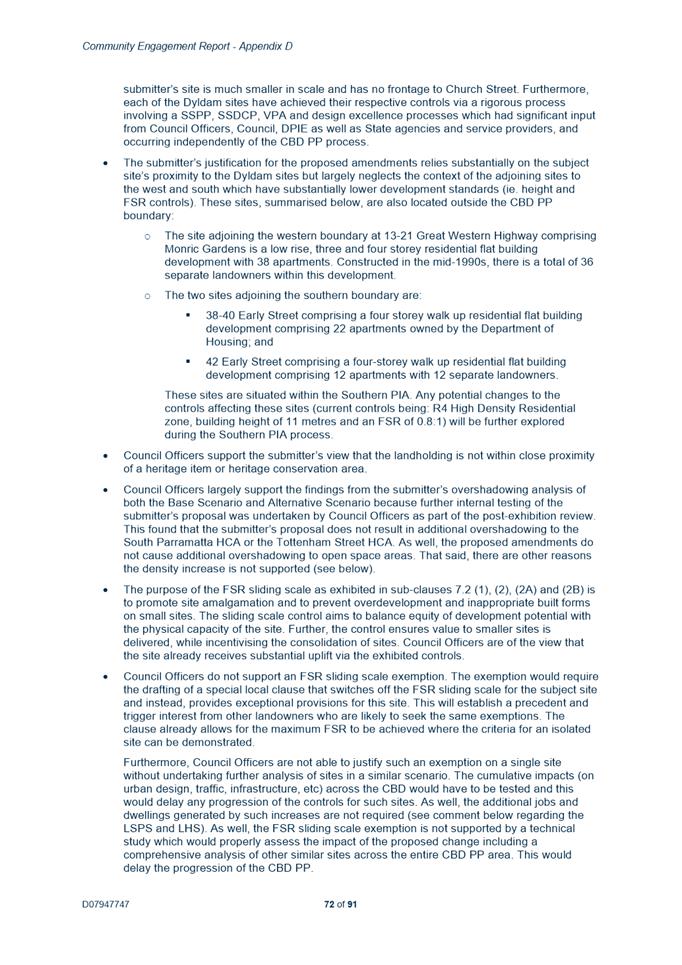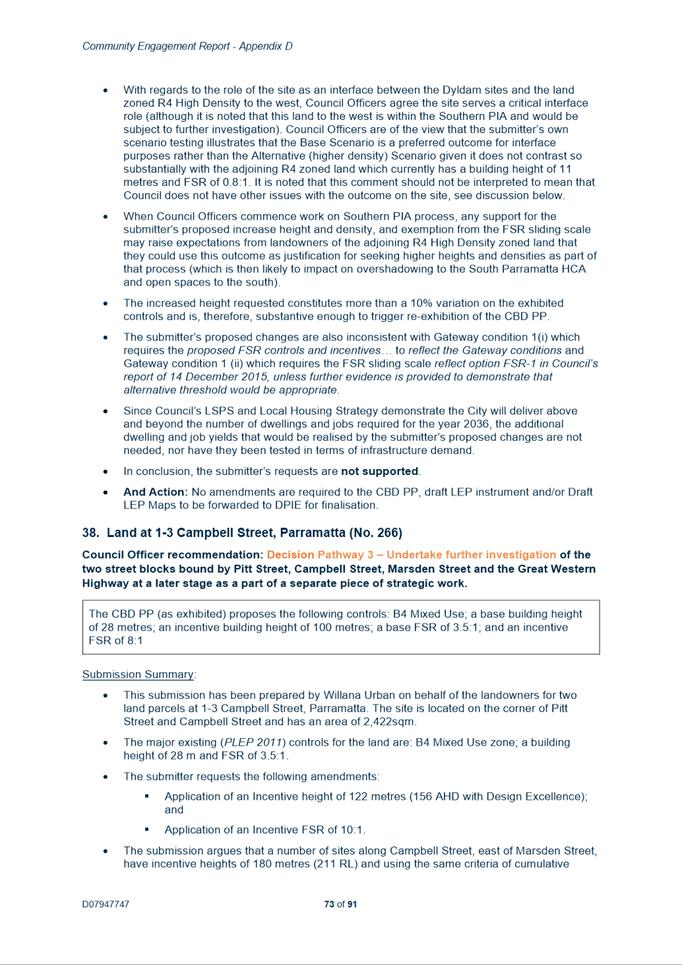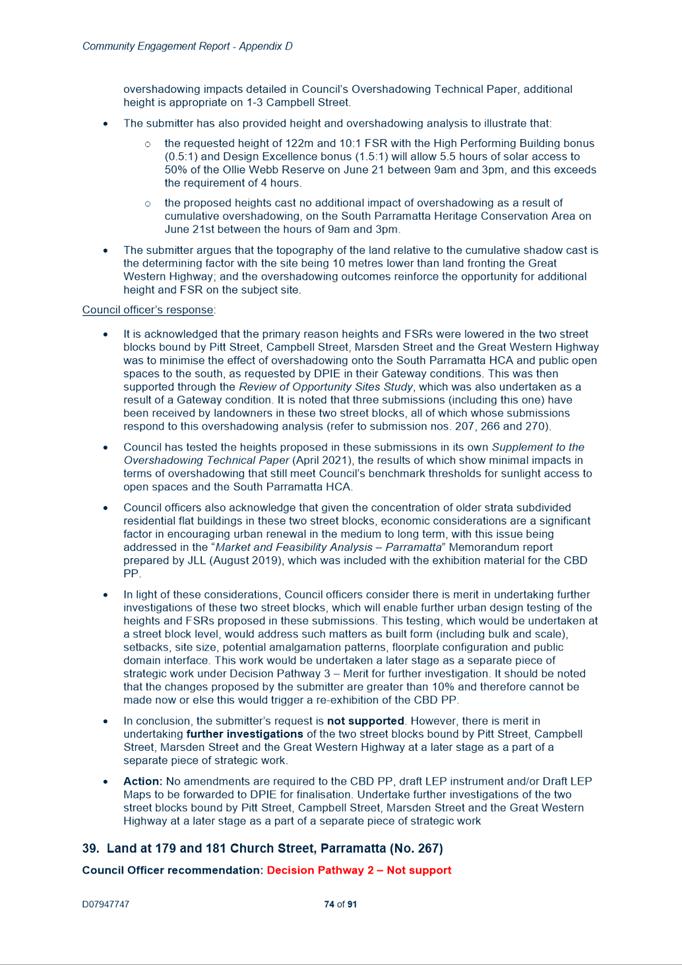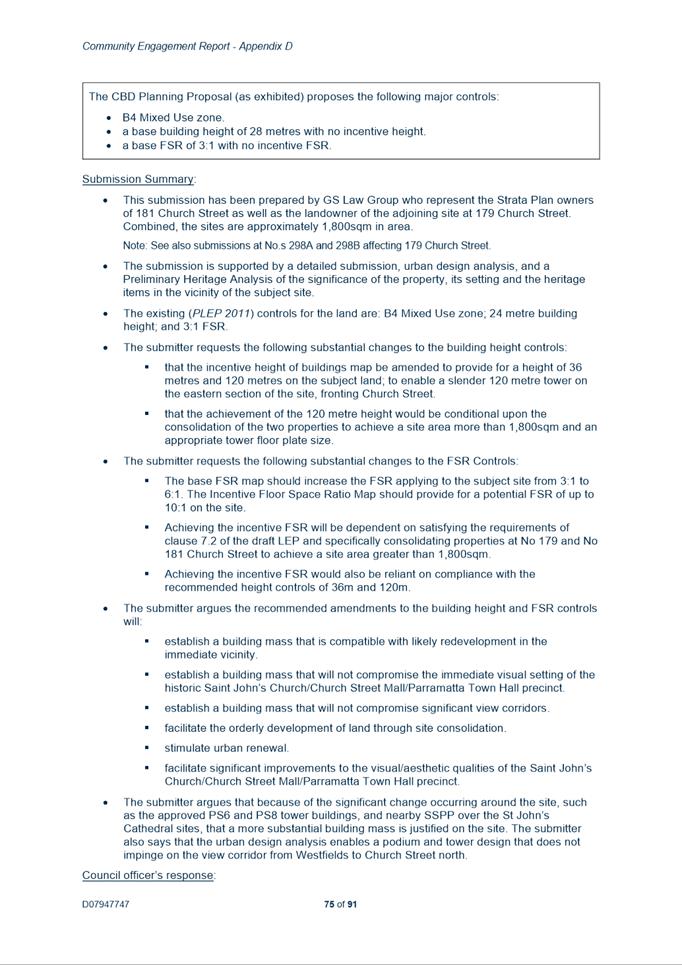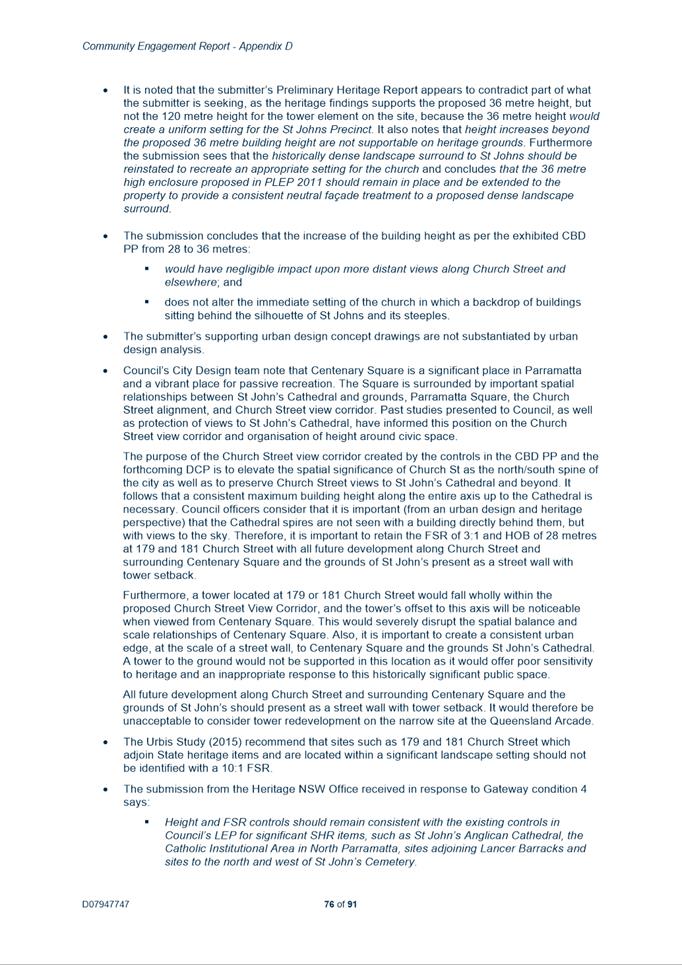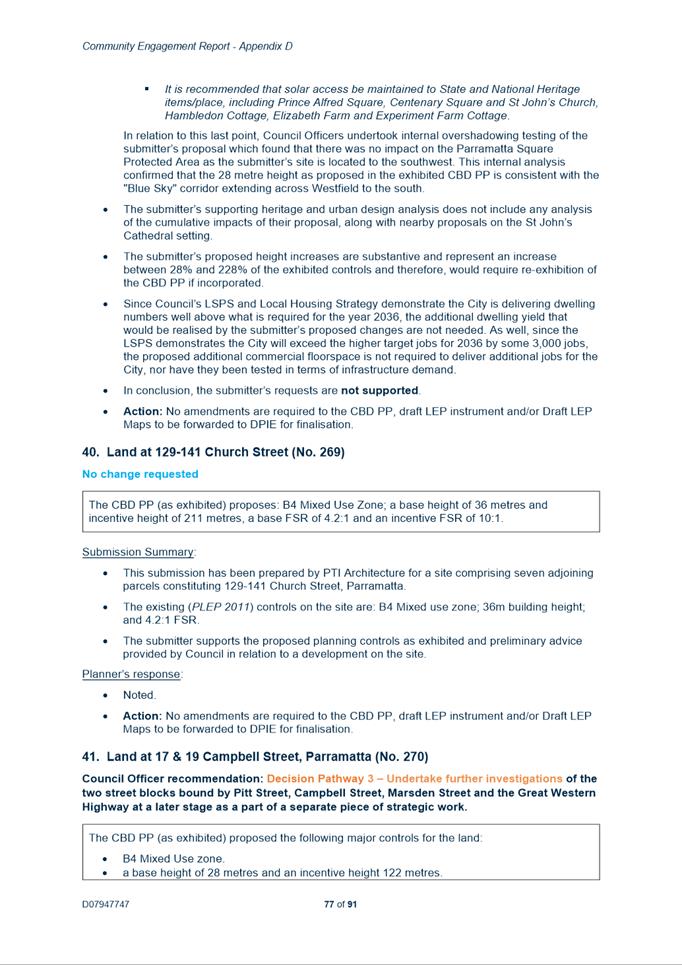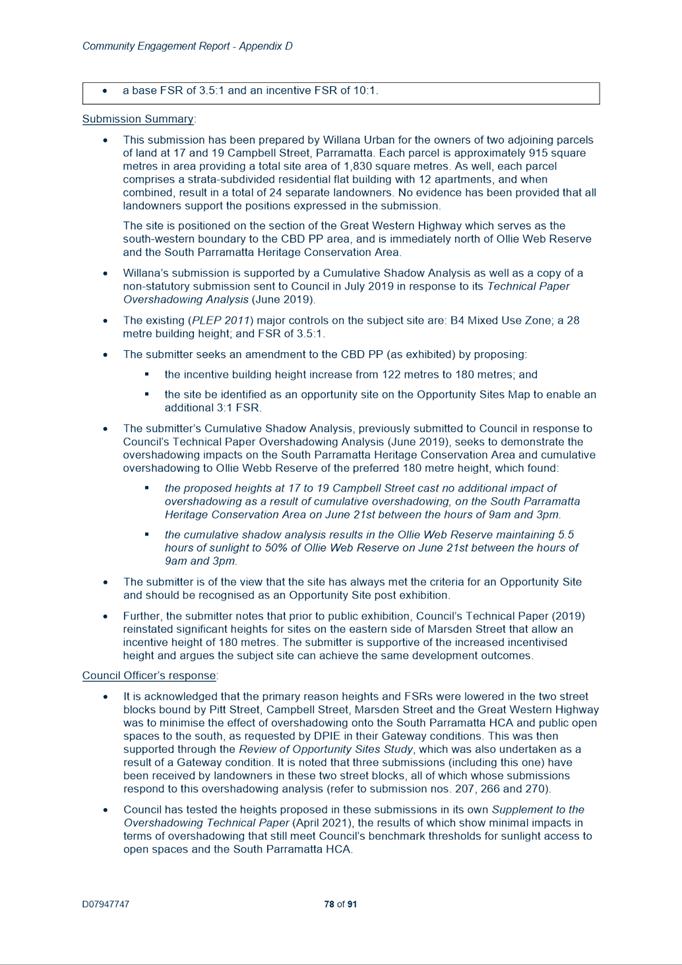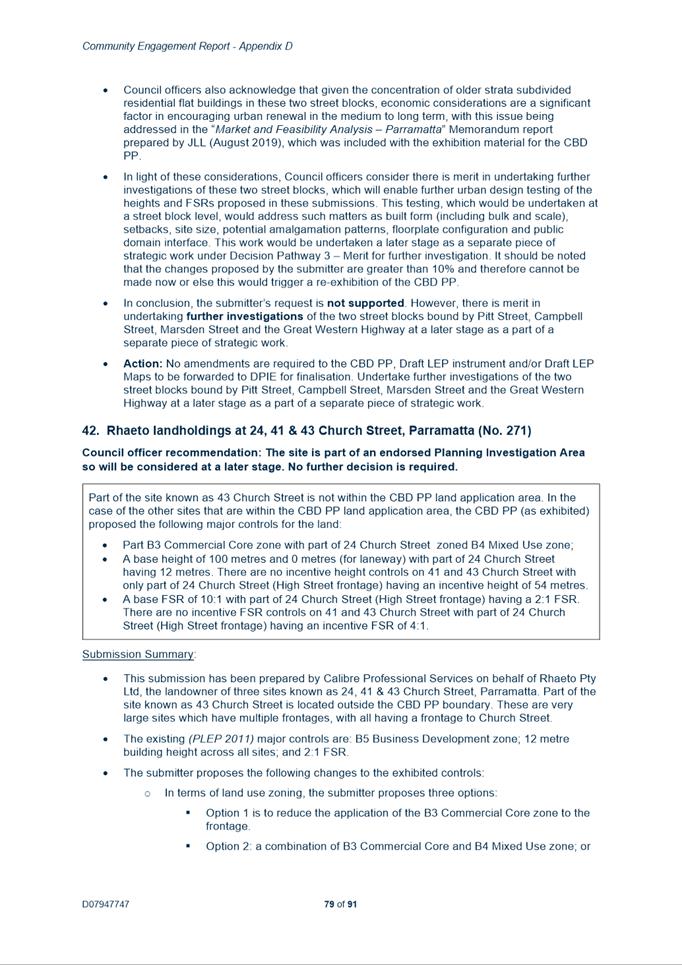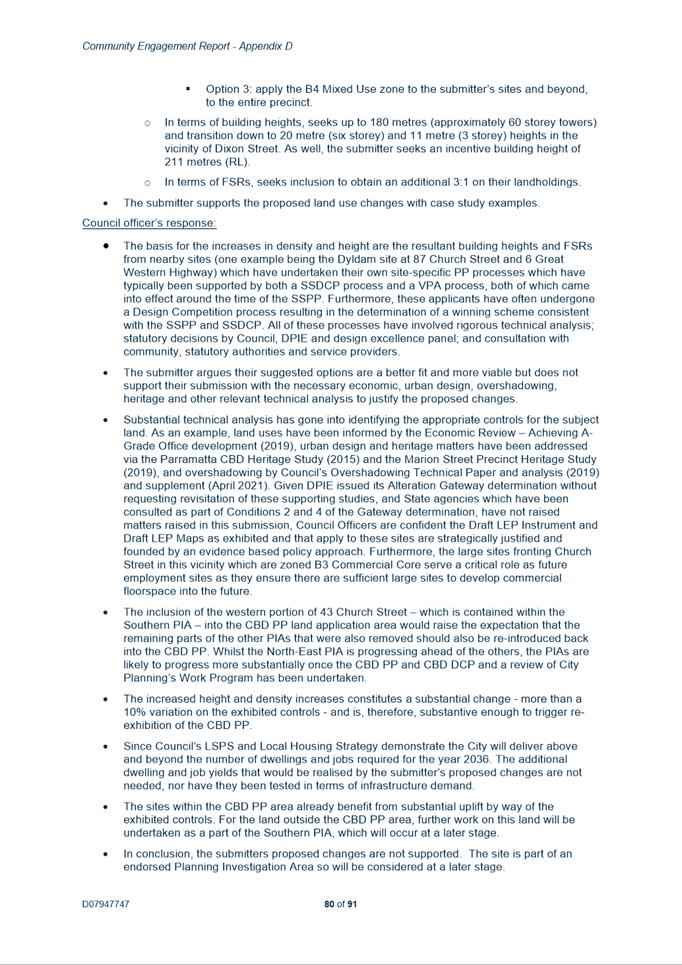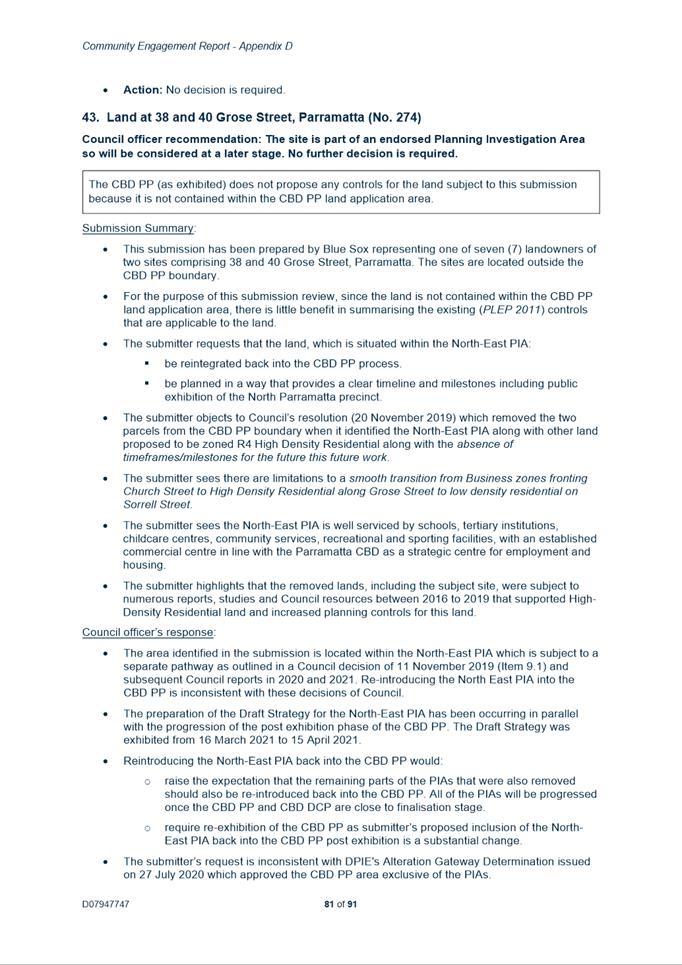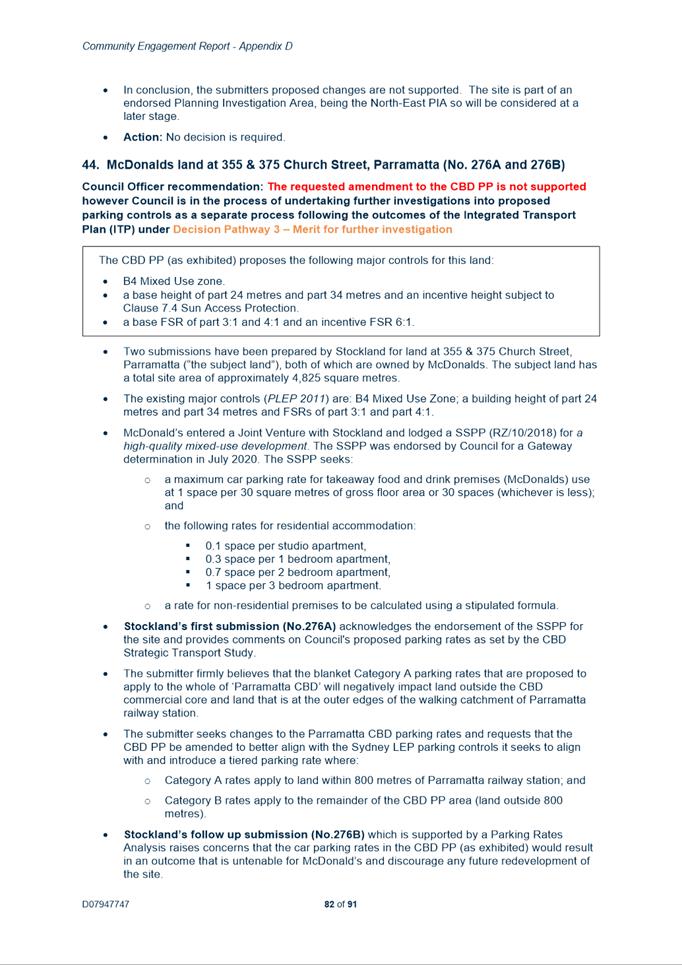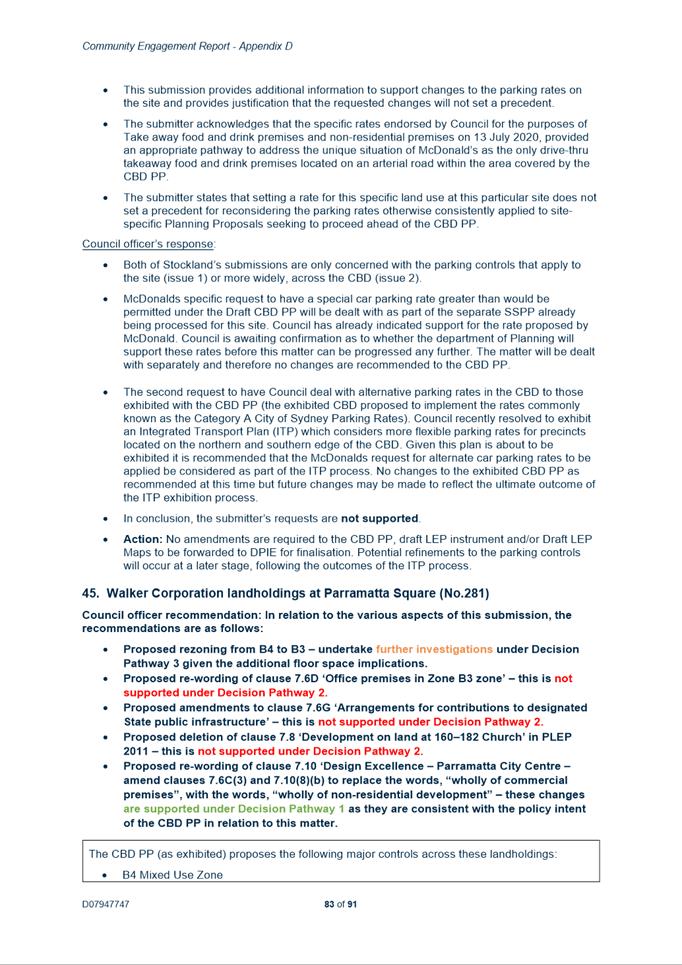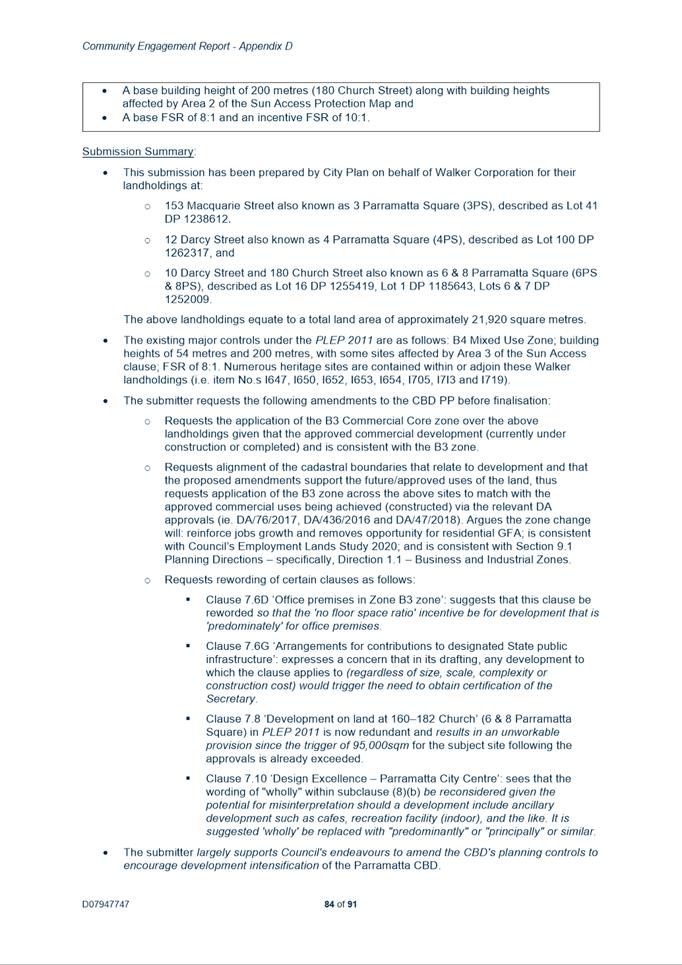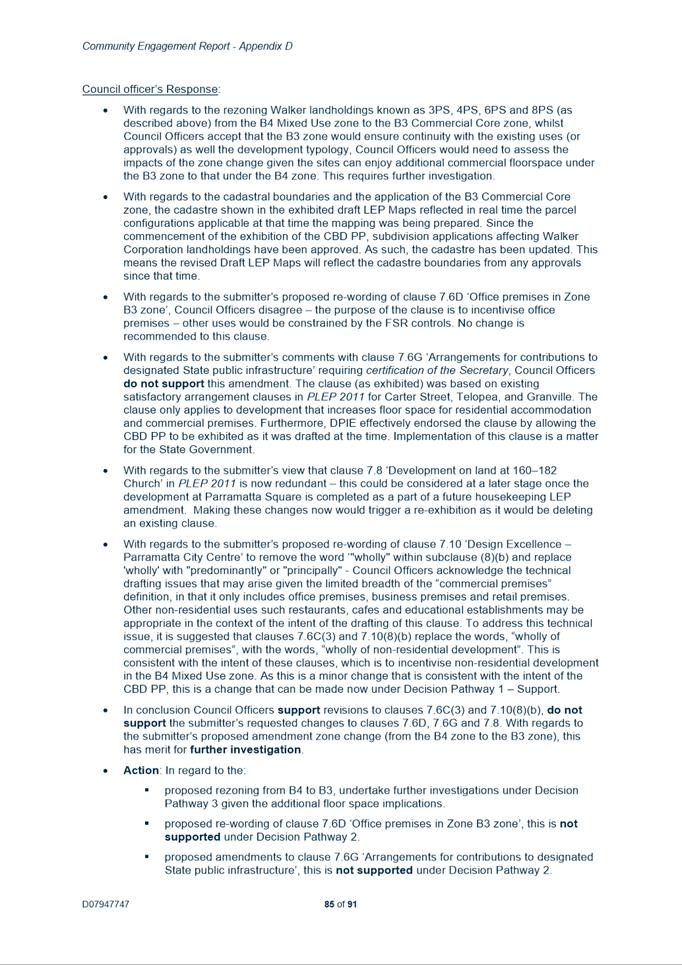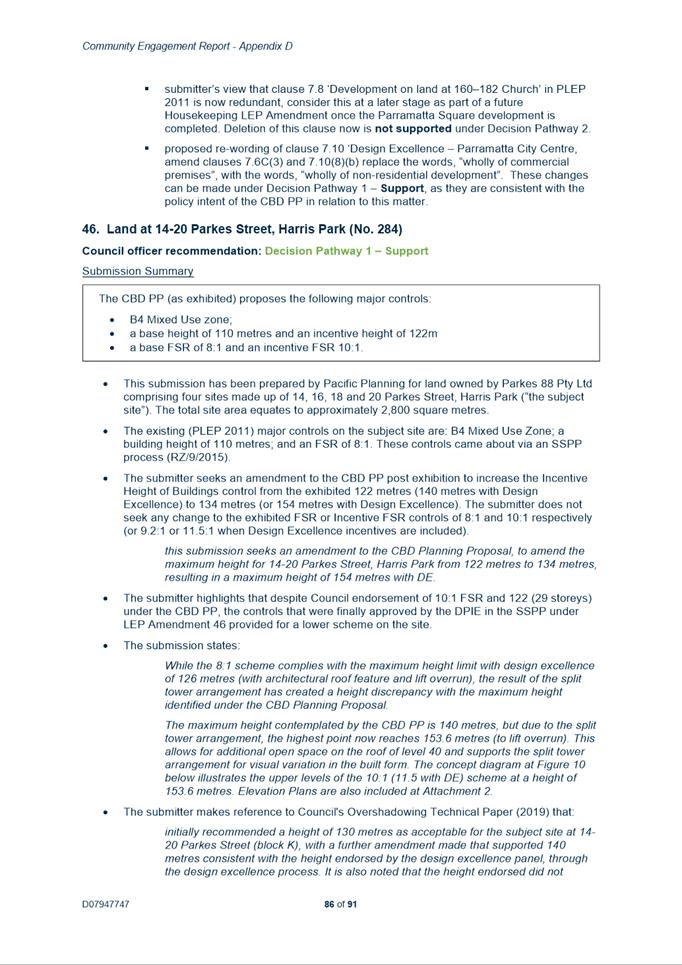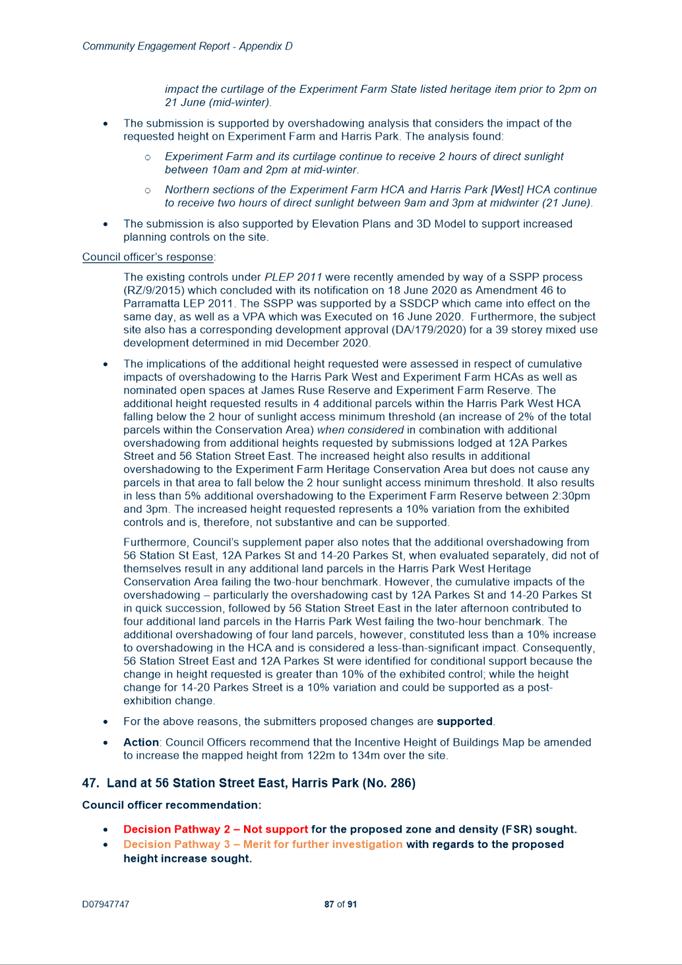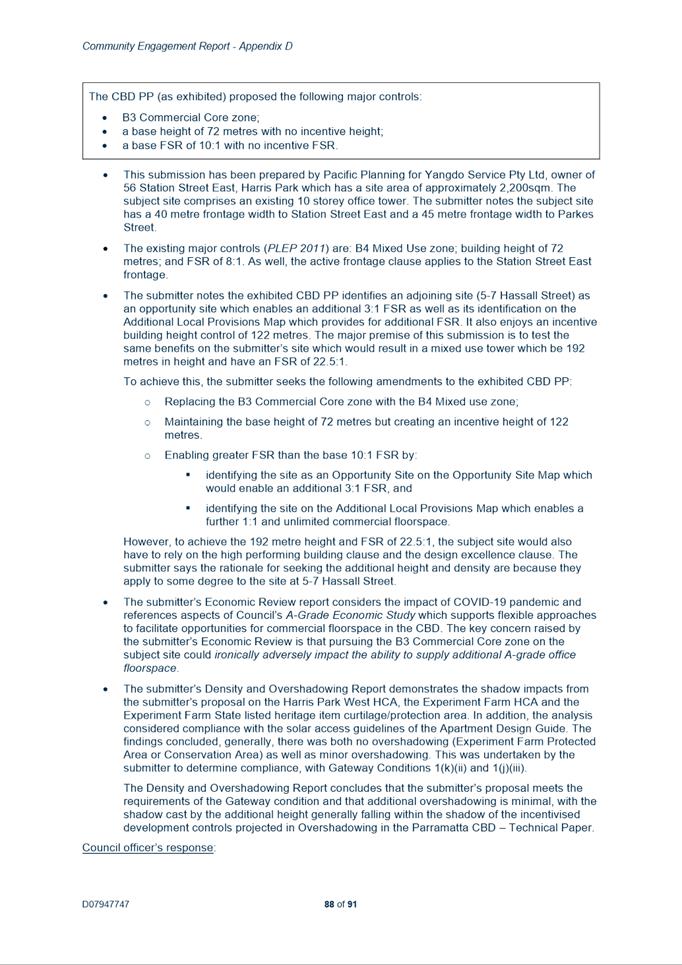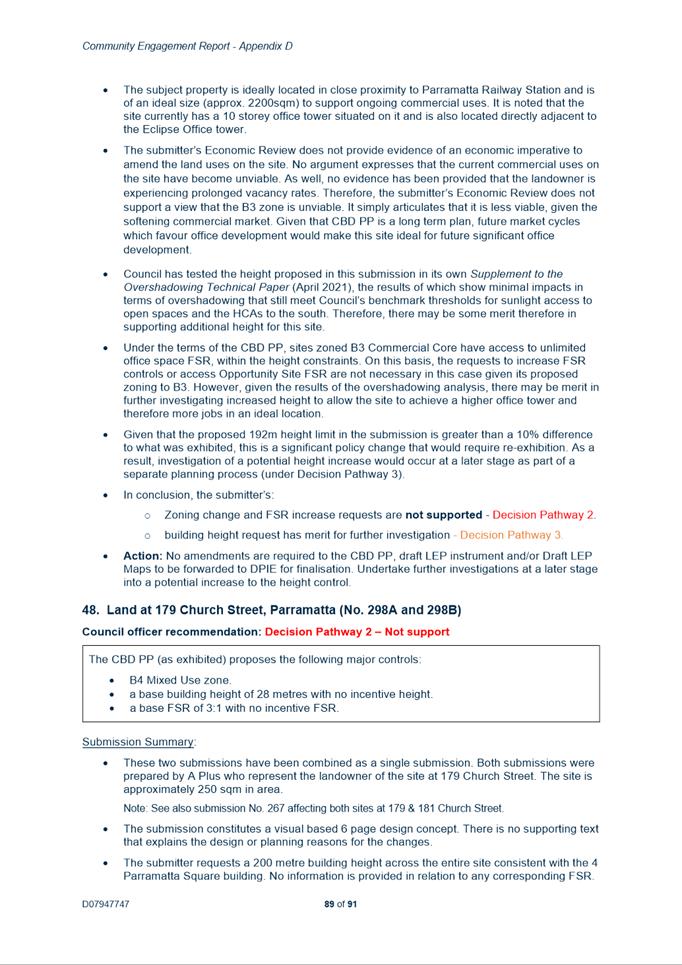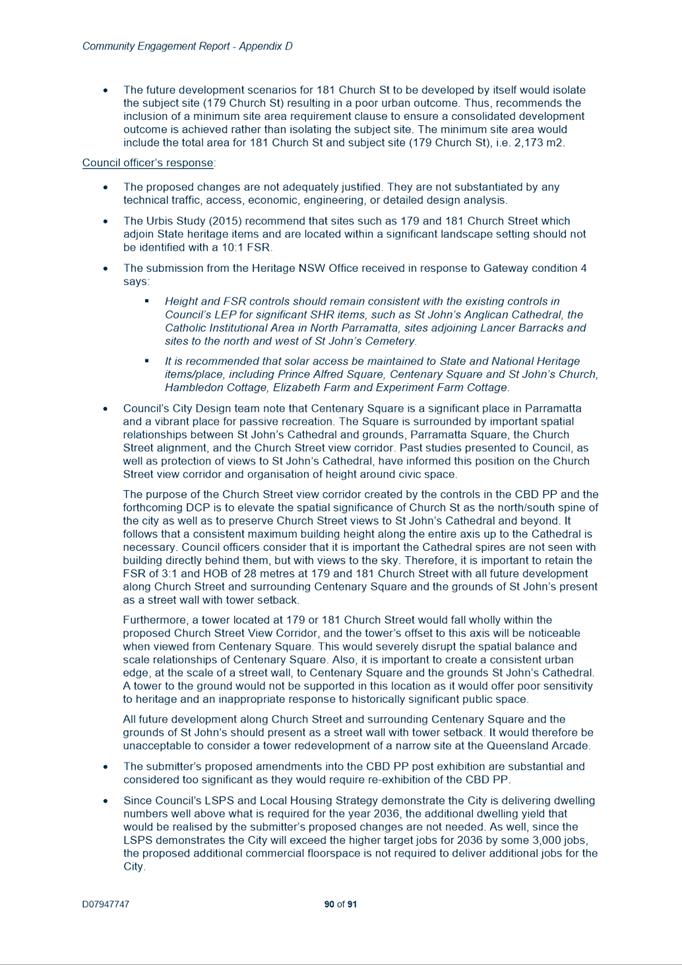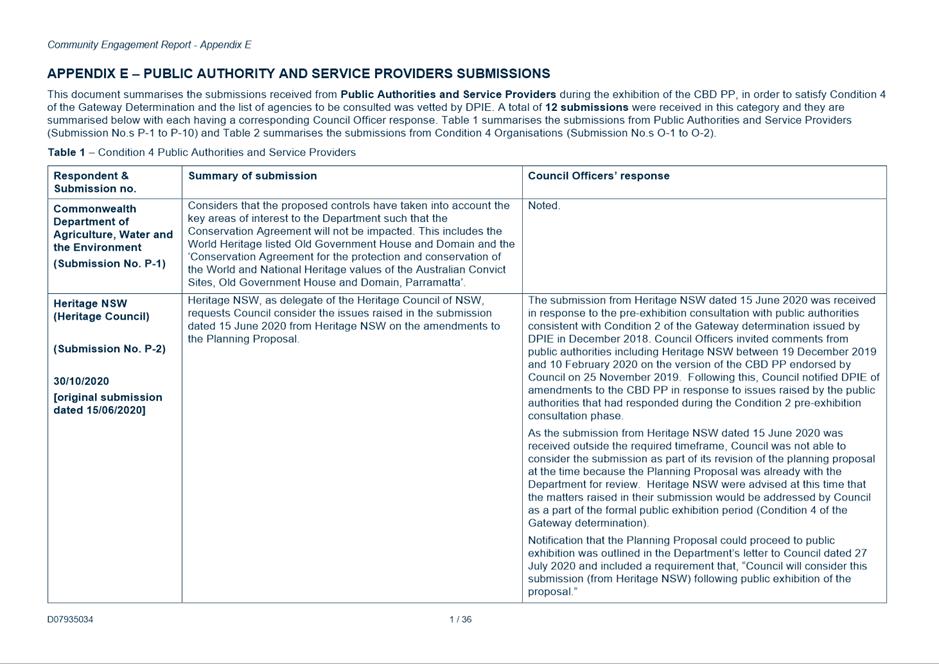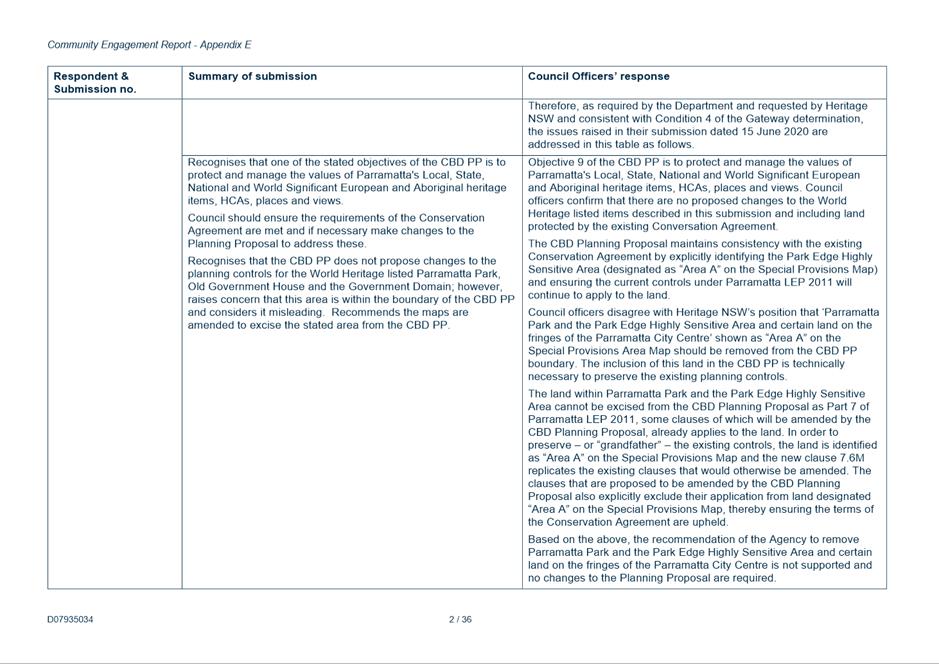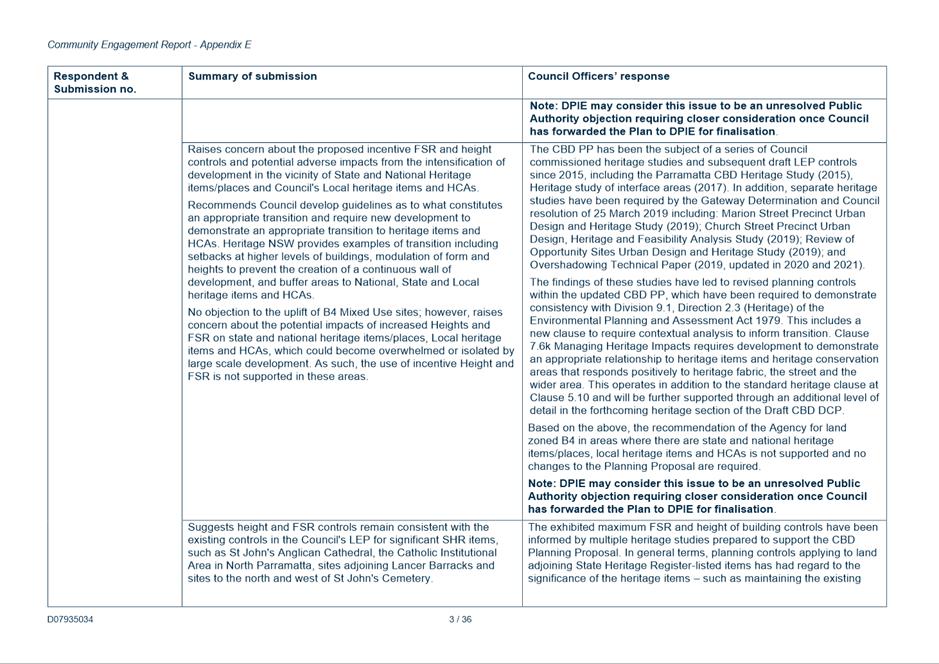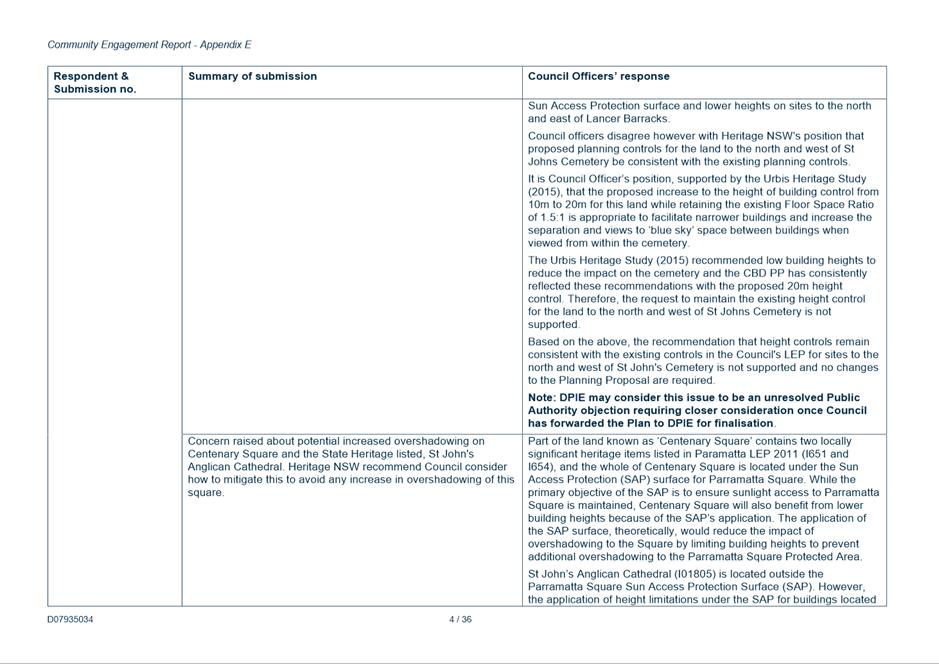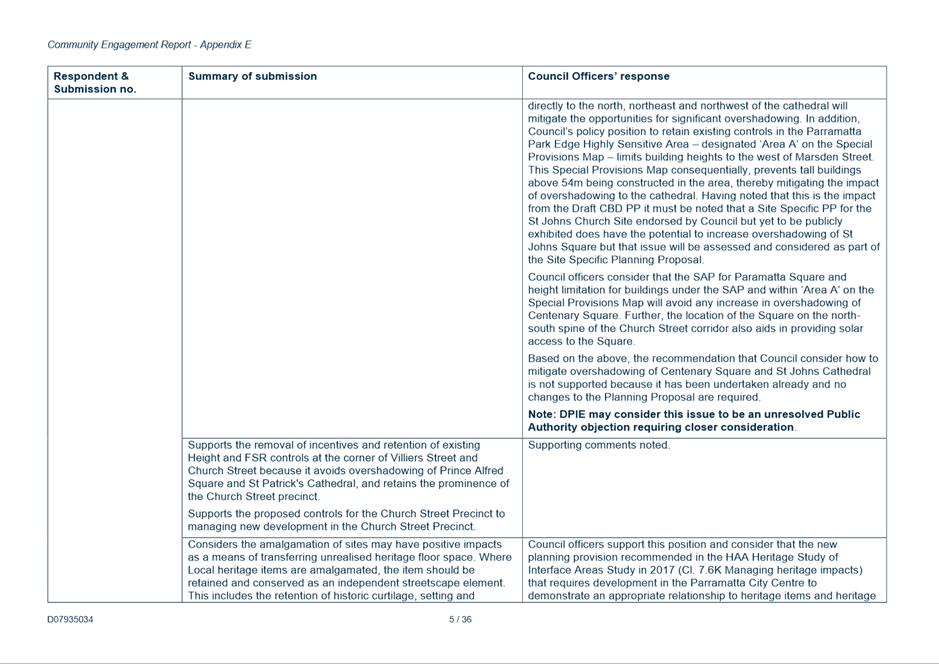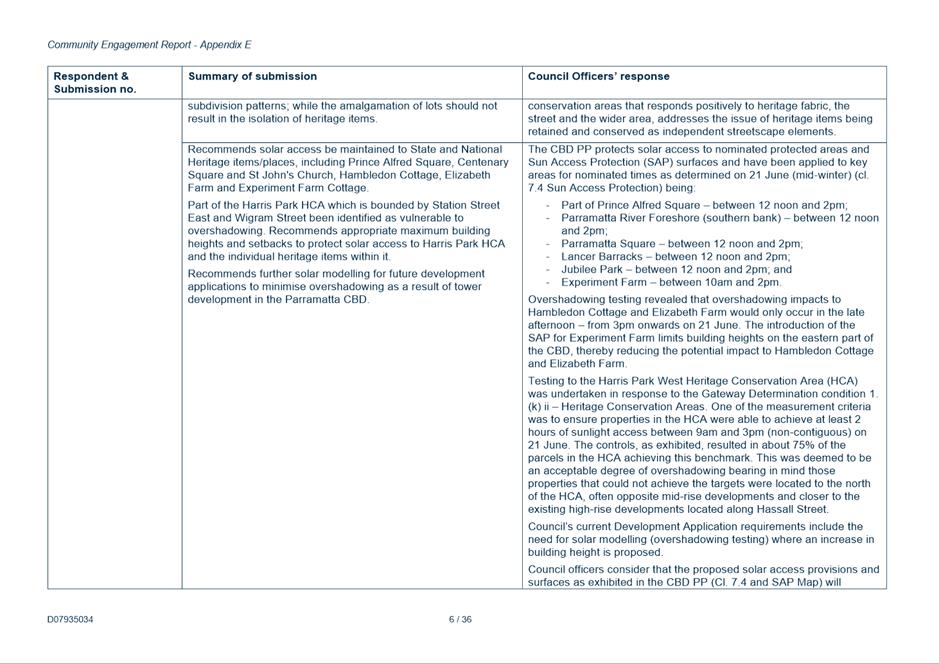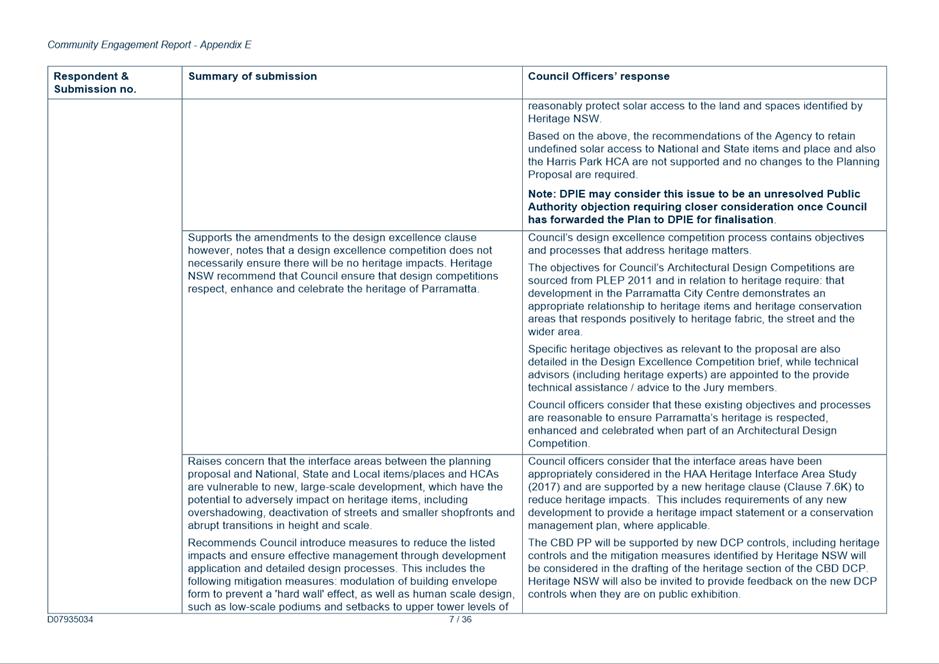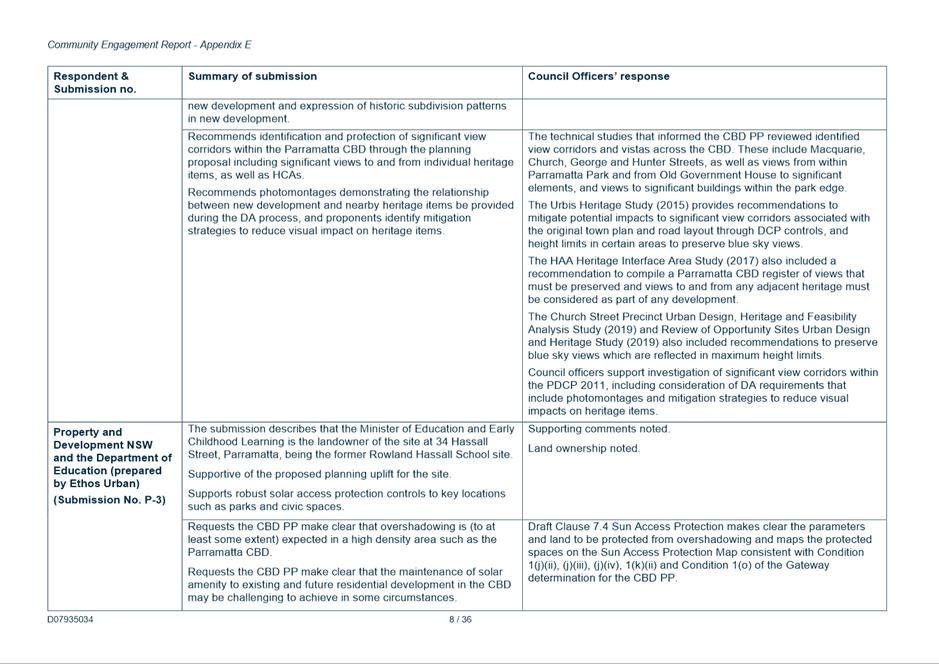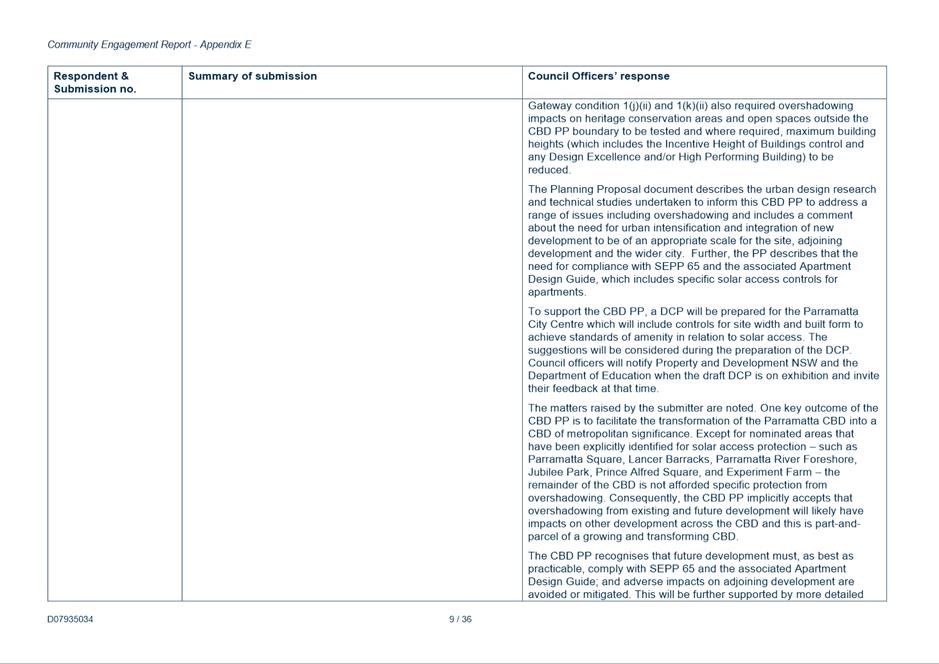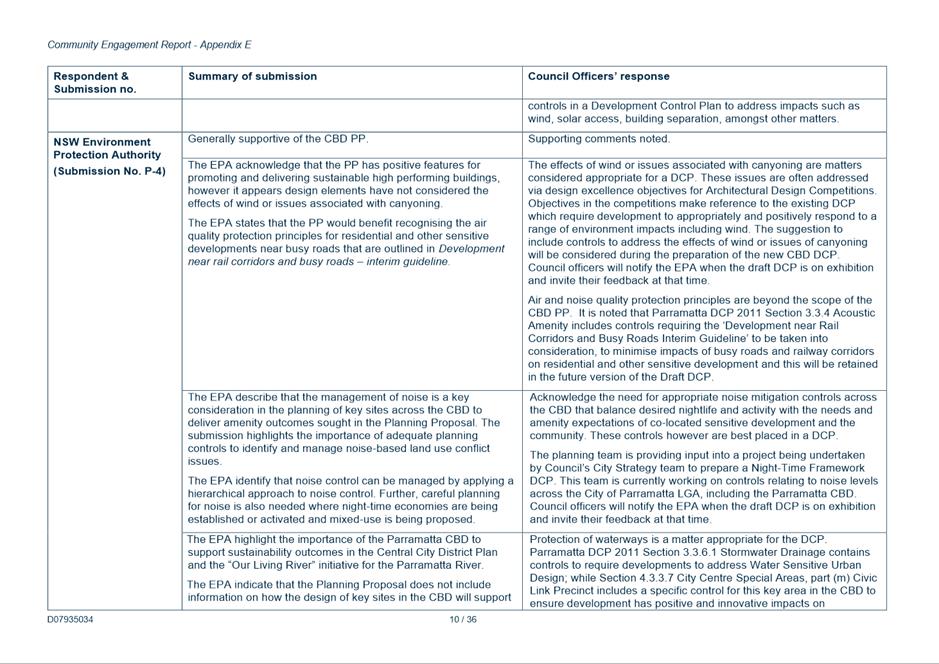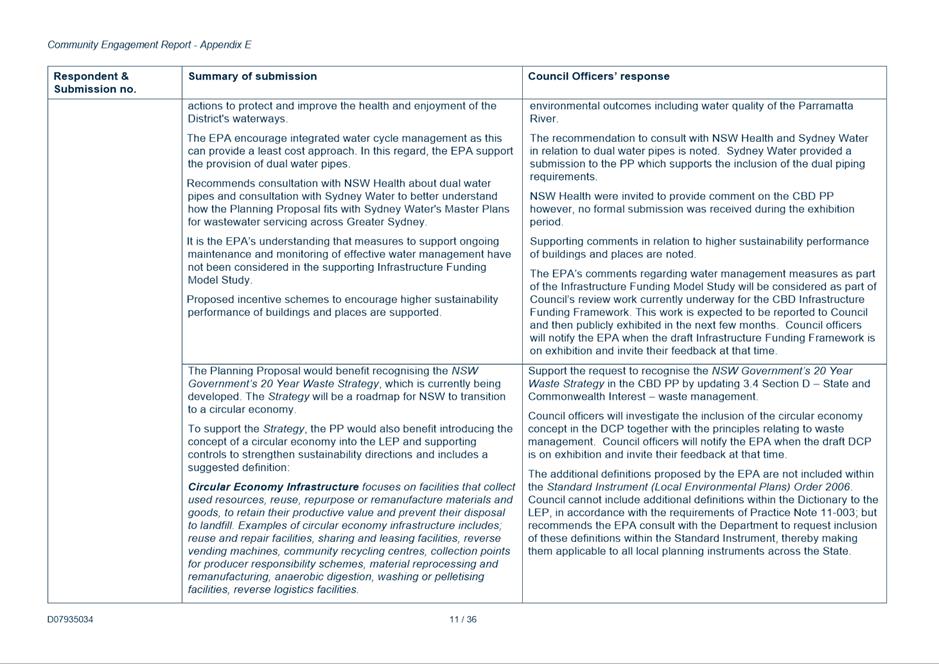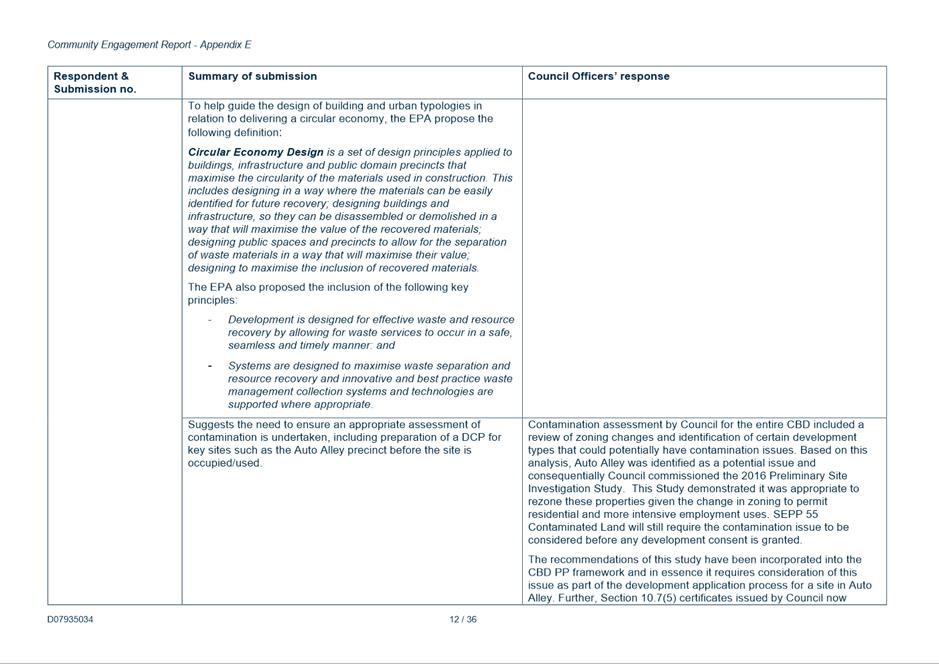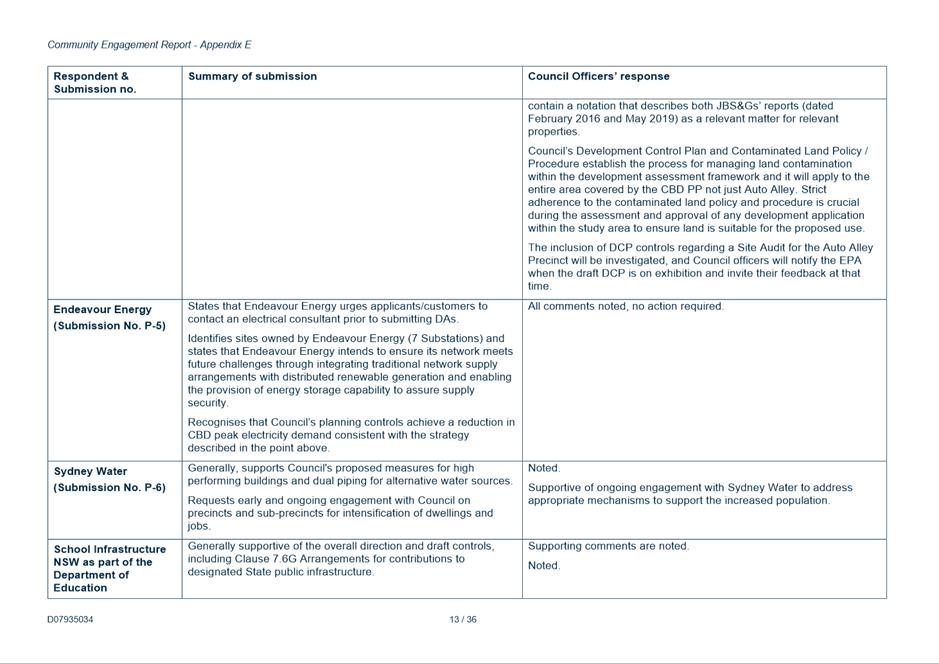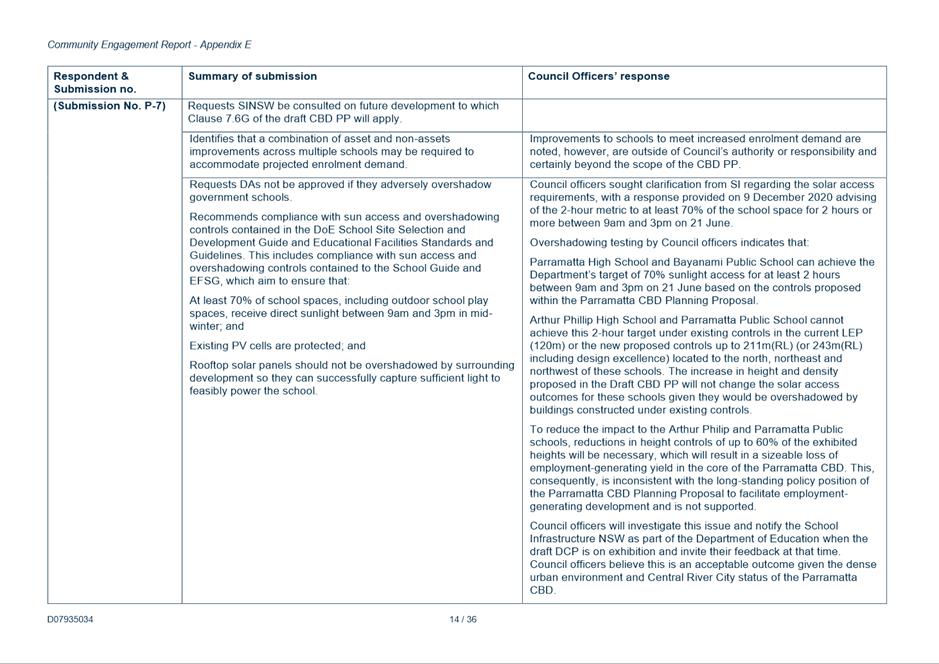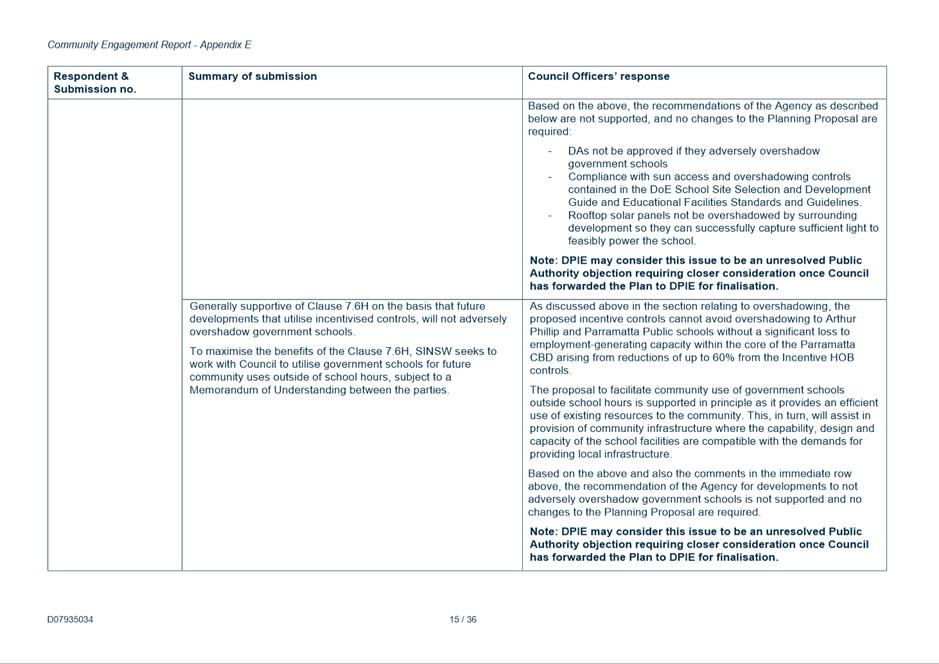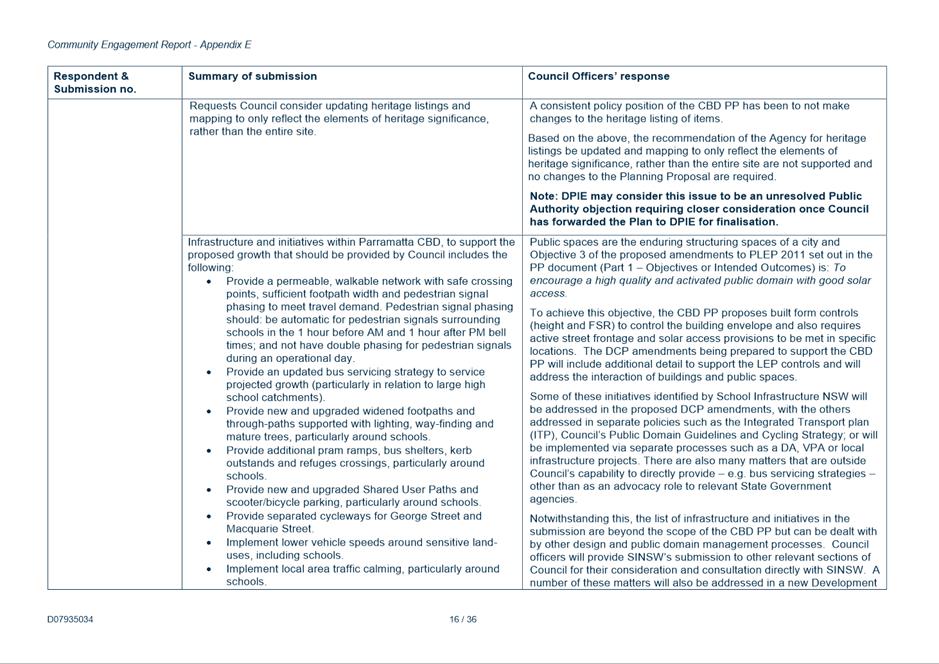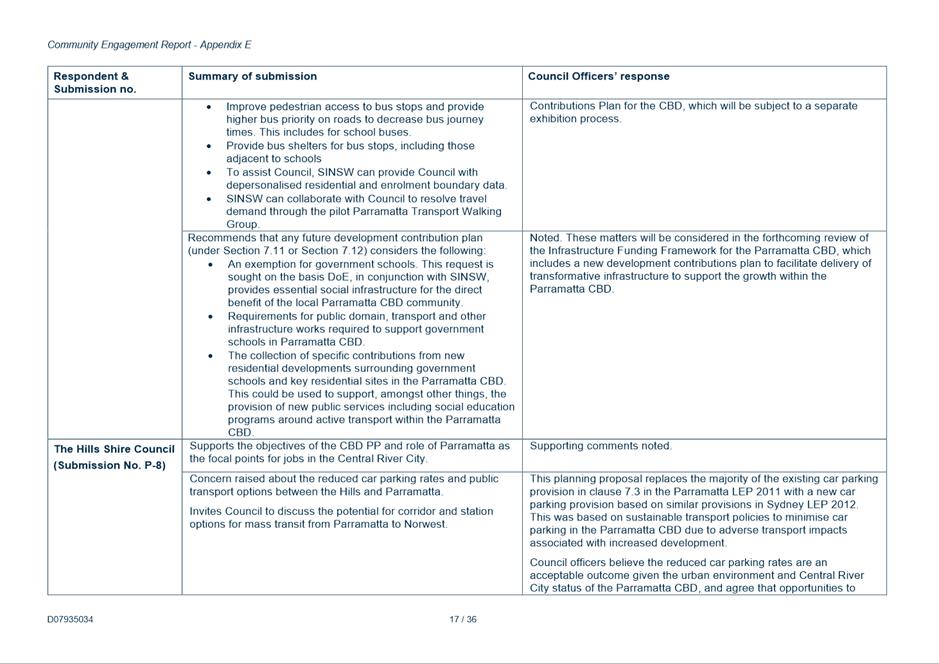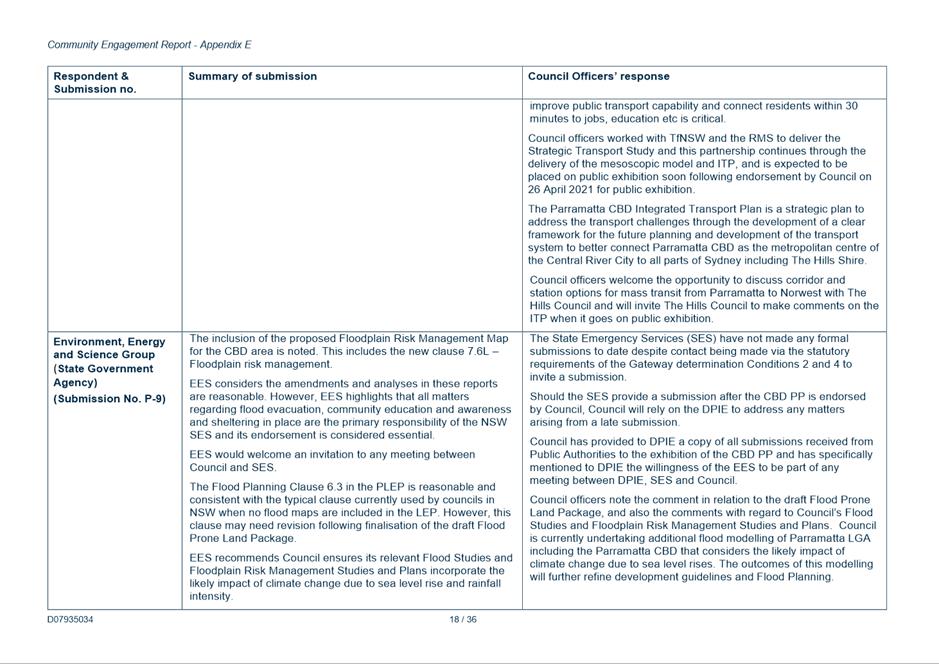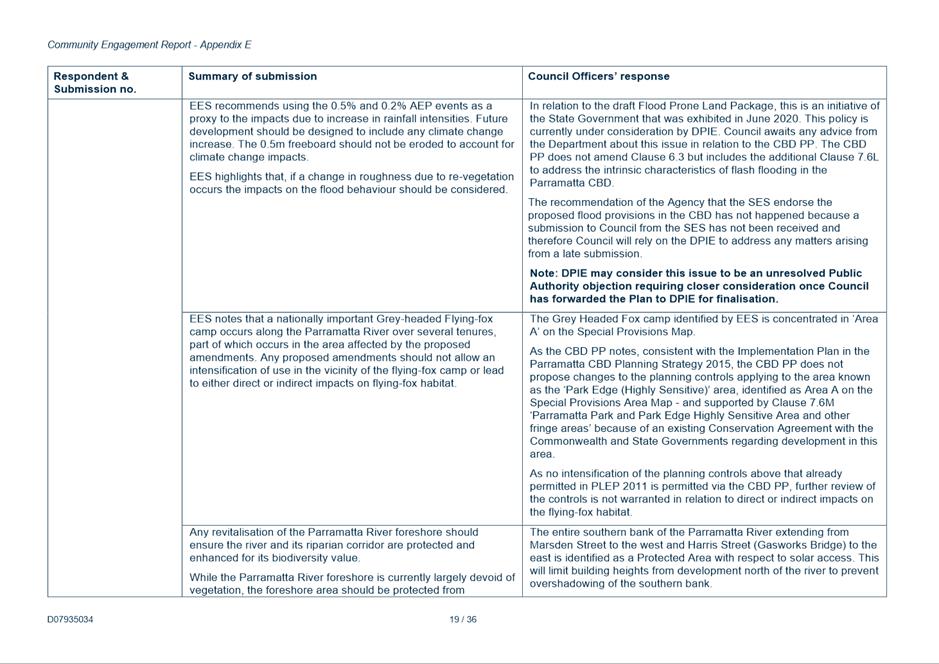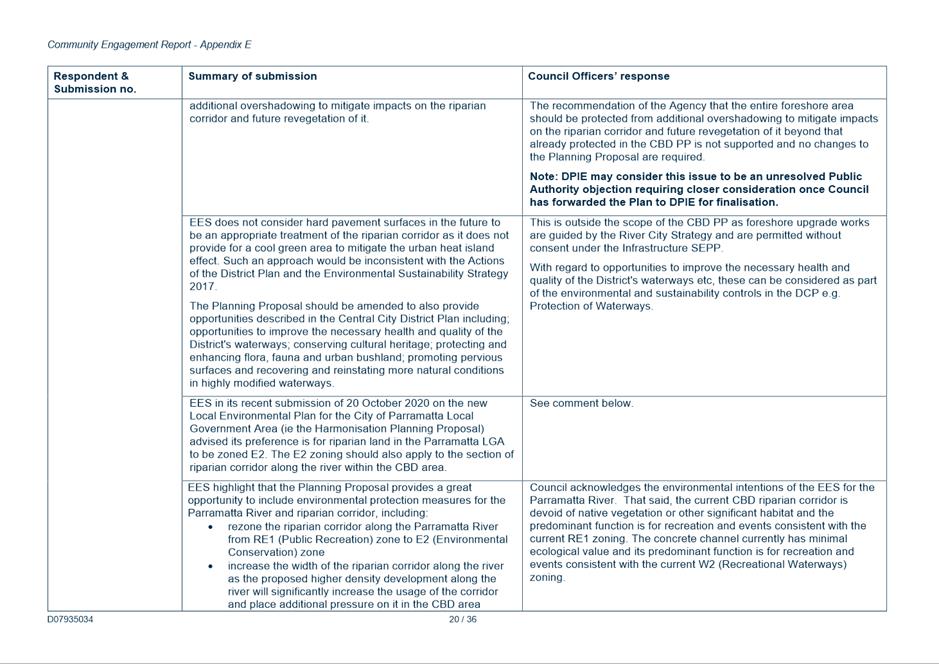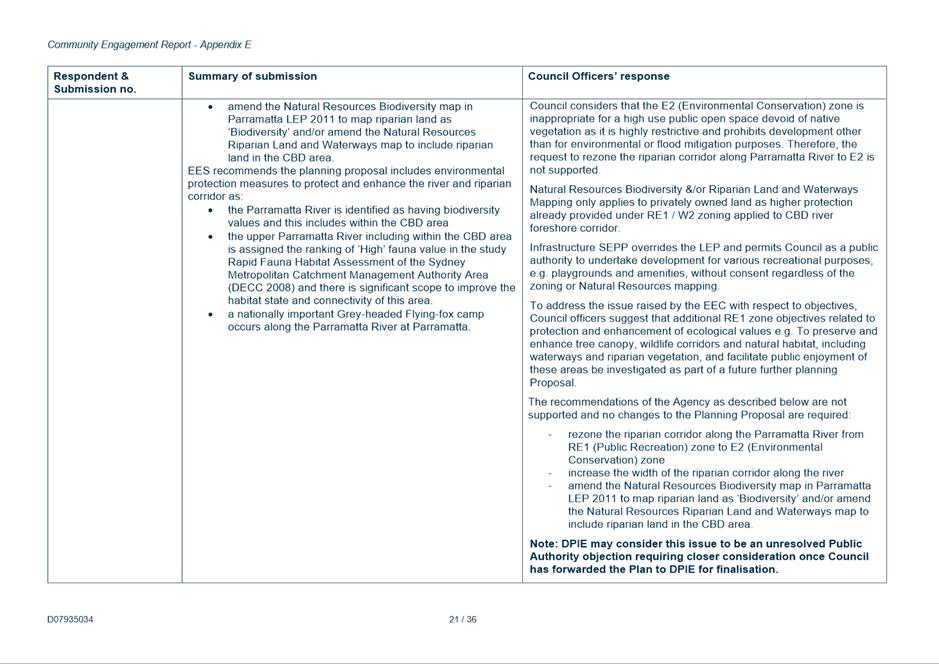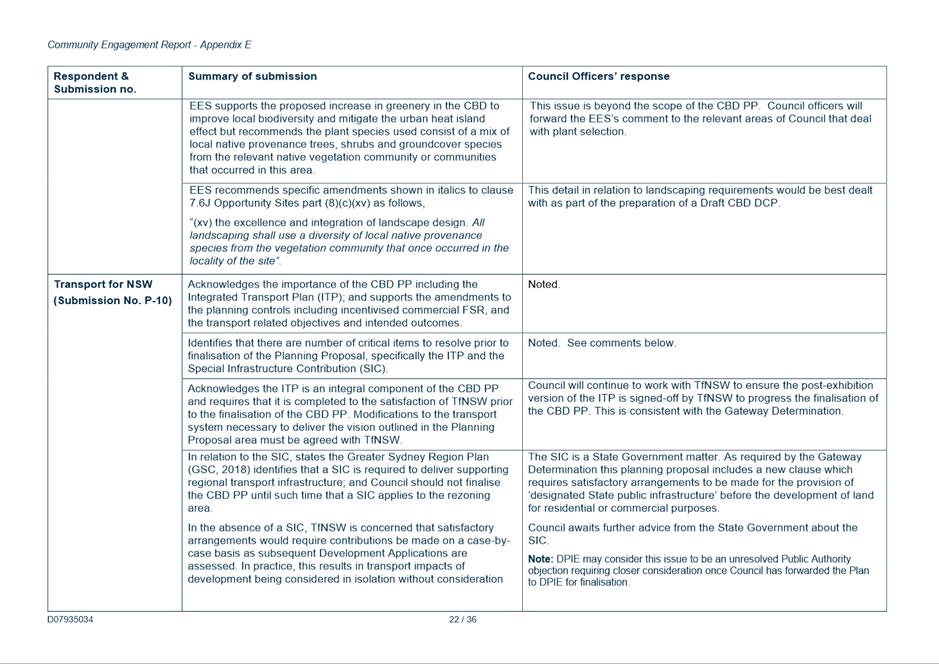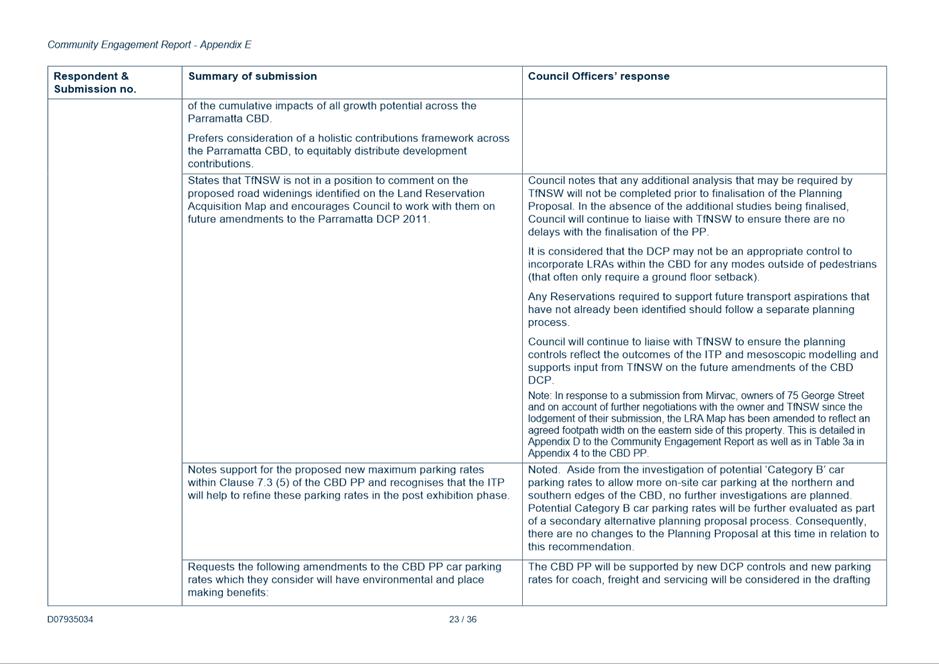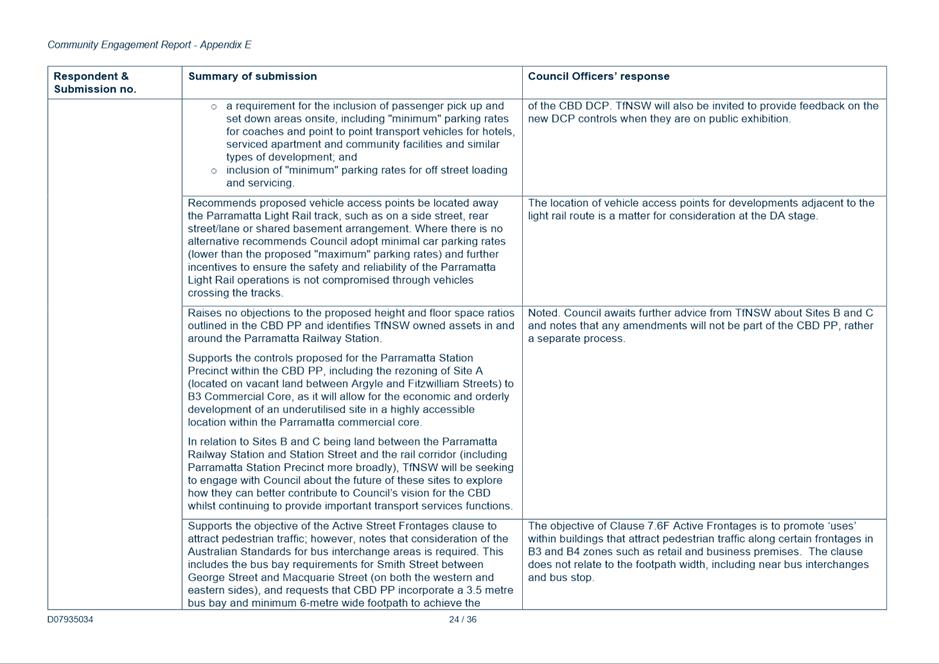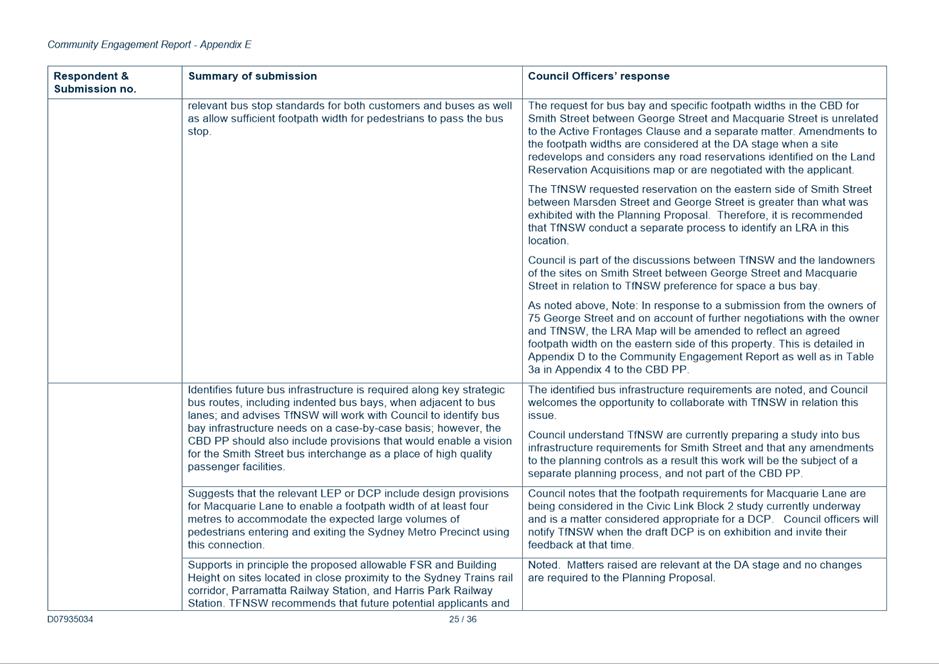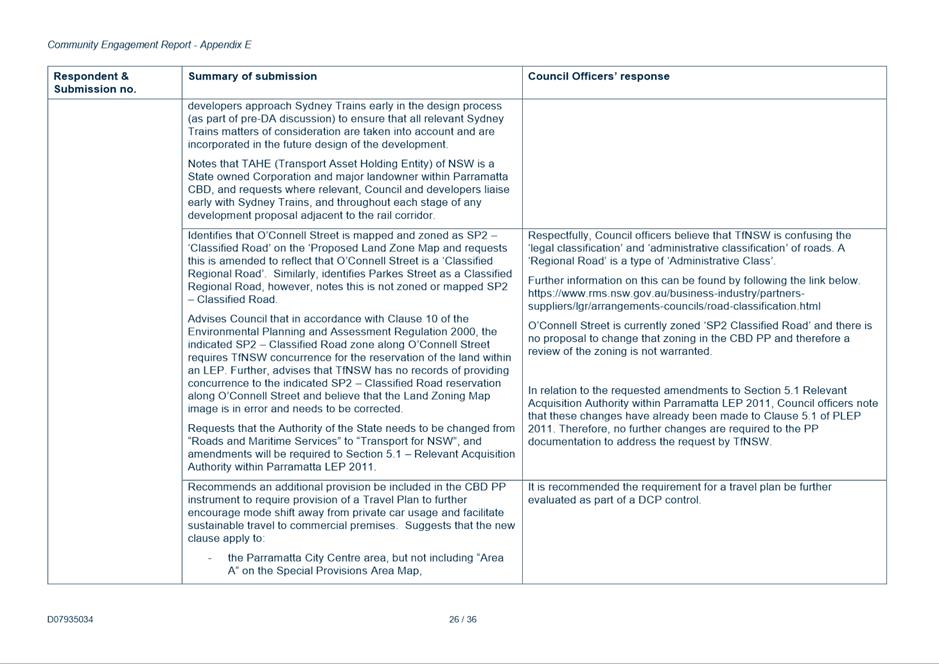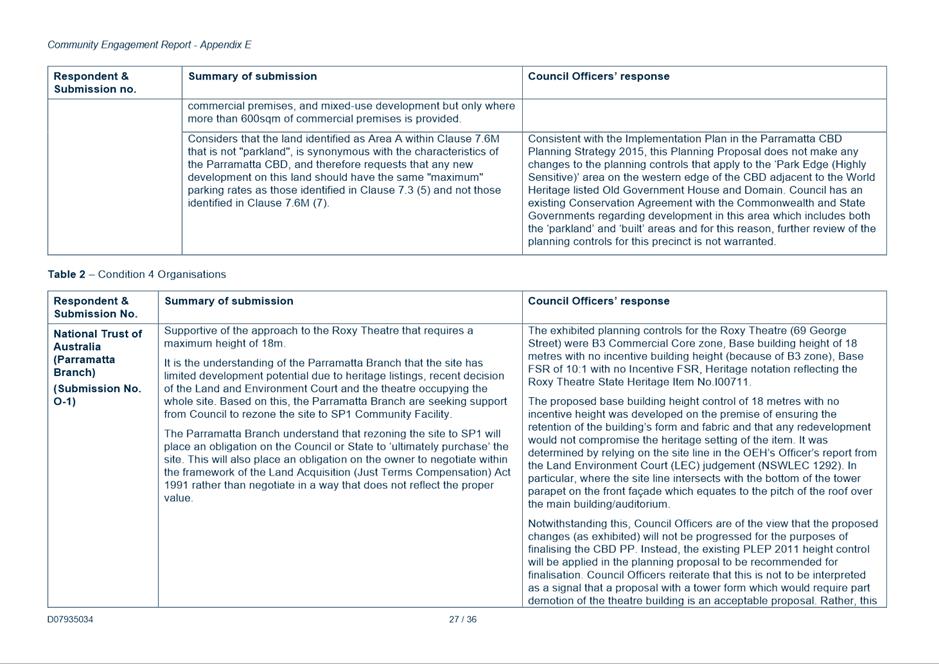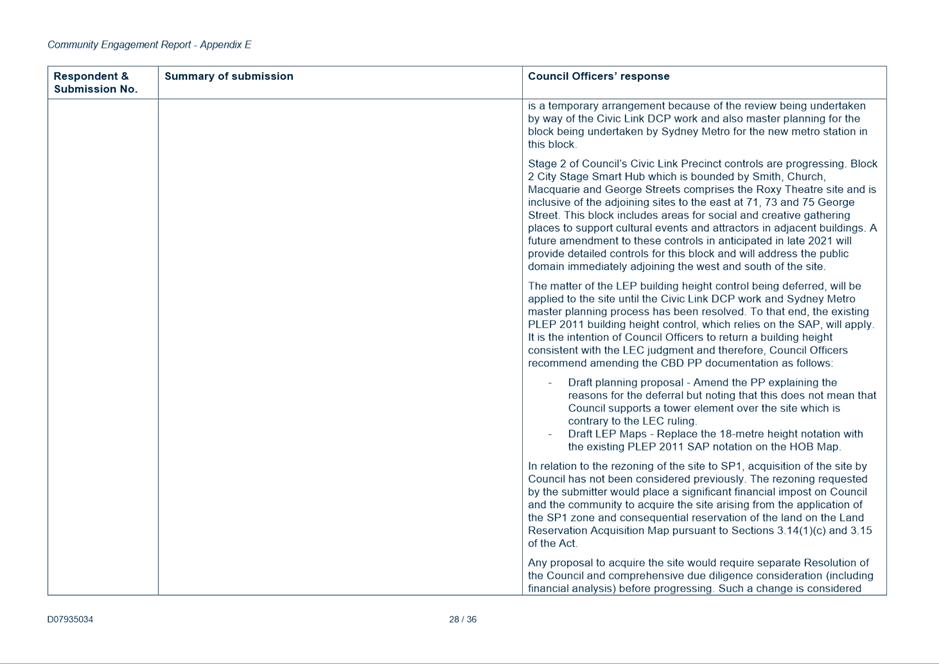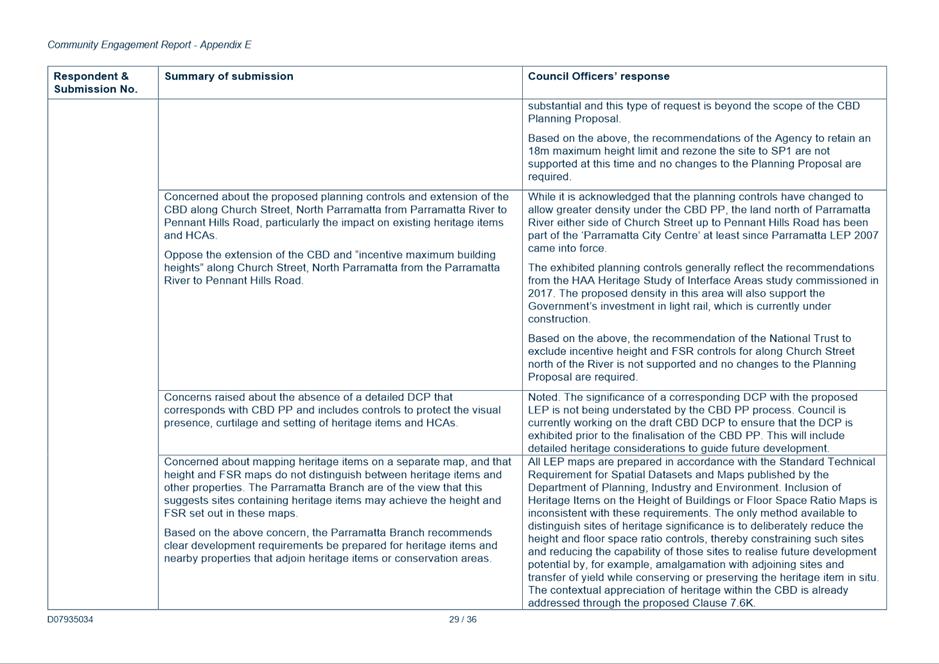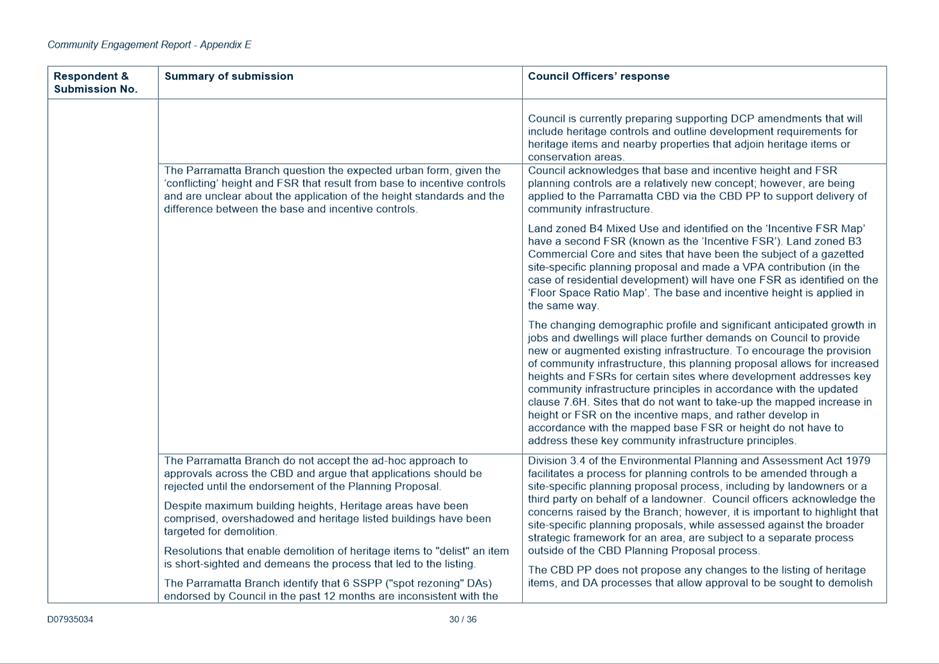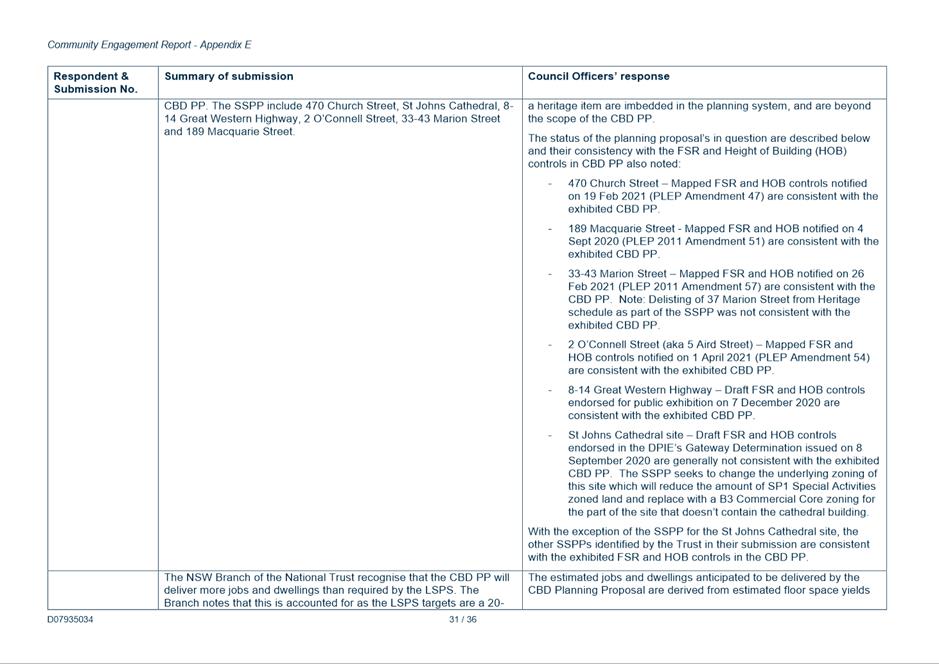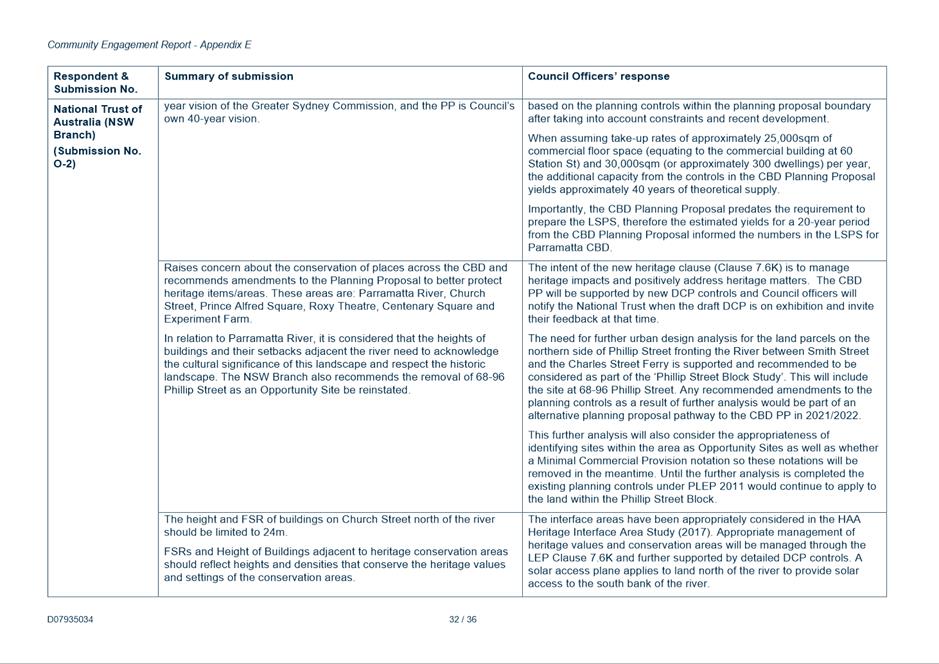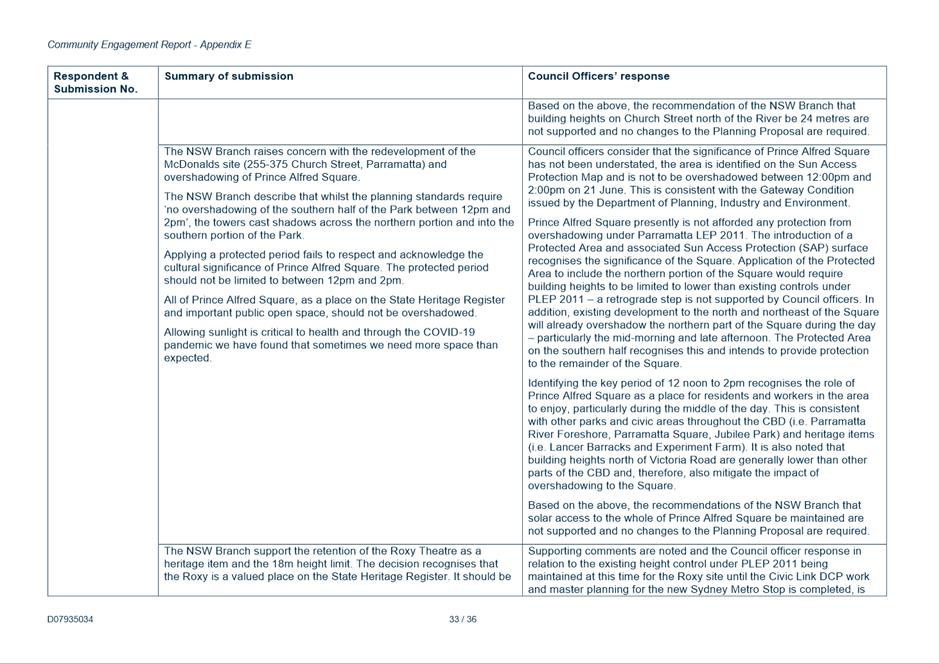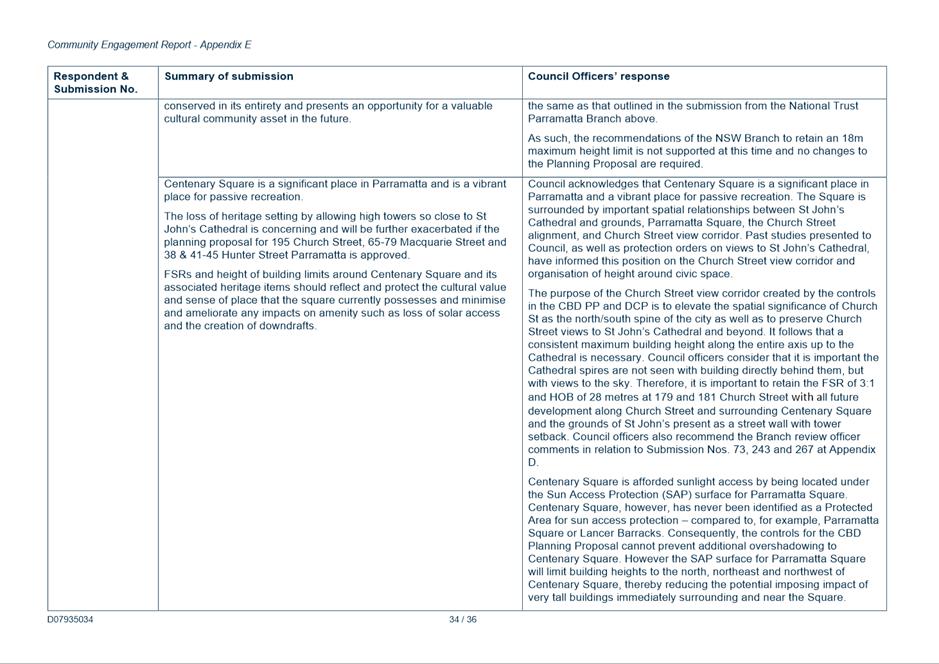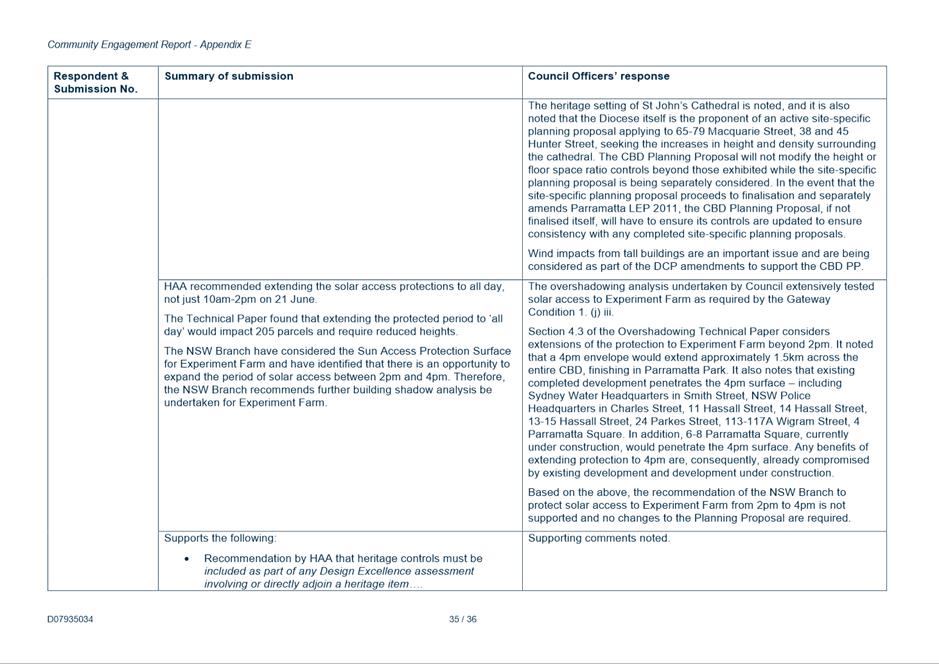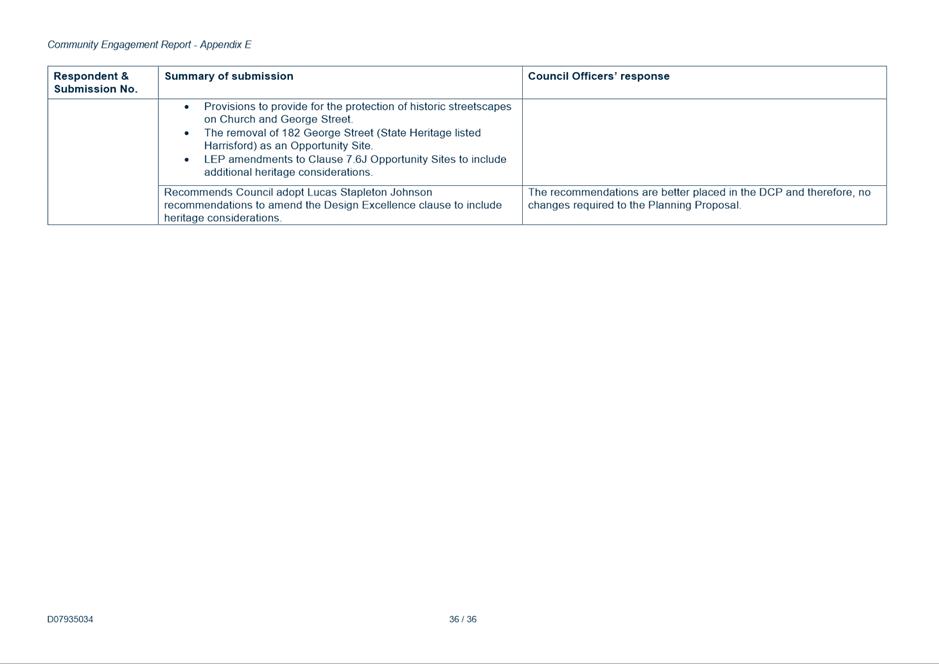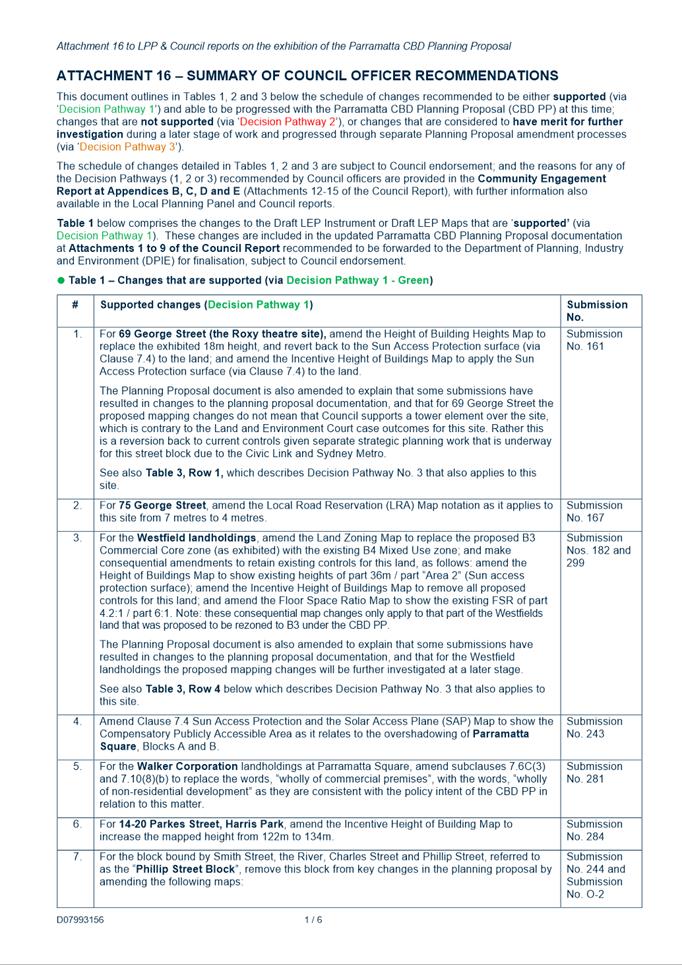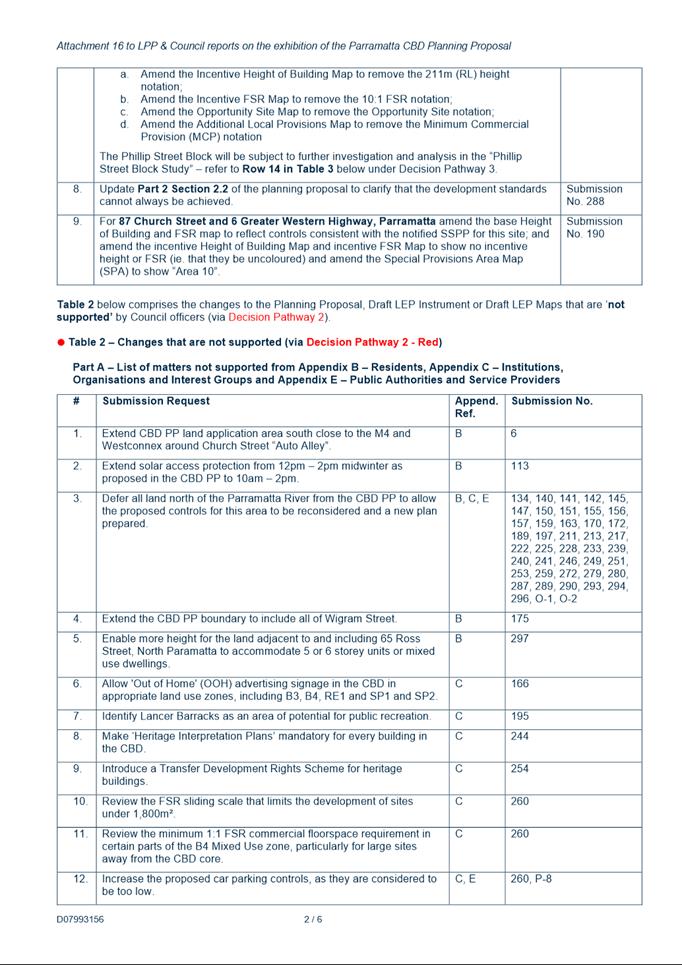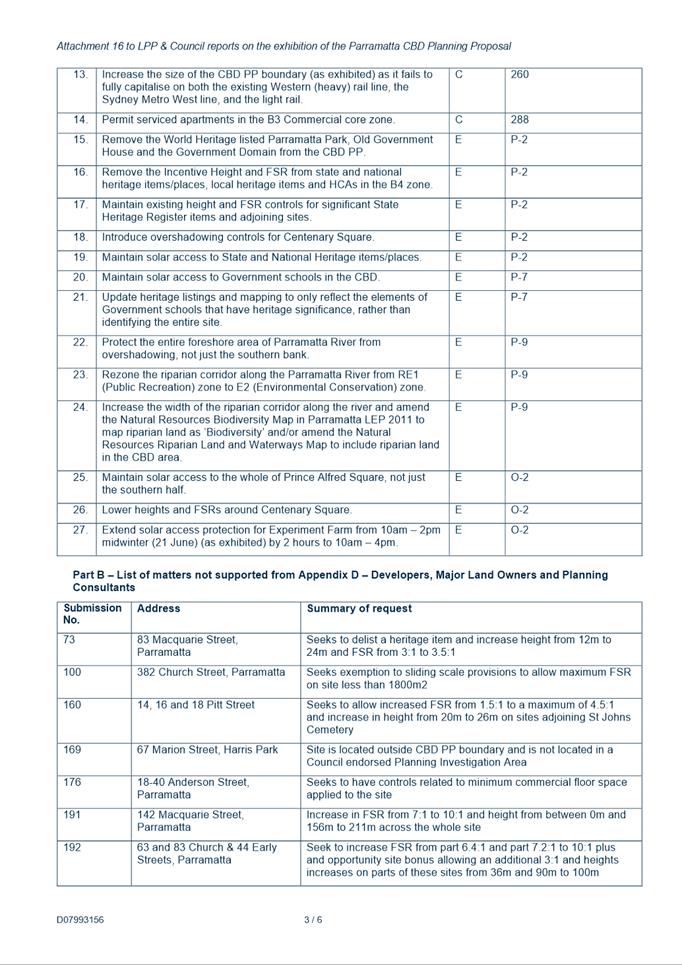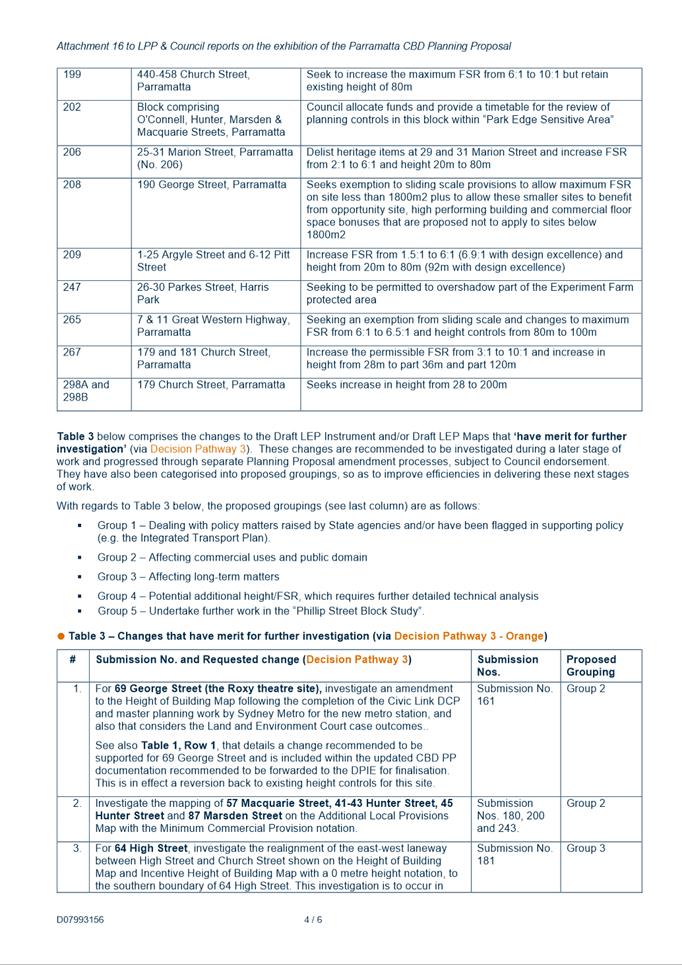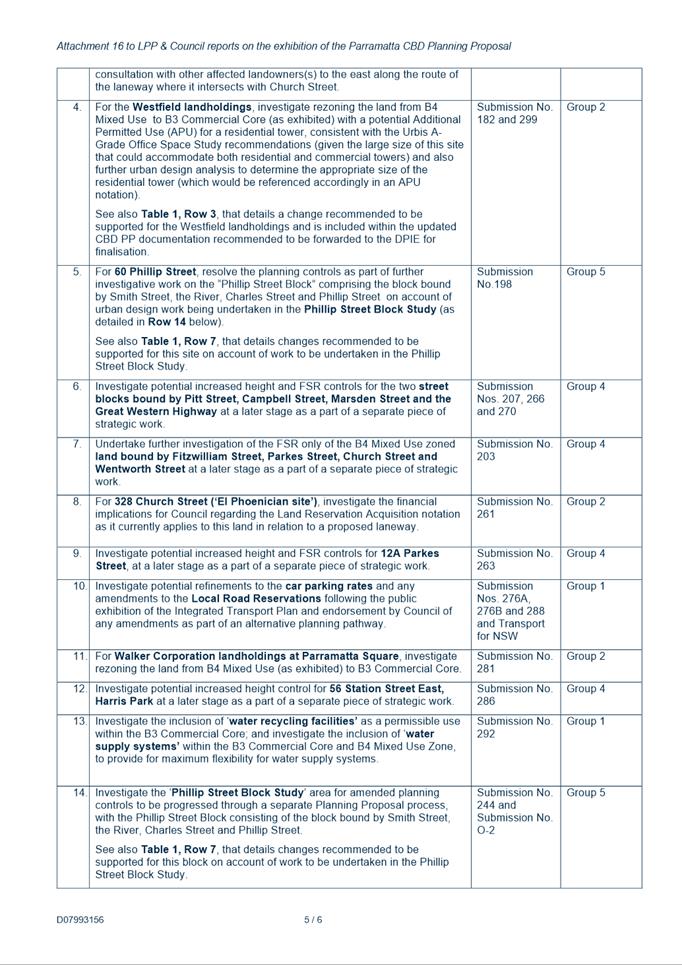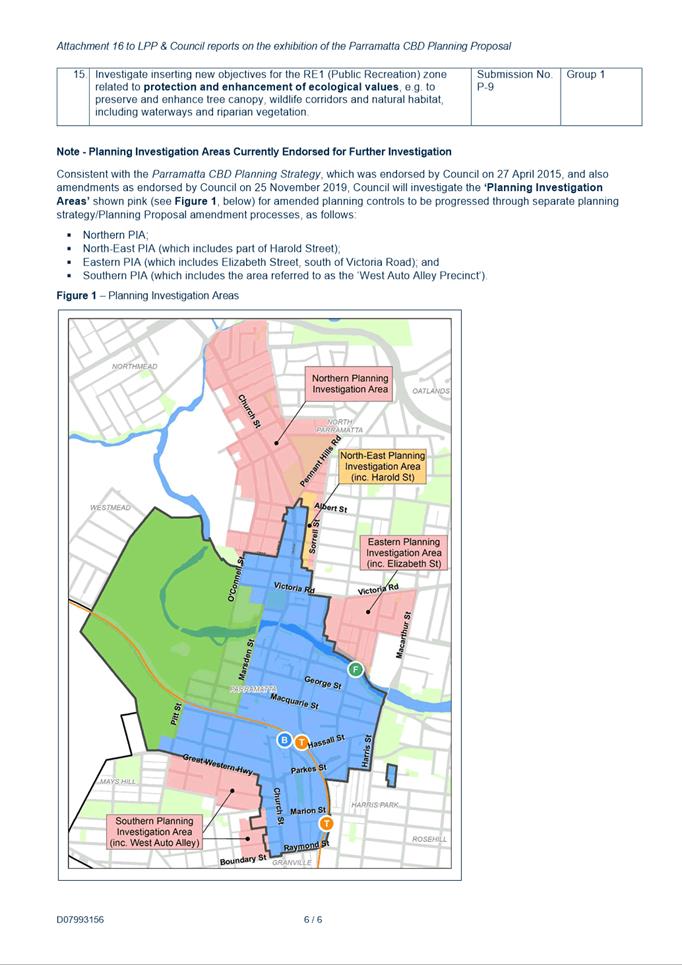Local Planning Panel 11 May 2021 Item 5.1
ITEM NUMBER 5.1
SUBJECT PUBLIC MEETING: Finalisation of the Parramatta CBD Planning Proposal following consideration of submissions received during the public exhibition period
REFERENCE F2020/02047 -
APPLICANT/S City of Parramatta
OWNERS N/A
REPORT OF Snr Project Officer Land Use
The Local Planning Panel recommend to Council:
(a) That Council note the submissions made in response to the public exhibition of the Parramatta CBD Planning Proposal (CBD PP), as summarised at Attachments 12 to 15, including the Council officer responses.
(b) That Council approve the revised CBD PP (in Attachments 1 to 9) and note the CBD PP seeks to amend Parramatta Local Environmental Plan 2011 (PLEP 2011).
(c) That Council approve forwarding the CBP PP to the Department of Planning, Industry and Environment (DPIE) for finalisation, with a request that the PLEP 2011 amendment be made in accordance with section 3.36 of the Environmental Planning and Assessment Act 1979.
(d) That Council:
(i) Approve the requested changes to the CBD PP set out in Table 1 of Attachment 16 (identified as ‘Changes that are supported (via Decision Pathway 1 - Green)’);
(ii) Note the requested changes to the CBD PP summarised in Table 2 of Attachment 16, which are recommended not to be supported (identified as ‘Changes that are not supported (via Decision Pathway 2 - Red)’);
(iii) Approve further investigation of the requested changes to the CBD PP set out in Table 3 of Attachment 16 (identified as ‘Changes that have merit for further investigation (via Decision Pathway 3 - Orange)’).
(e) That Council note that on 27 April 2015 when endorsing the Parramatta CBD Planning Strategy (and as amended on 25 November 2019) Council approved further investigation on a number of “Planning Investigation Areas” (PIAs) to consider amendment of the planning controls in those areas and known respectively as the Northern, North – East, Eastern and Southern PIAs (see Figure 3) located outside of the CBD PP area and that no change is required to this in response to requested changes to these areas at this stage.
(f) That Council writes to the Secretary of DPIE seeking an exemption from the State Environmental Planning Policy Amendment (Build-to-rent Housing) 2021 in the B3 Commercial Core zone as this is inconsistent with the employment objectives of the commercial core in the Parramatta CBD and also noting that there is adequate B4 Mixed Use zoned land in the Parramatta CBD to allow for build-to-rent housing and subdividable residential mixed use development.
(g) That Council approve the preparation of a new Section 7.12 development contributions plan for the Parramatta CBD to be approved by Council within 12 months, including a new contributions levy rate set higher than the current 3% rate, to be determined after completion of feasibility testing as part of preparation of the plan.
(h) Further, that Council delegate authority to the Chief Executive Officer to make any minor amendments and corrections of a non-policy and administrative nature that may arise during the plan amendment process relating to the Parramatta CBD Planning Proposal (and supporting documentation), Draft PLEP 2011 Amendment Instrument and Draft PLEP 2011 Amendment Maps.

SUMMARY
1. This report details the outcomes from the public exhibition of the Parramatta CBD Planning Proposal (CBD PP) and seeks Council endorsement of a revised planning proposal amending Parramatta Local Environmental Plan 2011 (PLEP 2011) for forwarding to the Department of Planning, Industry and Environment (DPIE) for finalisation because the proposed changes are considered minor. A map showing the CBD PP boundary and other areas mentioned in this report is at Figure 1.
2. In response to the exhibition of the CBD PP documentation, a total of 309 submissions were received from the community representing:
a. Residents and individuals (235 submissions)
b. Organisations, Institutions and Interest Groups (12 submissions)
c. Developers, Major Landowners and/ or their Consultants (51 submissions)
d. Public Authorities and Service Providers (12 submissions)
3. To progress the CBD PP as soon as possible and establish Council’s policy direction, it is proposed to progress the current CBD PP with minor amendments, and deal with the more significant amendments arising in a group of separate new draft Planning Proposals. This includes the future Planning Investigation Areas.
4. One of the key elements of the exhibited CBD PP was the accessing of Incentive FSR and Opportunity Site FSR through the inclusion of community infrastructure on site, to be formalised through a planning agreement. Since the CBD PP was exhibited, the DPIE finalised and released its new “Planning Agreements – Practice Note”. This Practice Note does not support the use of Planning Agreements for the purposes of value capture.
5. To address this, an alternative approach is recommended that preserves the original intent of the exhibited planning proposal by requiring compliance with key community infrastructure principles in order to access the Incentive FSR. A value sharing contribution will no longer apply and instead a new Section 7.12 development contributions plan will be prepared with a higher rate. In this way, infrastructure funding will still be assured through this alternate funding pathway (if endorsed by both Council and the DPIE).
6. This review of infrastructure funding for the CBD PP will lead to a new Section 7.12 Development Contributions Plan (with higher rate) to be reported to Council separately, as will the other supporting elements of the CBD PP being:
a. the Parramatta CBD Integrated Transport Plan;
b. amendments to the Parramatta Development Control Plan and;
c. updated Floodplain Risk Management Plan.
7. It is intended that these plans will be in place prior to the DPIE finalising the Council endorsed CBD PP.
8. The CBP PP seeks to evolve the character of the Parramatta CBD so that it can properly play the important role of the metropolitan centre for western Sydney and to ensure integration of land use with the significant investment in transport and other infrastructure being put in place by the State Government and Council.
9. The CBD PP document as exhibited includes the detailed analysis of all the studies and policies to justify the strategies and actions contained within it. The CBD PP is also consistent with relevant State Government and Council policies. In instances where there may have been some inconsistency between State Government and Council objectives, those matters have been considered and resolved in a manner that supports the over-arching objective of progressing the role of Parramatta as the metropolitan centre for western Sydney.
10. The time frame for completing the PLEP 2011 Amendment is by 30 September 2021. Council is required to submit the planning proposal to the Department for finalisation by 1 July 2021 consistent with Condition 6 of the Alteration to the Gateway Determination issued on 21 April 2021.
Figure 1 - Map showing the CBD PP boundary and other areas mentioned in this report.

BACKGROUND
11. Since 2013 Council has been engaged in a process to deliver a new planning framework to facilitate and strengthen the Parramatta CBD’s position as one of Sydney’s three metropolitan CBDs. The recently exhibited CBD PP is one of the main elements of the Parramatta CBD Planning Framework (see Figure 2). The CBD Planning Framework proposes planning controls that facilitate the delivery of an extra 46,000 jobs and 14,000 dwellings within the Parramatta CBD over the next 40 years. In doing so the CBD Planning Framework also delivers on key economic, social and cultural objectives for Western Sydney which is home to over half of Sydney’s population.
Figure 2 – Parramatta CBD Framework Review illustrating the four main elements of the framework.

12. The table below details the major milestones to progress the CBD PP.
Table 1: major milestones to progress the CBD PP
|
April 2015 |
The principles and actions that guided the preparation of the new planning framework together with the research and technical studies to be undertaken were endorsed by Council in the ‘Parramatta CBD Planning Strategy’. |
|
April 2016 |
Additional work undertaken to prepare the draft CBD PP to amend the planning controls for the Parramatta CBD. The draft CBD PP was endorsed by Council and forwarded to DPIE requesting a Gateway determination. |
|
March 2017 – September 2017 |
Additional research and technical studies completed to support refinements to the CBD PP. |
|
December 2018 |
The DPIE issued a conditional Gateway determination allowing the CBD PP to proceed subject to thirty-four conditions. |
|
March 2019 and June 2019 |
Resolutions of Council provided the strategic framework and policy direction for Council officers to respond to the matters resulting from the Gateway determination. |
|
November 2019 |
Council endorsed an updated CBD PP to enable public authority (pre-exhibition) consultation in line with Condition 2 of the DPIE’s Gateway determination. |
|
December 2019 – February 2020 |
Consultation with the required public authorities occurred with four submissions being received at that time. In response, minor, non-policy changes were made to the CBD PP. A Councillor Briefing note dated 17 April 2020 advised of these changes. The revised document was then sent to the DPIE with a request to proceed to the wider public exhibition process required under Conditions 3 and 4 of the Gateway determination. |
|
July 2020 |
The DPIE responded by way of correspondence dated 27 July 2020. In doing so the DPIE confirmed that notification that the CBD PP could proceed to public exhibition, subject to further amendments as outlined in the accompanying Alteration to the Gateway Determination. |
|
April 2021 |
On 21 April 2021, the DPIE provided Council with a letter and Alteration of the Gateway Determination with a revised timeframe to complete the PLEP 2011 Amendment for the CBD PP. The Alteration makes an amendment to Condition 6 of the Gateway Determination, with Council now required to submit the Planning Proposal to the Department for finalisation by 1 July 2021 and complete the PLEP 2011 Amendment by 30 September 2021. Previously, the Department set a timeframe to finalise the PLEP 2011 Amendment within 24 months of the Gateway Determination (ie. by December 2020). |
PRE-EXHBITION PROCESSES
Informal submissions
13. Seven (7) informal submissions were received between December 2019 and August 2020. This was prior to the commencement of the formal exhibition period of the CBD PP and thus sit outside the requirements for community participation in the EP&A Act 1979. These informal submissions broadly covered matters relating to West Auto Alley, North Parramatta, heritage, land in the vicinity of Elizabeth Street and land zoning. It is noted five (5) submitters lodged a formal submission during the exhibition process.
14. For further details of this informal feedback, refer to Section 3.1 of the Community Engagement Report at Attachment 10 to this report.
Process for CBD landowners seeking policy change prior to the CBD PP’s exhibition
15. Since early 2020, the CBD PP progressed towards its formal exhibition phase, some Parramatta CBD landowners expressed a wish to commence a site-specific Planning Proposal (PP) for their respective site/s. However, landowners were advised:
a) If the site specific PP was consistent with the CBD PP, then it would not be assessed or processed even if it was lodged, until the CBD PP exhibition outcome is reported to Council, so Council Officer resources could be directed to the CBD PP as a priority and because it was anticipated that any Planning Proposal consistent with the CBD PP would take longer to finalise than the CBD PP.
b) If the site-specific PP was inconsistent with the CBD PP, then it would be accepted, but that the assessment was likely to be impacted by the assessment of submissions received in response to the exhibition of the CBD PP, and therefore these site-specific PPs would not be progressed until a decision had been made on the CBD PP.
16. As a result of the above advice to landowners, submissions were received from both groups during the exhibition of the CBD PP.
COMMUNICATION PLAN FOR THE EXHIBITION OF THE CBD PP
17. In early September 2020, a Communication Plan outlining how Council would consult with the community during the exhibition period was prepared in partnership with Council’s City Engagement team to ensure the plan was fit for purpose, adequately resourced and aligned with Council’s Community Engagement Strategy (December 2019). The purpose of the Communication Plan was to go ‘above and beyond’ what was required from a statutory perspective under the EP&A Act 1979 for planning proposals.
18. The CBD PP was exhibited for six (6) weeks commencing on Monday, 21 September 2020 and concluding on Monday, 2 November 2020. A broad list of the communication mechanisms utilised (as per the Communication Plan) follows:
a. Addressed notification letters and emails
b. Frequently asked questions (FAQs) and Community Summary Sheet
c. Media Release and public notices
d. Social Media
e. ePulse (e-newsletter)
f. Project email address and email databases (4 databases in total)
g. Webpages (Participate Parramatta and City of Parramatta websites and NSW Planning Portal’s e-planning portal)
h. Direct consultations:
i. ‘Phone a Planner’ sessions
ii. Online Industry Forum
iii. Online Community Q&A Session
i. Online submission portal and formal submission process
j. Presentations to external groups and committees (e.g. Committee of Sydney, Ethos Urban Seminar and the Parramatta Chamber of Commerce as well as Council’s Heritage and Flooding Committees).
19. These mechanisms are detailed in the Community Engagement Report which is contained at Attachment 10 to this report.
SUBMISSION REVIEW
Introduction
20. In response to the exhibition of the CBD PP documentation, a total of 309 submissions were received from the community representing: residents; organisations and institutions; developers, major landowners and planning consultants; and public authorities and service providers.
21. Submissions have been categorised as follows:
a) Residents and individuals (234 submissions)
b) Organisations, Institutions and Interest Groups (12 submissions)
c) Developers, Major Landowners and/ or their Consultants (51 submissions)
d) Public Authorities and Service Providers (12 submissions)
22. A broad summary of the submissions received in each category are provided in the subsections below.
Council Officer responses – Decision Pathways
23. In reviewing the submissions across the categories, and as described in Table 2 below, Council Officers either:
a. Support a proposed change (Decision Pathway 1 – green);
b. Do not support a proposed change (Decision Pathway 2 – red);
c. See merit in further investigating a proposed change (Decision Pathway 3 – orange).
In responding to all submissions, Council Officers provide points of clarification and or explanation and note where the matter raised is considered to be consistent with the CBD PP or a separate endorsed process and no further decisions are required.
24. When considering whether or not to support a submitter’s request to seek a change to the exhibited planning controls, Council officers took into account general practice for considering variations to development standards pursuant to Clause 4.6 of the Parramatta Local Environmental Plan 2011 (PLEP 2011). While it is noted that Clause 4.6 of PLEP 2011 limits variations to height and FSR changes to 5% within the CBD (per Clause 4.6(8)(ca)), officers also considered Planning Circular PS 20-002 prepared by the DPIE, which specifies that in respect of a Clause 4.6 Variation, the Secretary’s assumed concurrence “may not be assumed by a delegate of council if: the development contravenes a numerical standard by greater than 10% or if the development contravenes a non-numerical development standard”.
25. Consequently, when considering numerical requests from submitters to increase height or floor space ratio controls (FSR), for example, officers have adopted a 10% maximum exceedance to determine whether a request was substantive or not. Substantive requests to change planning controls from those publicly exhibited in a planning proposal would have the risk of adversely affecting adjoining property owners. Making substantive changes to the planning controls as a Council decision post-exhibition prevents the community from having a fair and reasonable opportunity to review and comment on such changes. If substantive changes were to be approved, then the relevant planning controls would warrant re-exhibition.
26. A decision to make substantive changes to the planning proposal, and, subsequently, choose not to re-exhibit the planning proposal has an inherent risk to the instrument’s validity. This was tested in the case of Friends of Turramurra Inc vs Minister for Planning before the Land and Environment Court ([2011] NSW LEC 128]) where a draft LEP was declared invalid by the Court because of substantive changes made to the instrument post-exhibition without a re-exhibition process.
27. The table below explains the factors considered by Council Officers for each of the three “Decision Pathways” (support; not support; or merit for further investigation). This approach is consistent with the principles of evidence based strategic planning.
Table 2 –Decision Pathways
|
Supporting Factors |
|
|
1. Supporting a proposed change (green) – issues that have strategic planning merit Note: this involves amending the CBD PP and Draft PLEP 2011 Amendment instrument and/or Draft PLEP 2011 Amendment Maps to be forwarded to DPIE for finalisation. |
These requested policy changes are generally: · Consistent with Council’s policy framework for the Parramatta CBD including supporting technical studies, Gateway determination and Alteration Gateway determination; and a State Authority or Service Provider submission comment where supported by Council officers; and/or · Of relatively minor impact that do not warrant re-exhibition of the CBD PP. |
|
2. Not supporting a proposed change (red) – issues that do not have strategic planning merit
Note: this does not involve any amendment to the CBD PP and Draft PLEP 2011 Amendment instrument and/or Draft PLEP 2011 Amendment Maps to be forwarded to DPIE for finalisation. |
These requested policy changes are generally: · Inconsistent with Council’s Policy framework for the CBD PP (Council’s Local Strategic Planning Statement and Local Housing Strategy) including supporting technical studies, Gateway determination and Alteration Gateway determination; and/or · Located within the Parramatta Park and the Park Edge Highly Sensitive Area; and/or · Resulting in the demolition of a listed heritage item or significantly amending planning controls related to listed heritage items that will impact on their significance*; and/or · Inadequately justified by a submitter’s supporting technical analysis; and/or · Undermining statutory processes (e.g. a recently notified Site Specific PP or design excellence award process or a supporting voluntary planning agreement); and/or · Result in a substantial change in the case of a numerical provision, greater than 10 per cent; and/or · Likely to establish a precedent which may encourage other landowners in a similar scenario to pursue an increase in their own height and density controls. In summary, no amendments to the CBD PP documentation for finalisation are proposed in response. |
|
3. Has merit for further investigation at a later stage as part of a separate process (orange) – issues that have merit for further exploration, but may not necessarily result in a policy change
Note: this does not involve any amendment to the CBD PP and Draft PLEP 2011 Amendment instrument and/or Draft PLEP 2011 Amendment Maps to be forwarded to DPIE for finalisation. |
Requested policy changes that generally: · Are consistent with Council’s policy framework for the CBD but are more significant changes, and if integrated would require re-exhibition of the CBD PP; and/or · Require further investigation to confirm whether they are consistent with the strategy, and/or · Are inconsistent with Council strategy in their current form, however, could be evolved in consultation with the proponent into a proposed amendment which could be supported in the future. This process would not be dissimilar to stand-alone site-specific PP processes. |
*This is discussed in more detail in the ‘Heritage’ section, below.
28. With regards to the submissions that have merit for further investigation (Decision Pathway 3), the suite of issues to be considered and their grouping will ultimately depend on the outcome of further analysis. Importantly, they will be grouped in a way that minimises resourcing, the logic being that too many individual planning proposals are not an efficient use of staff resources and Council monies and at the same time, a single planning proposal is not likely to be suitable as it could delay resolution of less complex issues.
30. With regards to the issues that ‘have merit for further investigation’, Attachment 16 includes a suggested grouping of these issues. This will however be subject to resourcing and prioritisation, including an assessment by Council officers on the ability to deliver the short, mid and long term actions in the Local Strategic Planning Statement (LSPS) as well as on the proposed sequencing of LEP amendments in the Local Housing Strategy (LHS). This will ensure there are appropriate resources and budget before each individual project is allocated a timeframe.
31. Attachment 16 also includes a note about ‘Planning Investigation Areas Currently Endorsed for Further Investigation’, reiterating that Council will investigate the ‘Planning Investigation Areas’ shown in Figure 3 (below) for amended planning controls to be progressed through separate planning strategy/Planning Proposal amendment processes at a later stage. This is consistent with the Parramatta CBD Planning Strategy, endorsed by Council on 27 April 2015, and also amendments as endorsed by Council on 25 November 2019. This is discussed further in this report under the heading ‘Planning Investigation Areas’.
Submissions from Residents and Individuals
32. At total of 234 submissions were received in this category. A detailed summary of the submissions in this category is contained at Attachment 12 to this report.
Feedback received
33. The predominant issues raised by submitters in the submissions from residents and individuals can be broadly summarised into three groups as follows:
a) Request for inclusion of areas in the CBD PP boundary, specifically, West Auto Alley, Elizabeth Street and Harold Street (see Figure 3 for a map of these areas noting West Auto Alley is part of the ‘Southern PIA’, Elizabeth Street is part of the ‘Eastern PIA’ and Harold Street is part of the North-east PIA).
Figure 3 – Planning Investigation Areas

b) Request for exclusion of ‘North Parramatta’ from the CBD PP, being land that is generally north of the Parramatta River.
c) Objection or concern raised about specific issues, being,
i. Heritage:
· concerned that the CBD PP does not adequately consider Parramatta’s unique heritage, favouring financial gain and high-density development;
· that the proposed increase to FSR and height controls will have a detrimental effect on heritage items, and the quality of the area;
· need for additional heritage protection including increased setbacks;
· request for the deferral of North Paramatta (north of the Victoria Road) from the CBD PP and a precinct plan be prepared, rather than extending the CBD into North Parramatta.
ii. Overdevelopment (high density):
· concerned about the proposed height of buildings and floor space ratios, and impacts on heritage, lack of supporting infrastructure, open space, schools and car parking;
· adverse impact on amenity, including solar access and wind tunnels;
· concerns about the quality of current development, and numerous small apartments.
iii. COVID 19:
· concern that high density development does not promote social distancing to reduce the spread of COVID 19, with increased parking required because of reduced public transport usage;
· the rate of population increase, as previously projected prior to COVID 19, will not occur due to international travel restrictions, limited migration, stagnant wage growth and the instability of future COVID 19 outbreaks; and therefore there is a decreased need for residential dwellings and commercial floorspace (due to increased working from home arrangements).
iv. Environment:
· concern about the current lack of open space, and request for additional green open space to support the proposal;
· request for an increased focus on green buildings, setting a benchmark for environmental design and livability.
v. Parking:
· concern about the lower car parking rates proposed in the CBD PP, which will discourage visitors.
Conclusion
34. Responses to the issues raised by submitters in the Resident and Individuals category are detailed. Most of the issues raised are not supported for the reasons outlined in Table 2 and detailed at Attachment 12 to this report. While it is acknowledged there are concerns about the removal of some land from the CBD PP boundary, introducing these areas now would be a substantial change to the version of the CBD PP as exhibited and would trigger the need for the re-exhibition of the CBD PP. Further work on these removed areas will occur at a later stage as a part of the previously endorsed Planning Investigation Areas. Progressing the CBD PP as soon as possible will establish Council’s policy direction and enable landowners currently within the CBD PP area to progress investment decisions and pursue approval processes in accordance with Council’s strategy.
35. The proposed controls have regard to both the existing character and heritage and the need to evolve the city in a way that will achieve a range of objectives and actions. Council has prepared various studies related to urban design and heritage to seek to put in place controls to guide the future character of all parts of the proposed CBD and protect heritage, amenity and address environmental impacts and issues.
36. A number of submissions raise issues and make suggestions in relation to various matters that Council officers address in responses at Attachment 12 as being generally consistent with the approach taken in the CBD PP, for example, high performing building measures.
Submissions from Institutions, Organisations and Interest Groups
37. At total of 13 submissions were received in this category. A detailed summary of the submissions contained in this category is contained at Attachment 13 to this report.
Feedback received
a. Need for clarification around the proposed development contributions framework and highlight the significance of the implementation of the Provision of Community Infrastructure clause and the Infrastructure Needs List.
b. Concerns with the proposed planning controls including heritage protections and potential impact on heritage items/places, including Heritage Conservation Areas and Heritage Interface Areas (these being areas located generally between the Parramatta CBD core and heritage conservation / lower scale residential areas).
c. Concerns with site specific PPs around St John’s Cathedral on the basis that these would compromise the historic setting.
d. Concerns with the lack of clarity around timing of the areas on the edge of the city centre being deferred for future Planning Investigation Area work.
e. Some submitters raise concerns with the assessment and approval of site specific PPs outside of the CBD PP process.
f. CBD car parking rates considered to be too low.
g. Objection to the extension of the CBD Planning Proposal boundary, across the river into North Parramatta and up to Pennant Hills Road.
h. Objection to the prohibition of serviced apartments in the B3 Commercial Core.
i. Objection to proposed heights along the Parramatta River foreshore.
j. Need to encourage a flood and climate change resilient CBD and recommend the inclusion of objectives that support ‘green infrastructure’ and environmental measures.
k. Identification of opportunities to enable more diverse economic outcomes for the Parramatta CBD, by way of Council’s Night City Framework 2020-2024 and a creative sector presence.
l. Suggested that amendments may need to be made to the CBD PP and PLEP 2011 in light of the COVID 19 pandemic.
m. The FSR planning controls are considered multi-layered and complex.
n. Third-party advertising/signage (as opposed to building identification signage) be given further consideration for inclusion as a permitted use in the land use zones in the Parramatta CBD.
o. Concern with the 1,800 sqm minimum site area requirement that affects various clauses (e.g. FSR Sliding Scale, High Performing Building and Minimum Commercial Provision).
p. Recommendation that Council should apply higher BASIX standards without providing an incentive (FSR bonus).
Conclusion
39. Council Officers recommend that the following item be investigated as part of an alternative PP process (Decision Pathway 3):
a. permissibility of ‘water recycling facilitates’ and ‘water supply systems’ in the B3 Commercial Core (Note: ‘Water recycling facilities’ are already a permissible use in the B4 Mixed Use zone).
40. Some of the other issues raised in these submissions are supported by Council Officers and will be dealt with as part of work that is currently underway as detailed in Attachment 13 and Attachment 16:
a. CBD Development Control Plan (DCP).
b. CBD Development Contributions Plan (as a part of the review of the Infrastructure Funding Framework).
c. The mesoscopic modeling and the Integrated Transport Plan (ITP) for the Parramatta CBD.
d. Civic Link DCP amendments.
e. Phillip Street Block Study - see further discussion under the heading ‘Other Parramatta CBD-related policy matters’.
41. Issues raised relating to land within a previously endorsed Planning Investigation Area will be considered later. These areas, if integrated now, would trigger re-exhibition of the CBD PP.
42. The remaining issues raised in the submissions received were not supported and did not warrant changes to the CBD PP for the following reasons (Decision Pathway 2) as detailed in Attachment 13 and Attachment 16:
a. The issues have previously been dealt with via an endorsed technical study that informed the CBD PP and therefore there is no technical justification for the changes to be supported.
b. The issues have previously been addressed via conditions of the Gateway Determination and Alteration to the Gateway Determination that have already been addressed to the DPIE’s satisfaction.
c. The issues are beyond the scope of the CBD PP.
d. The issues are relevant to a DA assessment process not a Planning Proposal process.
Submissions from Developers, Major Landowners and/or their Consultants
43. At total of 51 submissions were received in this category. In some cases, multiple landowners are represented. Of the 51 submissions received, approximately 10 submissions were from landowners who had a site-specific PP process underway with Council. A detailed summary of each submission received in the Developers, Major Landowners and Consultants category is contained at Attachment 14 to this report.
44. The technical analysis of submissions in this category varied in quality and standard. However, the provision of a supporting technical study on an issue, of itself, does not justify Council Officer support for a submitter’s proposed policy change because broader considerations are required for support of the reasons described in Table 2 – Decision Pathways, above.
Feedback received
45. The predominant issues raised by submitters in the Developers, Major Landowners and Consultants category can be broadly summarised as follows:
a. Increase sought to the height and FSR controls that were exhibited for their site.
Exemption sought from the FSR sliding scale and/or challenging the definition of an ‘isolated site’ or the 1,800 sqm site area requirement to access incentives, including the high performing building bonus and additional commercial FSR.
b. Request to have their site identified as an Opportunity Site which enables an additional 3:1 FSR on top of the incentive FSR; and/or identified on the Additional Local Provisions Map in order to benefit from additional commercial FSR floorspace above a minimum 1:1 FSR in certain parts of the B4 Mixed Use zone on top of incentive FSR.
d. Concerns raised about implications of a land reservation acquisition notation over a site or request removal of a notation.
e. Issues raised that are outside the scope of the CBD PP. The predominant request being from owners of sites that are situated outside the CBD PP area seeking to have their land incorporated into the CBD PP. Those sites that are within a previously endorsed Planning Investigation Area will be dealt with as part of the future Planning Investigation Area work at a later stage.
f. Request for a change to a land use zone (without changes to the height or density controls).
g. Request to amend the wording of a draft clause or subclause to address a technical issue.
h. Some submitters had, at the time of lodging their submission, a site-specific PP in train. Of those:
i. Some submitters identified a potential issue in the wording of a clause and subsequent impact on their site-specific PP; and
ii. Some submitters’ site-specific PPs were close to notification stage and were seeking confirmation that the Draft PLEP 2011 Amendment instrument and supporting maps aligned with the controls in their site specific PPs. (Note: many of these site-specific PPs have now been notified and the issue is now redundant).
Conclusion
46. Most of the issues raised by submitters in the Developers, Major Landowners and Consultants category are not supported and are not considered to warrant changes to the CBD PP (Decision Pathway 2) for the reasons detailed at Table 2 above, and are summarised as follows:
a. The issues are inconsistent with Council policy and or recent statutory process; and/or
b. The change requested is substantial and would trigger re-exhibition of the CBD PP.
47. Some issues raised by submitters which are supported by Council Officers as having merit for further investigation as part of a separate PP process (Decision Pathway 3) as detailed in Attachment 16 are:
a. Consistent with Council’s policy framework for the CBD but are more significant changes, and if integrated would require re-exhibition of the CBD PP such as some of those submissions requesting additional height that meet overshadowing requirements, and some submissions requesting that their land be added to the Additional Local Provisions Map as an Minimum Commercial Provision; and/or
b. Require further investigation to confirm whether they are consistent with the strategy, or, are inconsistent with Council strategy in their current form, however, could be evolved in consultation with the proponent into a proposed amendment which could be supported in the future. This process would not be dissimilar to stand-alone site-specific PP processes.
48. Some issues raised by submitters which are supported by Council Officers for inclusion in the CBD PP documentation to be forwarded to DPIE for finalisation (Decision Pathway 1) are:
a. Roxy Theatre, 69 George Street, Parramatta (Submission No.161)
b. 75 George Street, Parramatta (Submission No. 167)
c. Westfield landholdings (Submission Nos. 182 and 299)
d. Walker Corporation landholdings (Submission No. 281)
e. 14-20 Parkes Street, Harris Park (Submission No. 284)
49. These amendments are consistent with Council’s policy framework for the Parramatta CBD including supporting technical studies, Gateway determination and Alteration Gateway determination; and a State Authority or Service Provider submission comment where supported by Council officers; or are of relatively minor impact that do not warrant re-exhibition of the CBD PP.
50. Some issues raised by submitters relate to a site or area that is within a previously endorsed Planning Investigation Area and will be considered later. These sites, if integrated now, would trigger re-exhibition of the CBD PP.
Submissions from Public Authorities, Organisations and Service Providers
51. A total of 12 submissions were received in this category. The consultation of the Public Authorities, Organisations and Service Providers was in accordance with Condition 4 of the Gateway determination. A copy of the summary of the submissions and the Council officers’ response to the Public Authorities and Service Providers can be found at Attachment 15. It is noted that the DPIE may consider some issues not supported by Council officers to be an unresolved Public Authority objection requiring closer consideration and it may be that the DPIE will make a decision to amend the plan to address the Agencies issue once the plan is forwarded to the DPIE. Where a state agency makes an objection and Council is unable to resolve these matters, they are referred to the DPIE to determine whether the matter(s) should be dealt with differently to the proposal put forward by Council.
52. The State Government Agency known as the Environment, Energy and Science Group (EES Group) made a submission, and Council notes that this Agency was not required to be formally notified under Condition 4 of Gateway Determination.
53. Government Architect NSW and the Department of Infrastructure, Transport, Cities and Regional Development also provided a response that their matters were addressed during the pre-exhibition consultation required by Condition 2 of the Gateway Determination and that they have no further comments. City of Ryde Council provided a response that they will not be making a submission and requested to be kept informed of the progression of the CBD PP.
Feedback received
54. The predominant issues raised by submitters in the Public Authority, Organisations and Service Providers category are broadly summarised as follows in Table 2 below:
Table 2 – Key issues raised by Public Authorities, Organisations and Service Providers
|
Key Issues |
Council Officer Response |
|
Heritage NSW: - Raises concerns about impacts on all heritage items/places requesting no incentive height and FSR be applied in these areas, - Requests transition guidelines be developed - Requests the existing controls be maintained for land to north and west of St Johns Cemetery; and - Considers the Park Edge lands should be removed from the CBD PP boundary.
|
- Extensive heritage studies* have been undertaken to support the amendments and demonstrate consistency with Ministerial Direction 9.1, Direction 2.3 (Heritage) of the EPA Act 1979. - A new provision - Clause 7.6K Managing Heritage Impacts is proposed as well as future heritage DCP controls. - Urbis Heritage Study (prepared for Council in 2015) recommended low building heights to reduce the impact on the St Johns Cemetery and maintain landscape connection with Parramatta Park. The CBD PP has consistently reflected these recommendations and the proposed 20m height control was imposed on land north and west of the cemetery in the exhibited DCP. - The Park Edge lands are required to be included in the CBD PP to maintain the application of the existing controls in PLEP 2011 to this area. - Concluding comment: The issues raised do not require amendments to the CBD PP; however, the Department of Planning, Industry and Environment (DPIE) may consider some of the matters raised to be an unresolved Public Authority objection requiring closer consideration by the Department.
* Heritage studies prepared to inform the CBD PP: • Parramatta CBD Heritage Study, prepared by consultants Urbis, October 2015. • Heritage Study of Interface Areas, prepared by consultants Hector Abraham Architects (HAA); with Council’s Response to the HAA Heritage Study of Interface Areas, July 2017. • Church Street Precinct: Urban Design, Feasibility and Heritage Study, prepared by Council with heritage input from consultants City Plan Heritage, June 2019. • Marion Street Precinct Plan, prepared by consultants SJB with heritage input from heritage consultant Paul Davies, September 2019. • Opportunity Sites Study, prepared by Council with heritage input from Lucas, Stapleton, Johnson and Partners (LSJ), October 2019. • Overshadowing Technical Paper and analysis, prepared by Council with market and feasibility analysis for specific blocks by JLL consultants (September 2019); and Supplement (April 2021) June 2019, updated November 2019, August 2020 and April 2021. |
|
School Infrastructure, part of Department of Education: - Requests DAs not be approved if they adversely overshadow government schools and that the CBD PP ensure compliance with sun access and overshadowing controls contained in DoE policies, including no overshadowing of rooftop solar panels. - Requests heritage listing only reflect heritage elements on the site. |
- Council Officers tested the current and proposed planning controls on the four government schools nominated by School Infrastructure. Existing controls of 120m in PLEP 2011 immediately north of Arthur Phillip High School would cause overshadowing to both Arthur Phillip and Parramatta Public schools on 21 June for most of the day in any event. - Consistent policy position of the CBD PP has been to not make changes to the heritage listing of items. - Concluding comment: The issues raised do not require amendments to the CBD PP; however, DPIE may consider some of the matters raised to be an unresolved Public Authority objection requiring closer consideration by the Department. |
|
Property and Development NSW and the Department of Education: - Requests the CBD PP make clear overshadowing is expected and maintenance of solar amenity may be difficult to achieve in some circumstances. |
- Draft solar access protection clause makes clear the parameters and land to be protected from overshadowing, with need for compliance with relevant State requirements identified. - Concluding comment: The issues raised do not require amendments to the CBD PP. |
|
Environment, Energy and Science Group (a State Government Agency): - Highlights that all matters regarding flood evacuation, community education and awareness of the need to shelter in place are the primary responsibility of the NSW SES and its endorsement is considered essential. - Requests the riparian corridor along the Parramatta River be rezoned from RE1 (Public Recreation) zone to E2 (Environmental Conservation) zone. |
- The State Emergency Services (SES) have not made any formal submissions to date despite contact being made via the statutory requirements of the Gateway determination Conditions 2 and 4 to invite a submission. - Should the SES provide a submission after the CBD PP is endorsed by Council, Council will rely on the DPIE to address any matters arising from a late submission. - The proposed E2 zone is inappropriate for high use public open space devoid of native vegetation as it is highly restrictive and prohibits development other than for environmental or flood mitigation purposes. - Council officers suggest that additional RE1 zone objectives related to protection and enhancement of ecological values, and facilitate public enjoyment of these areas could be investigated as part of a future PP process. - Concluding comment: The issues raised do not require amendments to the CBD PP. |
|
Transport for NSW (TfNSW) - Sees the Integrated Transport Plan (ITP) and Special Infrastructure Contribution (SIC) as critical items that directly inform the CBD PP. - Generally supports the CBD PP controls and sees potential opportunities to enhance existing LEP or DCP controls to address specific traffic, transport and land use matters including Local Reservation Acquisition’s, active frontages, footpath widths and car parking.
|
- Council will continue to liaise with TfNSW to ensure there are no delays with the finalisation of the CBD PP, consistent with the Condition 6 in the second alteration to the Gateway determination dated April 2021. - In relation to the SIC, Council has included in the CBD PP a new clause which requires satisfactory arrangements to be made for the provision of ‘designated State public infrastructure’ consistent with Gateway determination, and awaits any further direction from the State Government on this issue. - In relation to active frontages and footpath widths, these are matters appropriate for the CBD DCP, and Council will invite comments from TfNSW when this goes on public exhibition. - In relation to the Local Reservation Acquisition’s, Council notes TfNSW advice that this agency is not in a position to comment on the proposed road widenings identified on the LRA Map. The LRAs and car parking rates are part of the ITP which was endorsed by Council for public exhibition on 26 April 2021. Any amendments to the LRAs and car parking rates arising from the ITP will be considered as part of a future planning proposal. |
|
National Trust (NSW Branch) * - Objection to the extension of the CBD along Church Street north of the River, and also the incentive planning controls. Requests that the maximum height be 24 metres. - Requests that 68-96 Phillip Street not be identified as an Opportunity Site - Concern raised about the loss of the Heritage setting around St John’s Cathedral, which will be exacerbated by SSPPs. - Solar Access protected period for Prince Alfred Square should not be limited to 12pm and 2pm. - Requests solar access protection for Experiment Farm be increased beyond 10am to 2pm, to between 10am and 4pm.
** Not a Public Authority, however included by DPIE in Condition 4 of Gateway Determination.
|
- Land north of Parramatta River either side of Church Street up to Pennant Hills Road has been part of the ‘Parramatta City Centre’ at least since Parramatta LEP 2007 came into force. The exhibited planning controls for this area generally reflect the recommendations from the HAA Heritage Study of Interface Areas. The new planning controls will support the introduction of light rail to this area. - The site at 68-96 Phillip Street is within the “Phillip Street Block Study Area” that is recommended to be deferred from the CBD PP. Until Council is able to resolve its position and make an amendment to the controls in this precinct via a separate Planning Proposal the existing planning controls under PLEP 2011 will apply. - SSPPs
including a SSPP currently being considered for the St John’s Cathedral
site are subject to a separate process and assessment. The CBD PP does not
propose any changes to the listing of heritage items within any part of the
CBD and proposes to retain the existing controls for sites in vicinity of the
Cathedral. Changes to the controls immediately surrounding the Cathedral will
be dealt with via the SSPP. - The introduction of a Sun Access Protection Clause recognises the significance of the Prince Alfred Square, and identifying the key period of 12 noon to 2pm to protect part of Prince Alfred Square recognises its role as a place for residents and workers. The protected period is also consistent with other parks and civic areas throughout the CBD (i.e. Parramatta River Foreshore, Parramatta Square, Jubilee Park). - Any benefits of extending the protection period from 2pm to 4pm for Experiment Farm are already compromised by existing development and development under construction. - Concluding comment: The issues raised do not require amendments to the CBD PP. |
|
National Trust (Parramatta Branch) * - Objects to the extension of the CBD along Church Street north of the River, and also incentive planning controls. - Concern raised about the loss of the Heritage setting around St Johns Cathedral, which will be exacerbated by SSPPs. - Requests the Roxy theatre site be rezoned to SP1 Special Activities, and supports the proposed 18m height limit.
** Not a Public Authority, however included by DPIE in Condition 4 of Gateway Determination. |
- Responses to the first two points are addressed in the submission above from the National Trust NSW Branch) - Rezoning a site to SP1 Special Activities requires the nominated public authority to acquire the site if a submission is made by the owner under the relevant statutory requirements. Acquisition by Council of the Roxy theatre site has not been considered previously, with the financial impost on Council and community to acquire the site arising from the application of the SP1 zone and consequential reservation of the land likely to be significant. The existing Solar Access Plane (SAP) in PLEP 2011 is recommended to be reinstated as a temporary control until the review of the Civic Link DCP and also master planning for the block being undertaken by Sydney Metro for the new metro station is complete. - Concluding comment: The issues raised do not require amendments to the CBD PP. |
|
Commonwealth Department of Agriculture, Water and the Environment
|
- Noted - Concluding comment: The issues raised do not require amendments to the - CBD PP. |
|
- Acknowledges the CBD PP has many positive features for promoting sustainability; however, considers design elements have not considered the effects of wind or canyoning. The CBD PP should also include air quality protection principles for certain developments near busy roads; planning controls to manage noise-based land use conflict issues; the concept of a circular economy; protection of waterways; and recognise the NSW Government’s 20 Year Waste Strategy. - Suggests appropriate assessment of contamination is undertaken, including preparation of DCP controls for key sites. - Notes that water management measures are not included in the supporting Infrastructure Funding Model Study; and recommends consultation with NSW Health about dual water pipes and consultation with Sydney Water. |
- The effects of wind and canyoning, air quality and noise, protection of waterways are matters appropriate for a DCP and are often design excellence objectives for Architectural Design Competitions. - Contamination assessment by Council for the entire CBD included a review of zoning changes and identification of certain development types that could potentially have contamination issues. Based on this analysis, Auto Alley was identified as a potential issue and consequentially Council commissioned the 2016 Preliminary Site Investigation Study. This Study demonstrated it was appropriate to rezone these properties given the change in zoning to permit residential and more intensive employment uses. - SEPP 55 Contaminated Land will still require the contamination issue to be considered before any development consent is granted. - The recommendations of this study have been incorporated into the CBD PP framework and in essence it requires consideration of this issue as part of the development application process for site in Auto Alley. - The CBD PP document has been updated to recognise the NSW Government’s 20 Year Waste Strategy, the updating does not introduce any policy changes and this Strategy including the concept of a circular economy will be addressed in the DCP. - Water management measures will be considered as part of the new s.7.12 development contributions plan which will now be progressed in place of the Community Infrastructure Framework exhibited with the Planning Proposal. Refer to the discussion in this report under the heading ‘Infrastructure Funding Review. - In relation to dual piping, Sydney Water provided a submission to the CBD PP which supports the inclusion of the dual piping requirements. - NSW Health were invited to provide comment on the CBD PP however, no formal submission was received during the exhibition period. |
|
The Hills Shire Council - This submission raises concern with the reduced car parking rates for the CBD and public transport options between the Hills and Parramatta. |
- The CBD PP replaces the majority of the existing car parking provision in clause 7.3 in the PLEP 2011 with a new car parking provision based on similar provisions in Sydney LEP 2012 (which apply to the Sydney CBD). This was based on sustainable transport policies to minimise car parking in the Parramatta CBD due to adverse transport impacts associated with increased development. More broadly, the forthcoming Parramatta CBD ITP is a strategic plan to address the transport challenges through the development of a clear framework for the future planning and development of the transport system to better connect Parramatta CBD as the metropolitan centre of the Central River City to all parts of Sydney including The Hills Shire. - Concluding comment: The issues raised do not require amendments to the CBD PP. |
|
Service Providers - Endeavour Energy and Sydney Water - Two submissions were received from individual Service Providers, one submission from Endeavour Energy and the second submission from Sydney Water. |
- Sydney Water provided a submission to the CBD PP which supports the inclusion of the dual piping requirements. - Endeavour Energy did not raise any issues with the CBD PP. - Concluding comment: The issues raised do not require amendments to the CBD PP. |
55. These submissions are further detailed at Attachment 15 to this report.
Conclusion
56. Council has received 309 submissions and many of these request changes to the exhibited CBD PP that are significant. Where these significant changes can be supported they would require re-exhibition of the CBD PP. Council officers consider it is important to progress the CBD PP as soon as possible to establish Council’s policy direction and continue with other work that supports the CBD PP. This includes progressing the CBD DCP and new CBD Development Contributions Plan, and deal with any further LEP amendments in a group of separate new draft Planning Proposals at a later stage (ie. through Decision Pathway 3). Many submissions also raised issues that relate to the Planning Investigation Areas (PIAs), however work on these will occur separately outside of the CBD PP process in accordance with the previously endorsed position of Council in relation to these PIAs.
CHANGES TO THE PLANNING PROPOSAL, DRAFT PLEP 2011 AMENDMENT INSTRUMENT AND DRAFT PLEP 2011 AMENDMENT MAPS
57. As a result of the feedback received during the exhibition of the CBD PP documentation, the CBD PP, Draft PLEP 2011 Amendment Instrument and Draft PLEP 2011 Amendment Maps have all been amended for the purposes of submission to the DPIE for finalisation.
58. The changes to the CBD PP documentation have been informed by:
a. Minor drafting errors / technical changes.
b. Changes arising from new State Government policy introduced since the commencement of the exhibition period namely the “Planning Agreements – Practice Note” (February 2021).
c. Submissions received during the exhibition period.
d. Changes from Site Specific PPs that have been finalised since the commencement of the CBD PP exhibition period.
59. Details of the proposed changes to the CBD PP, Draft PLEP 2011 Amendment Instrument and Draft PLEP 2011 Amendment Maps are contained in Attachment 9 to this report; with a broad summary provided in the sub-sections below.
Minor drafting errors / technical changes
60. The following changes are proposed to the planning proposal documentation on account of minor drafting errors or other technical changes:
a. Amend Clause 7.6A High performing buildings by including brief explanatory notes and title references to assist with implementation.
b. Amend the ‘Miscellaneous Amendments’ section of the CBD PP instrument so that all site-specific clauses notified as part of a SSPP continue to apply as per the existing situation in the case where the site-specific clause does not exactly reflect the CBD PP endorsed clause for finalisation.
c. Technical changes to terminology in Clause 7.4 Sun access protection, Clause 7.10 Design Excellence, 7.6G Arrangements for contributions to designated State public infrastructure and Clause 7.6M Parramatta Park and Park Edge Highly Sensitive Area and other fringe areas.
d. Amend the Sun Access Protection Map to show the ‘compensatory publicly accessible area’ that forms the balance of the Parramatta Square public domain area outside the already ‘Protected Area’ as shown in Figure 4 below and described in the associated exhibited Clause 7.4. Further amend terminology in Clause 7.4 to change the word ‘Areas to ‘Blocks with an associated update to the Solar Access Plane Map.
61. These changes are detailed in Table 1 in Attachment 9 to this report (which forms Appendix 4 to the revised CBD PP).


Figure 4 – Extract from the Solar Access Protection Map showing the ‘Protected Area’ and ‘Compensatory Area’ that together form the ‘Parramatta Square public domain area’.
62. The following changes are proposed to the planning proposal documentation on account of State Government policy:
a) Amend Clause 7.6H Community Infrastructure to address the Planning Agreements Practice Note to now require compliance with community infrastructure principles, rather than the provision of community infrastructure on site, and on account of this change, consequential amendments are necessary to four other clauses (refer to the “Infrastructure Funding Review” section of this report for more information).
63. These changes are detailed in Table 2 in Attachment 9 to this report (which forms Appendix 4 to the revised CBD PP).
Submissions on the CBD Planning Proposal
64. The following changes are proposed to the planning proposal documentation on account of submissions received during the exhibition period:
a) Reinstate the height control (Solar Access Plane) in PLEP 2011 for 69 George Street (Roxy Theatre) until the outcomes of the Civic Link DCP amendments and master planning for the block being undertaken by Sydney Metro for the new metro station in this block are completed.
b) Remove notations on the Incentive Height of buildings map and Incentive FSR map to show uncoloured the land bound by Phillip Street, Charles Street, Paramatta River and Smith Street, and also remove notations for the same land from the Opportunity Site and Minimum Commercial provision map until the outcomes of the “Phillip Street Block Study” are known and have been reported Council.
c) Reinstate the B4 Mixed Use zone in PLEP 2011 for the Westfield landholdings until the second phase of changes to the CBD Precinct are completed (as per Decision Pathway 3).
65. These changes are detailed in Table 3 in Attachment 9 to this report (which forms Appendix 4 to the revised CBD PP).
Site specific planning proposals (SSPPs)
66. The following consequential changes are proposed to the CBD PP documentation to ensure that Council’s previous decisions on these SSPPs are retained when the new CBD PP is finalised. In particular the existing provisions, and the existing and proposed maps where relevant will be inserted into the CBD PP, given that these SSPPs have been finalised after the commencement of the exhibition period:
a) 87 Church Street and 6 Great Western Highway, Parramatta (Amendments 30 and 58)
b) 189 Macquarie Street, Parramatta (Amendment 51)
c) 55 Aird Street, Parramatta (Amendment 55)
d) 142-154 Macquarie Street, Parramatta (Amendment 48)
e) 87 Church Street and 6 Great Western Highway, Parramatta (Amendment 58)
f) 470 Church Street, Parramatta (Amendment 47)
g) 33-43 Marion Street, Parramatta (Amendment 57)
h) 5 Aird Street, 12 Hassall Street and 20 Macquarie Street, Parramatta (Amendment 54)
67. These changes are detailed in Table 4 in Attachment 9 to this report (which forms Appendix 4 to the revised CBD PP).
OTHER RELATED POLICY ISSUES
Introduction
68. Several policy issues have arisen that have implications for the CBD PP since the CBD PP was placed on exhibition and these are discussed as follows.
Infrastructure Funding Review
69. In February 2021, the DPIE finalised and released its new “Planning Agreements – Practice Note”. The Practice Note has been made for the purposes of clause 25B of the Environmental Planning and Assessment Regulation 2000 to assist parties (including Councils) in the preparation of planning agreements. The new Practice Note does not support the use of Planning Agreements for the purposes of value capture. Relevant extracts of the Practice Note have been copied below for reference:
“2.1 Fundamental principles
Planning authorities and developers that are parties to planning agreements should adhere to the following fundamental principles.
· Planning agreements should not be used as a means of general revenue raising or to overcome revenue shortfalls.
· Value capture should not be the primary purpose of a planning agreement.
2.3 Value capture
The term value capture is widely used and covers several different practices. This practice note does not attempt to define or discuss them all. In general, the use of planning agreements for the primary purpose of value capture is not supported as it leads to the perception that planning decisions can be bought and sold and that planning authorities may leverage their bargaining position based on their statutory powers.
Planning agreements should not be used explicitly for value capture in connection with the making of planning decisions. For example, they should not be used to capture land value uplift resulting from rezoning or variations to planning controls. Such agreements often express value capture as a monetary contribution per square metre of increased floor area or as a percentage of the increased value of the land. Usually the planning agreement would only commence operation as a result of the rezoning proposal or increased development potential being applied.”
70. One of the key elements of the exhibited CBD PP is that access to Incentive FSR and Opportunity Site FSR was through the inclusion of community infrastructure on site. The process for provision of the community infrastructure was intended to be stipulated through a separate Development Guideline, which would have included “value capture” monetary contribution rates to calculate the quantum of community infrastructure required, the contribution of which would be formalised through a planning agreement.
71. Inclusion of these rates was to ensure fairness, transparency and equity in the planning agreements process, and also to improve efficiencies in making planning agreements between applicants and Council. However, given the effect of the new Practice Note for planning agreements, this approach is no longer possible, and a review of the planning proposal was required in the post-exhibition phase to remove this requirement and establish an alternative approach.
72. In its approval of the CBD PP in July 2020 to go on public exhibition, the DPIE allowed these community infrastructure provisions to be retained for the purposes of exhibition, but noted that “further resolution of this matter will be required at the finalisation of the planning proposal”. This was because the DPIE noted that the “draft planning agreements policy framework released by the DPIE in April 2020 provides a point of tension in applying Council’s intended approach”. It is noted that the planning agreements practice note was only a draft at that time but has since been finalised by the DPIE.
73. In considering a way forward, Council officers referred back to the original Gateway determination for the CBD PP, which included the following condition 1(m)iv.:
“(m) in relation to infrastructure funding:
…
iv. consider a funding mechanism to support the provision of community infrastructure, such as the preparation of a new section 7.11 contributions plan or a potential increase to the levy under the current 7.12 contributions plan.”
74. In lieu of providing a community infrastructure provision system “in-built” within the CBD PP (as exhibited), it is proposed instead to prepare a new s.7.12 contributions plan with an increased levy that will sit alongside the new PLEP 2011 Amendment. A critical part of these considerations is to ensure that a new contributions plan would provide at a minimum the same amount of income as would have been anticipated in community infrastructure provision as envisaged under the exhibited CBD PP, in effect a “break even” approach.
75. The current s7.12 levy for the Parramatta CBD is 3%. The highest s7.12 levy rate that has ever been approved for a NSW Council is at Burwood, which is at 4%. It is noted that recently Liverpool and Penrith Councils proposed a draft s.7.12 levy of 6.5% for the Western City “Aerotropolis”, however at the time of writing this report neither Liverpool or Penrith had received the required DPIE approval for these rates to be legally able to be applied.
76. Preliminary analysis has been undertaken by Council officers to assess what the increased levy rate would need to be in order to “break even” with the proposed “value sharing” approach, and further what the rates would need to be to fully fund the cost of works program that could reasonably be apportioned to new development, being $1.188 billion, as shown in Table 3 below.
Table 3 – Preliminary Infrastructure Costs and Apportionment
|
Priority |
Original Cost Estimate |
Less Amount already funded by existing funding arrangements (i.e. VPA/ Grants/ Committed Council funds) |
Residual to be funded |
Apportioned Cost |
|
Growth and Transport |
$ 191,629,050 |
$ 32,900,000 |
$ 158,729,050 |
$ 116,437,430 |
|
Green Spaces and Environment |
$ 266,632,795 |
$ 89,440,000 |
$ 177,192,795 |
$ 106,075,677 |
|
Recreation and Leisure |
$ 245,275,000 |
$ 75,900,000 |
$ 169,375,000 |
$ 162,055,000 |
|
Strong economy and City Centre |
$ 575,885,190 |
$ 20,580,010 |
$ 555,305,180 |
$ 435,687,508 |
|
Community Focus |
$ 208,455,000 |
$ 140,100,000 |
$ 68,355,000 |
$ 51,501,000 |
|
Arts and Culture |
$ 527,539,915 |
$ - |
$ 527,539,915 |
$ 316,523,949 |
|
TOTAL ESTIMATE |
$ 2,015,416,950 |
$ 358,920,010 |
$ 1,656,496,940 |
$ 1,188,280,564 |
77. To determine the “break even” amount, the analysis assumes that whilst the section 7.12 levy would remain at 3%, the cost of development increases over time (noting that the levy is based on the cost of development) and also that the current value sharing rates of $150/sqm (Phase 1) and $375/sqm (Phase 2) escalate at 3% p.a. over a 40 year period, ending at $326/sqm (Phase 1) and $814/sqm (Phase 2). This results in a “break even” amount of $869.58 million, calculated as follows:
Table 4 – Calculation of the “break even” amount using the current approach
|
Income Source |
Estimated Income |
|
S.7.12 Levy @ 3% |
$ 664.49M |
|
● Phase 1 Value Sharing |
● $ 144.22M |
|
● Phase 2 Value Sharing |
● $ 60.87M |
|
Total Value Sharing |
$ 205.09M |
|
Total “break even” amount |
$ 869.58M |
78. A number of preliminary options were tested by Council officers in undertaking the review to determine theoretical contribution rates needed in various scenarios. The following four options are presented to Council below:
· Option 1 – ‘Break even’ option, where the proposed increased contribution rate would apply to all development and bring in the same amount of income as that anticipated with the ‘value sharing’ approach (being $869.58 million highlighted in Table 4 above).
· Option 2 – As per Option 1, but where the rate for commercial development stays at 3% and only residential development is subject to an increased levy.
· Option 3 – Increased levy to all development so as to fully fund the amount of the works program that could reasonably be apportioned to new development (ie. the $1.188 billion highlighted in Table 3 above).
· Option 4 – As per Option 3, but retaining the levy for commercial development at 3% and only increasing the levy for residential development.
79. The results from this analysis are summarised in Table 5 below:
Table 5 – Options testing for proposed new s.7.12 levy rates
|
Options |
S.7.12 Rates |
|
“Break even” result: |
|
|
Option 1 – Increased s7.12 levy to all development |
S.7.12 rate needed to “break even”: · All Development — 4% |
|
Option 2 – Increased s7.12 levy to residential development only |
Variable S.7.12 rates needed to “break even”: · Commercial — 3% · Residential — 4.5% |
|
Full funding of apportioned costs: |
|
|
Option 3 – Increased s7.12 levy to all development |
S.7.12 rates needed to fully fund the apportioned component of Works Program: · All Development — 5% |
|
Option 4 – Increased s7.12 levy to residential development only |
Variable s.7.12 rates needed to fully fund the apportioned component of Works Program: · Commercial — 3% · Residential — 8.5% |
80. Council officers have commissioned a development feasibility study from economic consultants to provide advice to Council on high contribution rates could increase to before adversely impacting on development feasibility. This will also consider the impact of the proposed Special Infrastructure Contribution (SIC) by the State Government, which has long been a mooted proposal of the State Government, but has never been formally exhibited.
81. Once the development feasibility study has been completed, this together with a new draft contributions plan will be reported to Council seeking a resolution to place on public exhibition and also to begin the process of seeking formal approval from the DPIE for the higher s7.12 levy rate (noting that an amendment to clause 25K of the Environmental Planning and Assessment Regulation 2000 will be required).
82. Notwithstanding this further report, it is recommended now that as a part of the resolution in finalising the CBD PP, Council also resolves to prepare a new s.7.12 contributions plan with a higher levy, so as to send a clear message to the market and community that whilst the ‘value sharing’ system (through the provision of community infrastructure) is being removed, infrastructure funding will still be pursued through this alternate funding pathway.
(a) Public access to the community infrastructure network has been maximised in the design of the development.
(b) There is appropriate community infrastructure in place or planned to meet the needs of the proposed development acknowledging the additional density permissible under this clause.
(c) The development includes community infrastructure where the size of the site, the location of the site, and the nature of the development will allow for the provision of that community infrastructure.
84. These changes are detailed in Table 3b in Attachment 9 to this report (which forms Appendix 4 to the revised CBD PP) and explained in the revised CBD PP document and Appendix 2A – Potential Draft Local Environmental Plan (LEP) Provisions at Attachment 4.
Housing Diversity SEPP
85. On 12 February 2021, the NSW Government amended the State Environmental Planning Policy (Affordable Rental Housing) 2009 (Affordable Rental Housing SEPP) and other related legislation to introduce Build-To-Rent housing (BTR) into the NSW Planning Framework. This amendment is part of a suite of reforms which are being implemented in phases with the ultimate goal being the introduction of a single Housing SEPP which would consolidate three current SEPPs.
86. The provisions with the most potential to impact on the Parramatta CBD are the build-to-rent provisions (BTR). BTR housing is large-scale, purpose-built rental housing that is held in single ownership and professionally managed. Its aim is to provide more rental housing choice with secure tenure arrangements and supports changes to the taxation settings for this form of development that were introduced in July 2020.
87. The BTR Housing SEPP amendment:
· Allows for the development of BTR housing (subject to consent) in any zone that residential flat buildings are permitted, as well as the B3 Commercial Core and B4 Mixed Use zones;
· Applies Council FSR and Height standards and Minimum Commercial Provisions;
· Prevents residential subdivision for 15 years except in the B3 Commercial Core zone where it is prohibited in perpetuity;
· Makes BTR Housing State Significant Development where the cost of development is greater than $100 million.
88. Of most concern, is the permissibility of BTR Housing within the B3 Commercial Core zone which has the potential to erode the integrity of the commercial, business and employment focus of the commercial core. It is noted that BTR Housing will be an attractive option for large-scale investors due partly to the 50% discount on land tax applied to this type of development. As such, there is a significant risk that BTR Housing may displace commercial development in the B3 Commercial Core. It is considered that the NSW Government’s planning framework for BTR Housing therefore has the potential to undermine the vision for employment growth established in the Parramatta CBD Planning Strategy 2015 and the CBD PP.
89. Included in the recommendation to Council within this report, is a recommendation that the Lord Mayor write to the Minister for Planning and request that an exemption be given to the B3 Commercial core zone within the Parramatta CBD from the BTR Housing provisions. This is considered important because it would undermine the employment and business focus of the commercial core and also noting that there is plenty of land zoned B4 Mixed Use in the Parramatta CBD that would allow for apartments. This is consistent with Council’s submission to DPIE on the new Housing Diversity SEPP in 2020.
Draft Design and Place SEPP
90. The DPIE is currently conducting a broad review of several SEPPs with the aim of consolidating and simplifying the delivery of good design in NSW. Part of this review will include a new Design and Place SEPP which will be a consideration for all scales of development including precincts, significant developments, buildings, infrastructure and public space.
91. The draft SEPP will replace SEPP 65 – Design Quality of Residential Apartment Development 2002 and the SEPP - Building Sustainability Index (BASIX) 2004. Also included will be a revision to the Apartment Design Guide, improvements to the BASIX tool, and the development of a new Public Space and Urban Design Guide. The intent of the new SEPP is to create one comprehensive design policy to inform future development of the City.
92. An Expression of Intended Effect (EIE) relating to the SEPP has recently been exhibited; with a final draft of the SEPP expected to be exhibited later in 2021.
93. At this point, no changes are required to the CBD PP and Council Officers will undertake a detailed review of the amendments when exhibited to understand implications (if any) for the CBD PP.
94. The CBD PP provides capacity for new commercial and residential development in the Parramatta CBD that will last for a period of approximately 40 years.
95. It is anticipated that the economic effects of the COVID 19 pandemic may impact on development and subsequent rates of worker and resident population increases in the short term. However, in the long term, it is expected that the pandemic will have limited impact on the forecast population for the Parramatta CBD. This is because development is seen as a key contributor in the post pandemic economic recovery effort, the NSW Government’s investment in city-shaping infrastructure, including Sydney Metro West and Parramatta Light Rail, and the Parramatta CBD’s strategic location in the heart of the Greater Sydney region.
ISSUES REQUIRING FURTHER DISCUSSION
Heritage
96. A consistent principle of the CBD PP has been to retain the listing of all heritage items. This is supported by a new heritage provision (draft clause 7.6K ‘Managing heritage impacts’ in the Draft PLEP 2011 amendment instrument) to apply to the entire CBD to ensure the relationships between heritage items and development sites is conserved and managed. As a result, the CBD Planning Proposal does not propose to amend the PLEP 2011 Heritage map or Schedule 5 Environmental heritage by delisting any heritage items (Local or State).
97. A number of submissions received during the exhibition of the CBD PP also sought a process that would allow for the eventual demolition or significant alteration of a heritage item and/or its curtilage affecting the following addresses:
a. 41 Hunter Street;
b. 83 Macquarie Street;
c. 11 Marion Street;
d. 27 Elizabeth Street;
e. 29 and 31 Marion Street.
98. Council Officers are concerned that an ad hoc approach to considering changes to provisions related to listed items occurring on a site-by-site basis does not align with a strategic planning approach. Council officers are not recommending the de-listing of any heritage items as a result of any submissions received at this time, given this would be inconsistent with the policy approach taken towards this matter since the CBD PP was first endorsed by Council back in 2016, and for this reason comment about individual requests were not assessed in detail by Council's Heritage Officer. Should Council wish to undertake a broad strategic review of heritage listings in the CBD, this would require significant budget and resource allocation to undertake the required heritage study, which is not available at the current time. Owners do have the option of lodging a site-specific PP; however, as noted above this is unlikely to be supported by Council Officers given it is not a strategic planning approach.
Overshadowing
99. In order to address five (5) conditions of the Gateway Determination issued on 13 December 2018 and subsequent Alteration of the Gateway Determination issued on 27 July 2020, analysis of the cumulative overshadowing impacts caused by the proposed planning controls in the CBD PP was undertaken. This work involved a 3D assessment of planning controls using Council’s Geographic Information System (GIS) application. The GIS analysis considered the following:
a. Cumulative impacts to four heritage conservation areas located to the south of the CBD – being South Parramatta, Tottenham Street, Harris Park West and Experiment Farm on 21 June between 9am and 3pm.
b. Cumulative impacts to ten nominated open space areas located to the west, south and east of the CBD – being Noller Park, Parramatta Park, Mays Hill Reserve, Ollie Webb Reserve, Jones Park, Robin Thomas Reserve, James Ruse Reserve, Experiment Farm Reserve, Hambledon Cottage Reserve and Rosella Park on 21 June between 9am and 3pm.
c. Impacts of overshadowing to the Parramatta Square Protected Area, as well as implications to extend protection from 12 noon to 2pm on 21 June to include the Autumn and Spring Equinoxes at 21 March and 23 September, respectively.
100. The methodology, testing and findings of this analysis was publicly exhibited in a Technical Paper as an Appendix to the CBD PP – refer to Appendix 10A, as exhibited. First round modelling involved simple extrusions of the height control applied to the entire land parcel. This was followed by detailed built-form testing using 3D models of existing and proposed buildings for certain parts of the CBD to obtain a finer-grained assessment. This assessment then informed the draft Height of Buildings and Incentive Height of Buildings Map controls, which were then publicly exhibited as a part of the CBD PP.
101. In response to submissions received to the exhibited CBD PP where additional height was sought, a further iteration of testing was undertaken to identify any additional cumulative impacts from overshadowing to the nominated heritage conservation areas and open space areas. A total of 14 submissions applying to 17 sites were subject to detailed testing. A further seven (7) submissions had overshadowing implications considered but not tested as they did not impact the nominated heritage conservation areas or open space areas. The findings of this further work are contained in the Overshadowing Technical Paper Supplement (April 2021) at Appendix 3B to the revised CBD PP. Of the submissions received, five (5) related to properties outside the CBD PP boundary at the time of exhibition.
102. Assessment of the cumulative overshadowing impacts from the submissions followed the methodology described in the Figure 5 below:
Figure 5 – Methodology to assess cumulative overshadowing impacts from submissions

103. When applying the evaluation criteria set out in the diagram above, a recommendation in the Supplement to the Overshadowing Technical Paper to support-in-principle a submission is not indicative of Council Officers’ support of the submission in its entirety. The shadow analysis only addresses the cumulative overshadowing impacts; other site-based or cumulative considerations such as urban design, heritage impacts, flooding, etc. were not taken into account as part of the overshadowing analysis. A copy of the Overshadowing Technical Paper Supplement (April 2021) – which forms Appendix 3B to the revised CBD PP is provided at Attachment 7 to this report.
104. The submissions requesting additional height that are recommended for conditional support based on the overshadowing analysis as detailed in the diagram above, are considered to have merit for further investigation and recommended to be considered as a group as part of an alternate planning proposal (Decision Pathway 3).
105. Grouping these requests enables the additional height sought to be tested and considered holistically and cumulatively against the original vision set out in the Planning Strategy. The Vision of the CBD PP is for new buildings to define streets and public spaces to deliver a comfortable, functional and attractive public domain; while the towers above are tall and slender and are set back to allow daylight, views and circulation of air to the streets and public spaces below.
Site Specific Planning Proposals within the Parramatta CBD
106. A number of site-specific planning proposals (SSPPs) have been finalised in the Parramatta CBD since the commencement of the broader CBD PP process. These SSPPs have introduced new controls, including site-specific clauses and amendments to relevant maps. In finalising the CBD PP, officers recommend that these individual site-specific clauses and map amendments remain, as these have been tailored and customised to meet individual site circumstances and specific development proposals, for example in relation to car parking, high performing buildings and flood controls.
107. In many cases, these site-specific clauses introduced through SSPPs have attempted to emulate the draft controls in the CBD PP ahead of time. However, these have been amended through various site-specific planning processes to respond to technical drafting issues raised by the NSW Parliamentary Counsel’s Office or have been tailored to meet individual site circumstances and a particular development proposal. The CBD PP, as exhibited, proposed to remove some of these provisions where it was considered that these site-specific provisions would in effect “double up” on new provisions coming in via the CBD PP. This was proposed at the time in response to Condition 1(a) of the Gateway Determination for the CBD PP, which reads as follows:
1. Prior to public exhibition, Council is to amend the planning proposal to:
(a) consider sites that have been subject to a site-specific planning proposal and recommend whether the site-specific clause is to be retained in the Parramatta LEP or integrated with the proposed planning framework;
108. However, upon further consideration by Council officers, given that these controls have been tailored and customised to meet individual site and development circumstances, concern was raised that any changes to remove these provisions could potentially inadvertently change intended development outcomes for these sites. The amendment now recommended will see clauses and maps reconciled to ensure that the controls meet the original intentions of the SSPPs to avoid inadvertently impacting on the development process for these sites by changing the controls in a way that could have unintended consequences at Development Approval stage. Only minor technical edits will be progressed, for example in relation to clause numbering and referencing.
OTHER PARRAMATTA CBD-RELATED POLICY MATTERS
109. The CBD PP forms a key part of the planning framework for the Parramatta CBD, supported by infrastructure planning, building design controls, transport planning and flood management. Updates on the supporting policy work and a discussion about future work on the Planning Investigation Areas follows.
Parramatta CBD Development Control Plan
110. A critical supporting piece of work to the CBD PP is the CBD Development Control Plan (DCP). Council Officers have been working for some time on a draft DCP for the Parramatta CBD. Council’s City Planning team have been working closely with the City Design team in drafting the detailed design controls. Further internal consultation is required with other key internal teams (e.g. City Significant Development, Catchment and Development Engineers from City Planning and Design).
111. When the revised CBD PP documentation has been forwarded to the DPIE, Council Officers can recommence the preparation of the draft DCP controls to support the CBD PP planning controls, with a envisaged program being to have a finalised version in place prior to the amendments to PLEP 2011 for the CBD PP being finalised by the DPIE.
Parramatta CBD Section 7.12 Development Contributions Plan
112. As detailed above under the heading ‘Infrastructure Funding Review’, it is recommended that as a part of the resolution in finalising the CBD PP, that Council also resolve to prepare a new s.7.12 development contributions plan with a higher flat levy than the current 3% levy.
113. When the revised CBD PP documentation has been forwarded to the DPIE, Council Officers can recommence the preparation of the draft S7.12 Development Contributions Plan to support the CBD PP, with an envisaged program being to have a finalised version in place prior to the amendments to the PLEP 2011 for the CBD PP being finalised by the DPIE.
Parramatta CBD Integrated Transport Plan
114. Further work on the Integrated Transport Plan (ITP) has progressed in partnership with Transport for NSW and was recently endorsed by Council for public exhibition on 26 April 2021. The Draft ITP is anticipated to have recommendations that may have consequential amendments to CBD planning controls at a later stage. These include revisions to the Land Reservation Acquisition Map for local road widening acquisitions, and refinements to off-street car parking rates. It is anticipated that the Draft ITP will be finalised before the CBD PP, consistent with Gateway Condition 1(l).
115. A number of Planning Investigation Areas (‘PIAs’) on the fringes of the Parramatta CBD were first identified in the Parramatta CBD Planning Strategy, which was endorsed by Council on 27 April 2015. Four (4) more areas were added to the PIAs by Council resolution on 25 November 2019. Submissions to the exhibition of the CBD PP were received requesting inclusion of land within a PIA into the CBD PP boundary.
116. These requests are considered to be seeking substantial policy changes from those publicly exhibited and would trigger the need for the re-exhibition of the CBD PP. The reasons for not incorporating these changes and progressing the CBD PP as soon as possible are outlined elsewhere in this report. The Parramatta CBD Planning Framework already identifies consideration of PIAs, with next steps being to report a workplan to Council that officers (at this stage) recommend split the PIAs into separate projects – the Northern PIA, Southern PIA (includes West Auto Alley) and Eastern PIA (includes Elizabeth Street) – see Figure 3 above.
117. Consistent with the Council resolution from 9 November 2020, the draft Planning Strategy for the North-East PIA (refer Figure 3) was recently placed on public exhibition. Council officers will review the feedback received and will prepare a report for Councillors to consider in the later part of 2021.
Phillip Street Block Study
118. Additional work by Council Officers is recommended to be undertaken for the land parcels between Smith Street and Charles Street on the northern side of Phillip Street, known as the ‘Phillip Street Block Study’. This need for further analysis responds to issues raised in submissions, including those from the National Trust (Parramatta Branch) and Parramatta Heritage Advisory Committee (see Attachments 13 and 15) and preliminary urban design work that identified potential unsatisfactory outcomes from building heights along the River, and discussion is also contained in Attachment 14 in relation to a submission on behalf of the owner for 60 Phillip Street.
119. Any recommended amendments to the planning controls for land within the Phillip Street Block Study area as a result of the analysis is proposed to be considered as part of a secondary alternative pathway to the CBD PP at a later stage. This recommendation, if adopted by Council, would mean that any proposed height and density controls for the land under the CBD PP within the Phillip Street Block (including height of building, FSR, Opportunity Sites and Minimum Commercial Provision draft planning controls) will not be progressed until the study is finalised; and until then, the existing planning controls under PLEP 2011 would continue to apply.
CONCLUSION
120. Given that the public exhibition of the CBD PP is now complete, submissions have been considered and minor updates have been made to the CBD PP, Council is now in a position to finalise the CBD PP and forward it to the DPIE to make the PLEP 2011 Amendment. After many years of work, this is a significant milestone for Council and will set the foundation for the Parramatta CBD to achieve its potential as the “Central City” for the Greater Sydney Metropolitan Area.
121. In forwarding the CBD PP to the DPIE, Council should request that the PLEP 2011 Amendment not be made until the new CBD Development Contributions Plan is finalised with a higher rate (which will also require DPIE approval). This will ensure an infrastructure funding framework is in place in lieu of the original “community infrastructure provision framework” (which was based on the principle of “value sharing”), which has been required to be removed due to new State Government policy in relation to planning agreements.
122. Further, in accordance with the Gateway determination, the PLEP 2011 Amendment under the CBD PP will not be able to be made until the Integrated Transport Plan (ITP) and associated mesoscopic model have been finalised. Council should continue to work in partnership with Transport for NSW to urgently complete this work.
NEXT STEPS AND TIMING
123. Should Council endorse the recommendation to finalise the CBD PP, it will be updated with any further changes as resolved by Council, and then it will be forwarded to the DPIE with a request that it be finalised and that the PLEP 2011 Amendment be made in accordance with section 3.36 of the Environmental Planning and Assessment Act 1979. This will include legal drafting of the amending PLEP 2011 instrument by the NSW Parliamentary Counsel’s Office and technical reformatting of maps to relevant map tile sheets to fit the PLEP 2011. Council will be notified once the PLEP 2011 Amendment has been made by the DPIE.
124. During the period of finalisation of the CBD PP by the DPIE, Council officers will also report to Council two other pieces of strategic work needed to support the planning proposal, being the proposed Draft CBD DCP amendment and also the proposed Draft CBD Development Contributions Plan (refer to previous sections of this report for further details on these matters). Both of these projects need to be endorsed for exhibition, exhibited and then finalised prior to the CBD PP coming into effect so as to support the new controls.
125. Further, Council is also progressing the mesoscopic model and Integrated Transport Plan (ITP), which are also required to be finalised prior to finalisation of the CBD PP. The ITP was recently endorsed by Council for public exhibition on 26 April 2021. Any proposed changes arising from these matters, that differ from those exhibited in the CBD PP, for example in relation to refinements to parking controls or amendments to road widenings in the Land Reservation Acquisition Map, would be subject to a separate alternate PP process.
126. Work on the previously endorsed Planning Investigation Areas (refer to Figure 3) will also continue as team resources allow, with the first PIA, being the North-East PIA, anticipated to be reported back to Council for consideration later in 2021 detailing the outcomes of the recent public exhibition process for that PIA.
Jacky Wilkes
Snr Project Officer Land Use
Janelle Scully
Team Leader – Land Use Planning
Roy Laria
Land Use Planning Manager
Robert Cologna
Acting Group Manager, City Planning
David Birds
Acting Executive Director, City Planning & Design
|
1⇩ |
PLANNING PROPOSAL (Excluding Appendices) |
127 Pages |
|
|
2⇩ |
PLANNING PROPOSAL - APPENDIX 1A - Extract of Relevant PLEP 2011 Clauses |
72 Pages |
|
|
3⇩ |
PLANNING PROPOSAL - APPENDIX 1B - Extract of Relevant PLEP 2011 Maps |
7 Pages |
|
|
4⇩ |
PLANNING PROPOSAL - APPENDIX 2A - Revised Potential Draft Local Environmental Plan (LEP) Provisions |
23 Pages |
|
|
5⇩ |
PLANNING PROPOSAL - APPENDIX 2B - Revised Proposed Draft PLEP 2011 Amendment Maps |
15 Pages |
|
|
6⇩ |
PLANNING PROPOSAL - APPENDIX 3A - Links to Supporting Studies, Gateway Determination and Alteration Gateway Determination |
4 Pages |
|
|
7⇩ |
PLANNING PROPOSAL - APPENDIX 3B - Overshadowing in the Parramatta CBD Technical Paper Supplement (April 2021) |
47 Pages |
|
|
8⇩ |
PLANNING PROPOSAL - APPENDIX 3C - Alteration Gateway Determination (April 2021) |
2 Pages |
|
|
9⇩ |
PLANNING PROPOSAL - APPENDIX 4 - Summary of Changes to the PP Documentation |
8 Pages |
|
|
10⇩ |
COMMUNITY ENGAGEMENT REPORT (Excluding Attachments) |
21 Pages |
|
|
11⇩ |
COMMUNITY ENGAGEMENT REPORT - APPENDIX A - Examples of Consultation Mechanisms |
6 Pages |
|
|
12⇩ |
COMMUNITY ENGAGEMENT REPORT - APPENDIX B - Residents Submission Summaries |
93 Pages |
|
|
13⇩ |
COMMUNITY ENGAGEMENT REPORT - APPENDIX C - Institutions, Organisations and Interest Group Submisison Summaries |
33 Pages |
|
|
14⇩ |
COMMUNITY ENGAGEMENT REPORT - APPENDIX D - Developers, Major Landowner and Planning Consultant Submissions Summaries |
91 Pages |
|
|
15⇩ |
COMMUNITY ENGAGEMENT REPORT - APPENDIX E - Public Authorities and Service Providers Submission Summaries |
36 Pages |
|
|
16⇩ |
SUMMARY OF COUNCIL OFFICER RECOMMENDATIONS |
6 Pages |
|
REFERENCE MATERIAL





















































